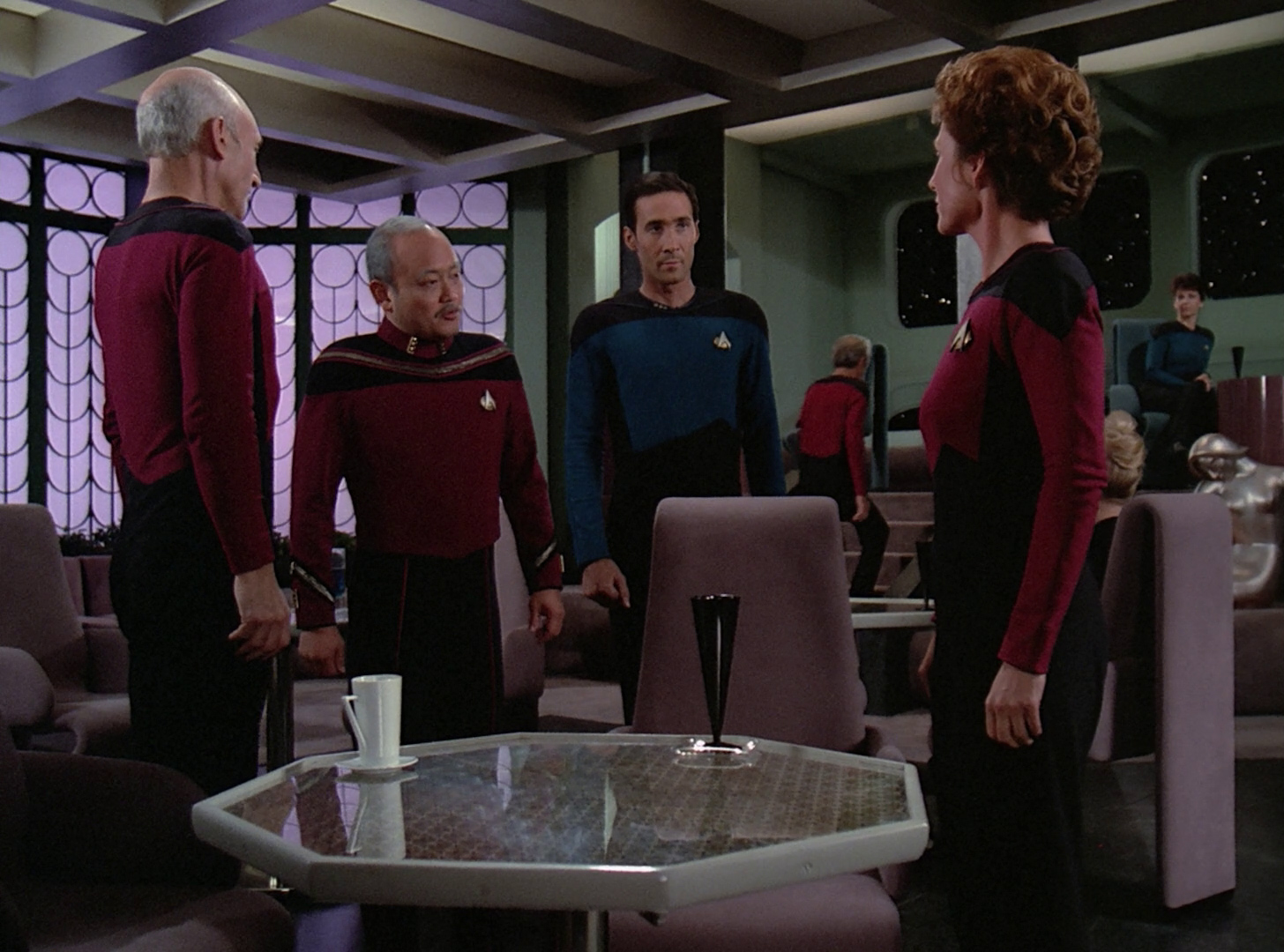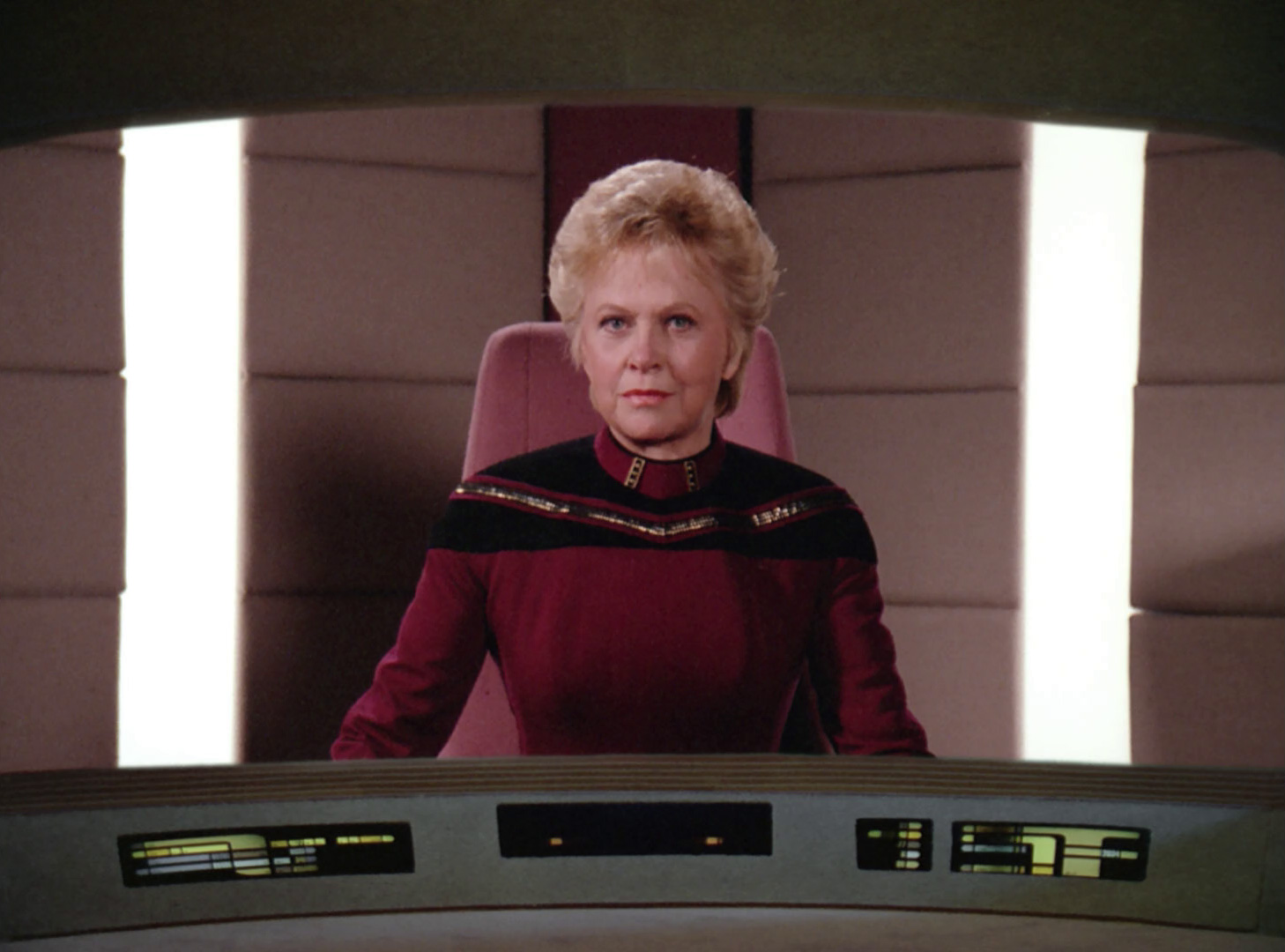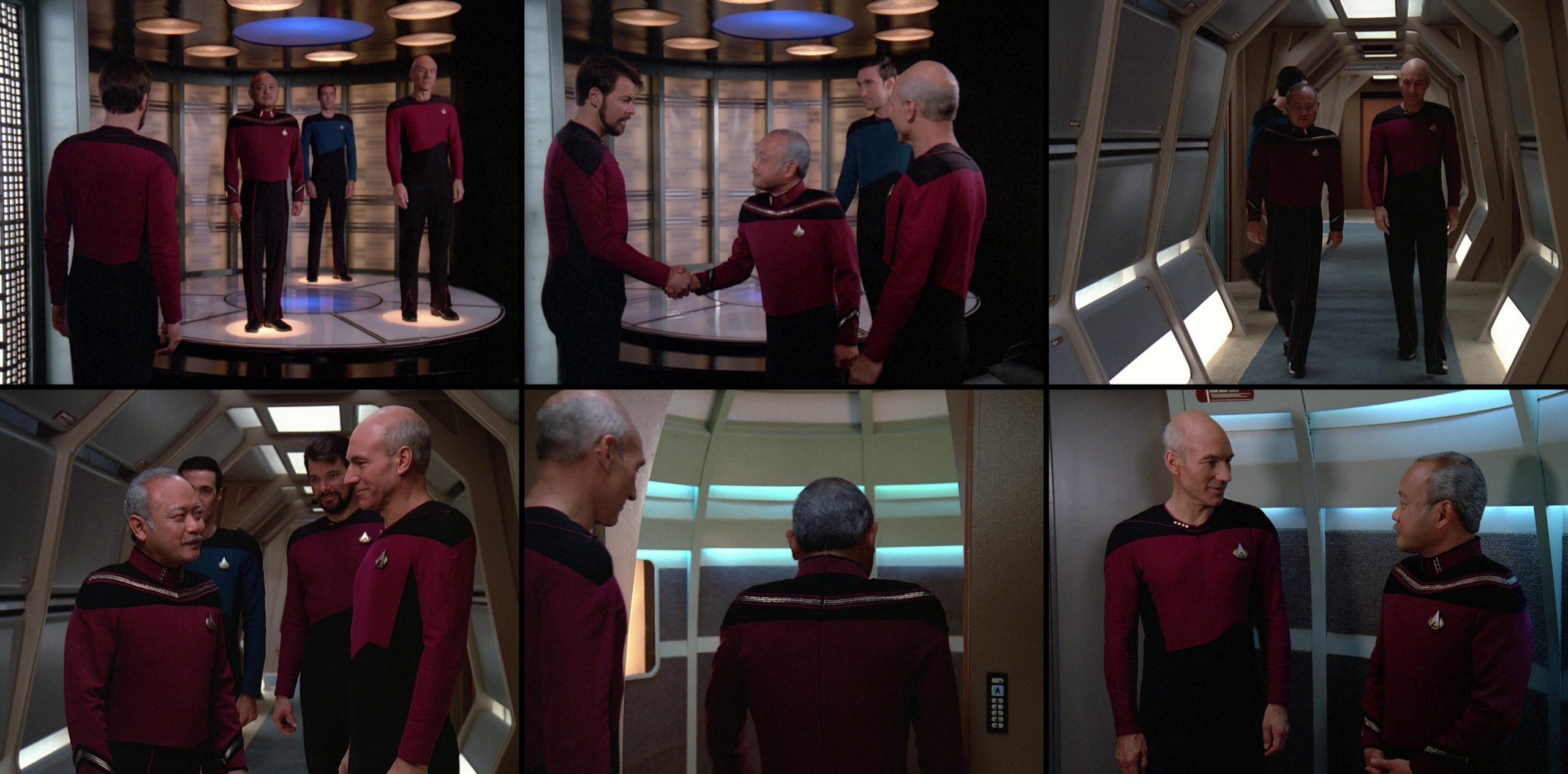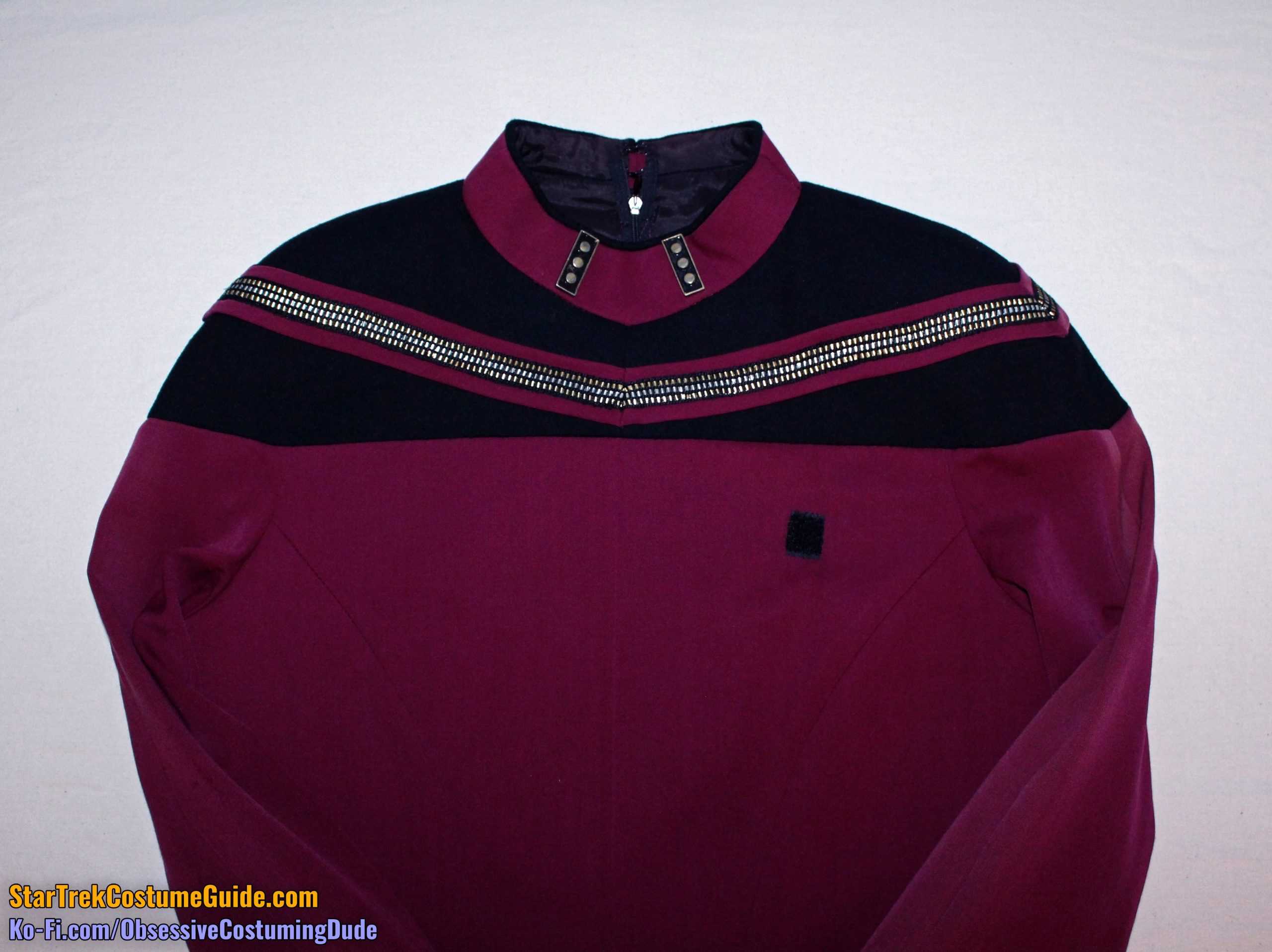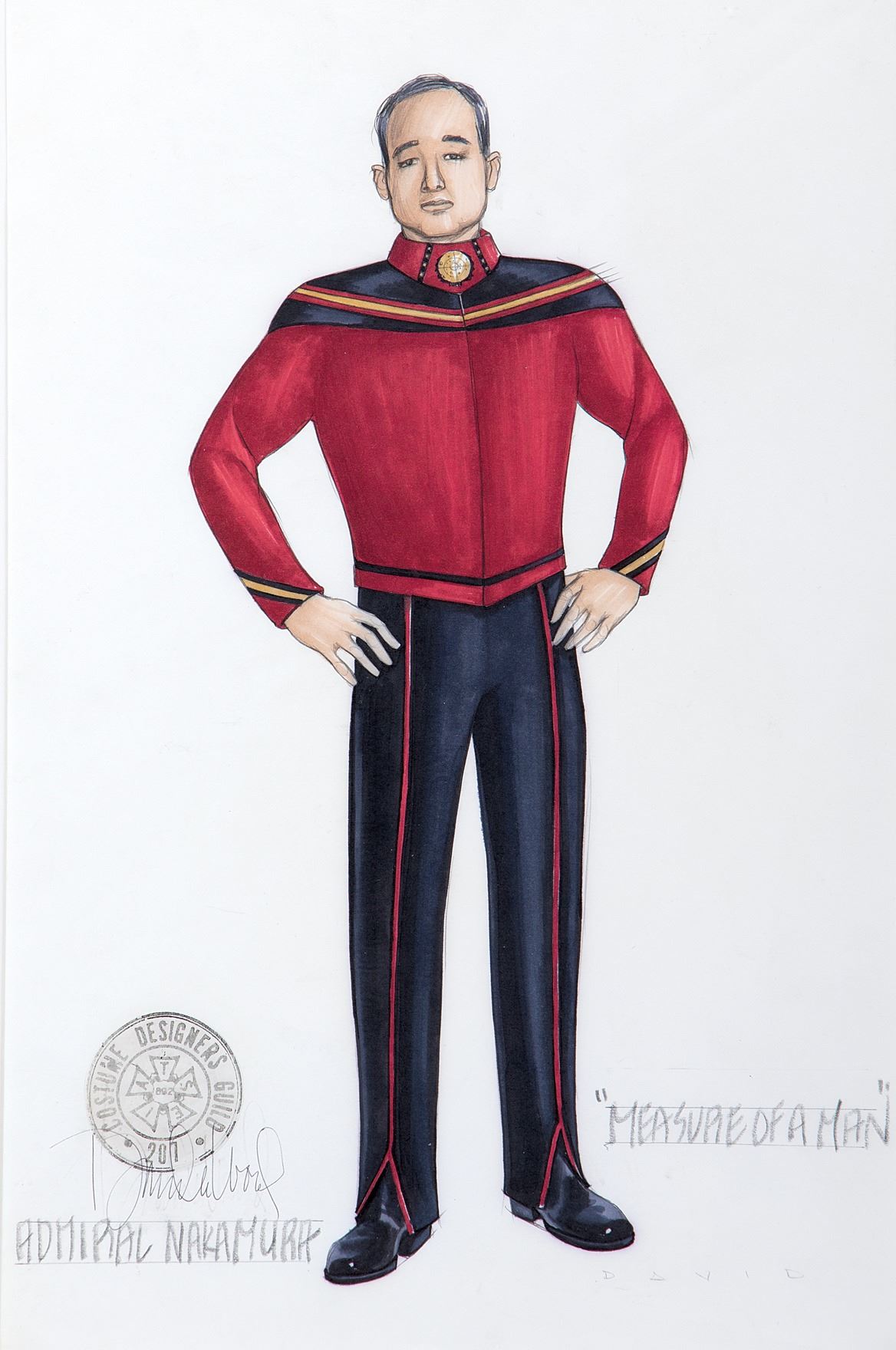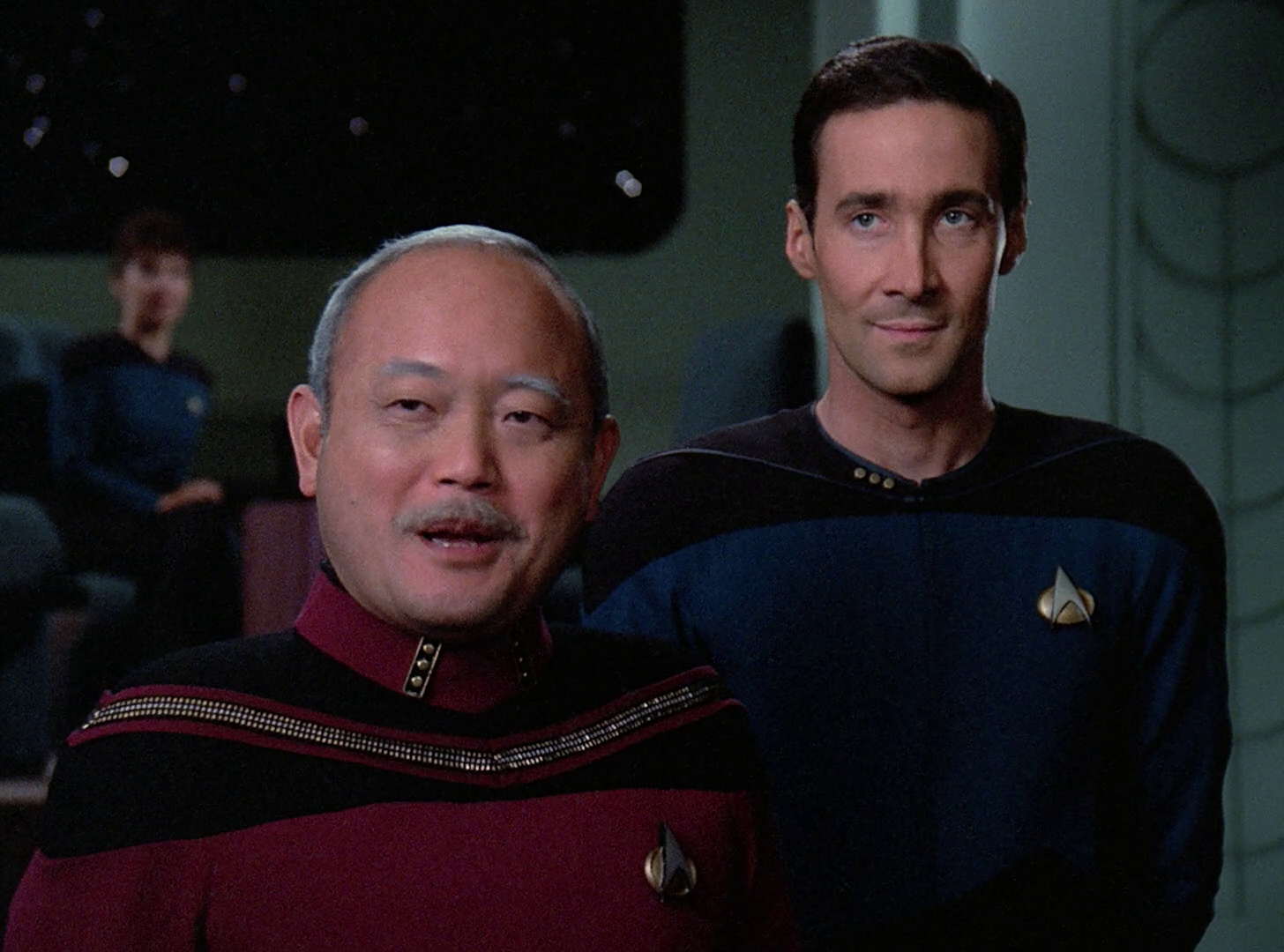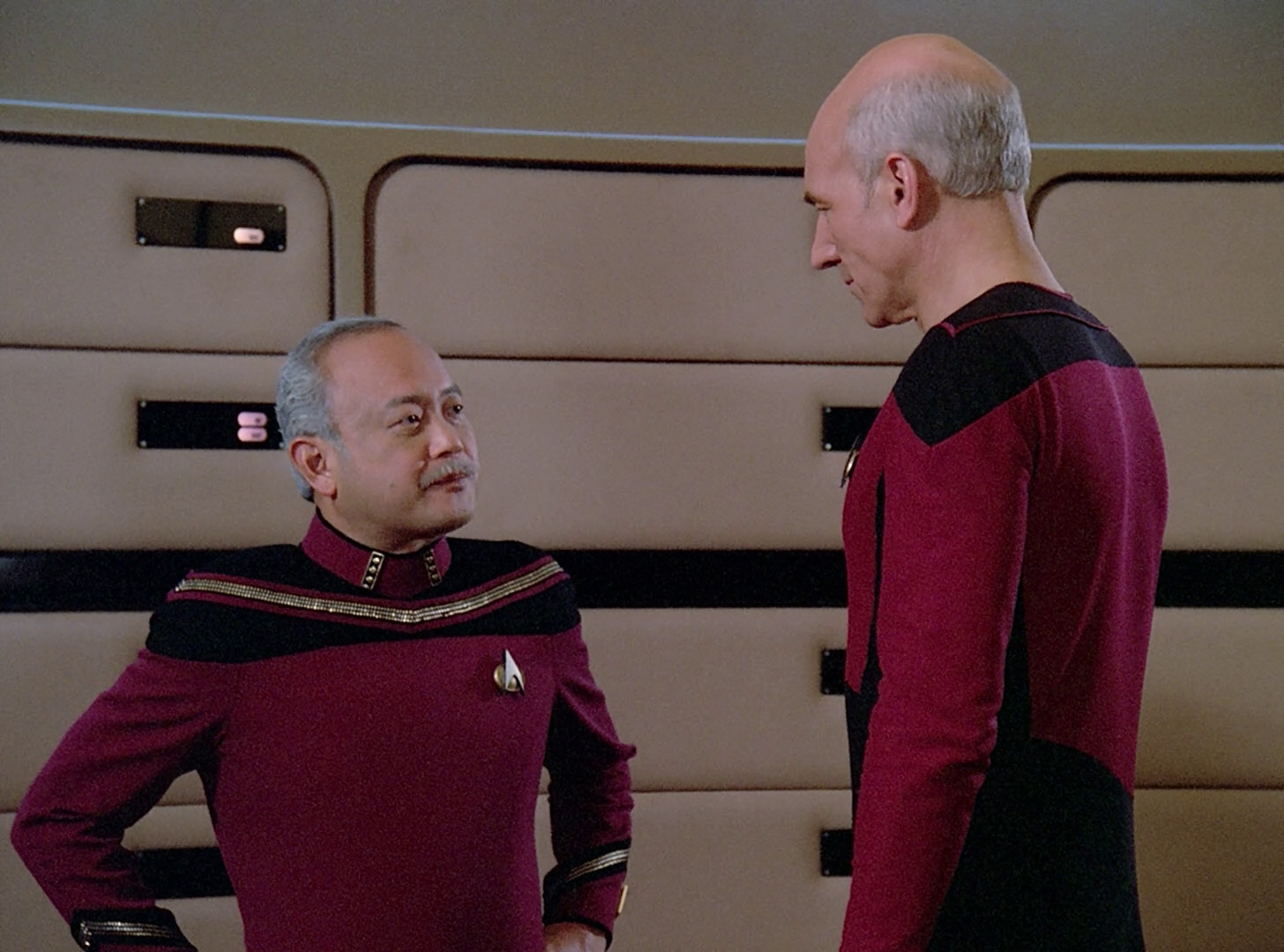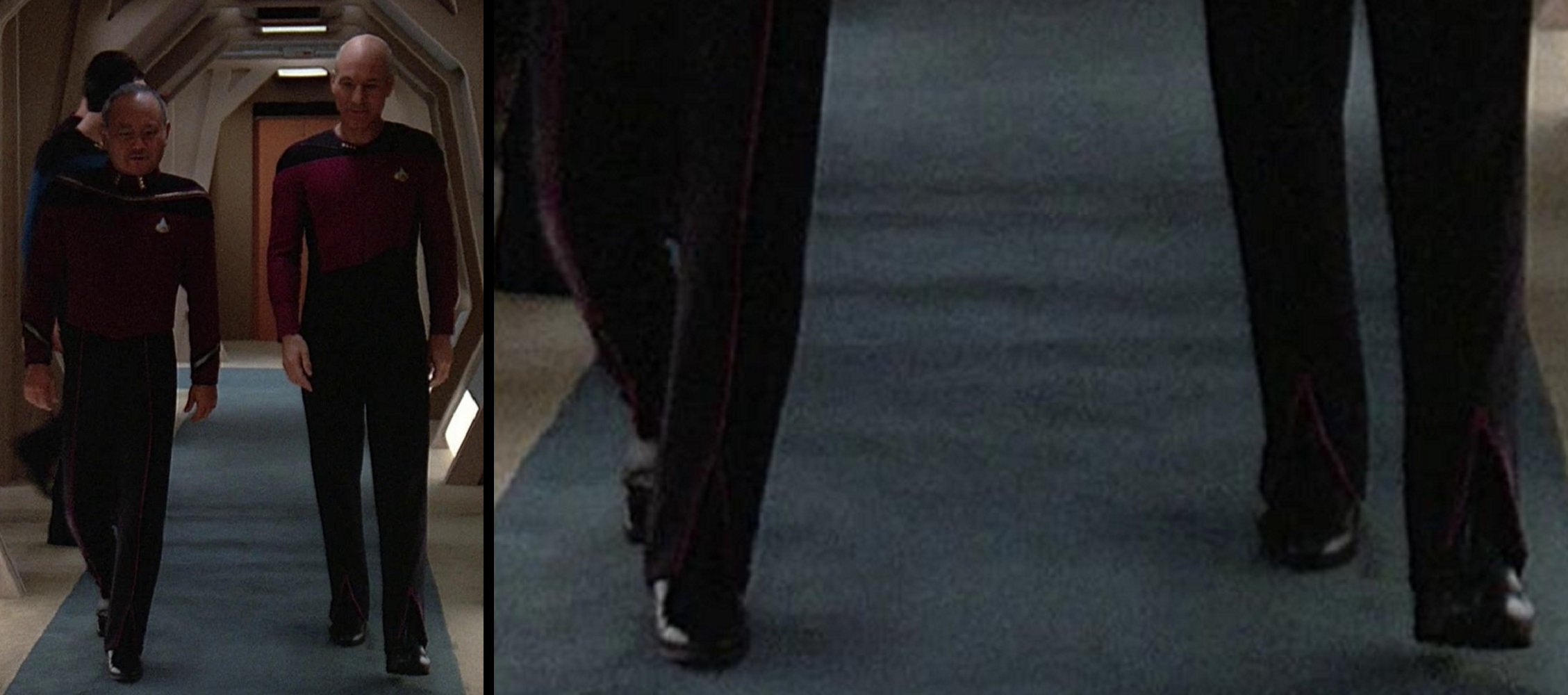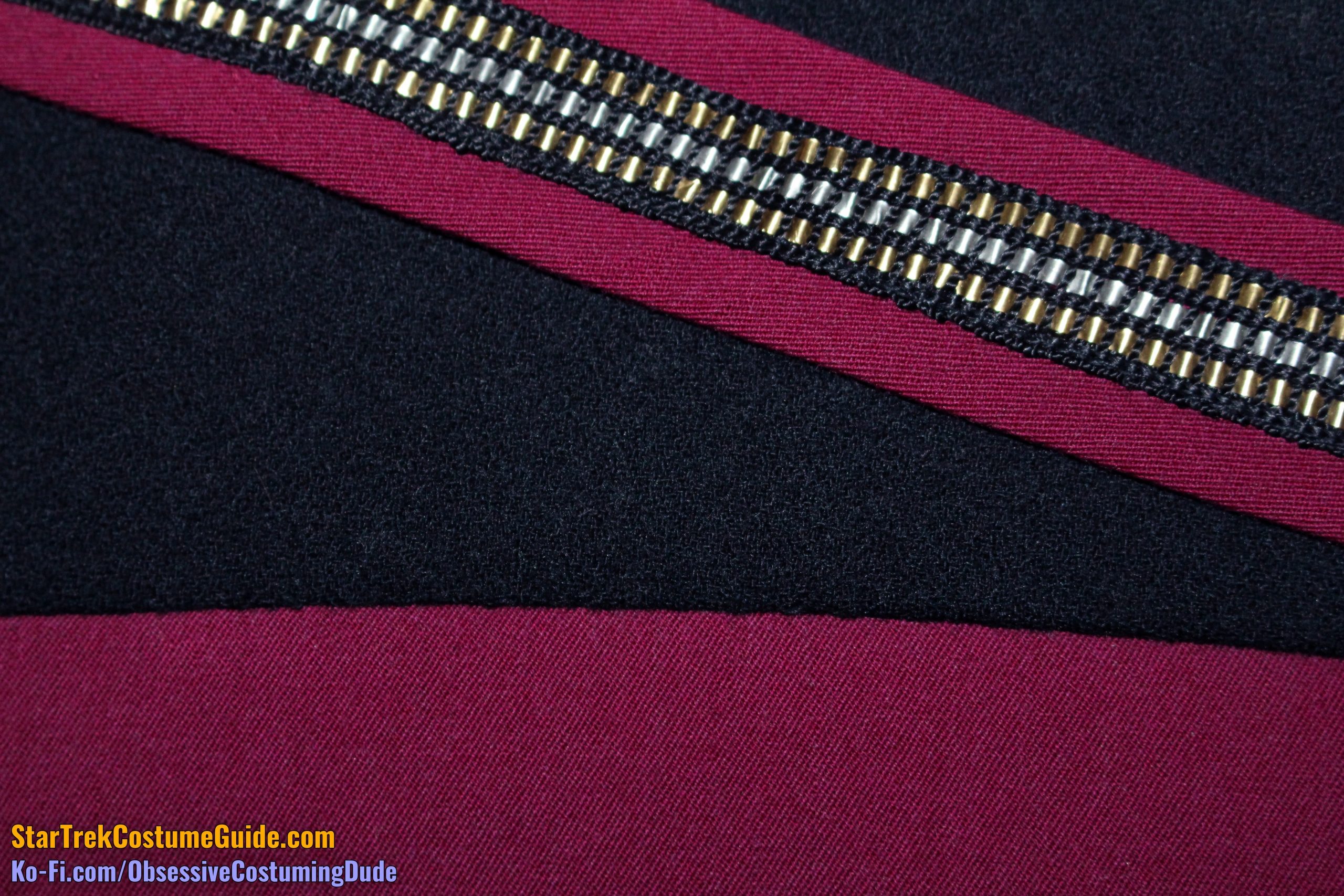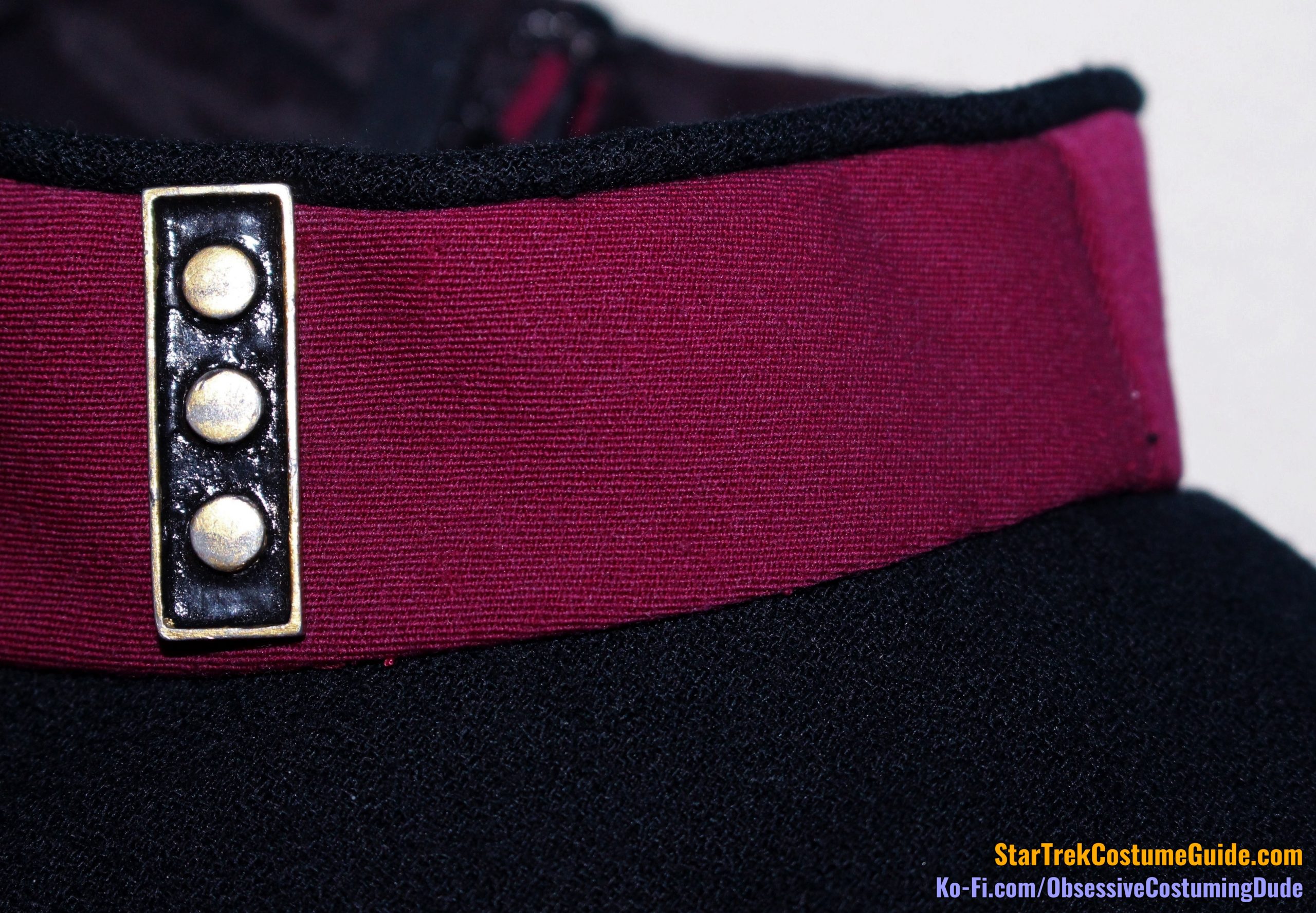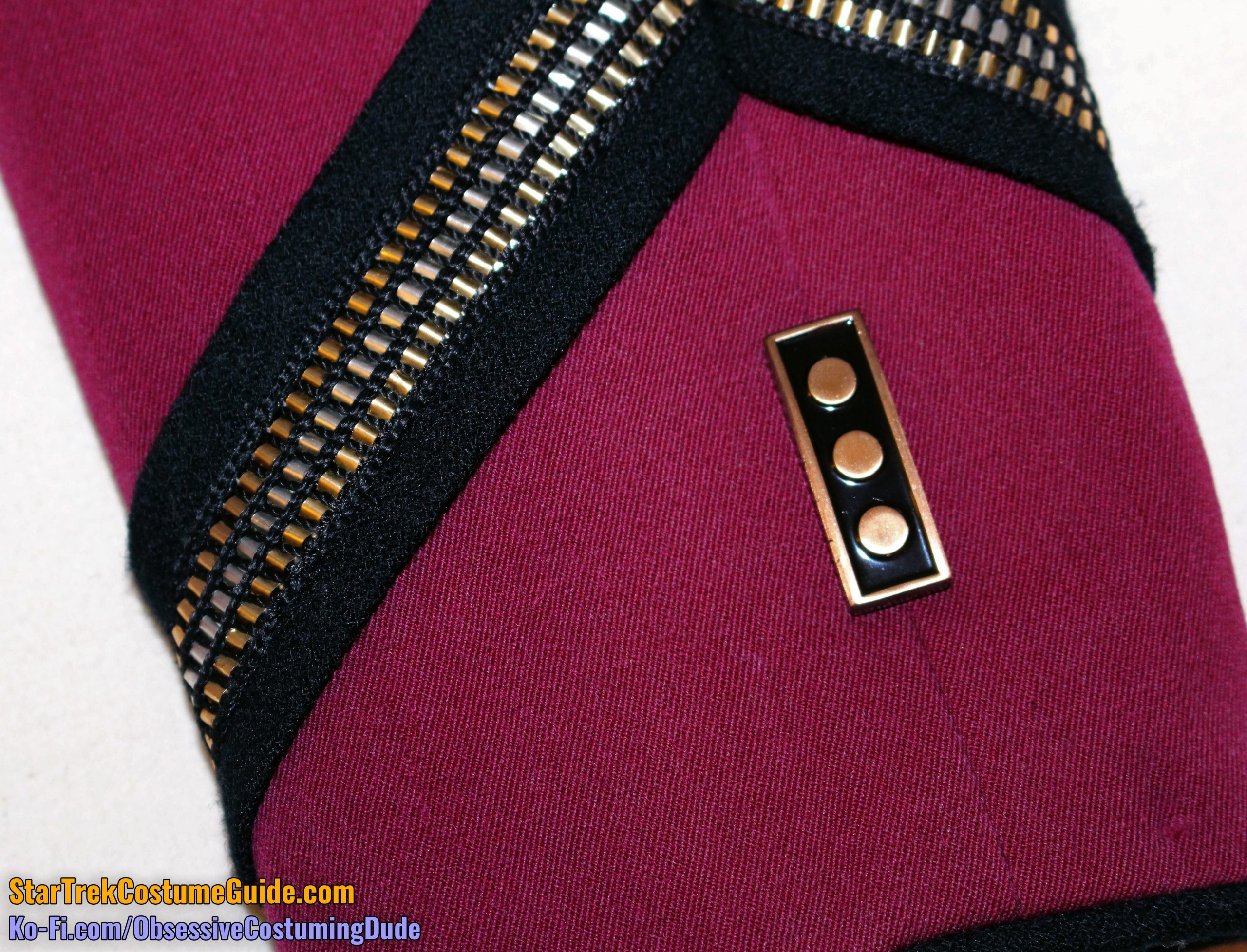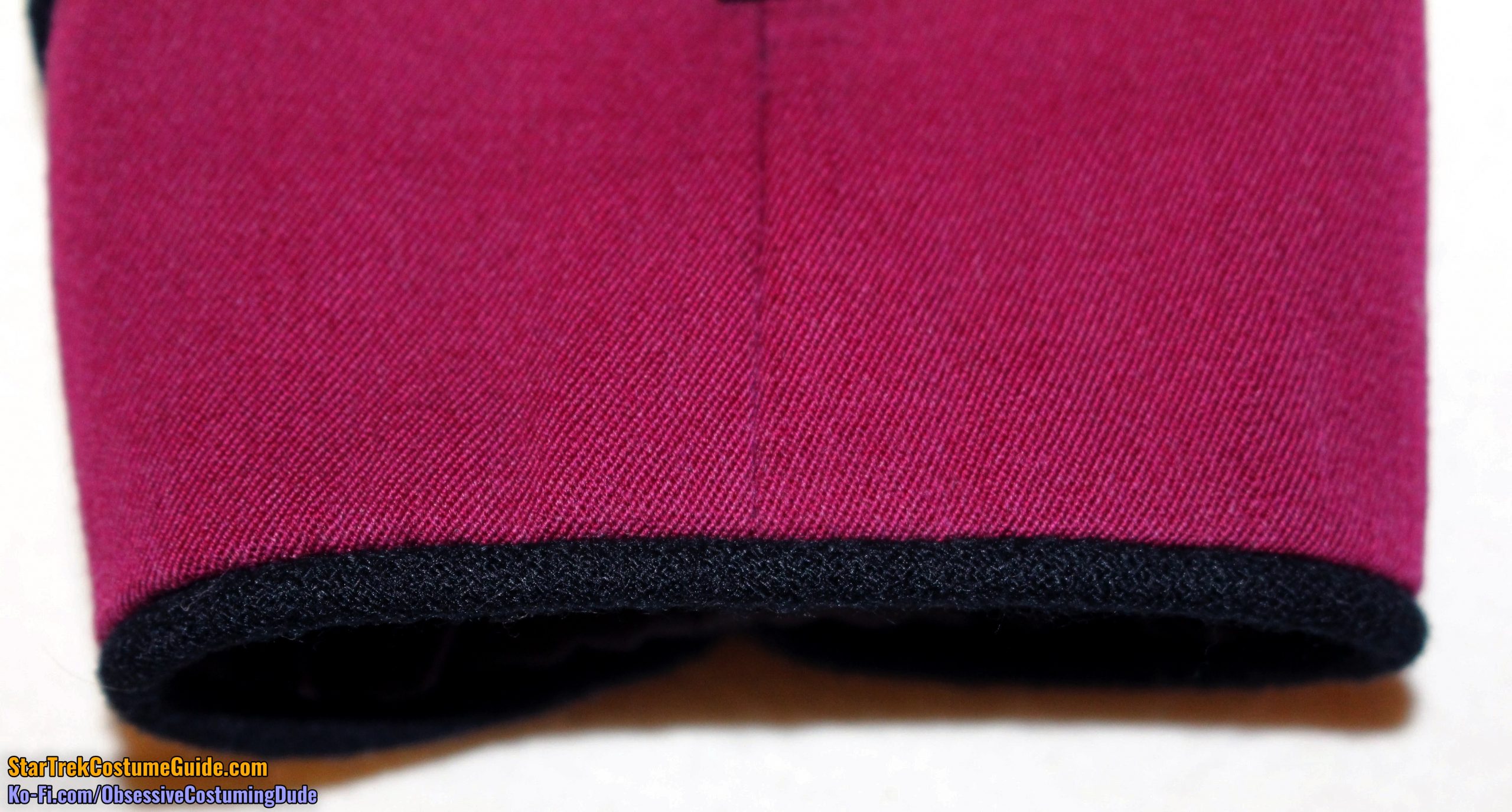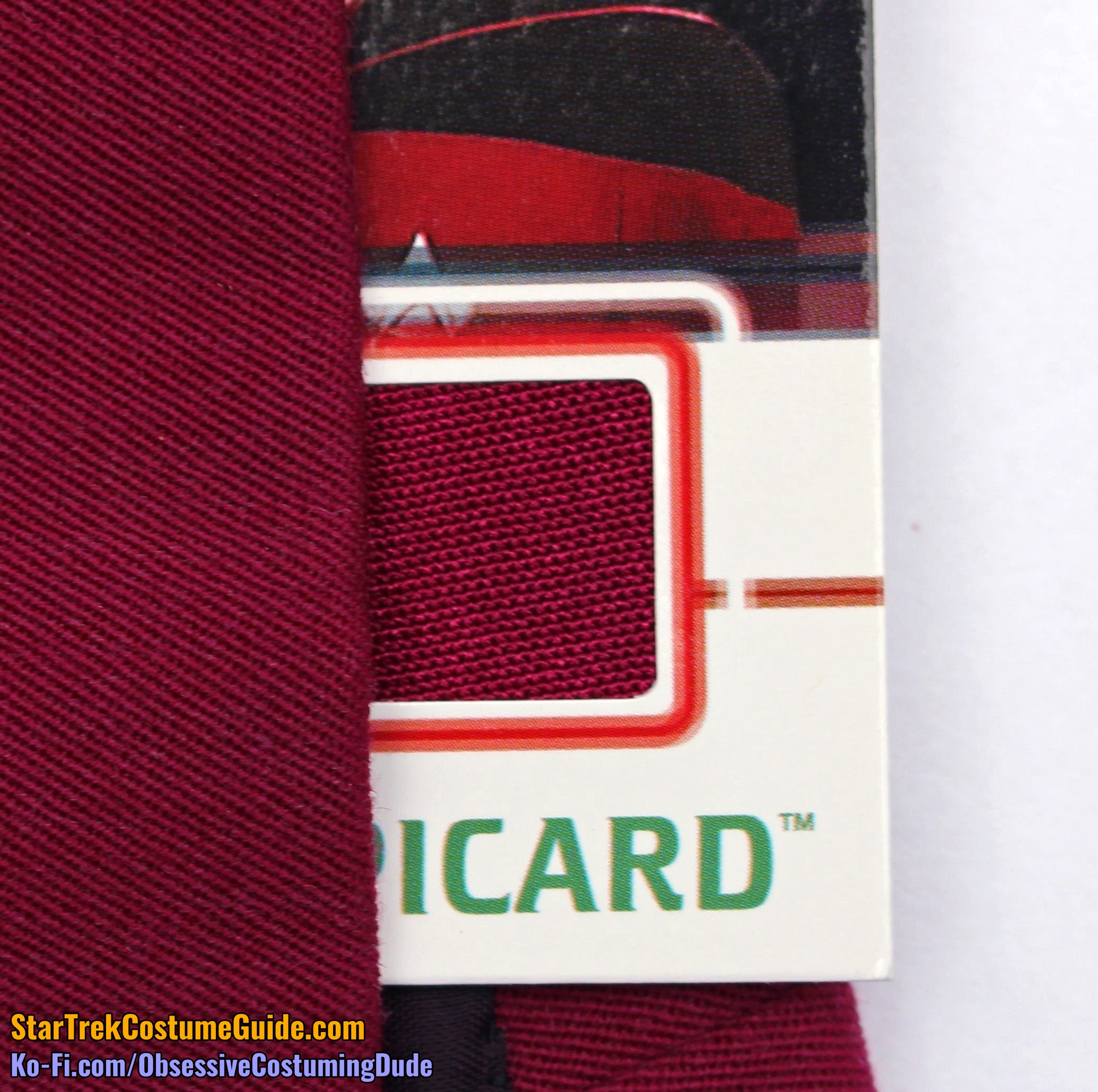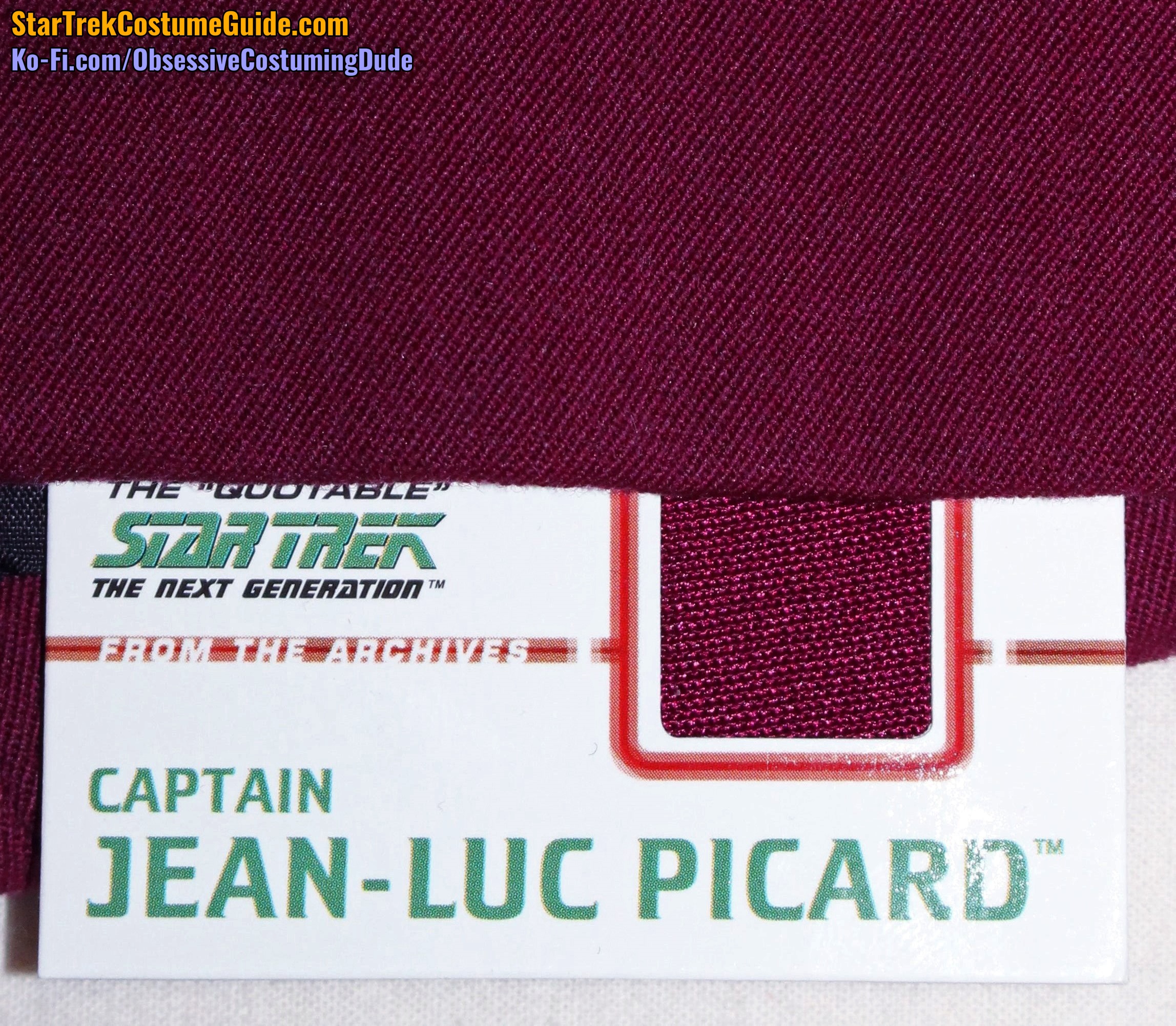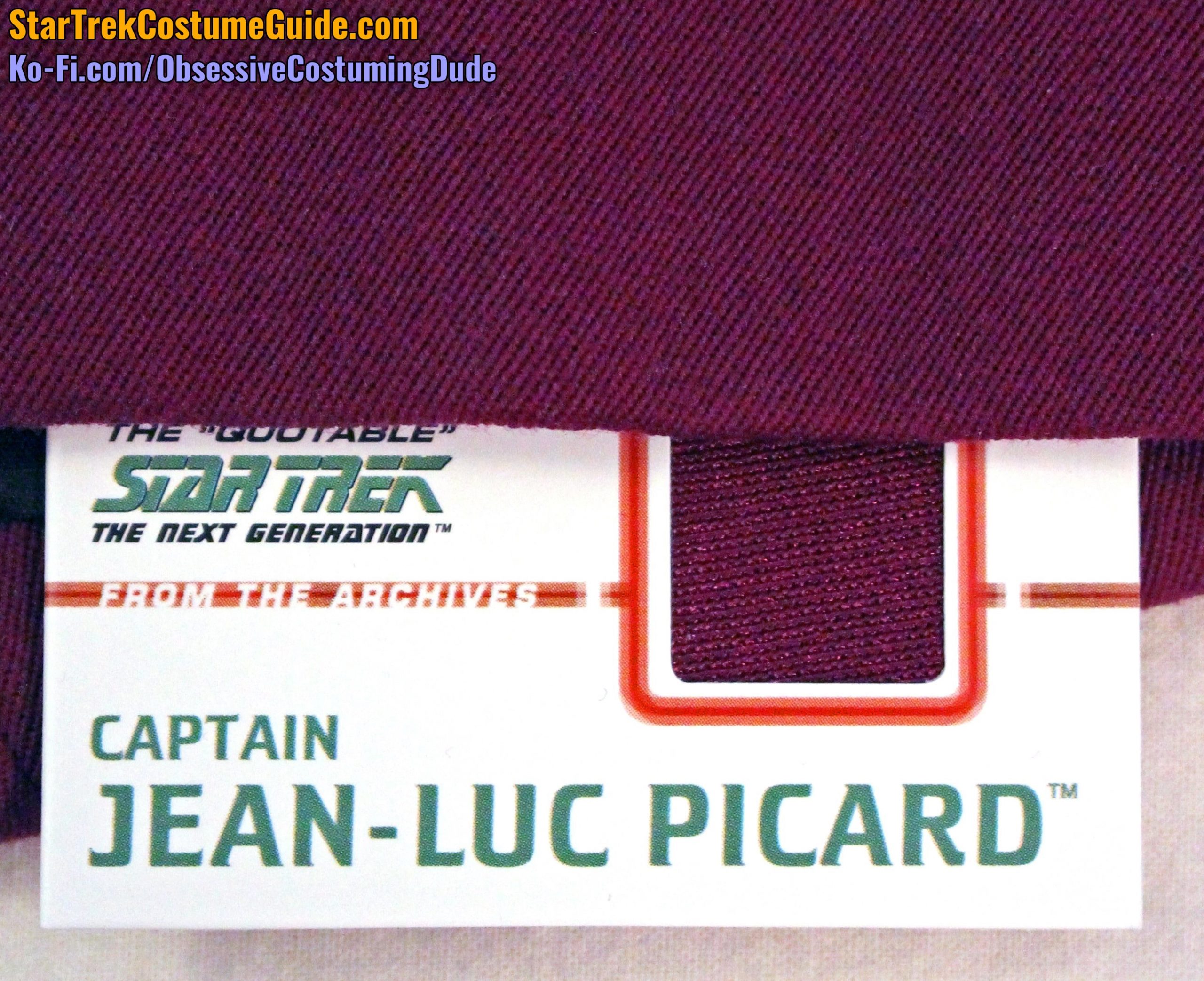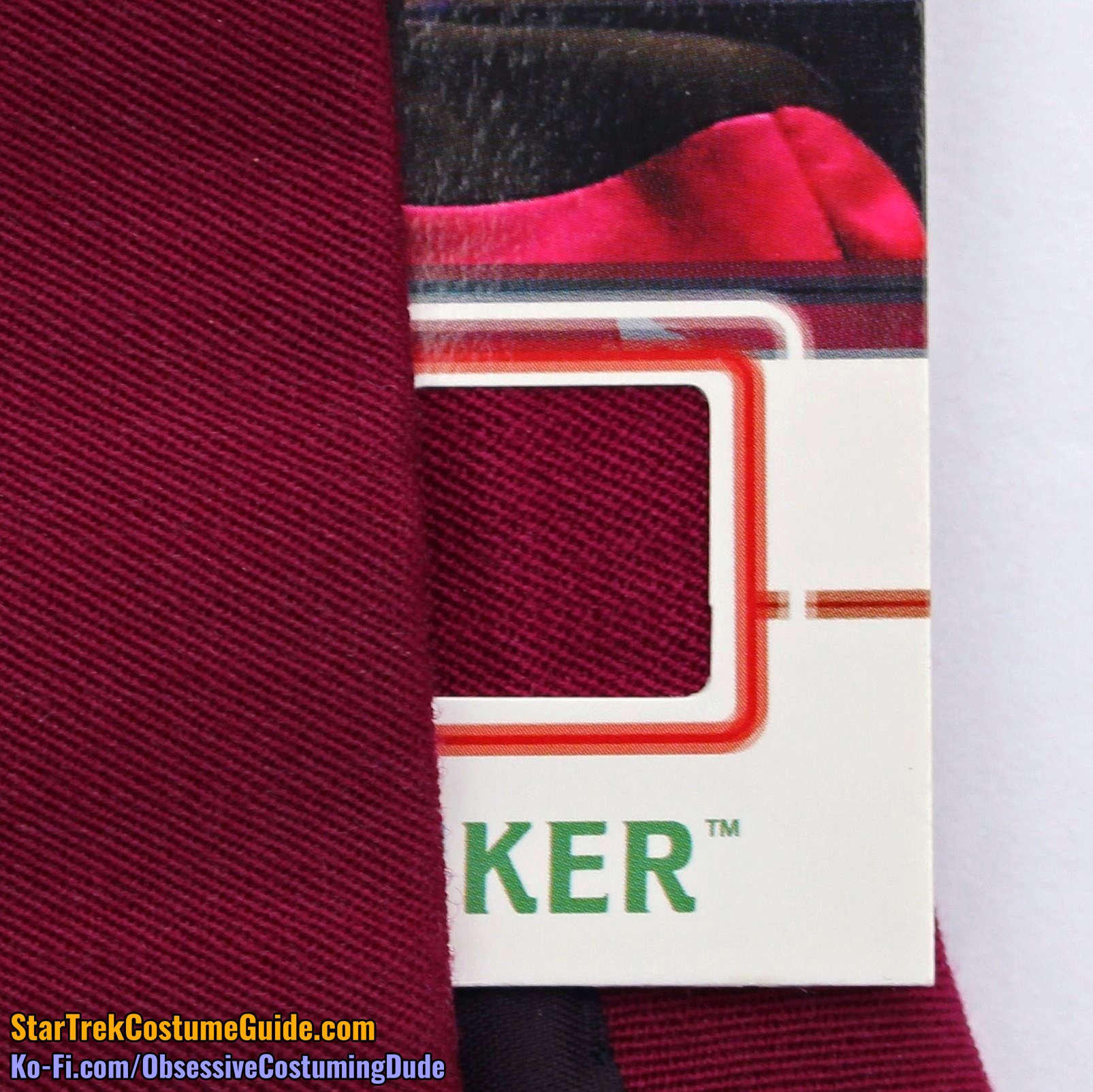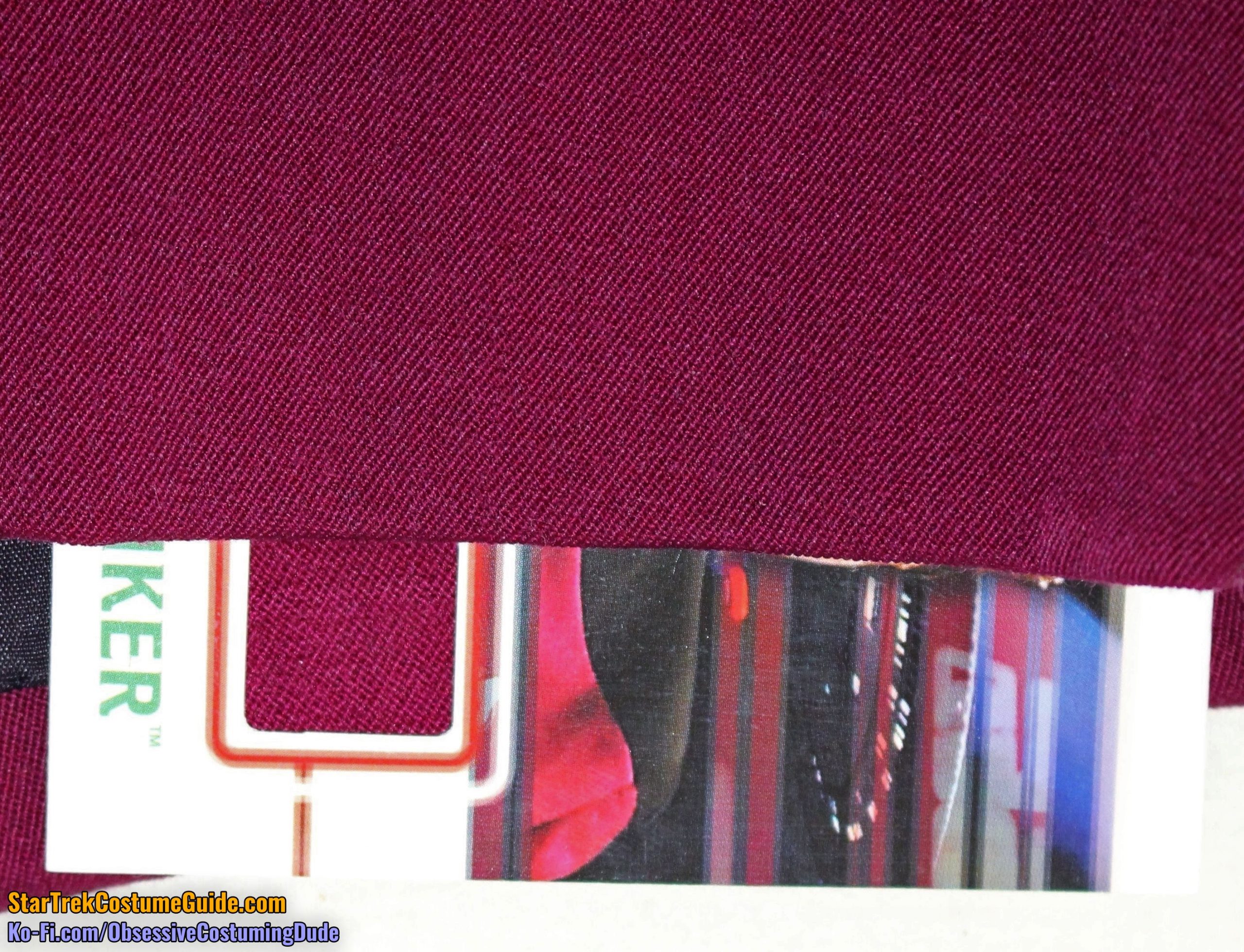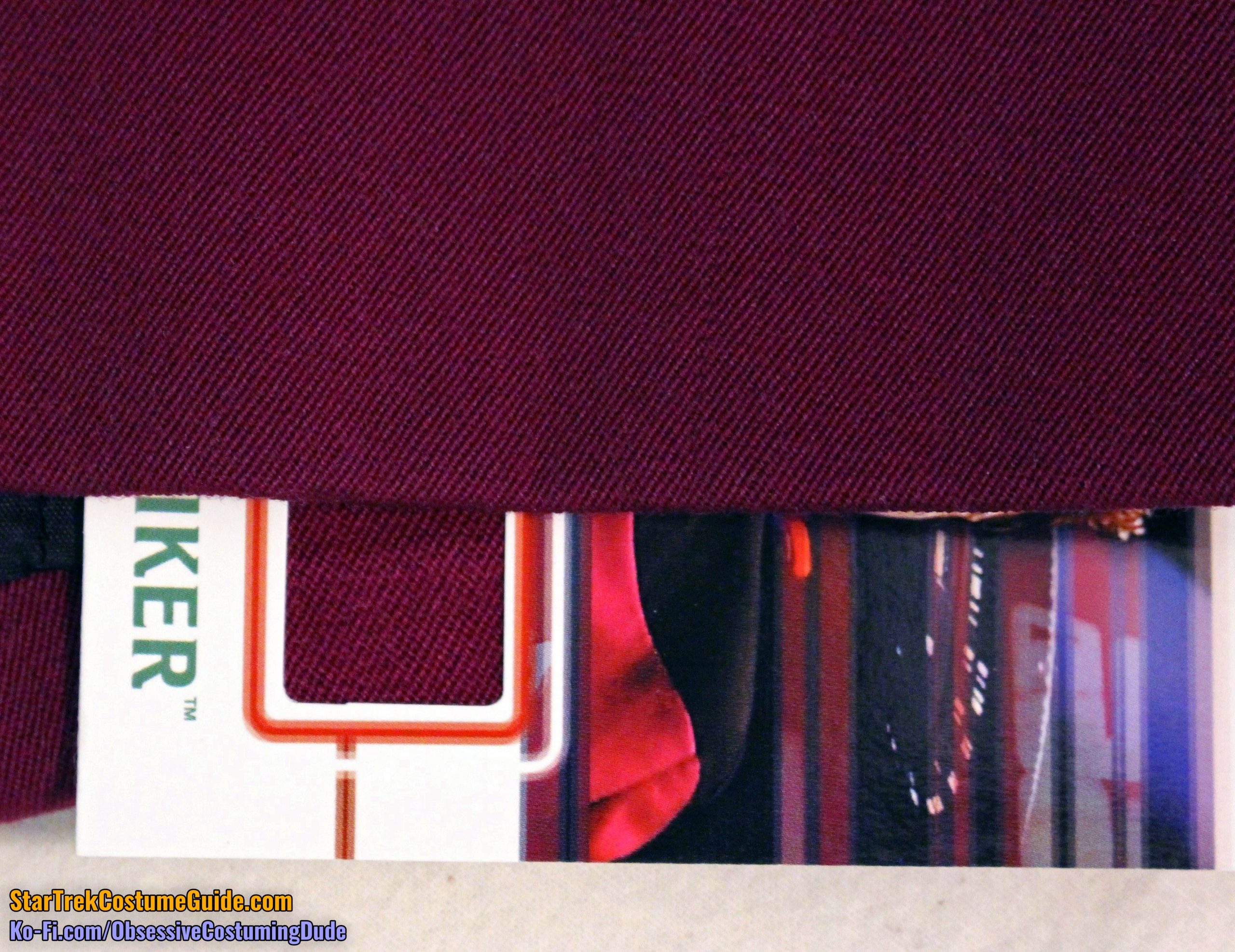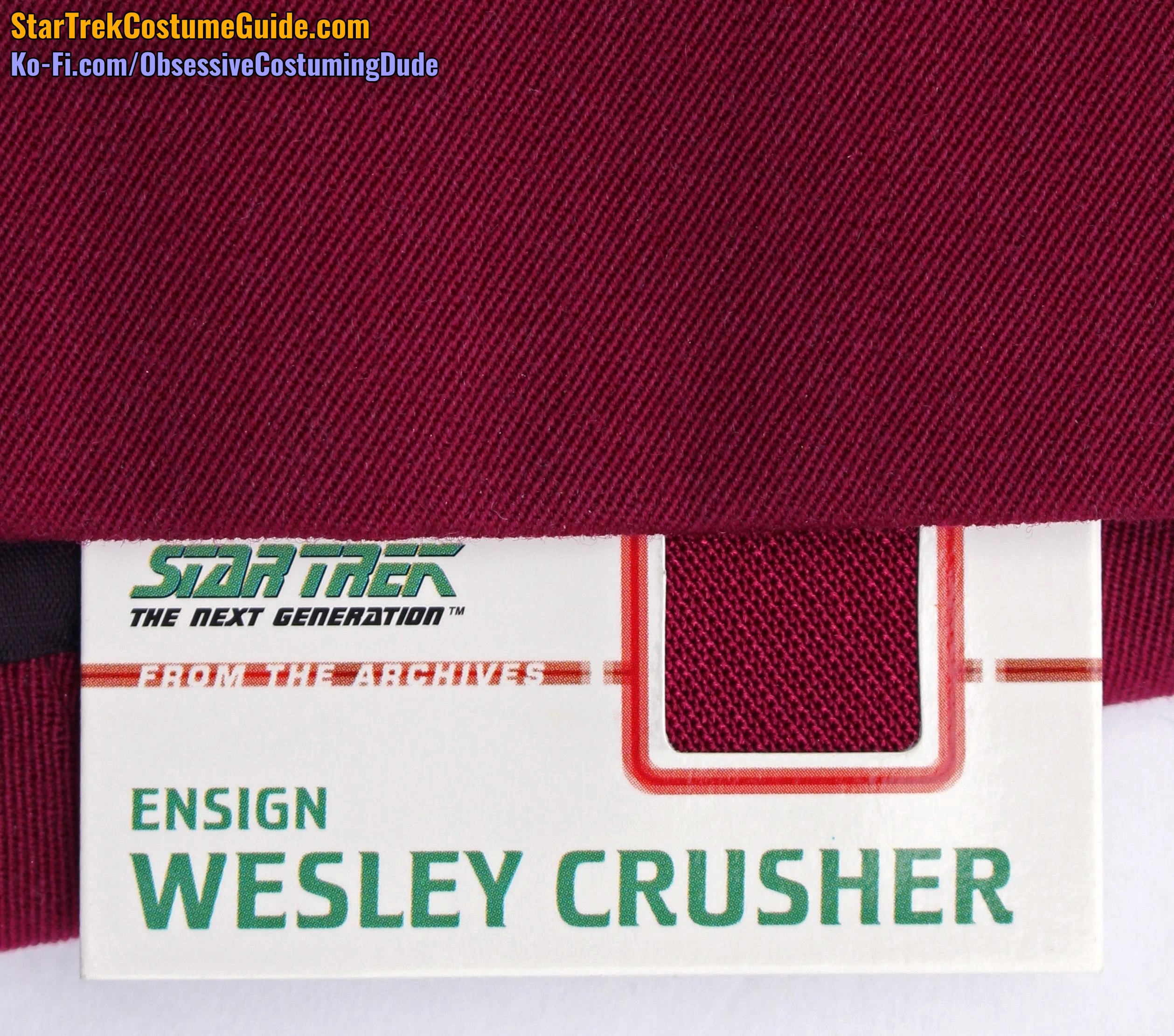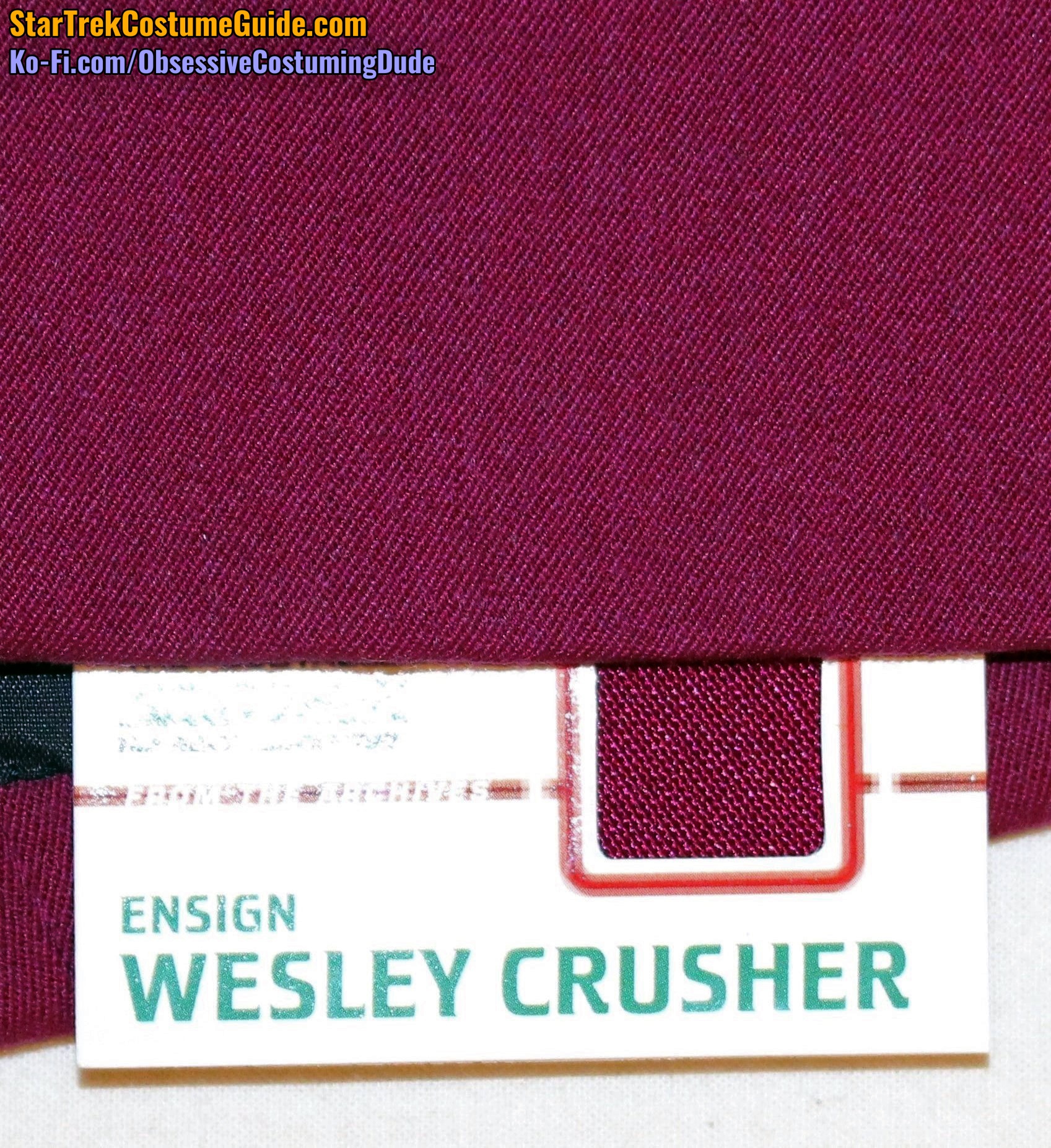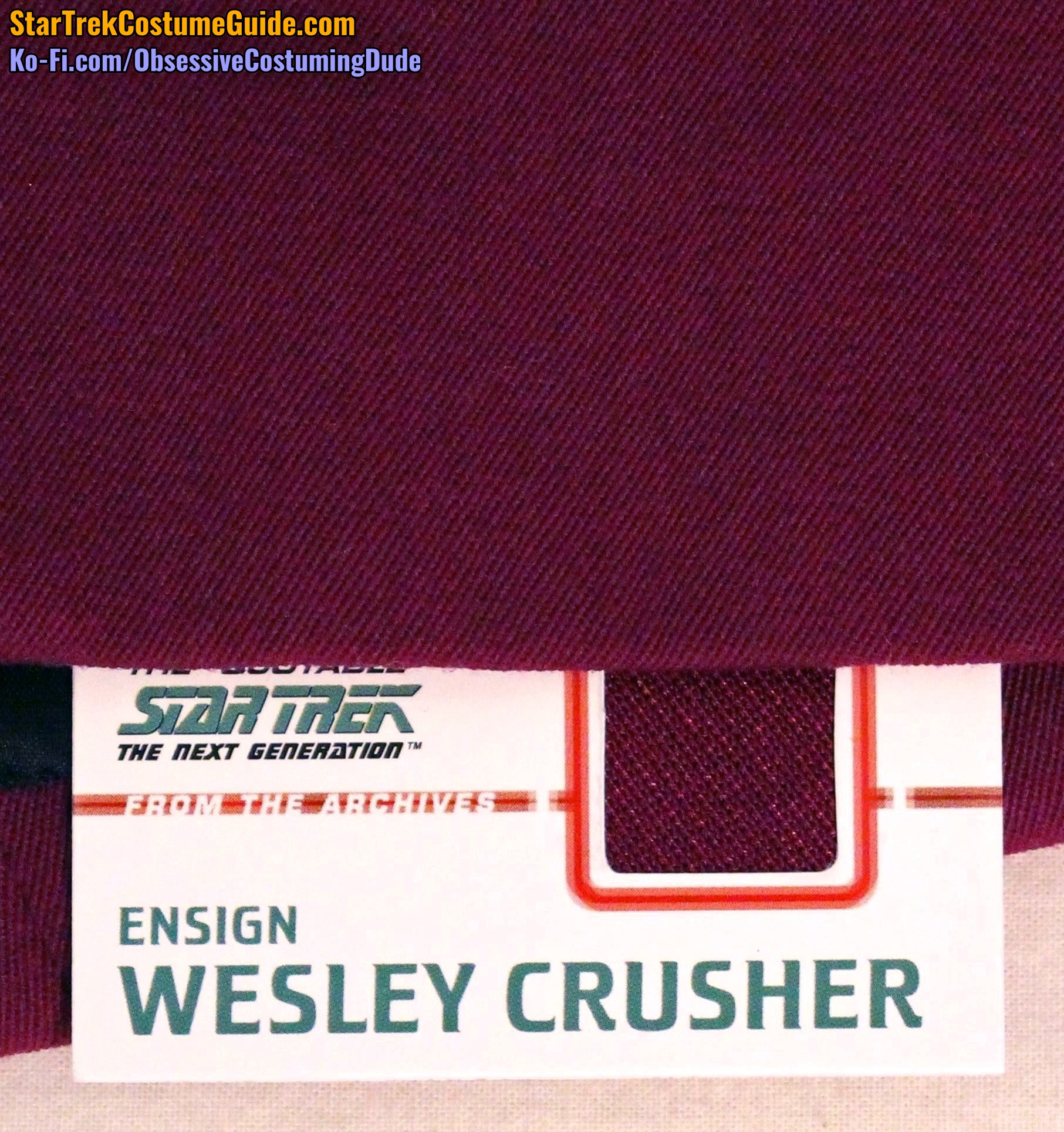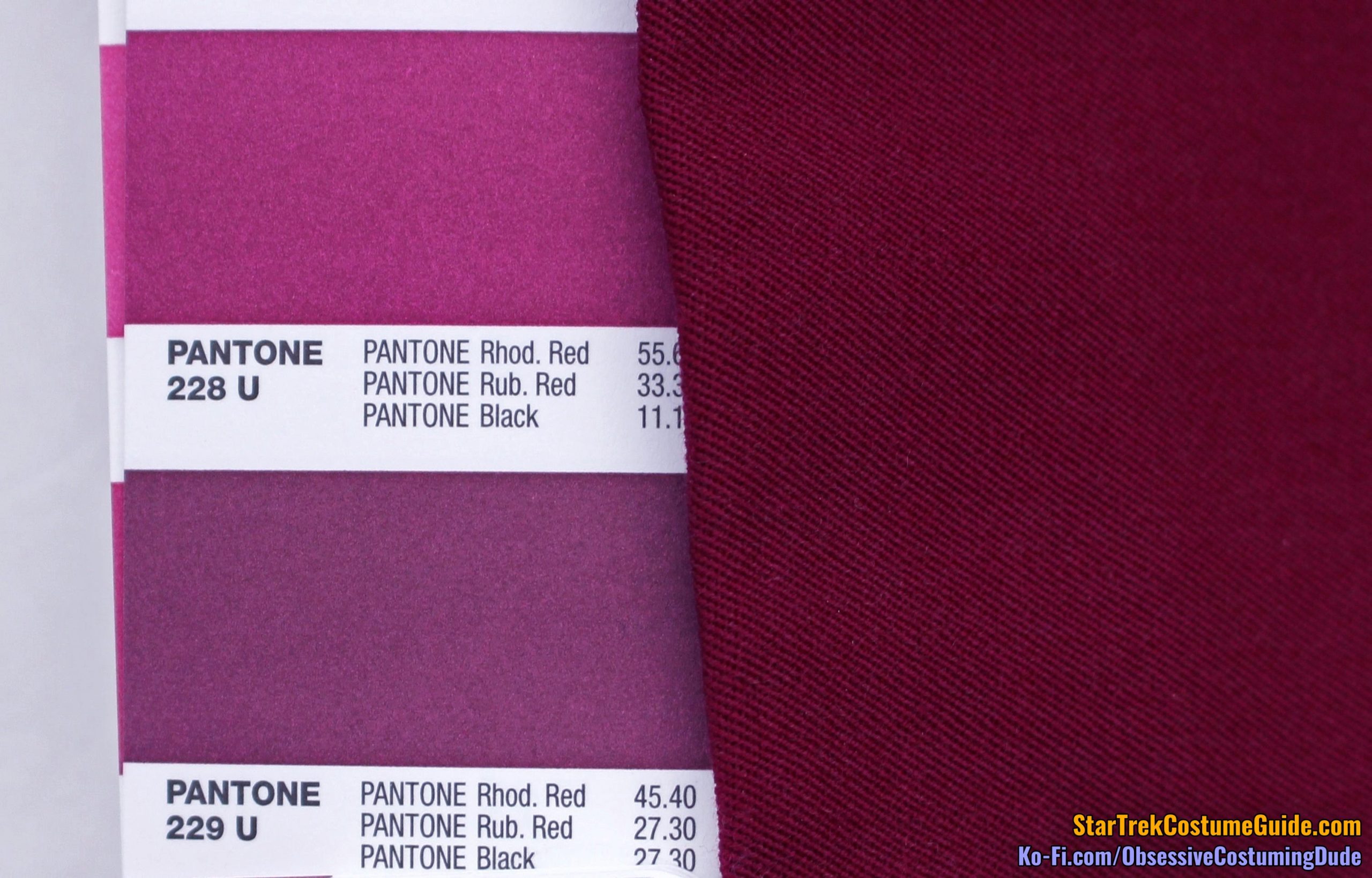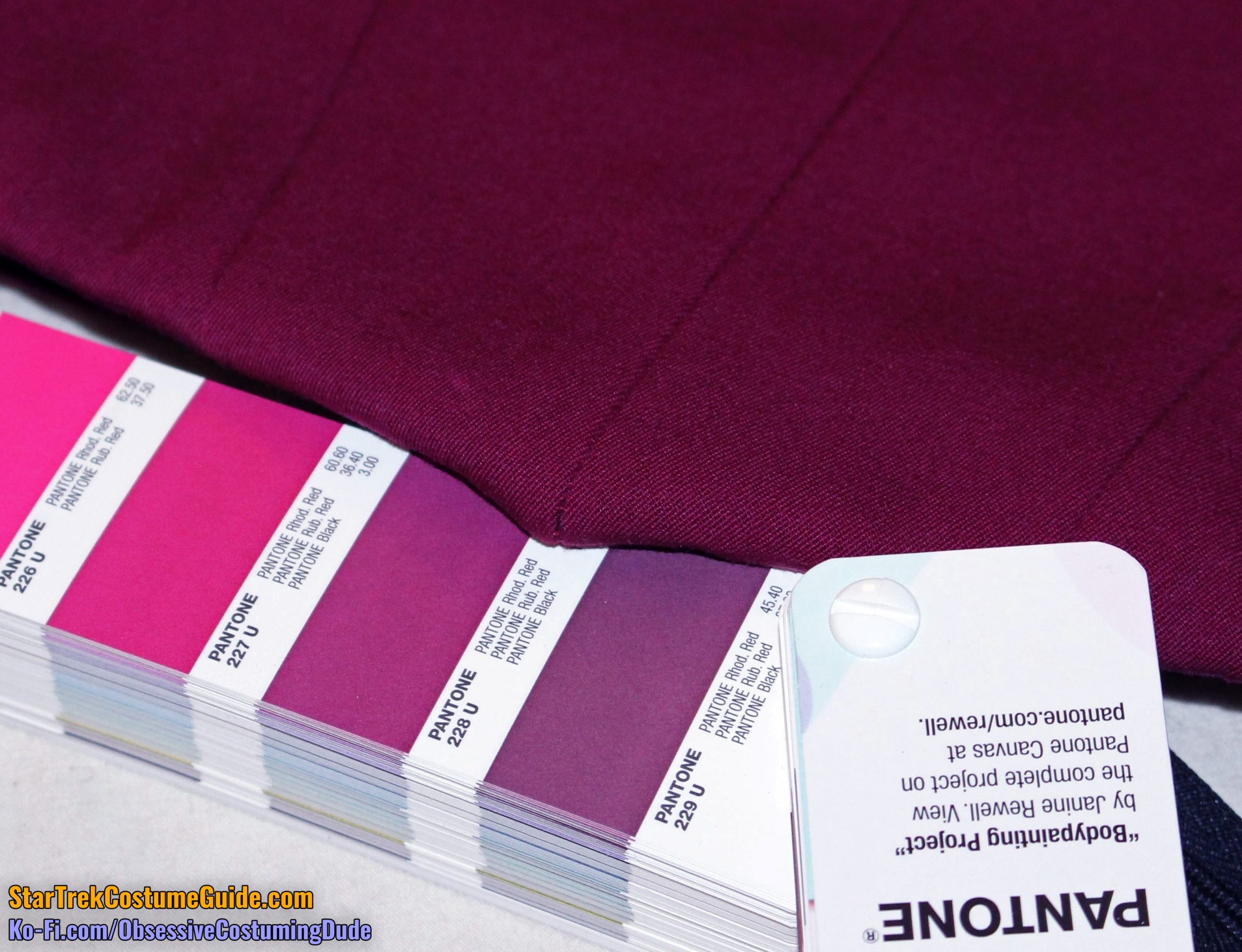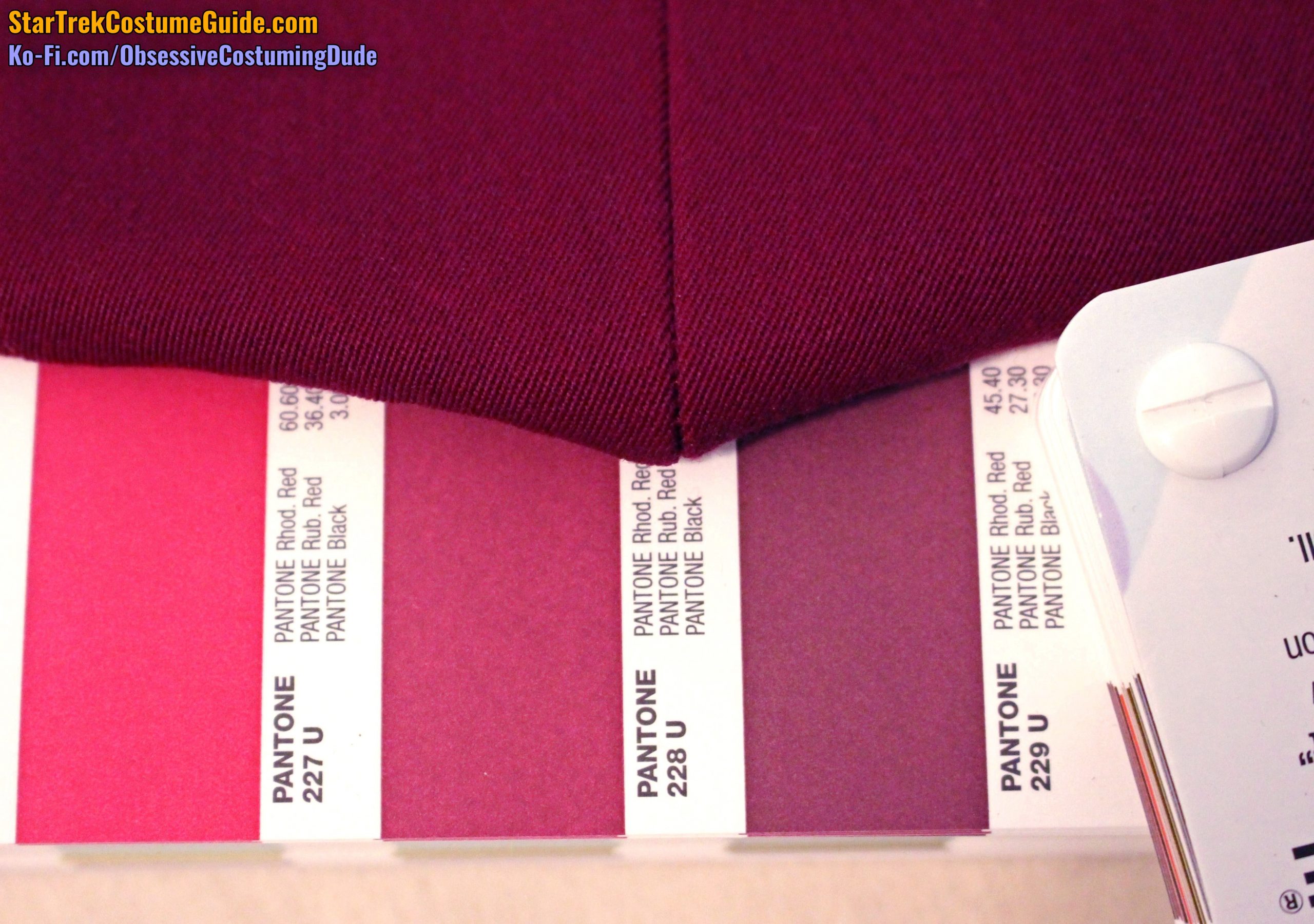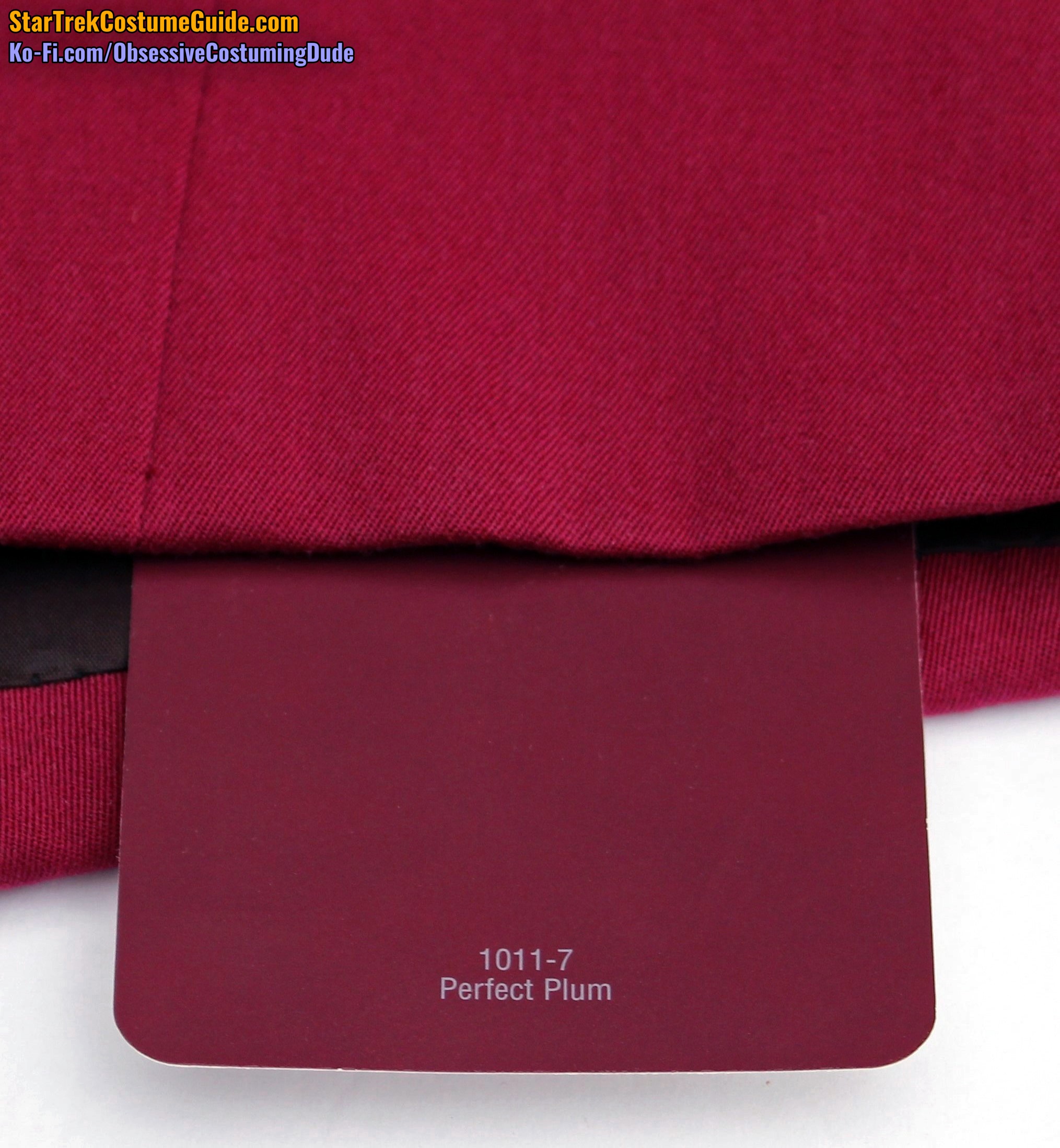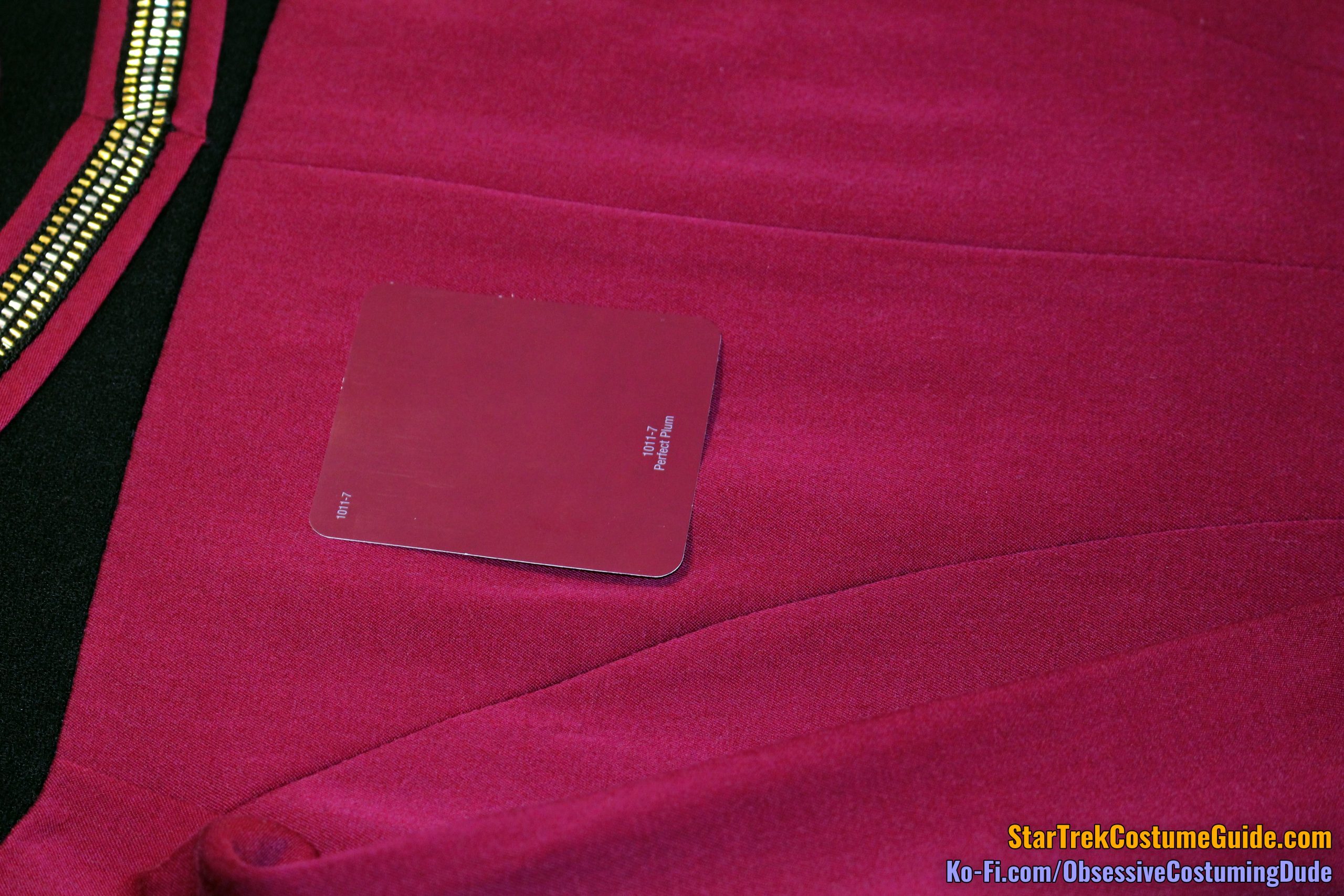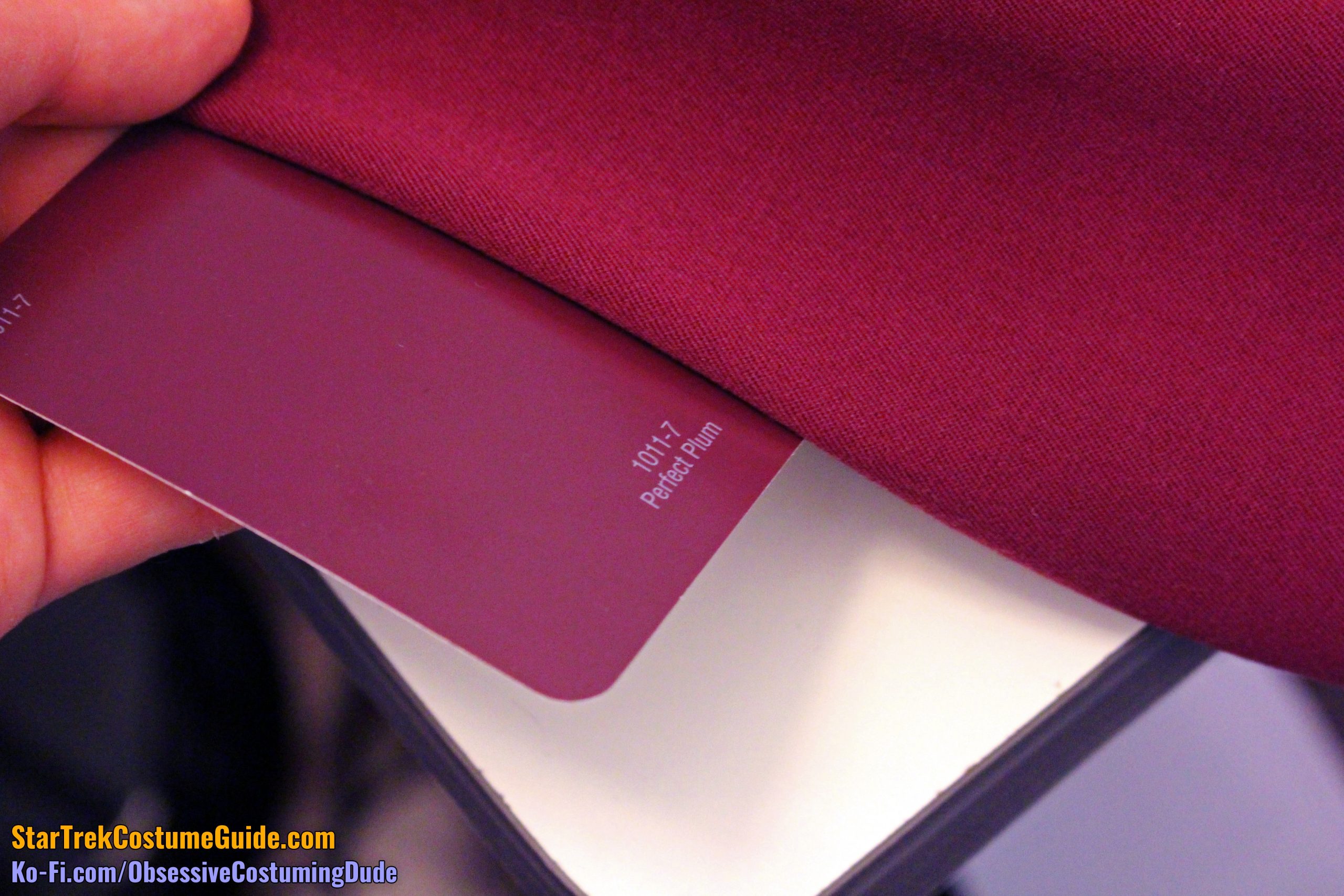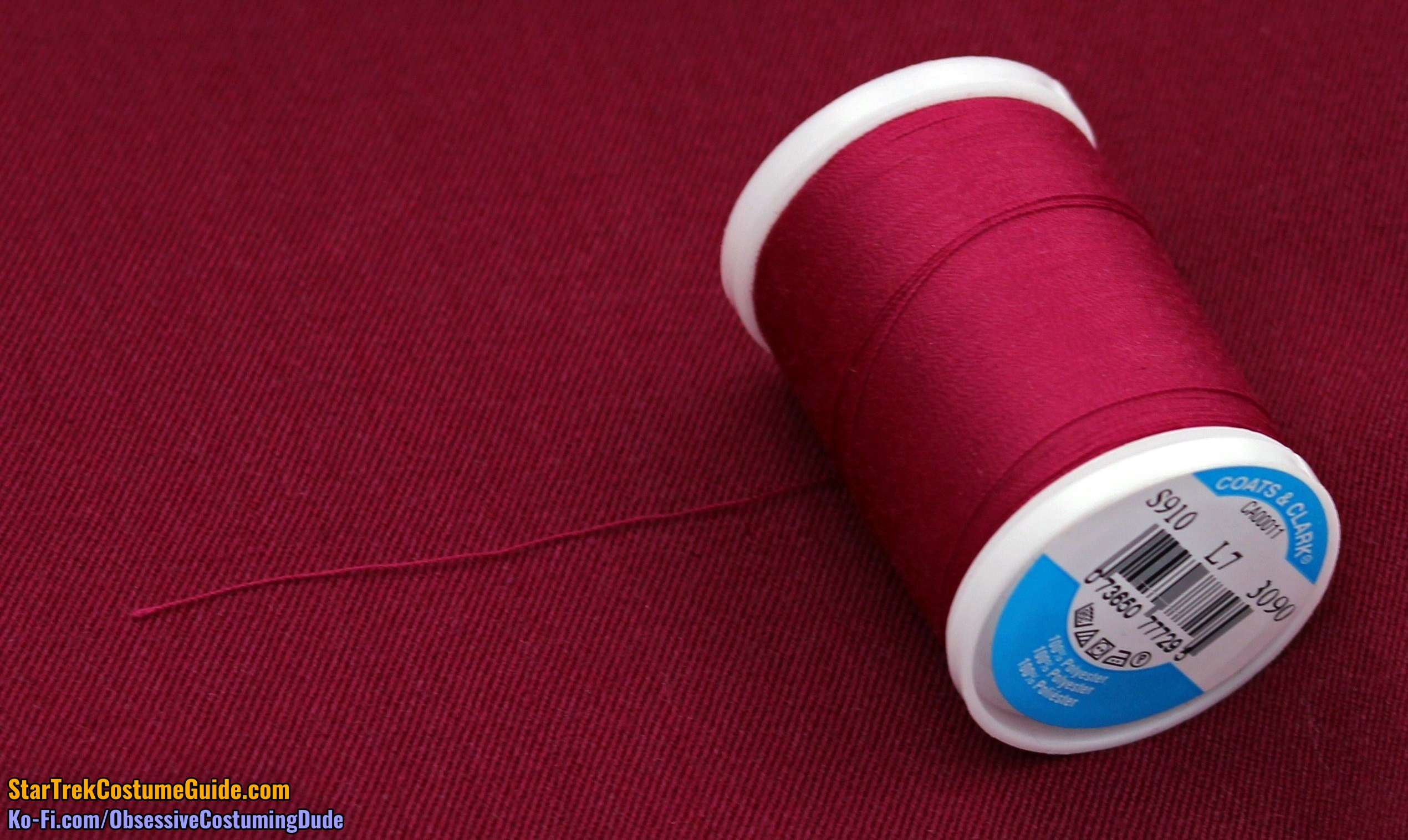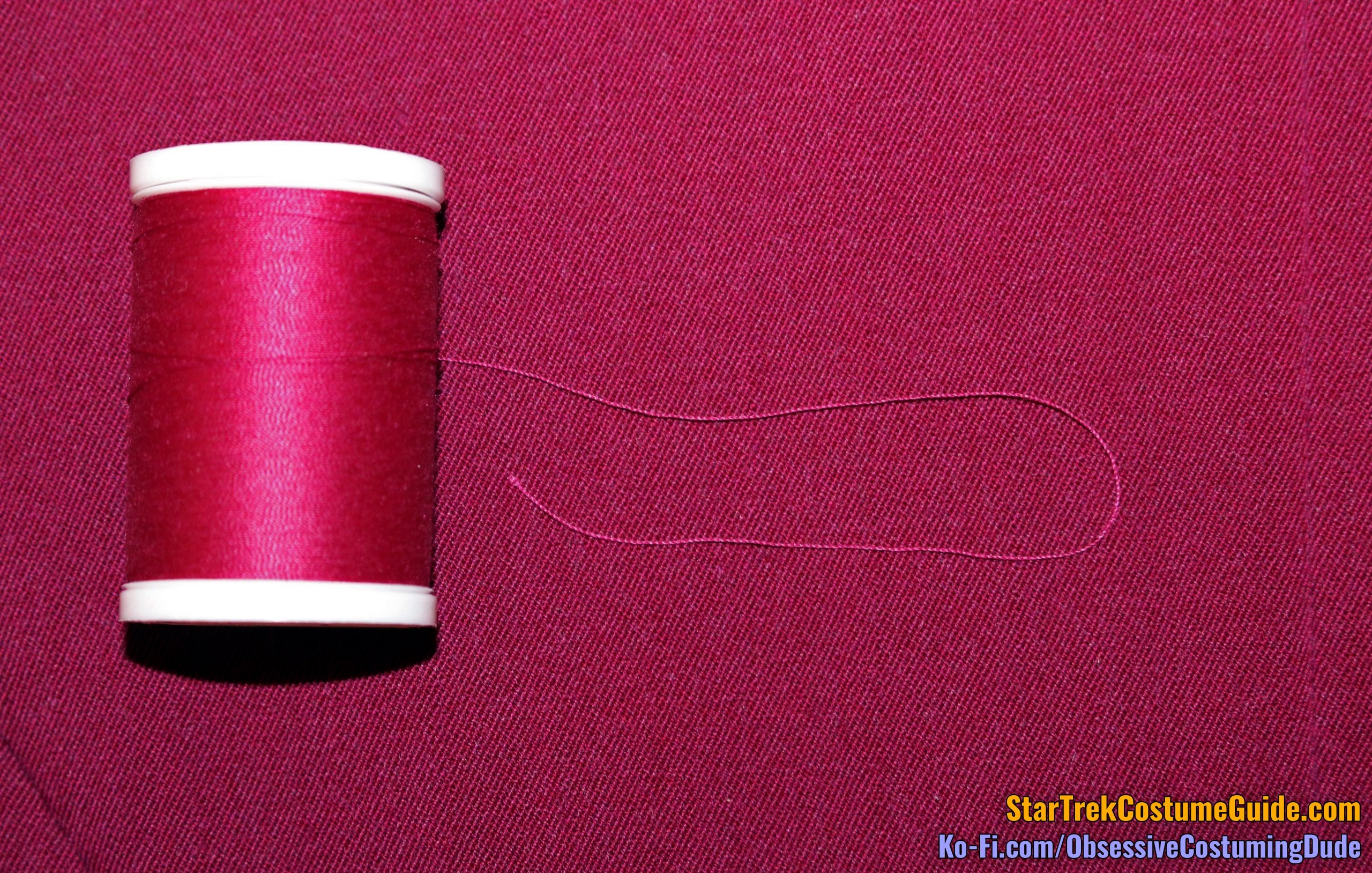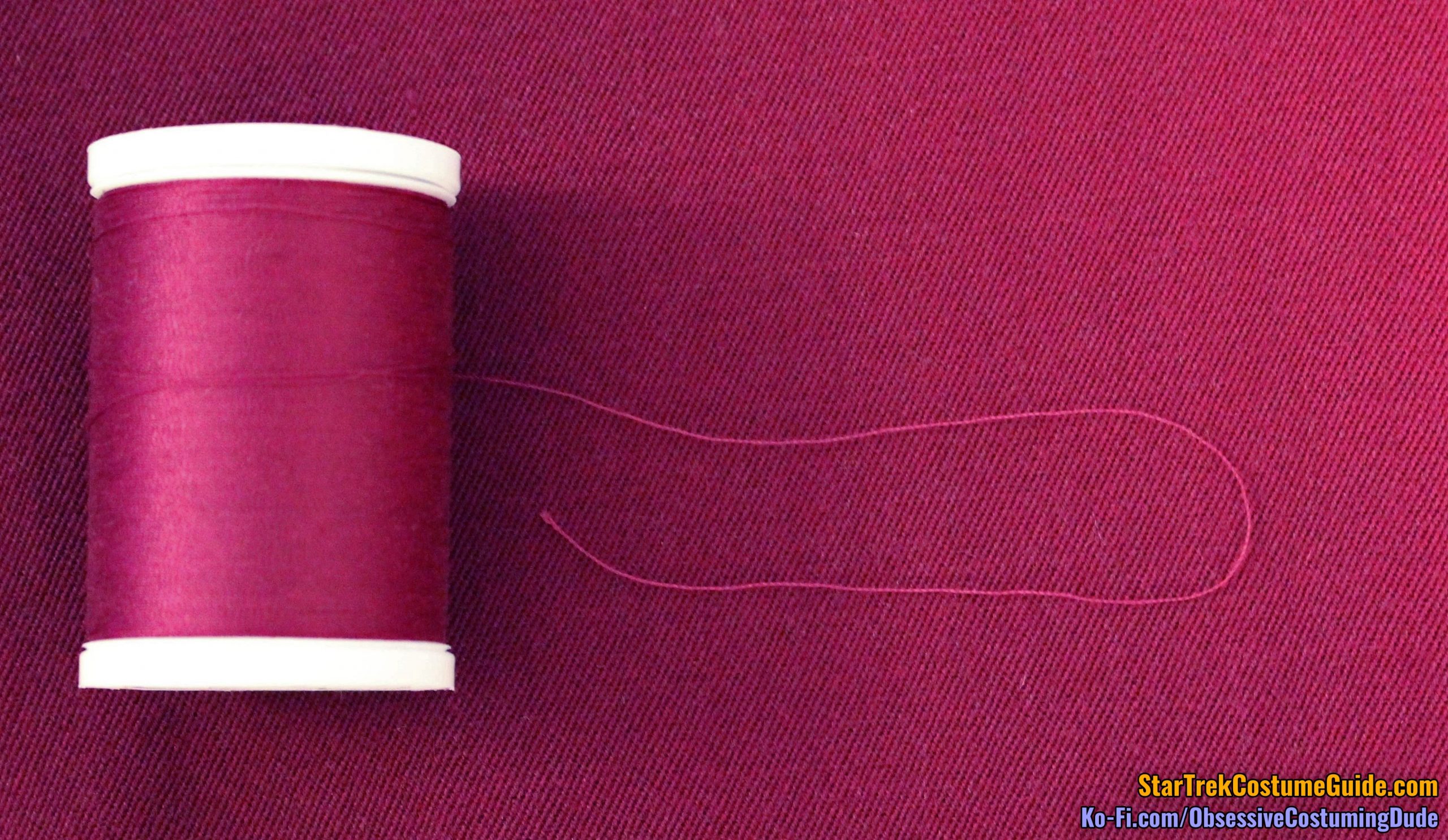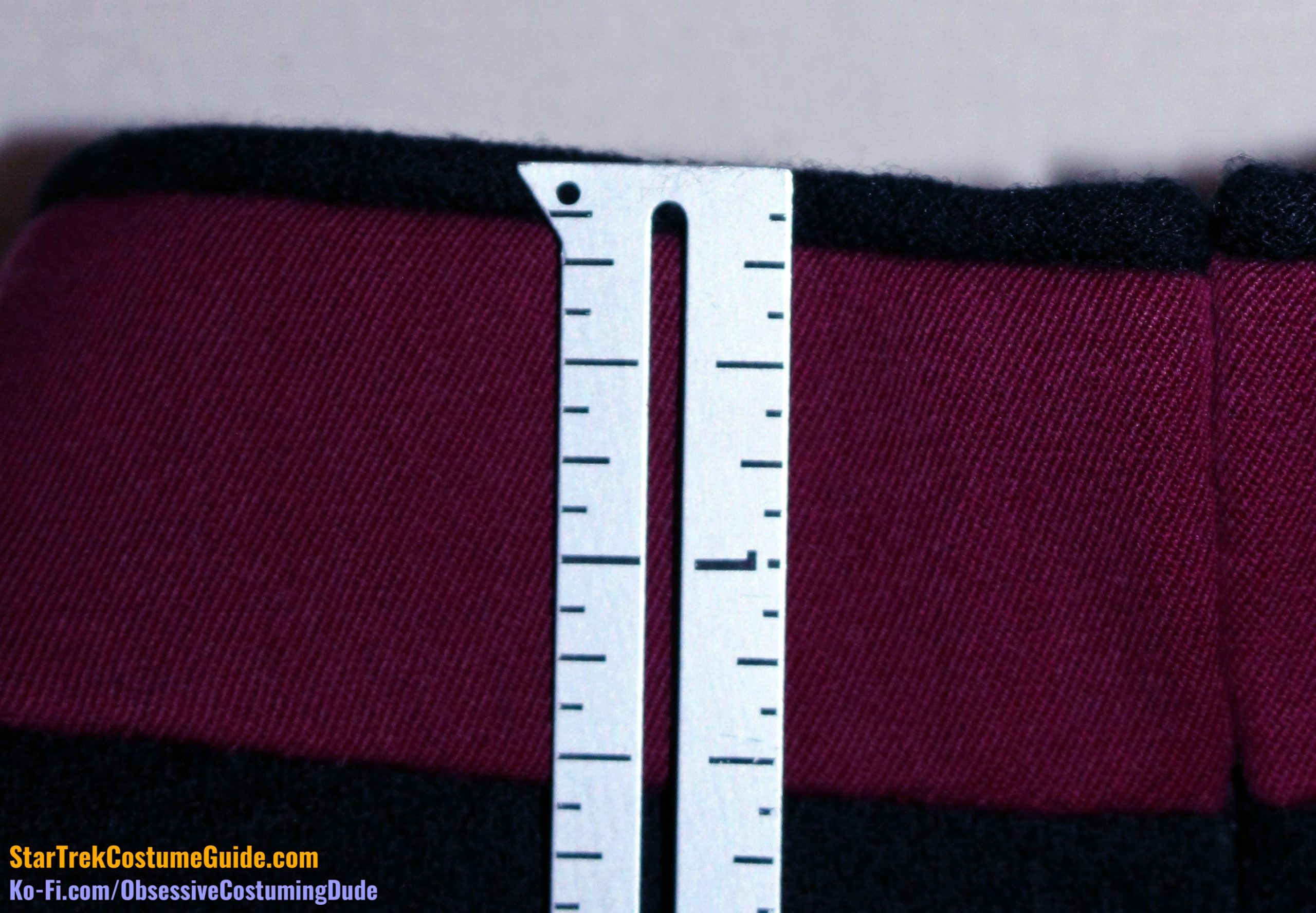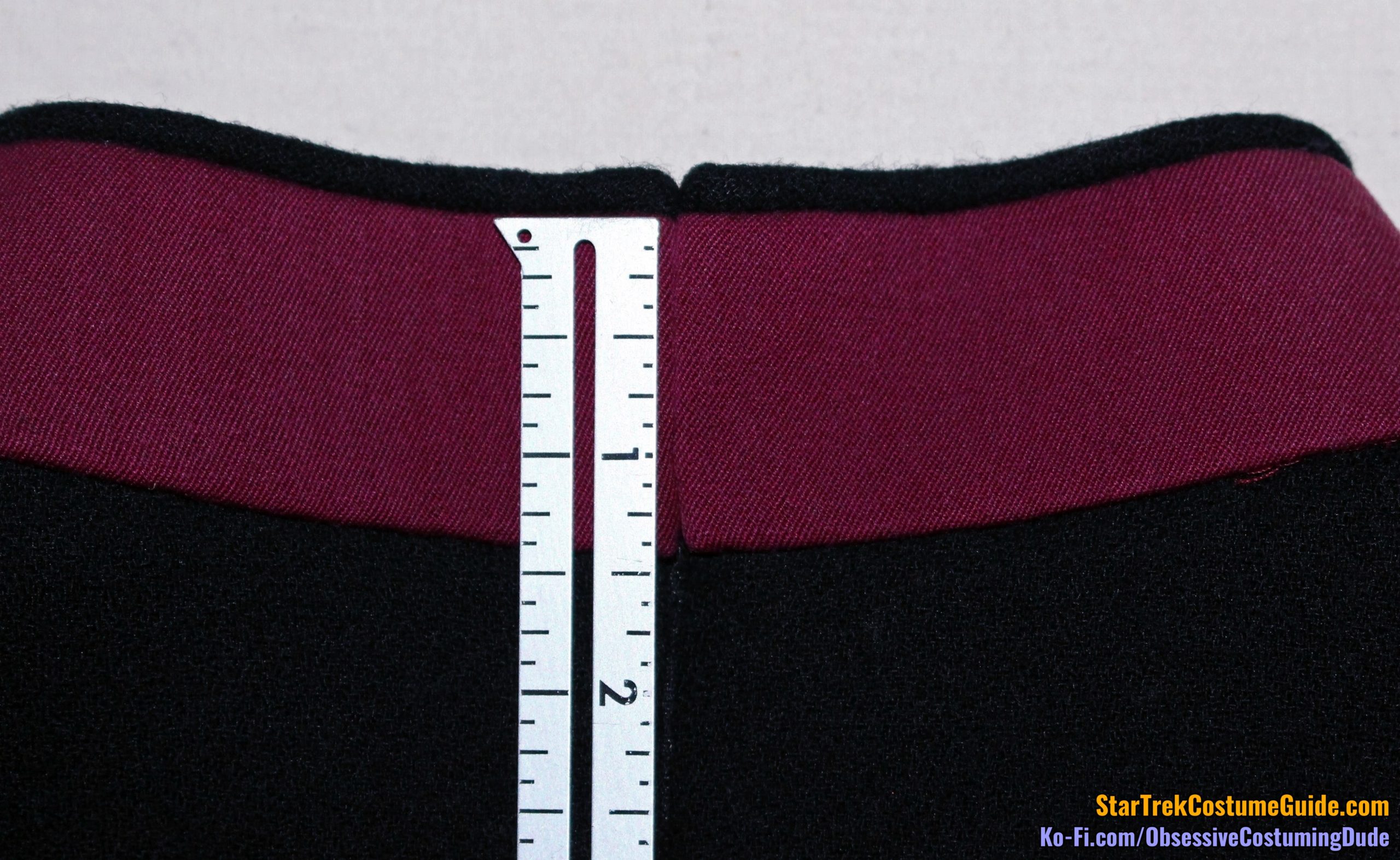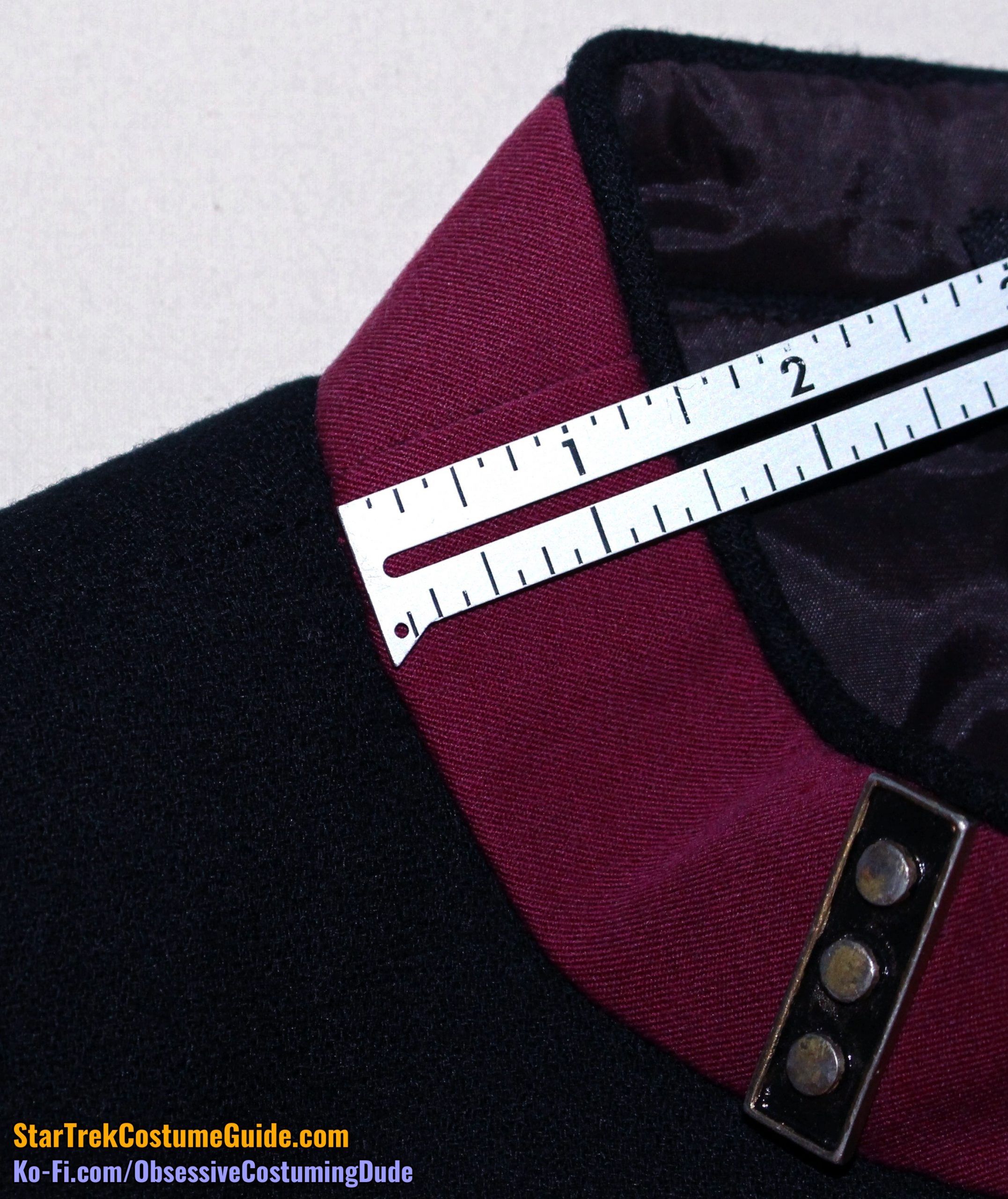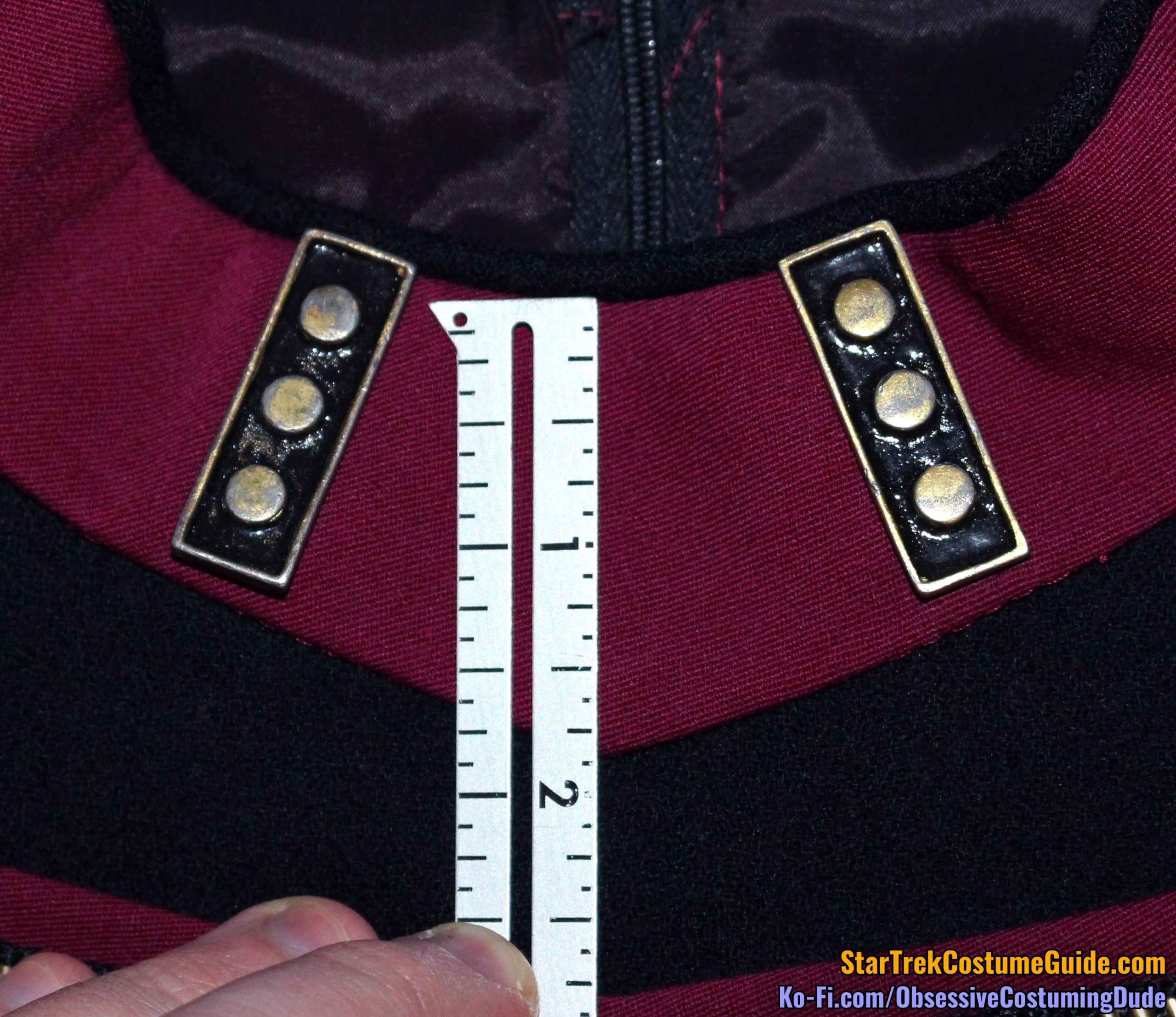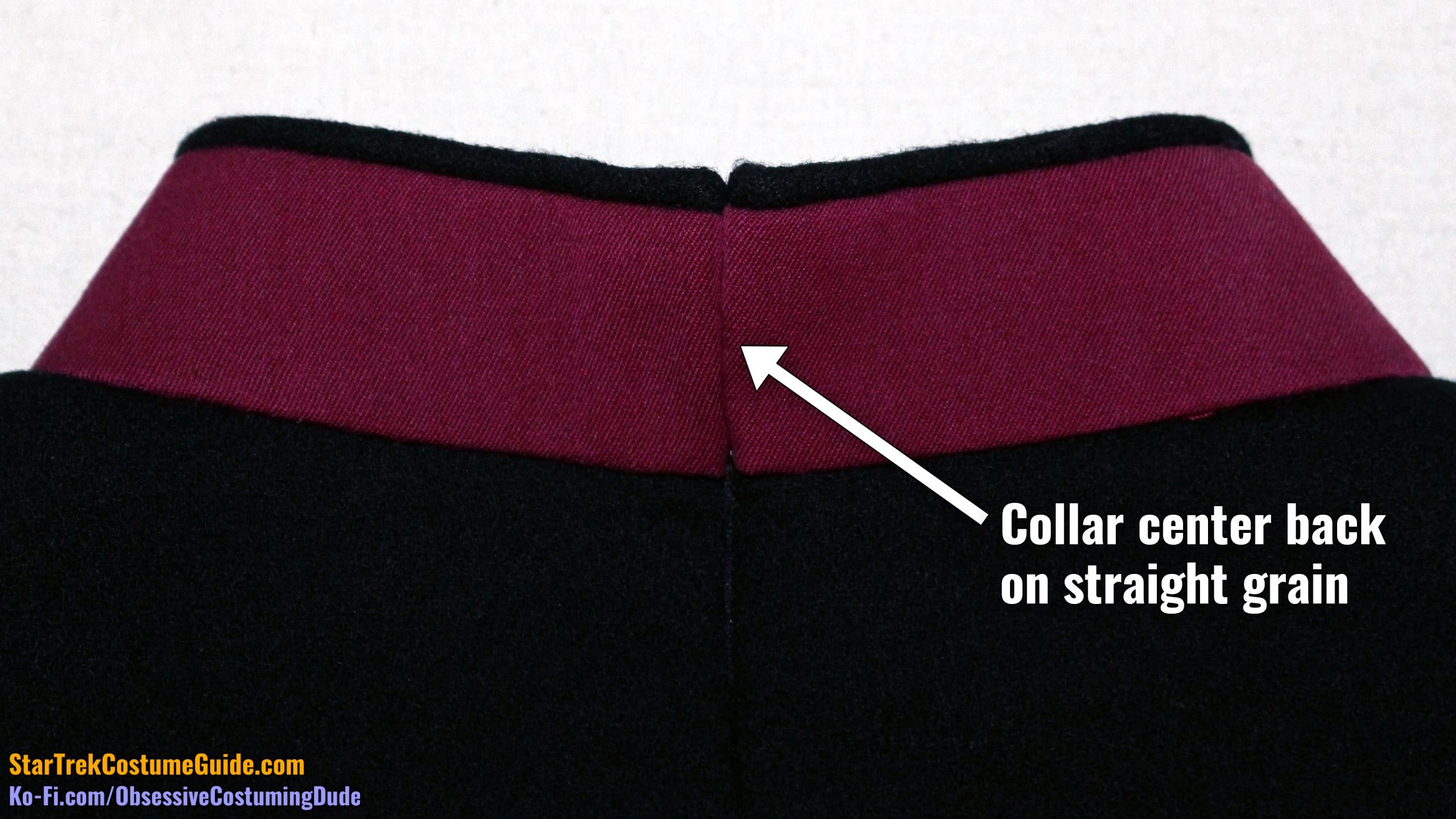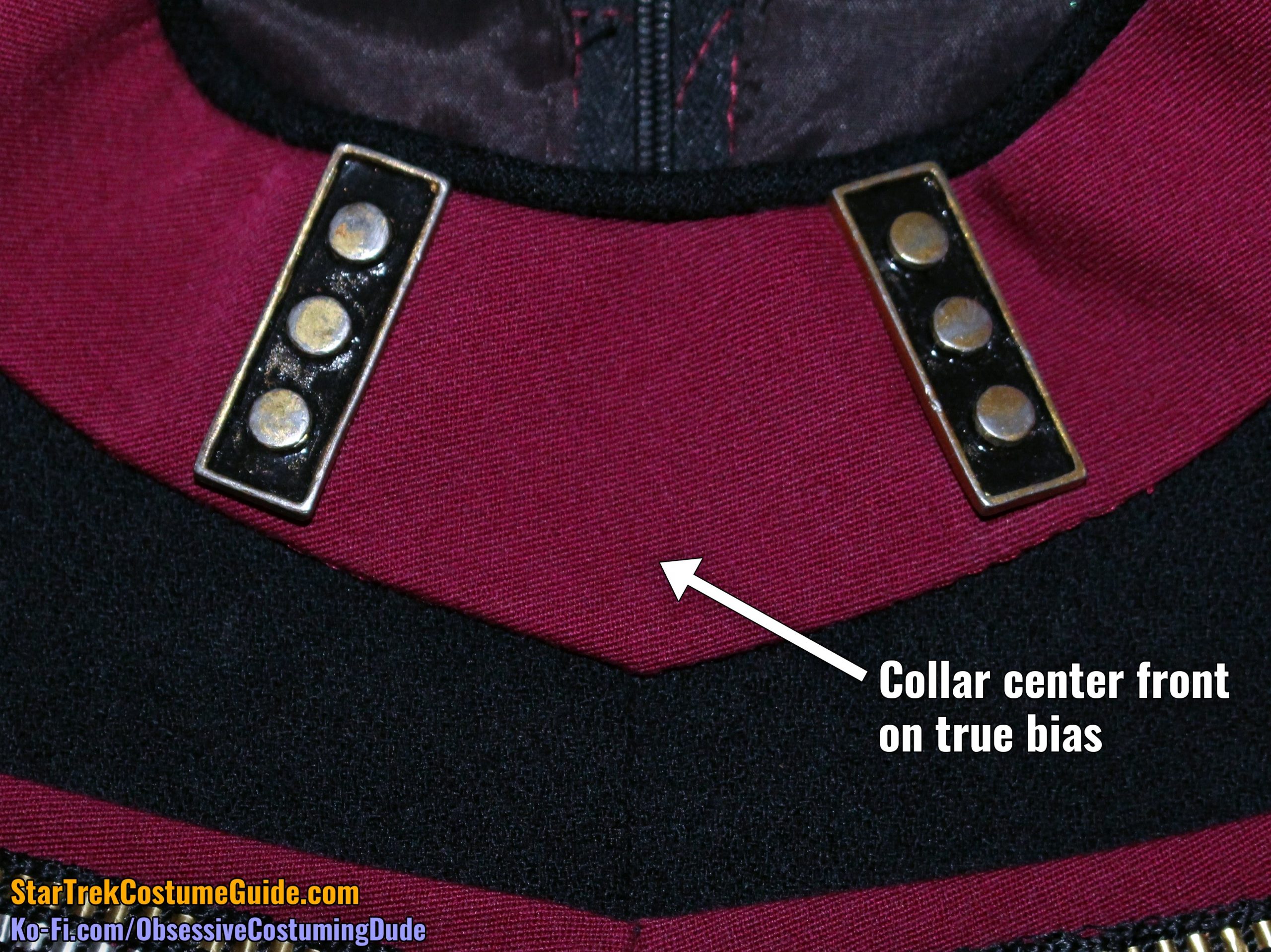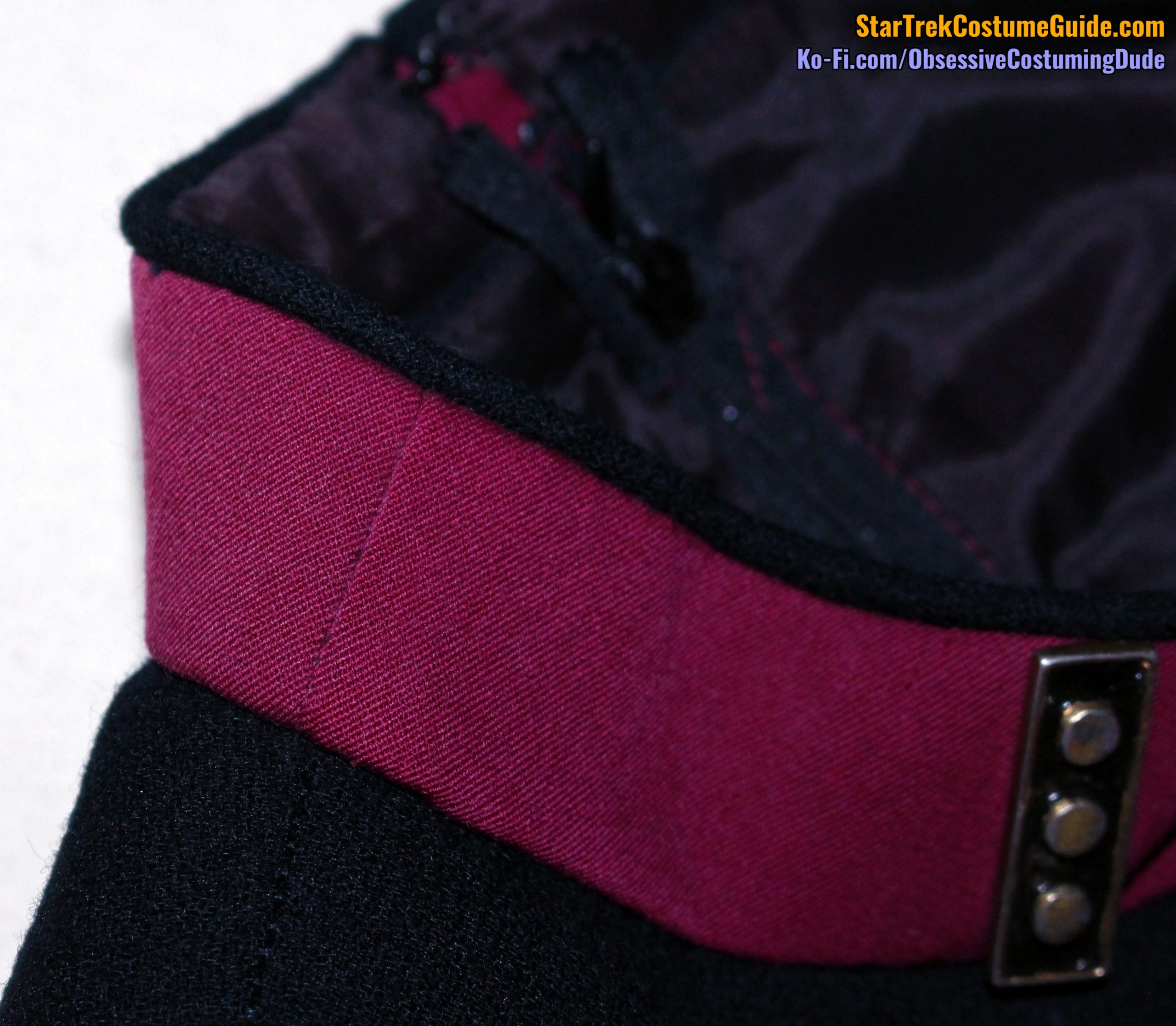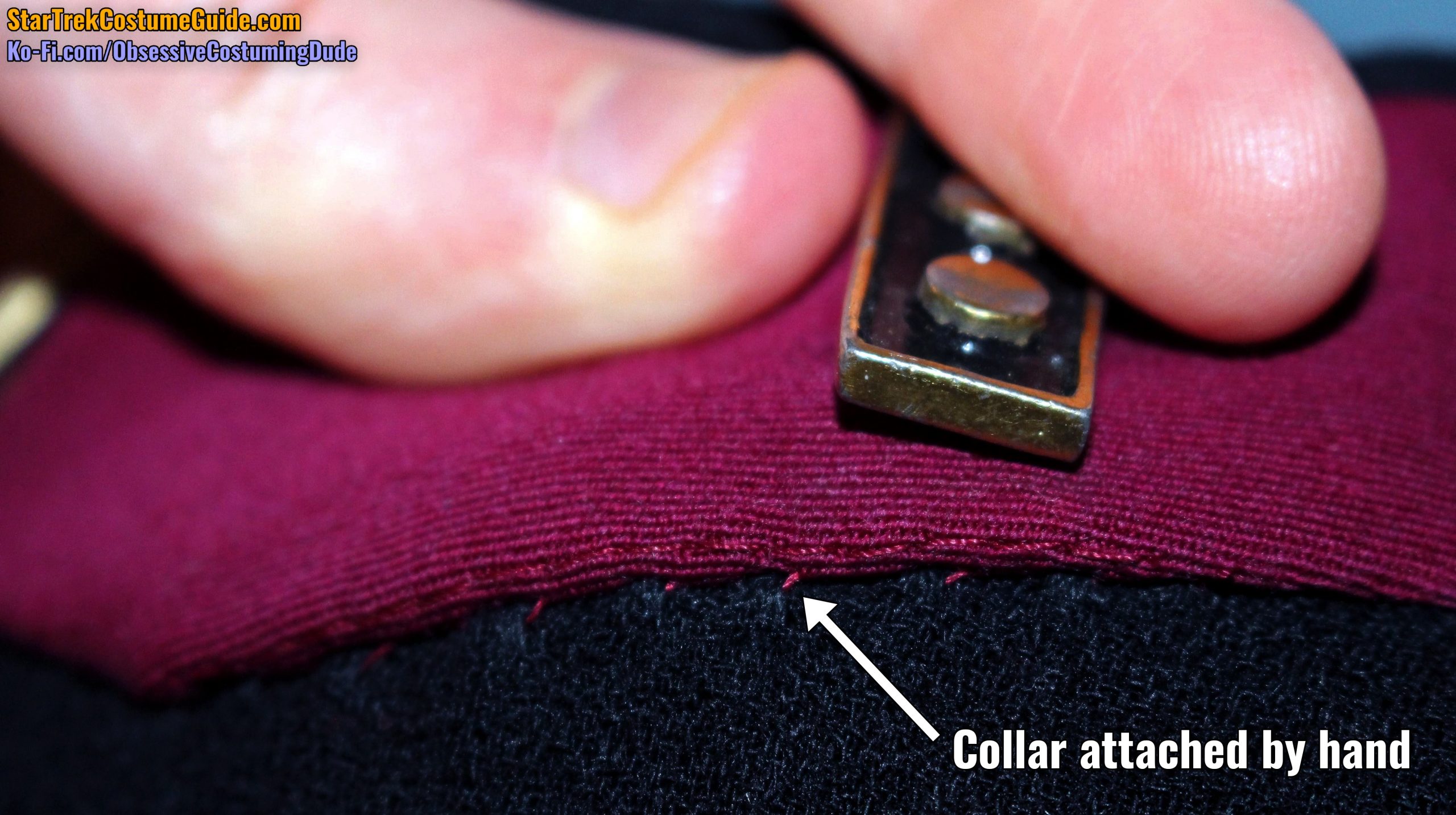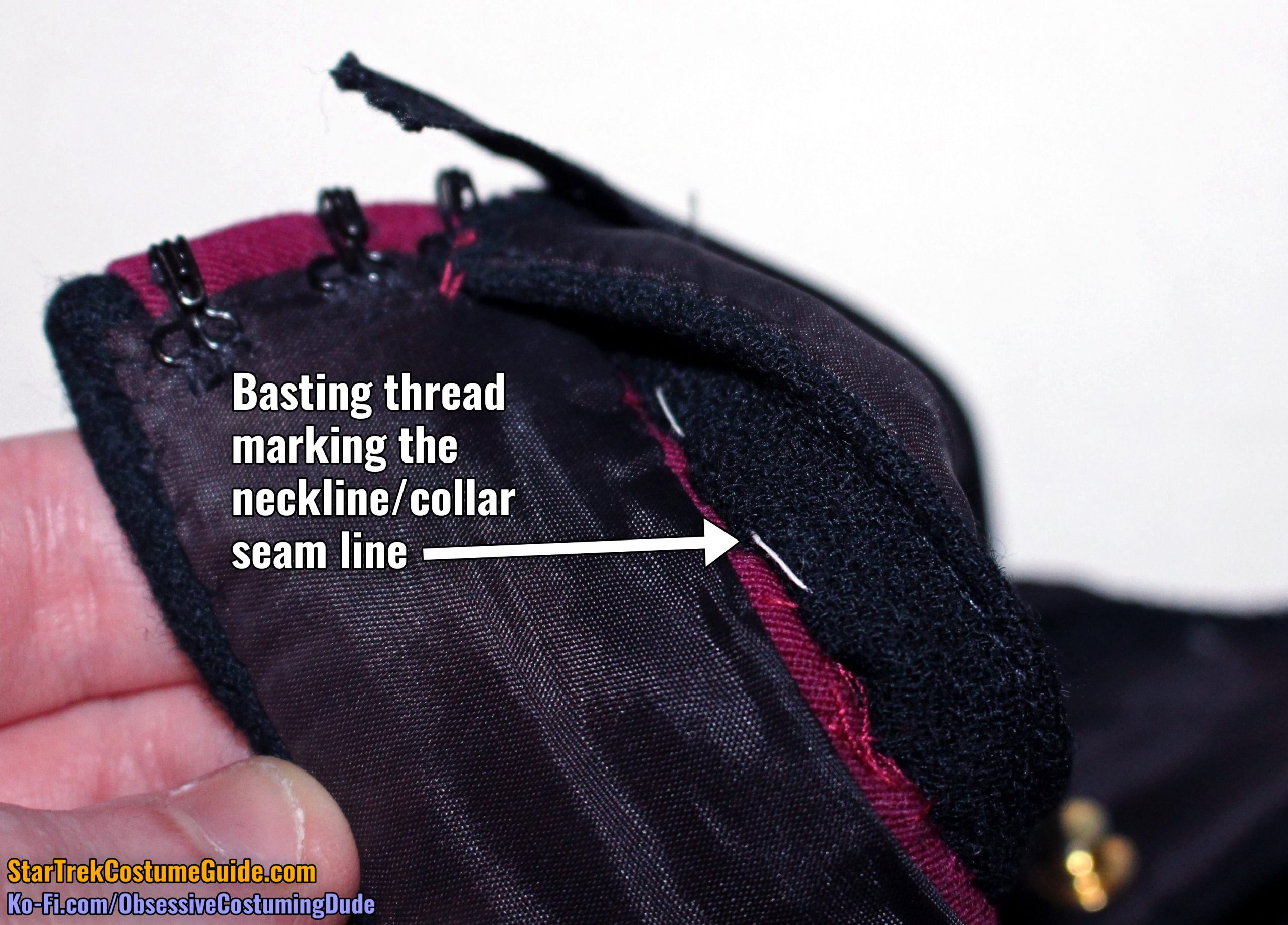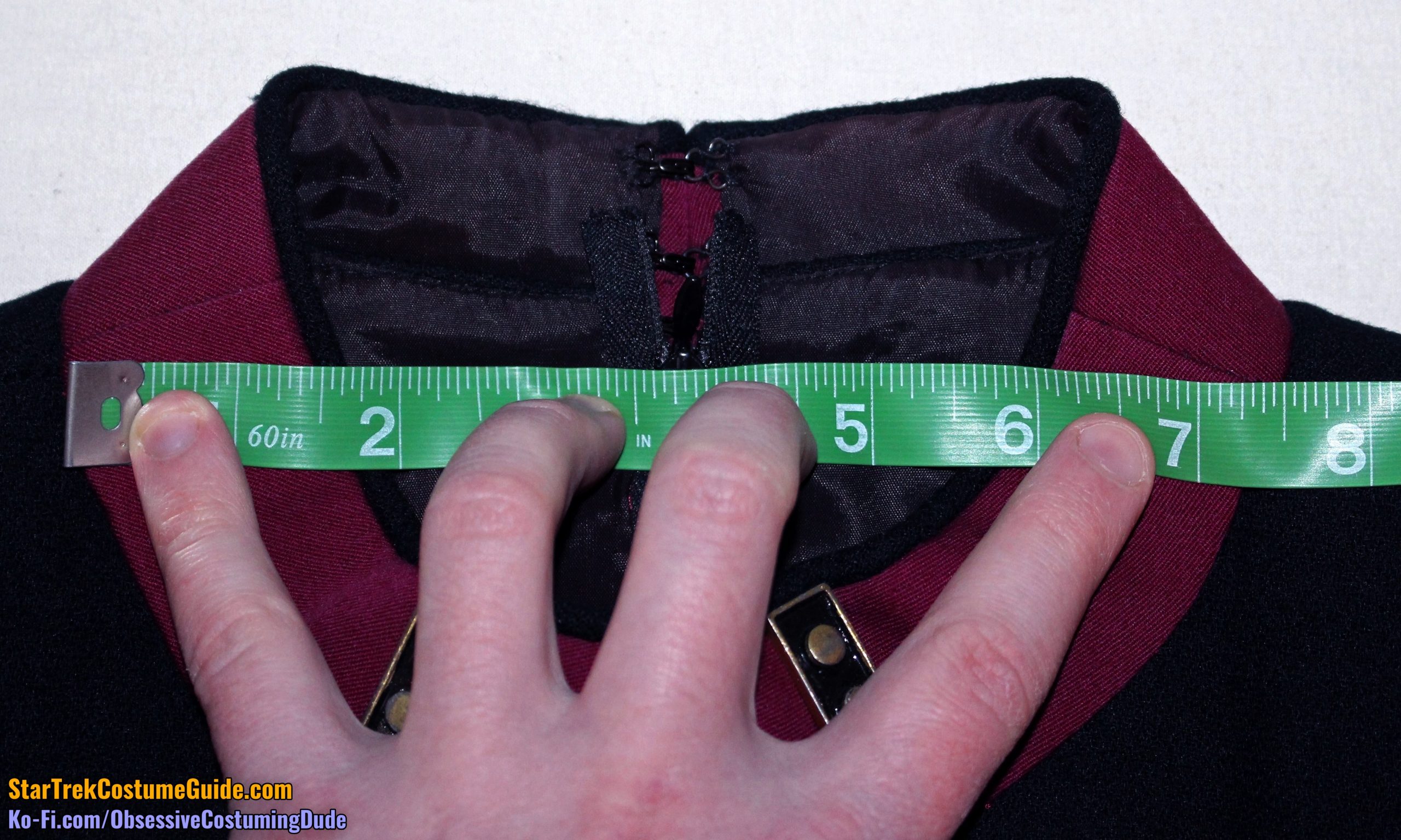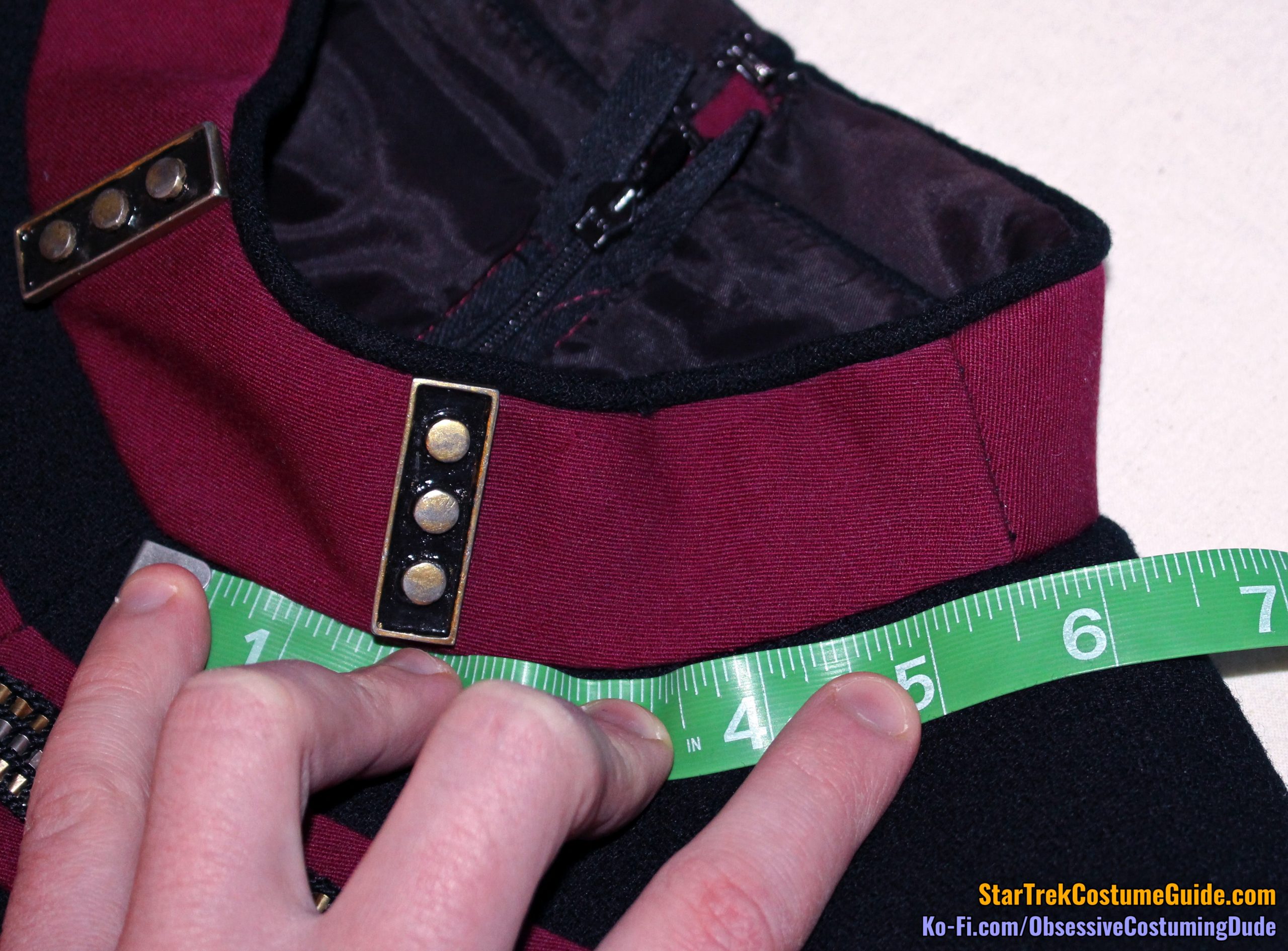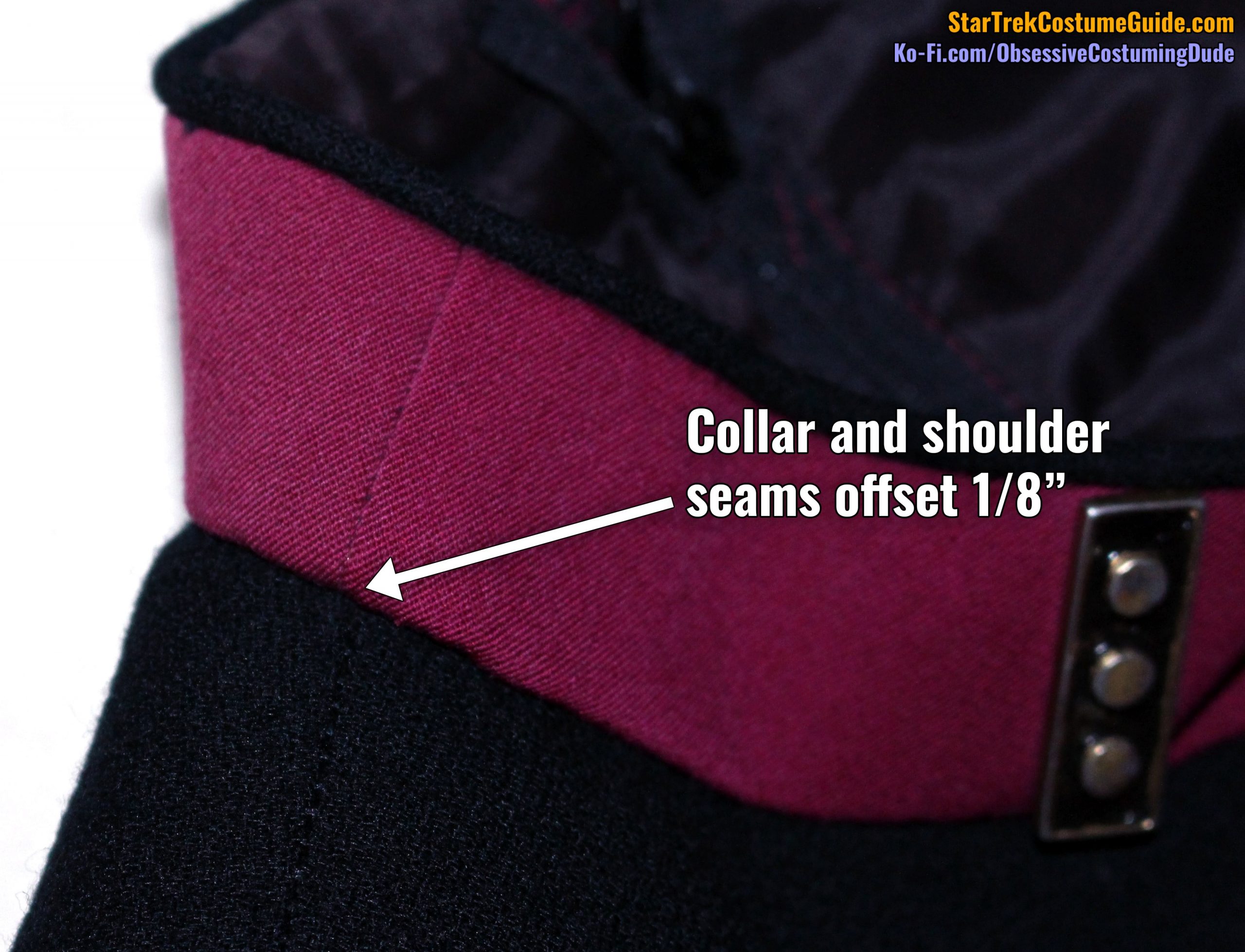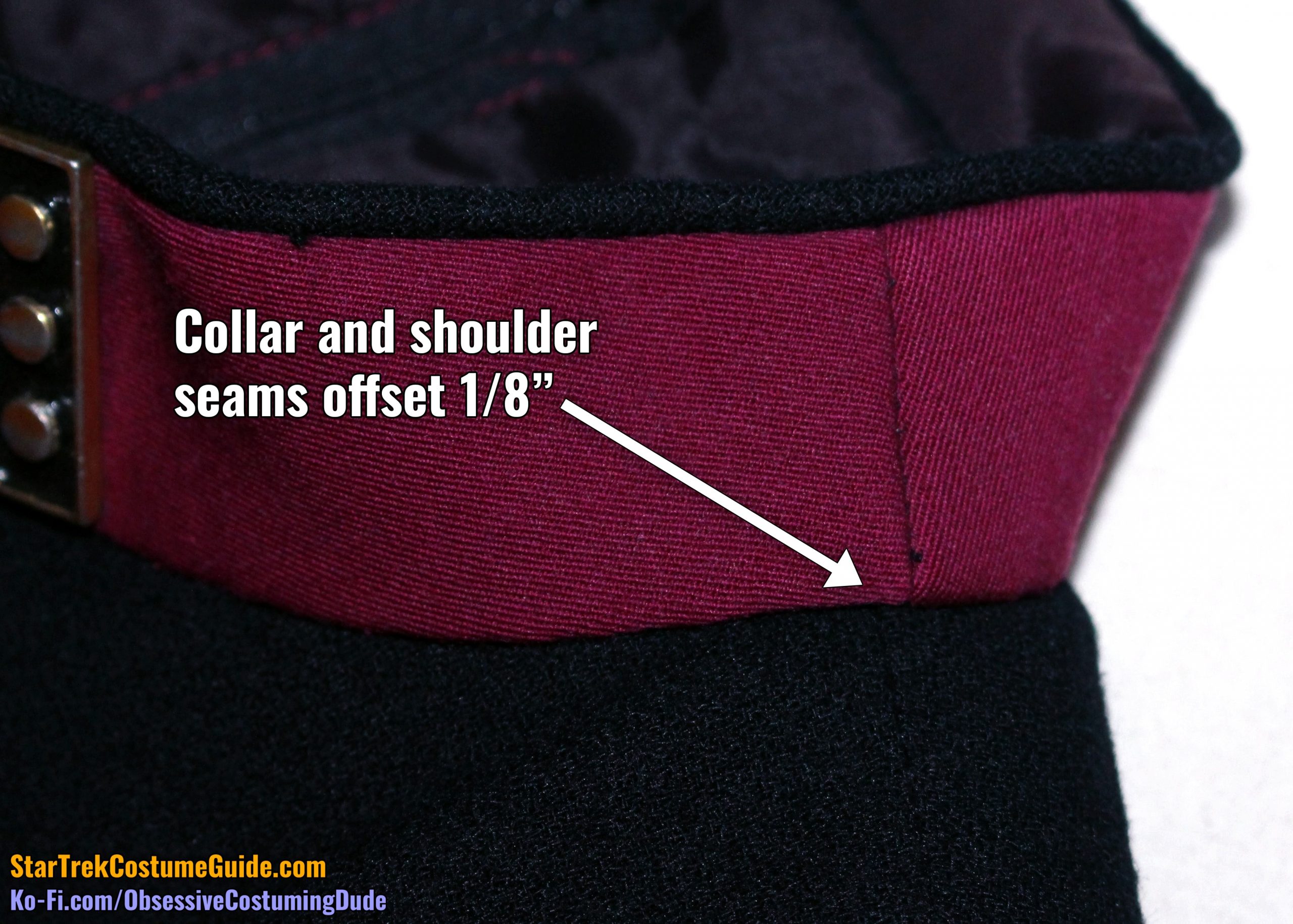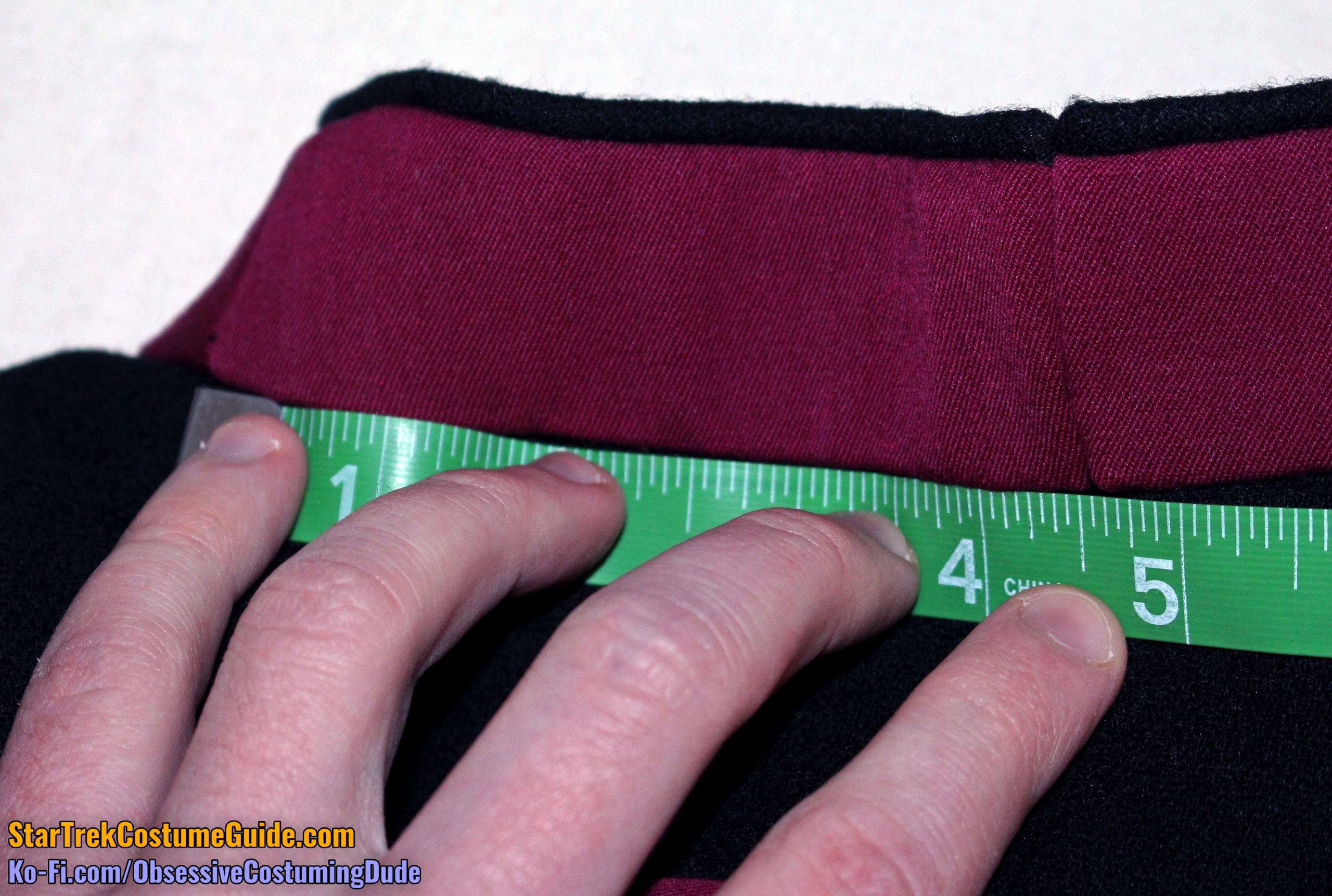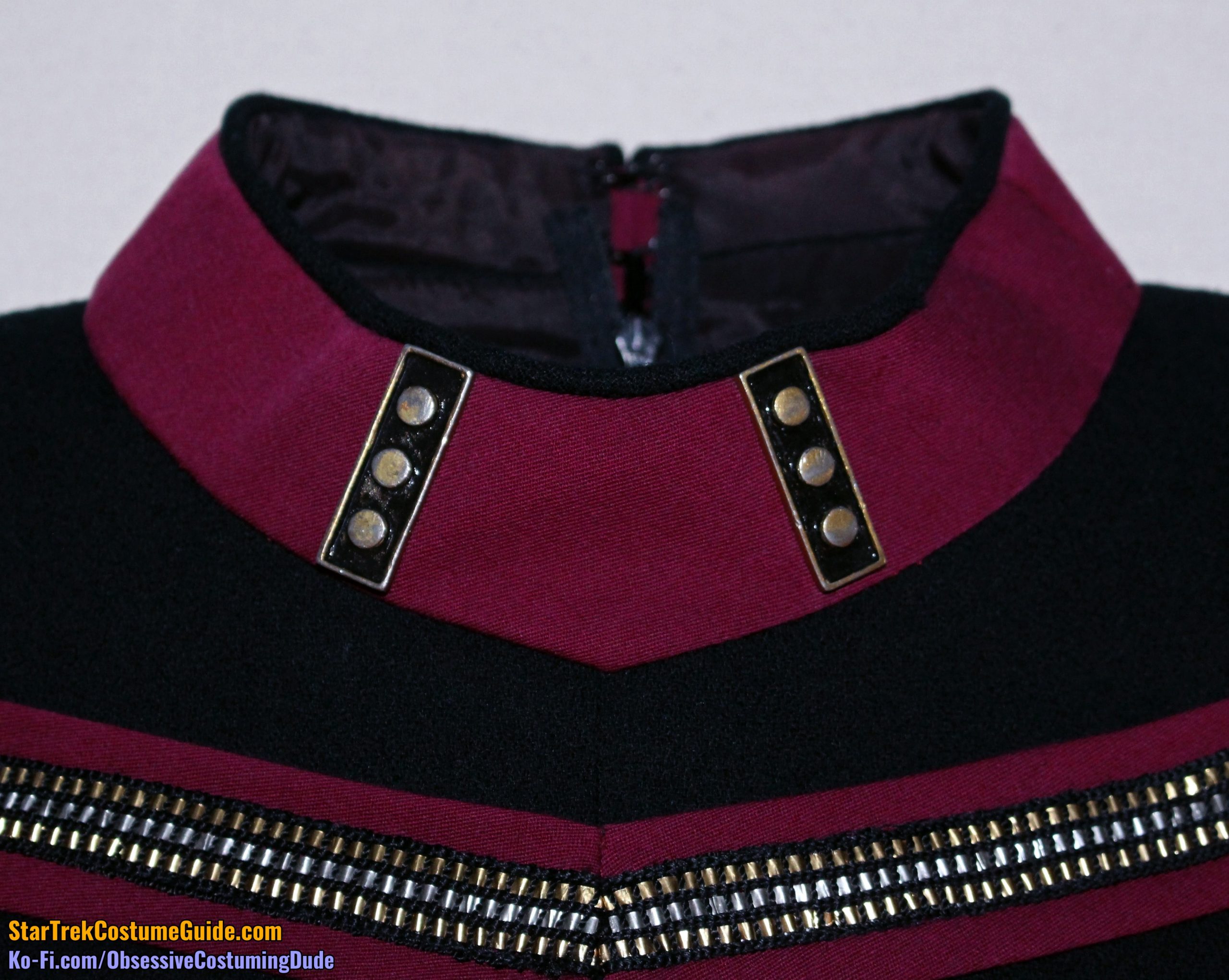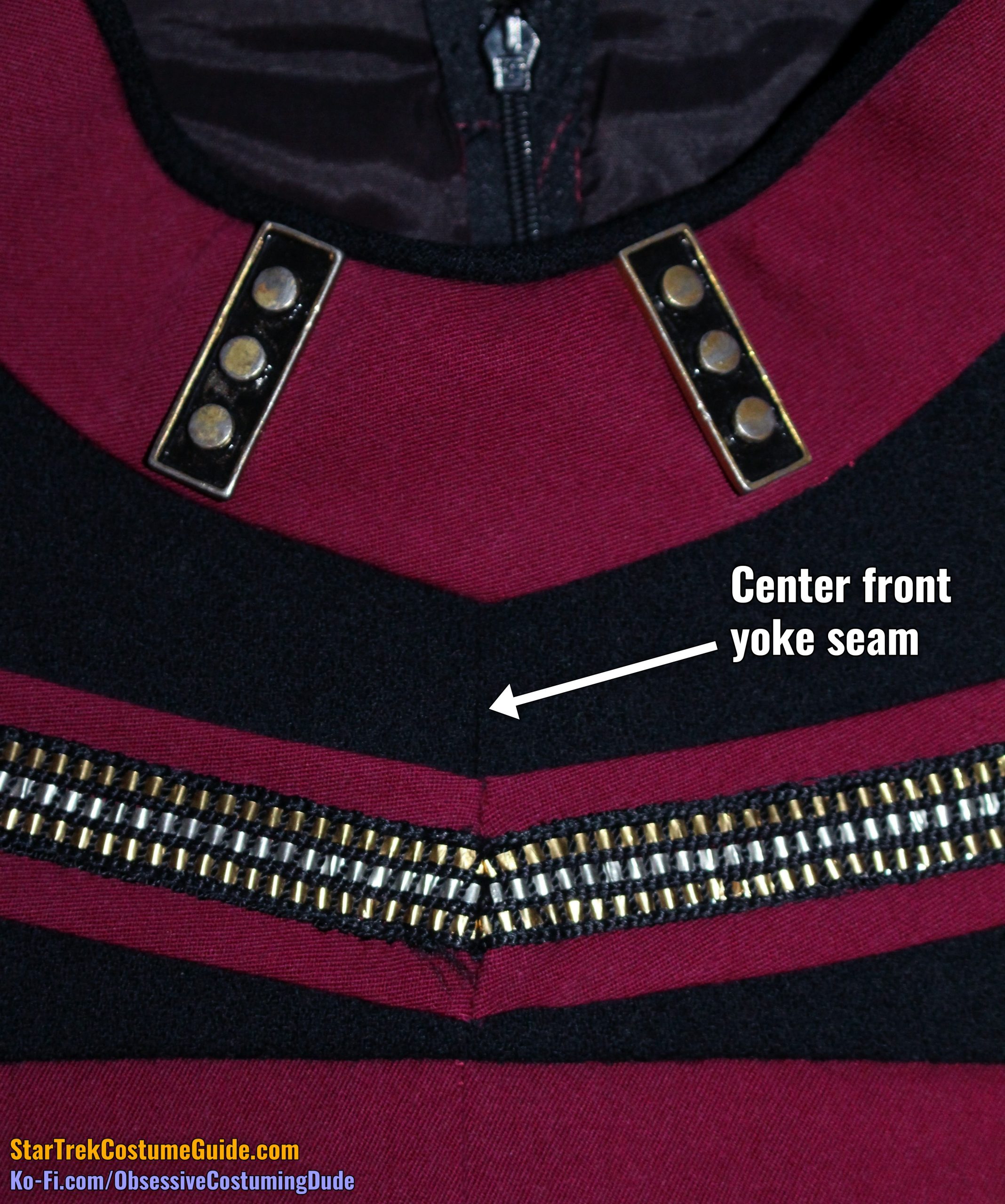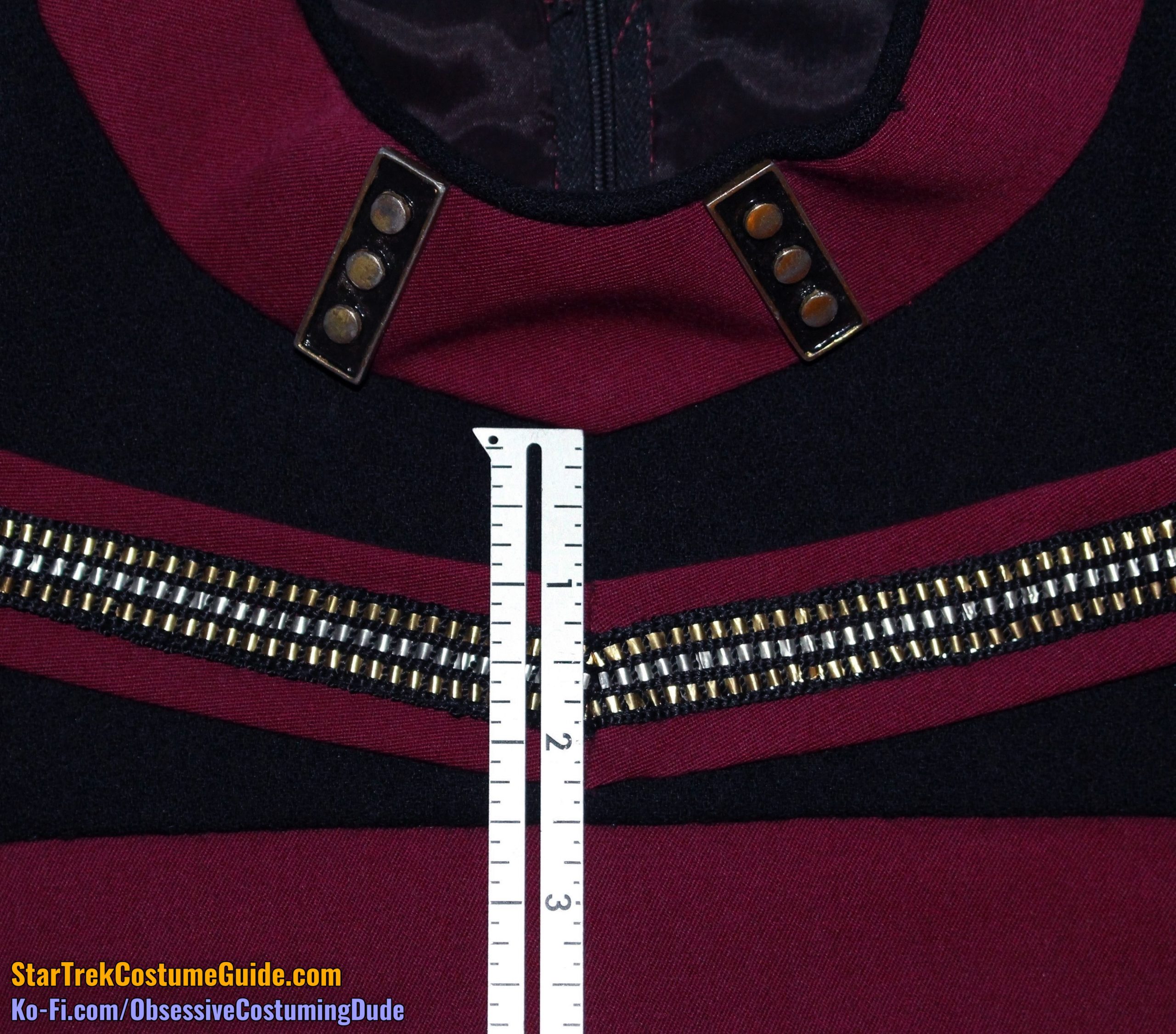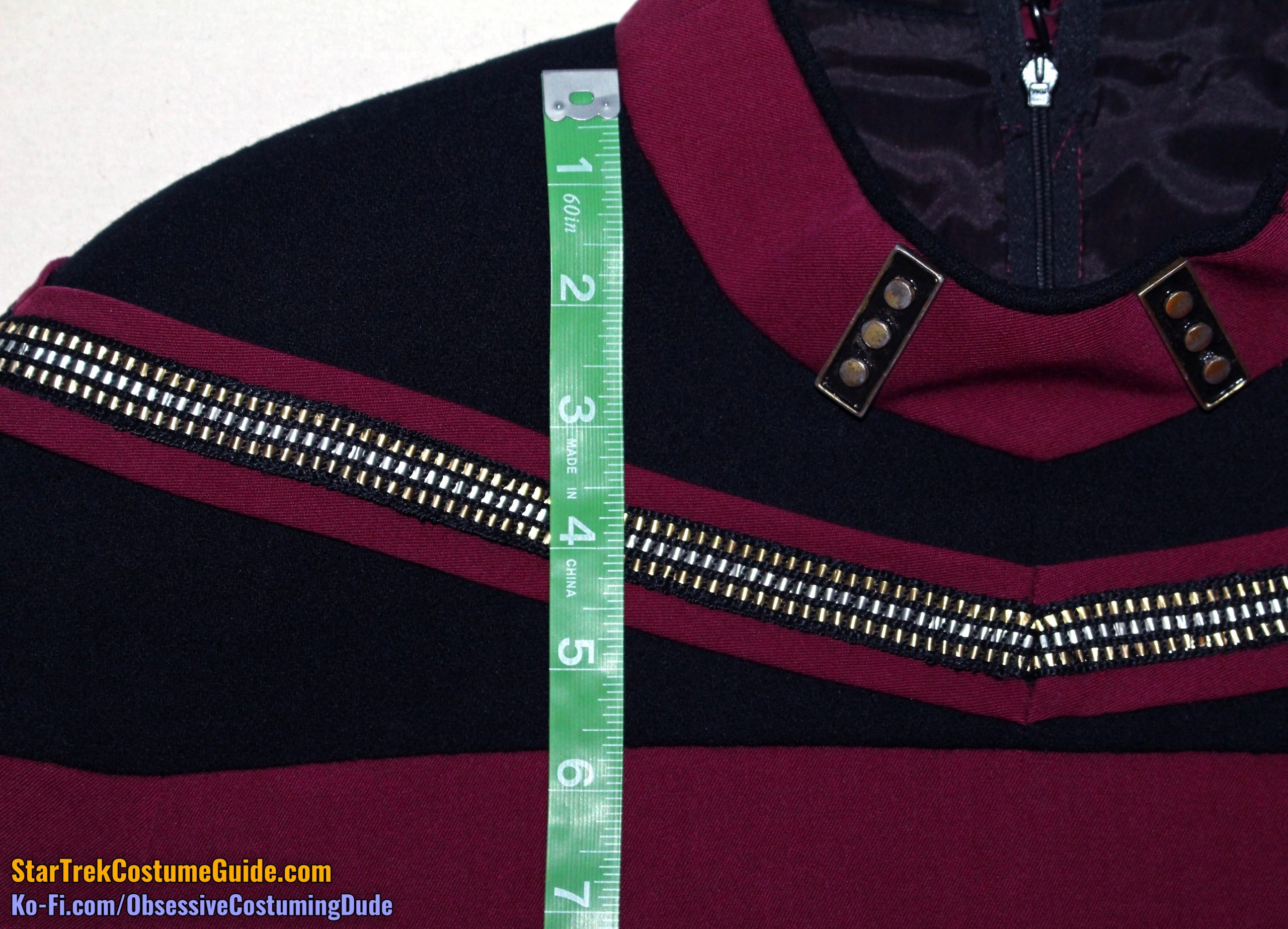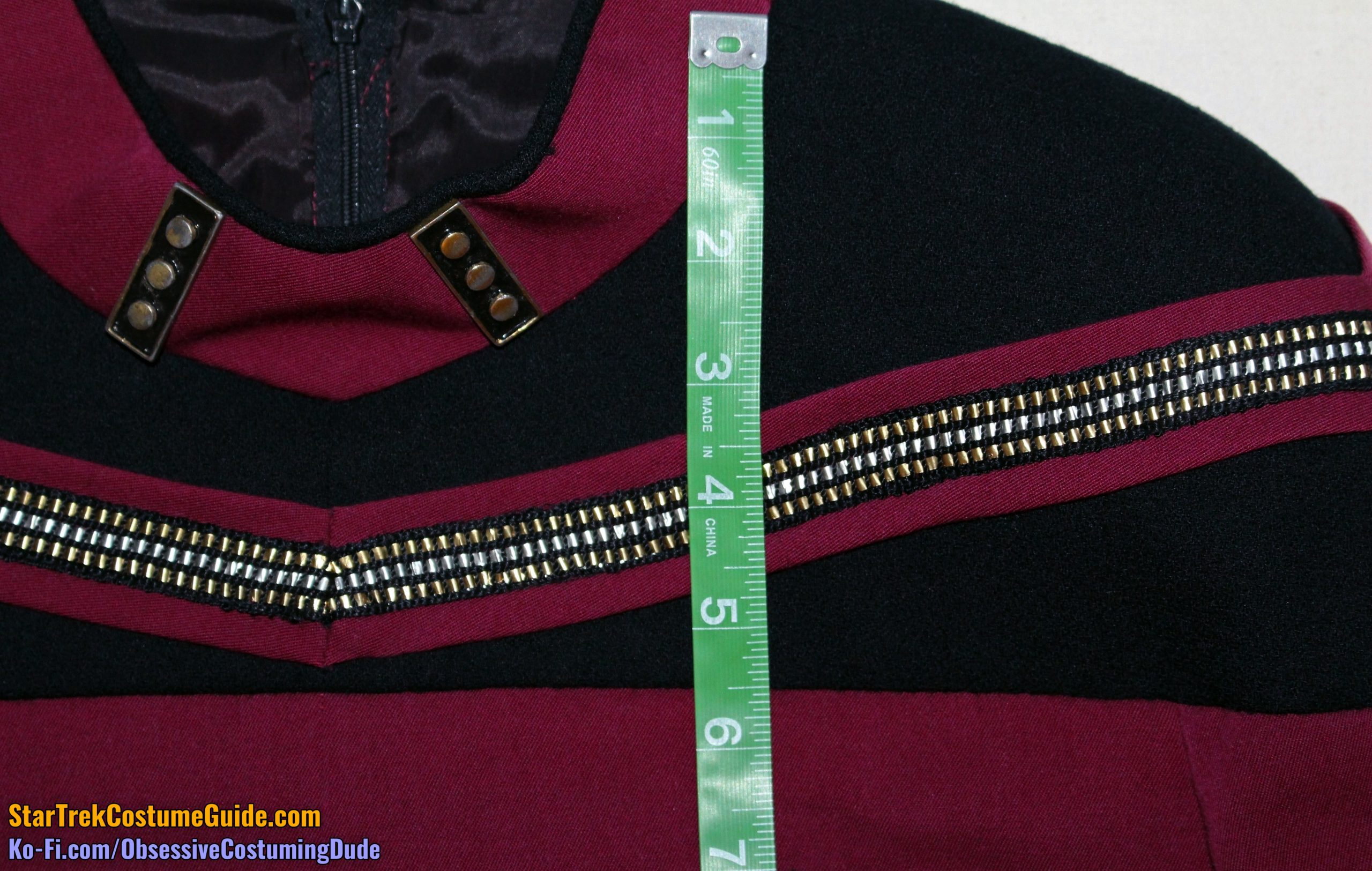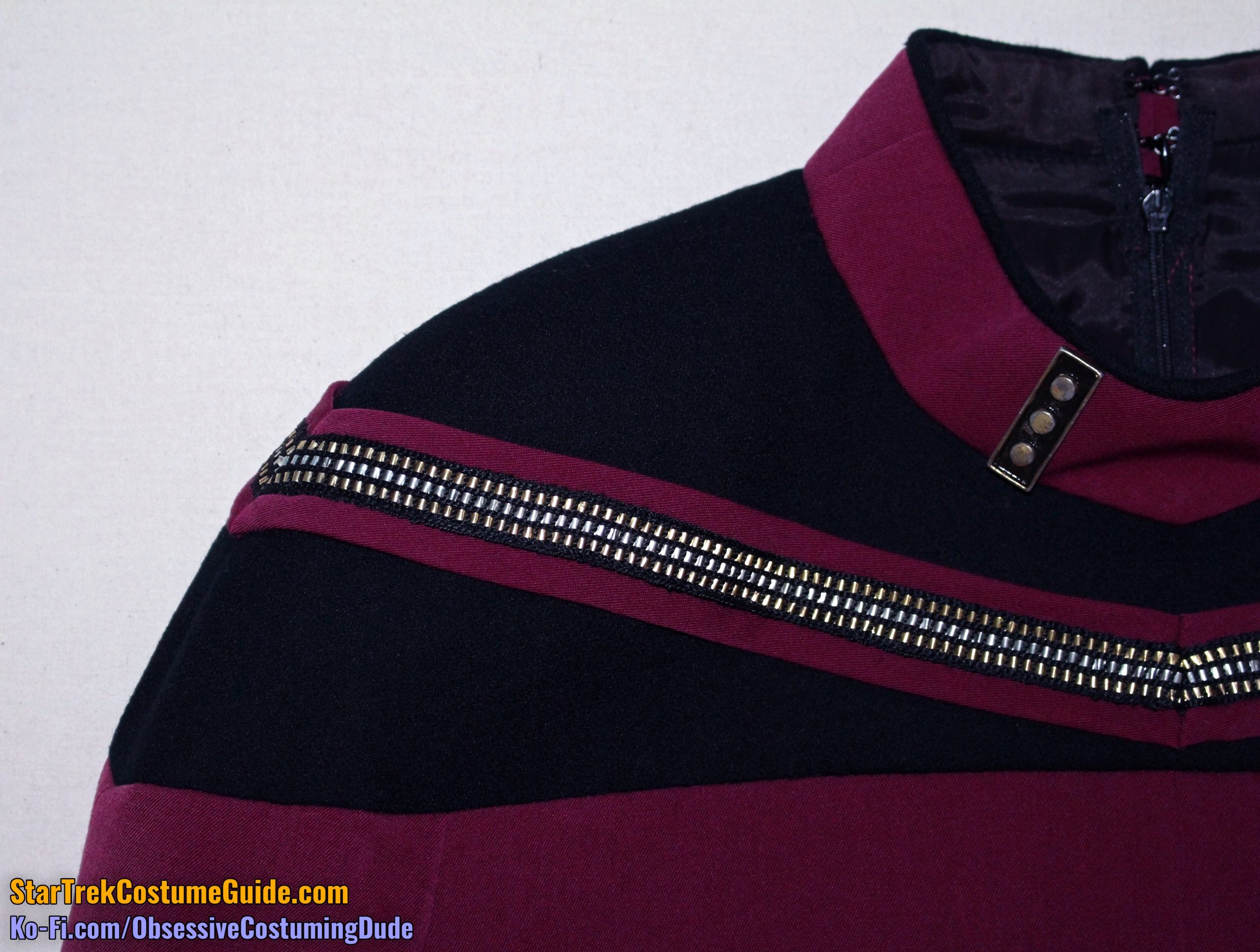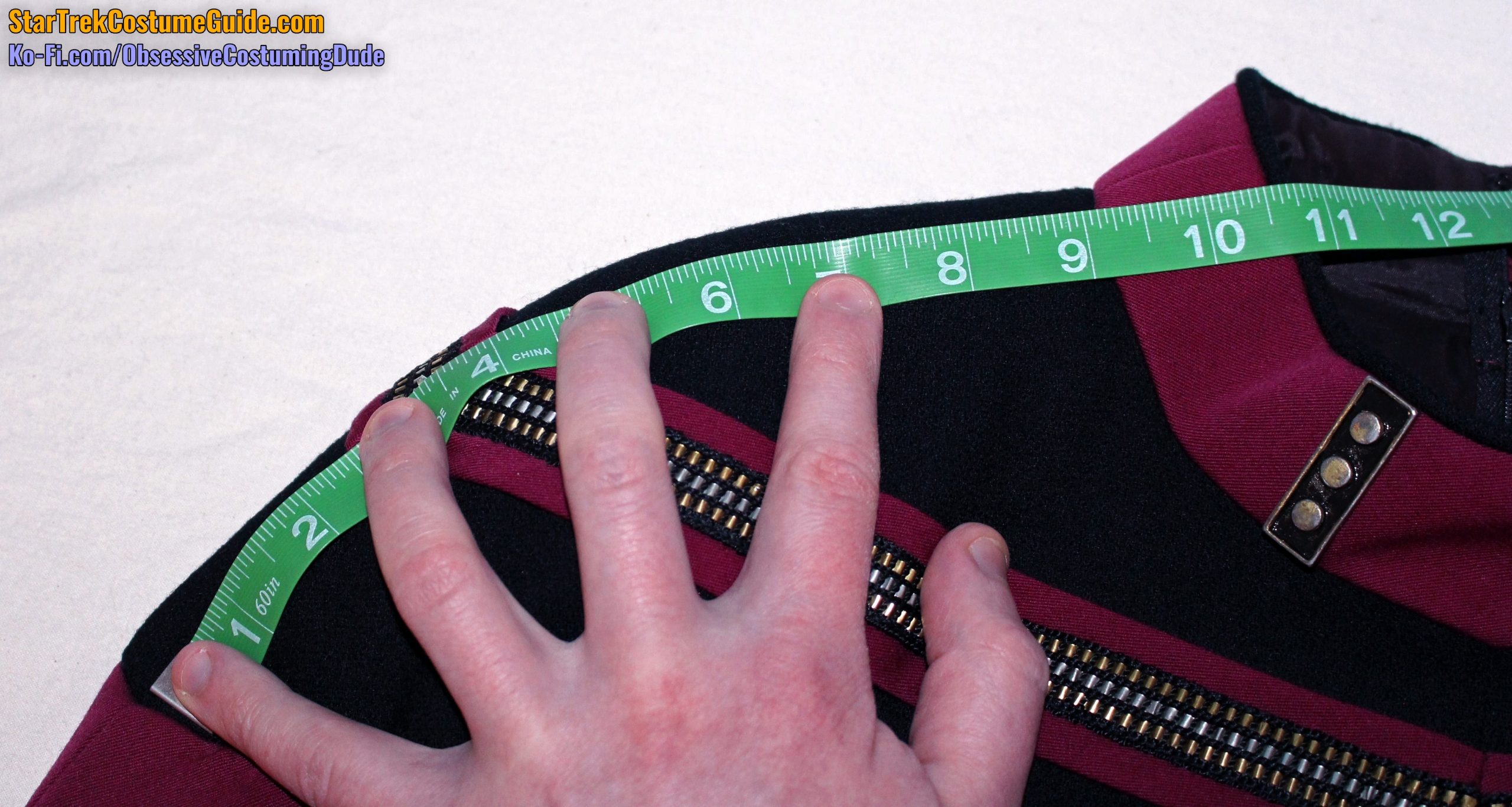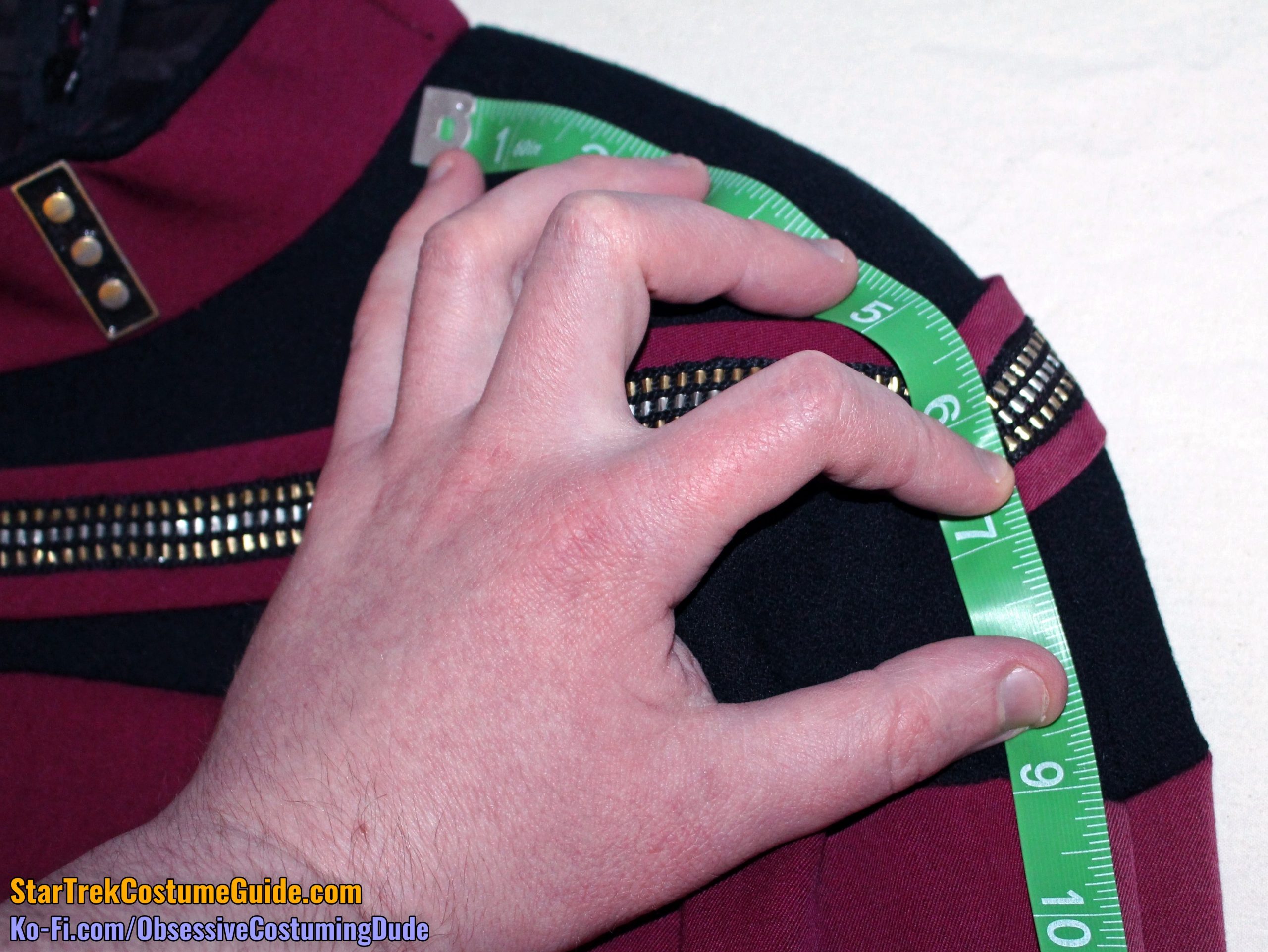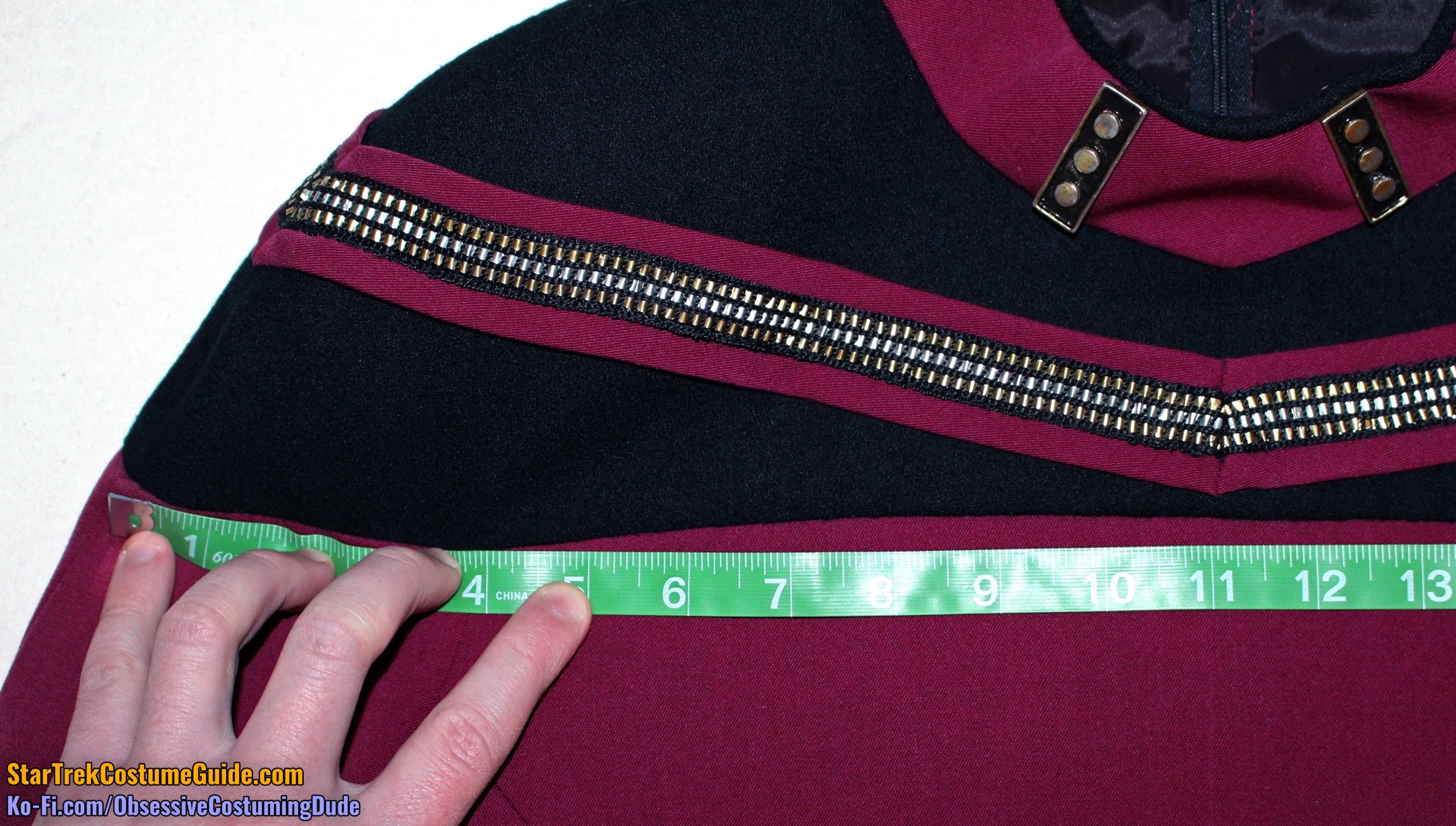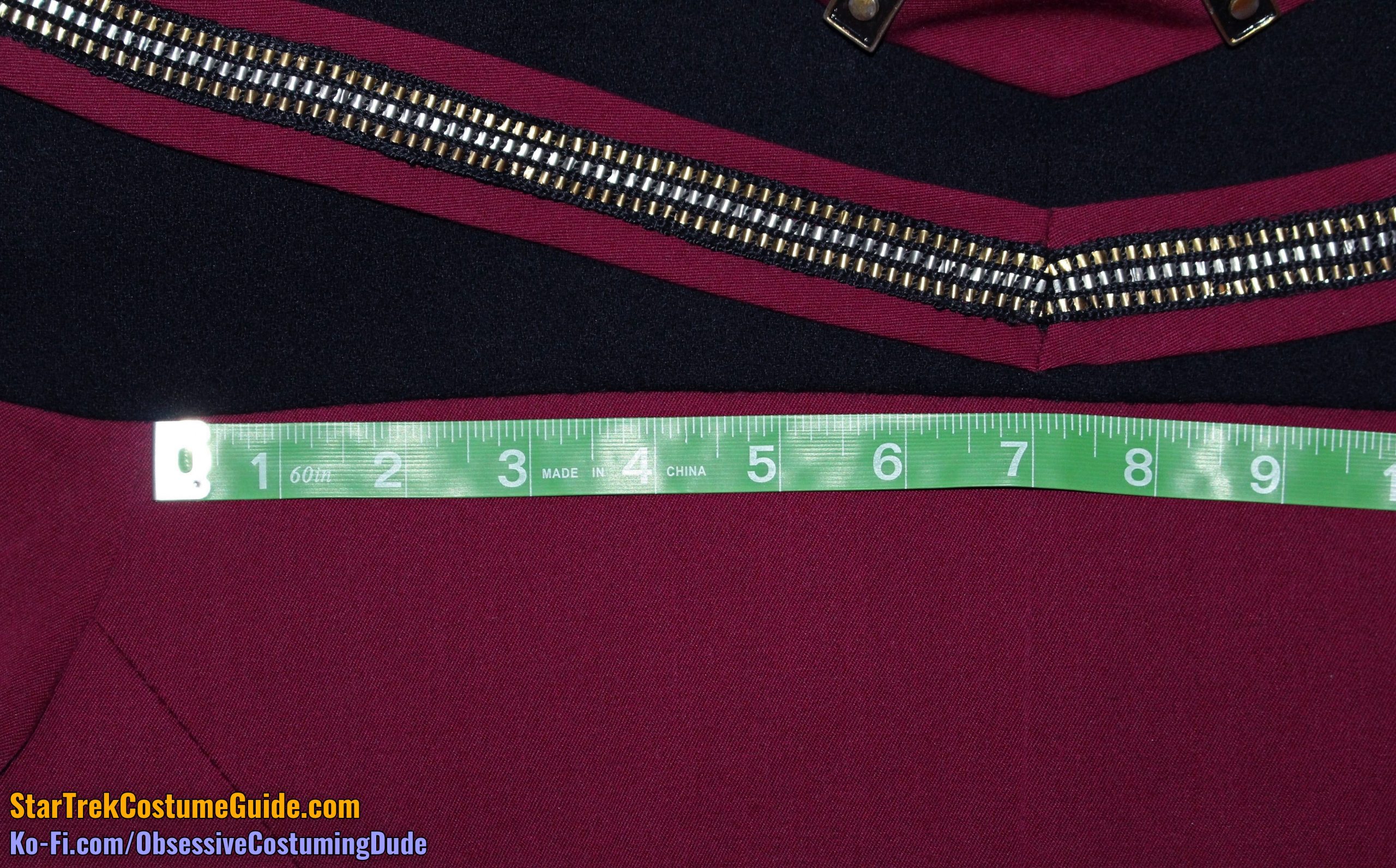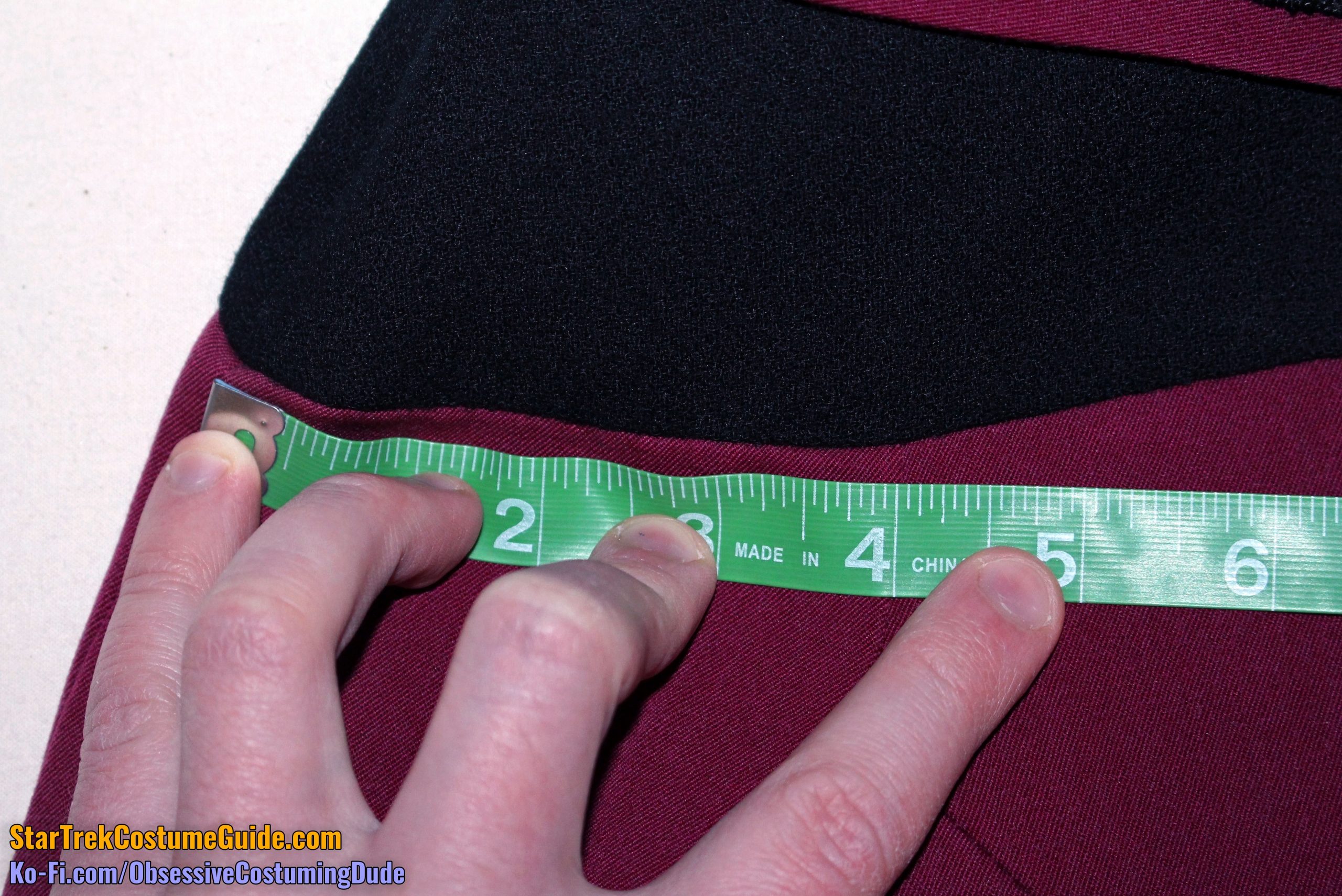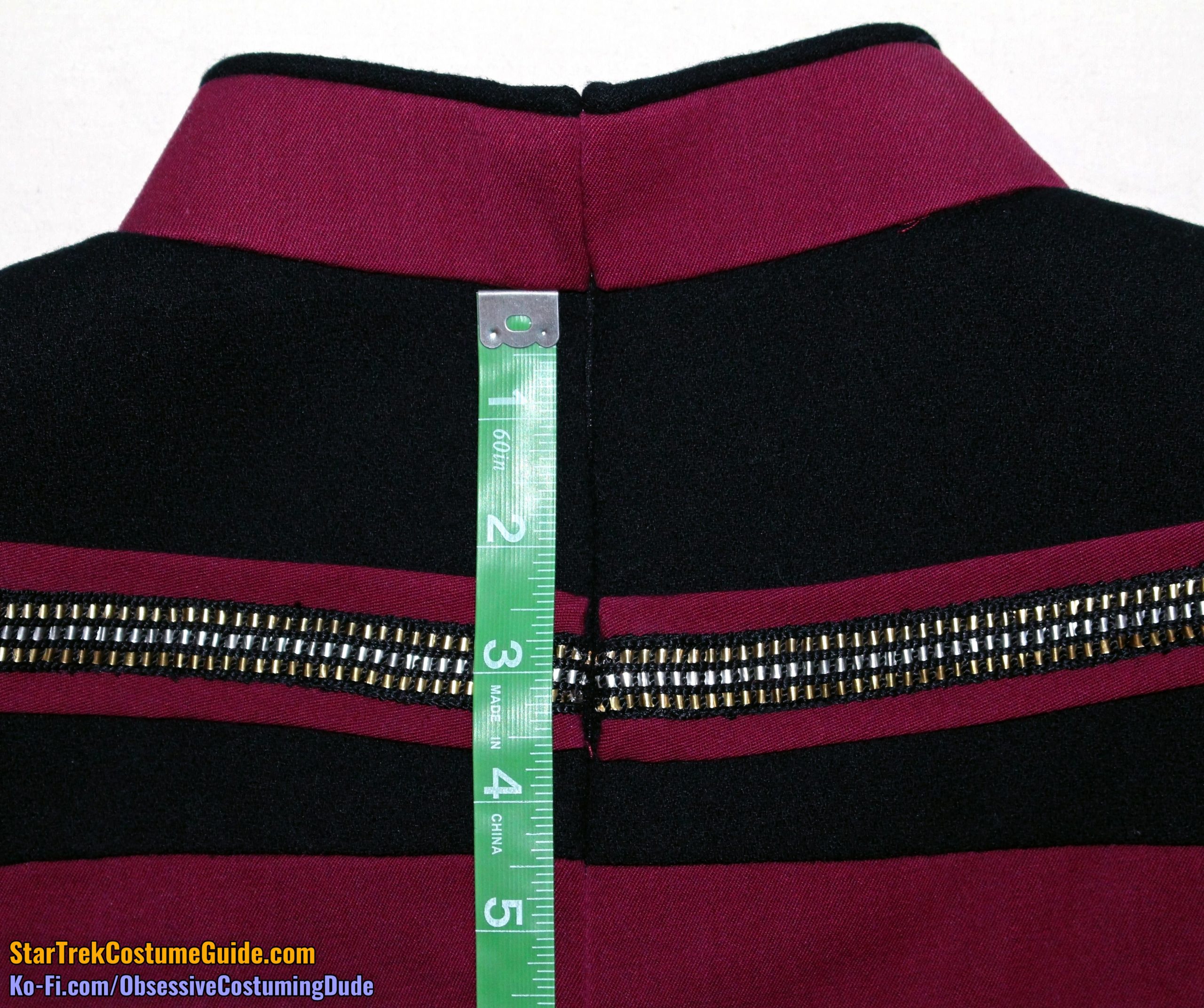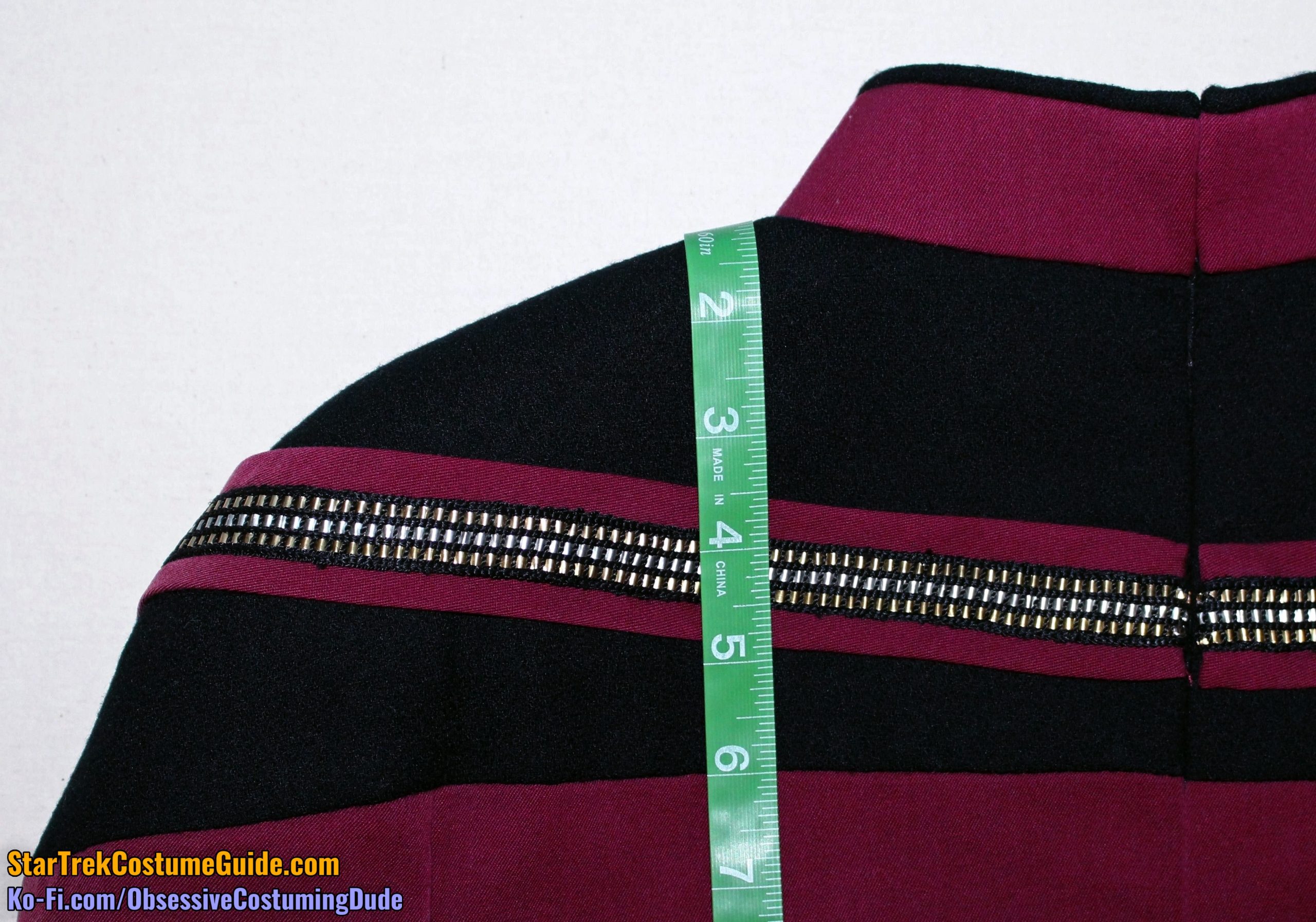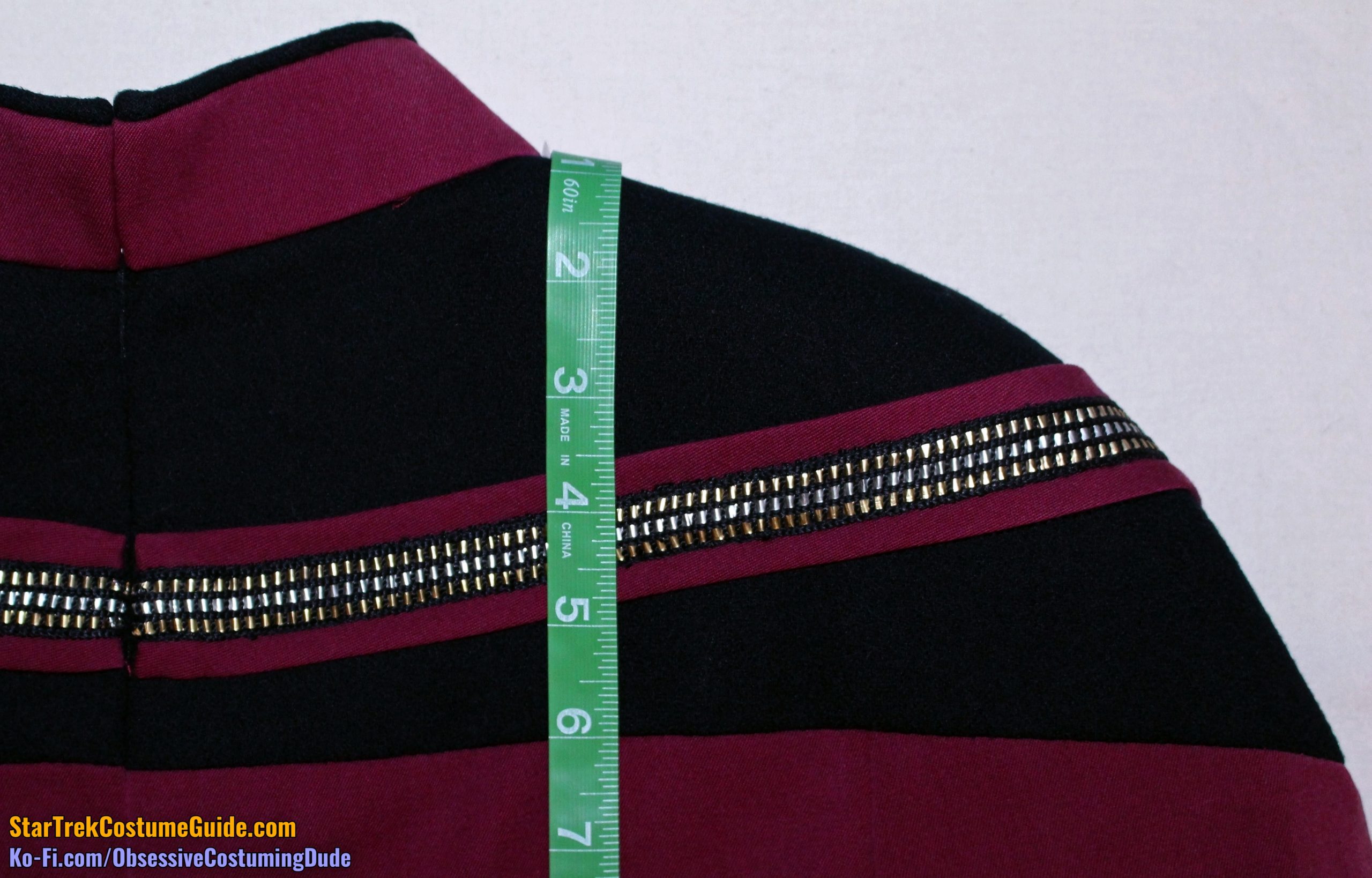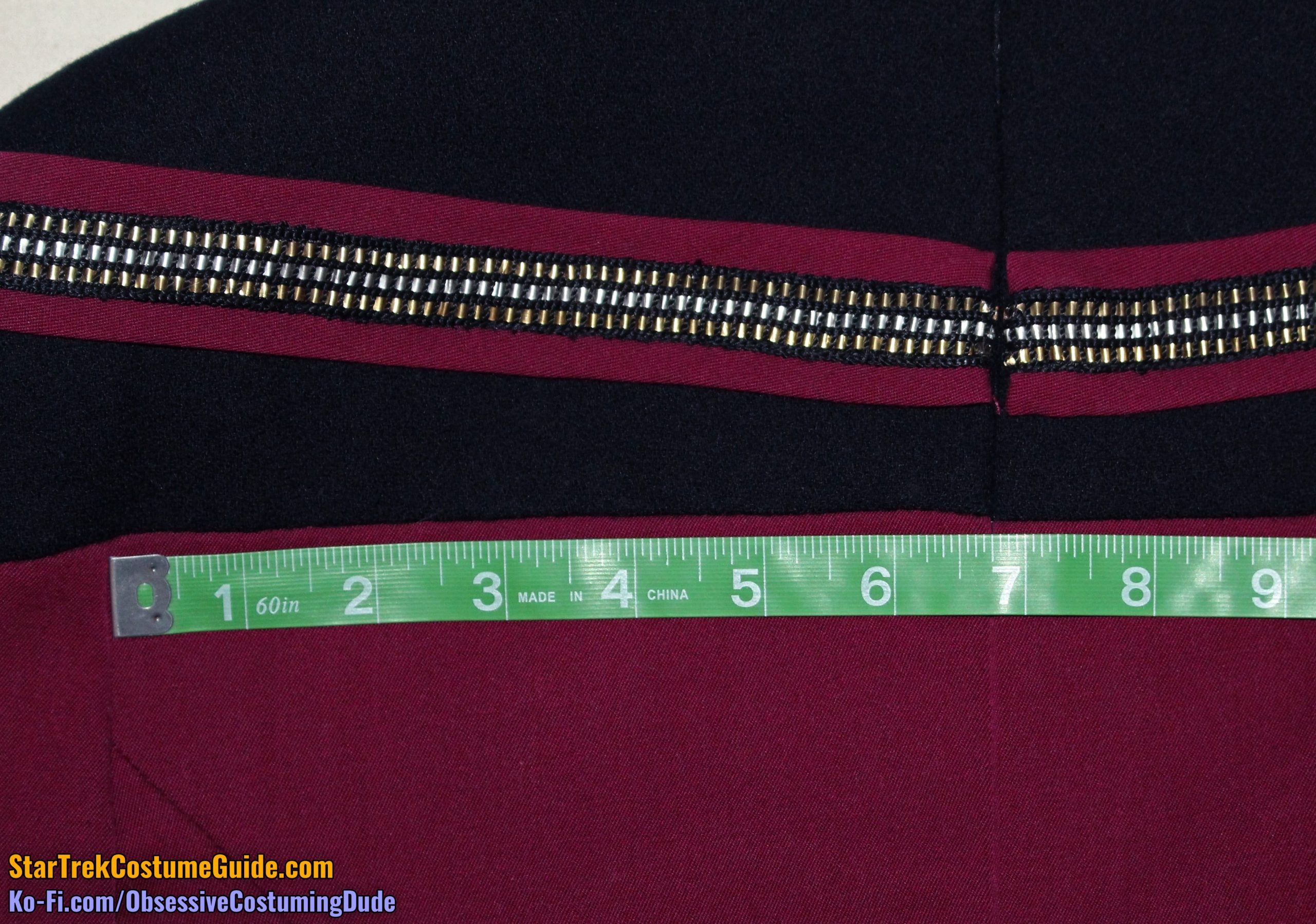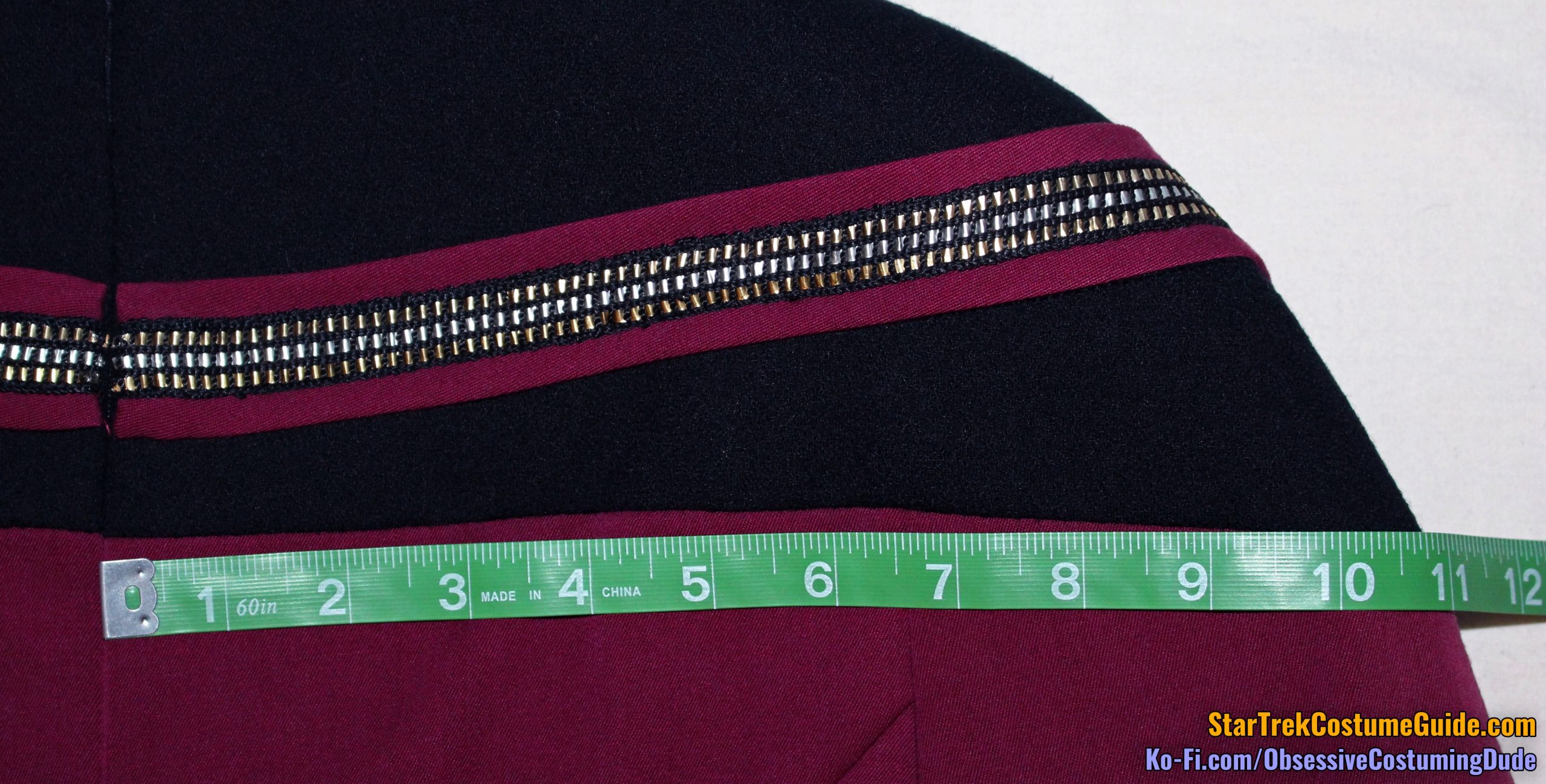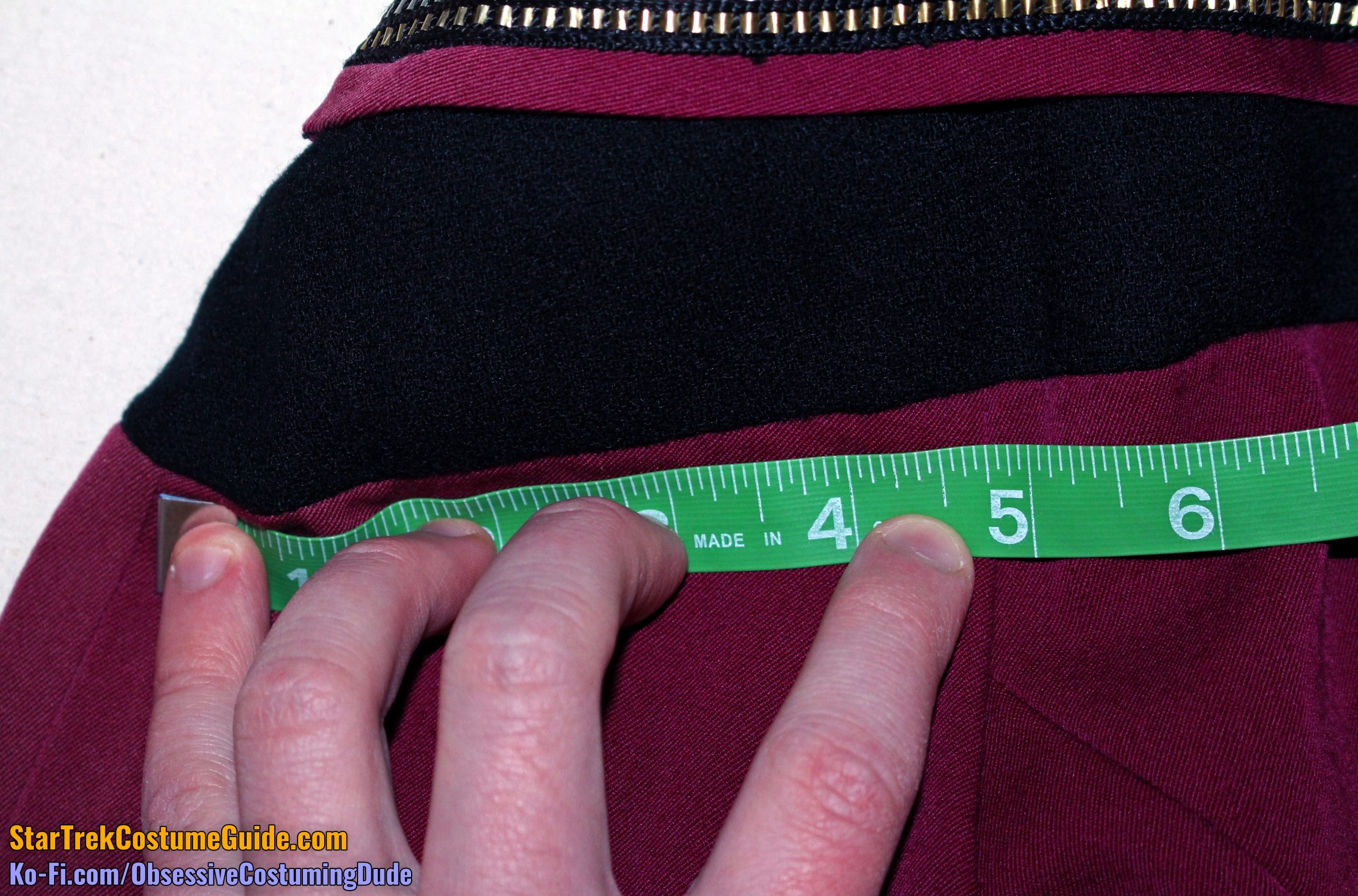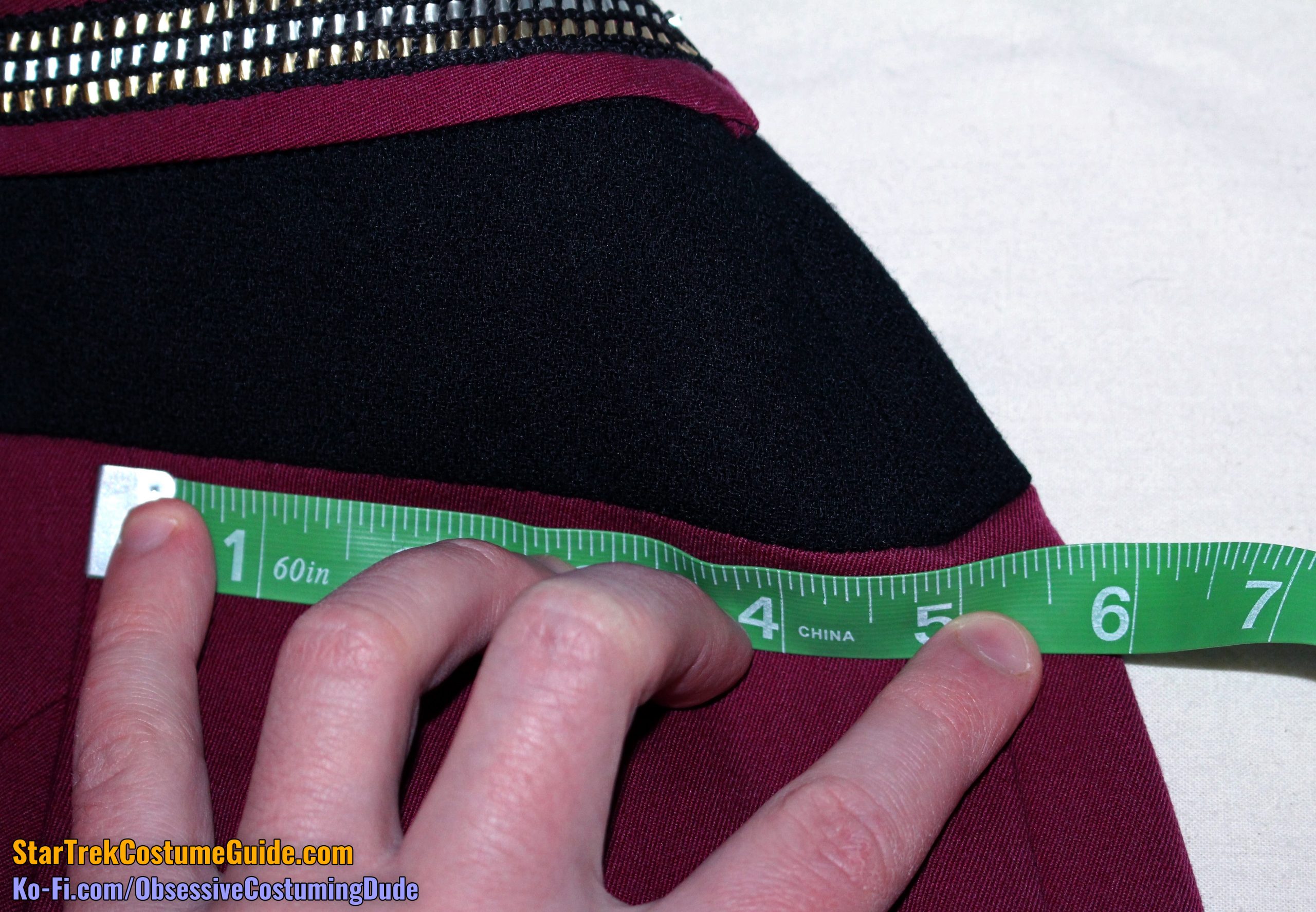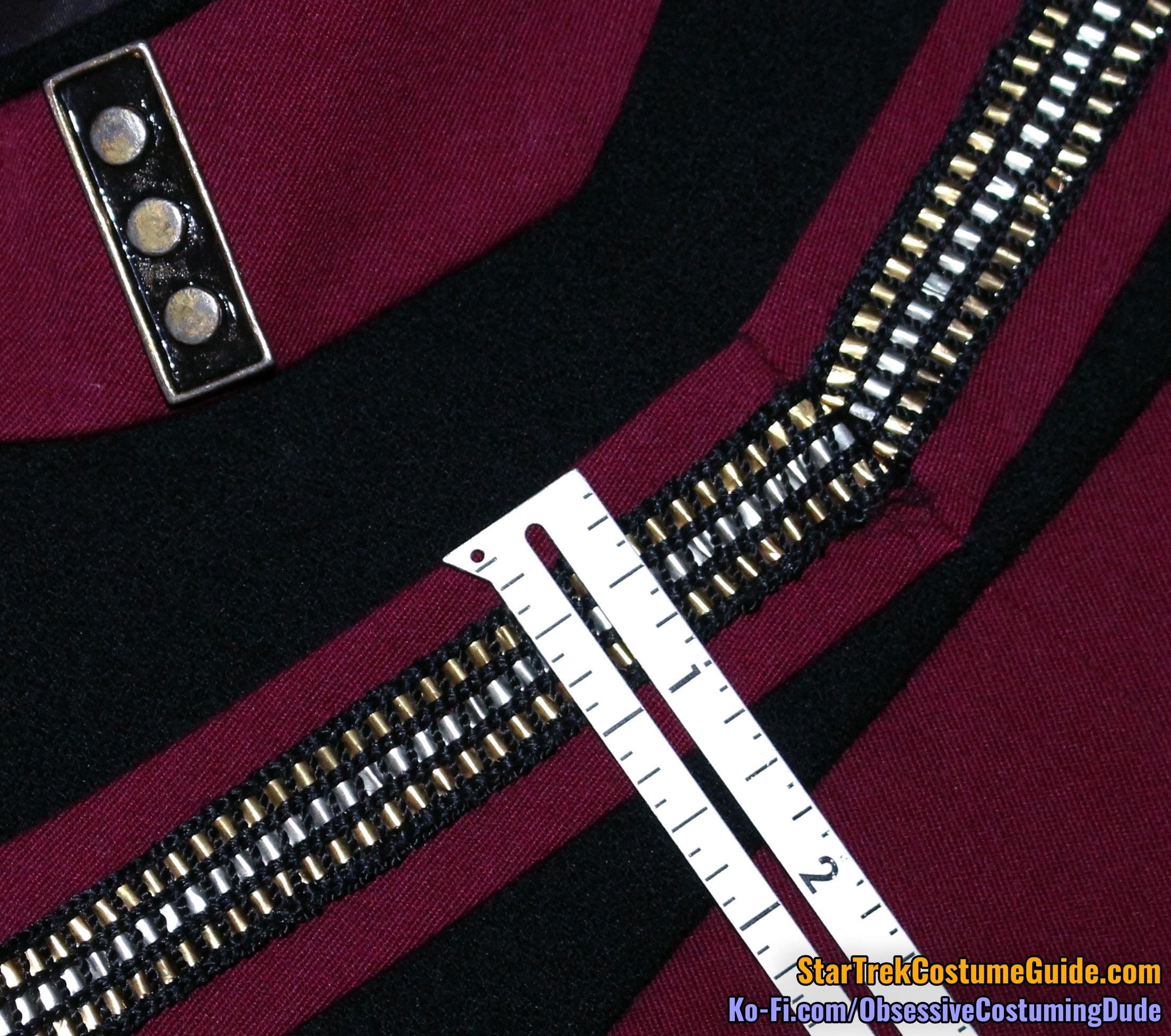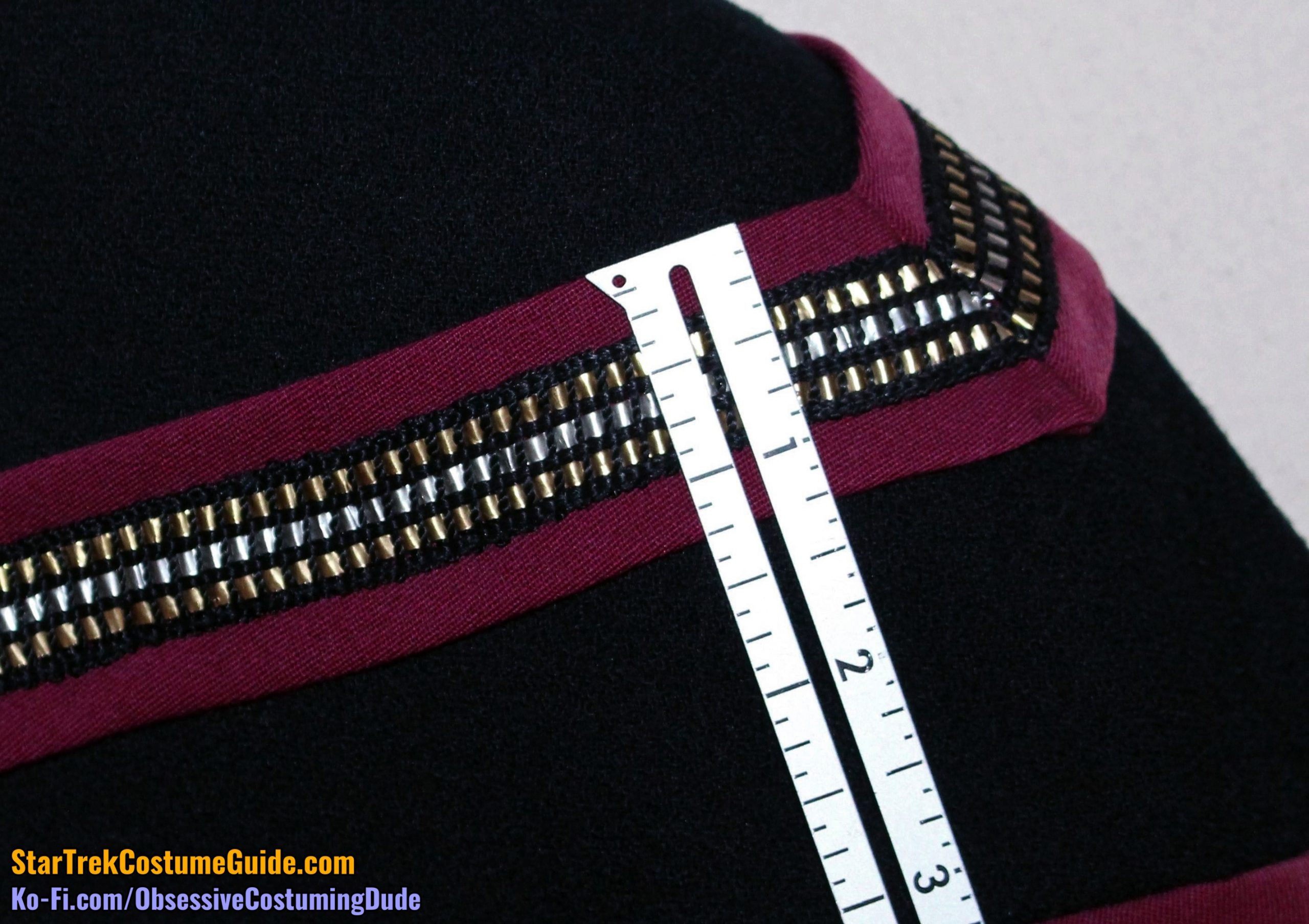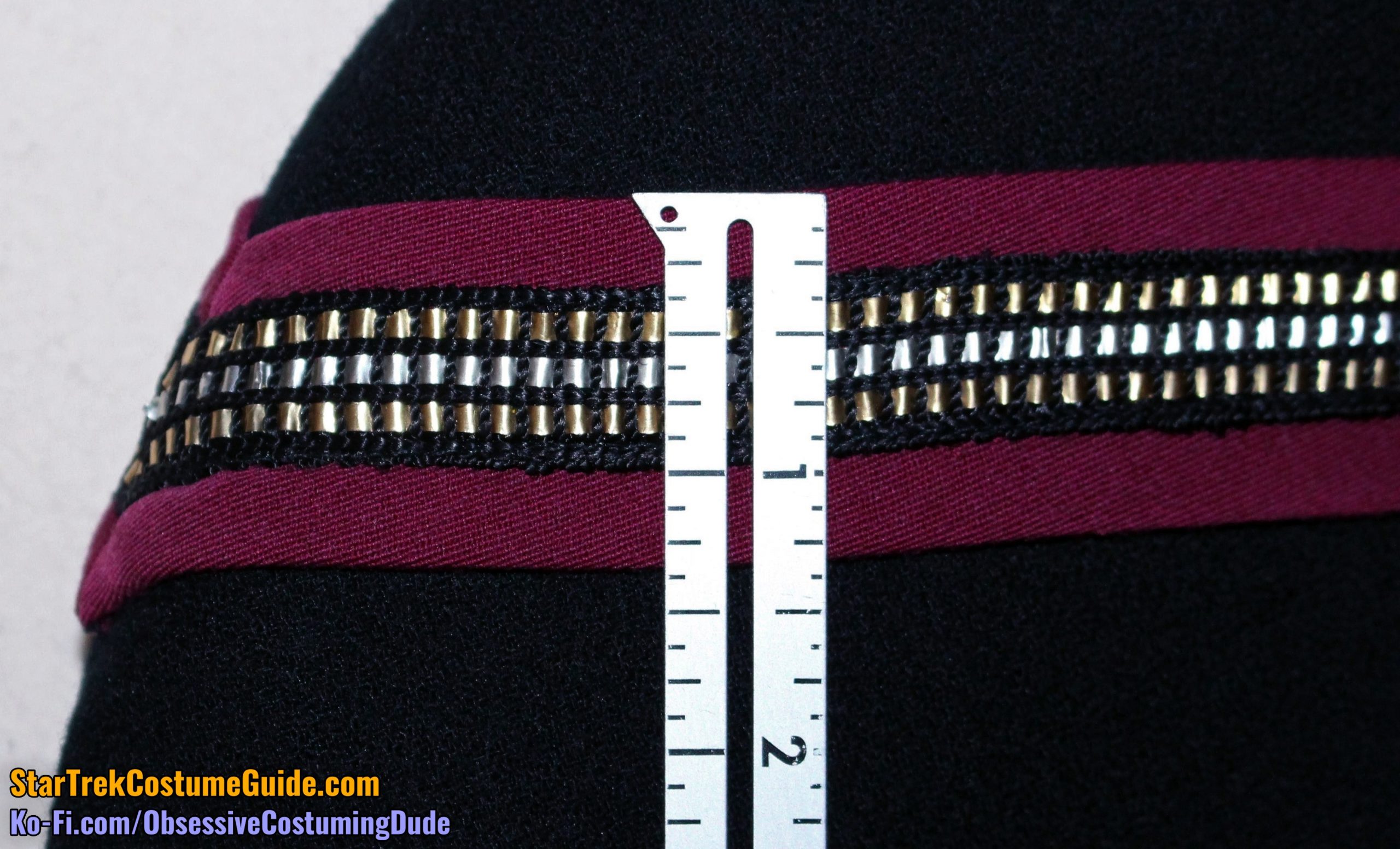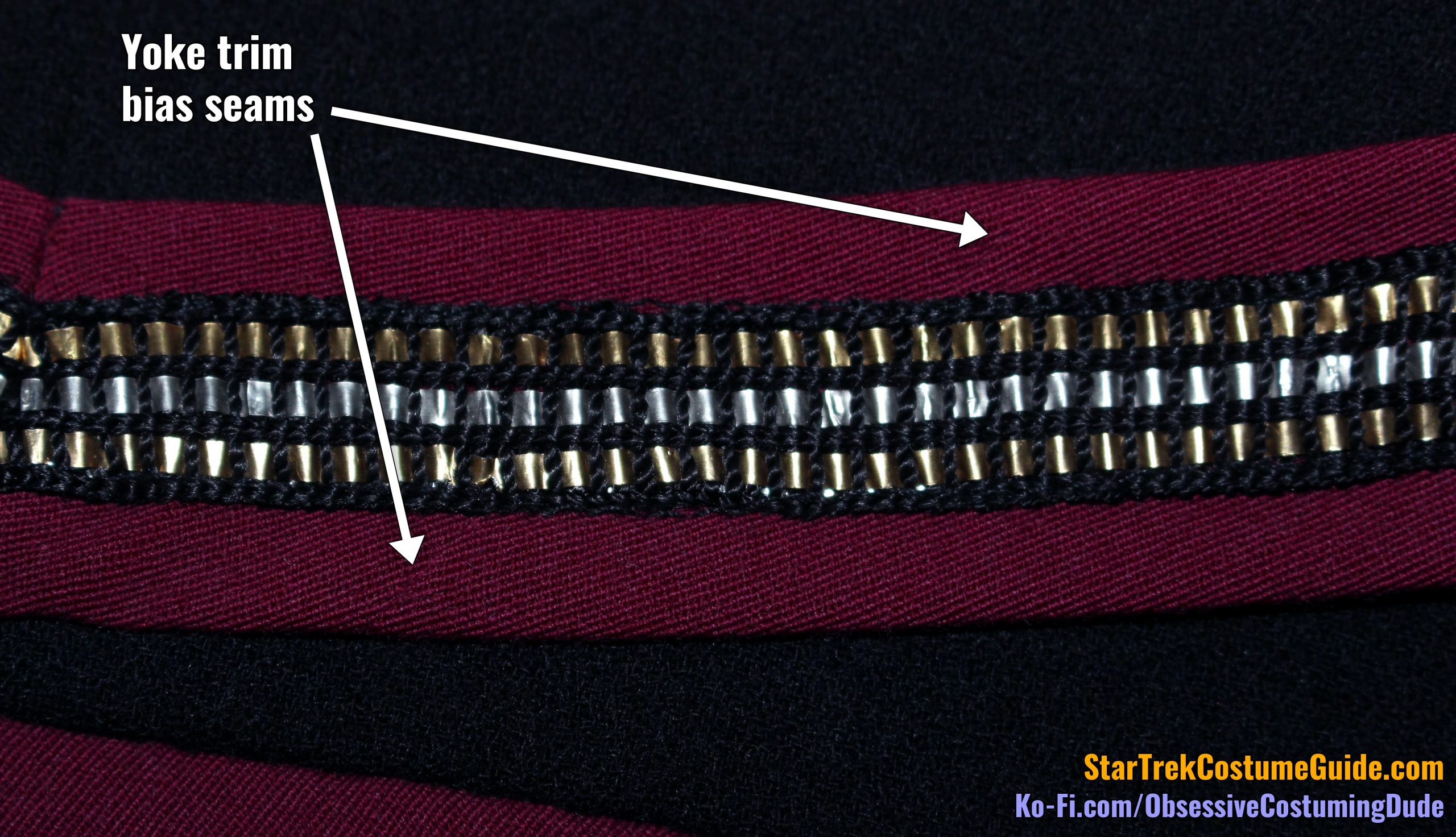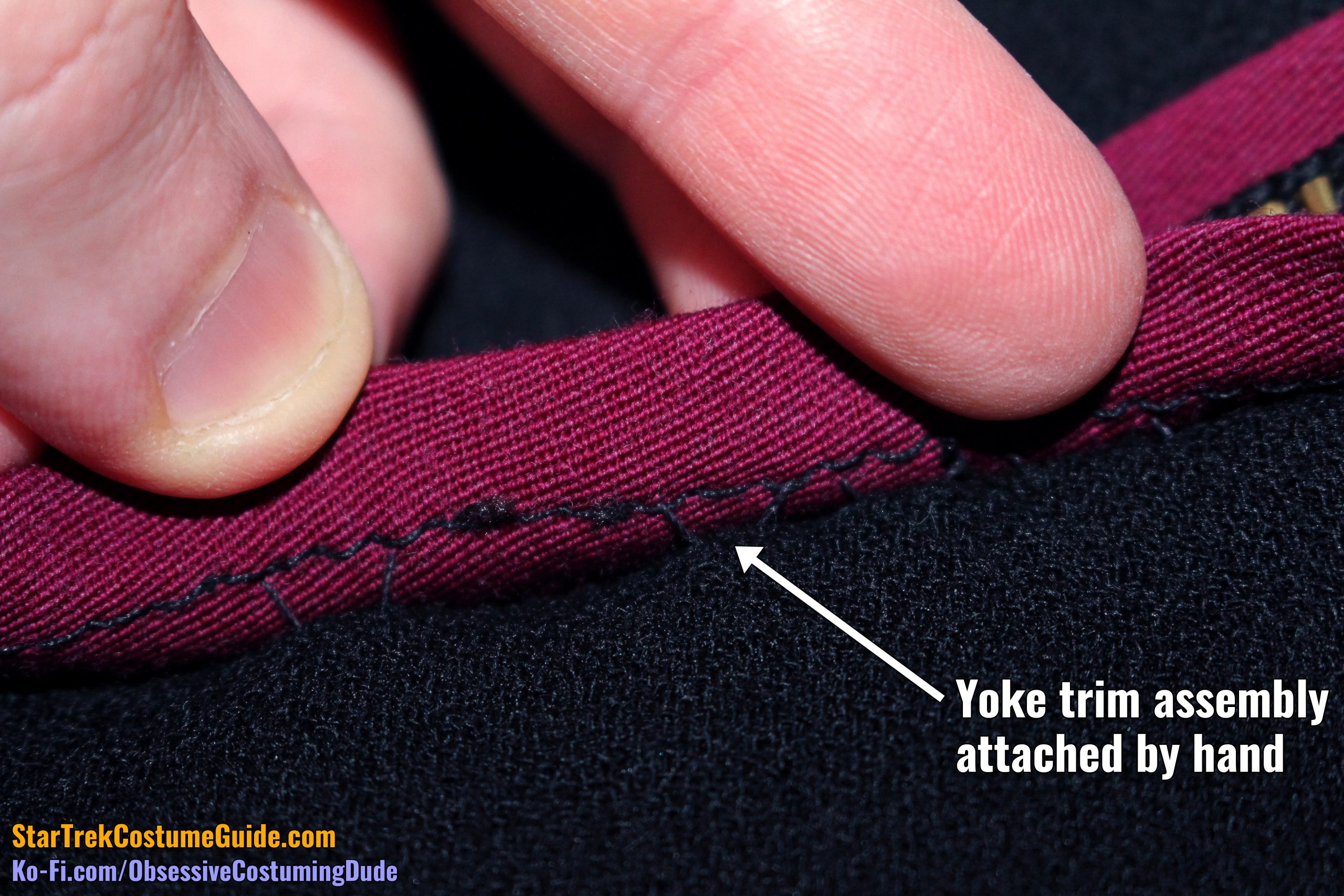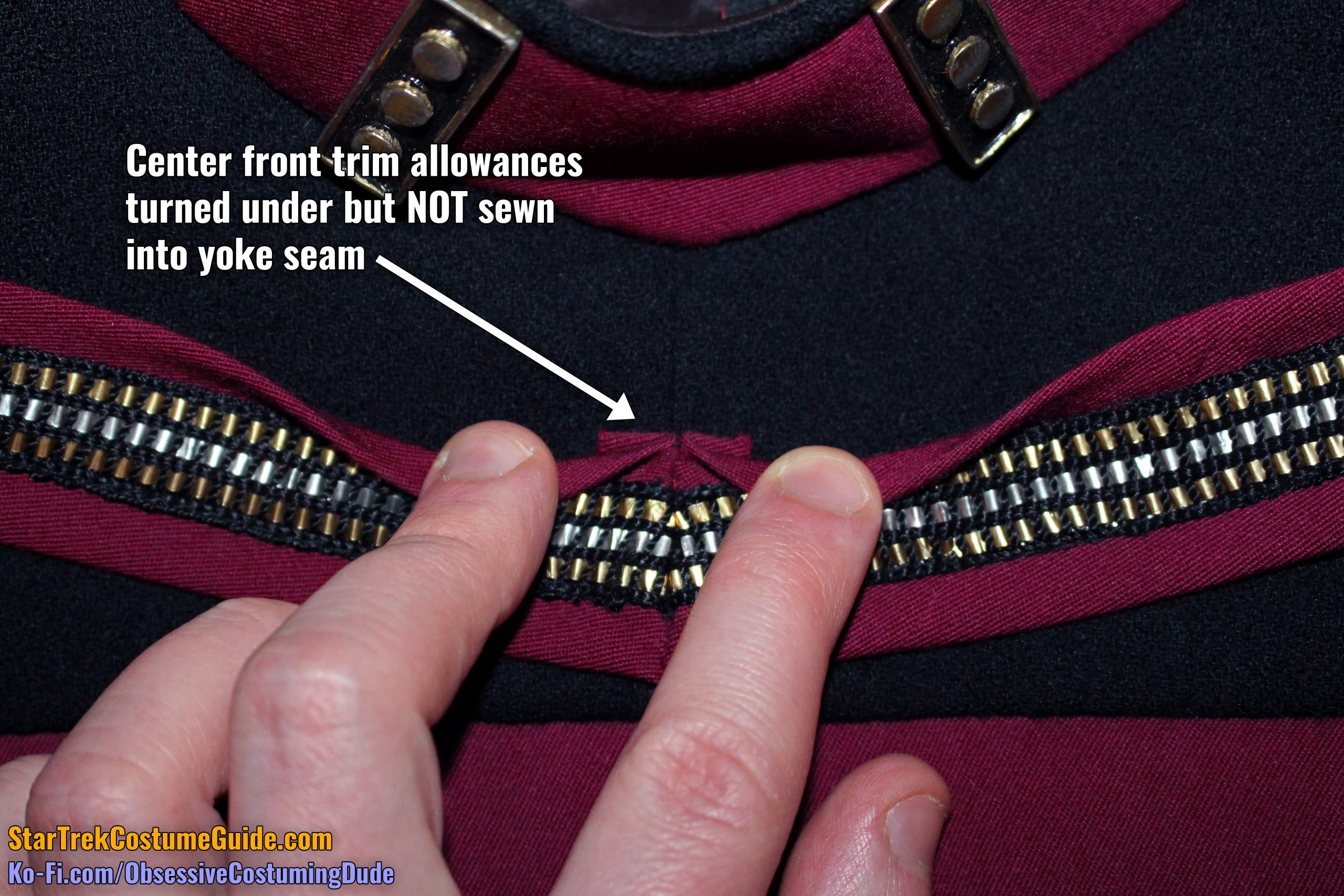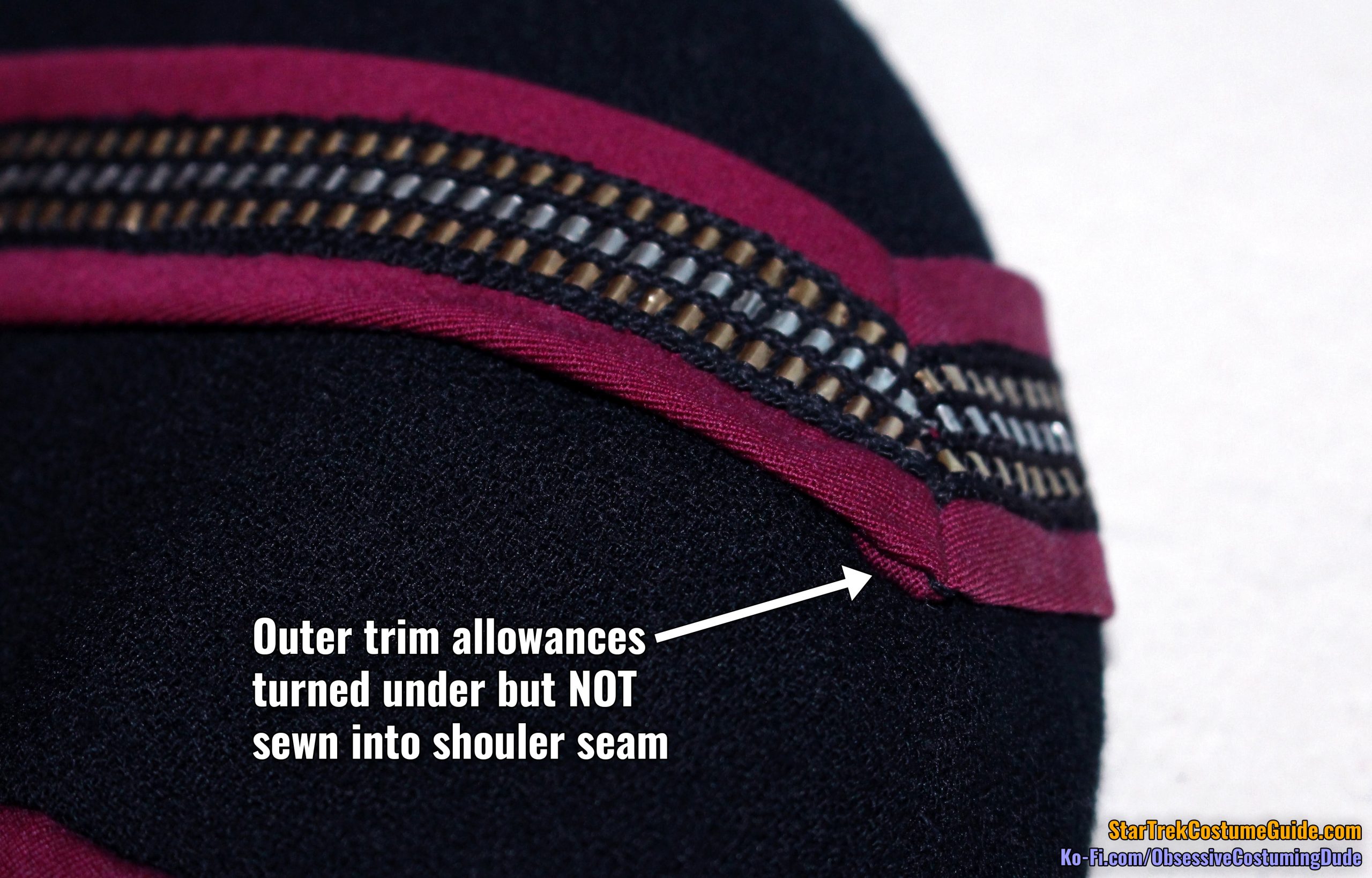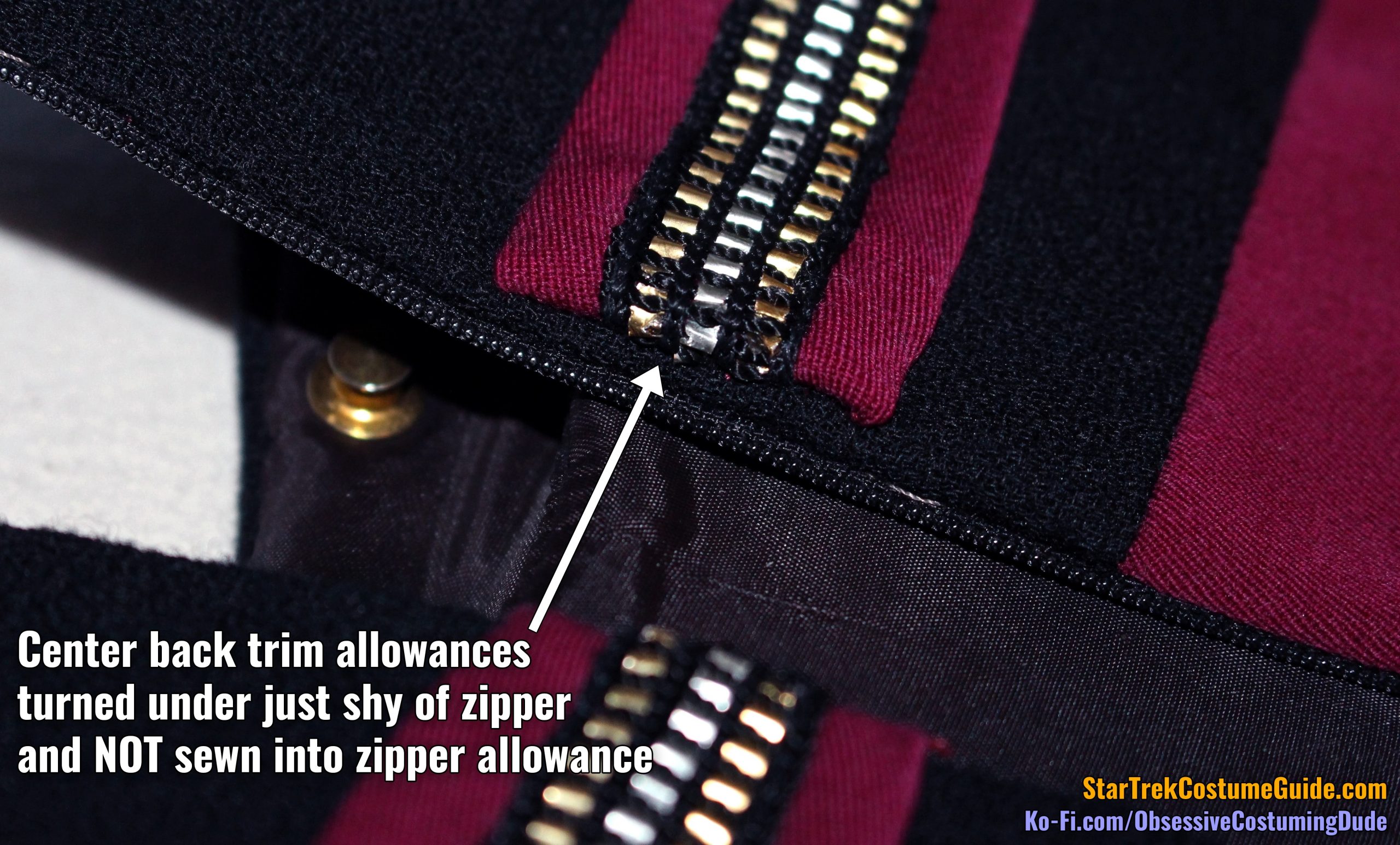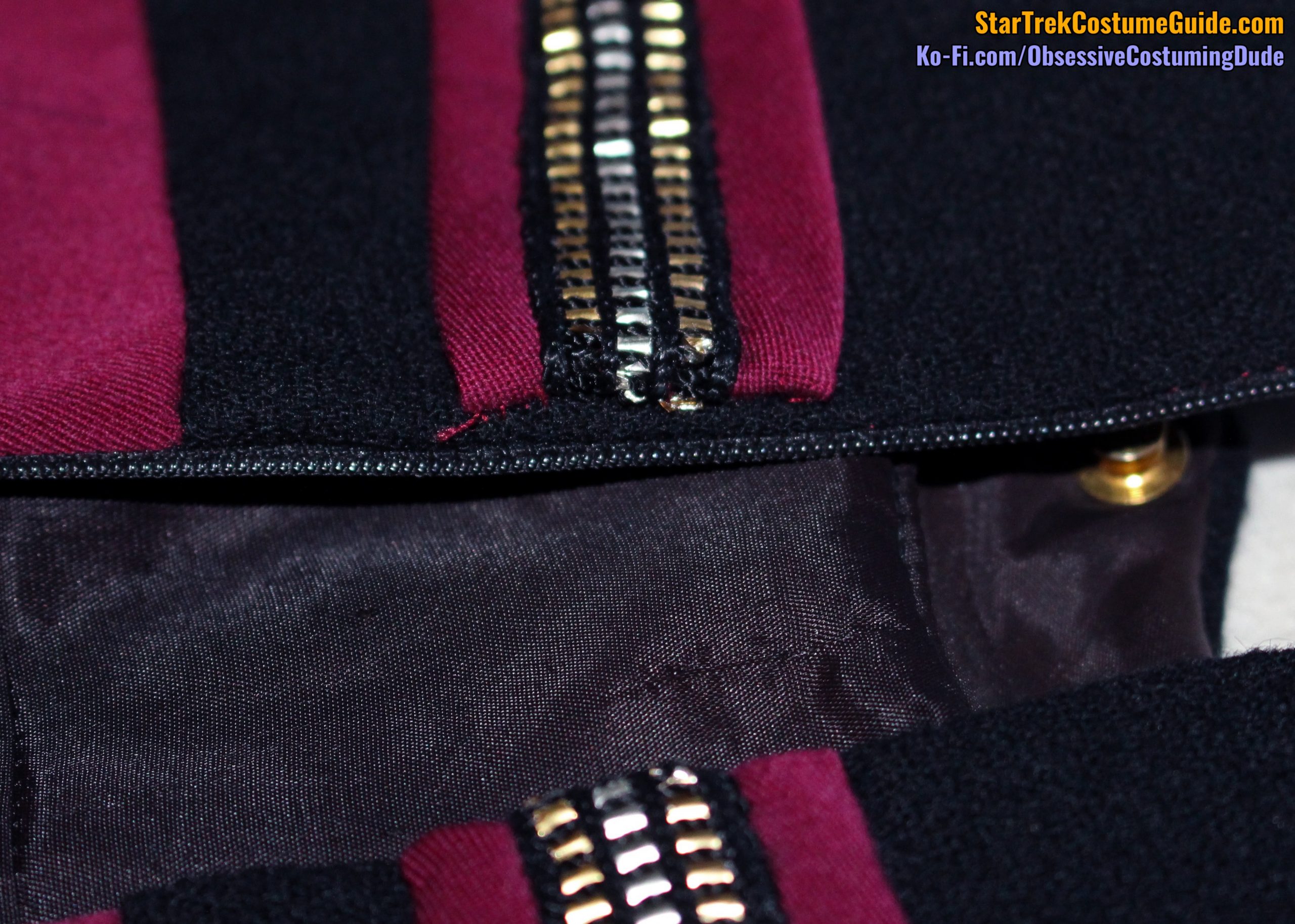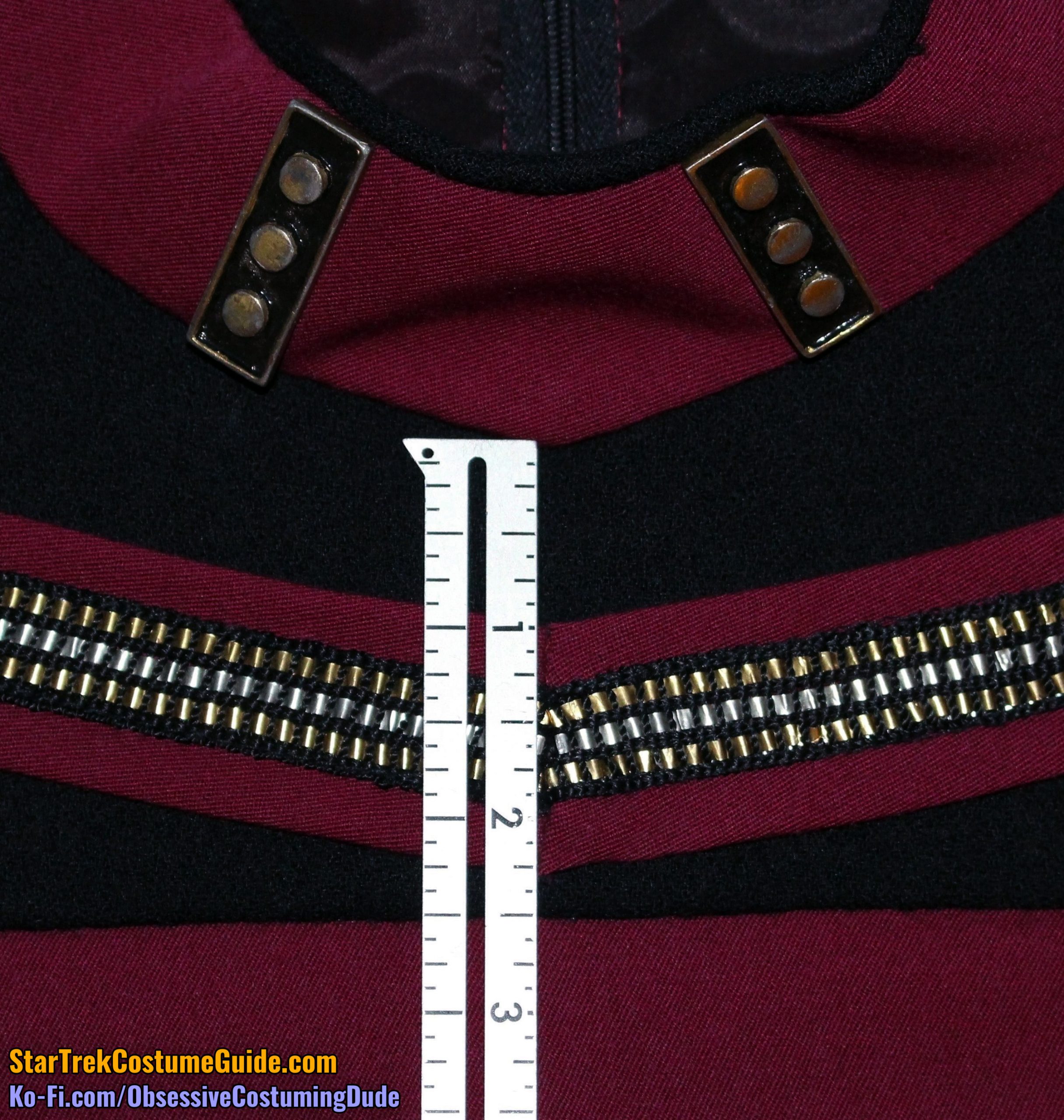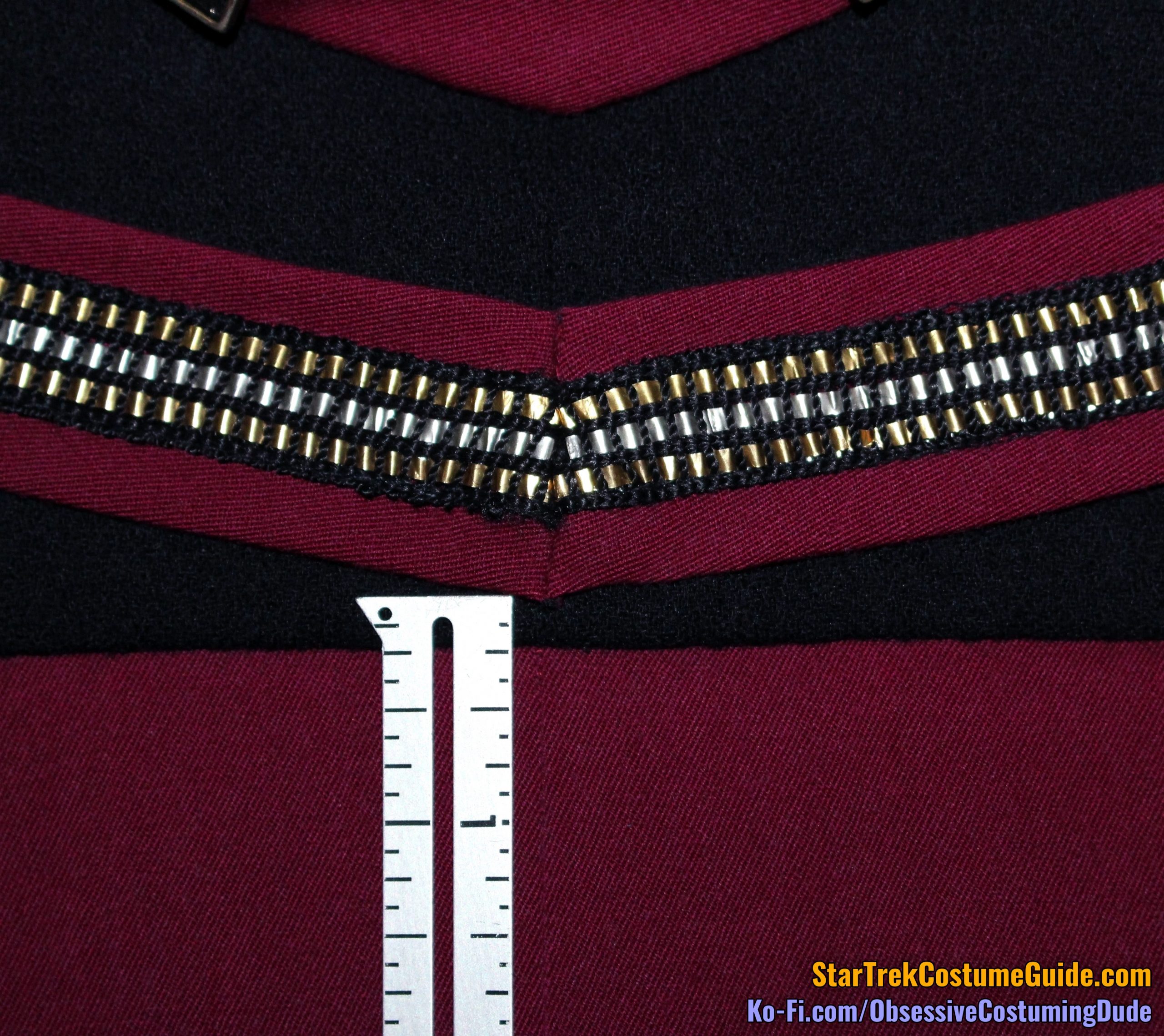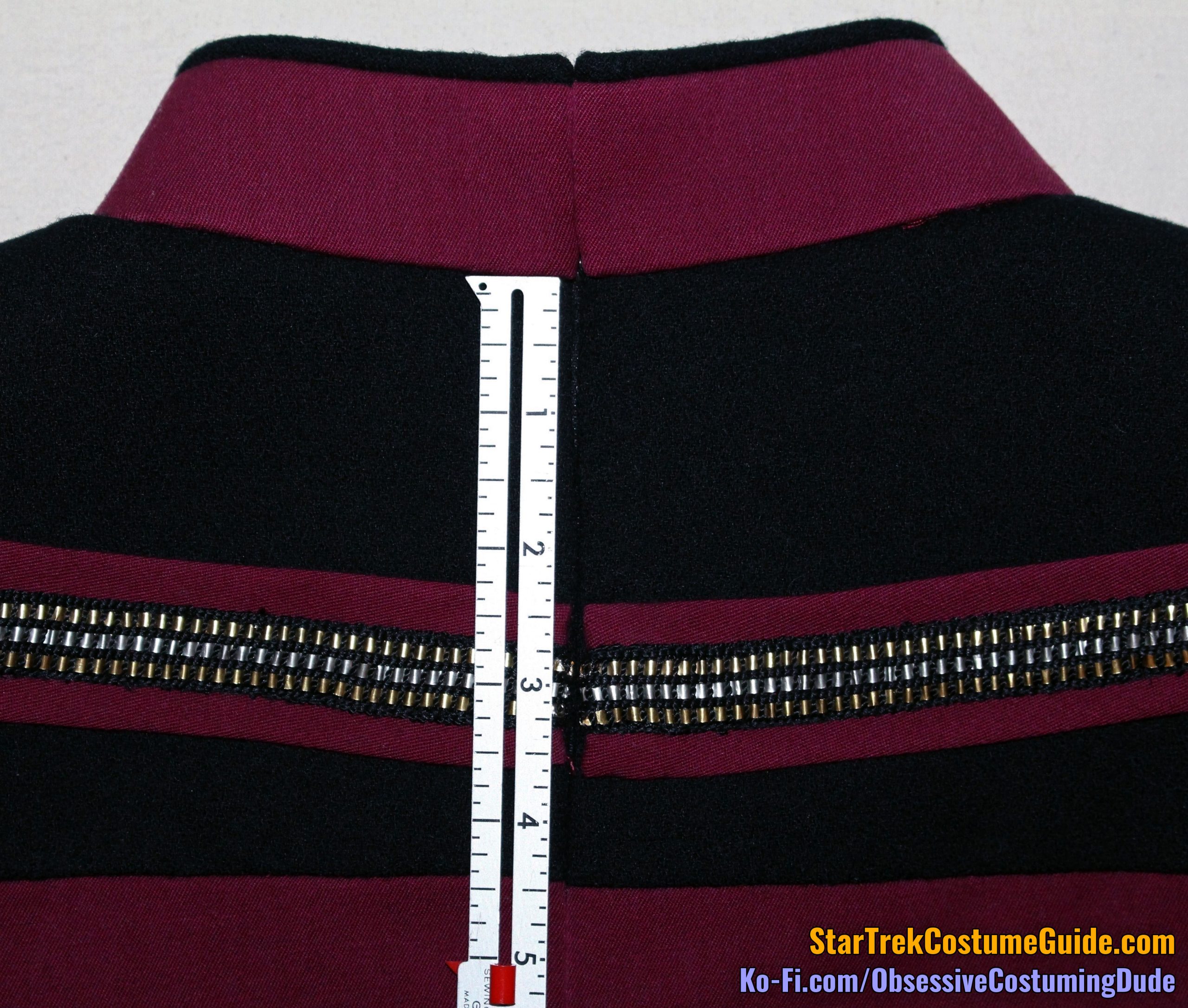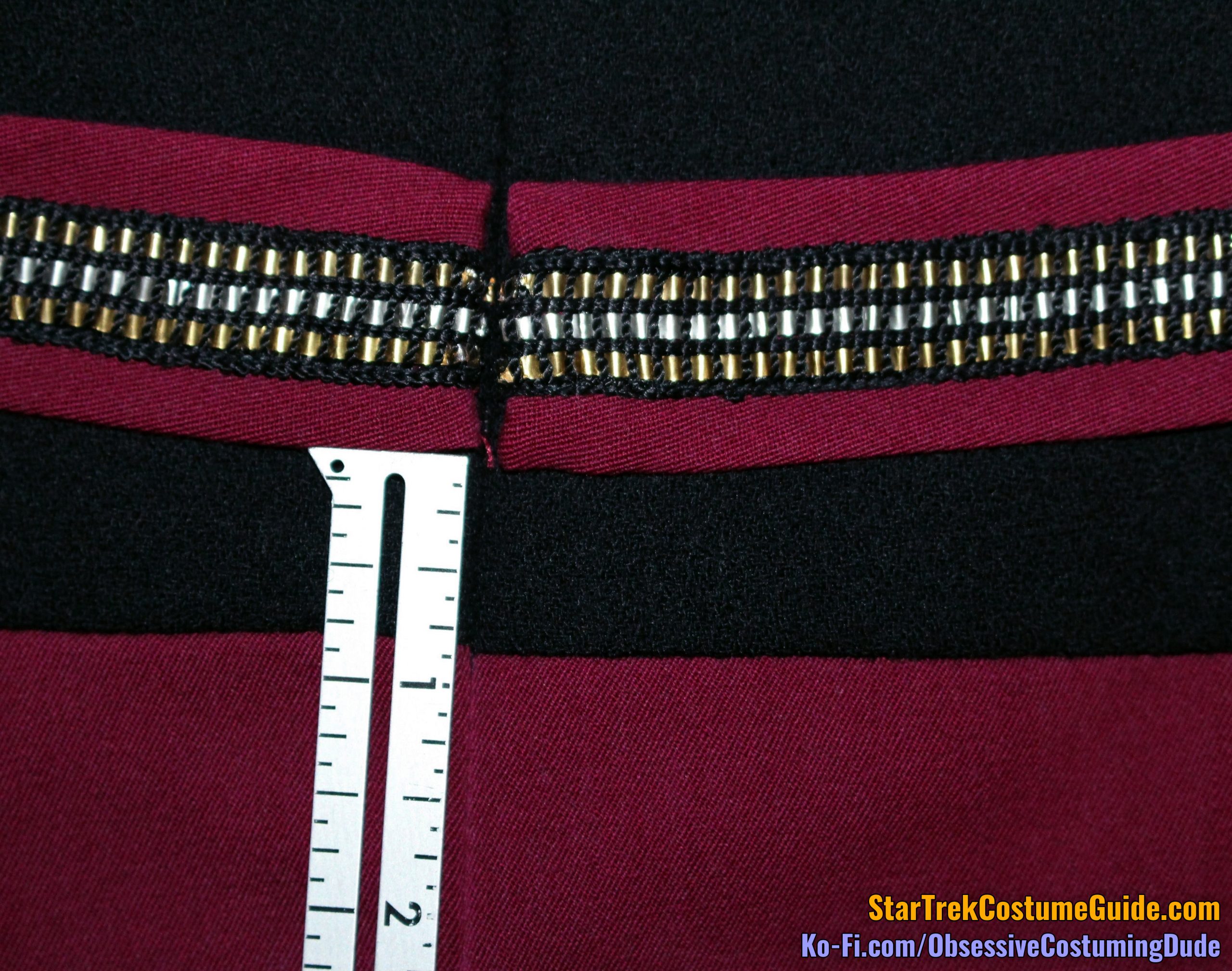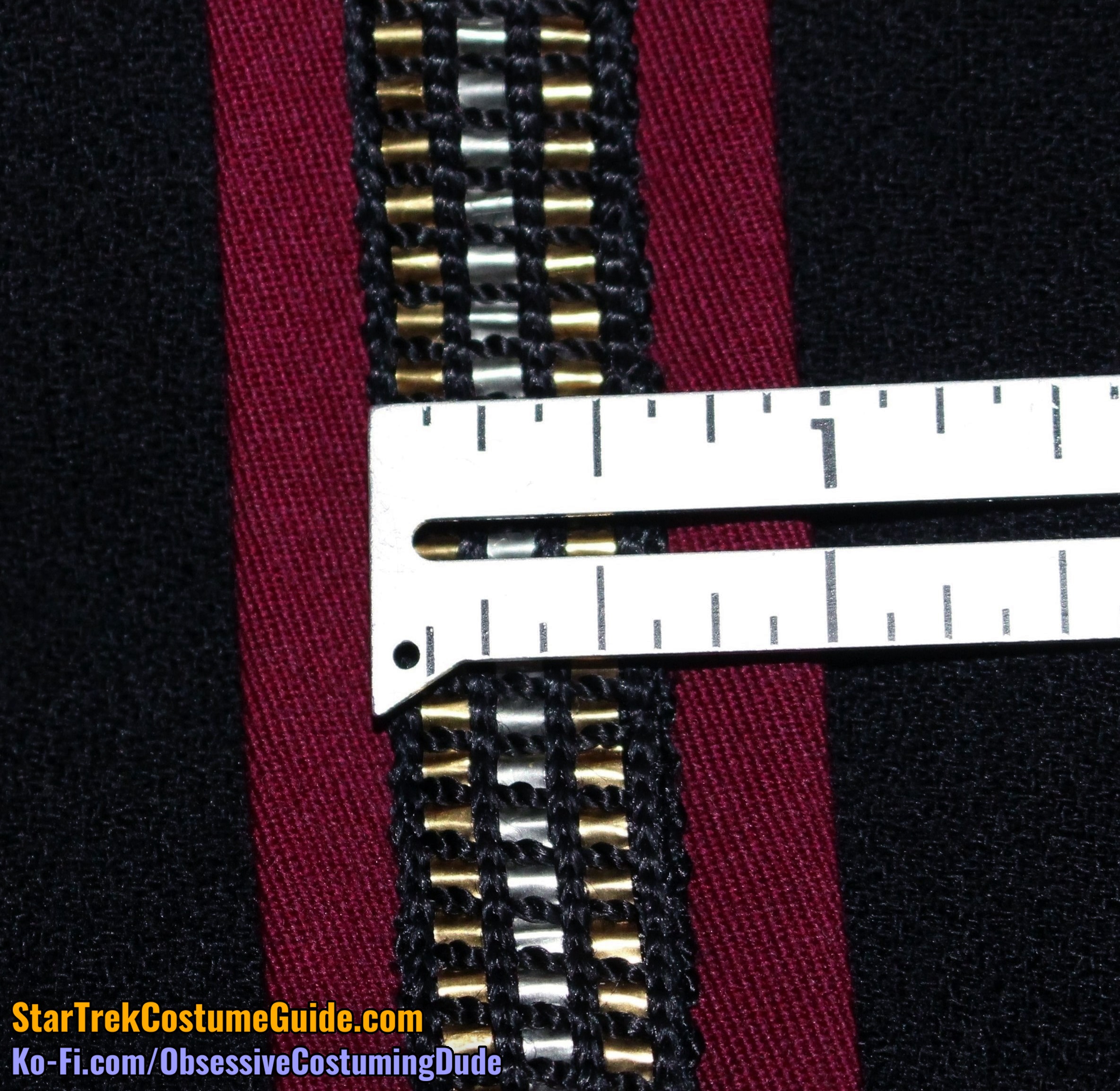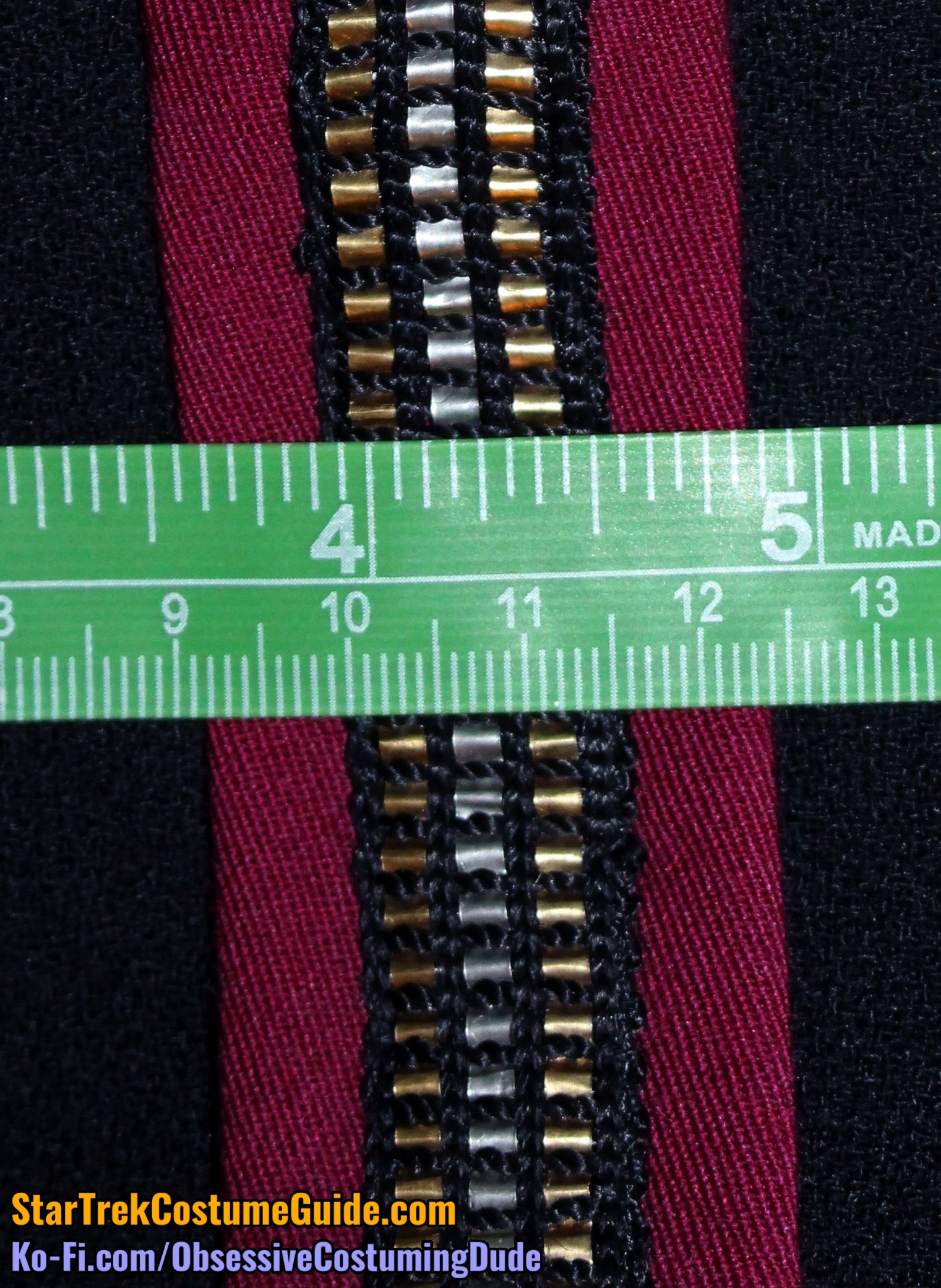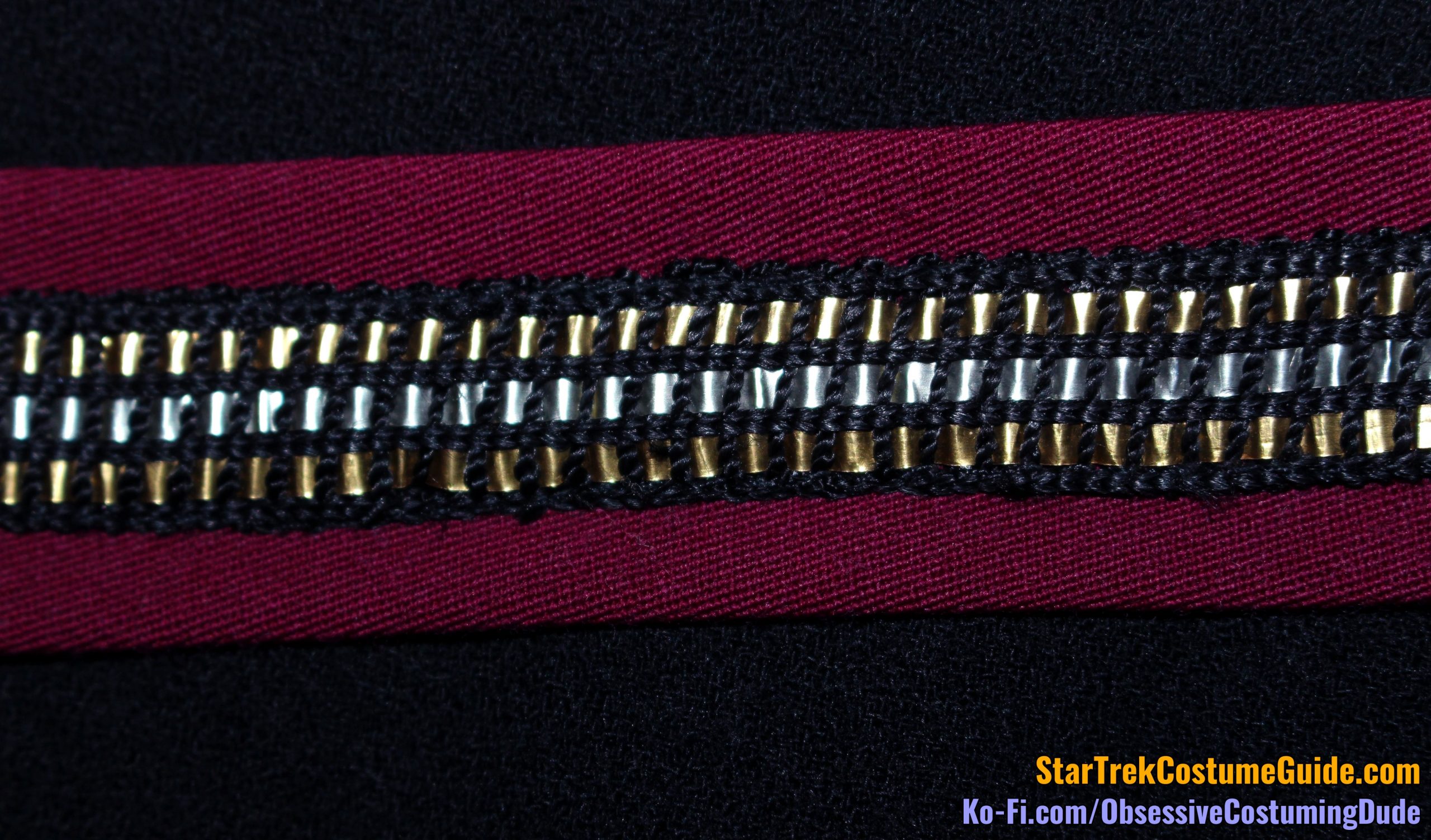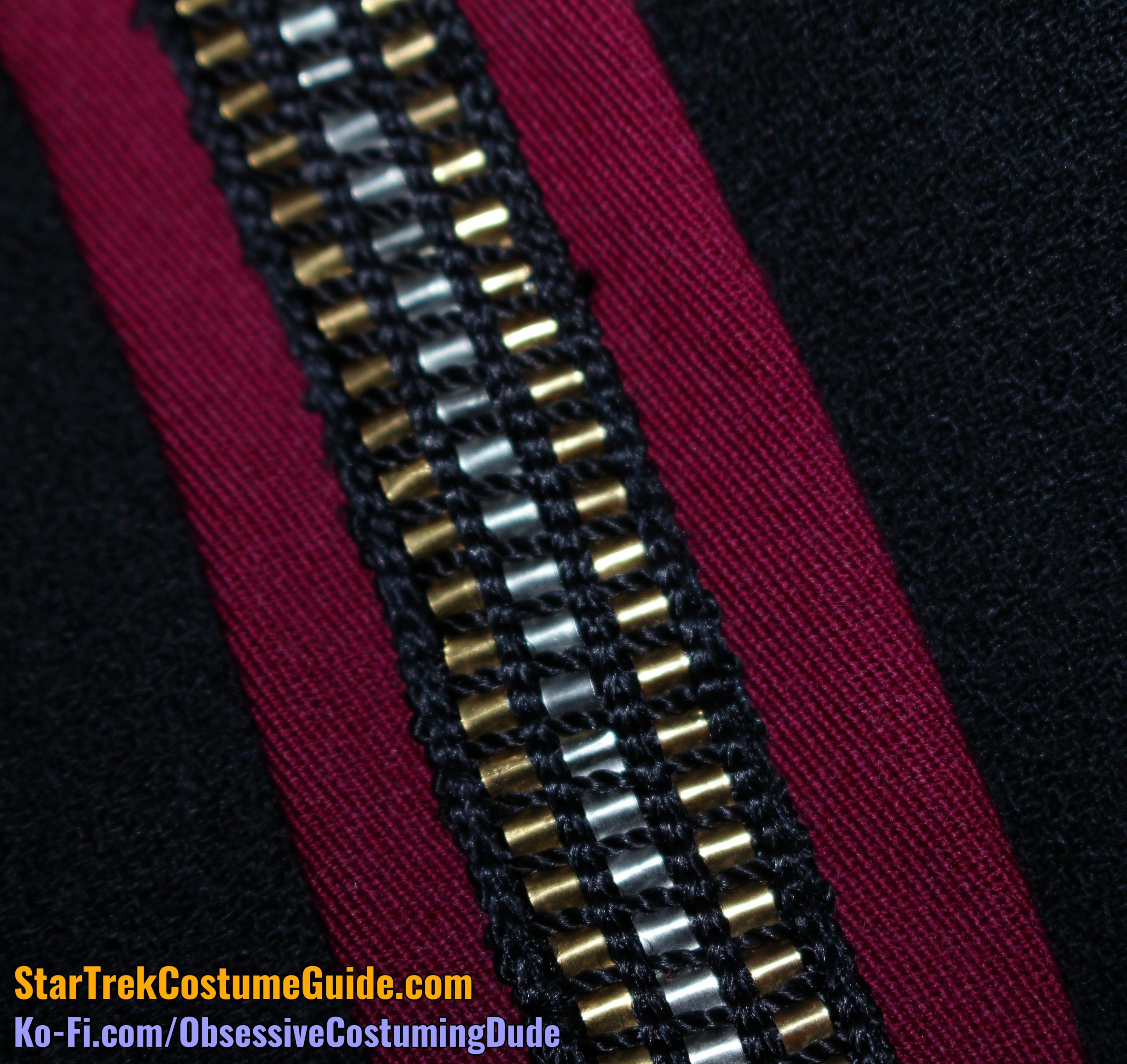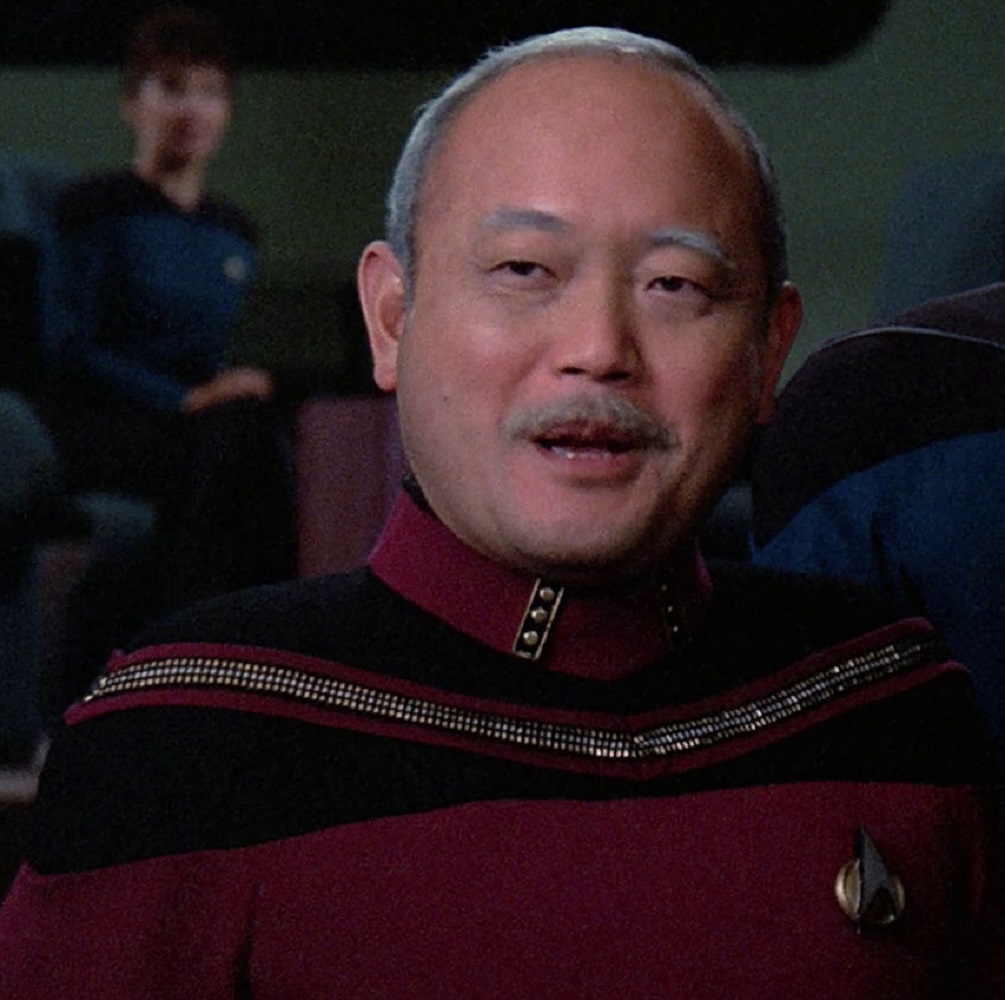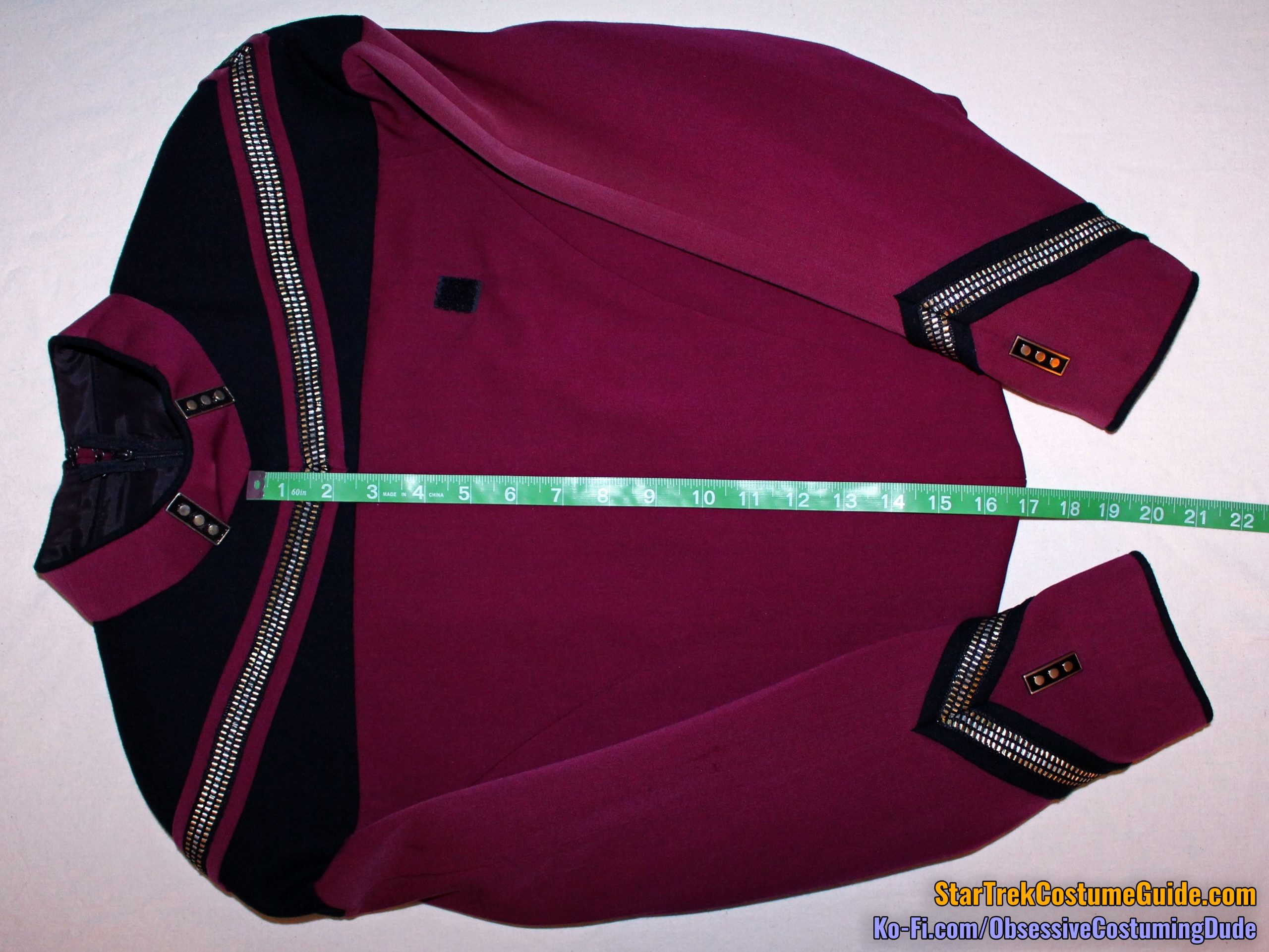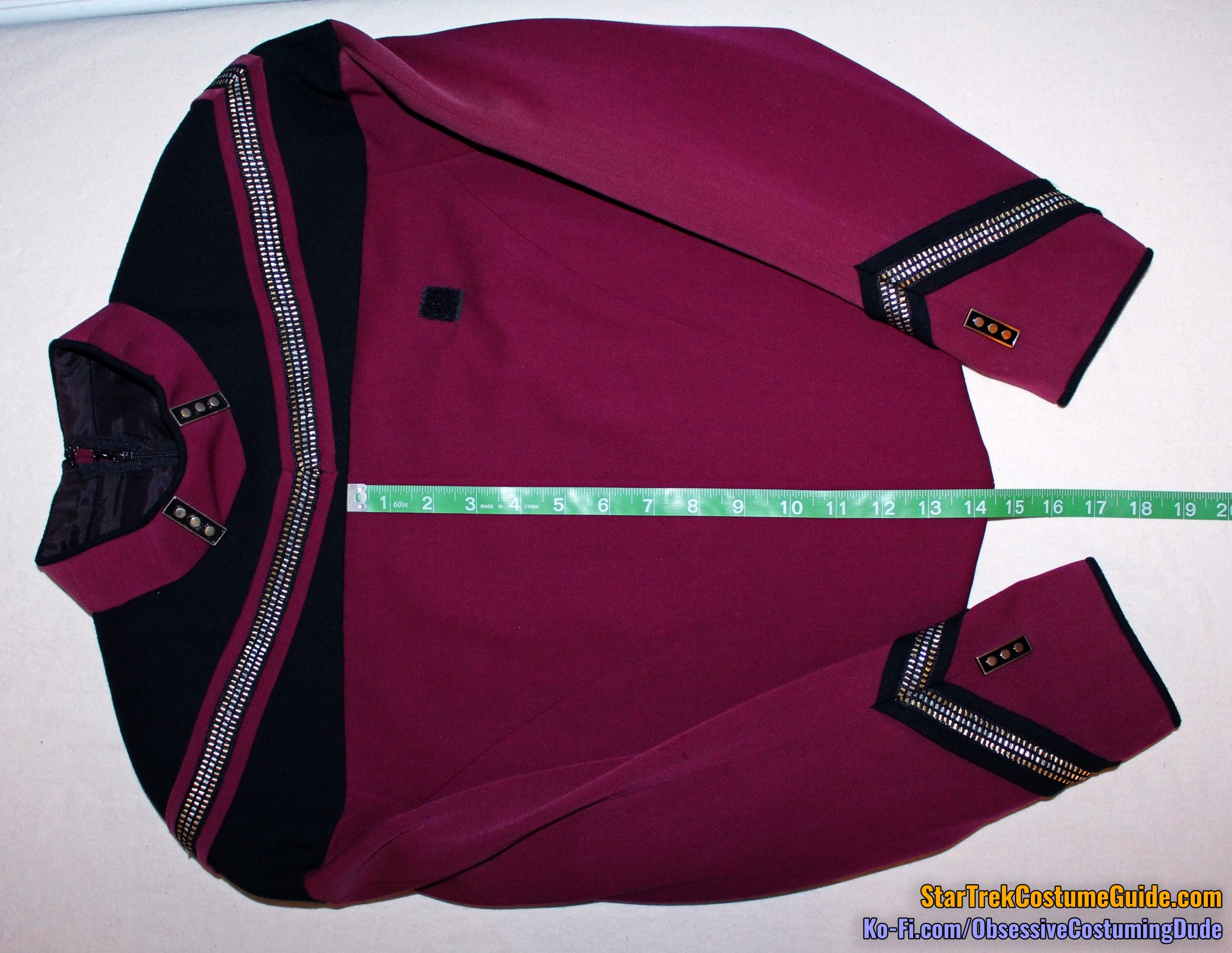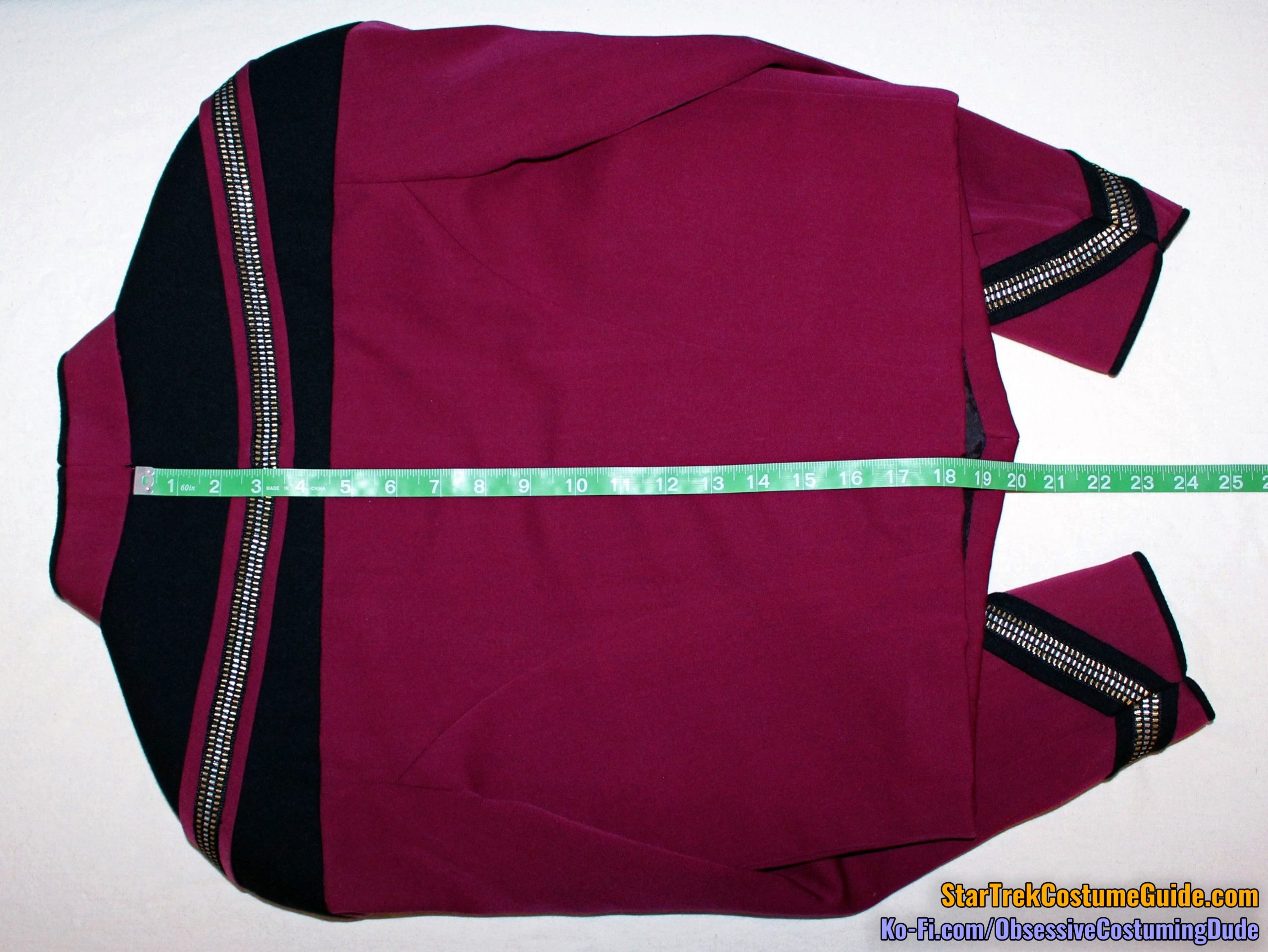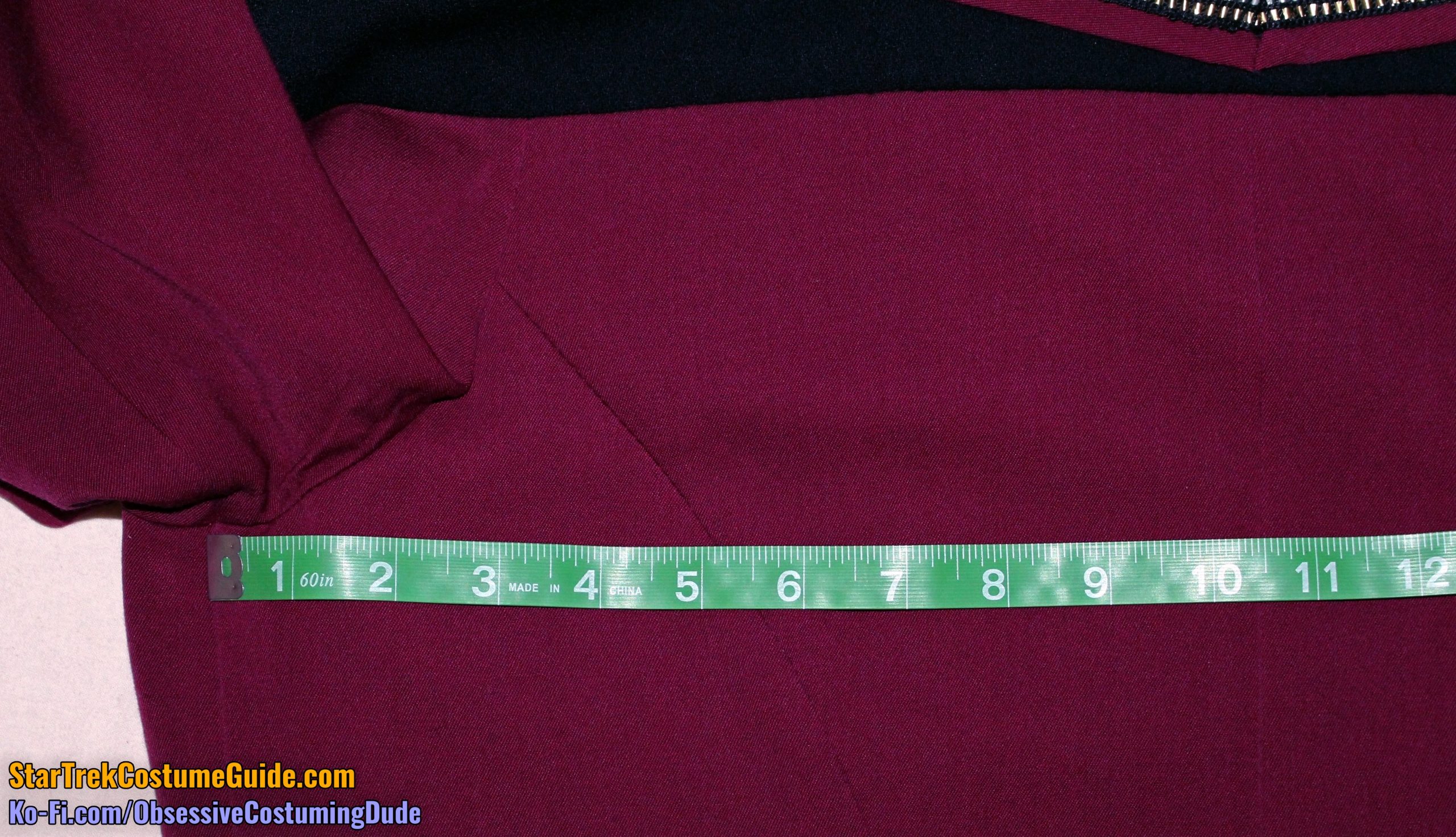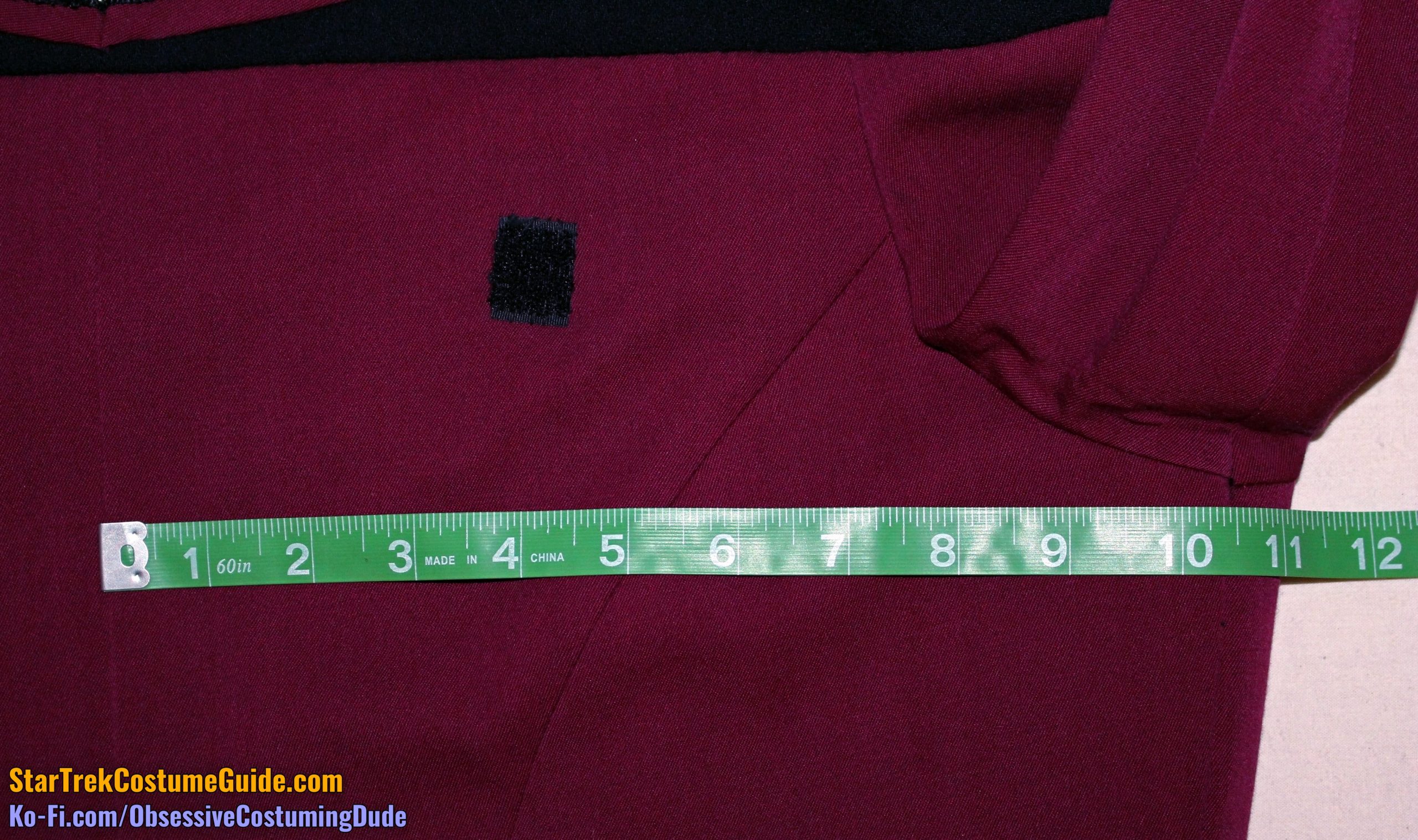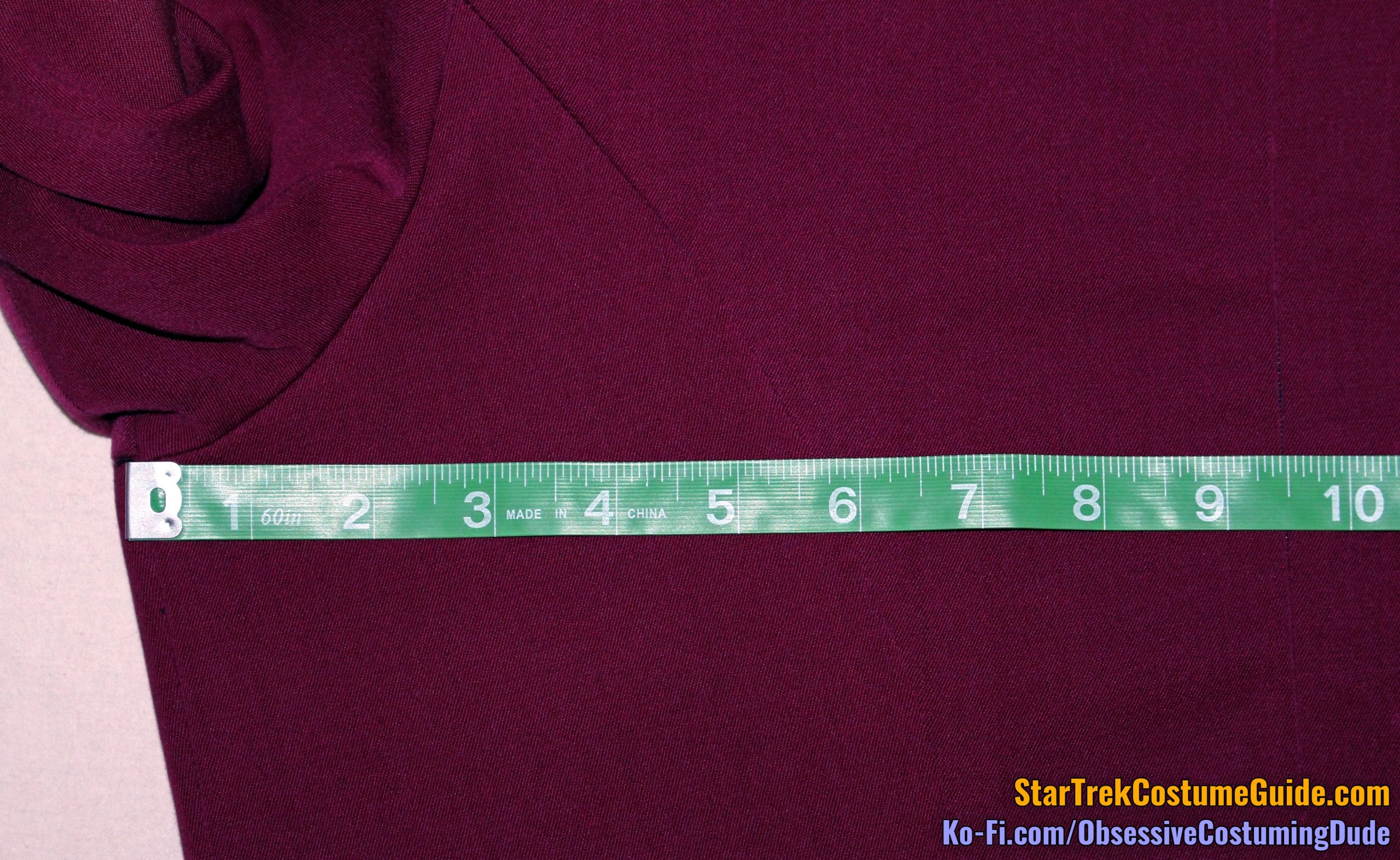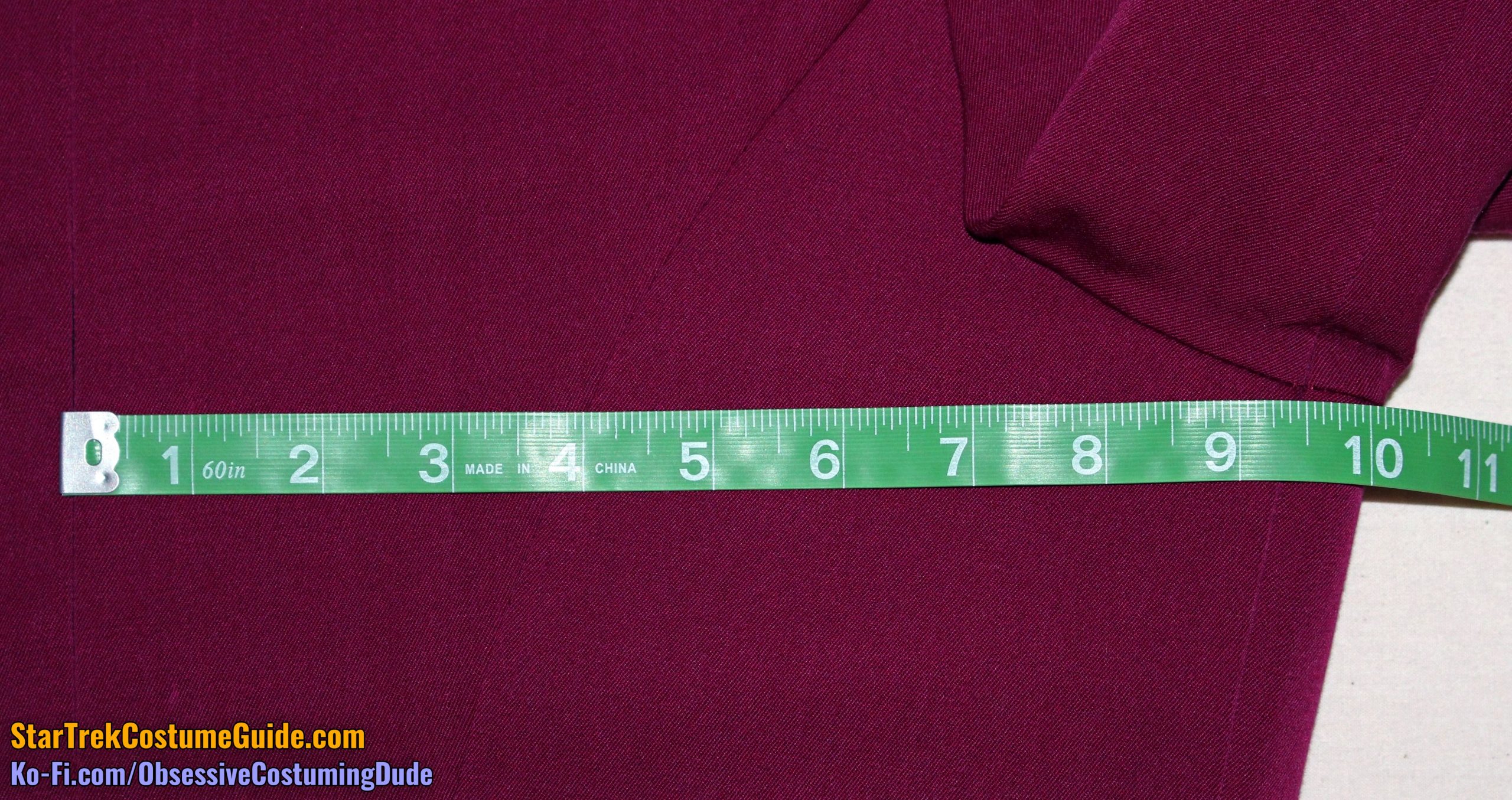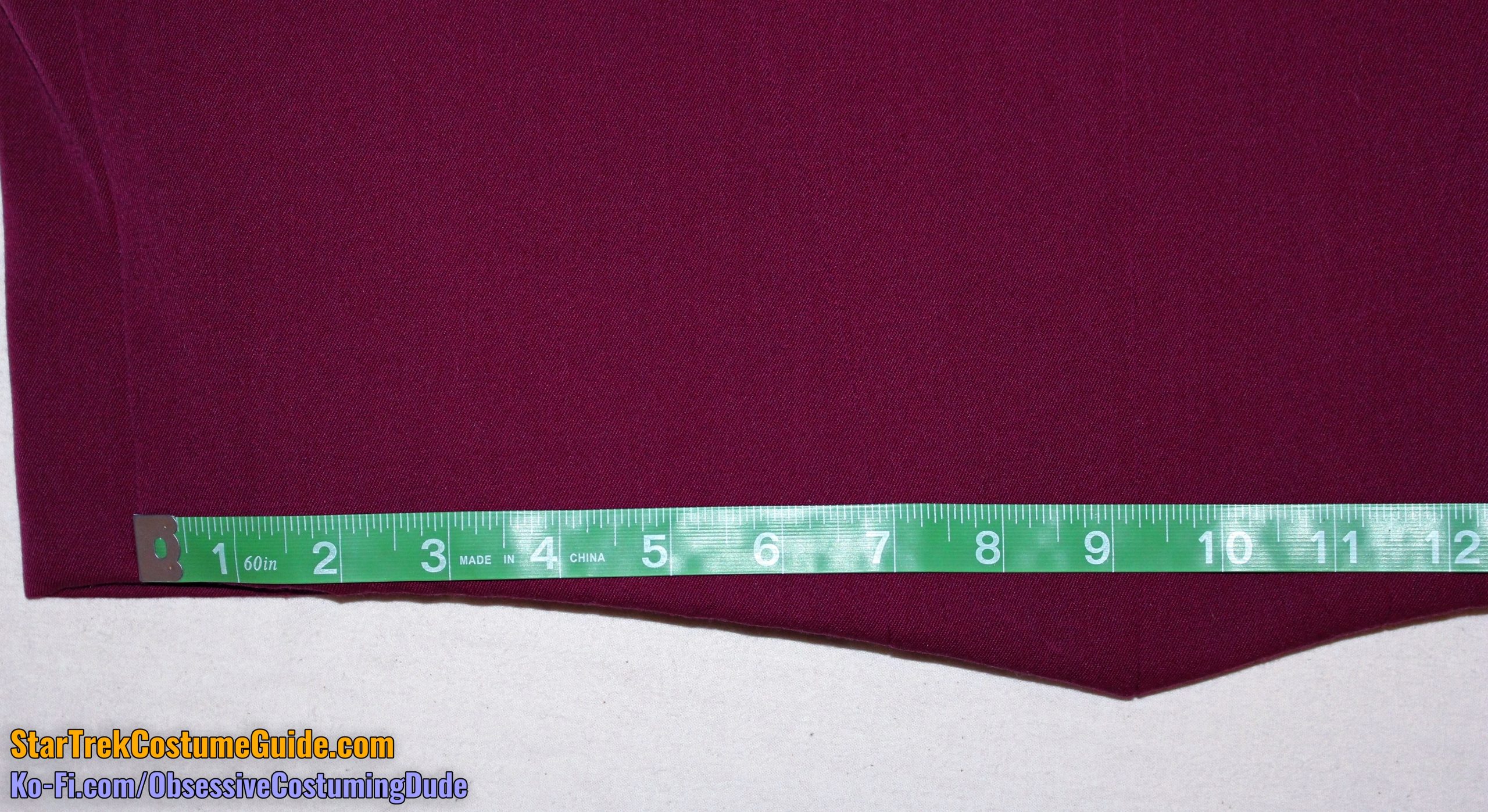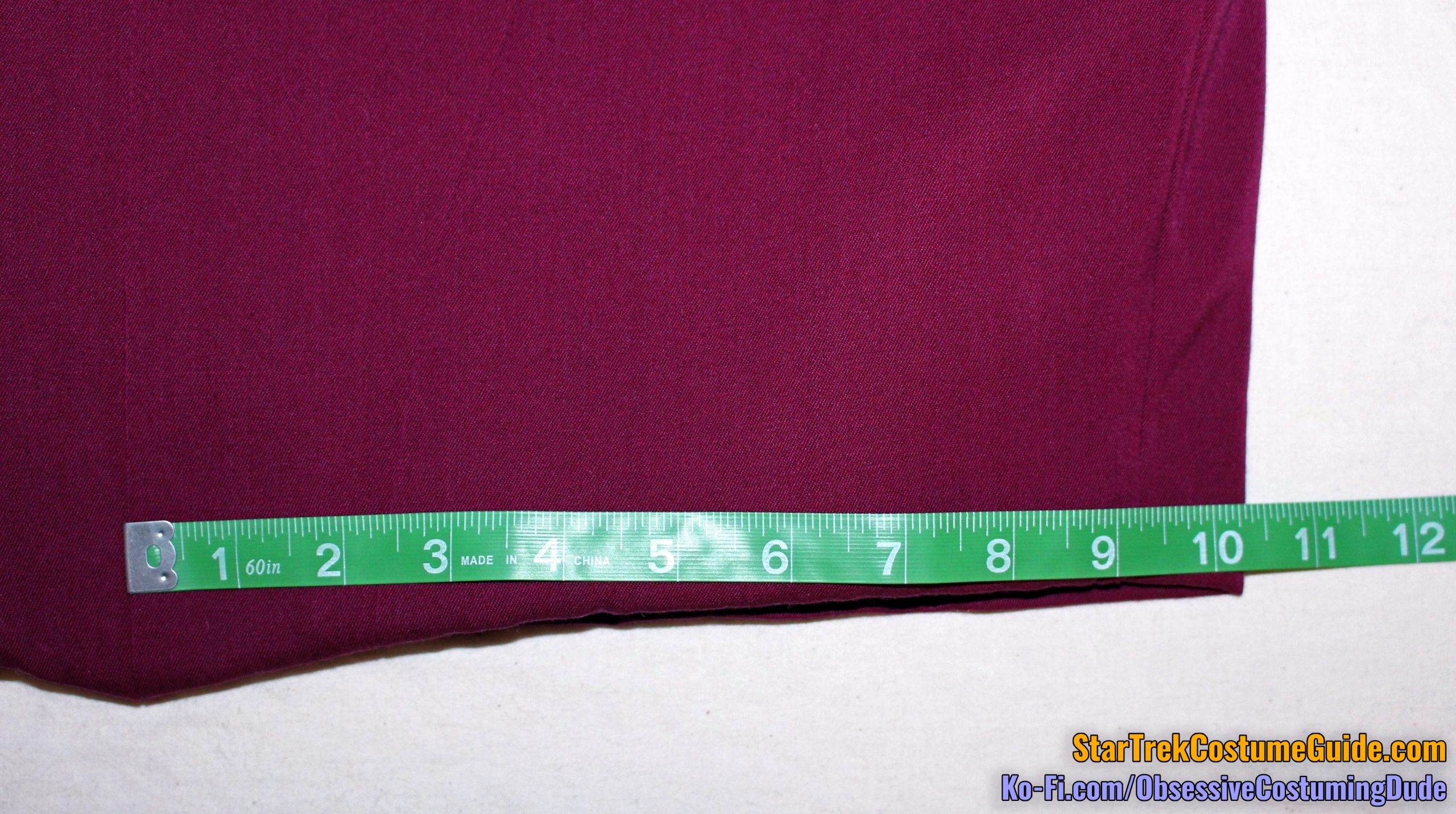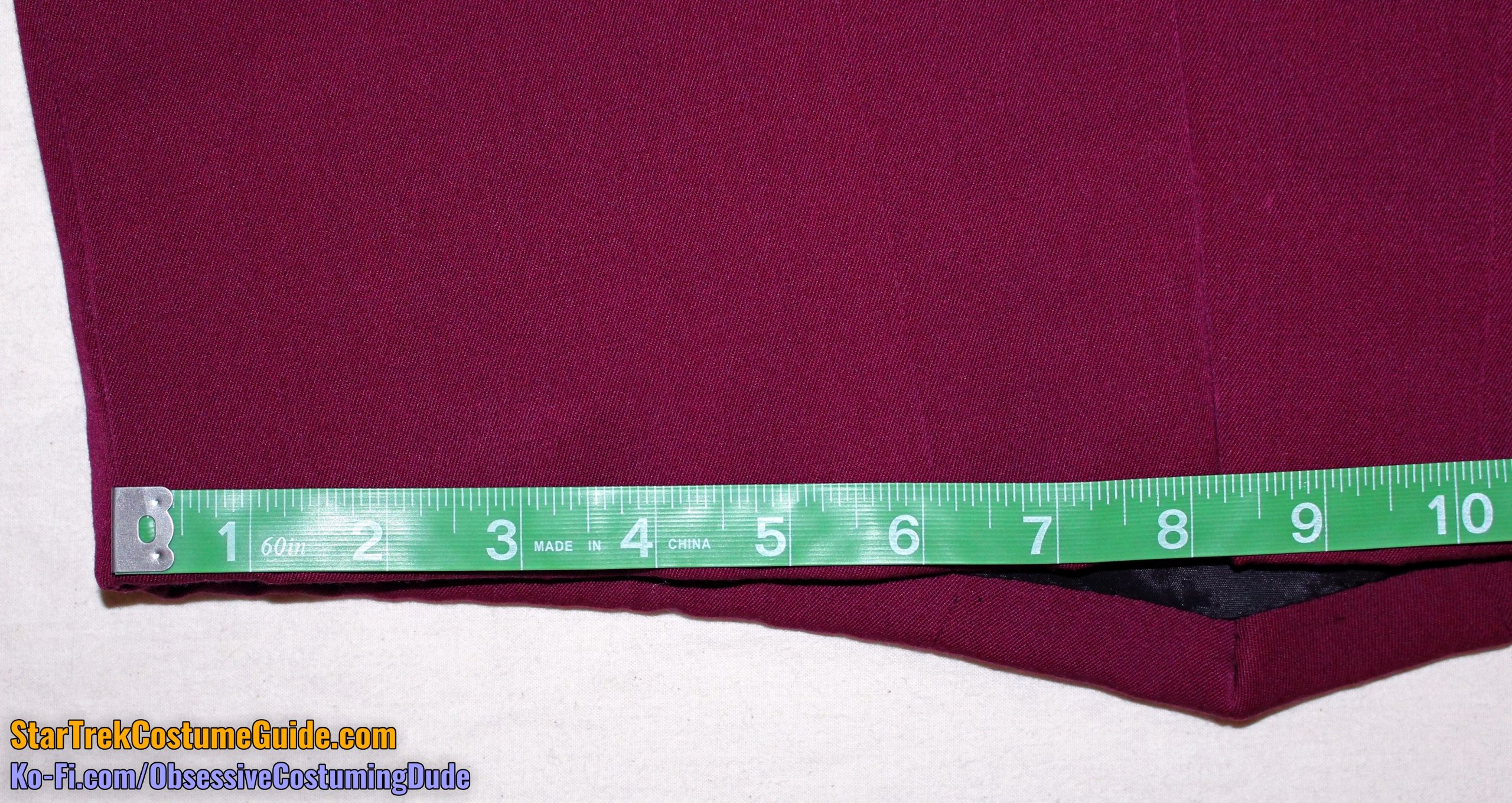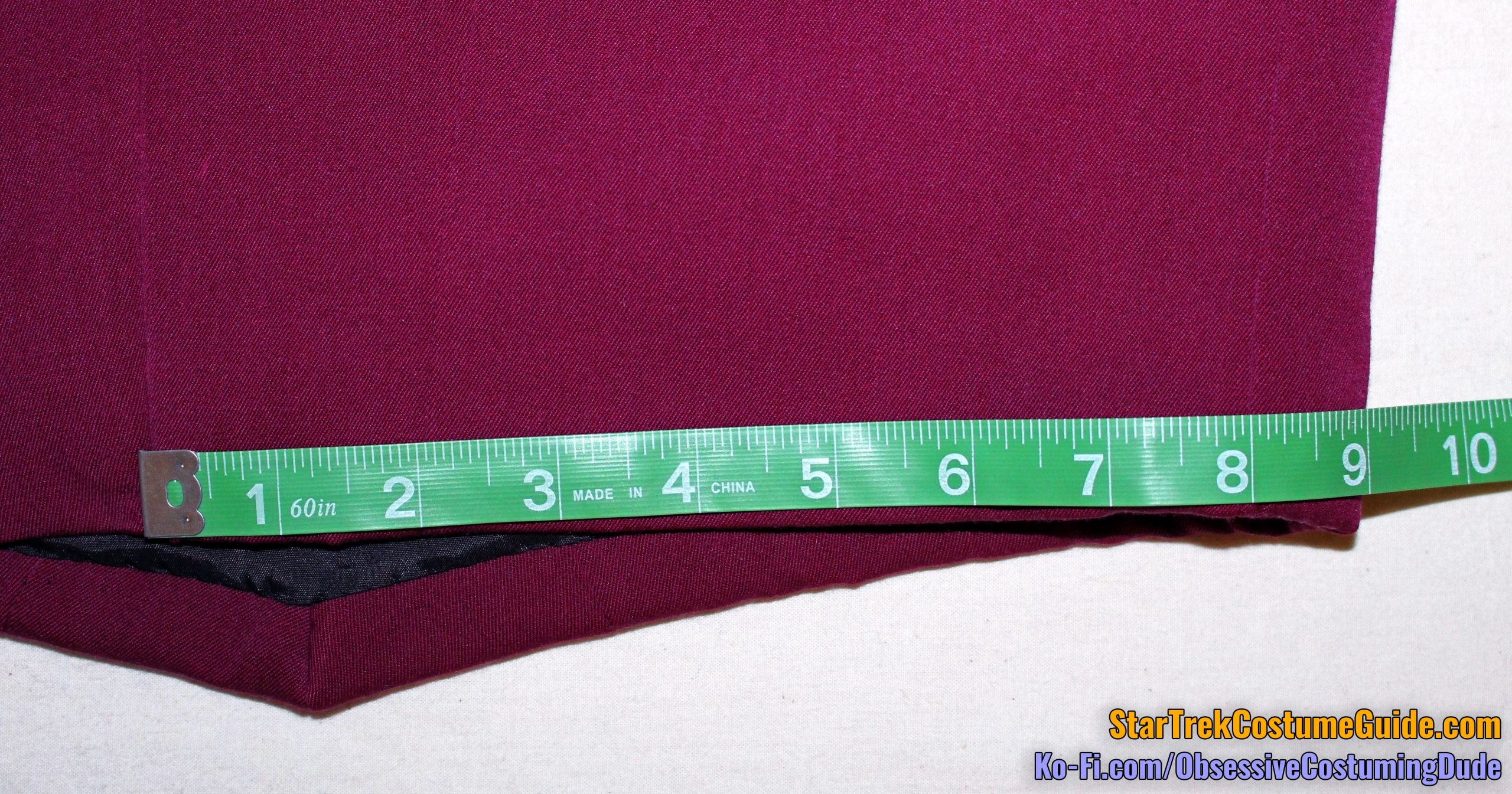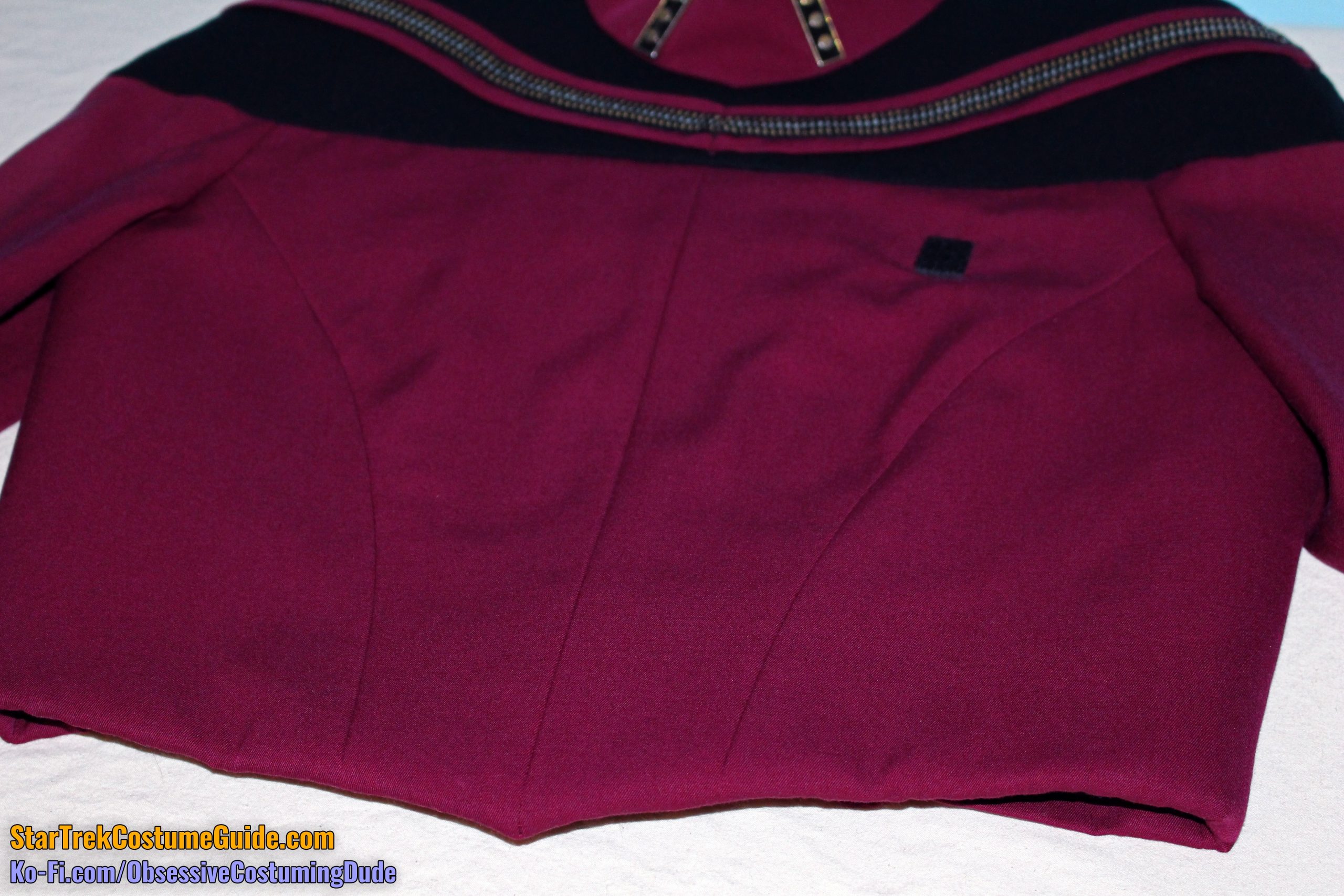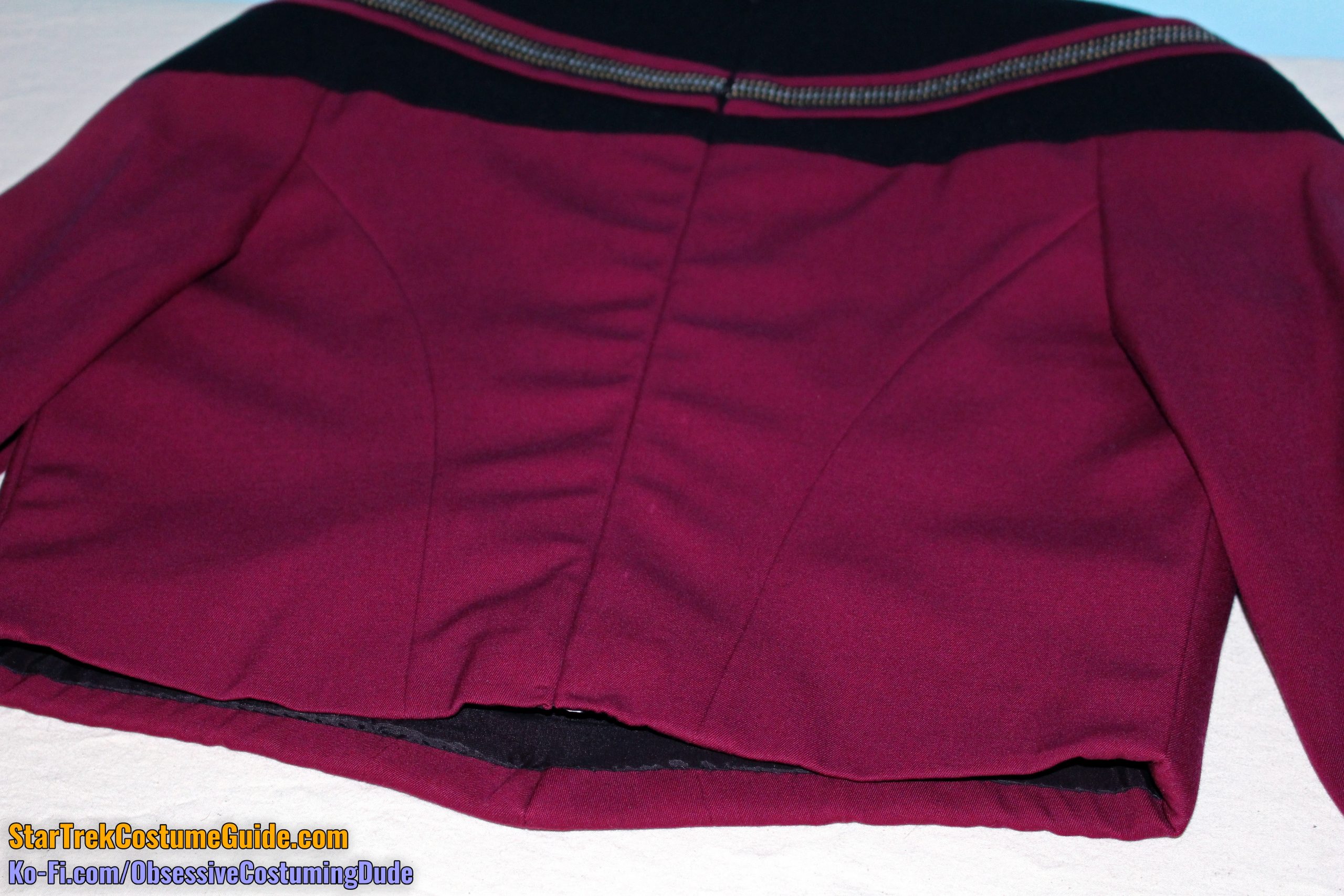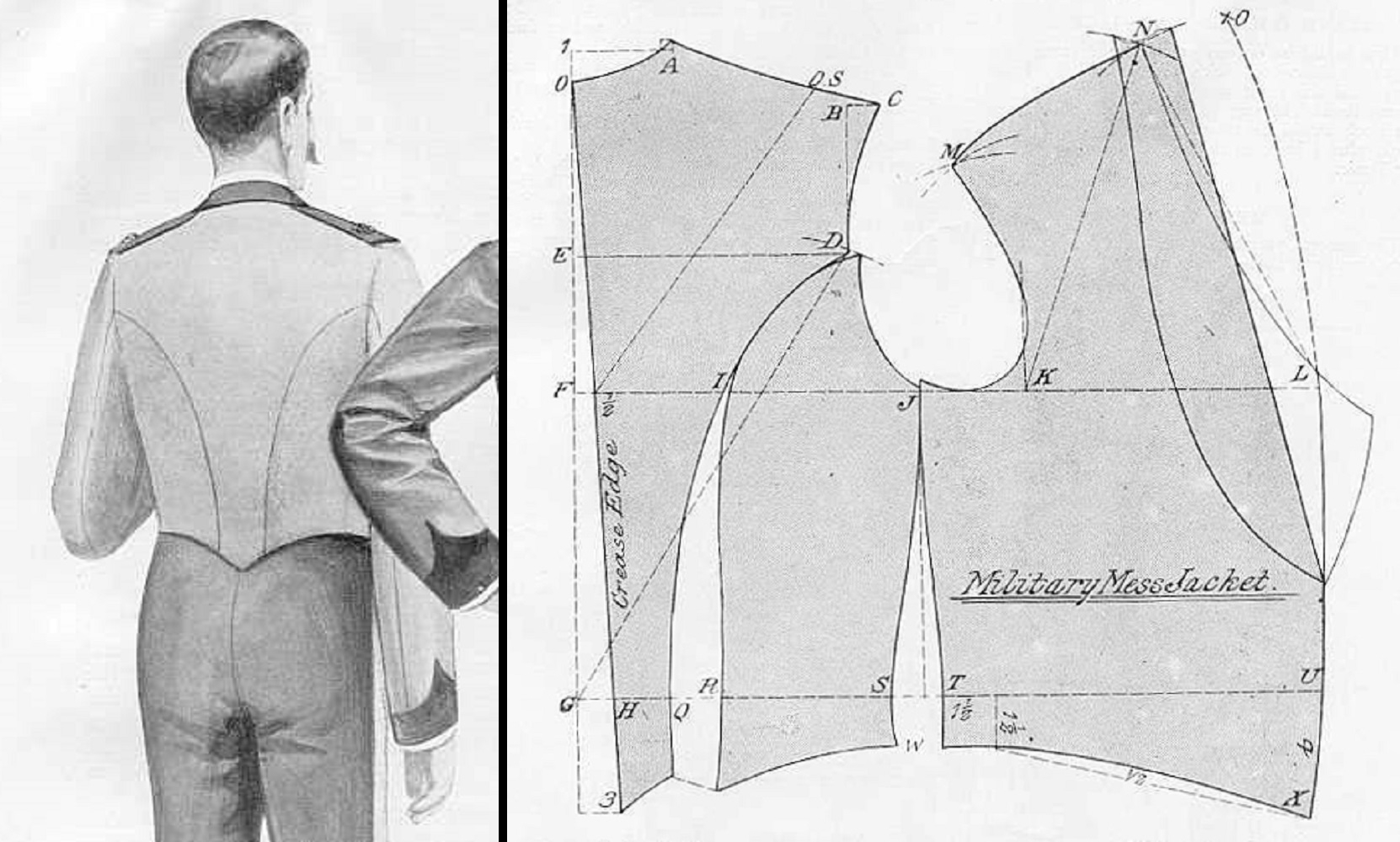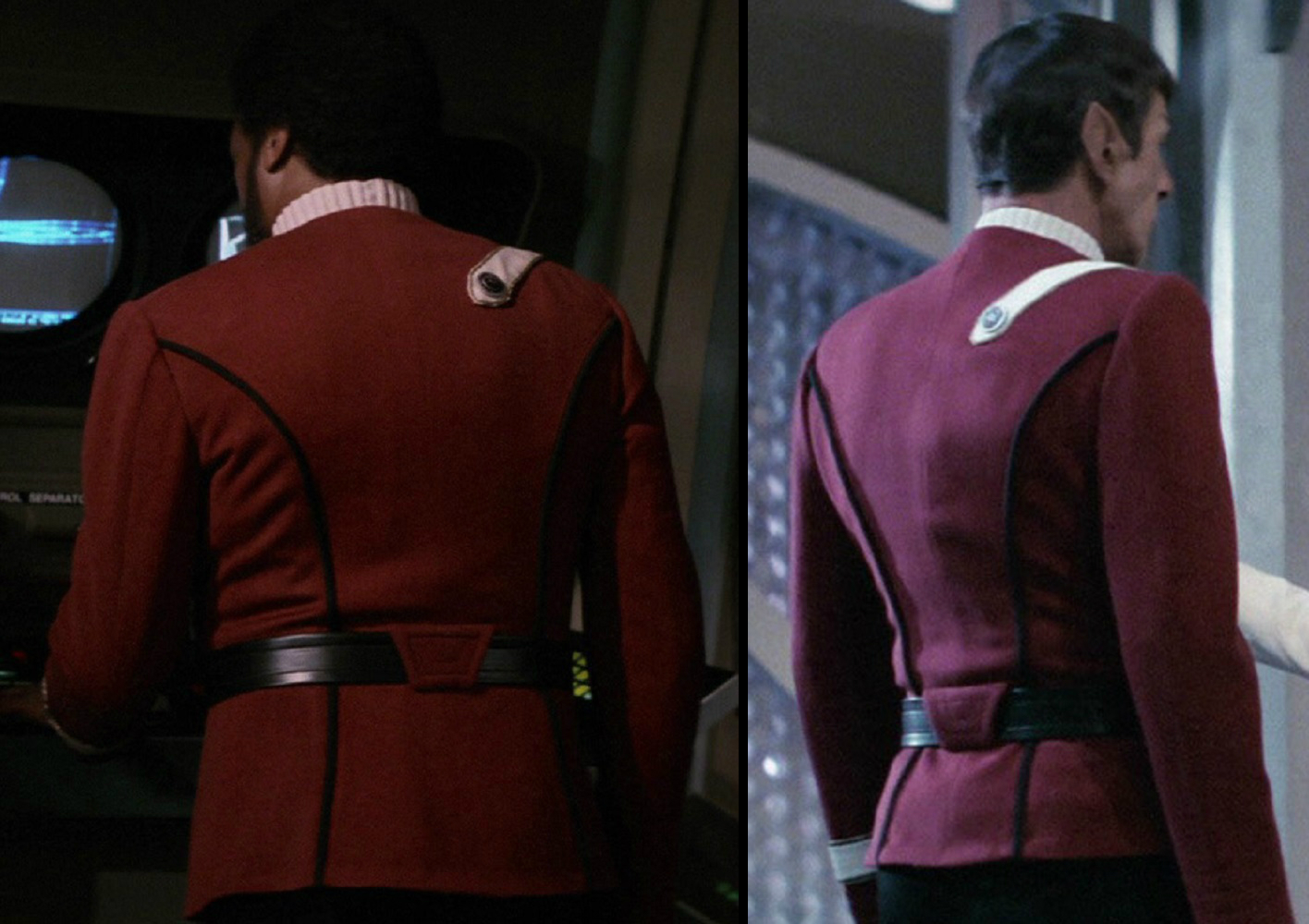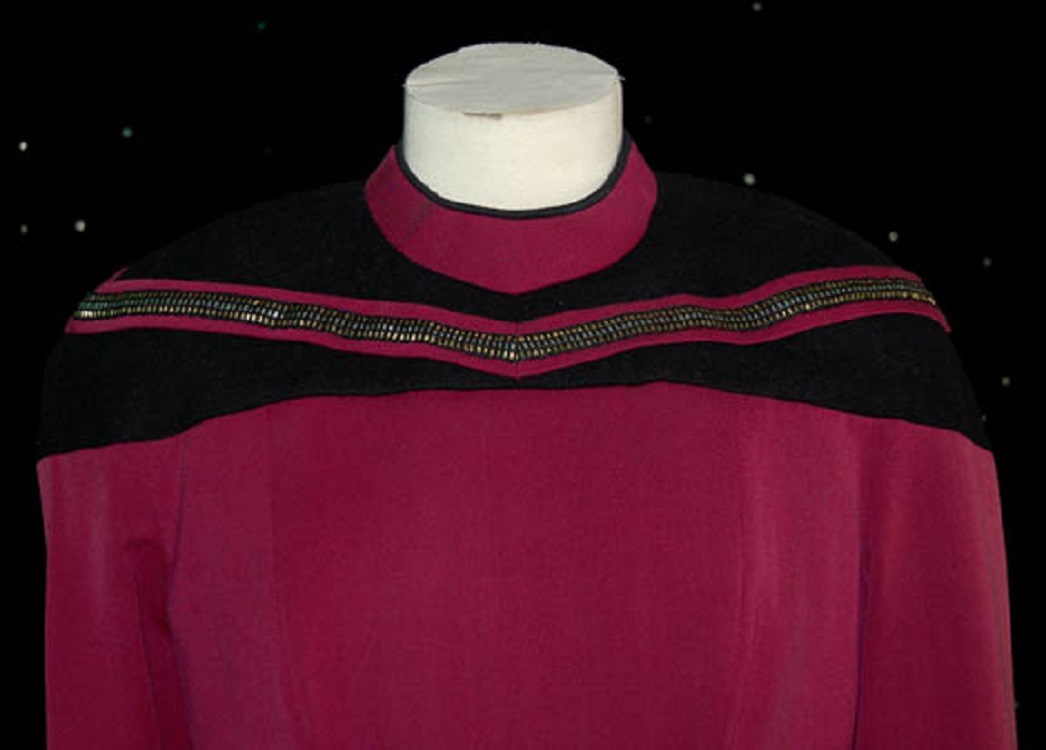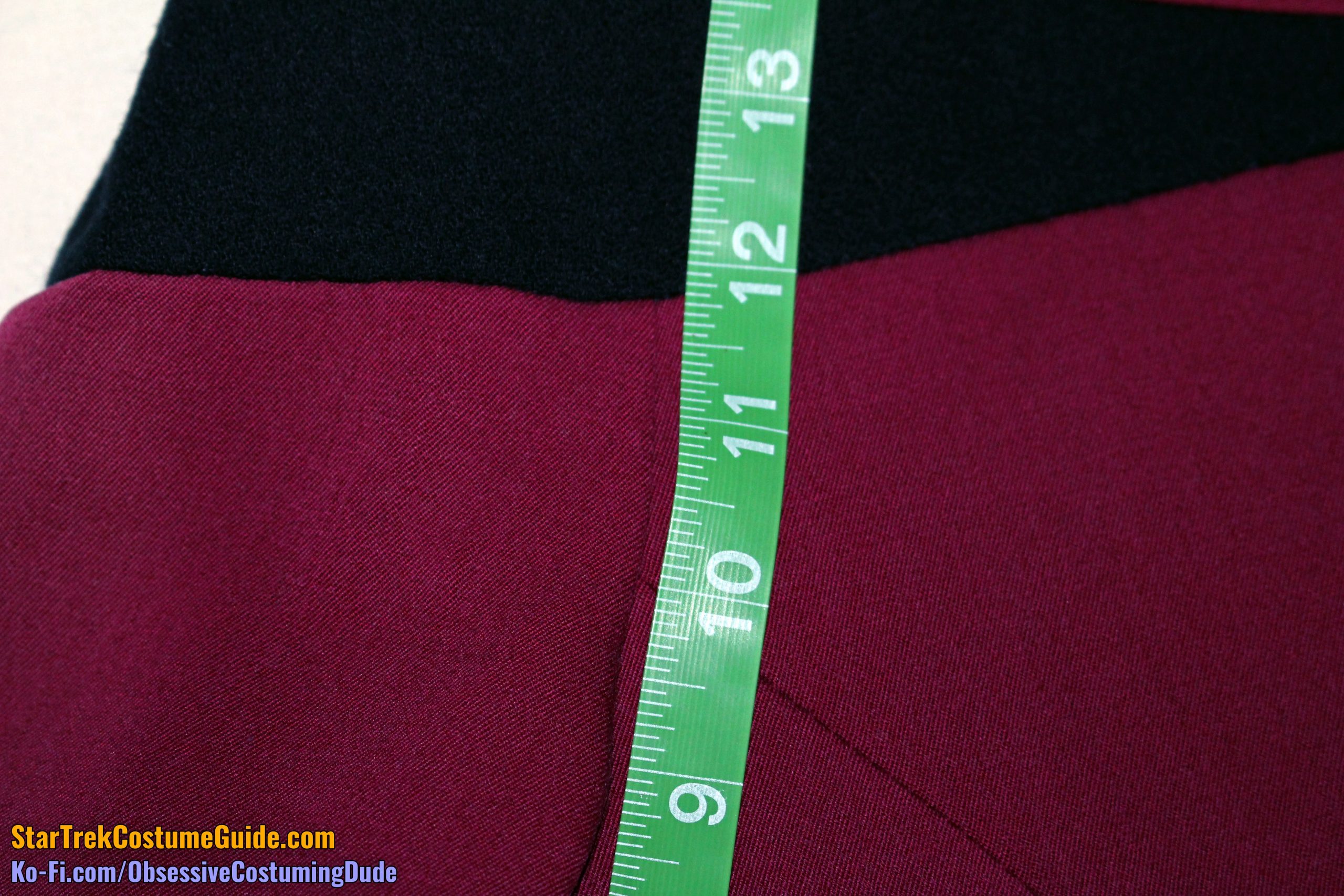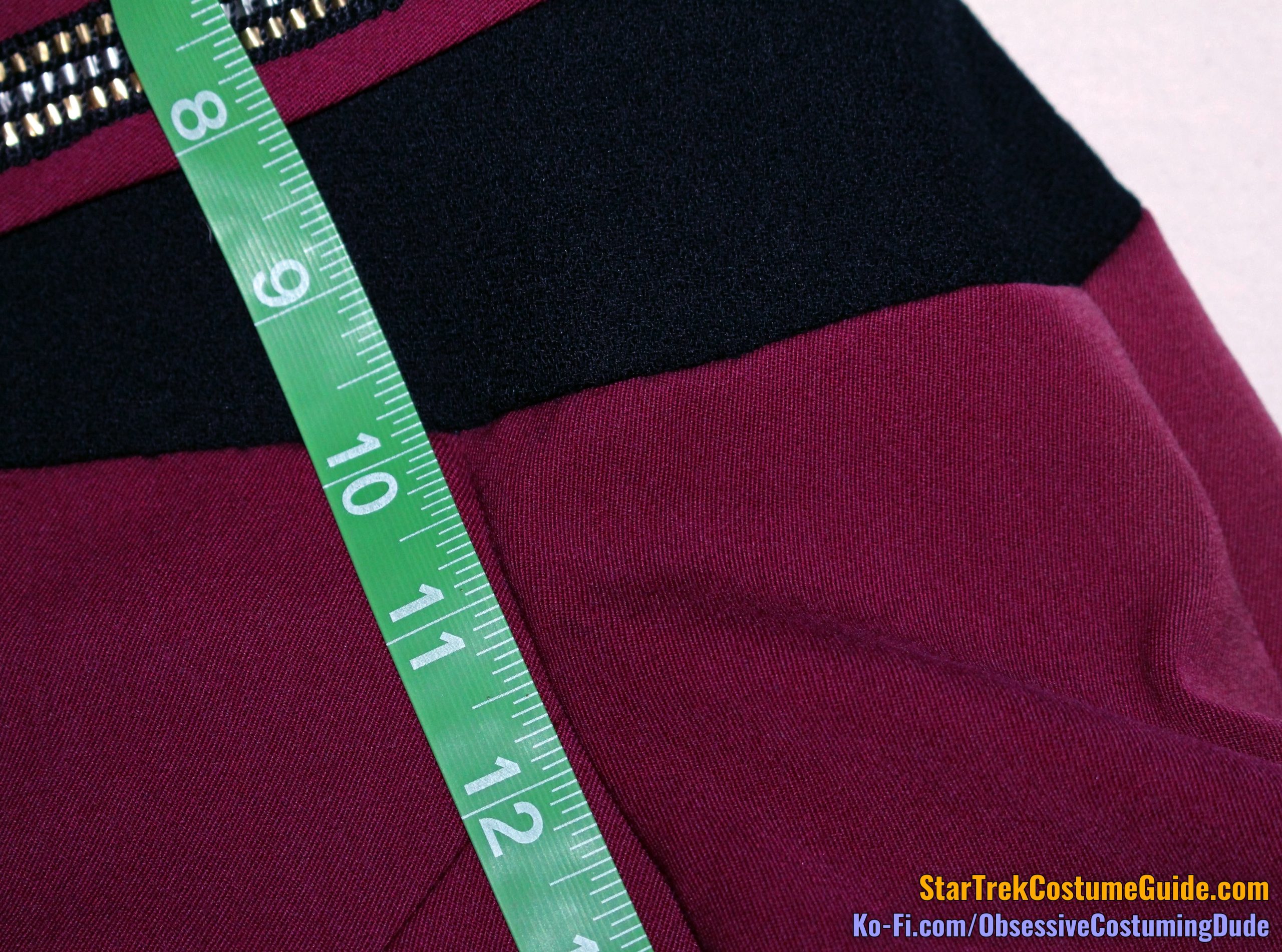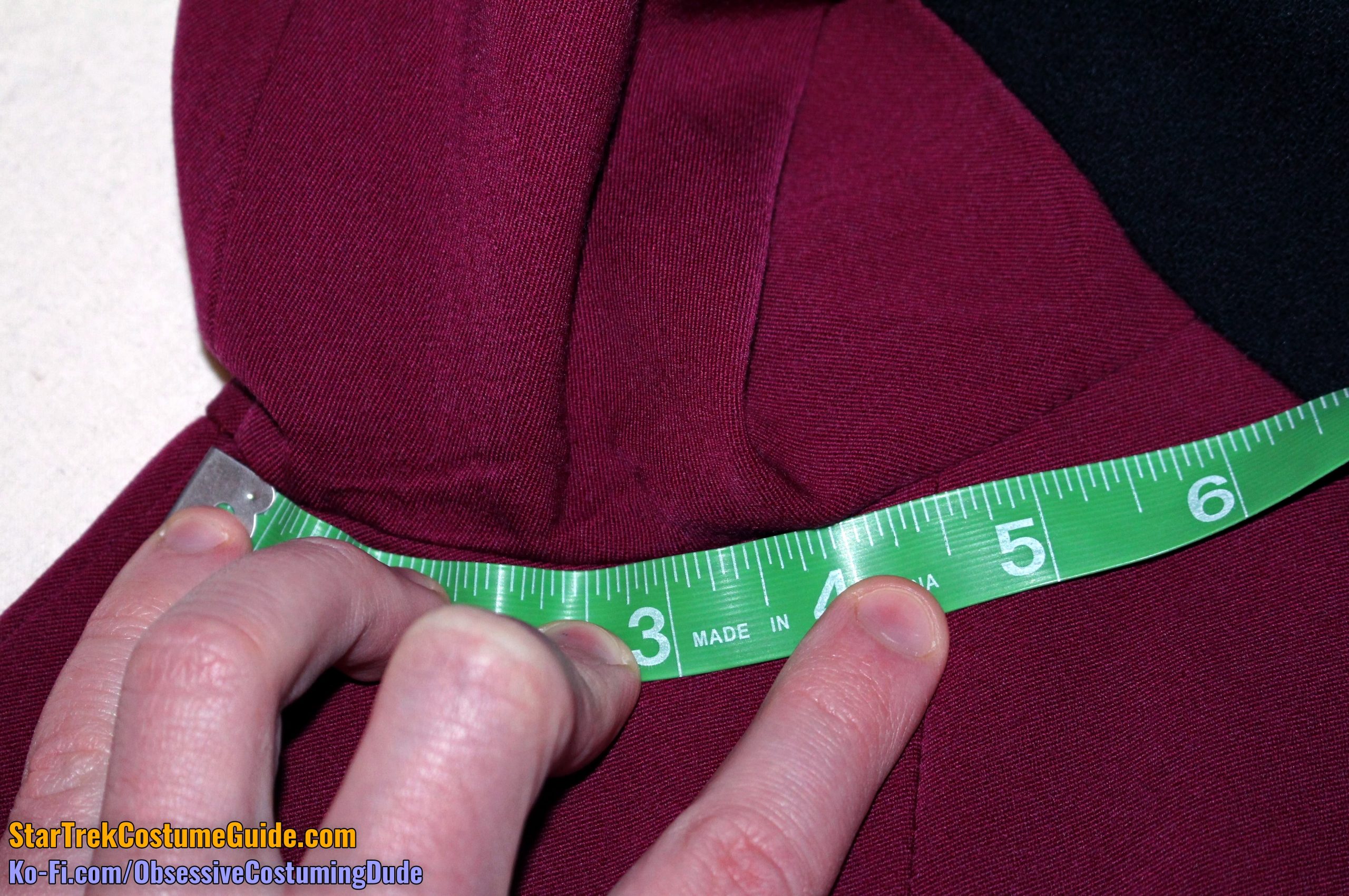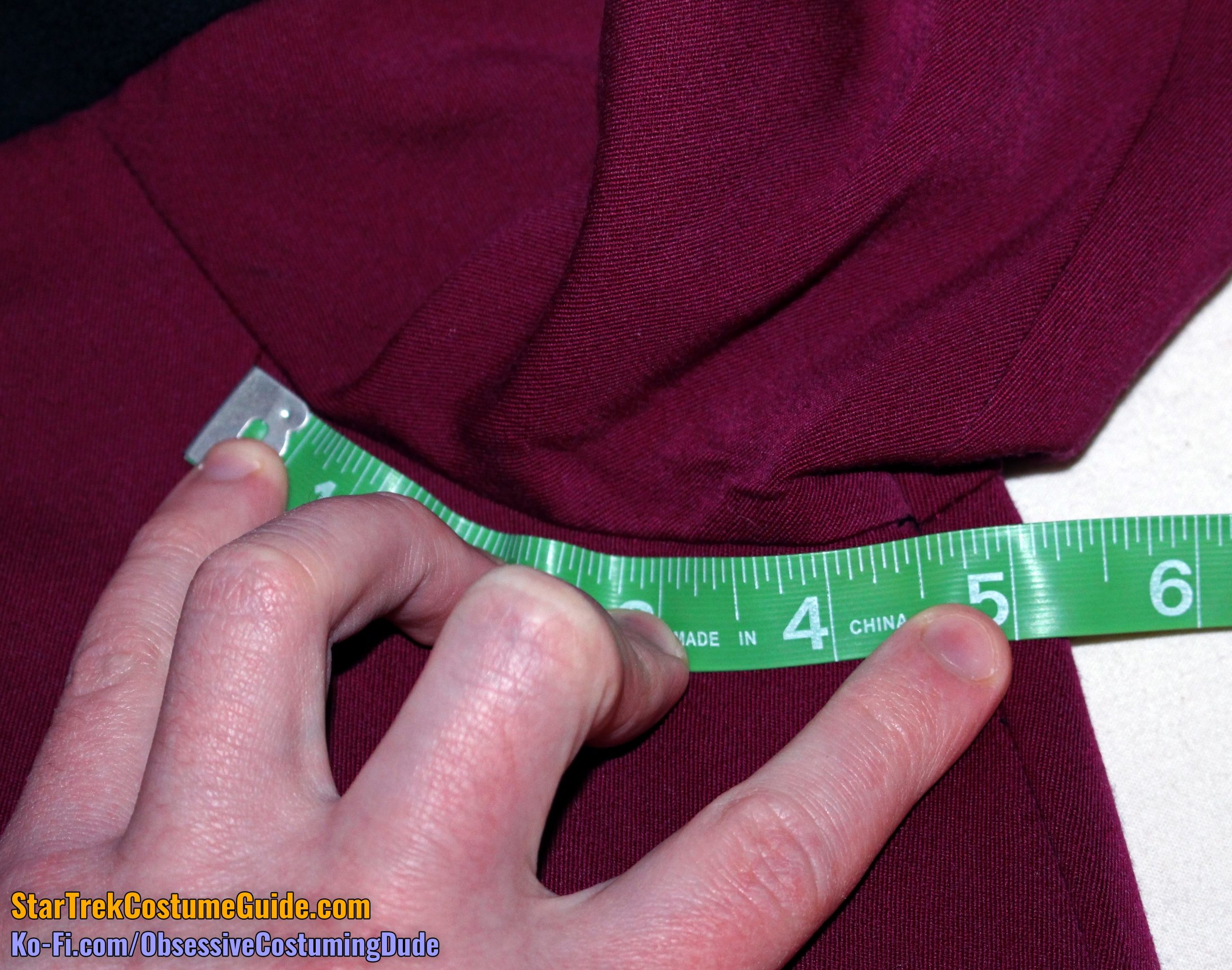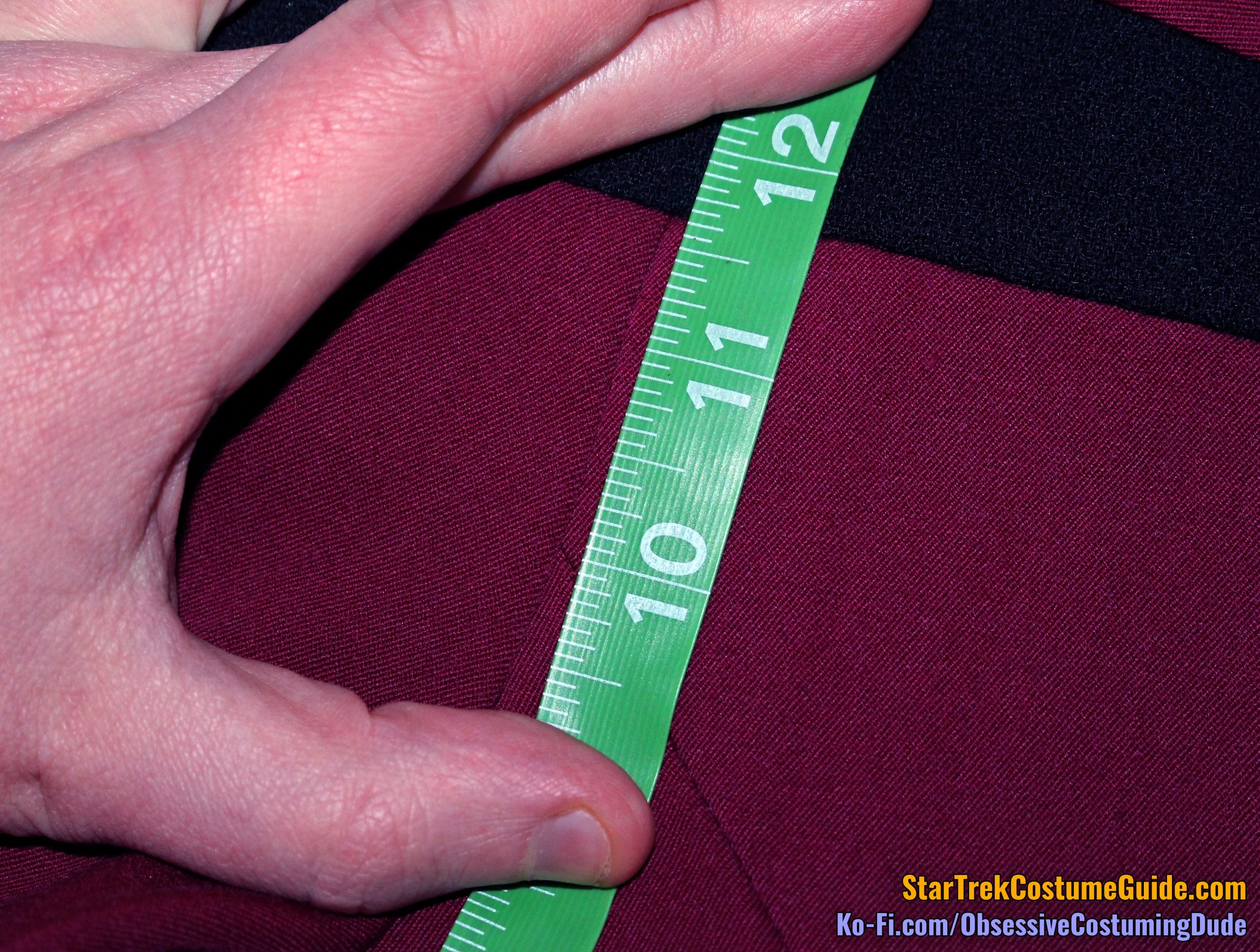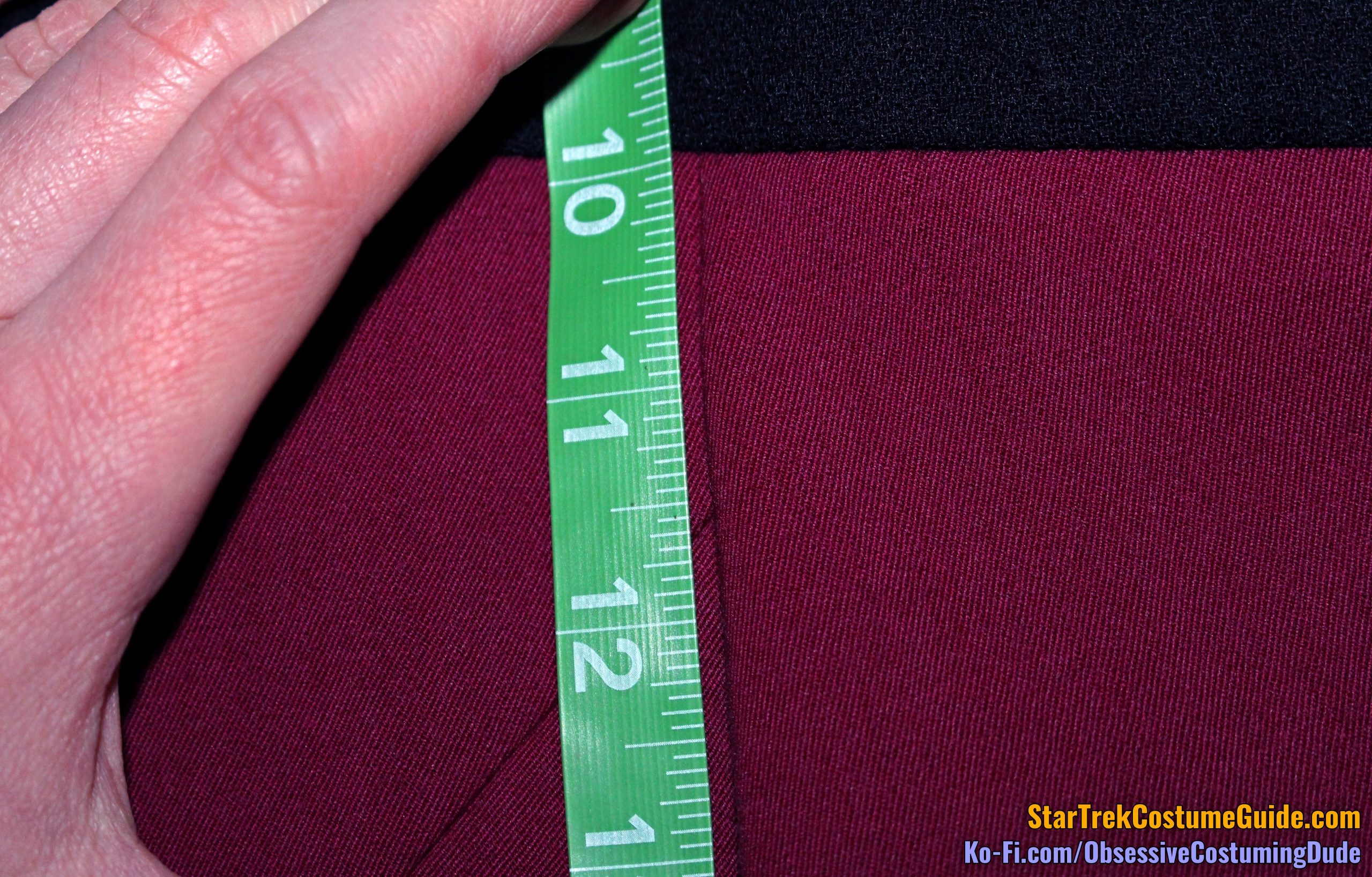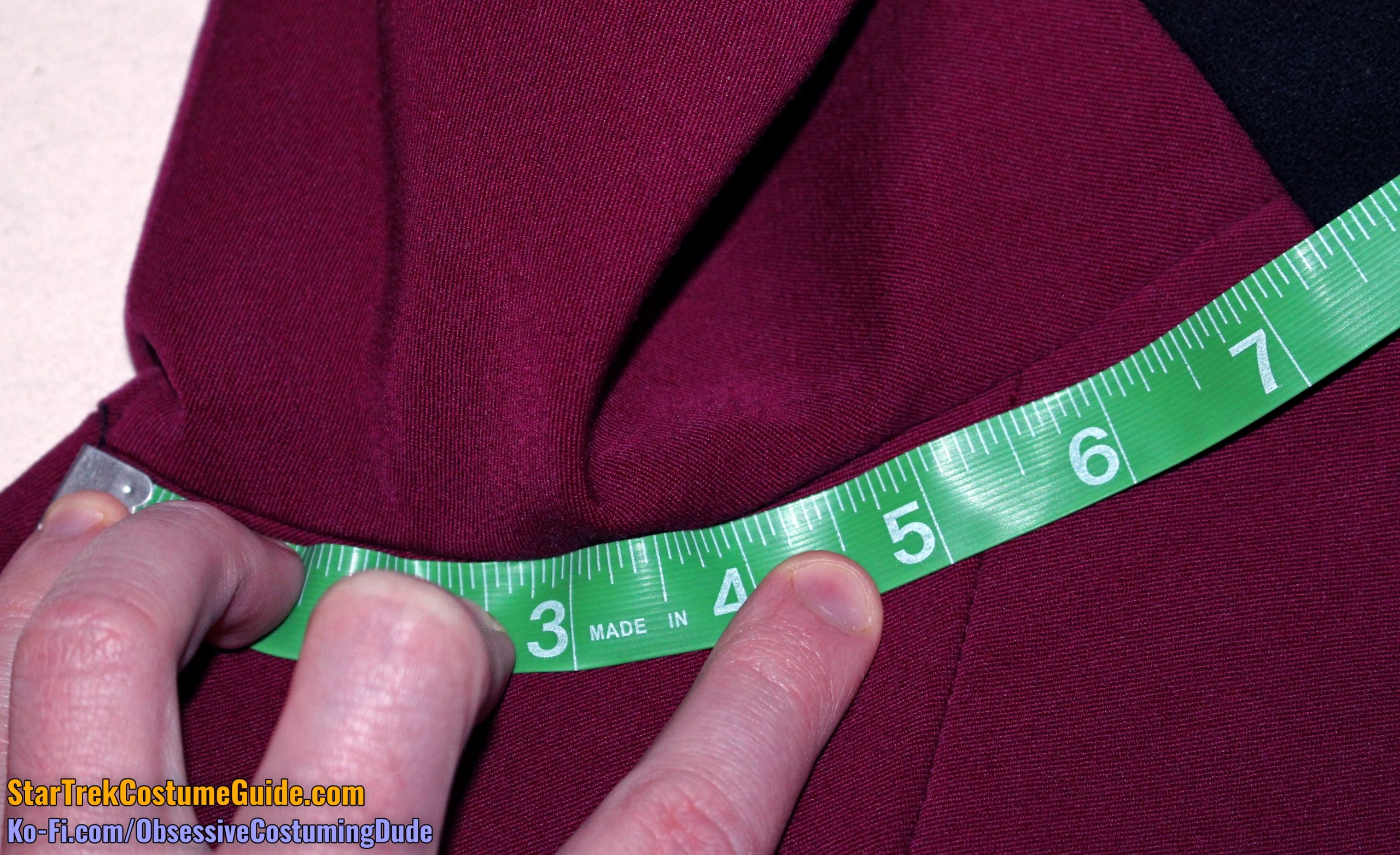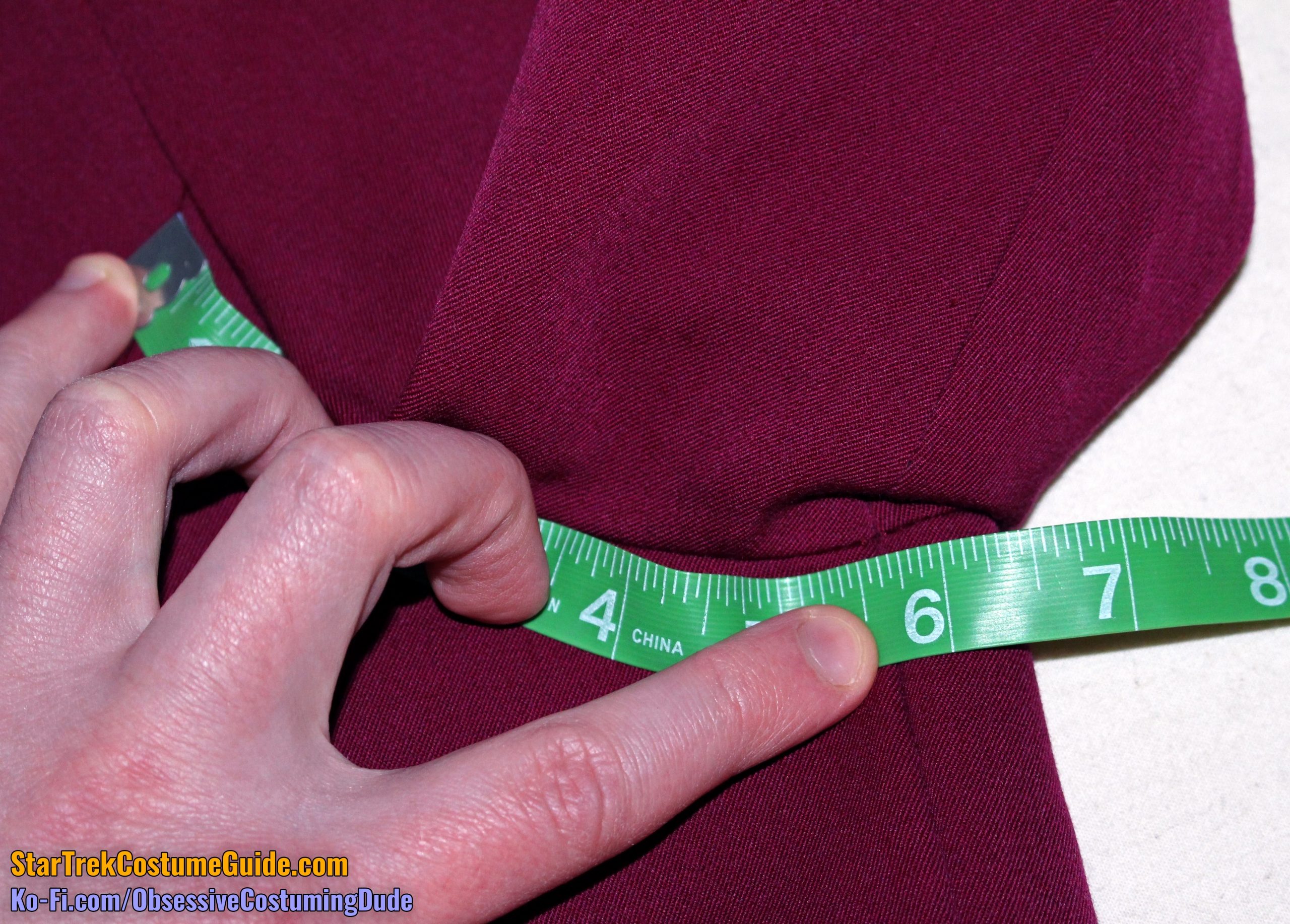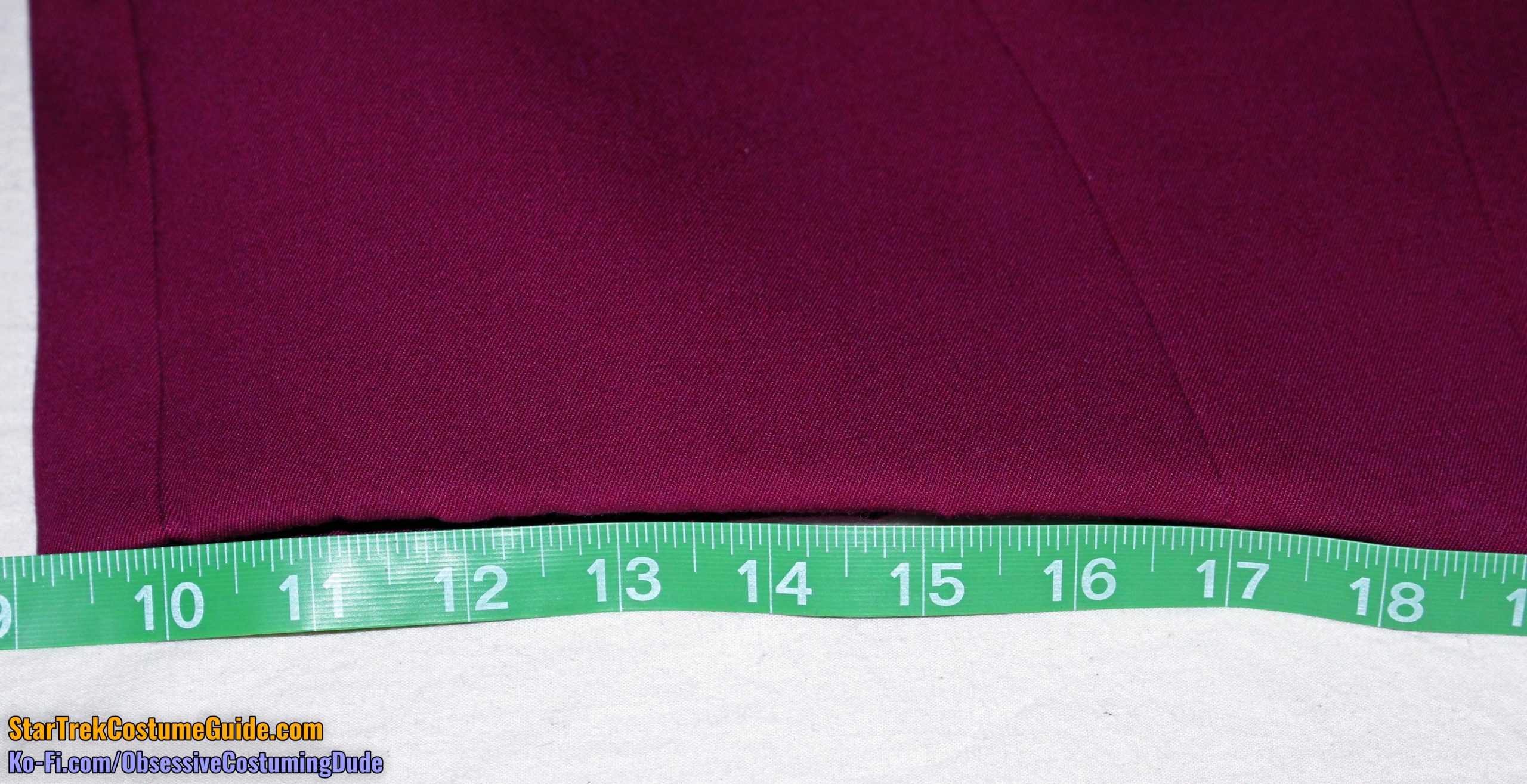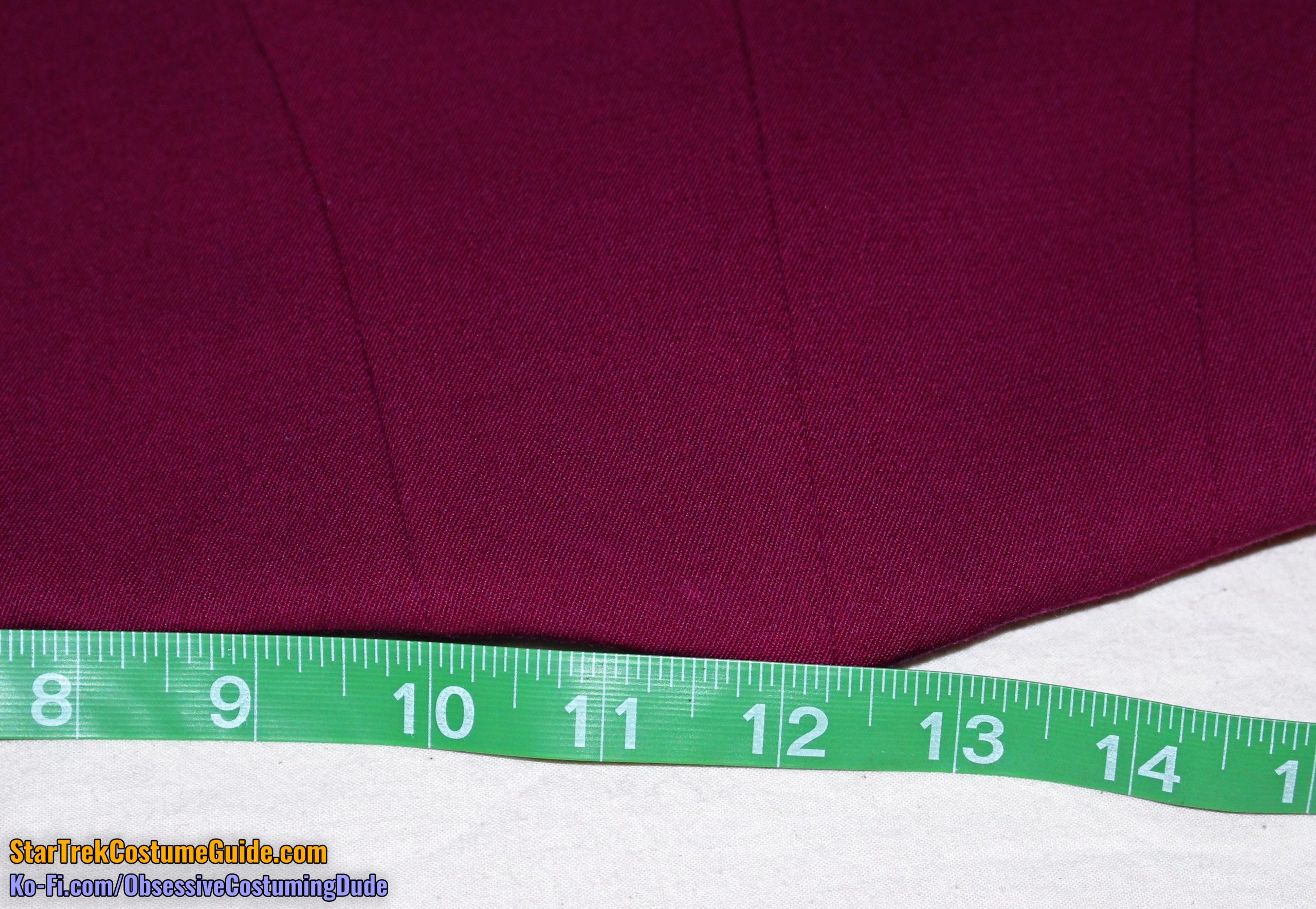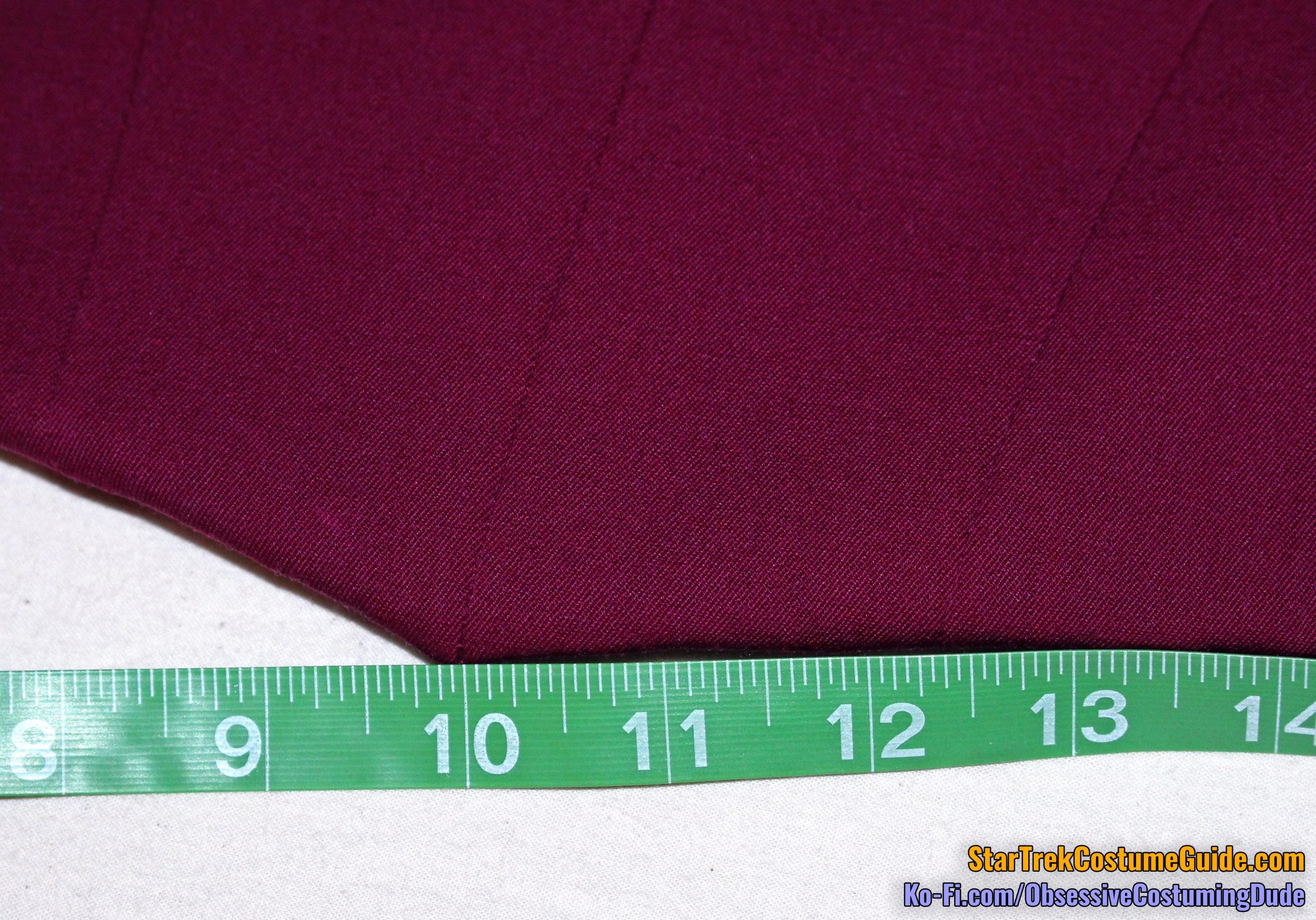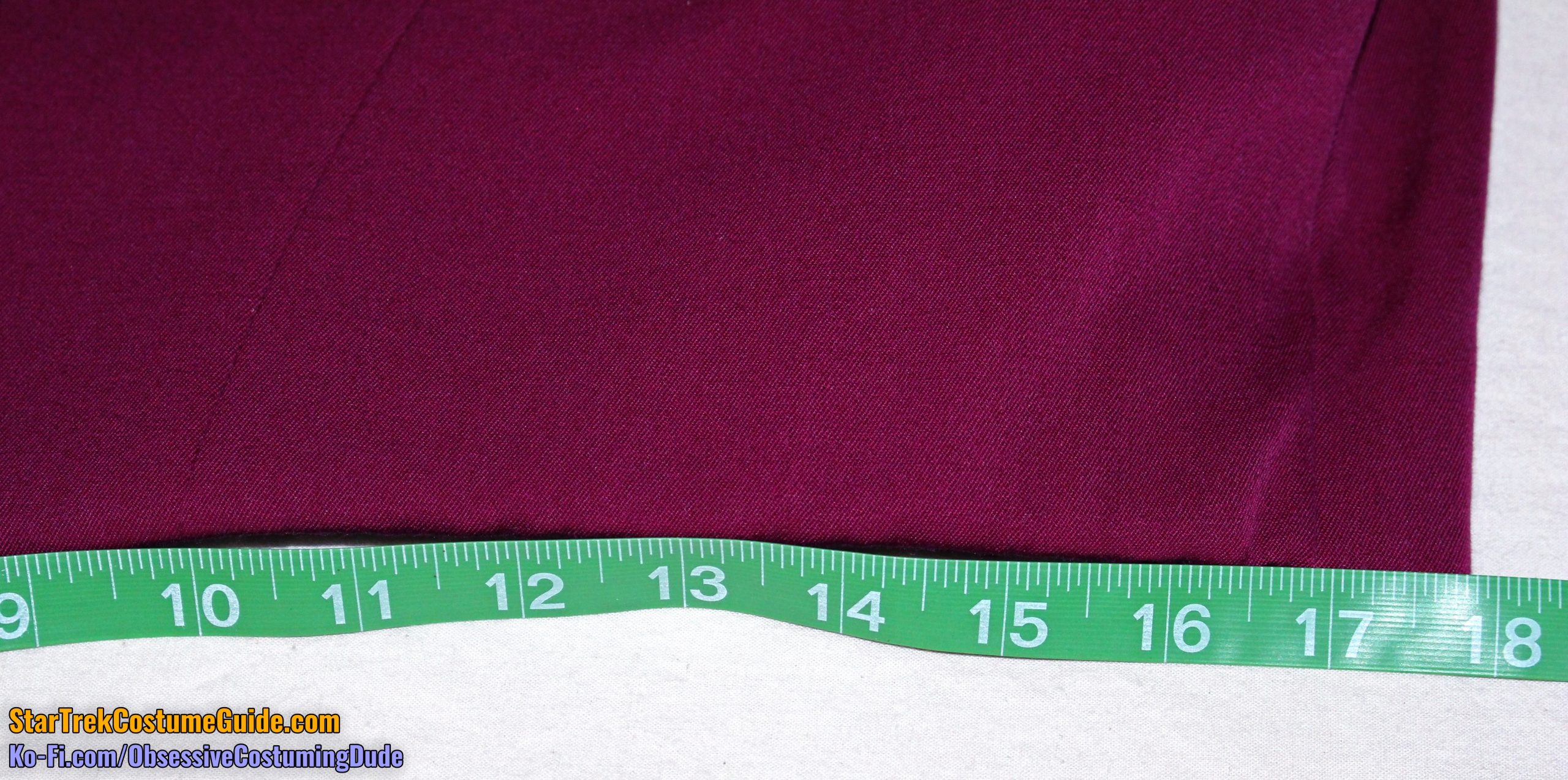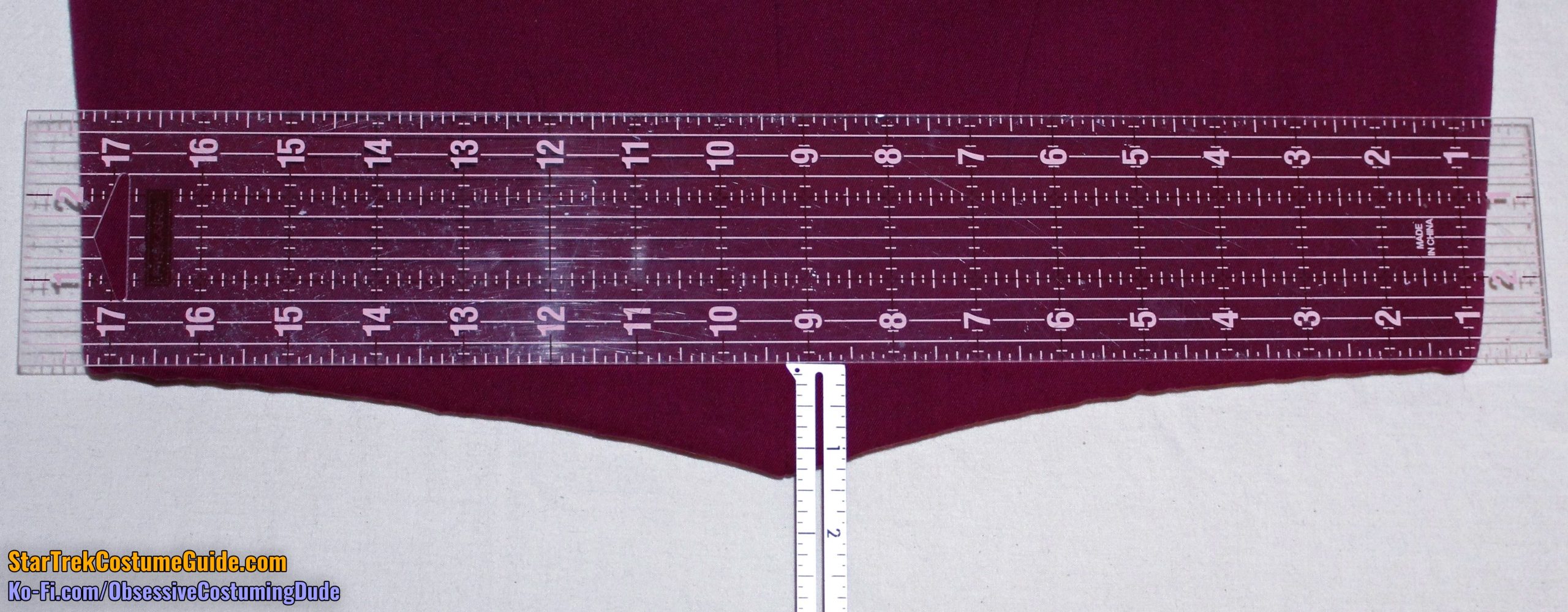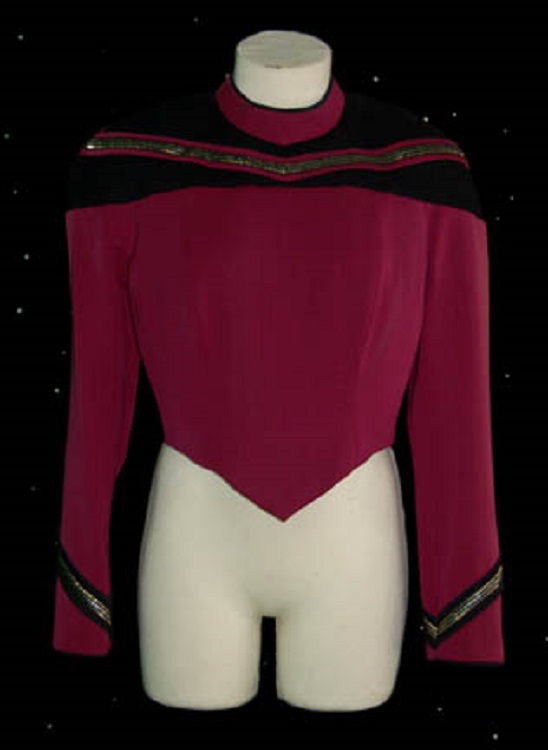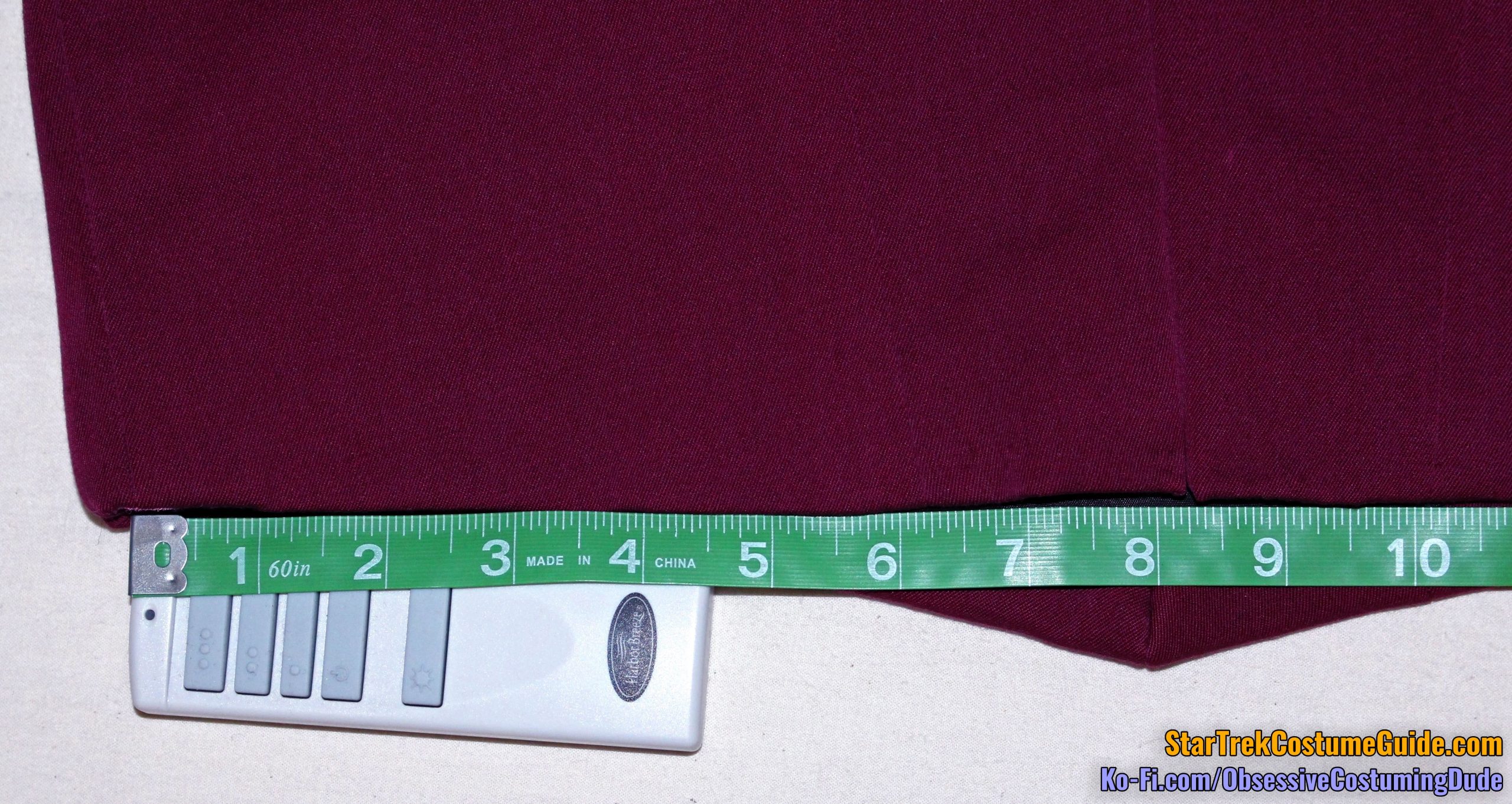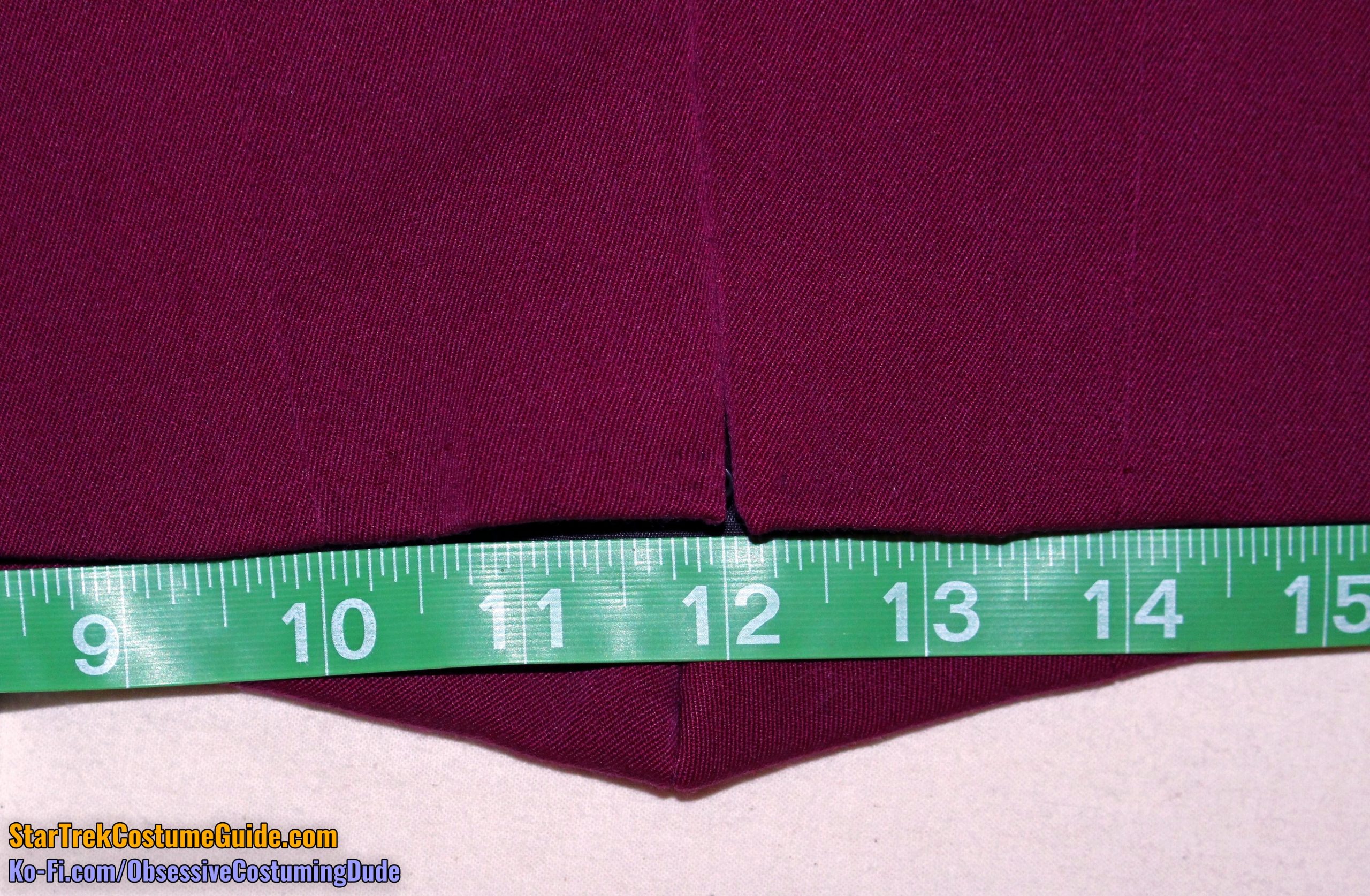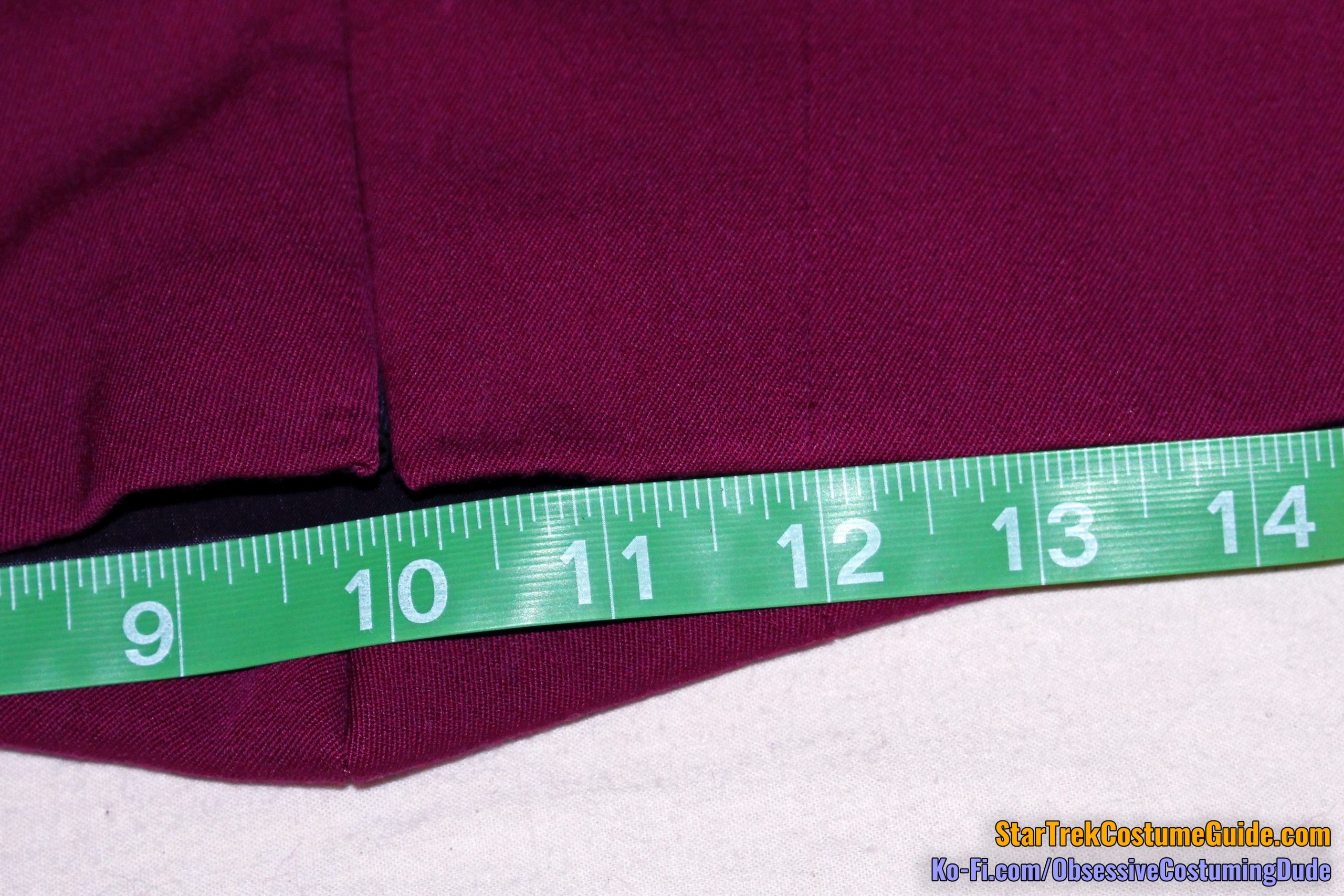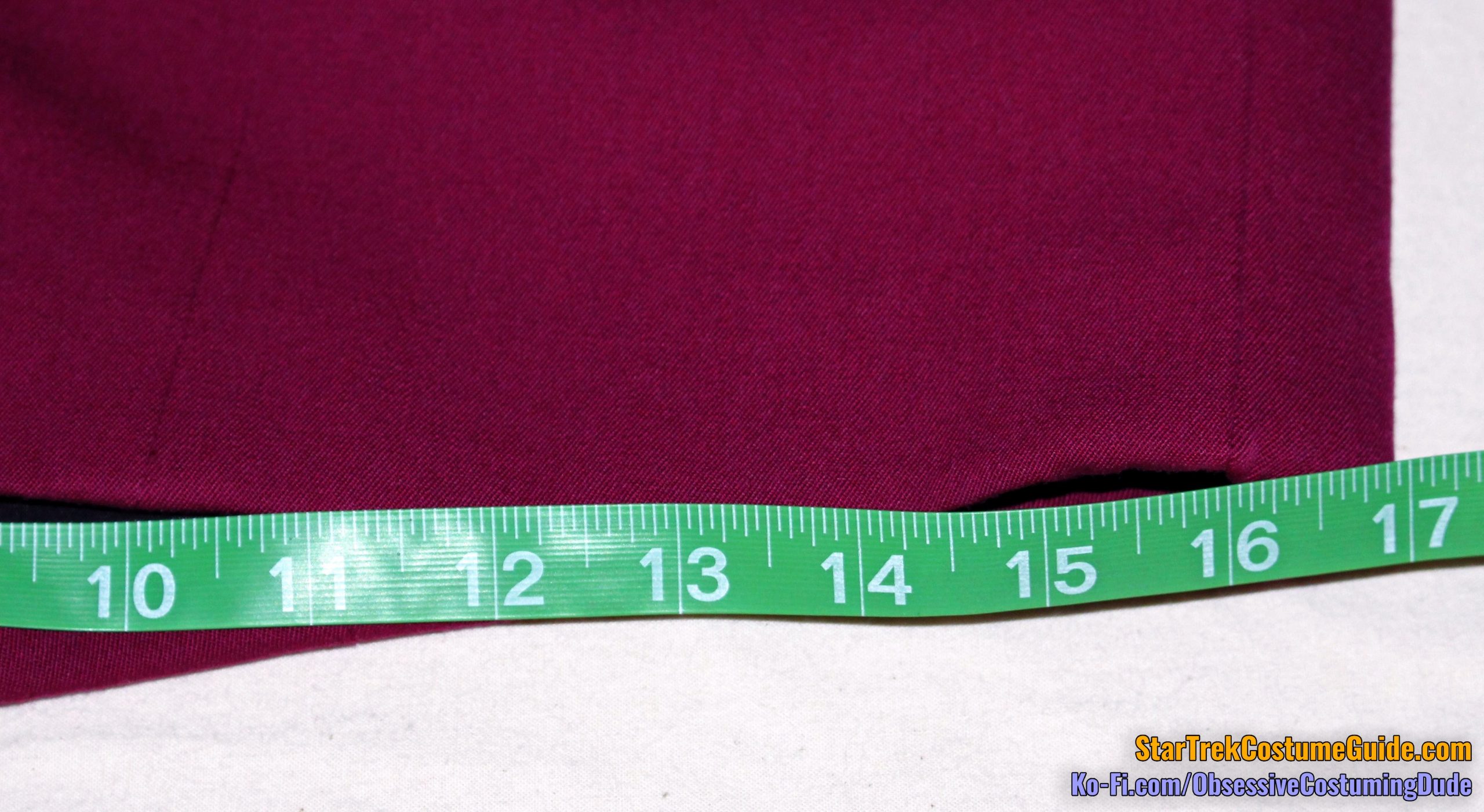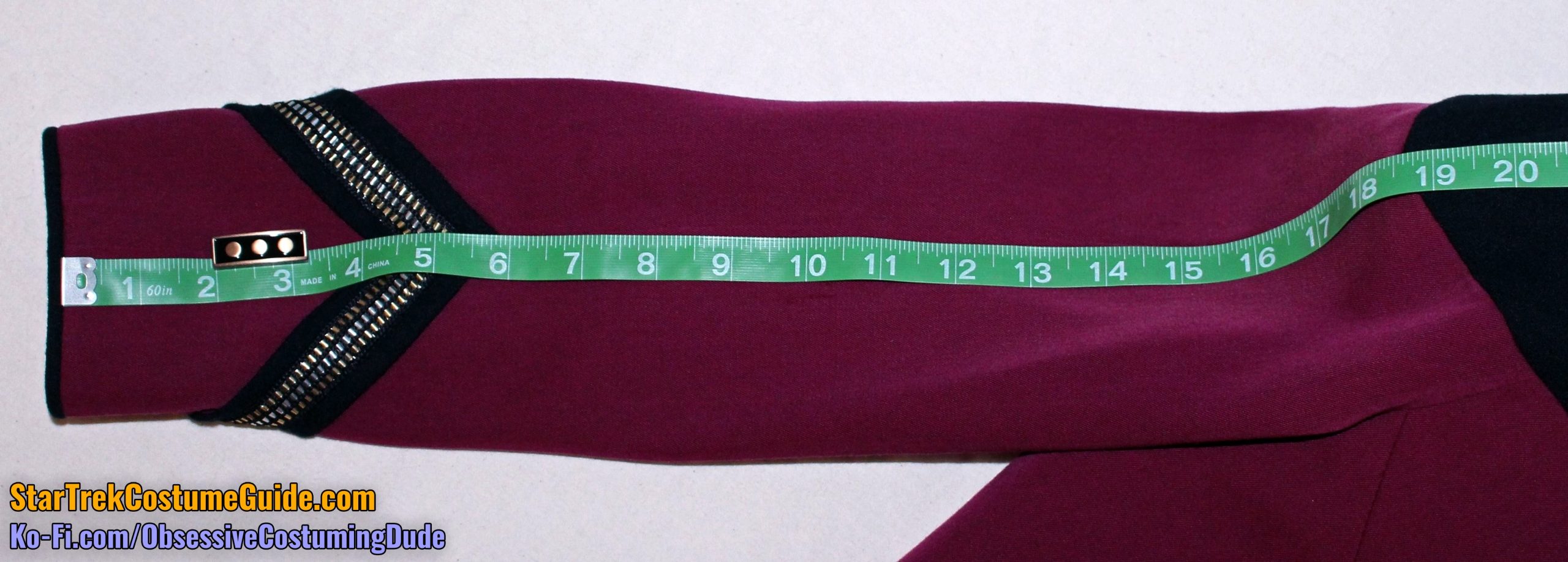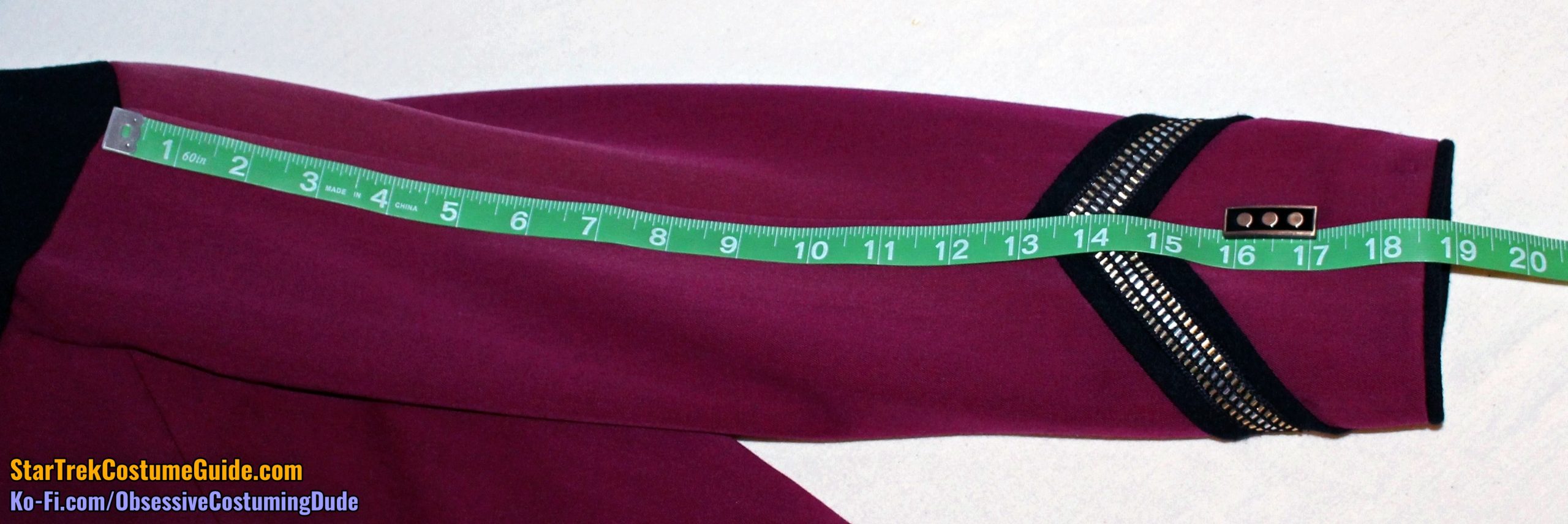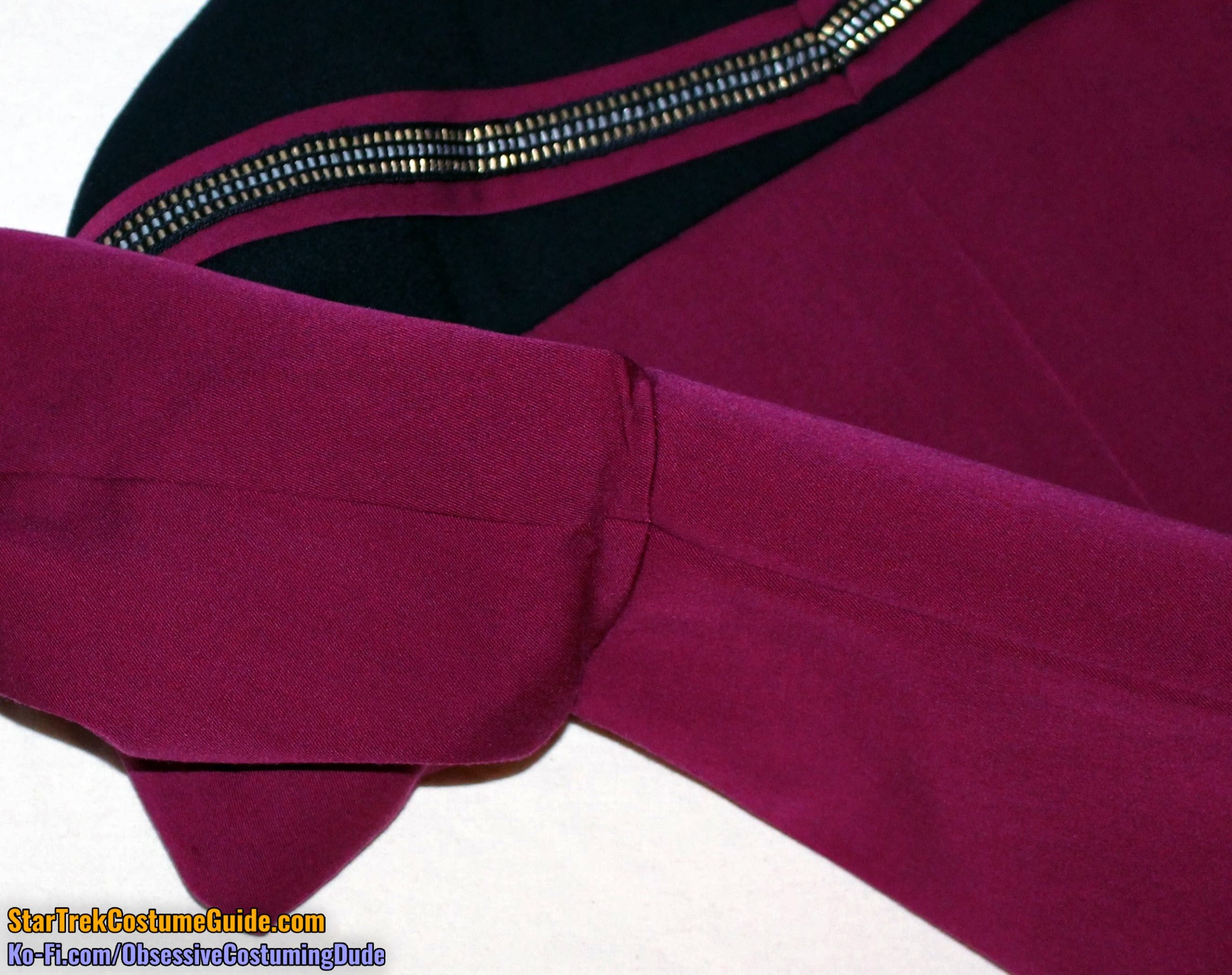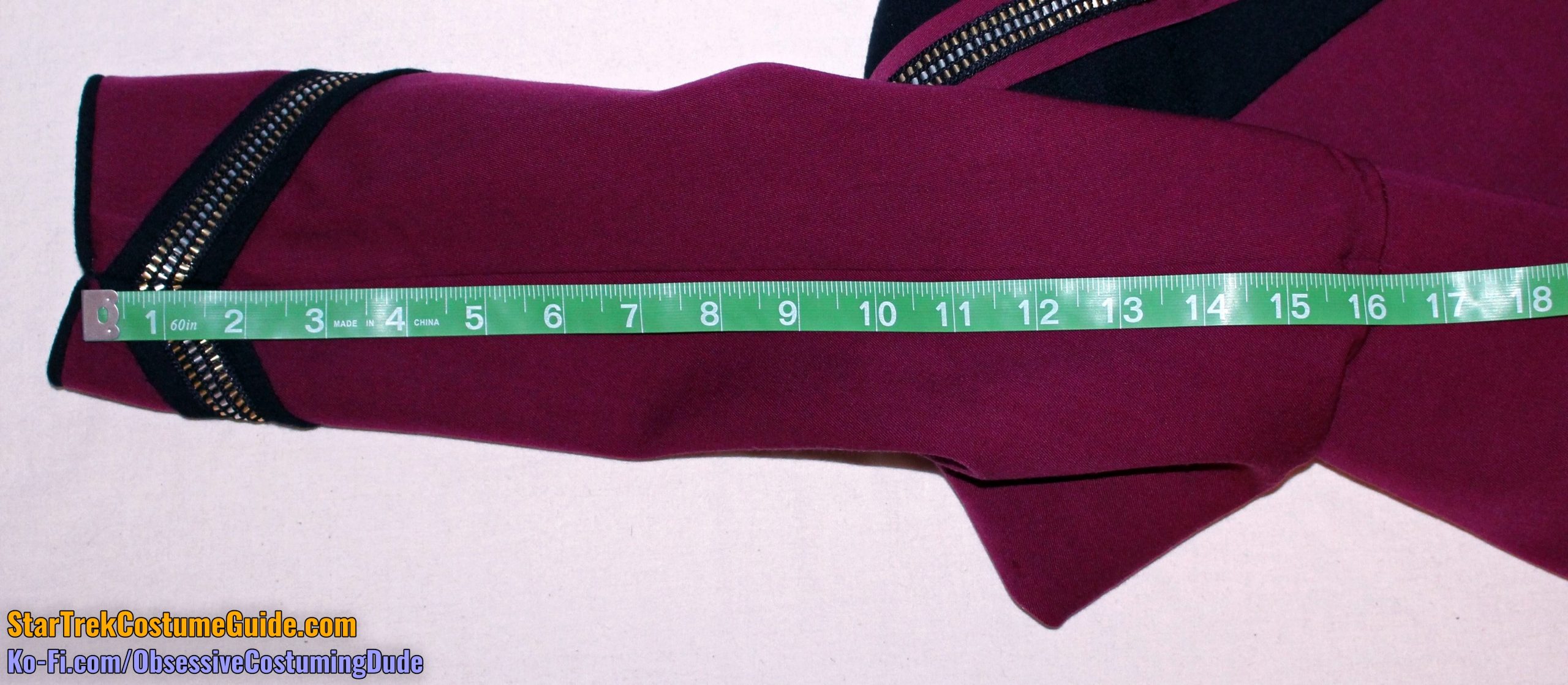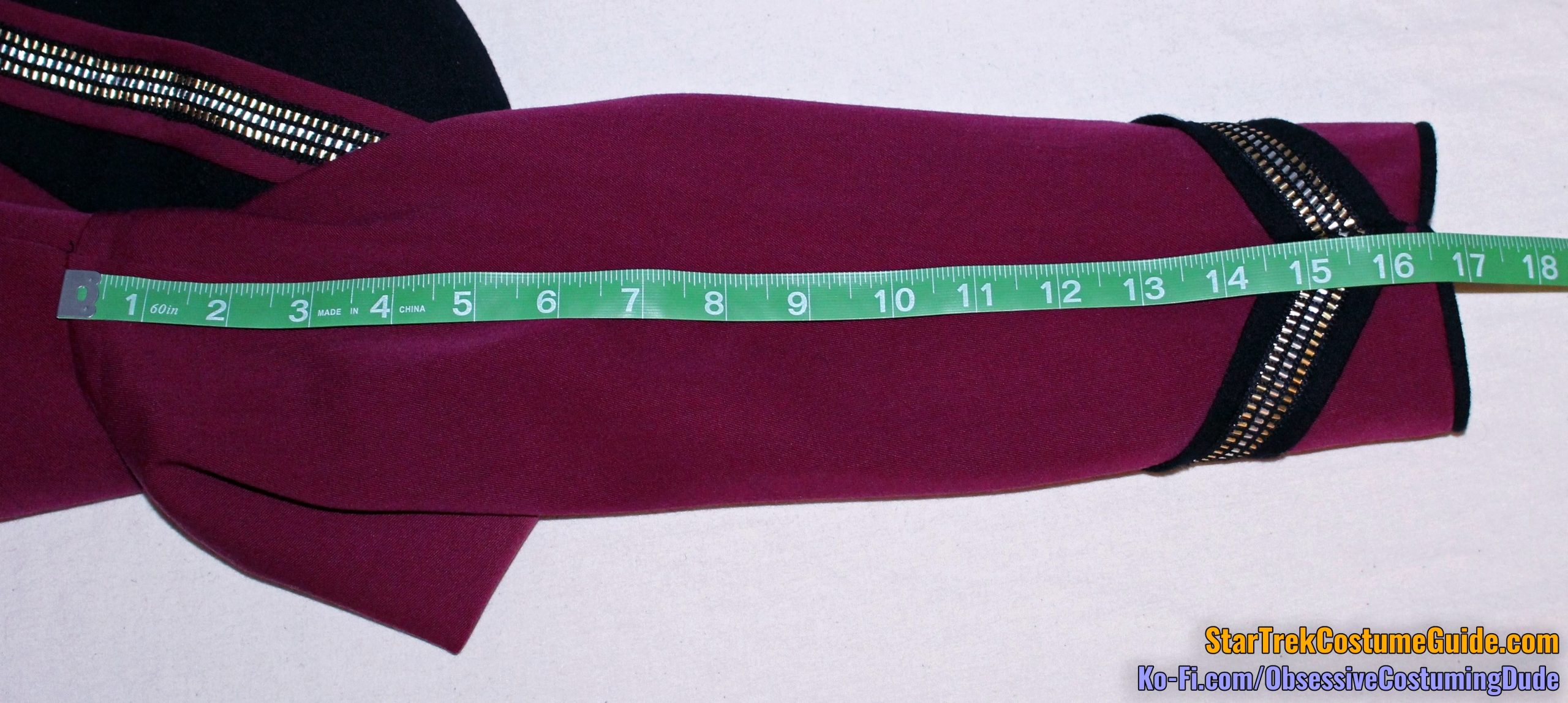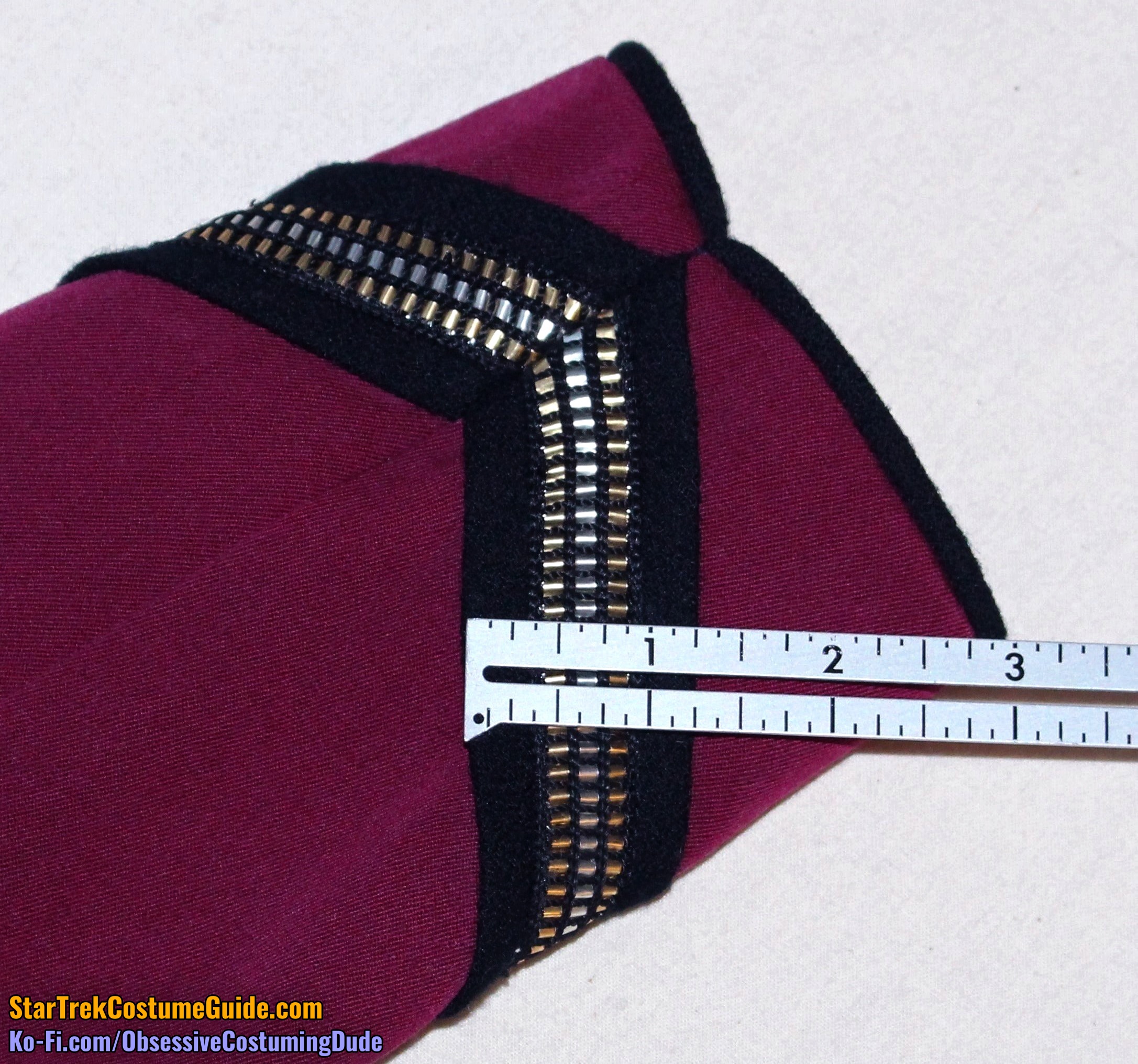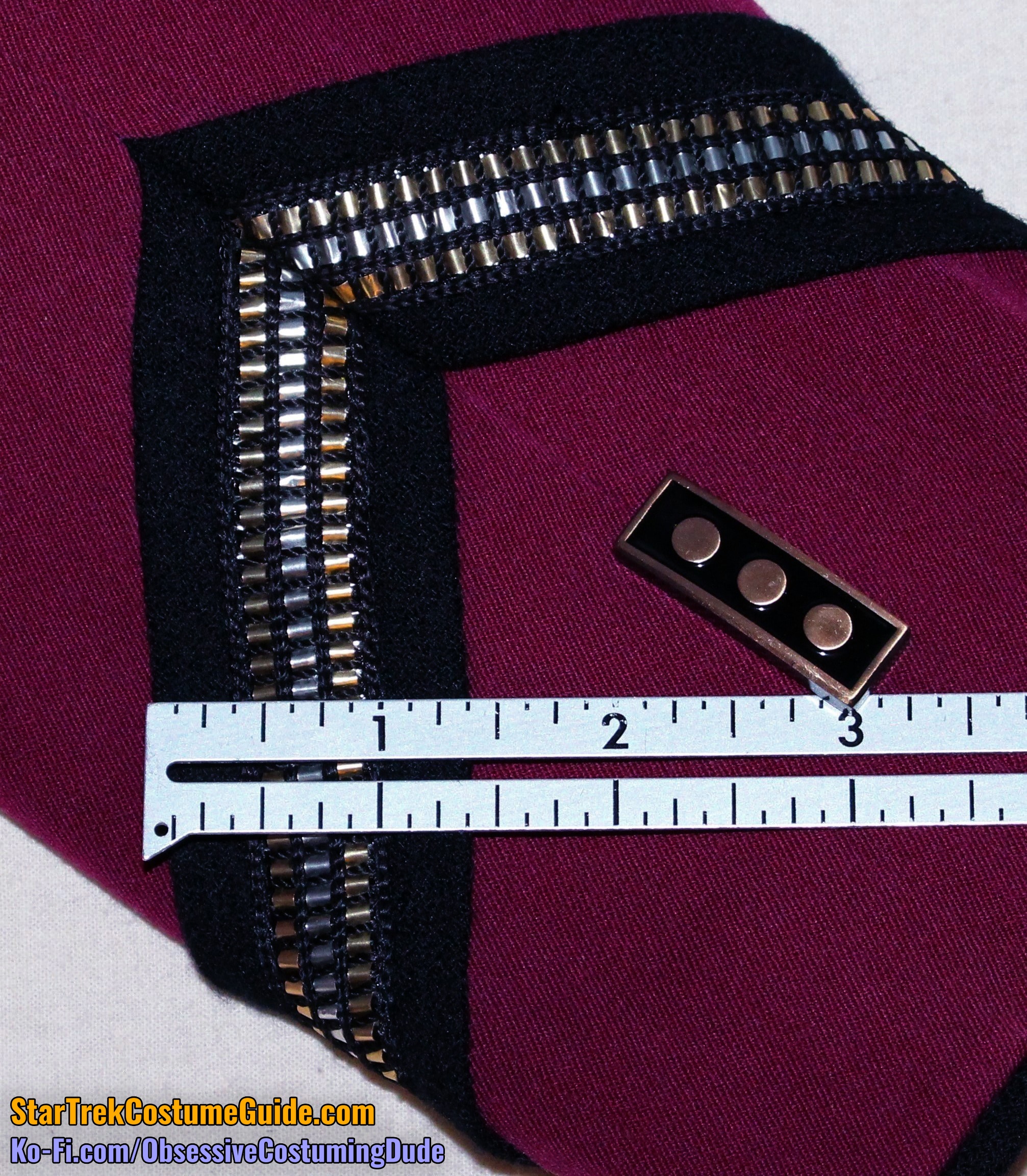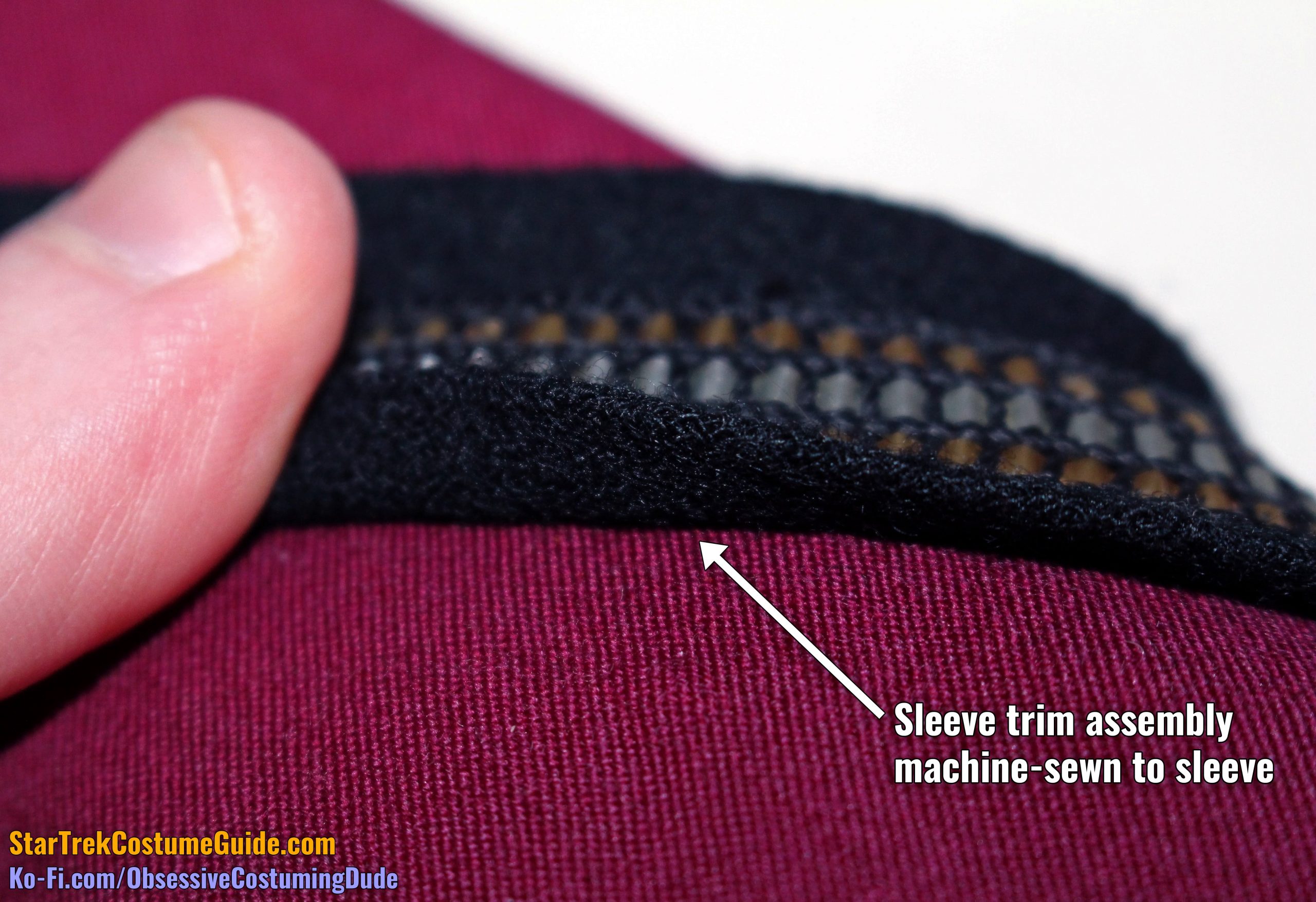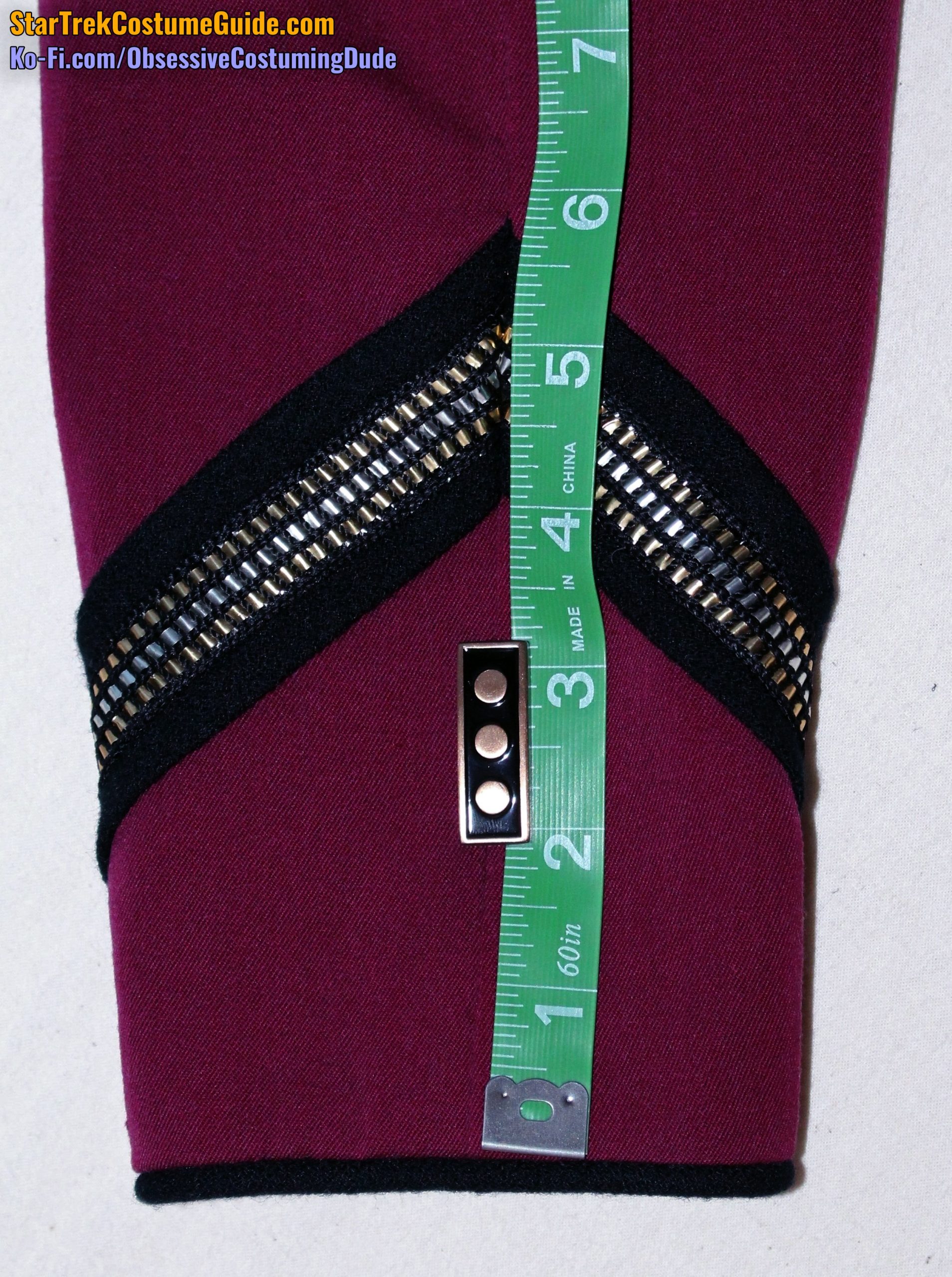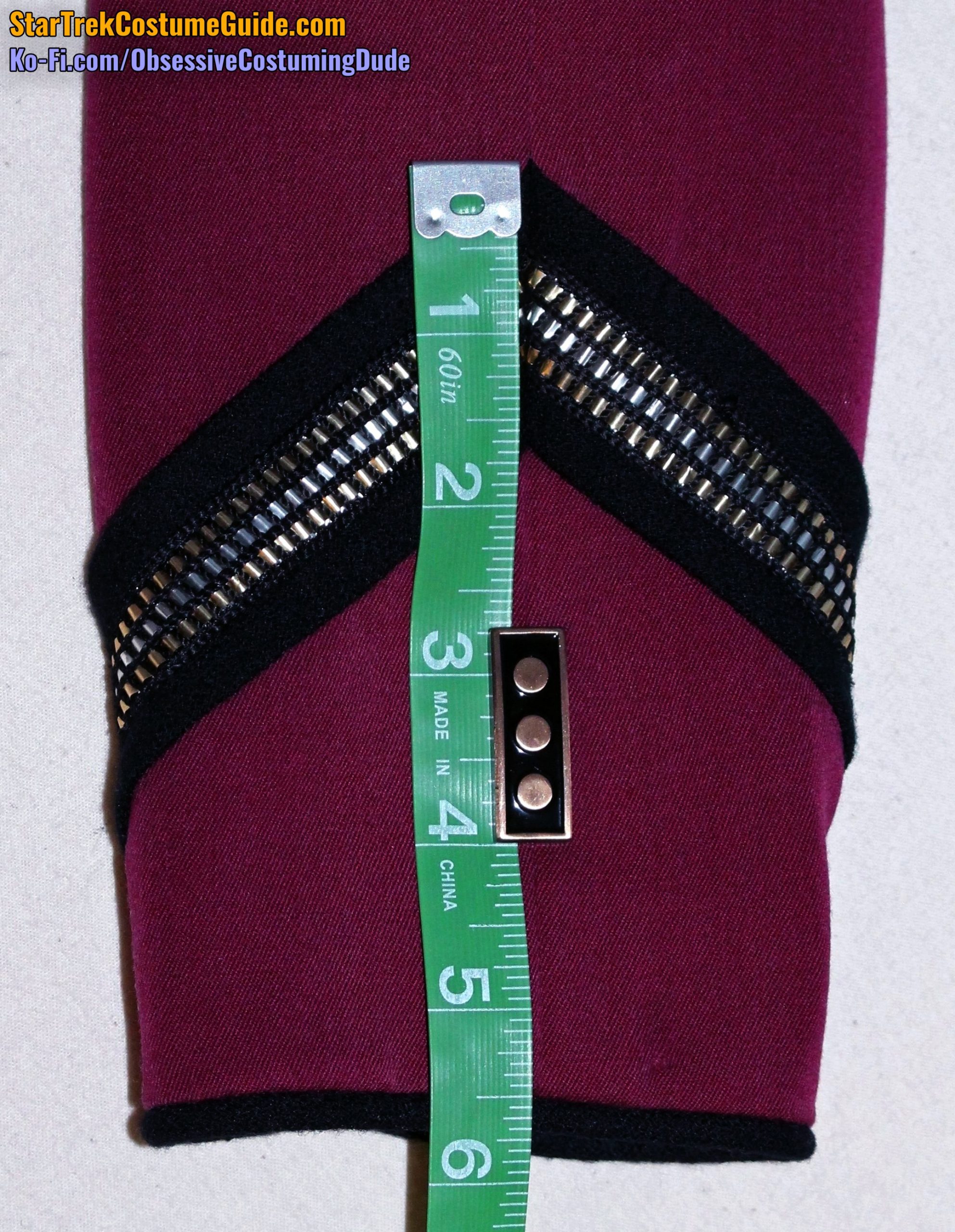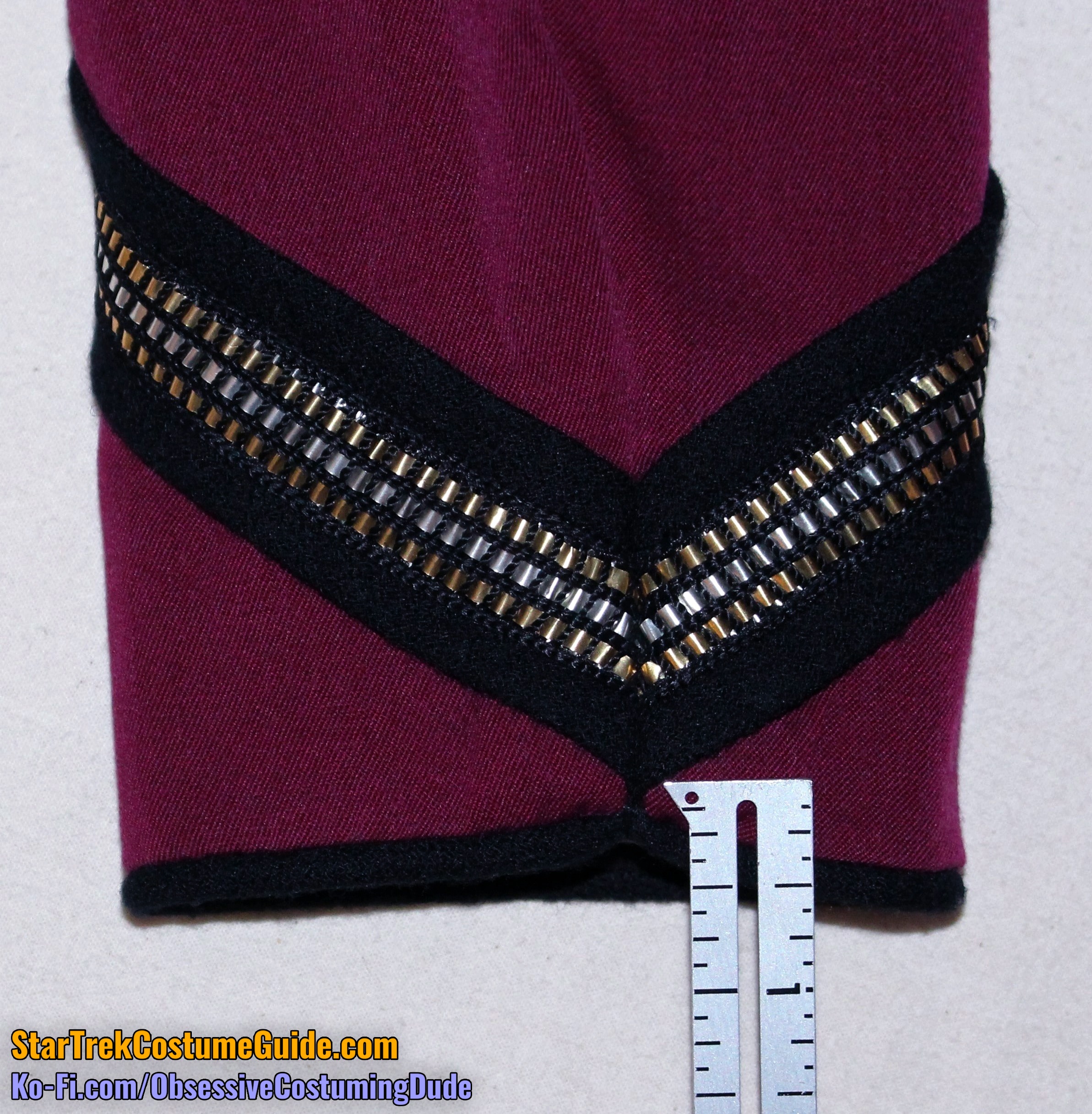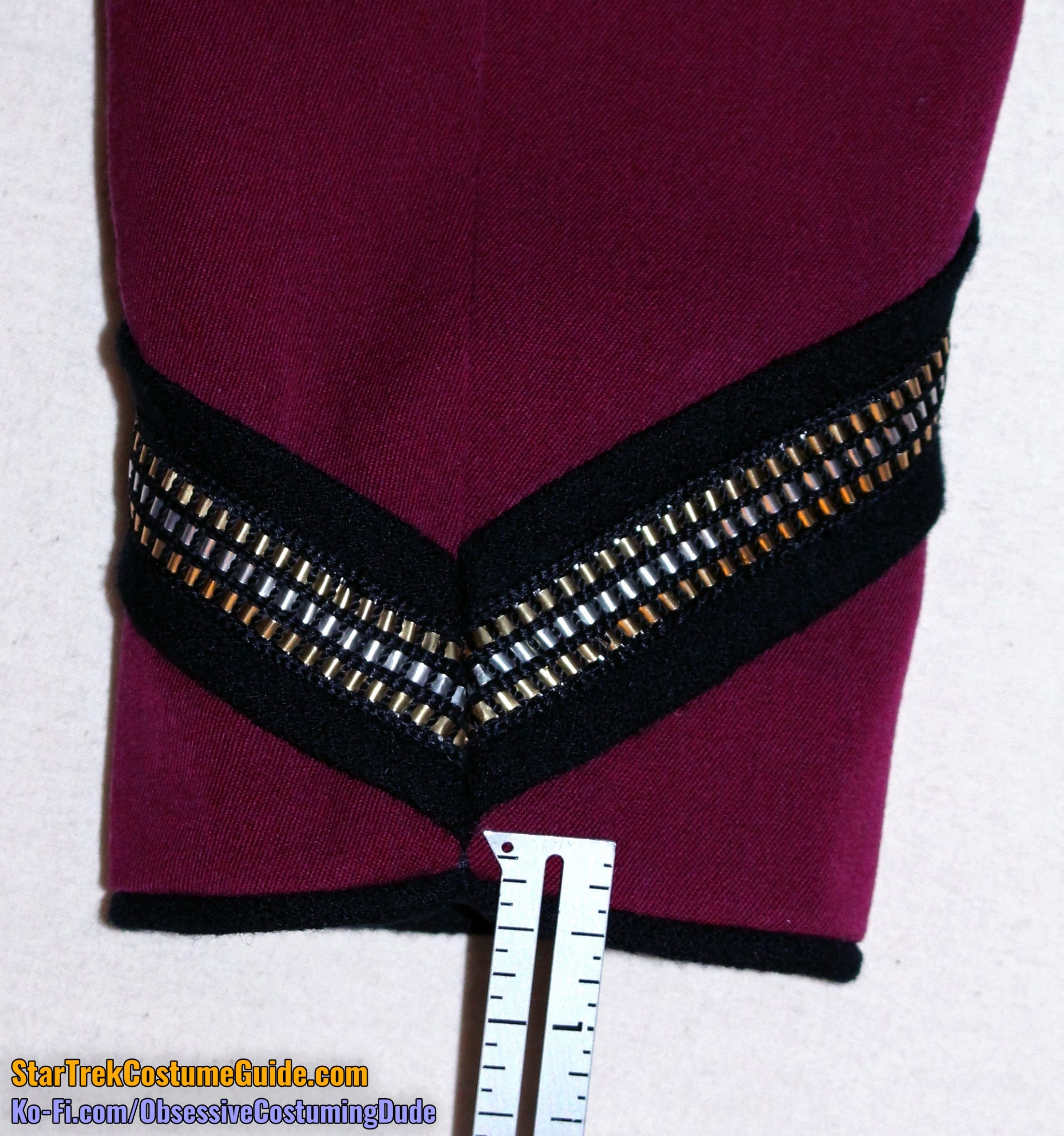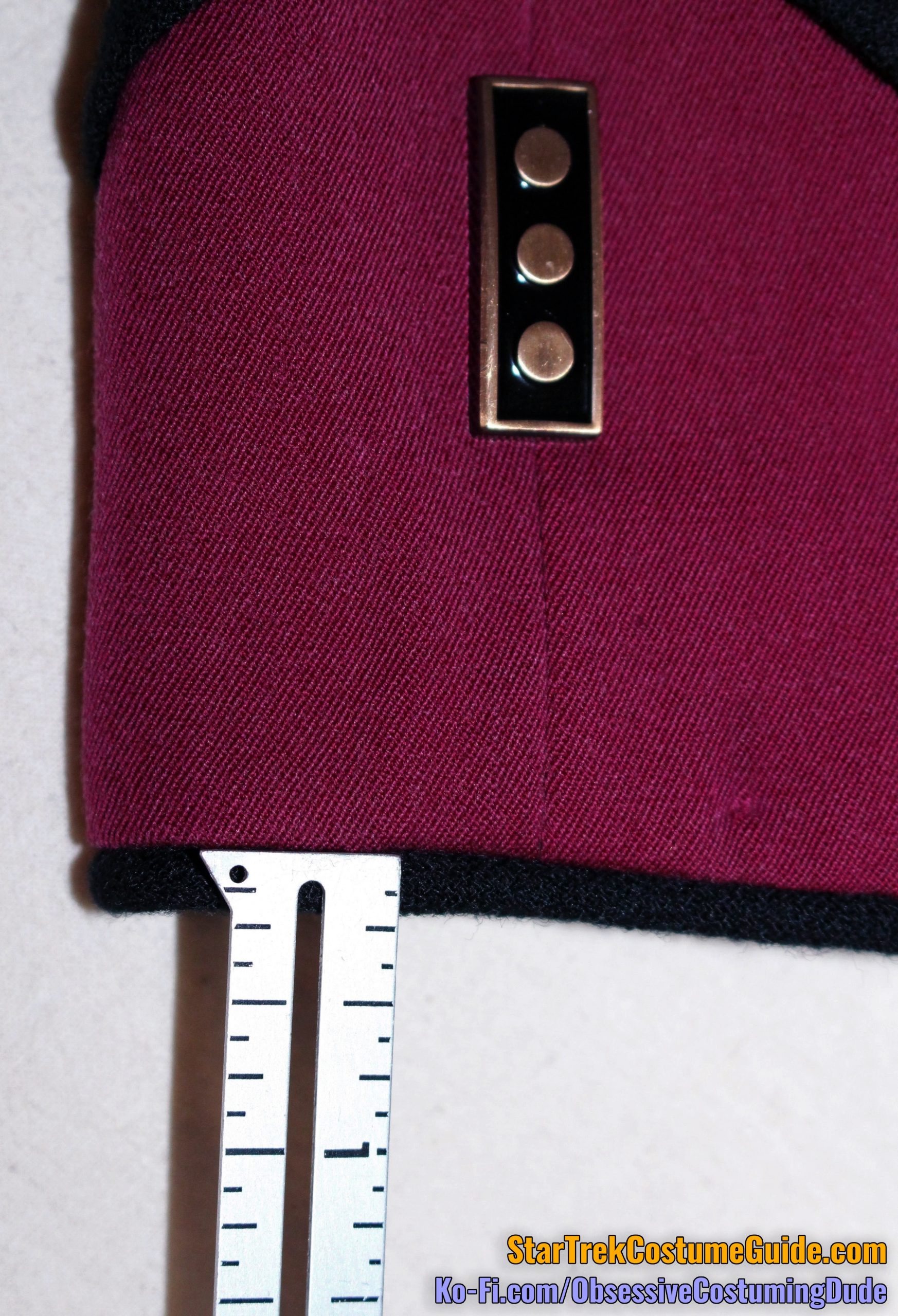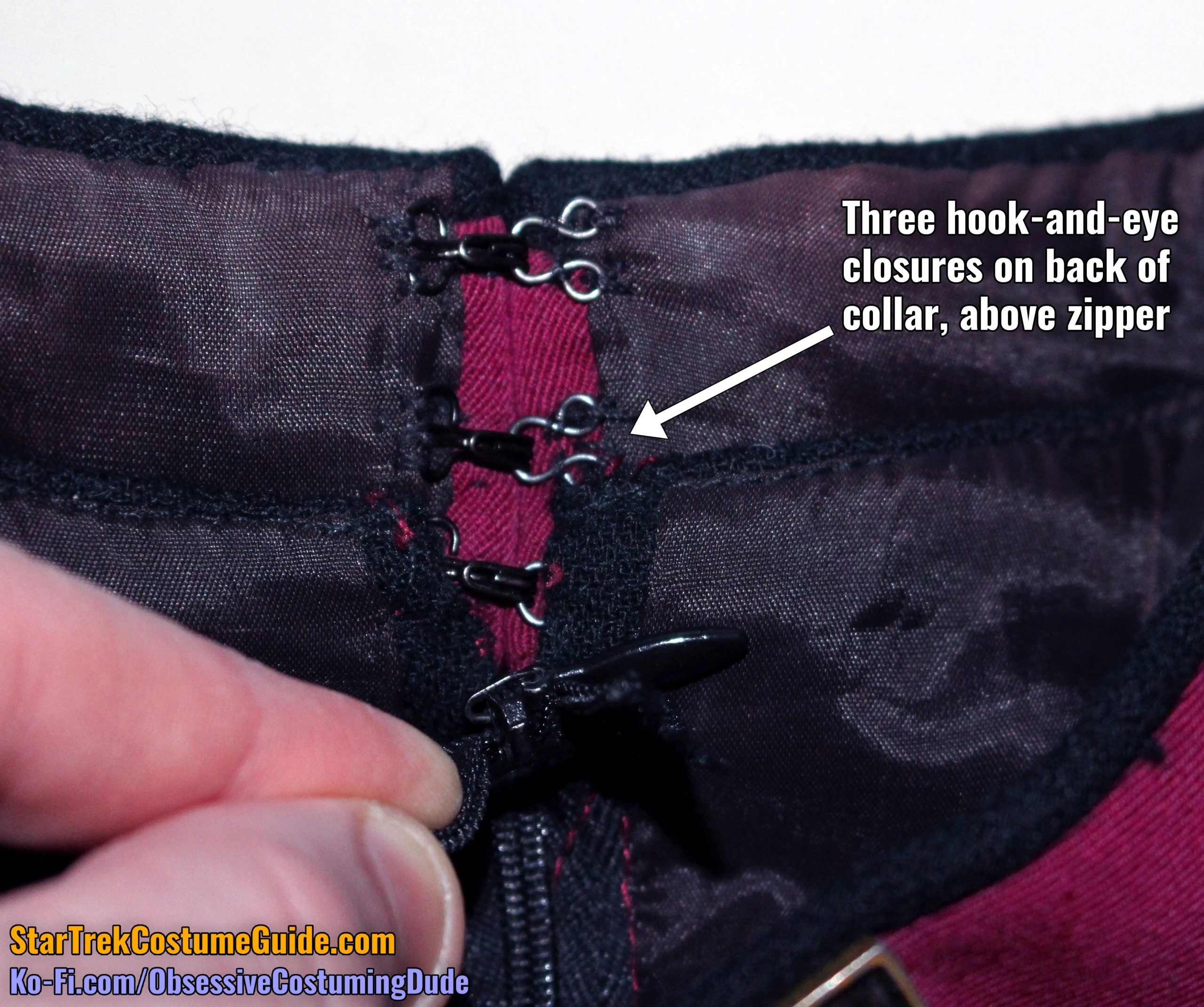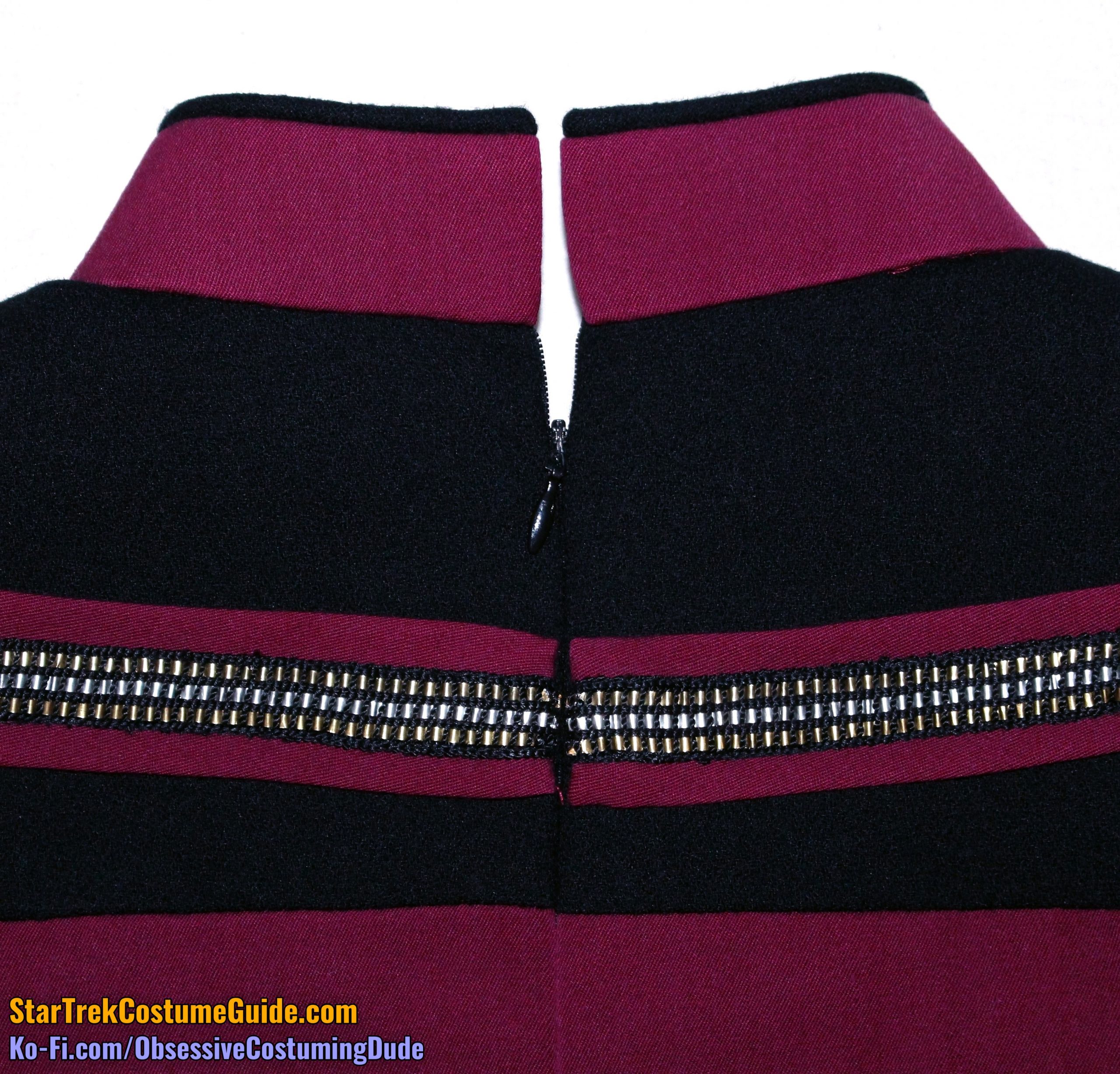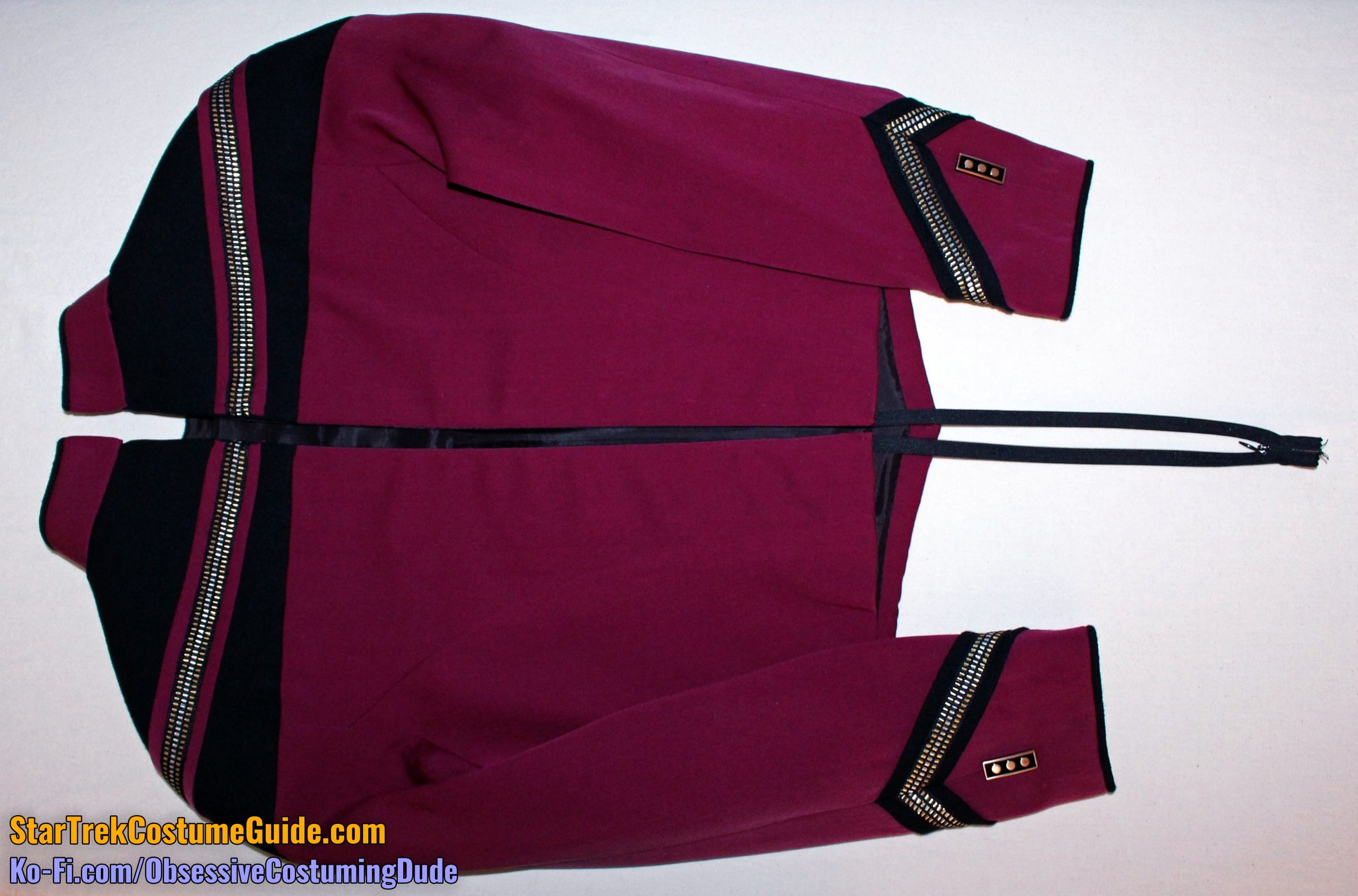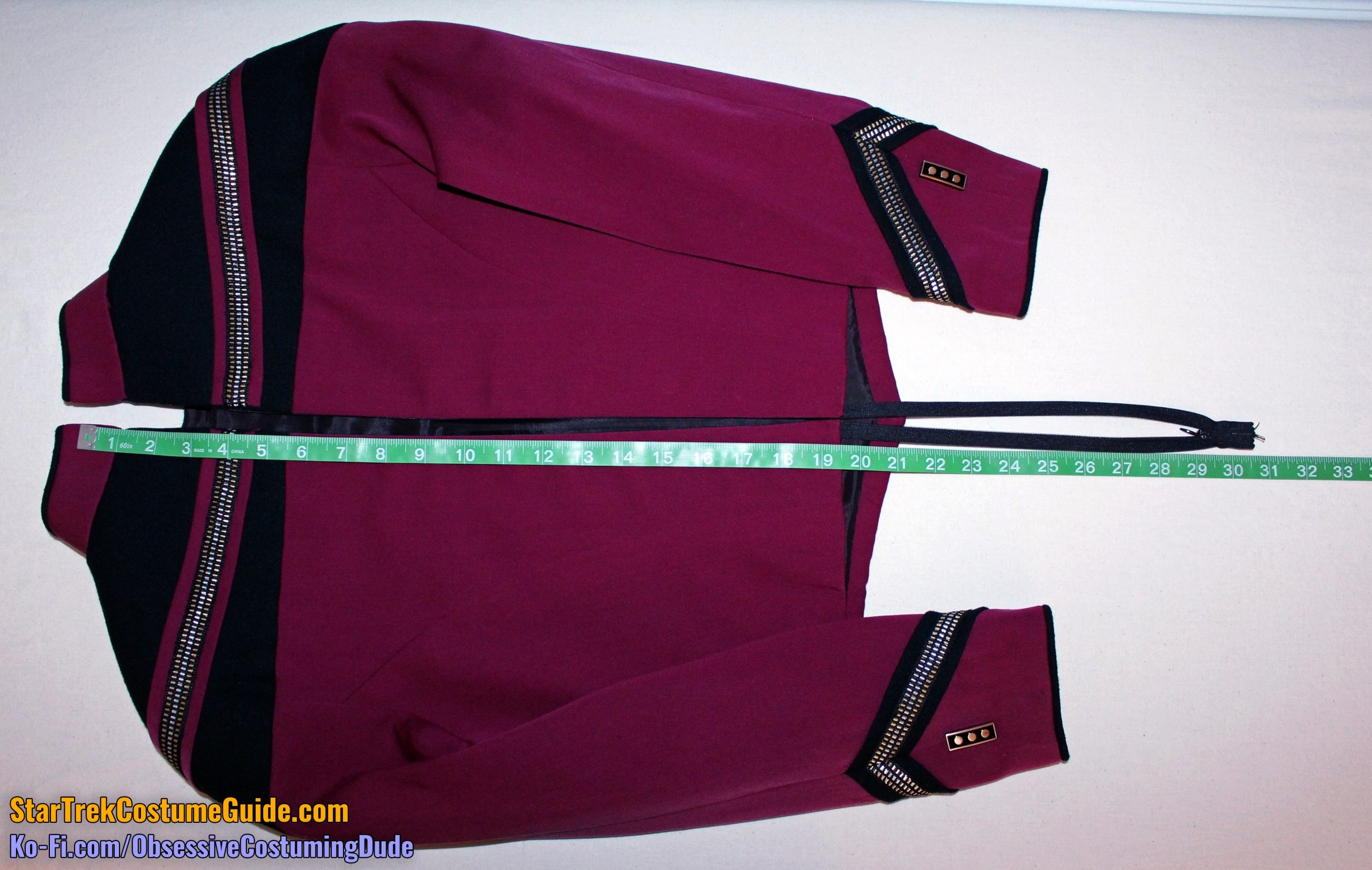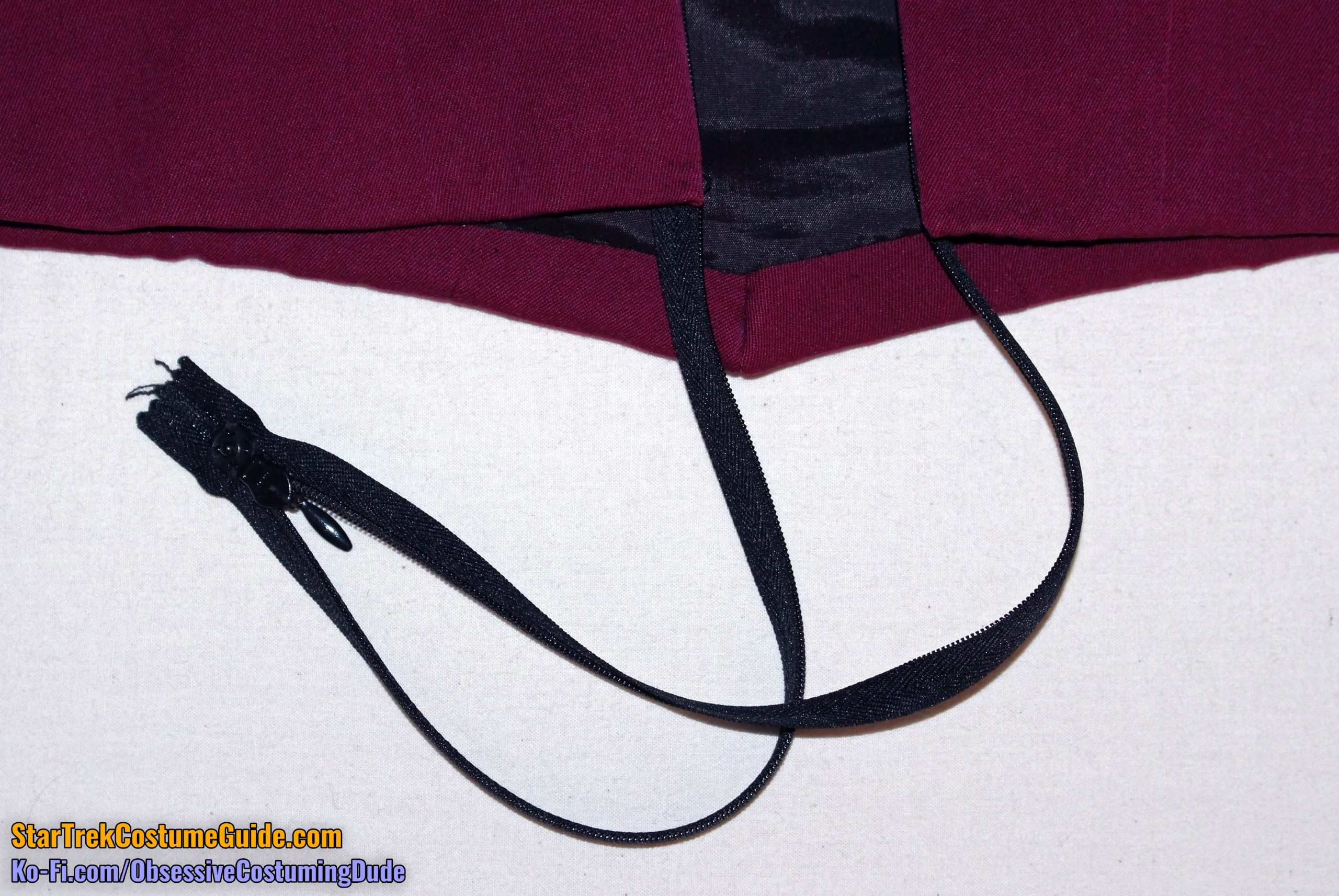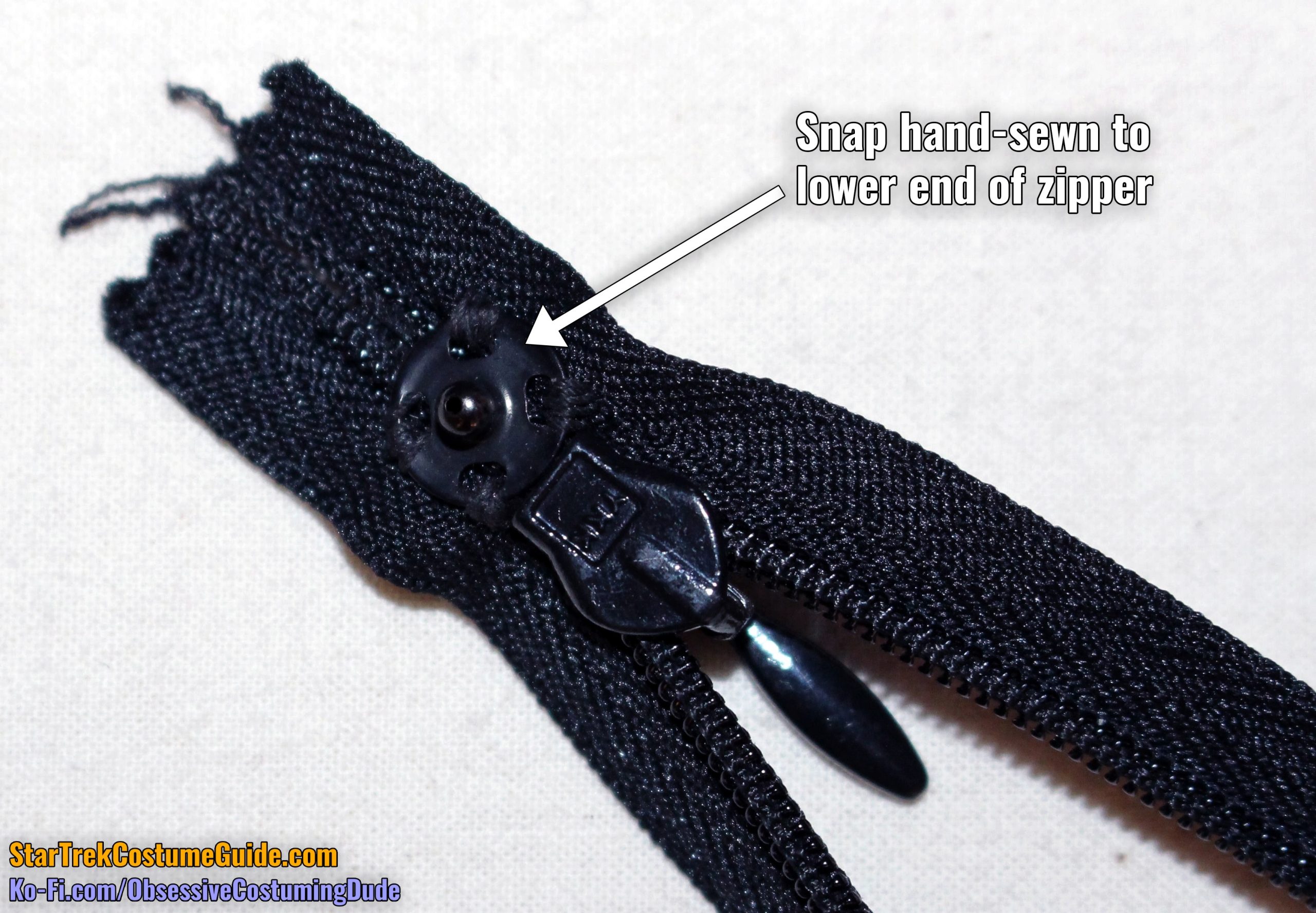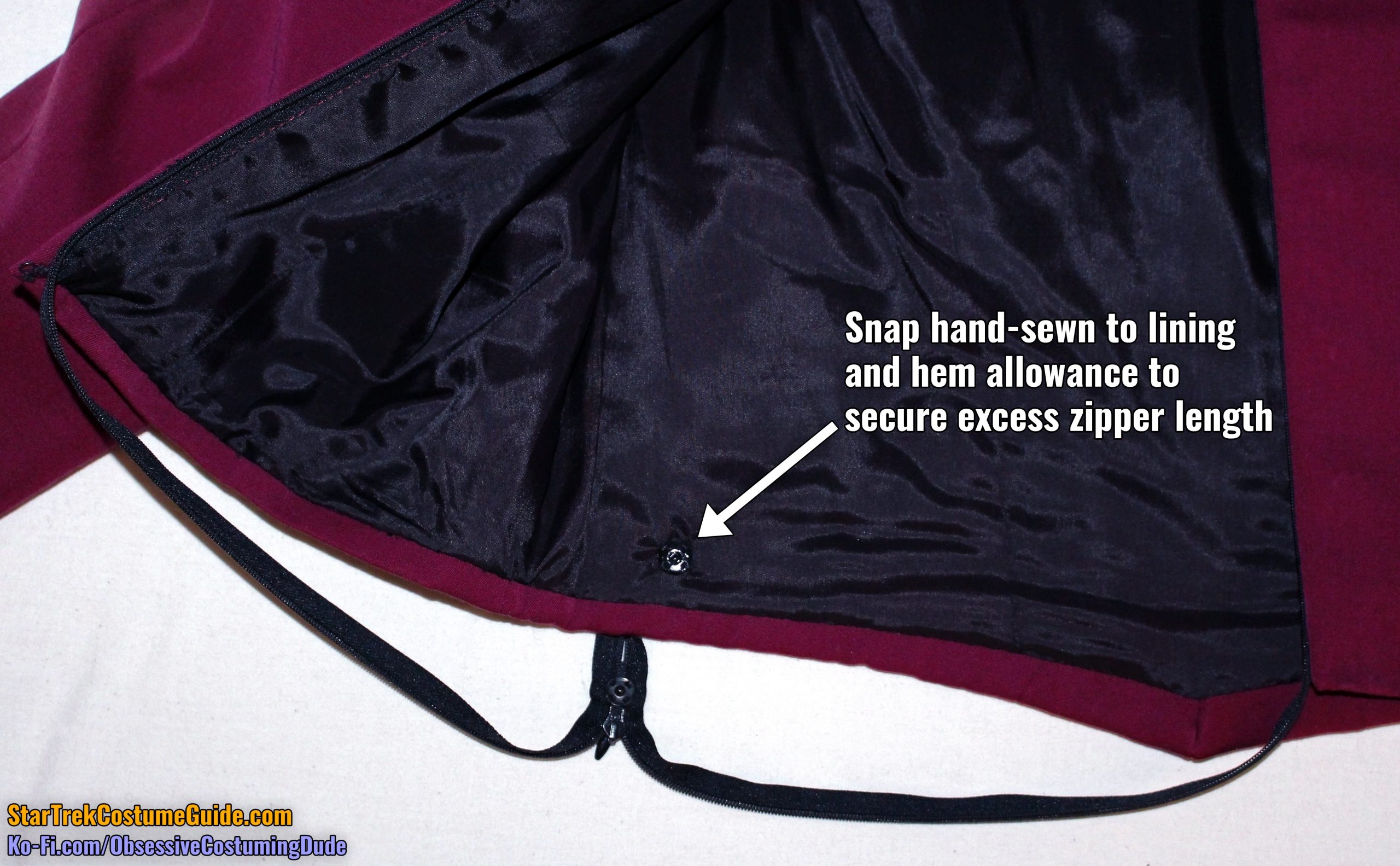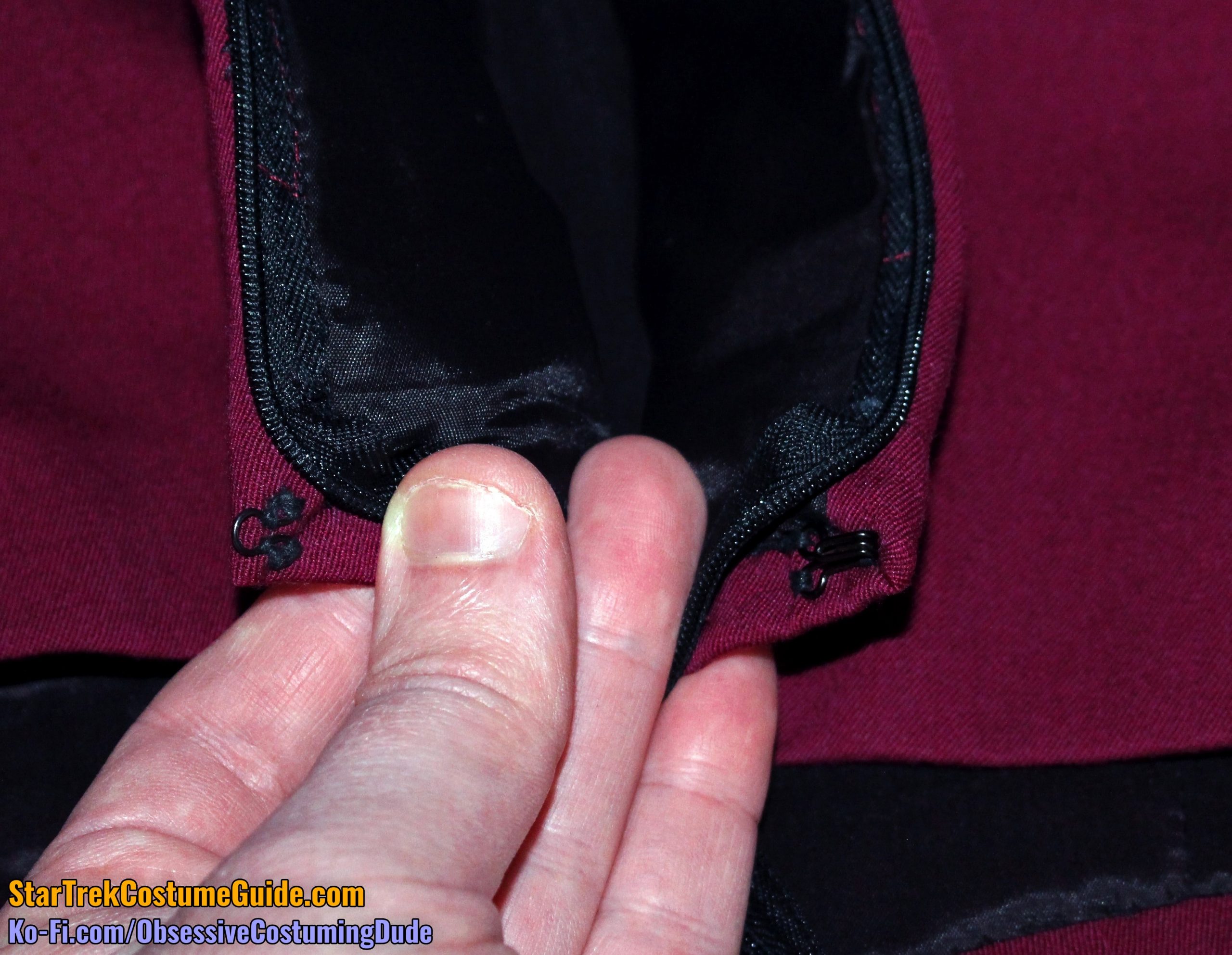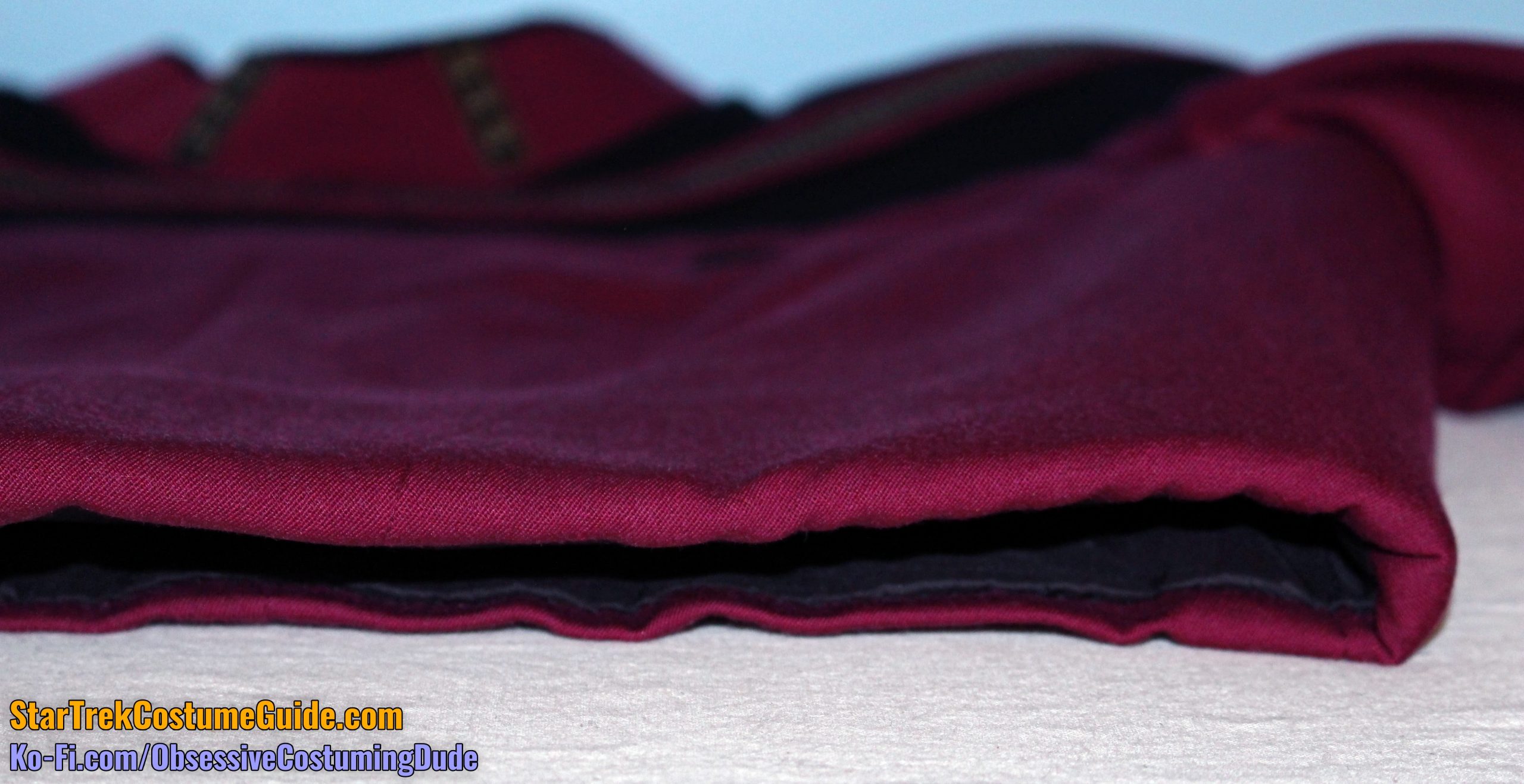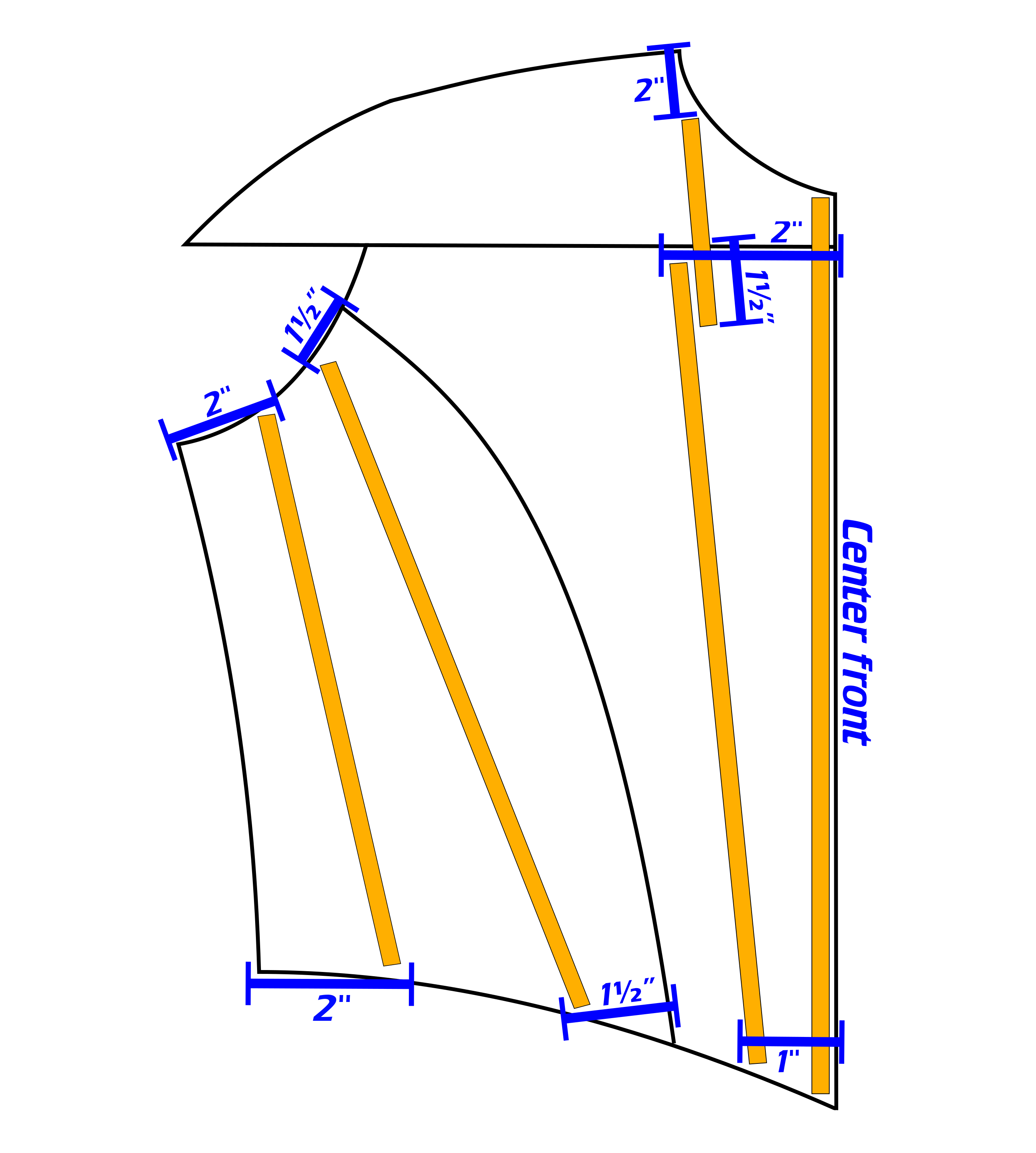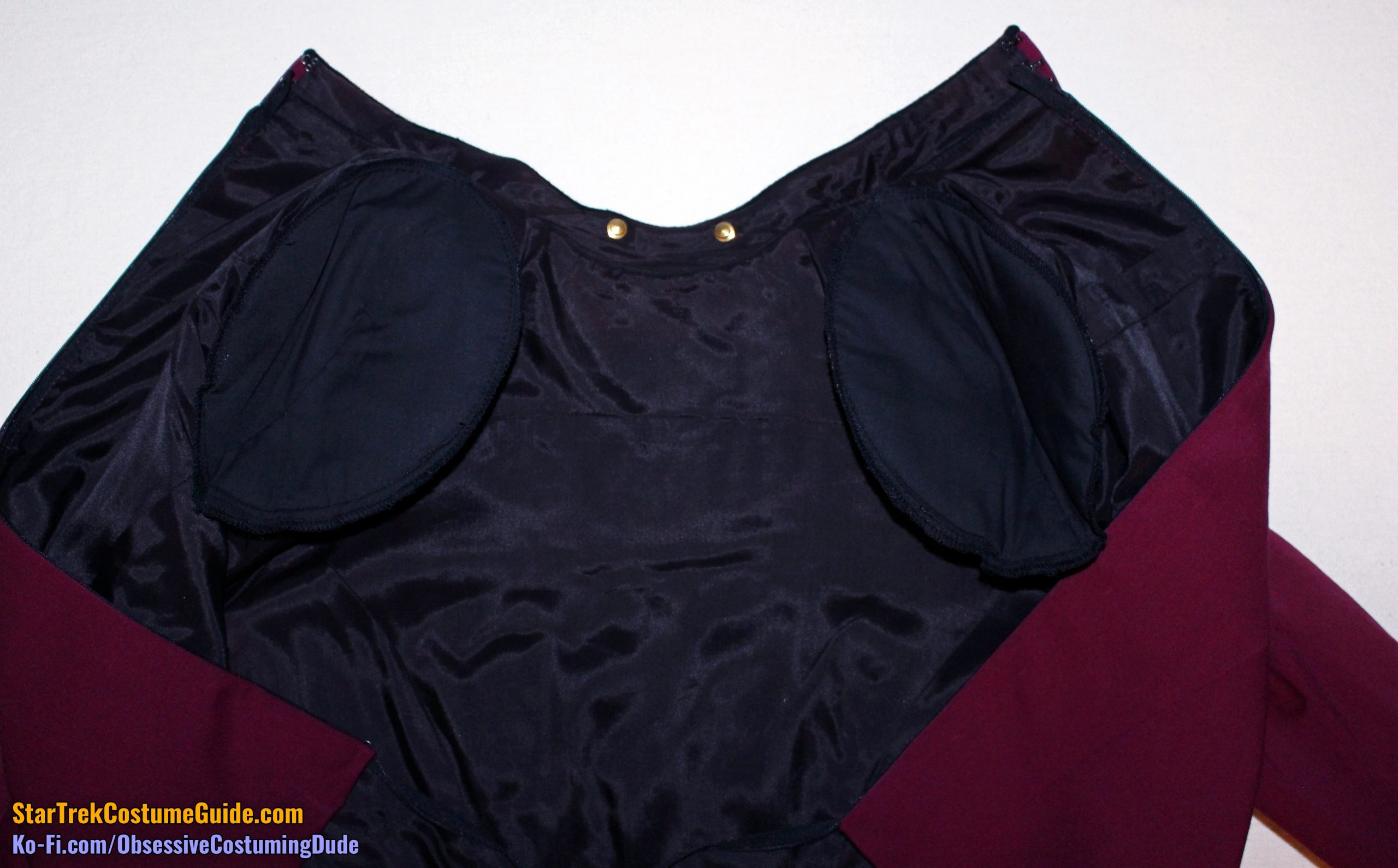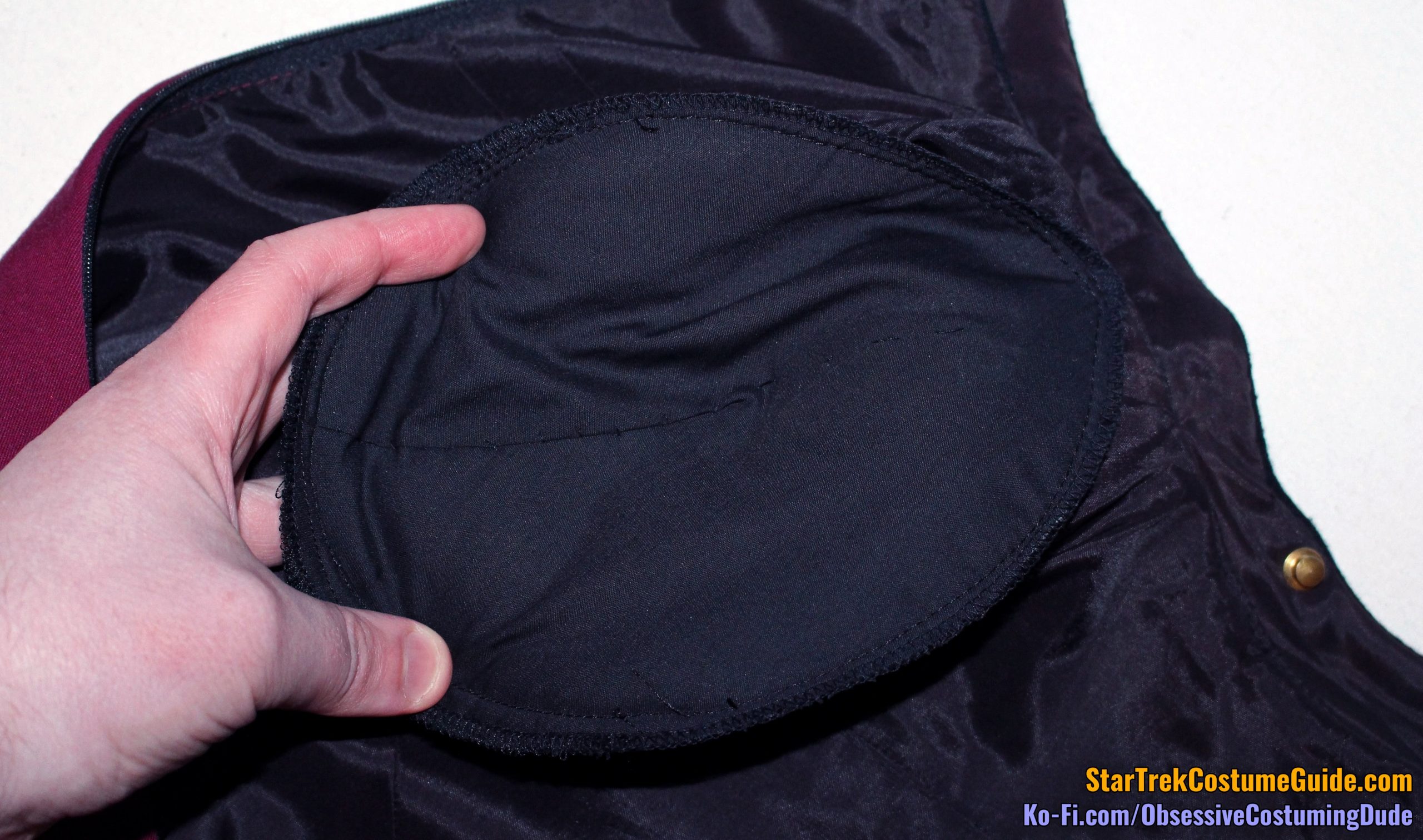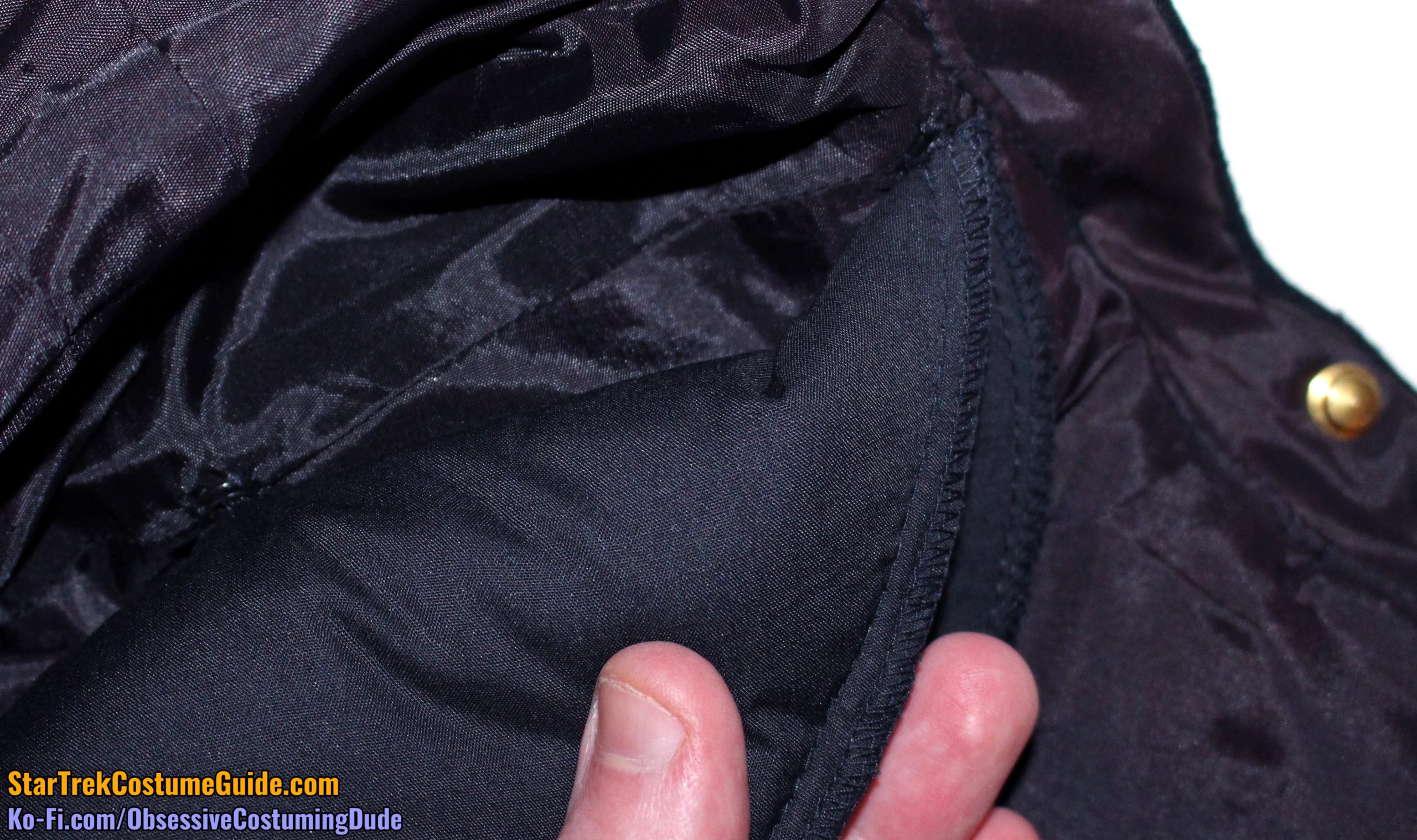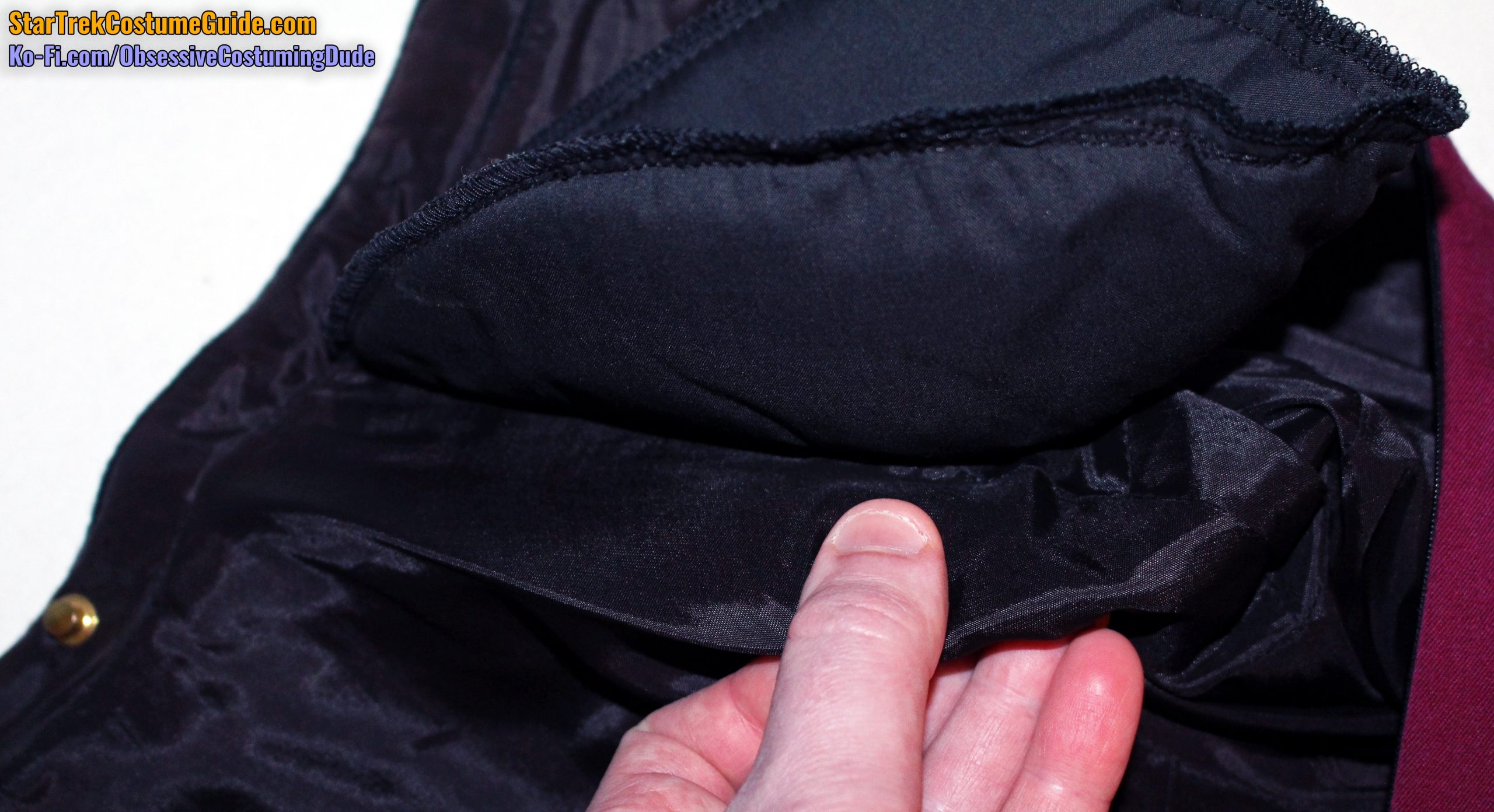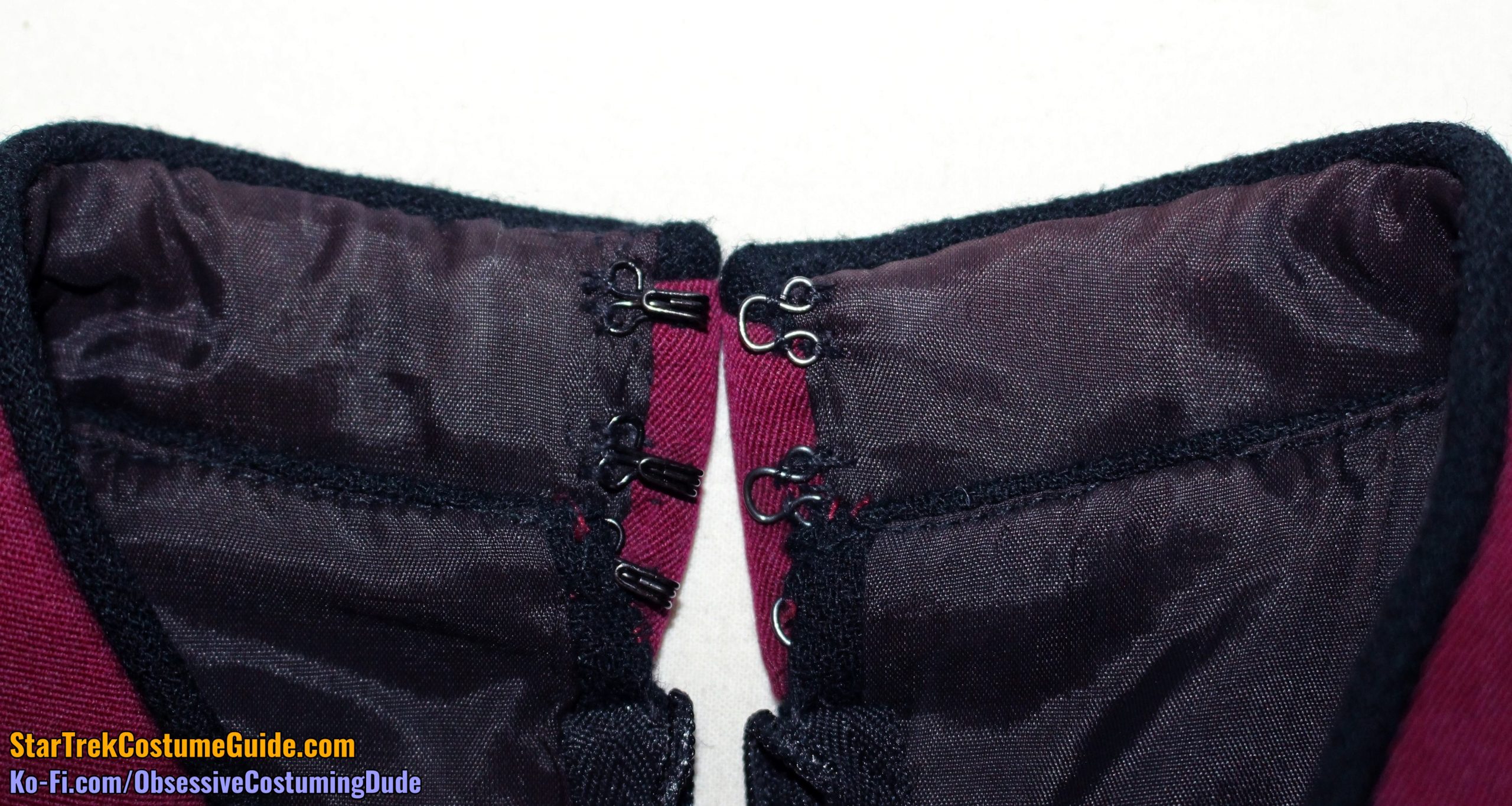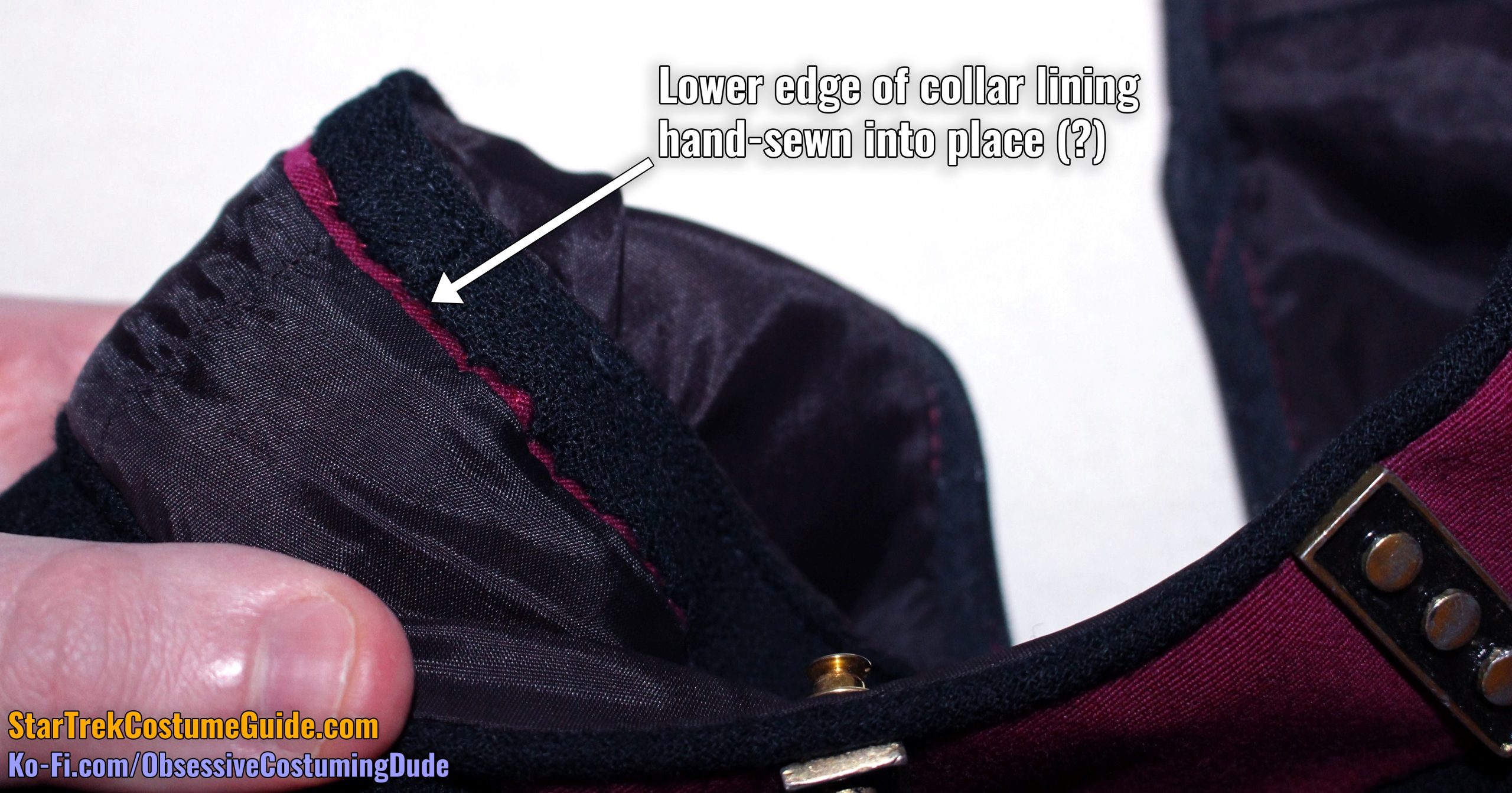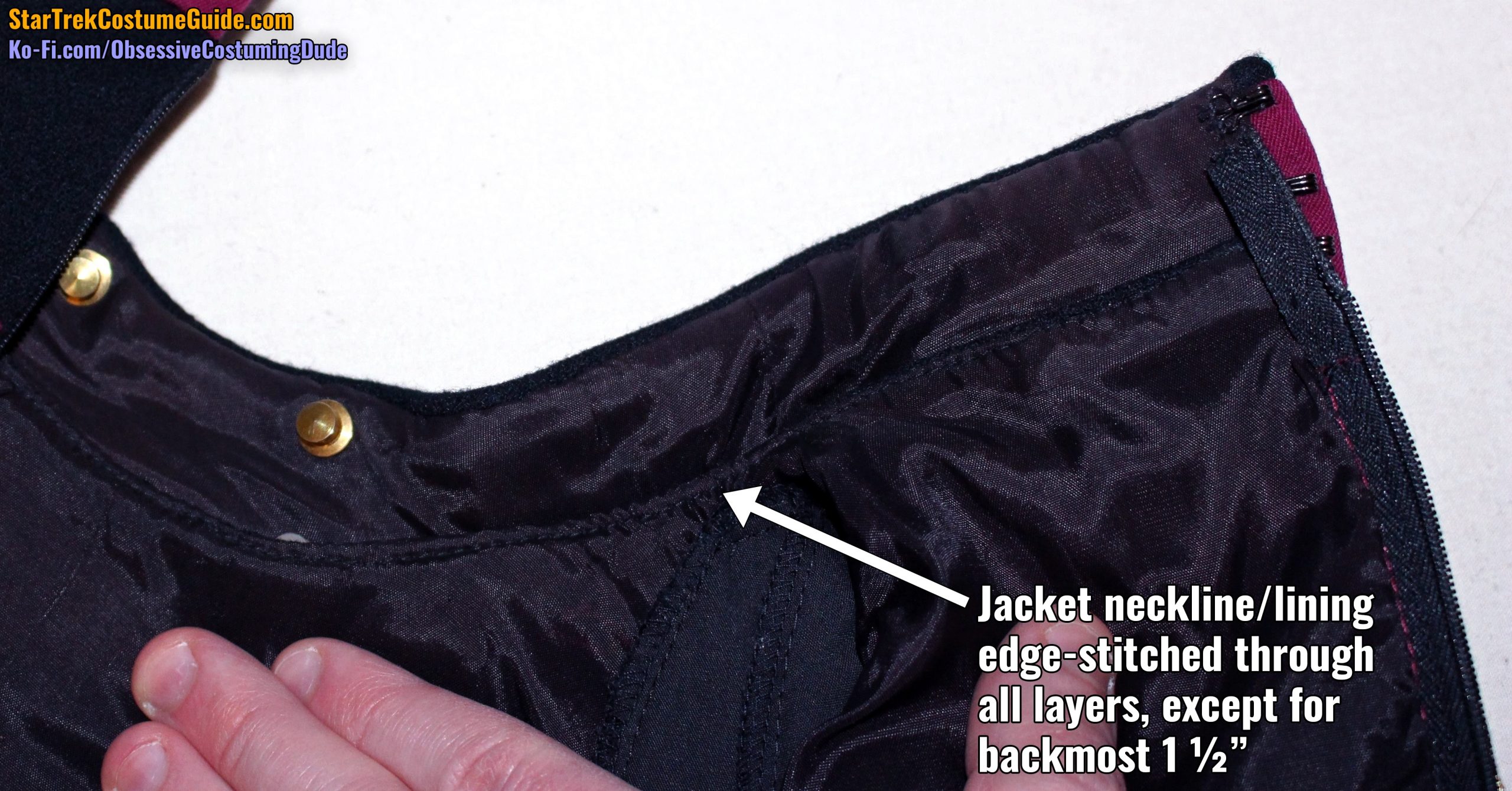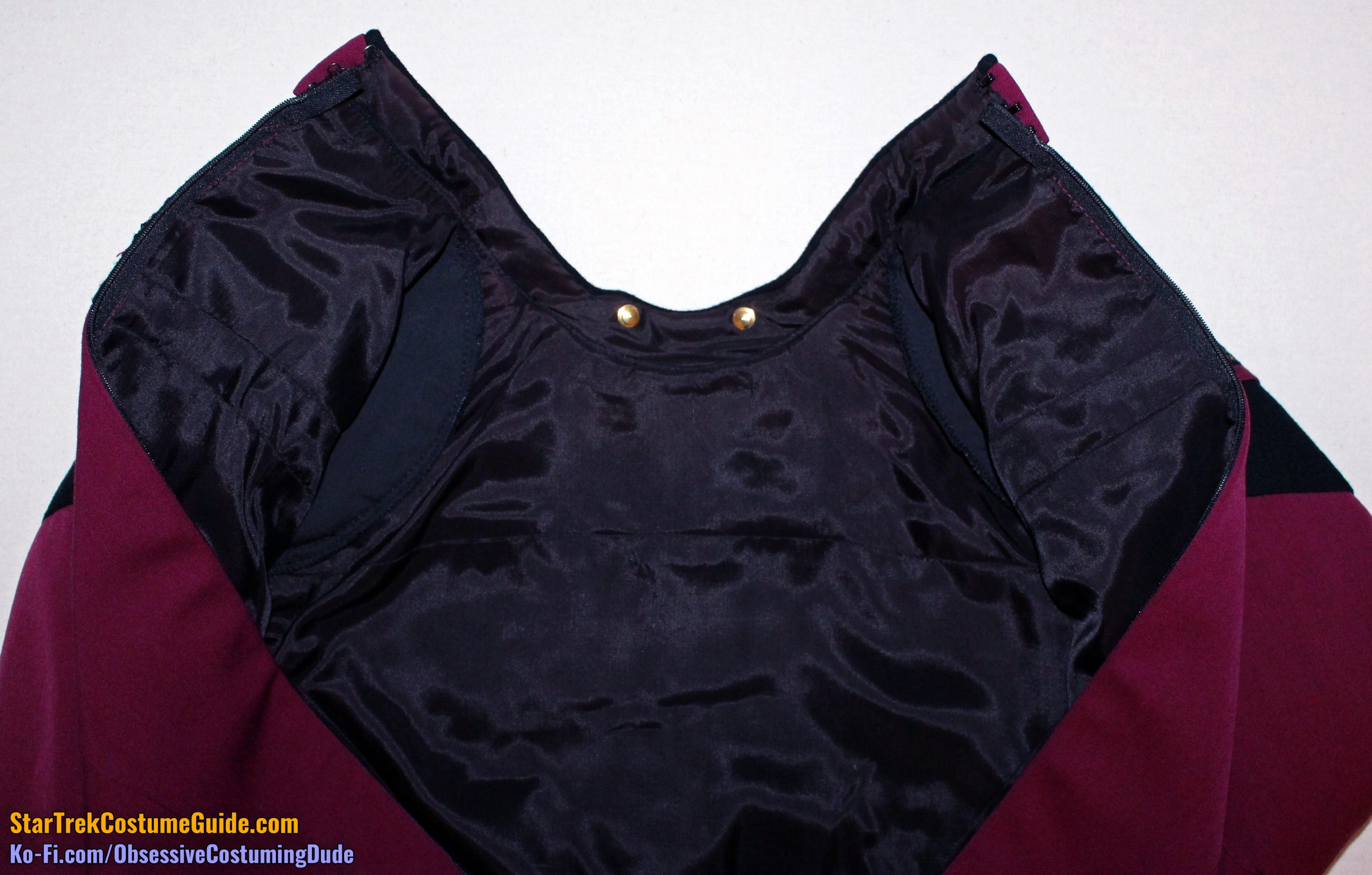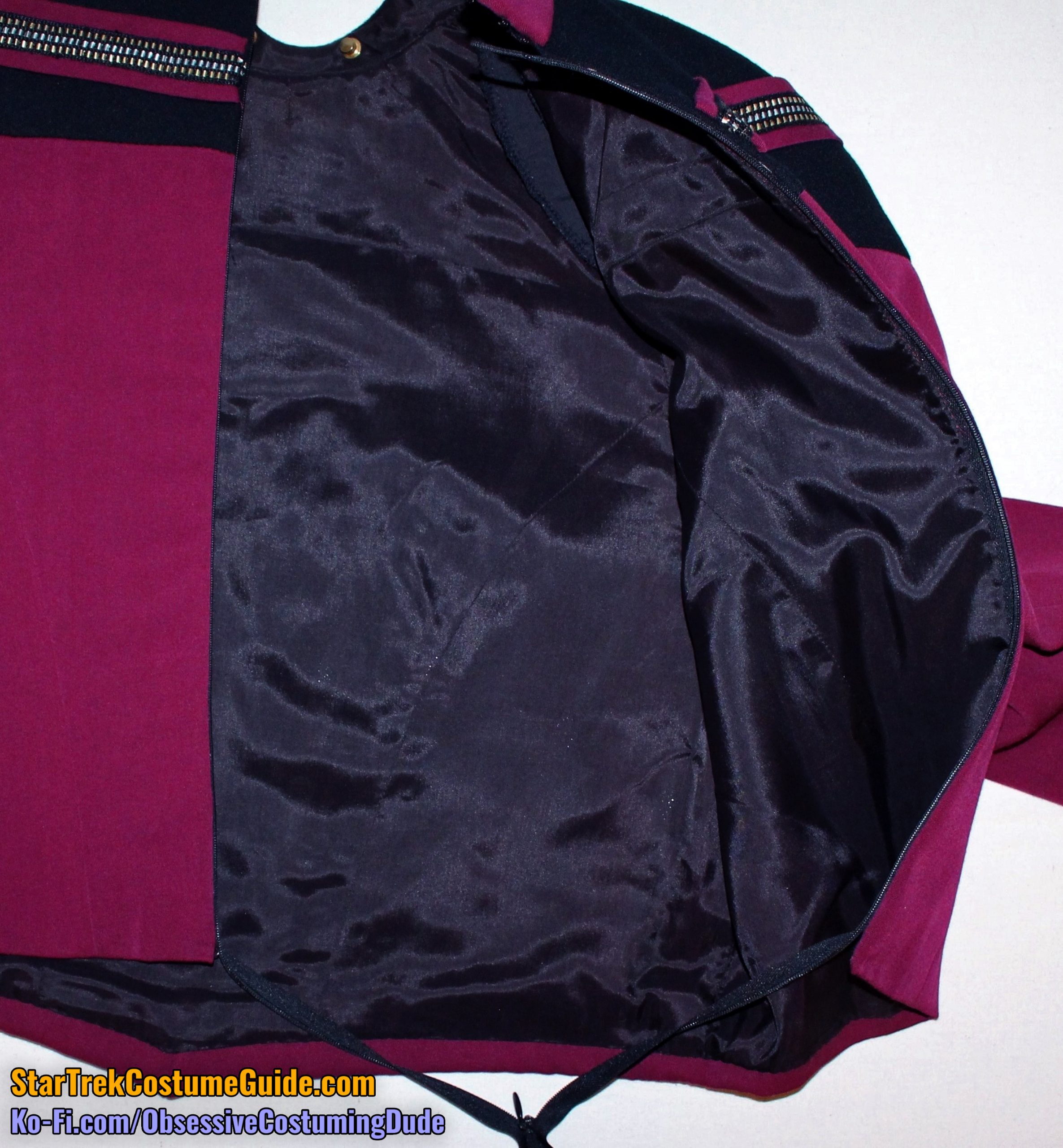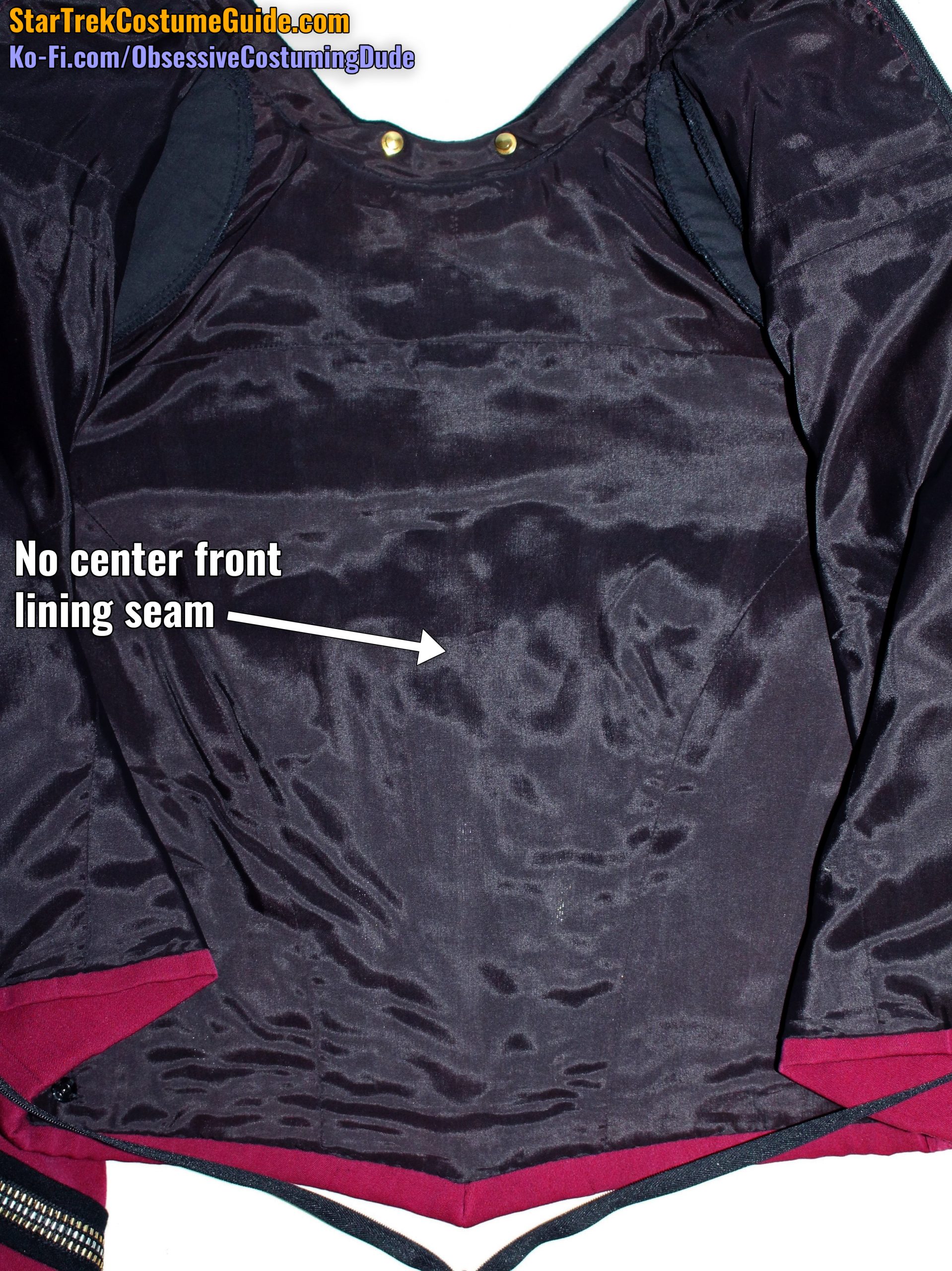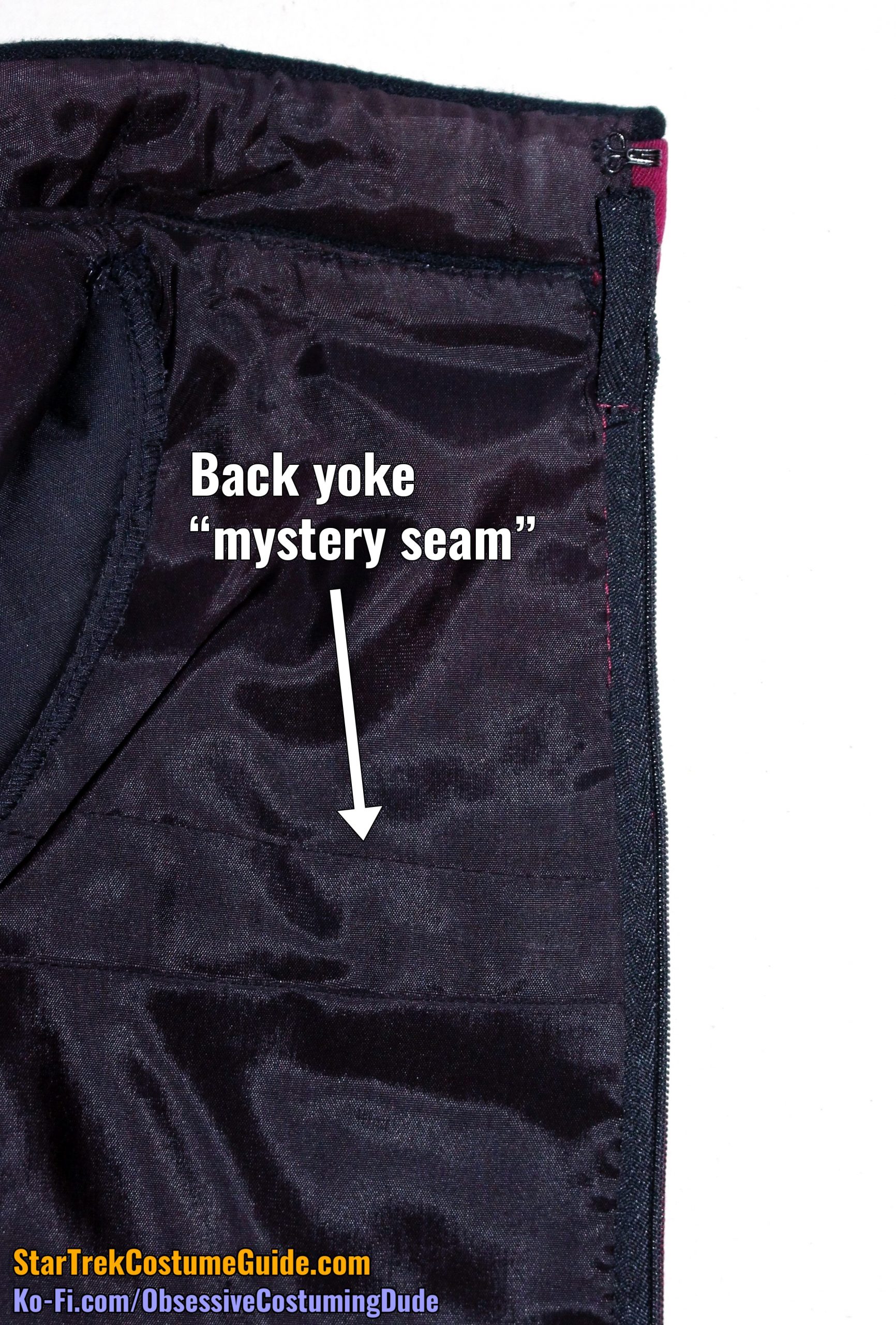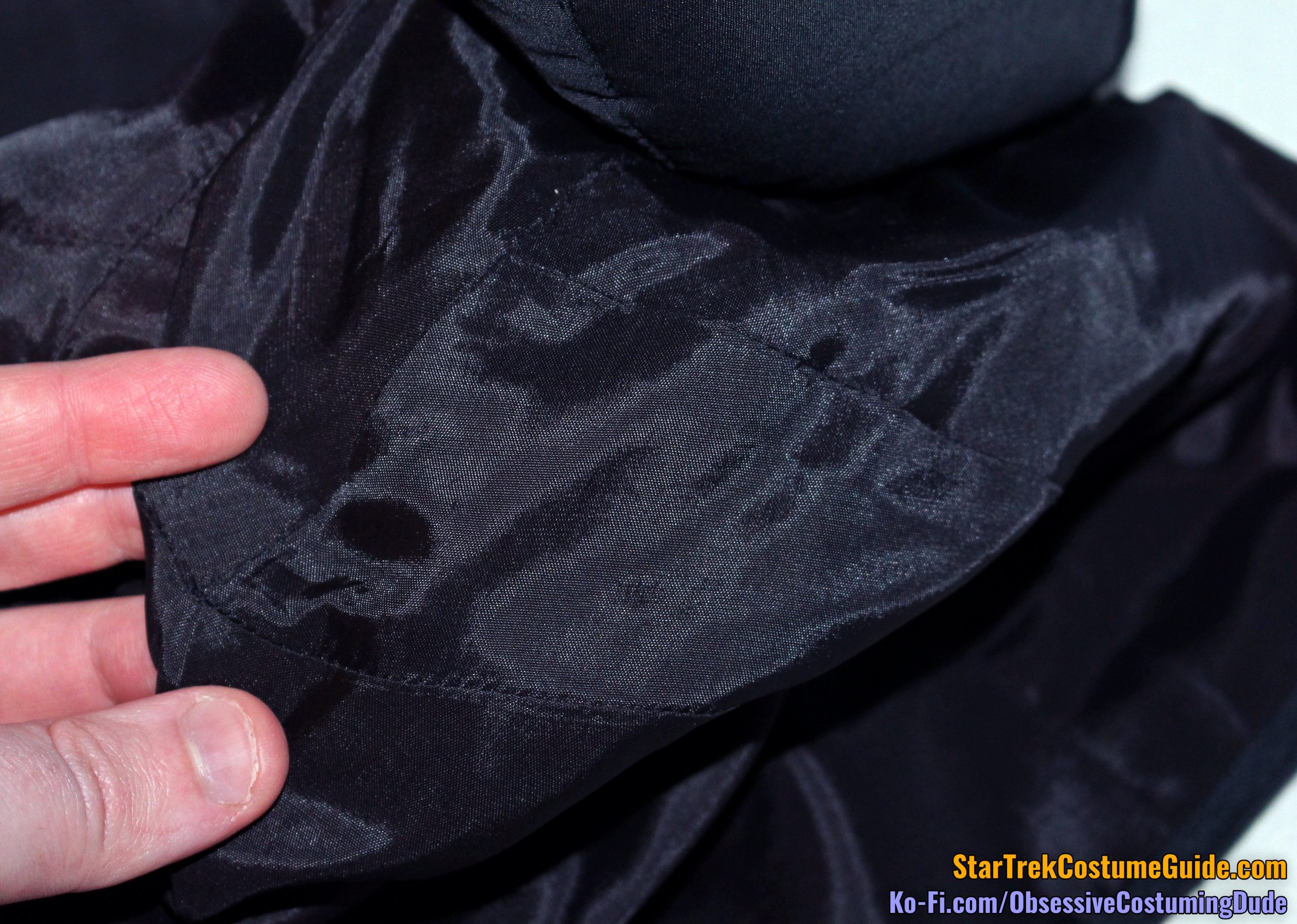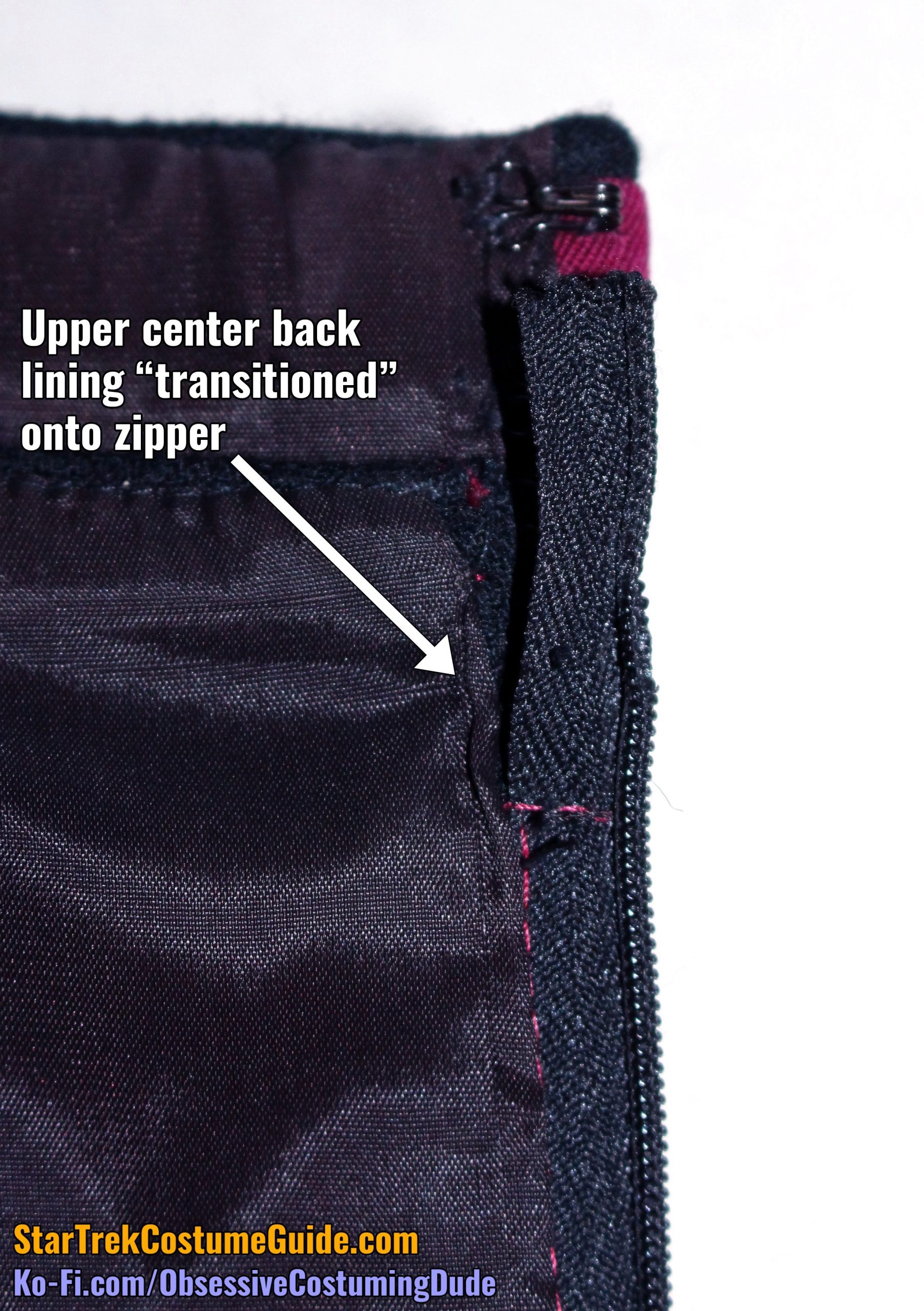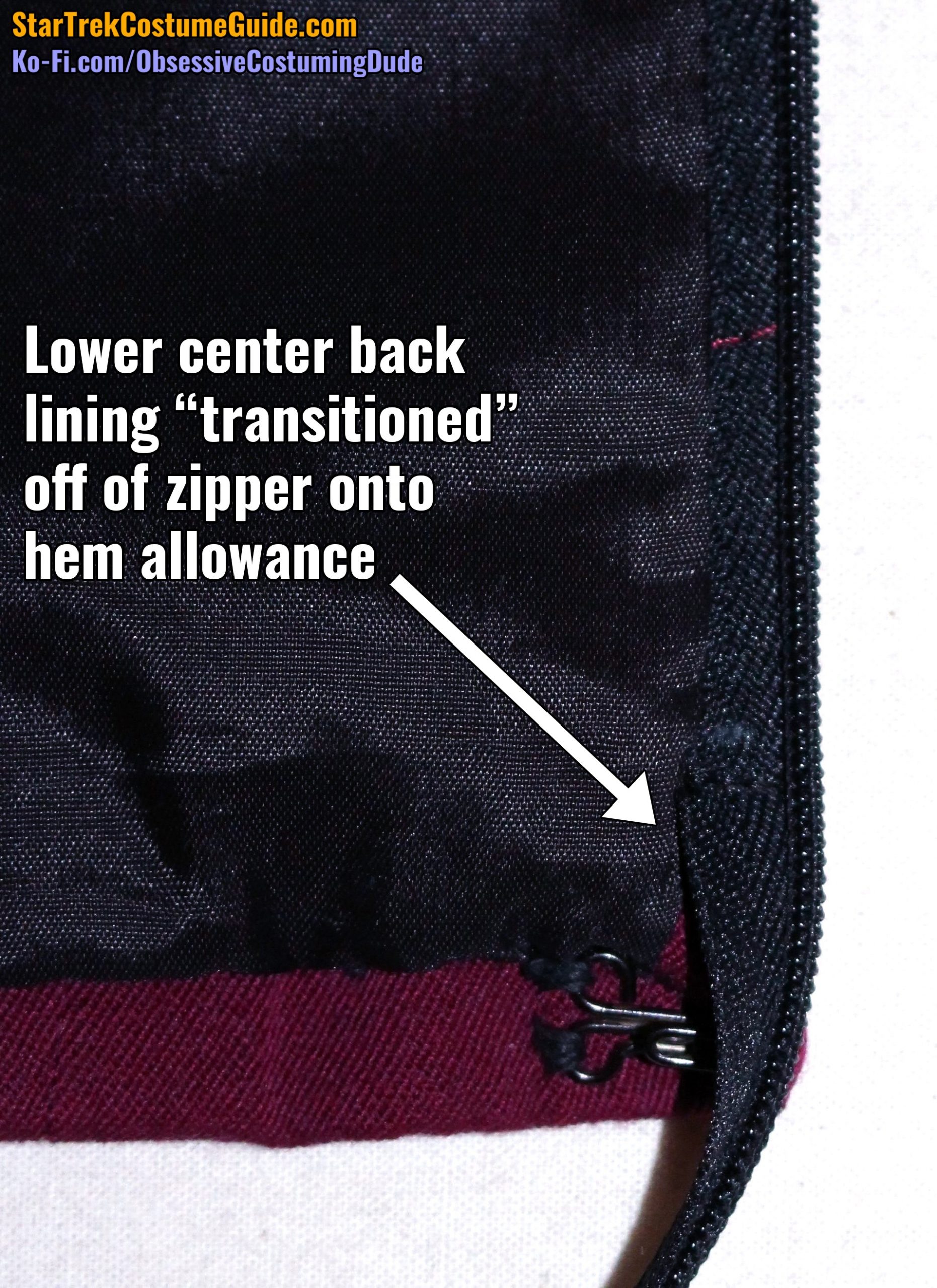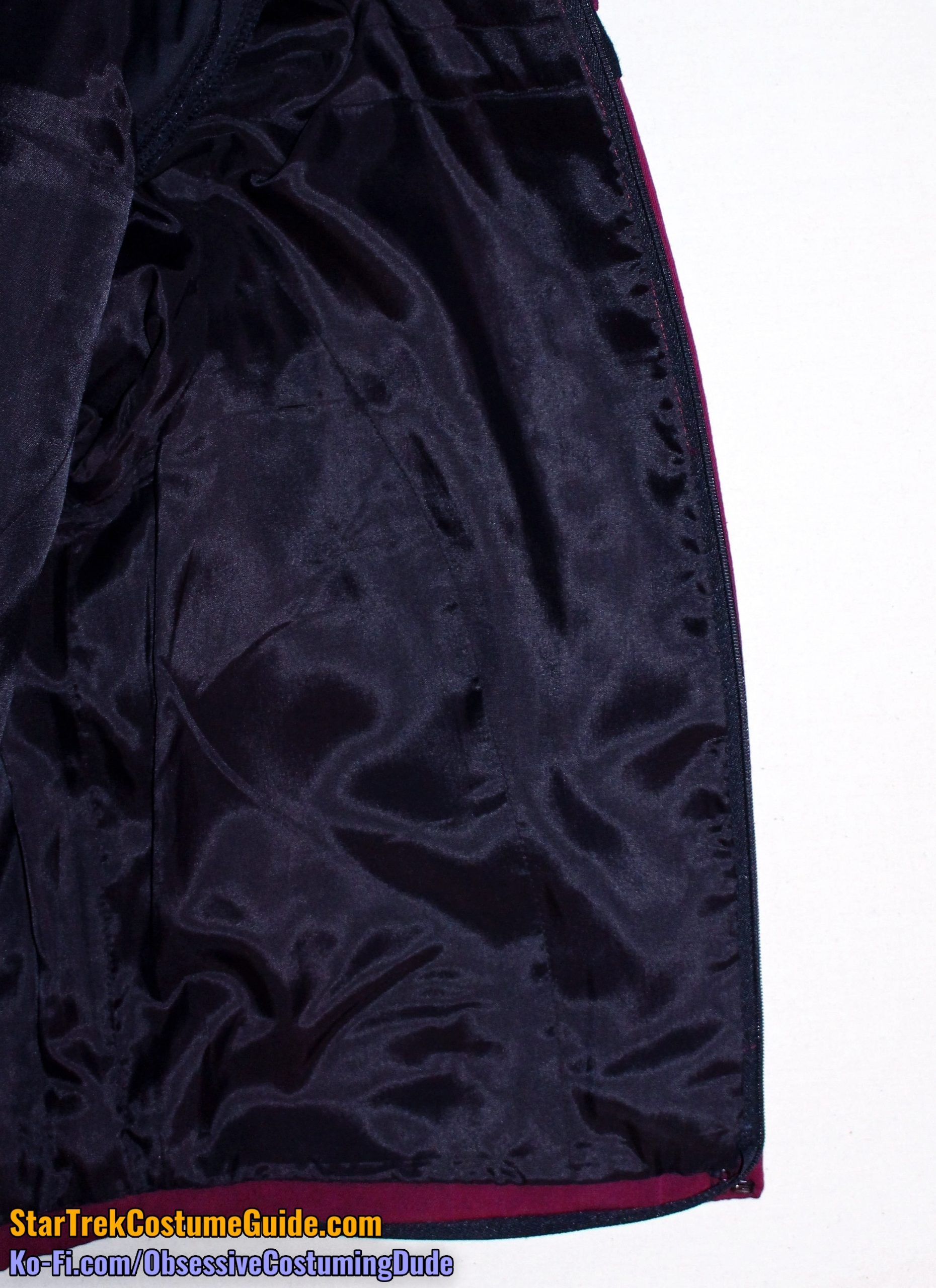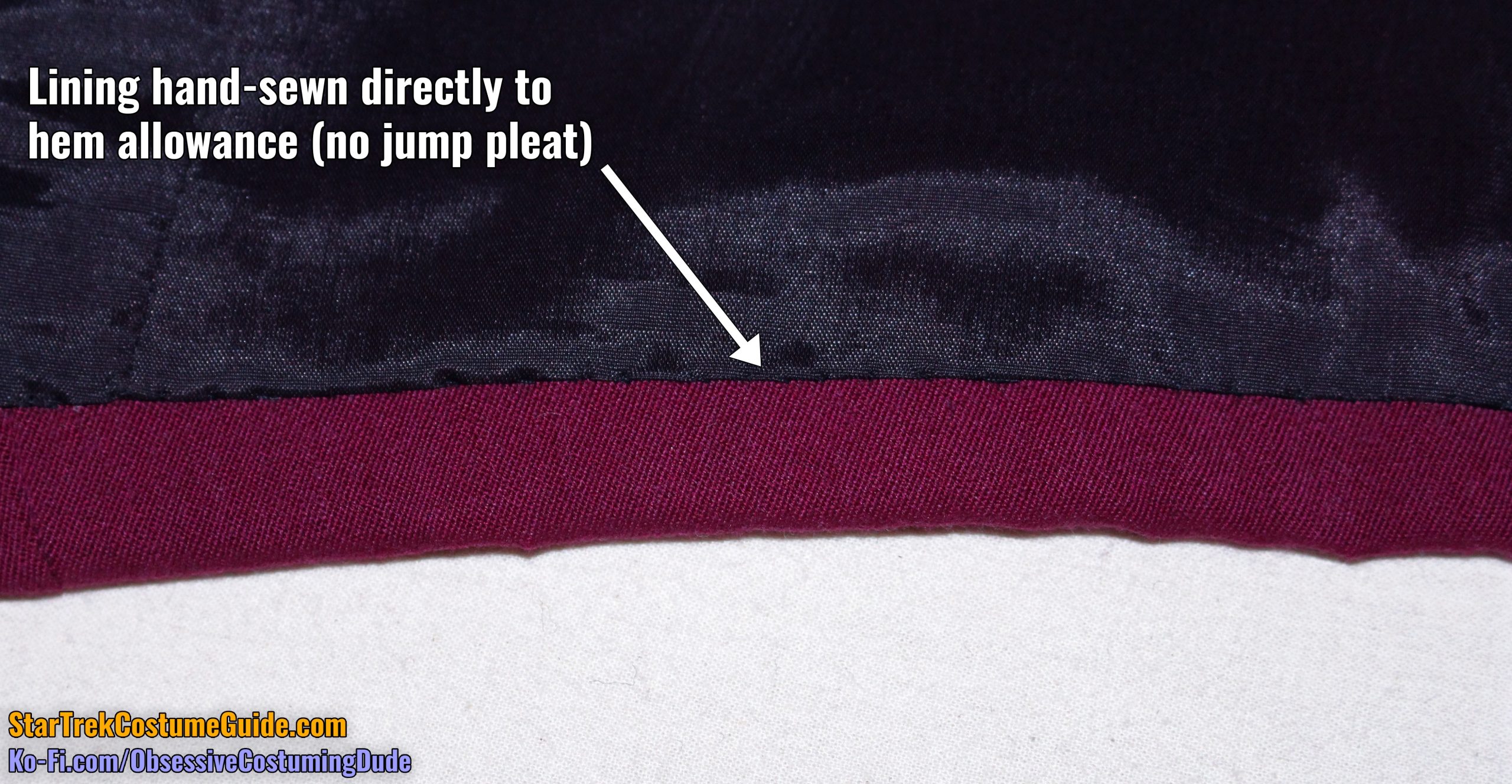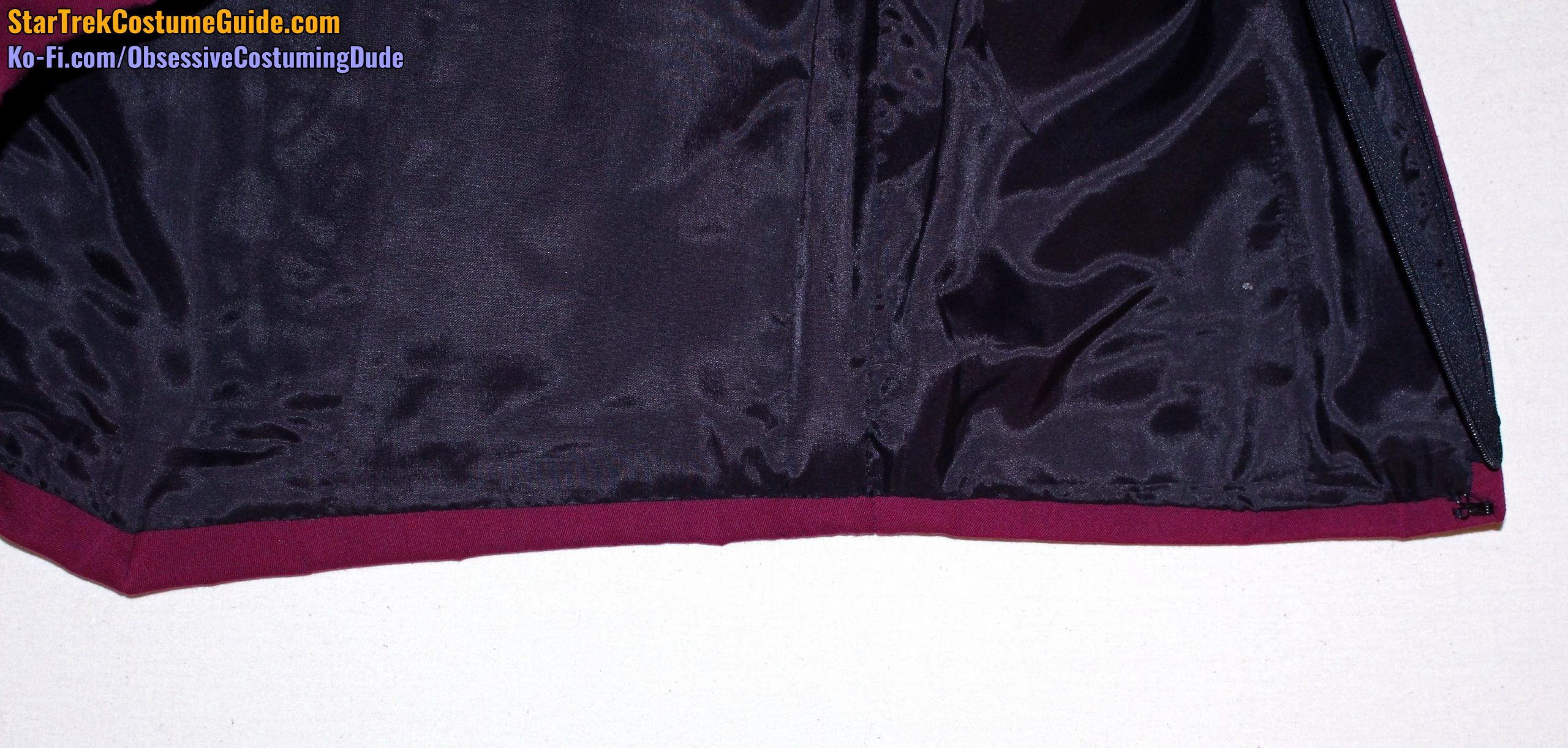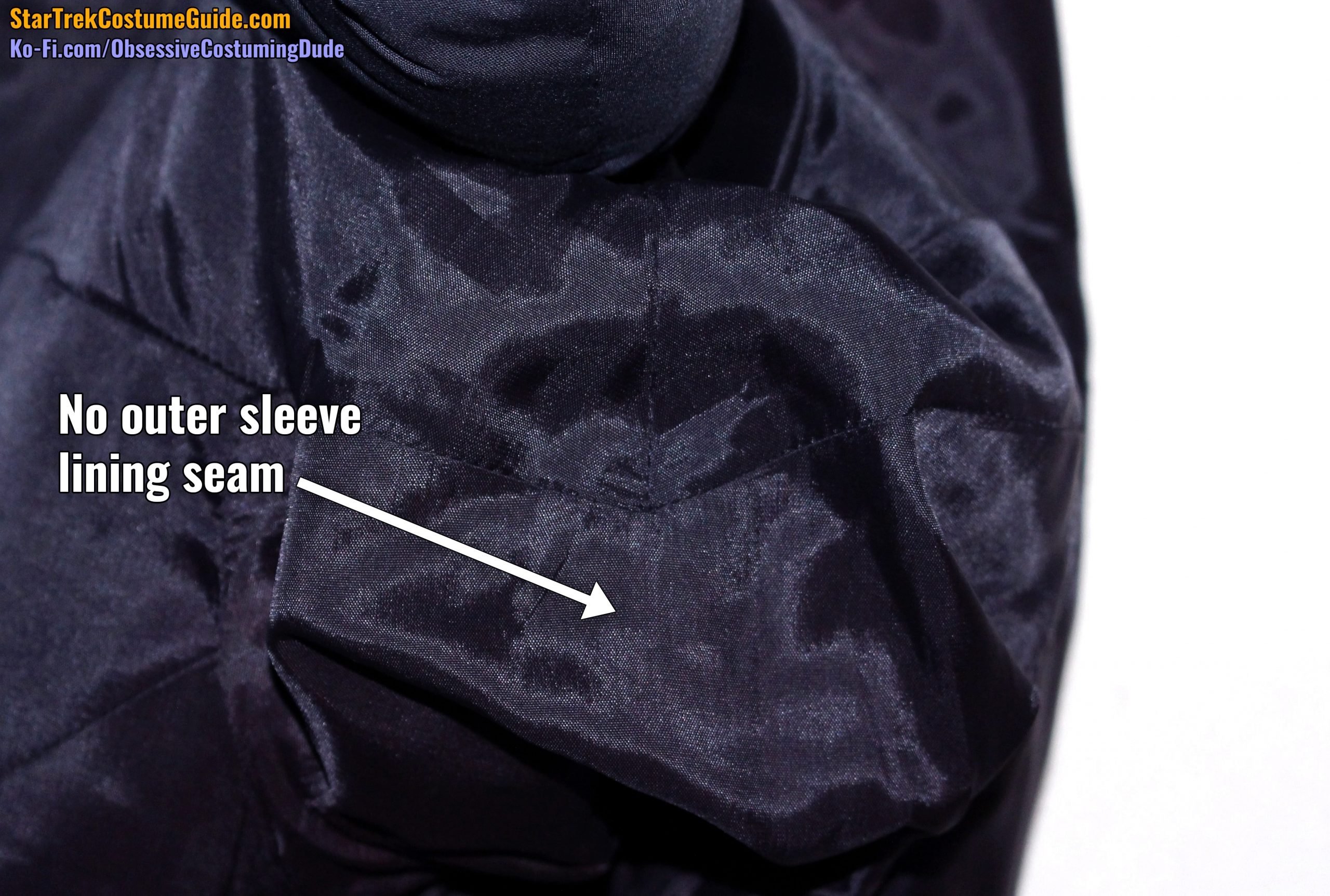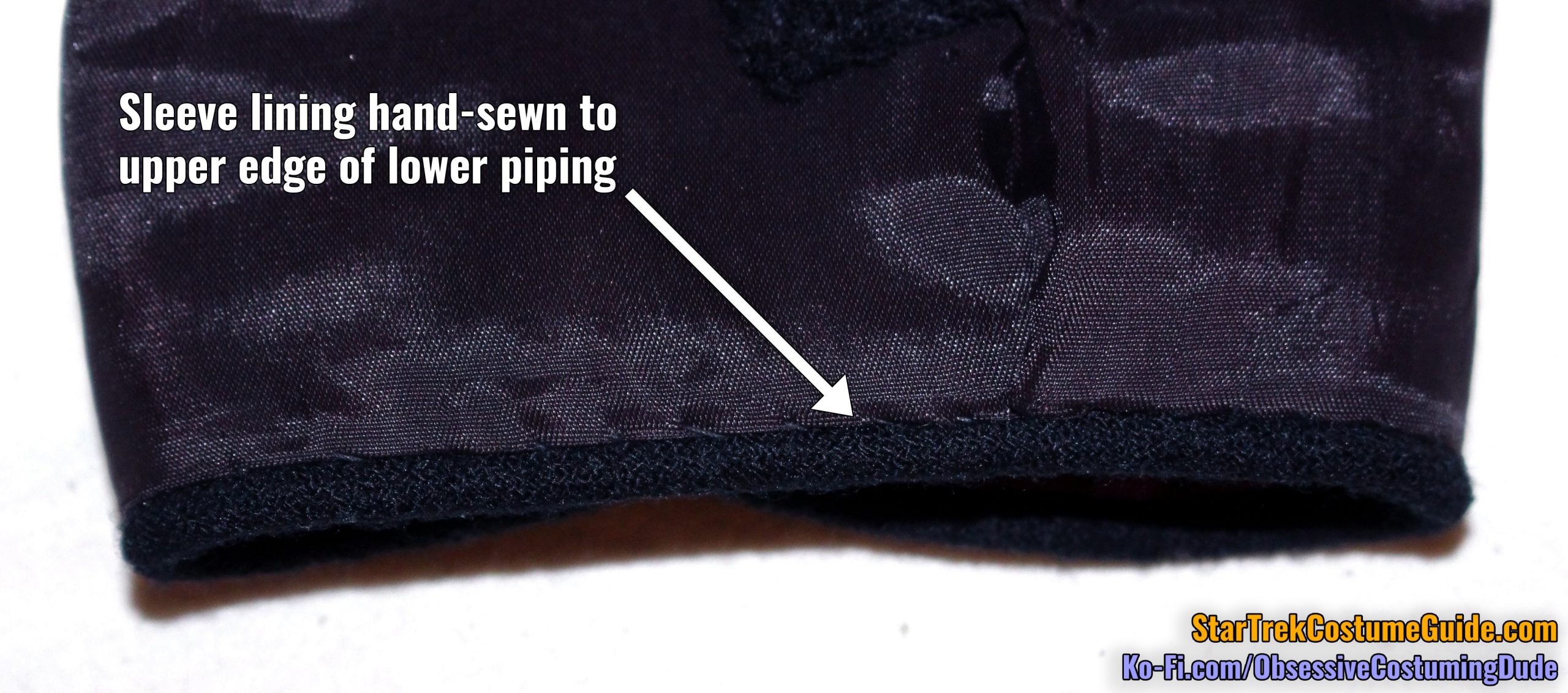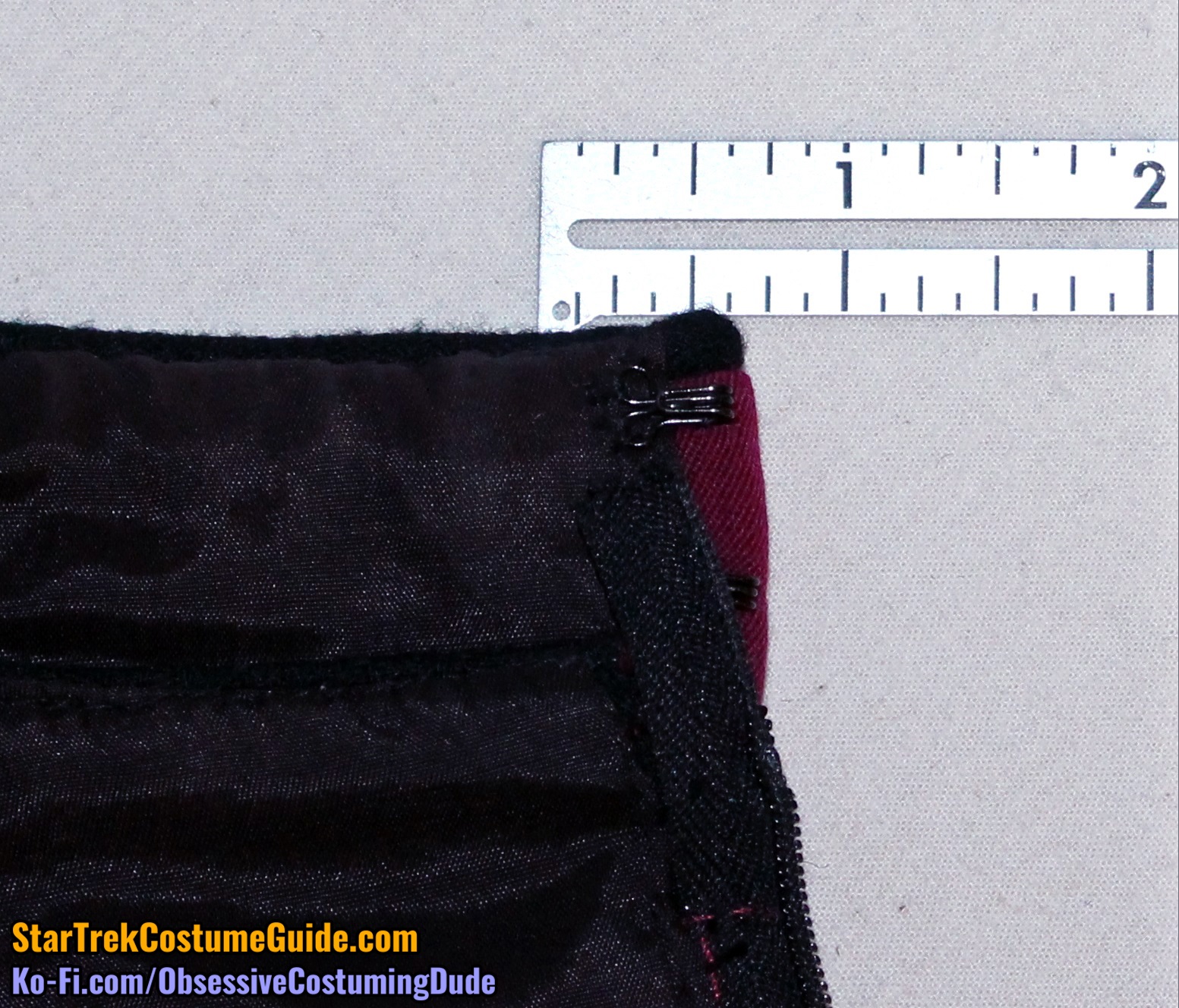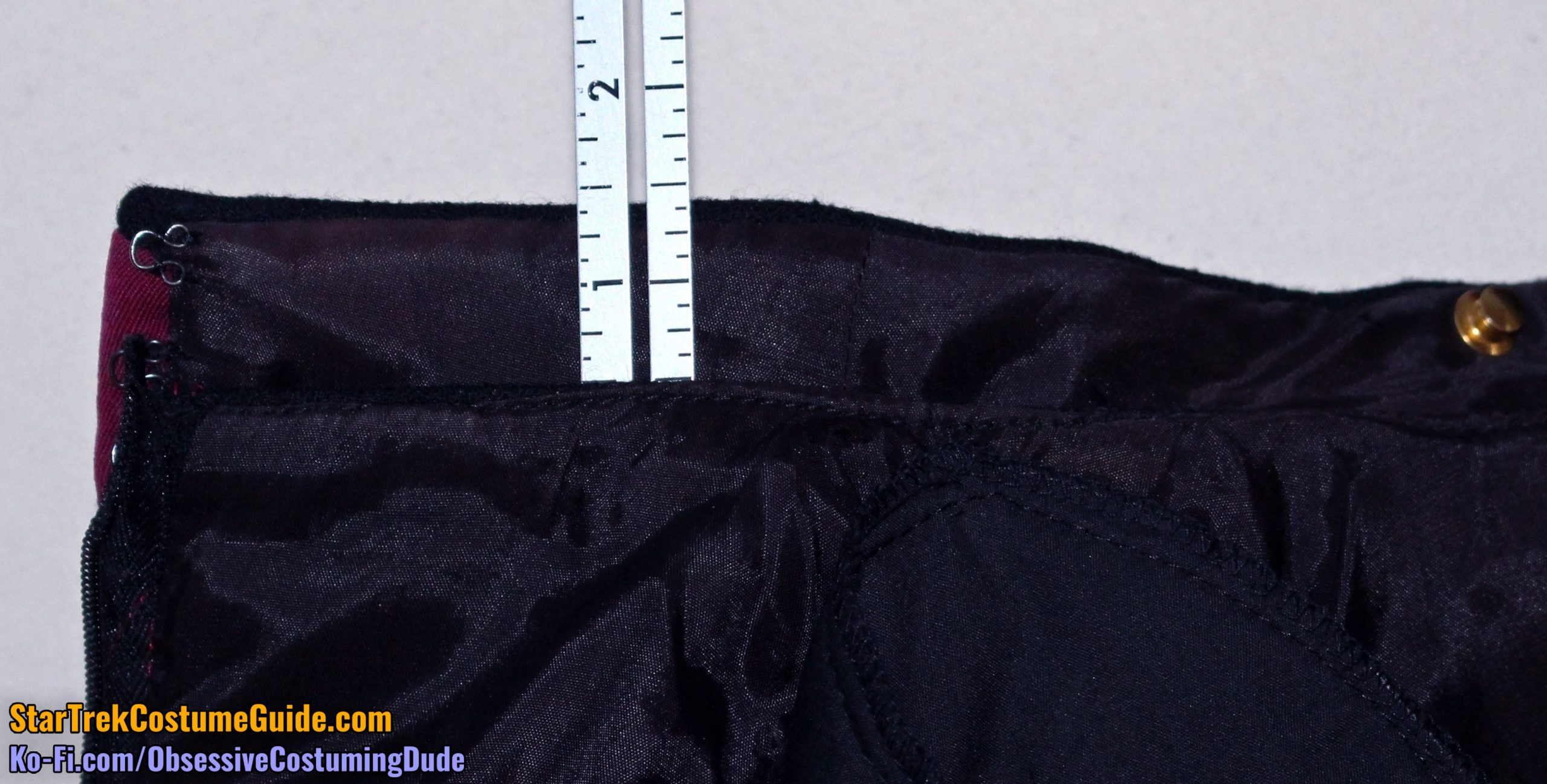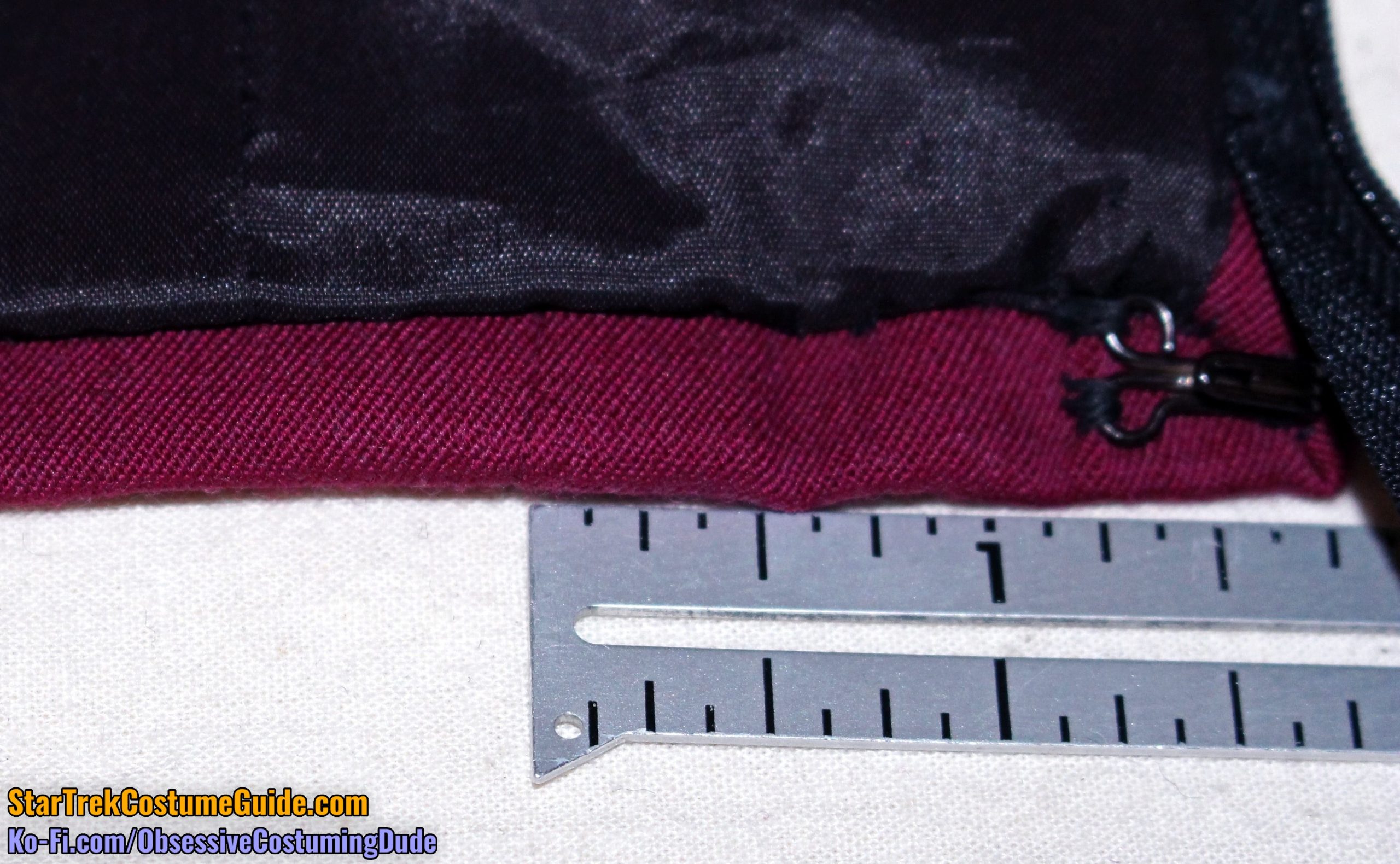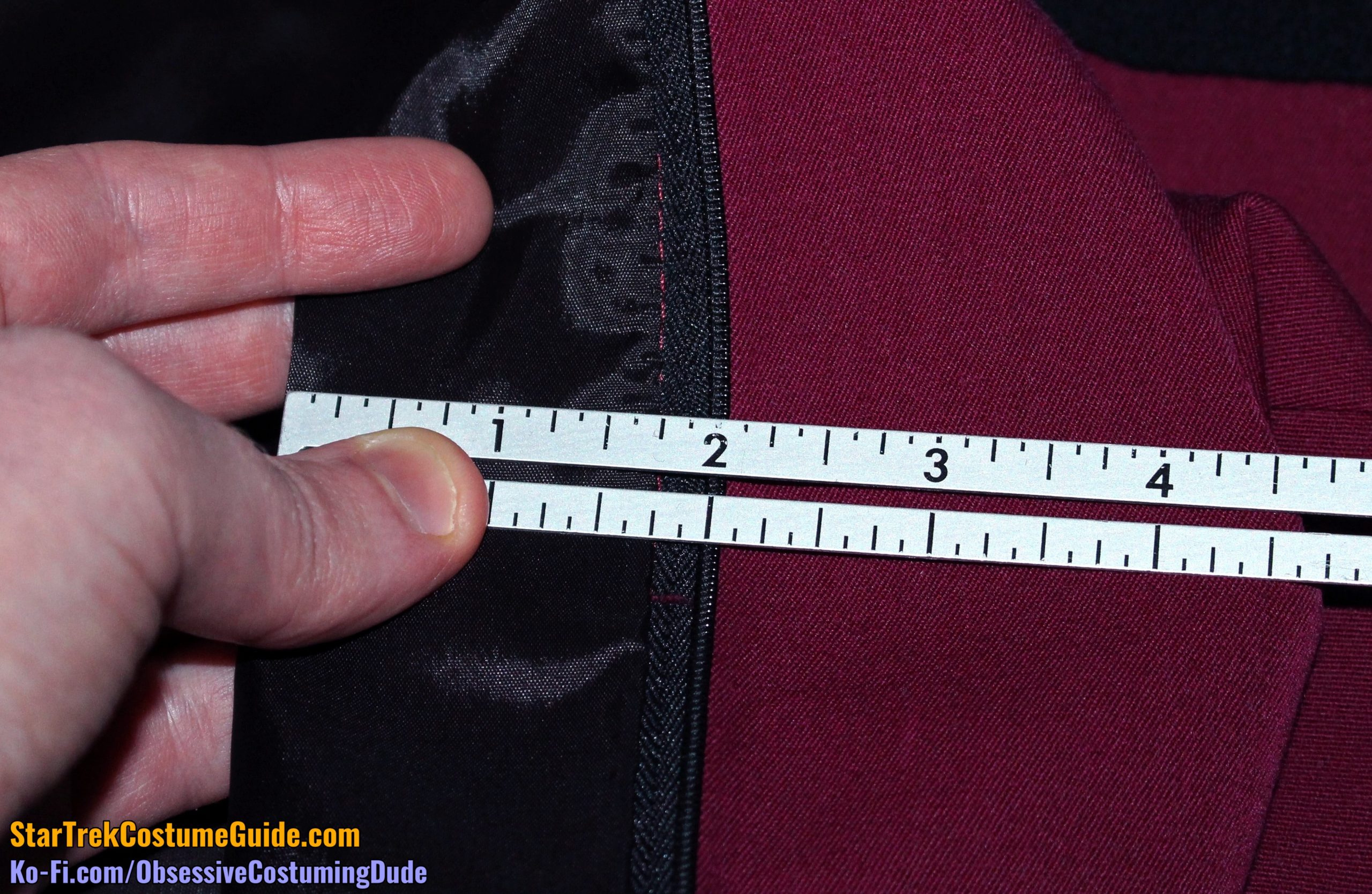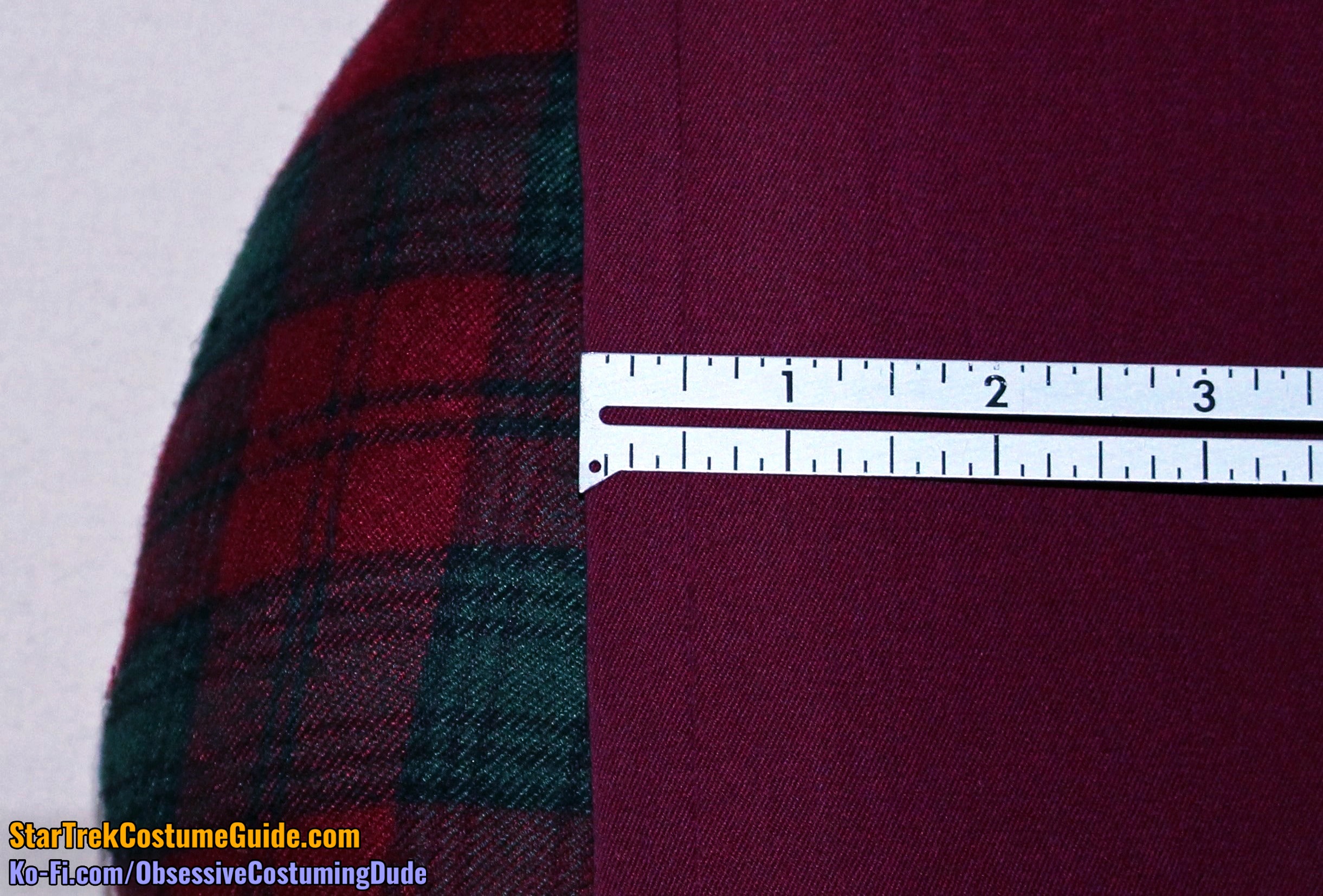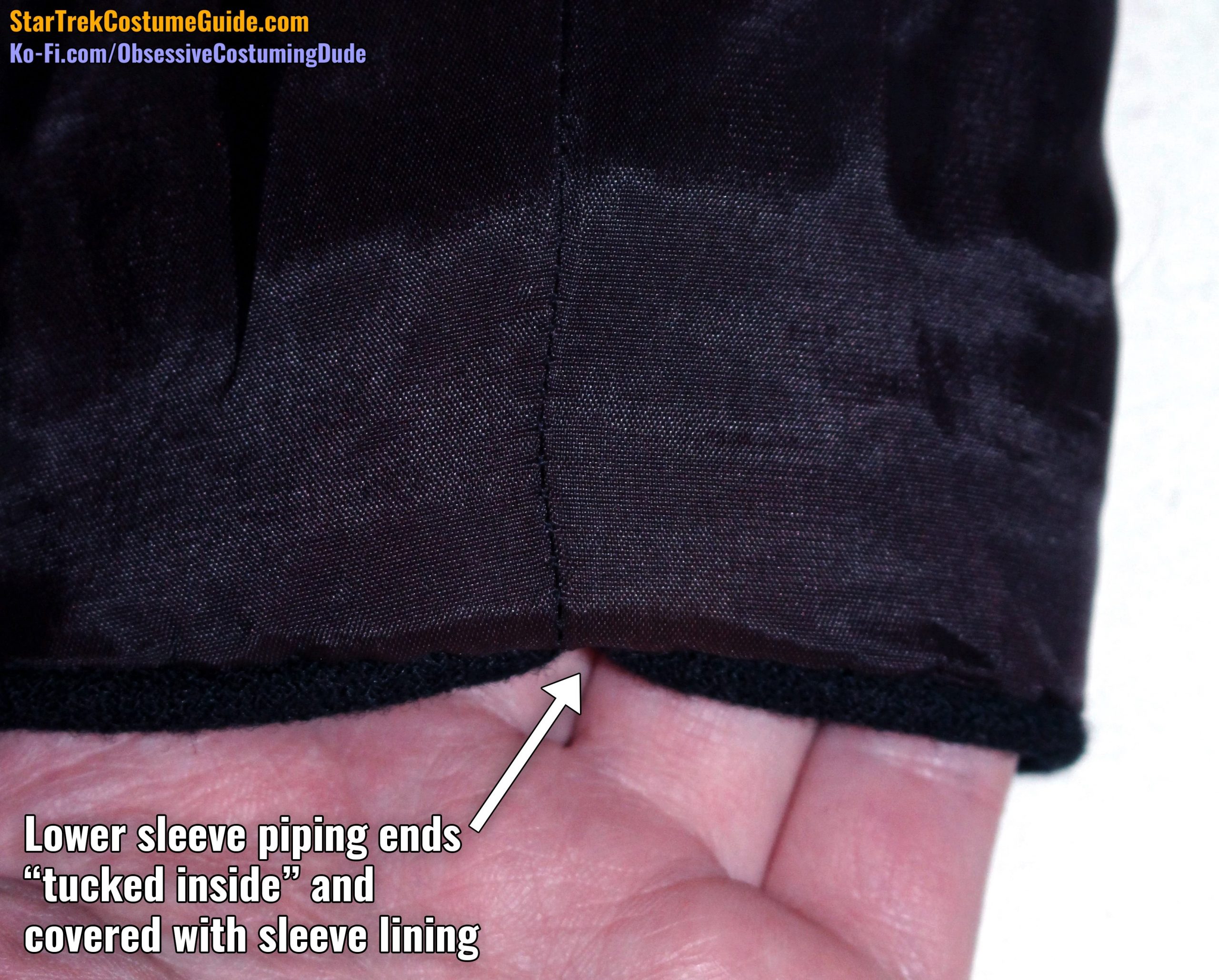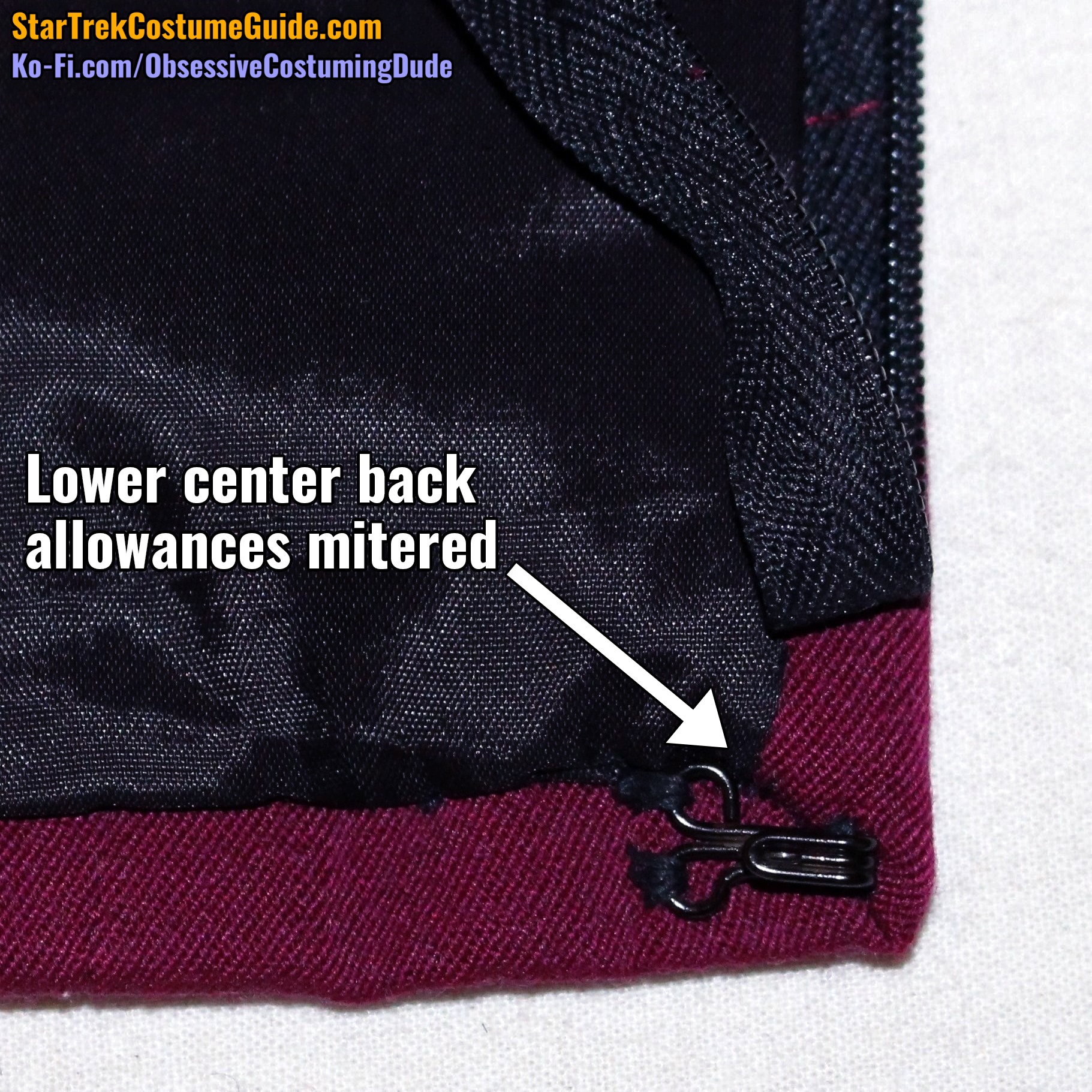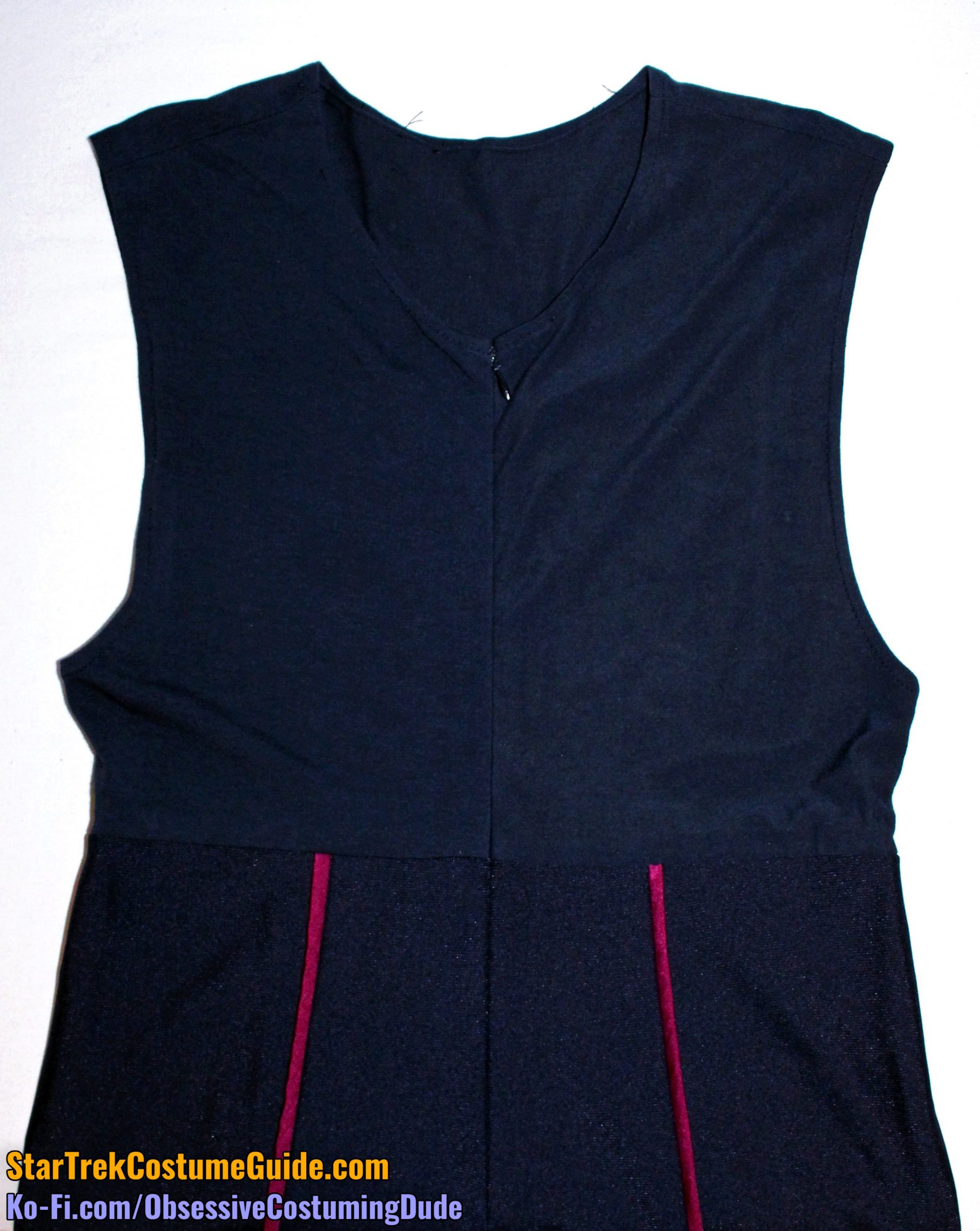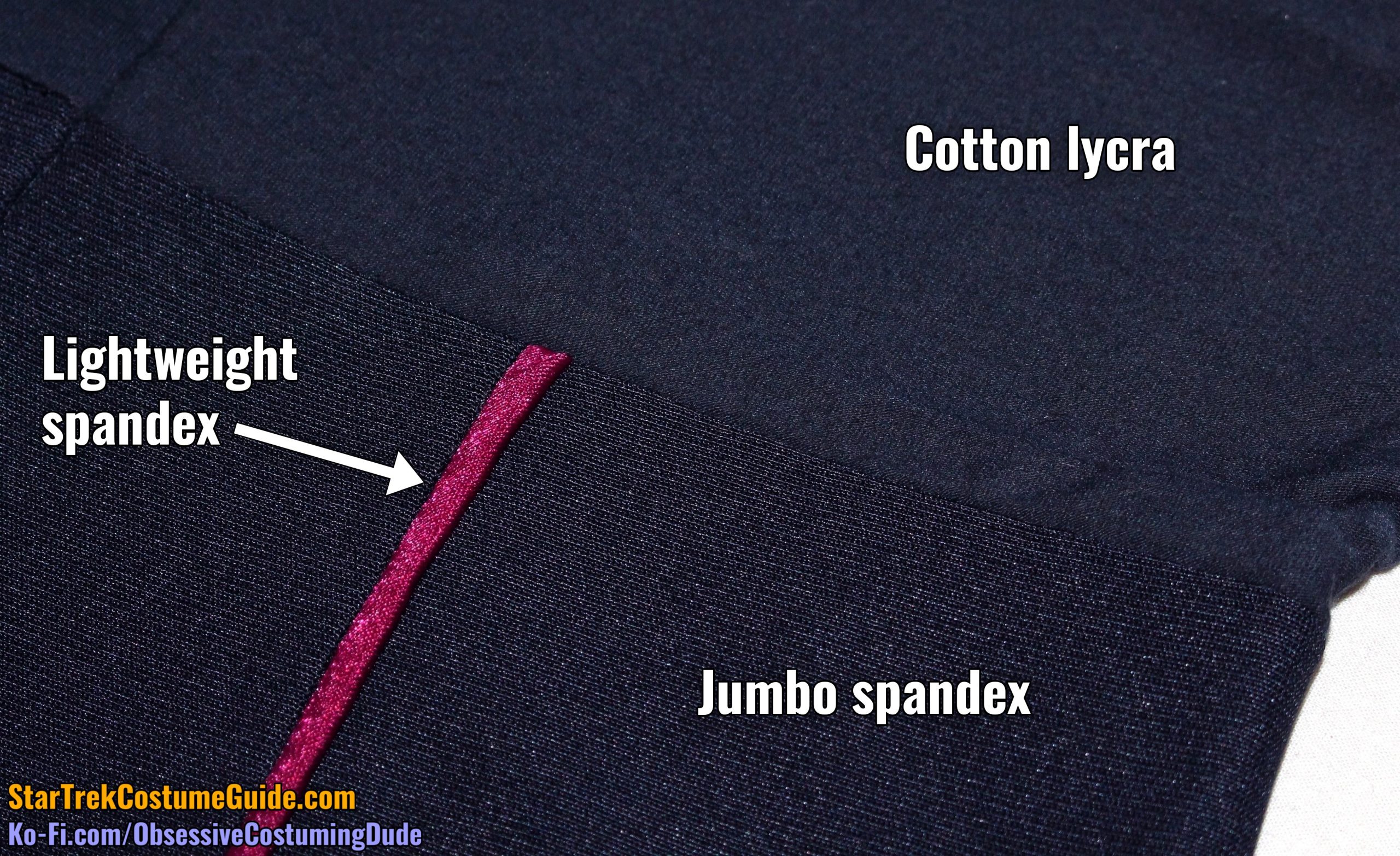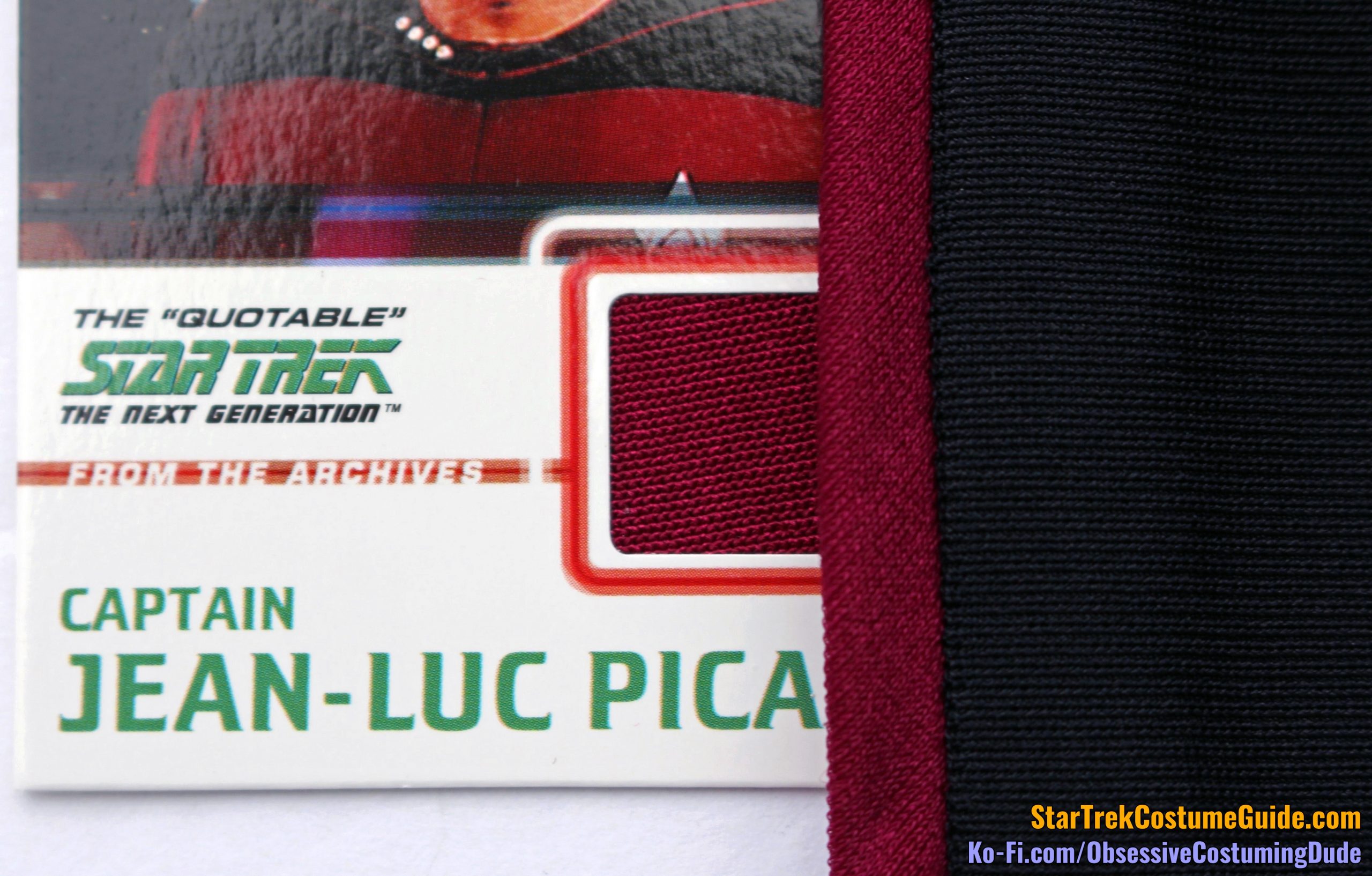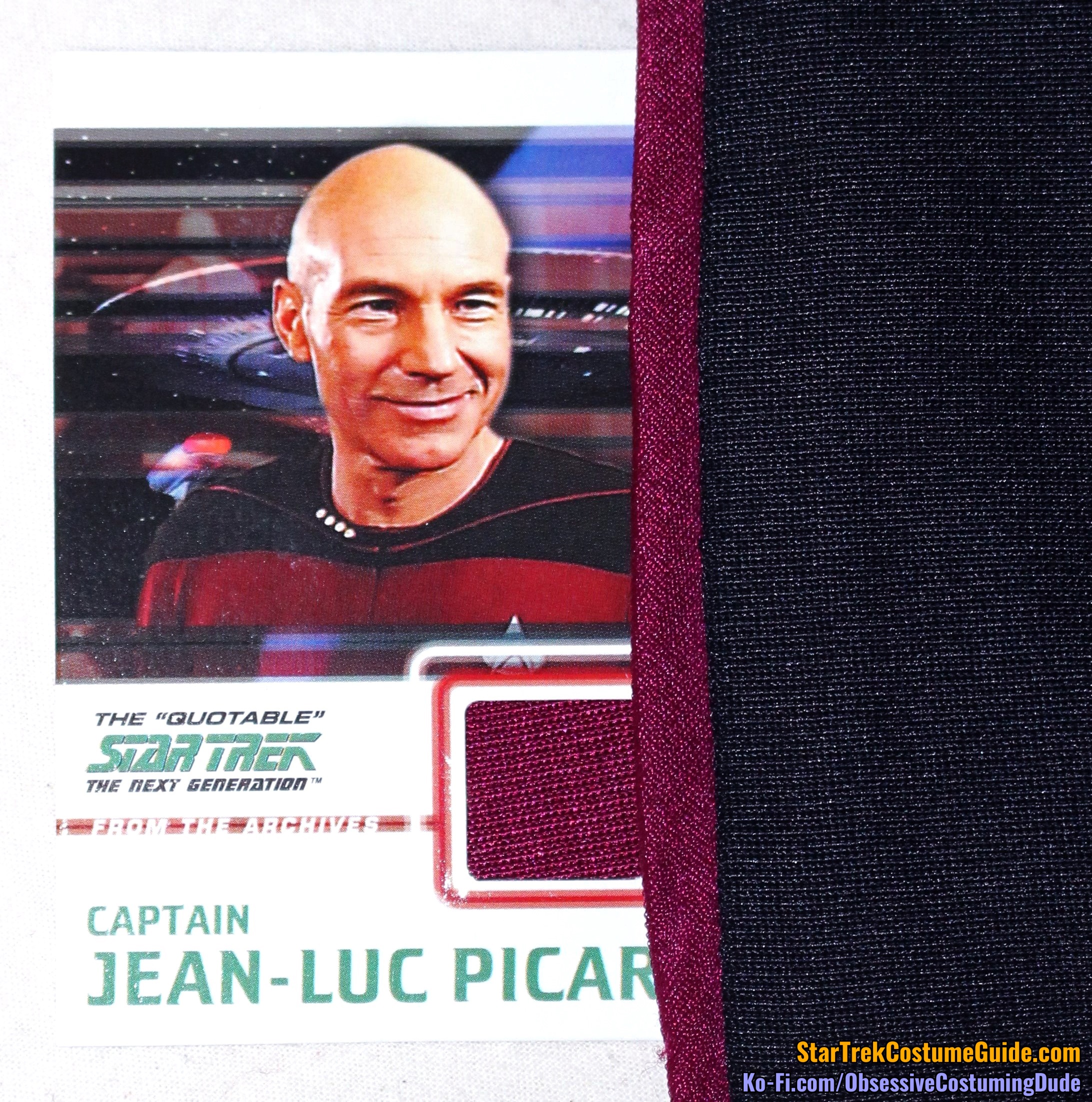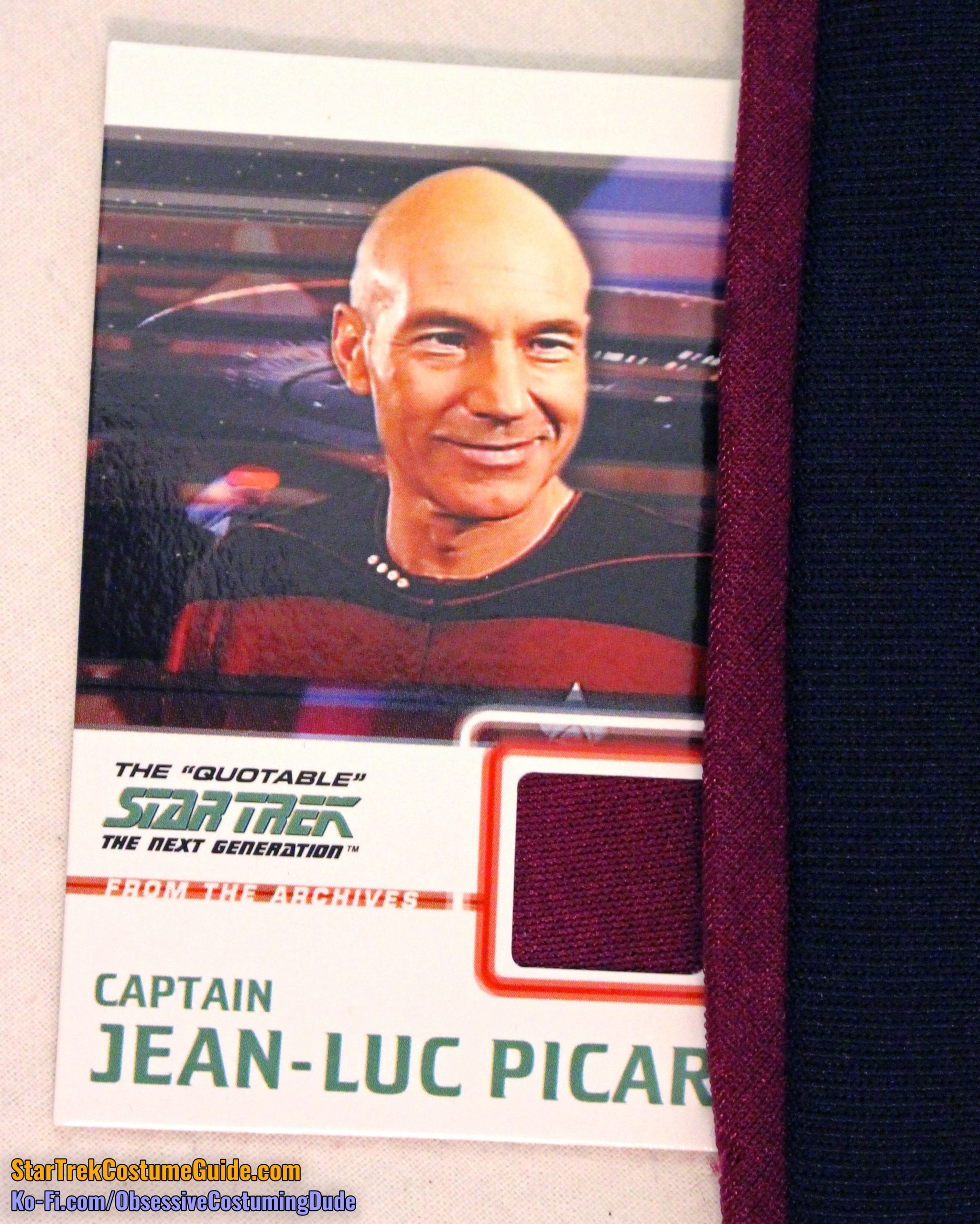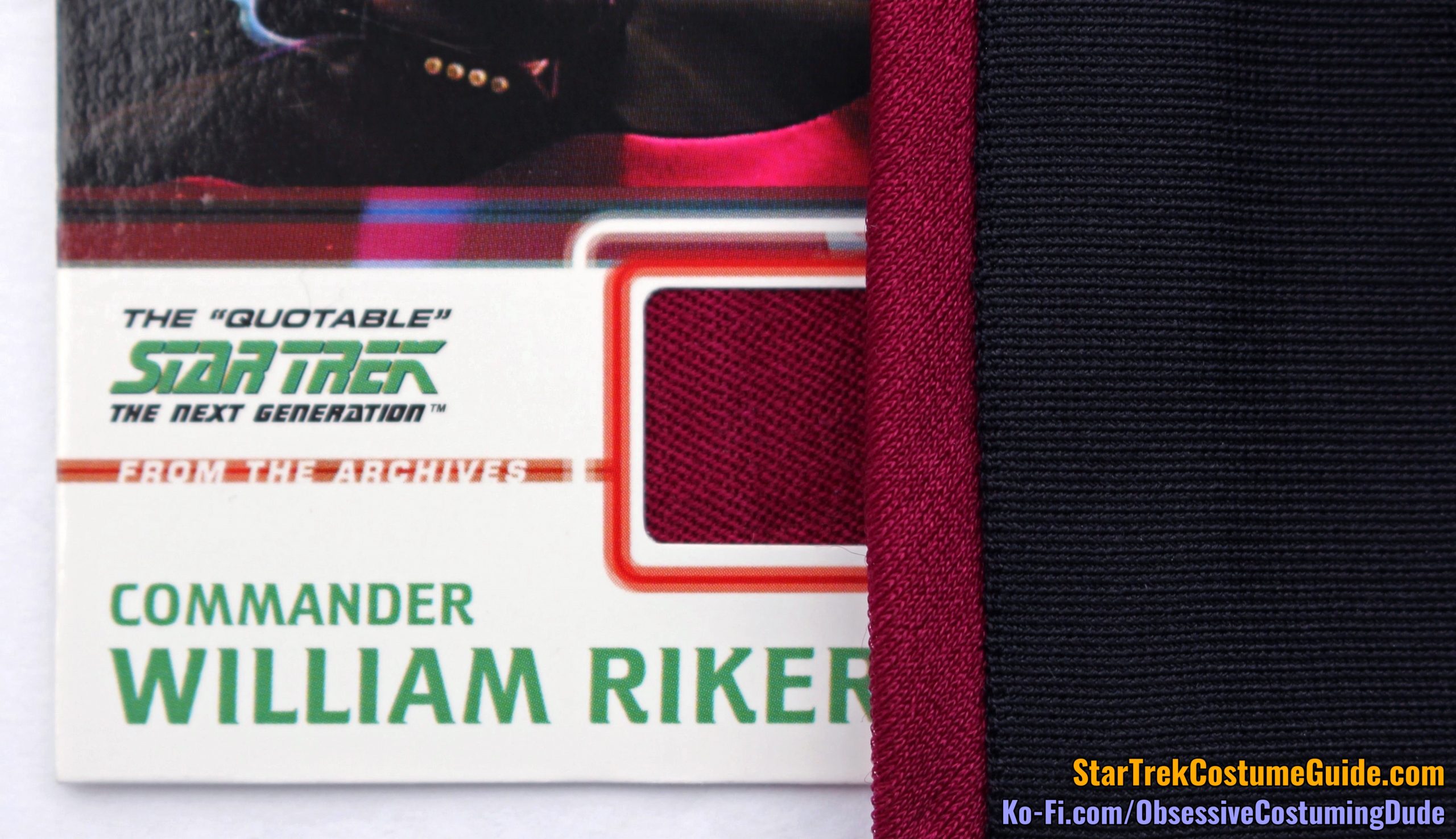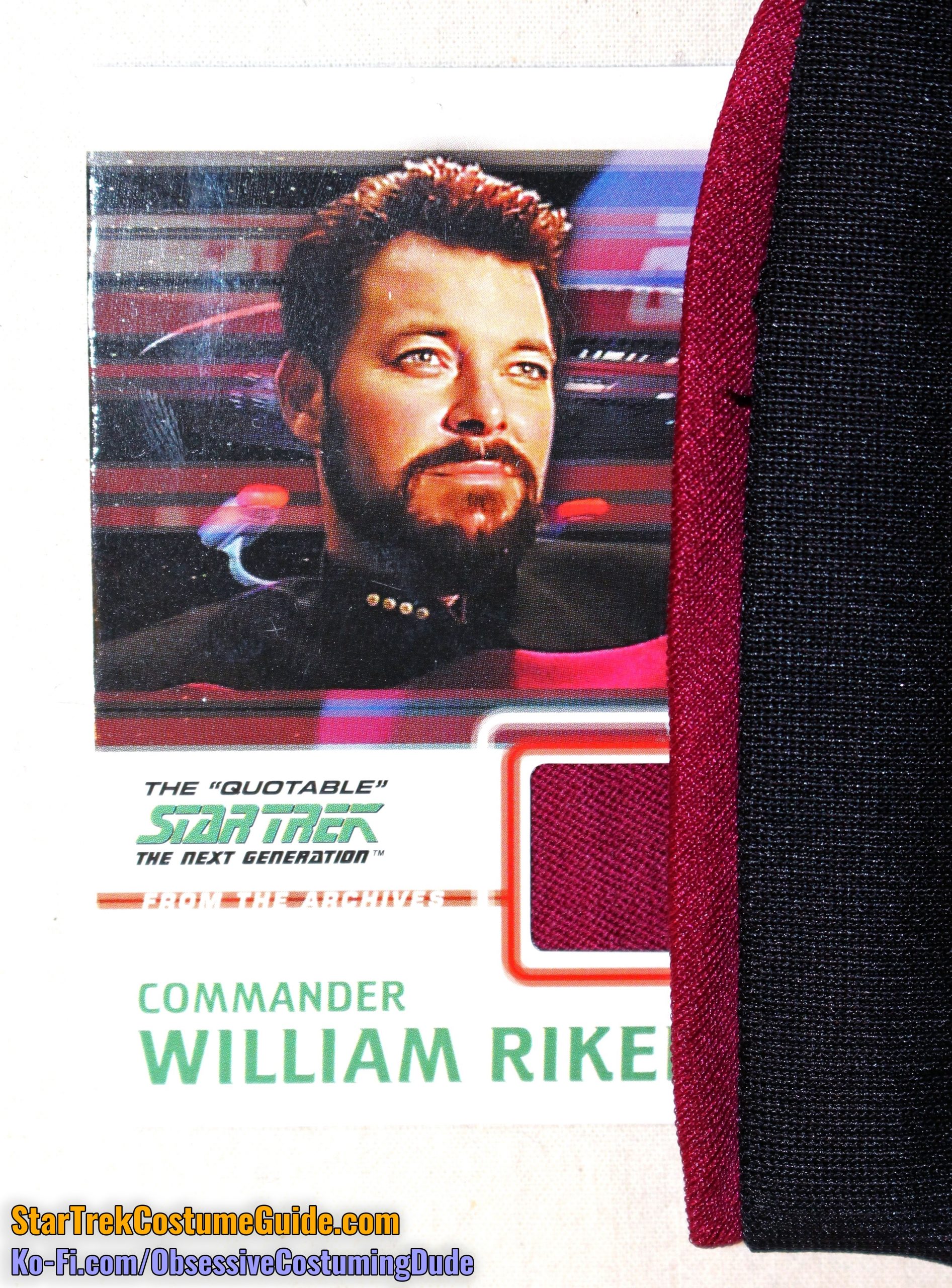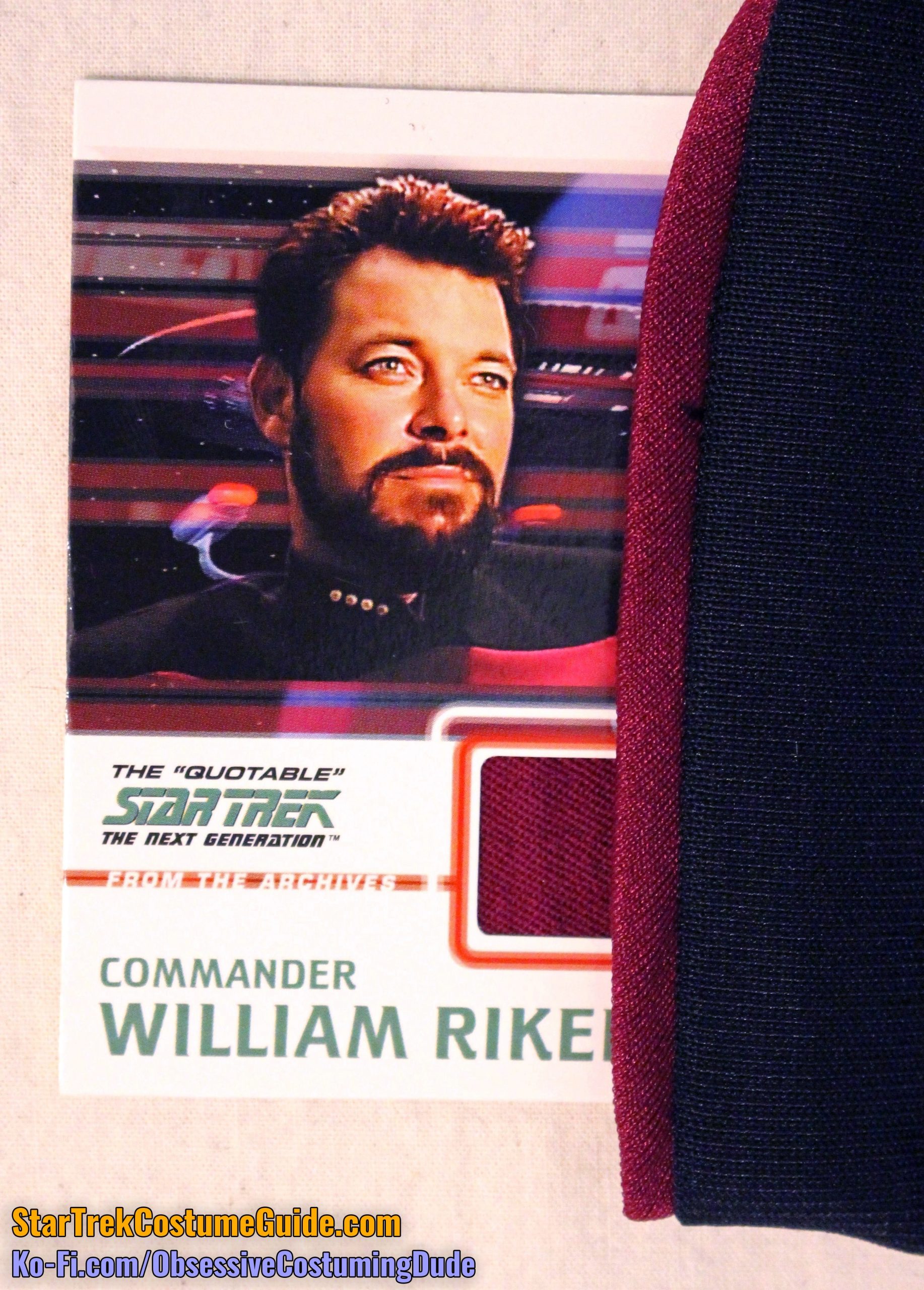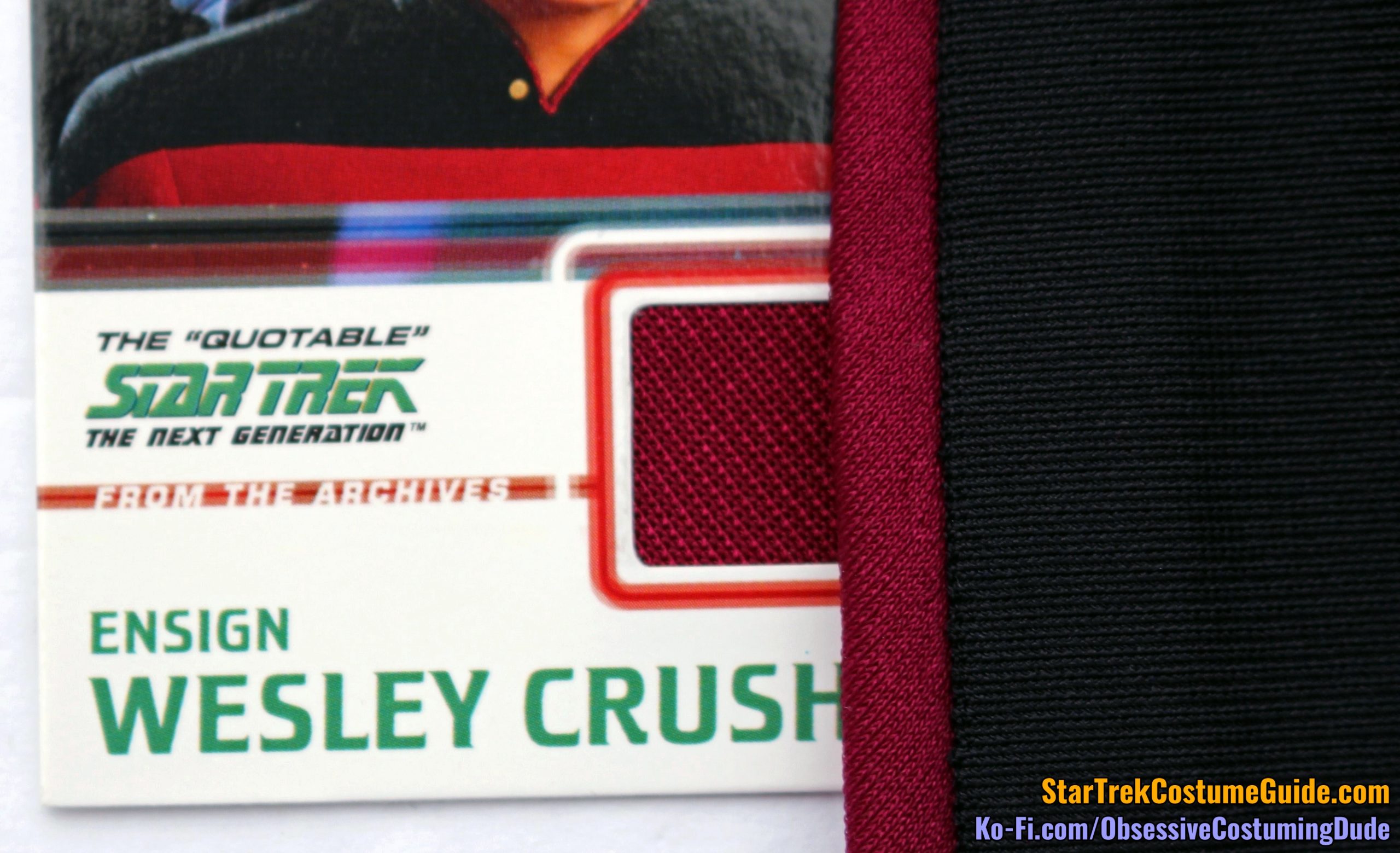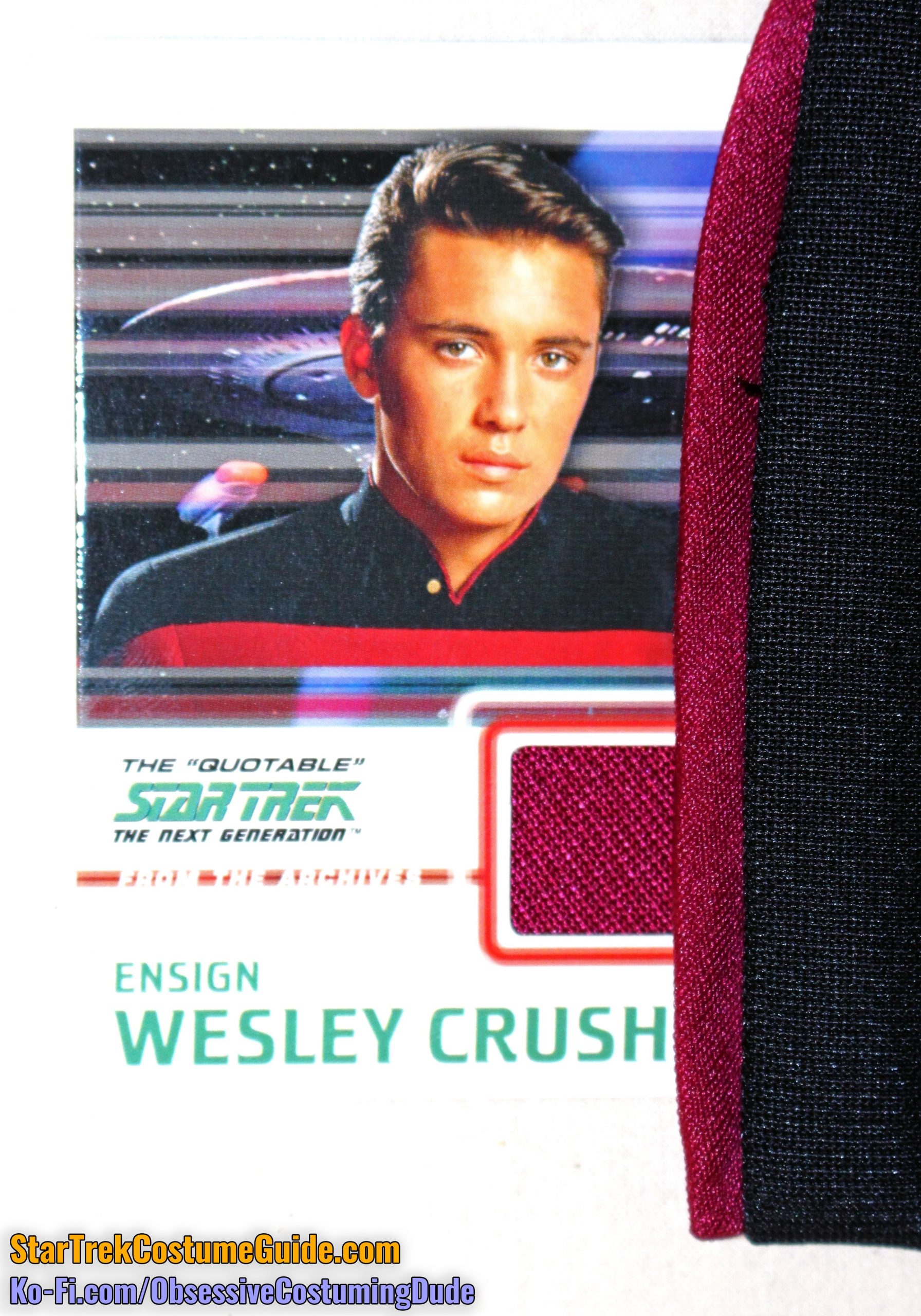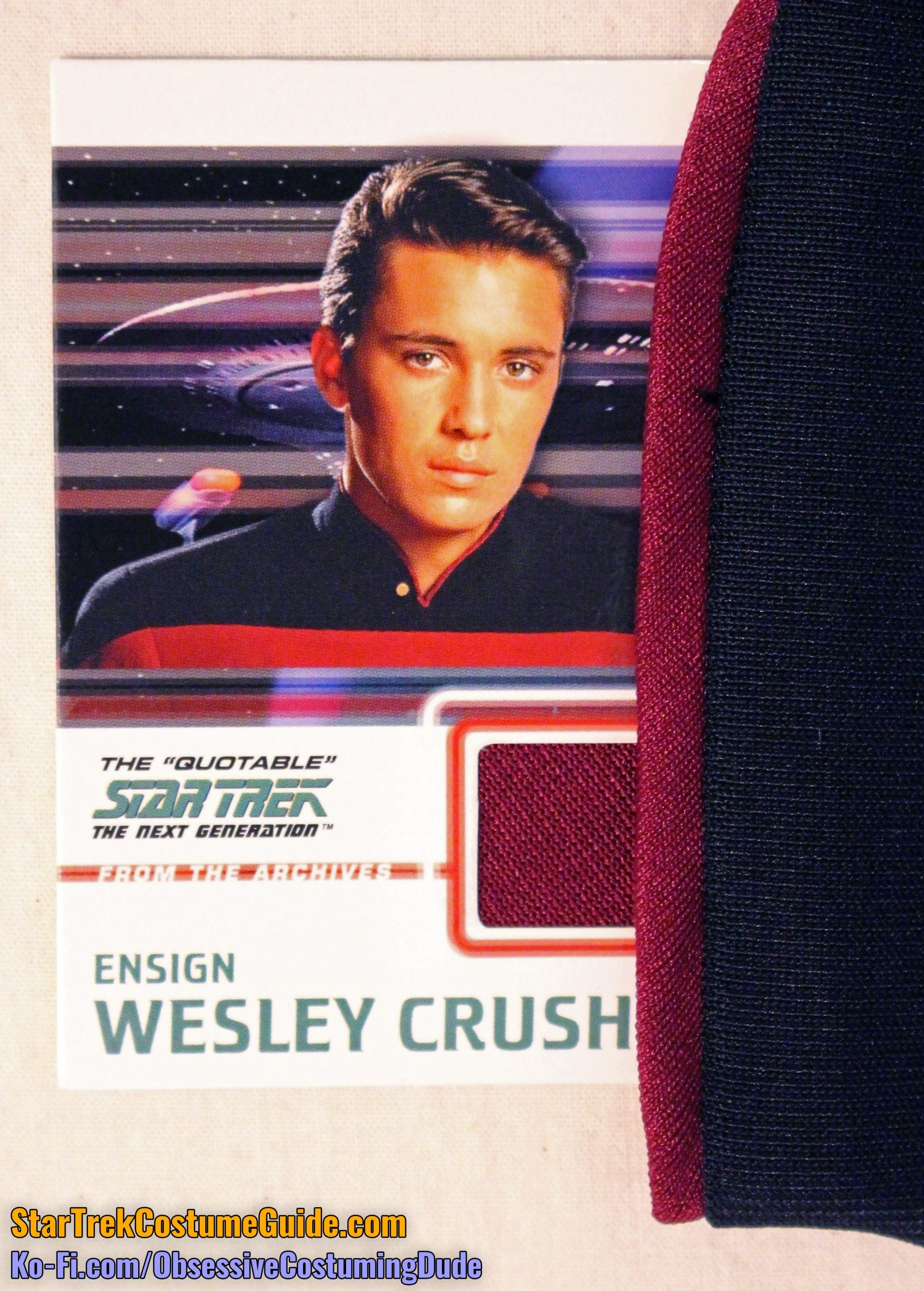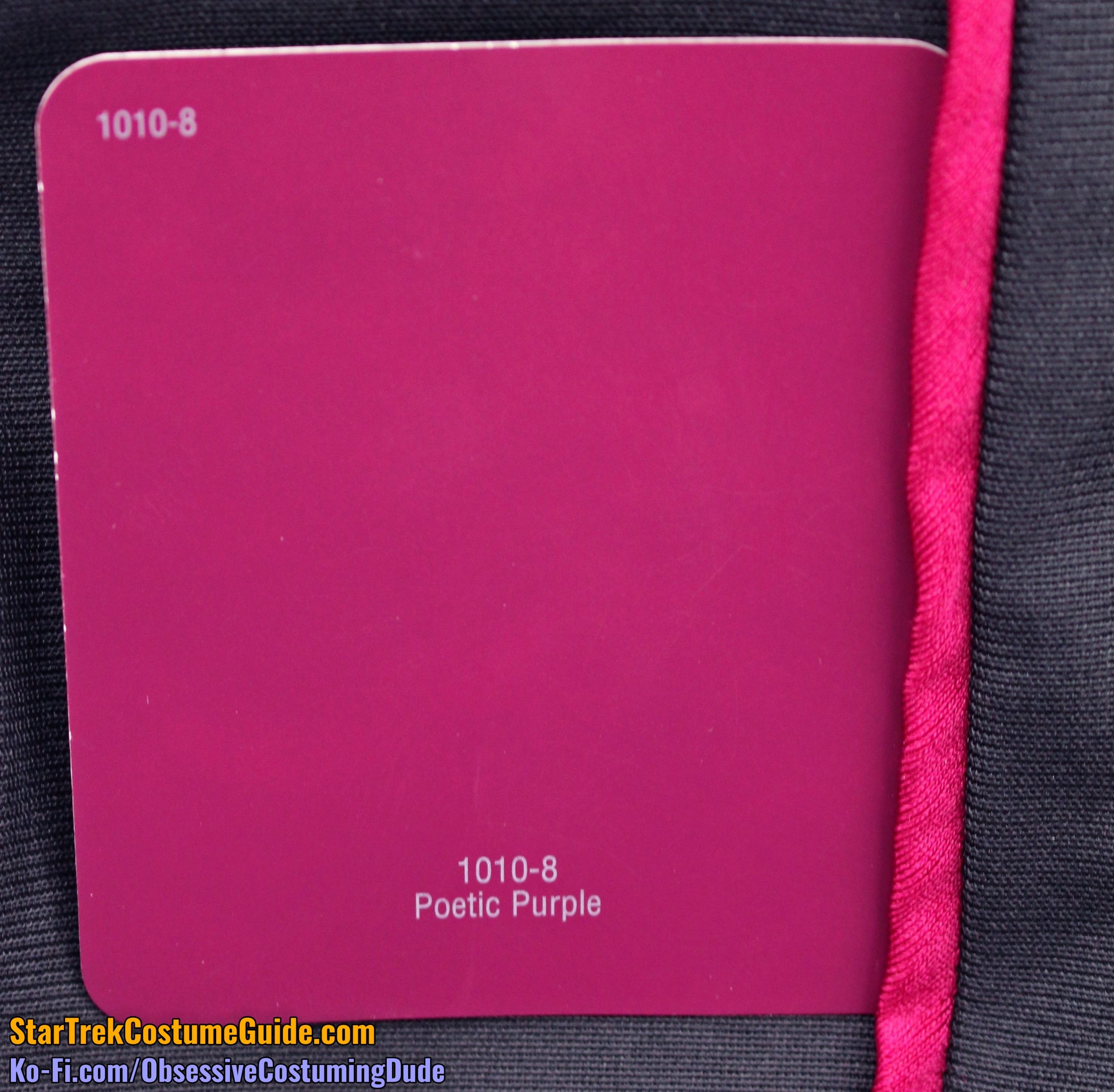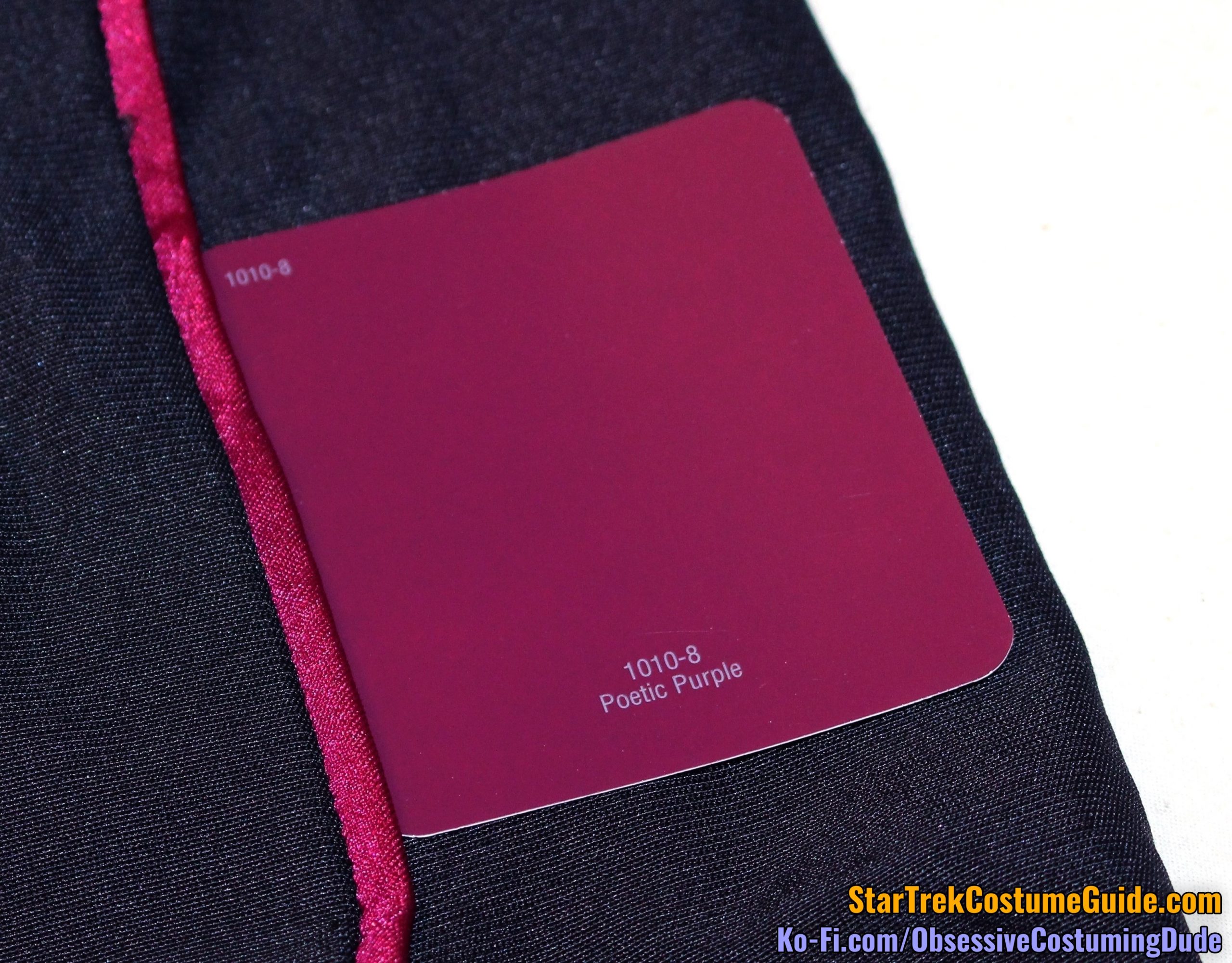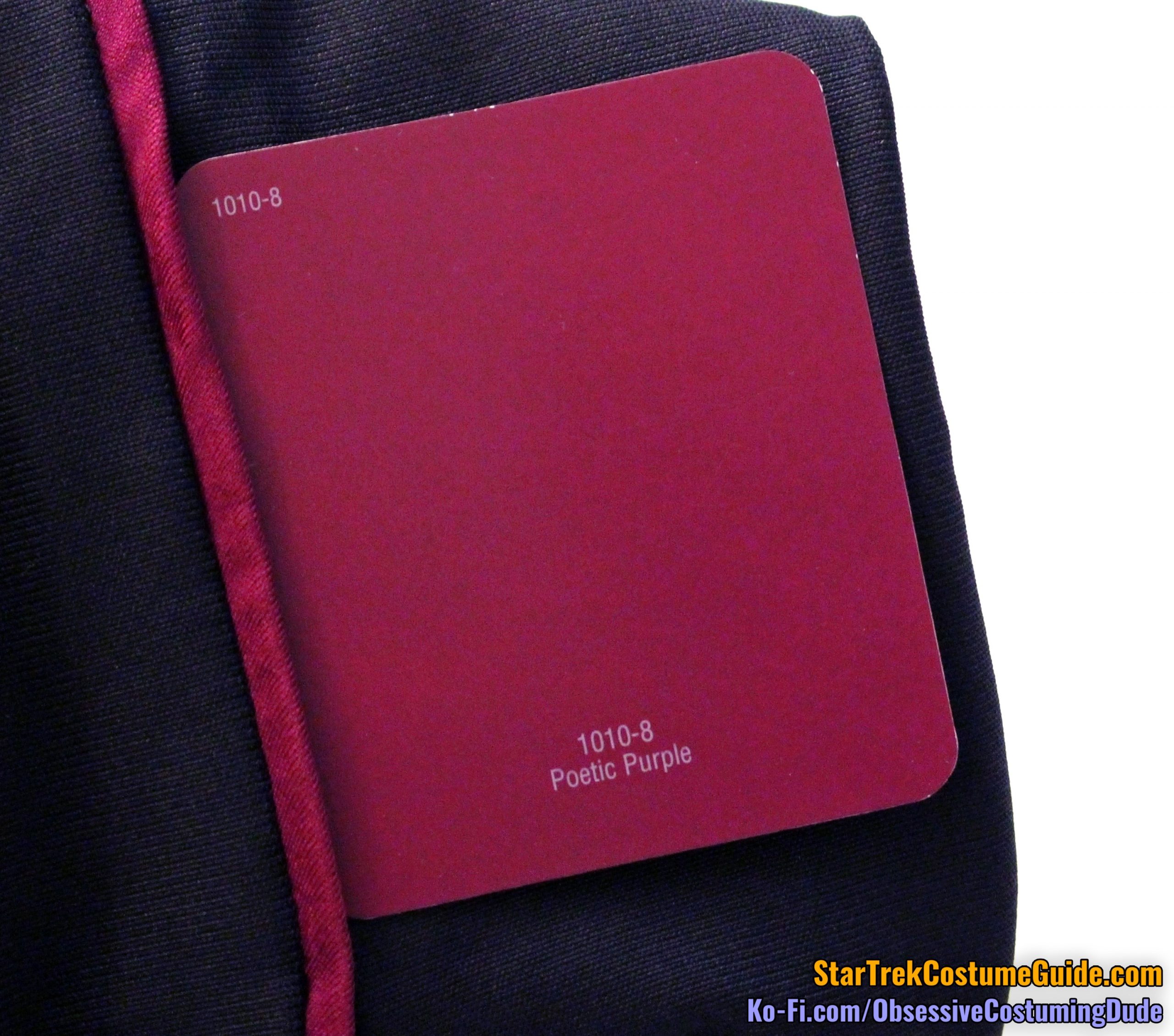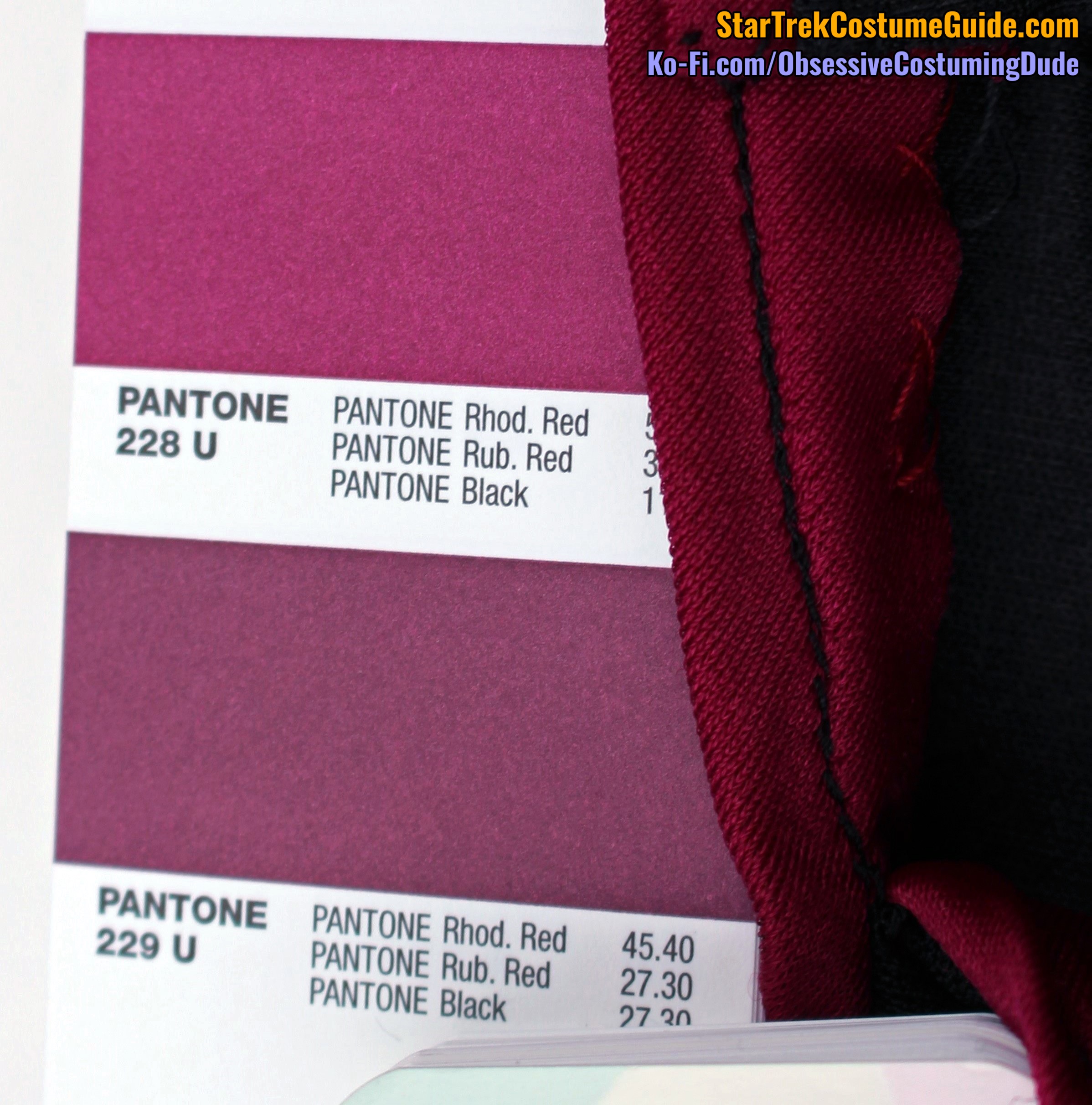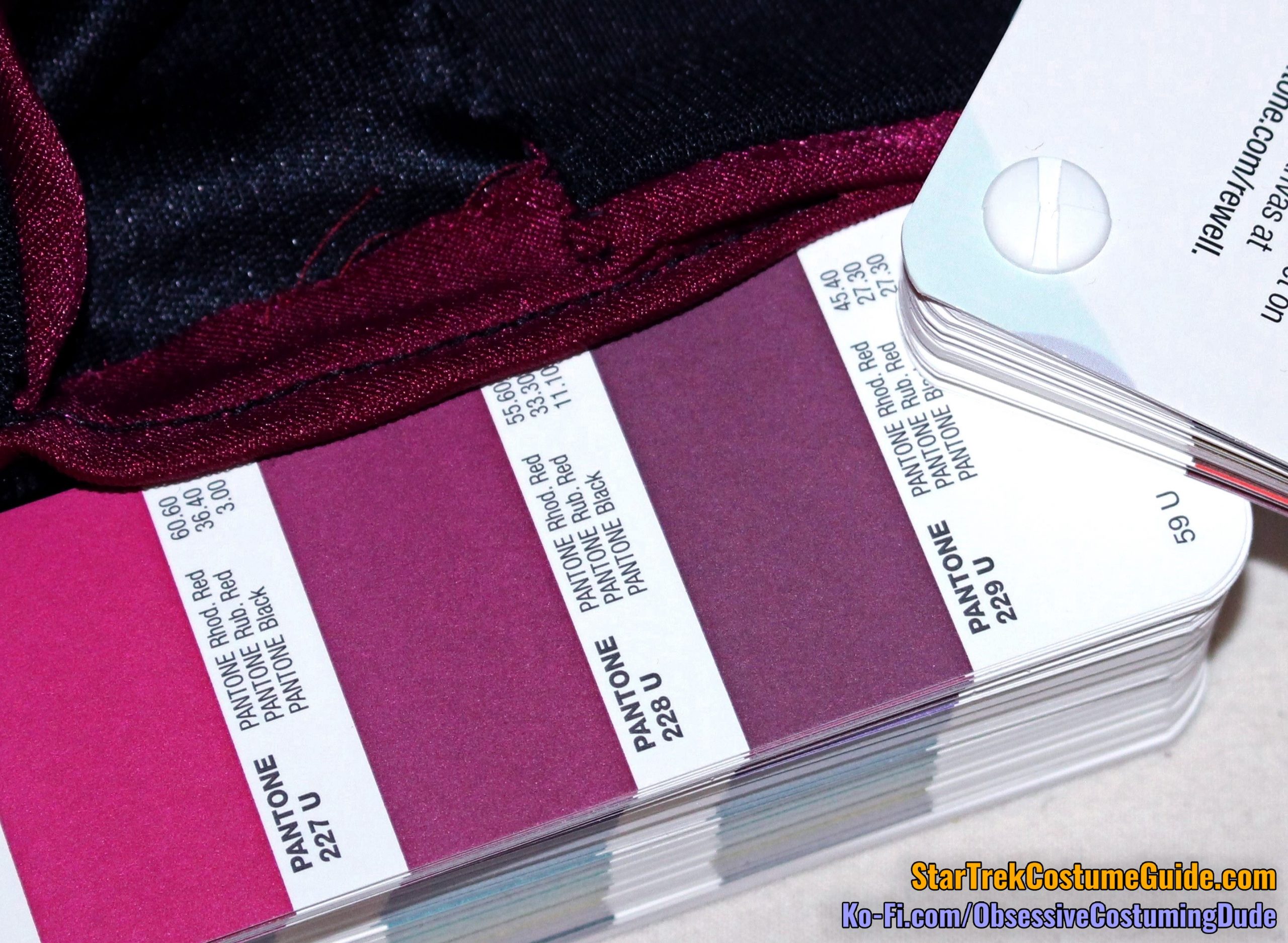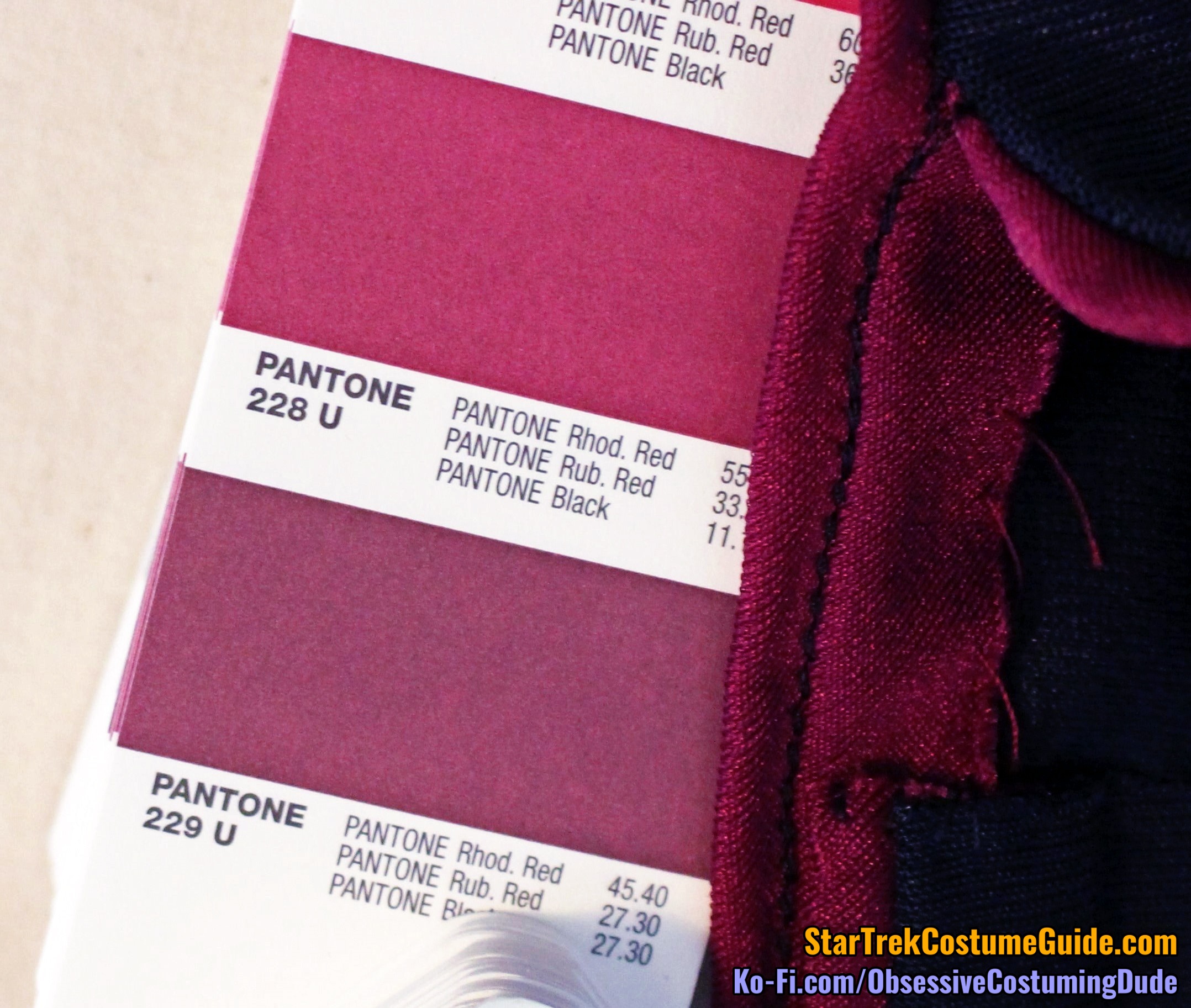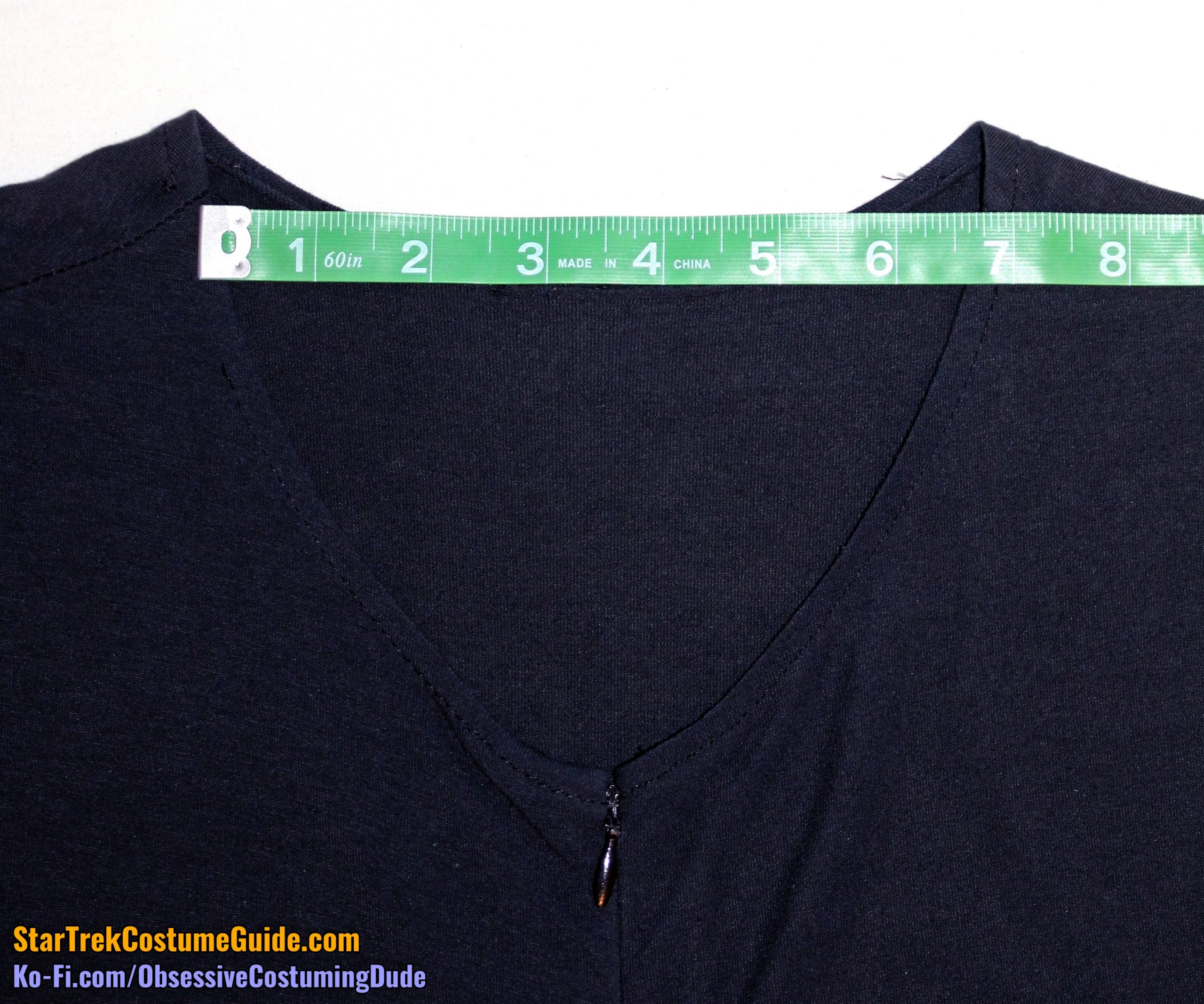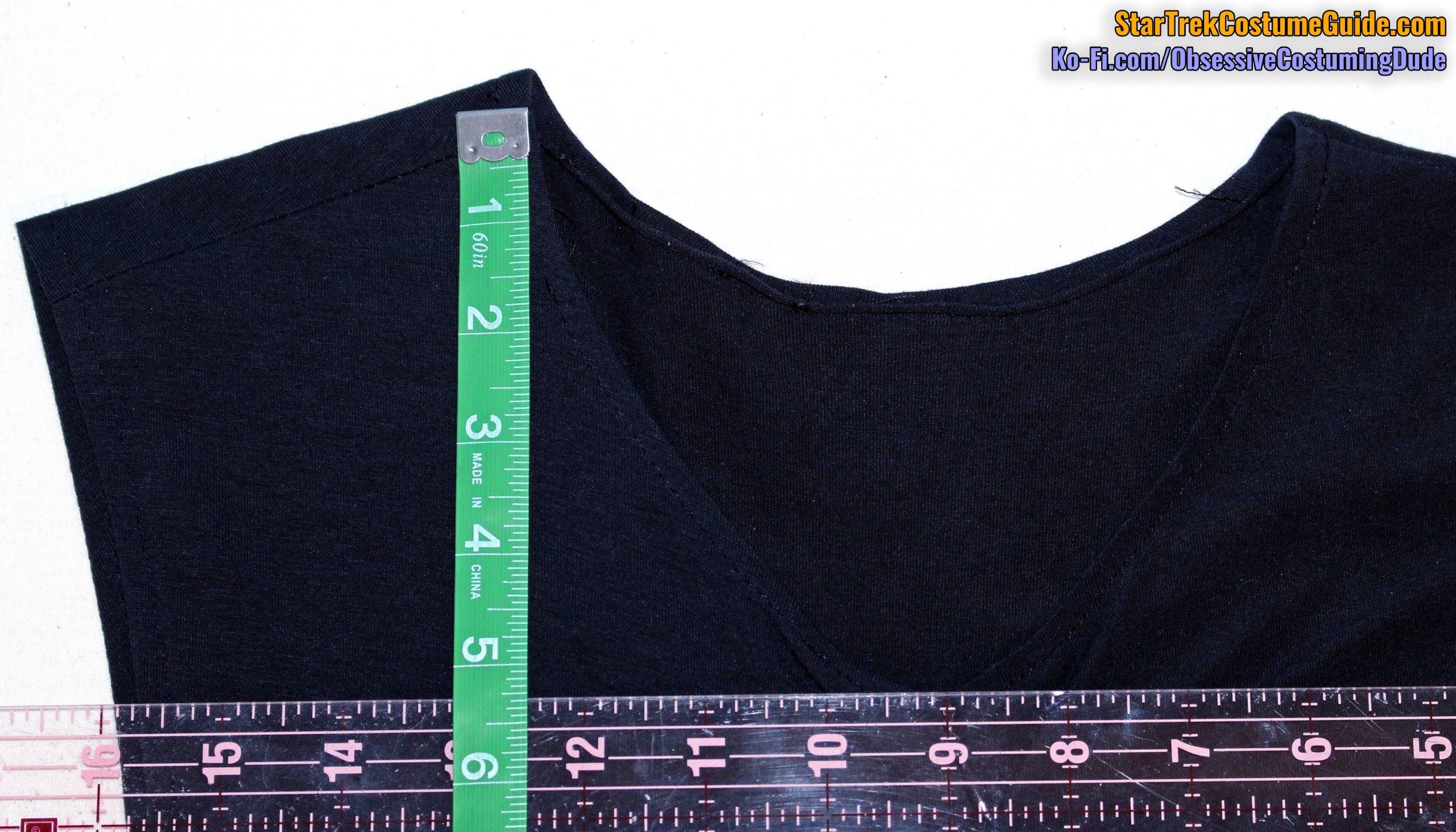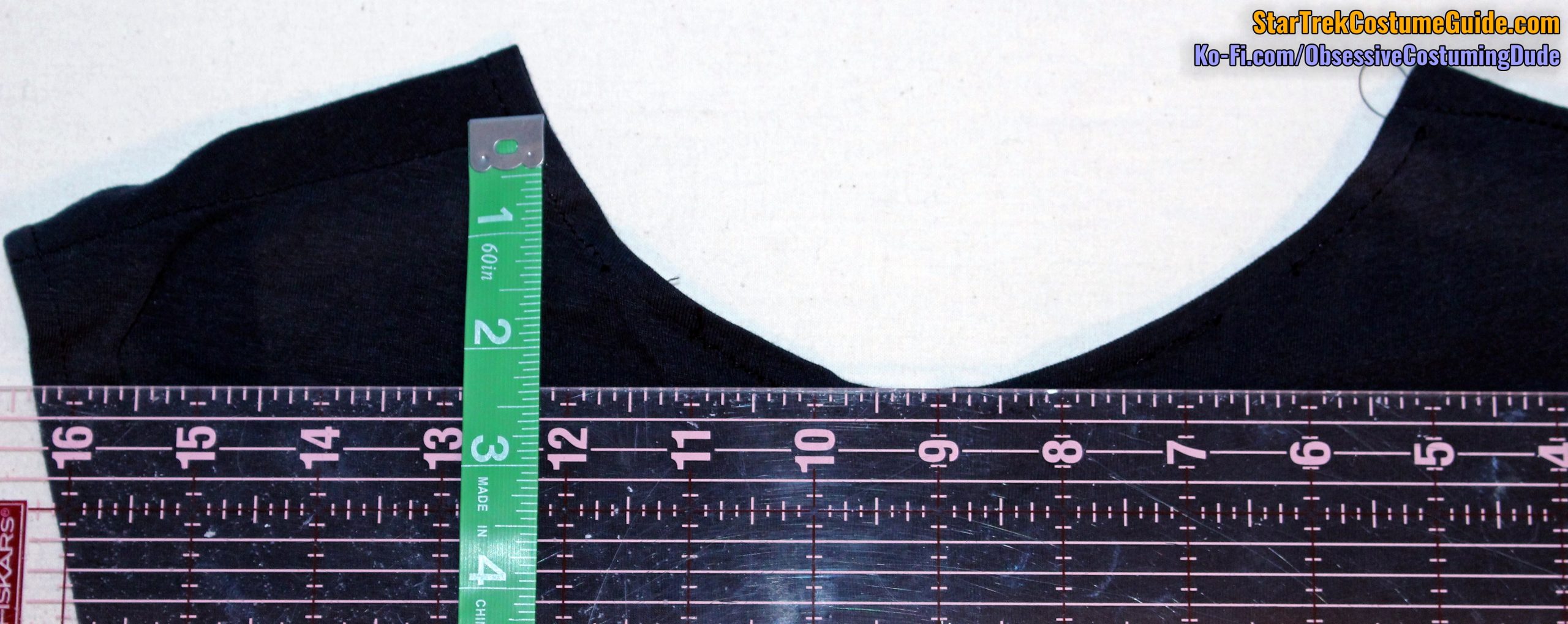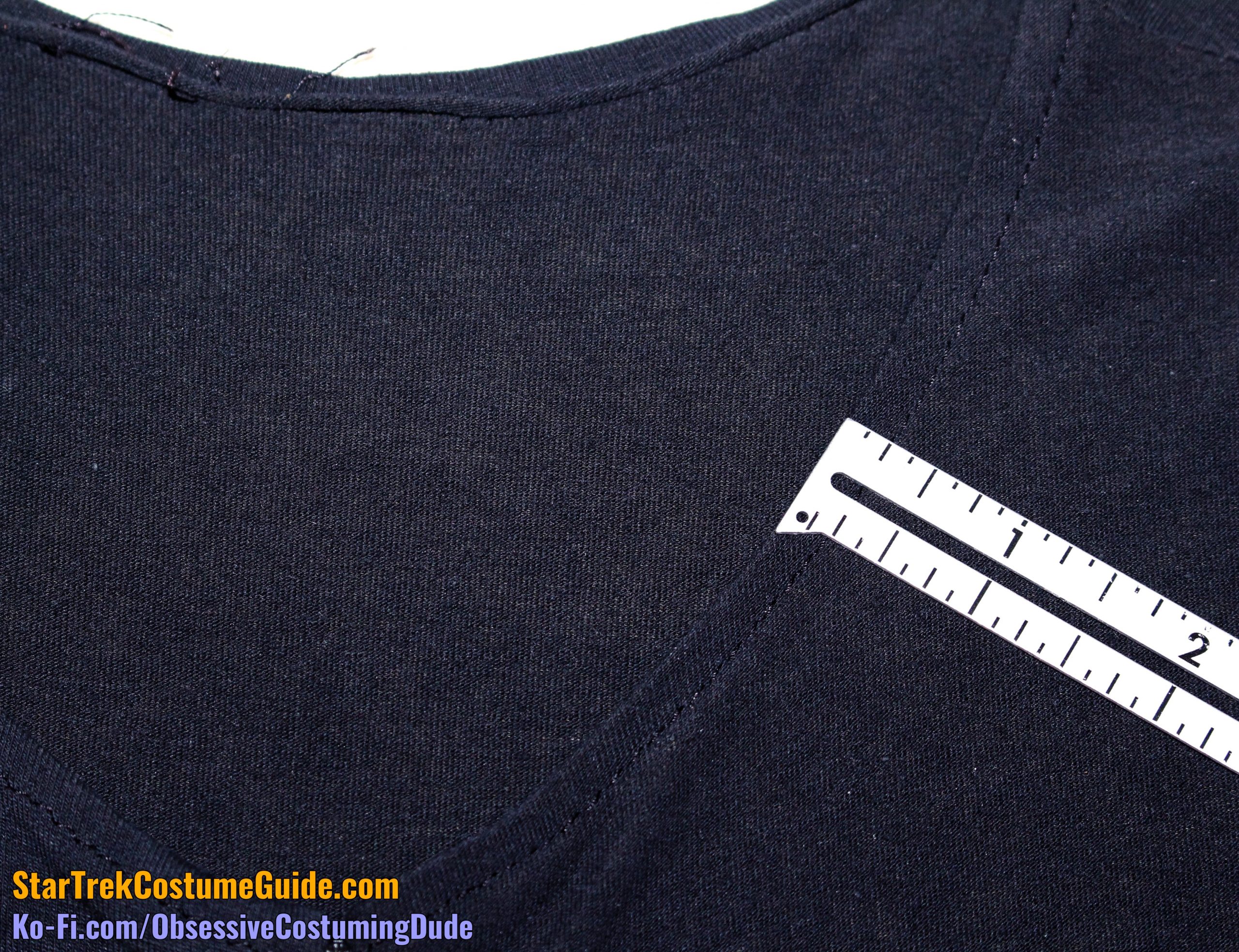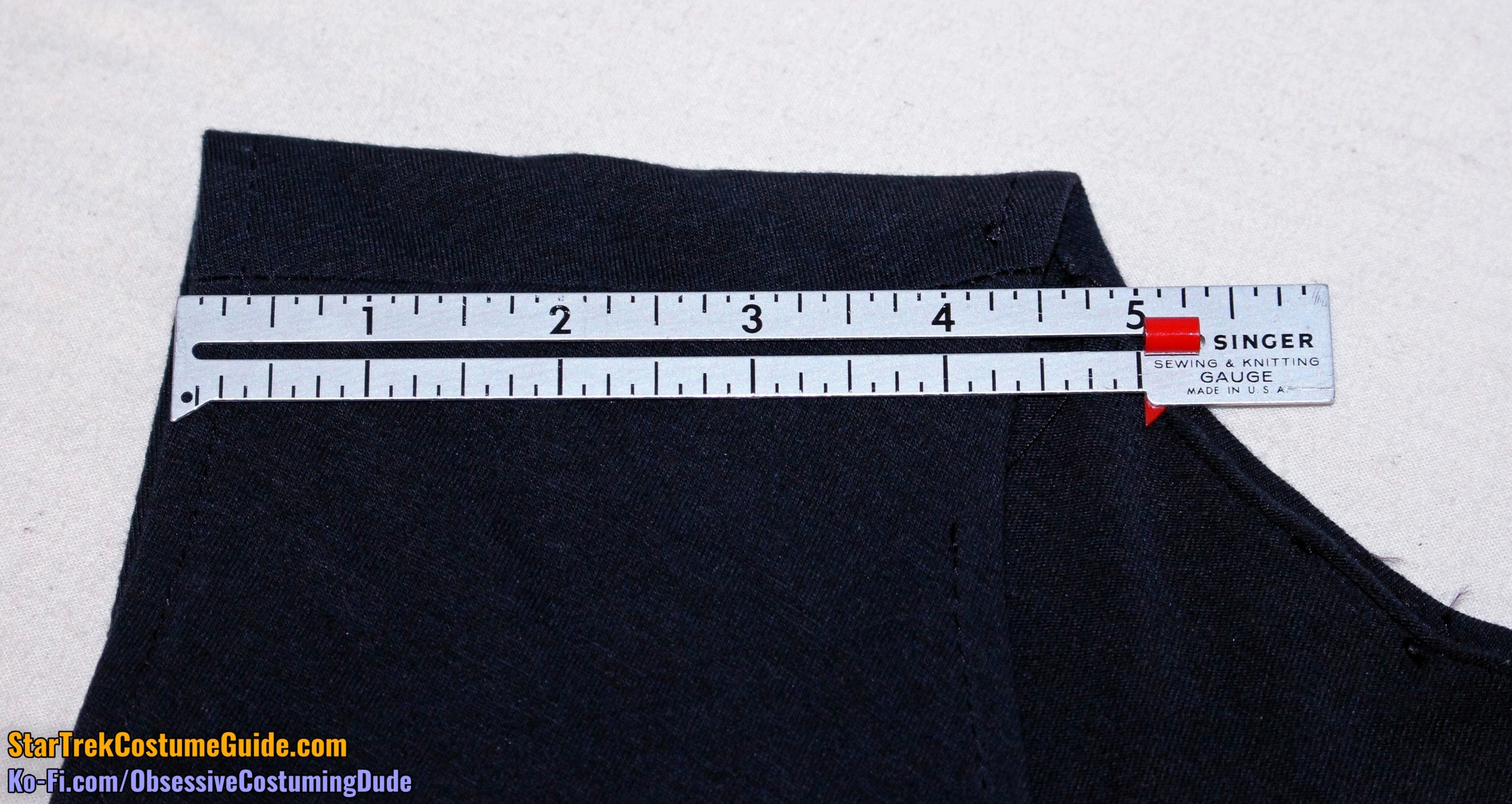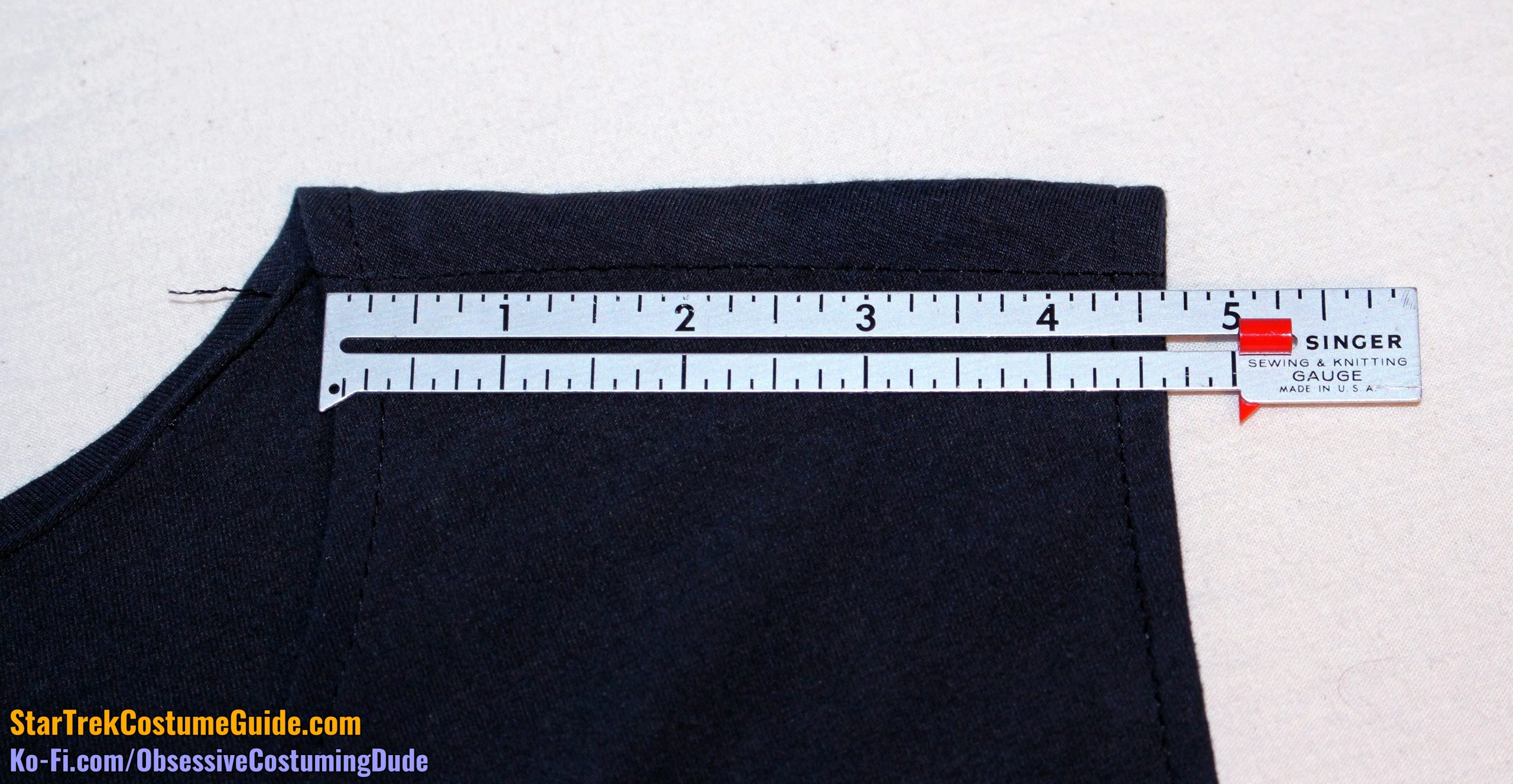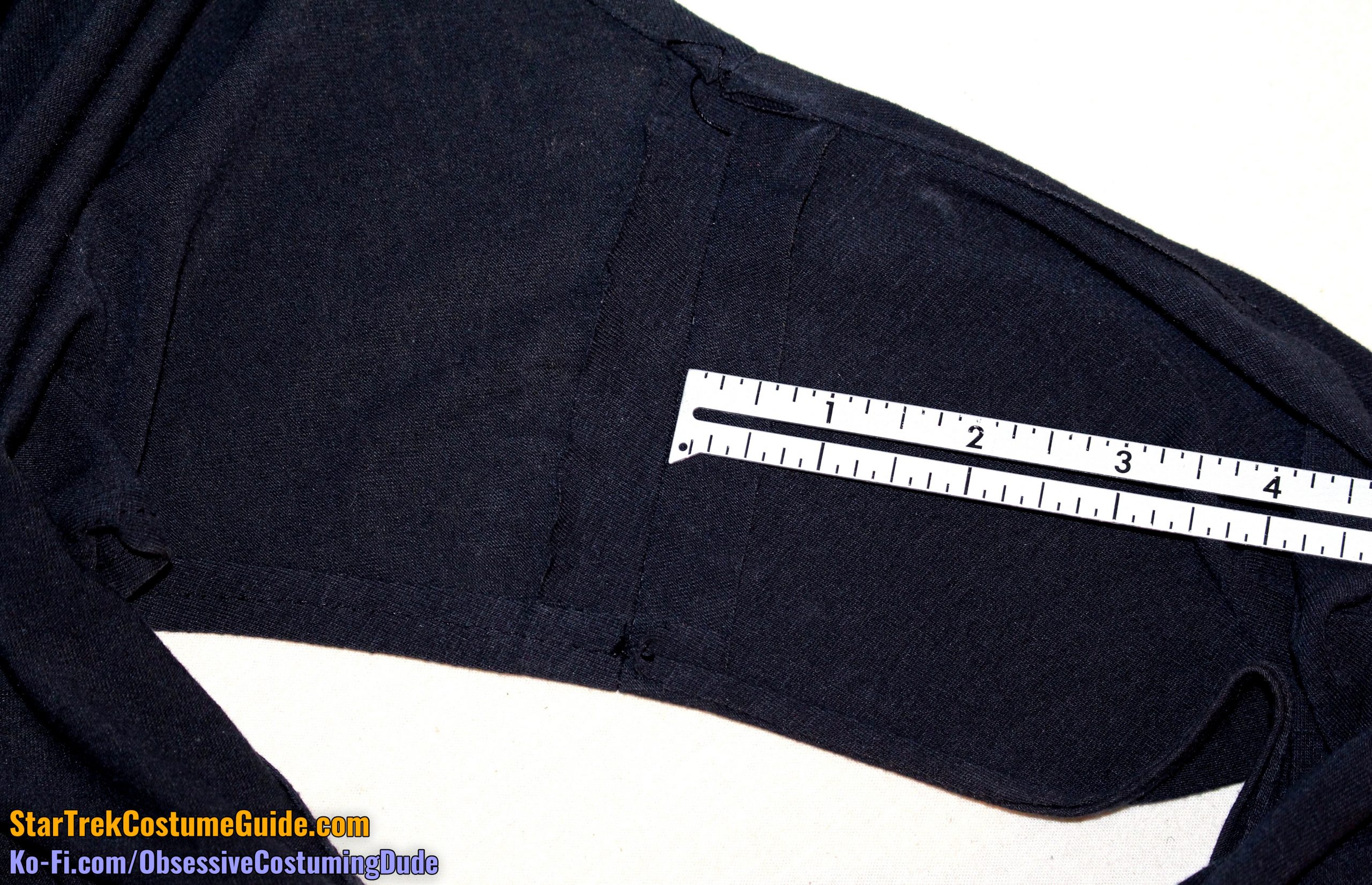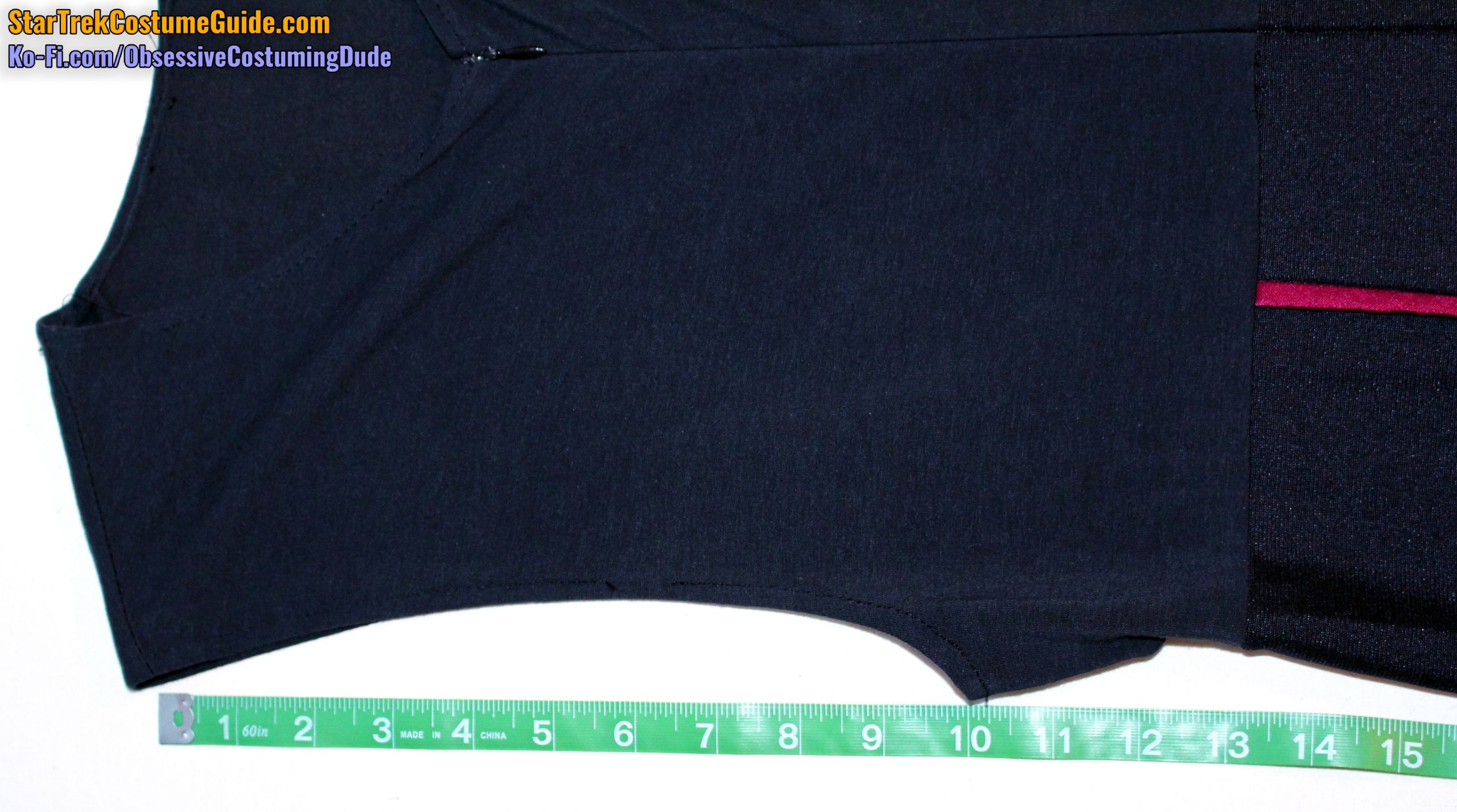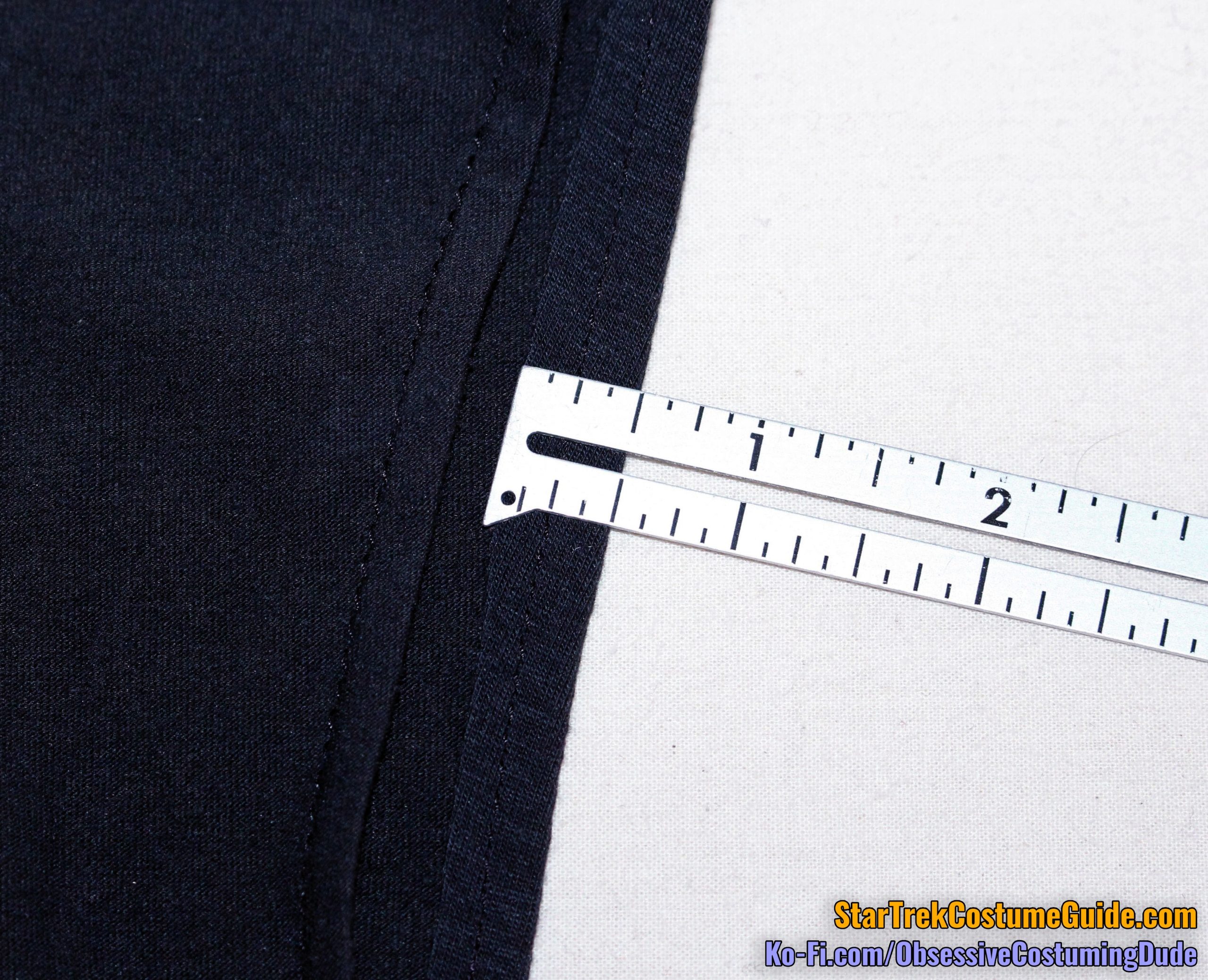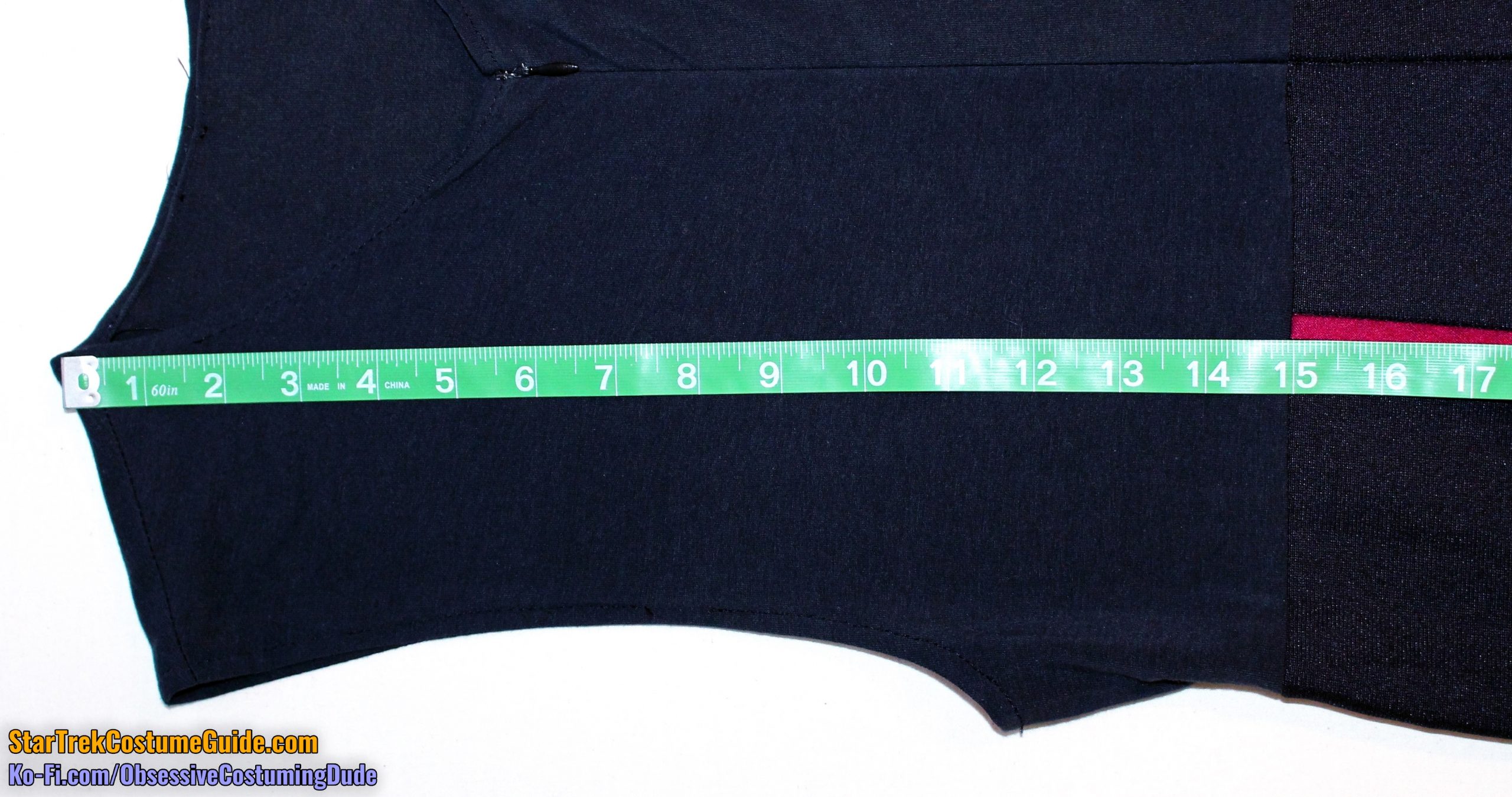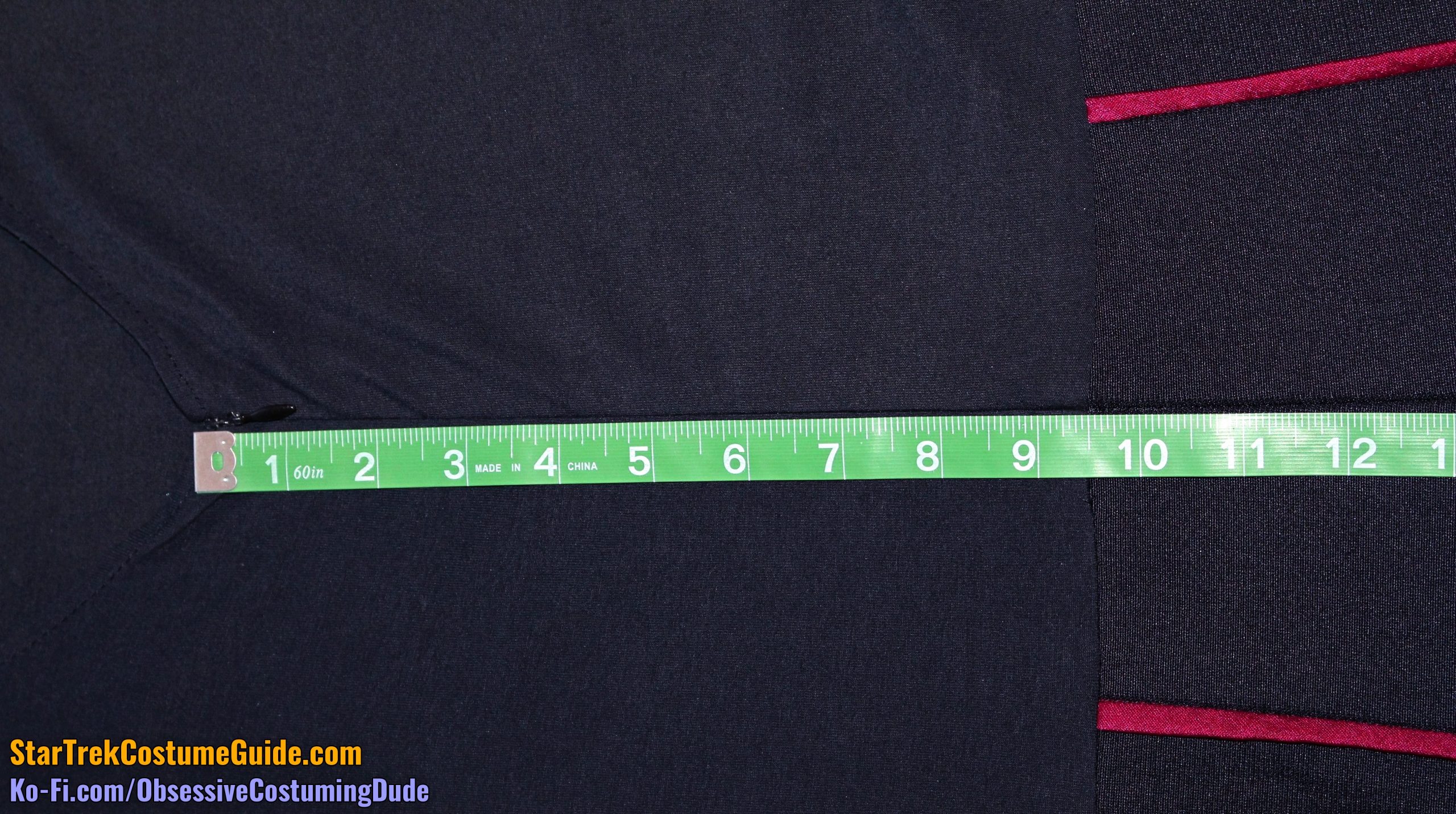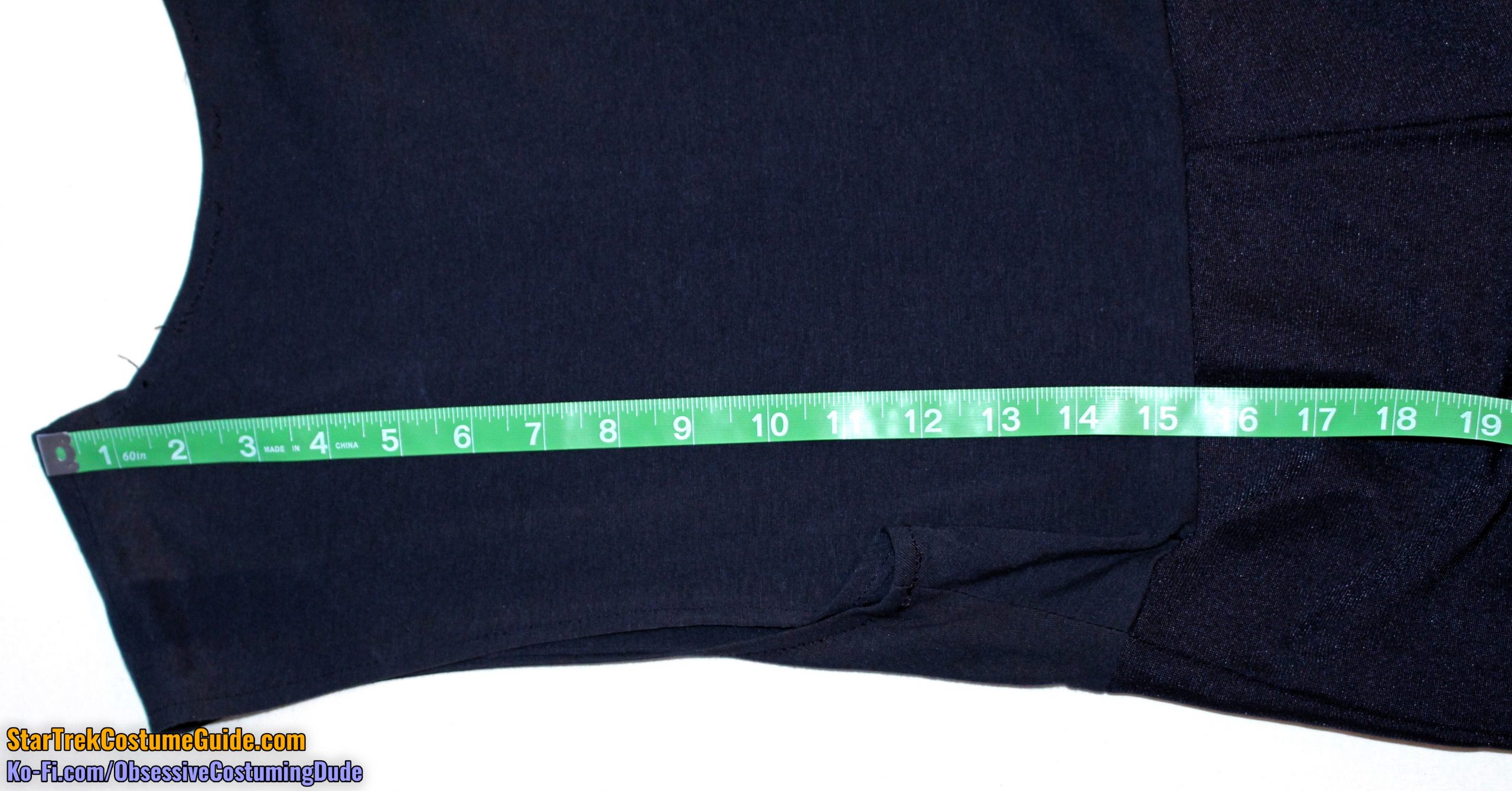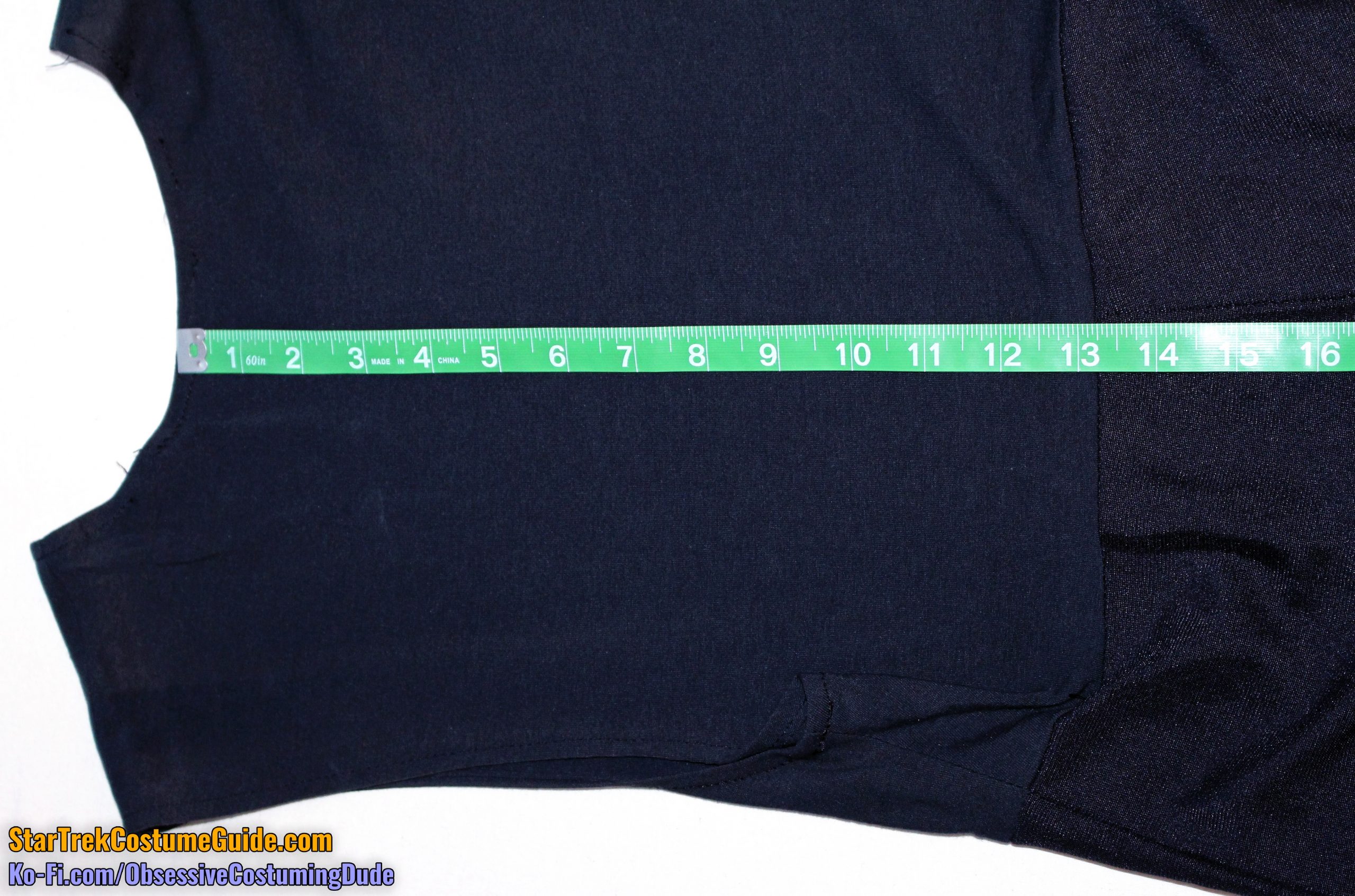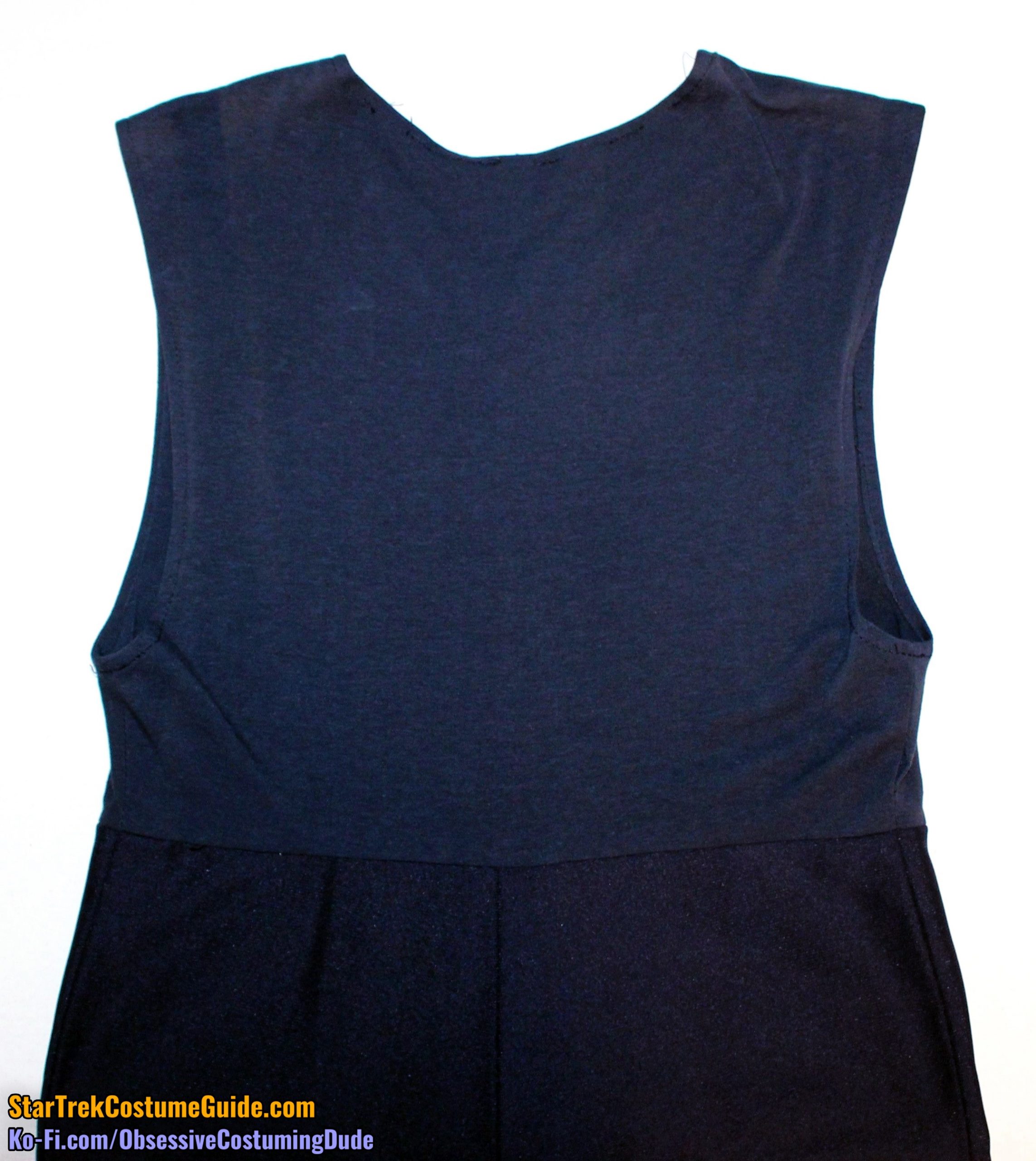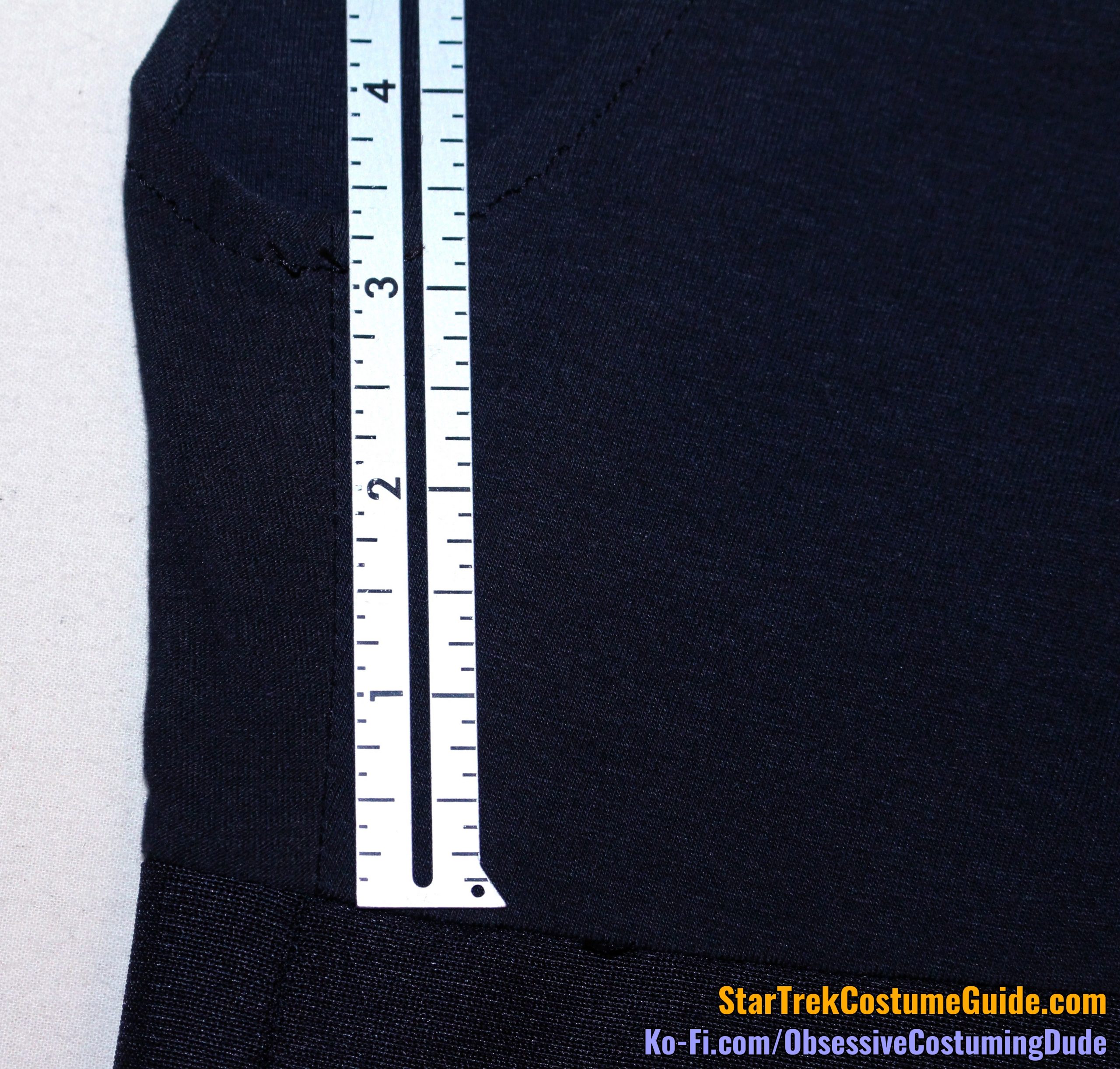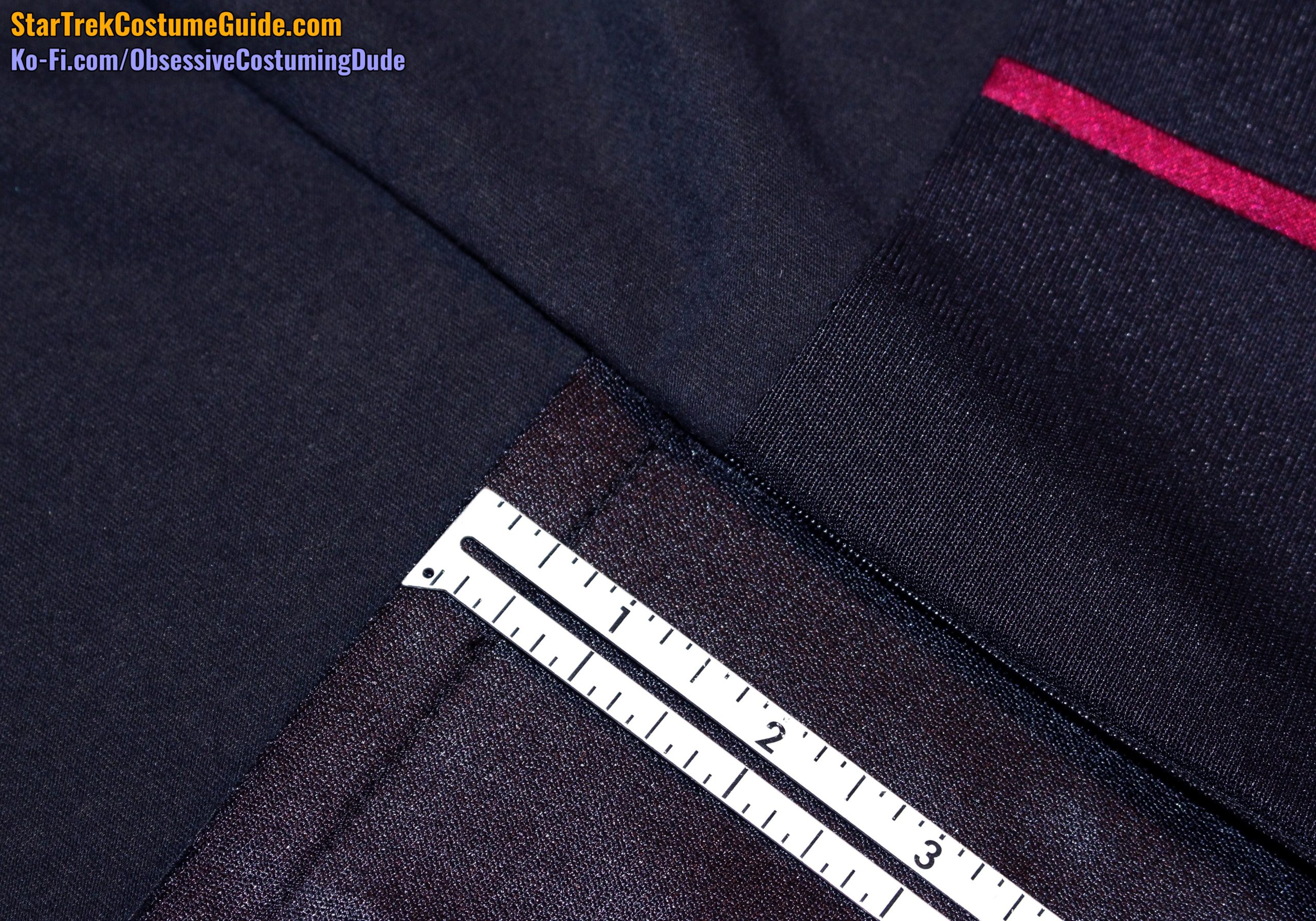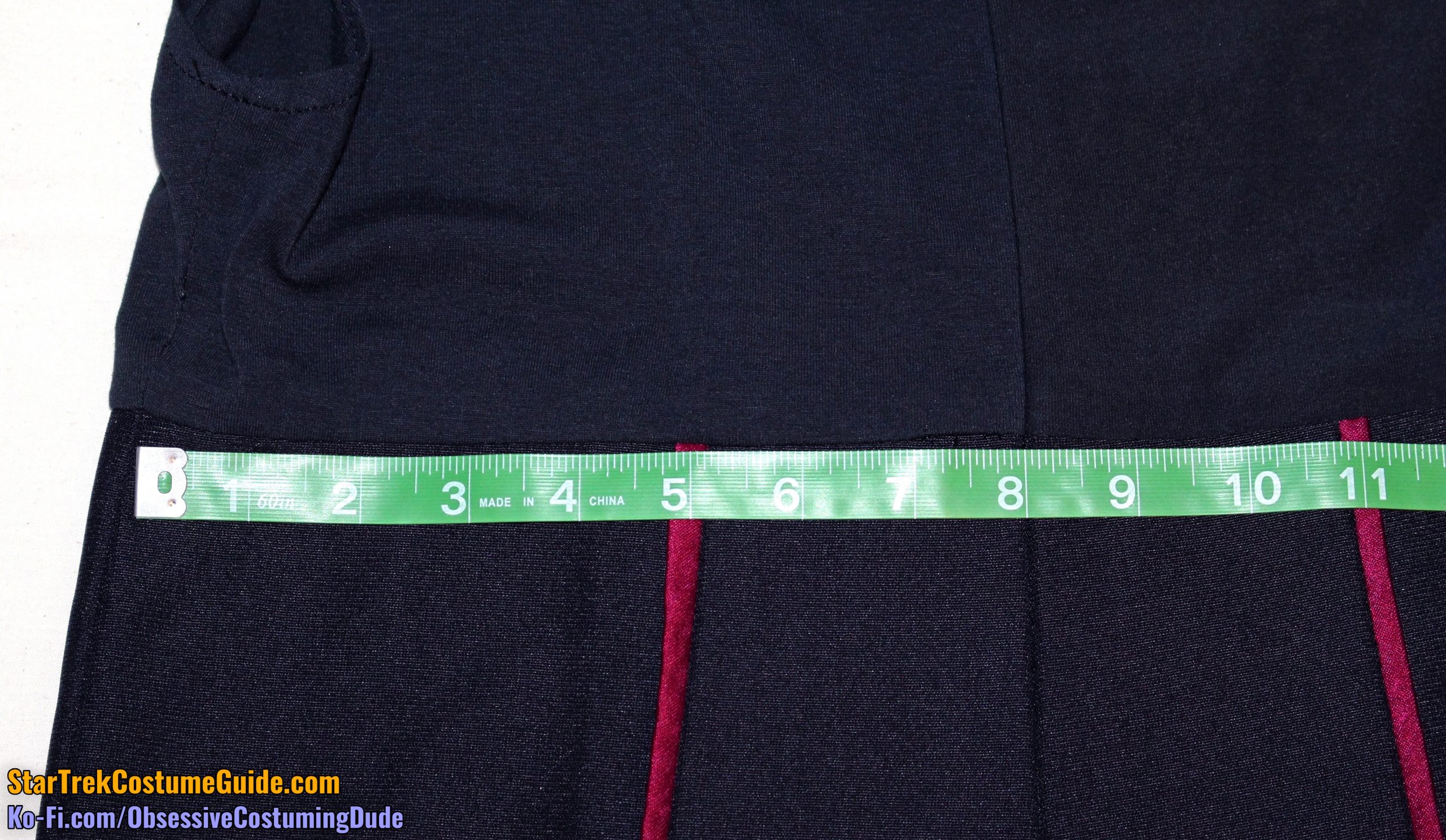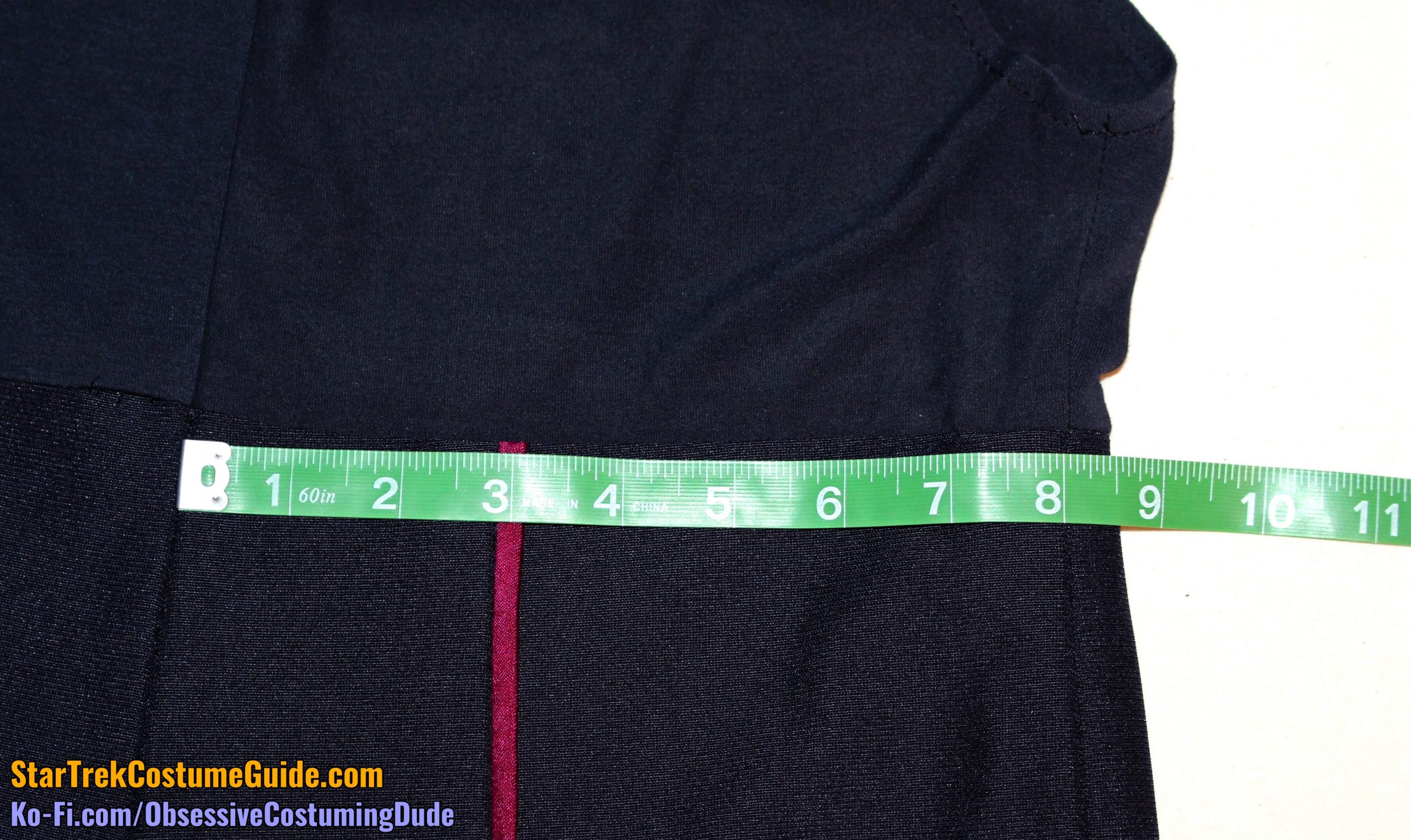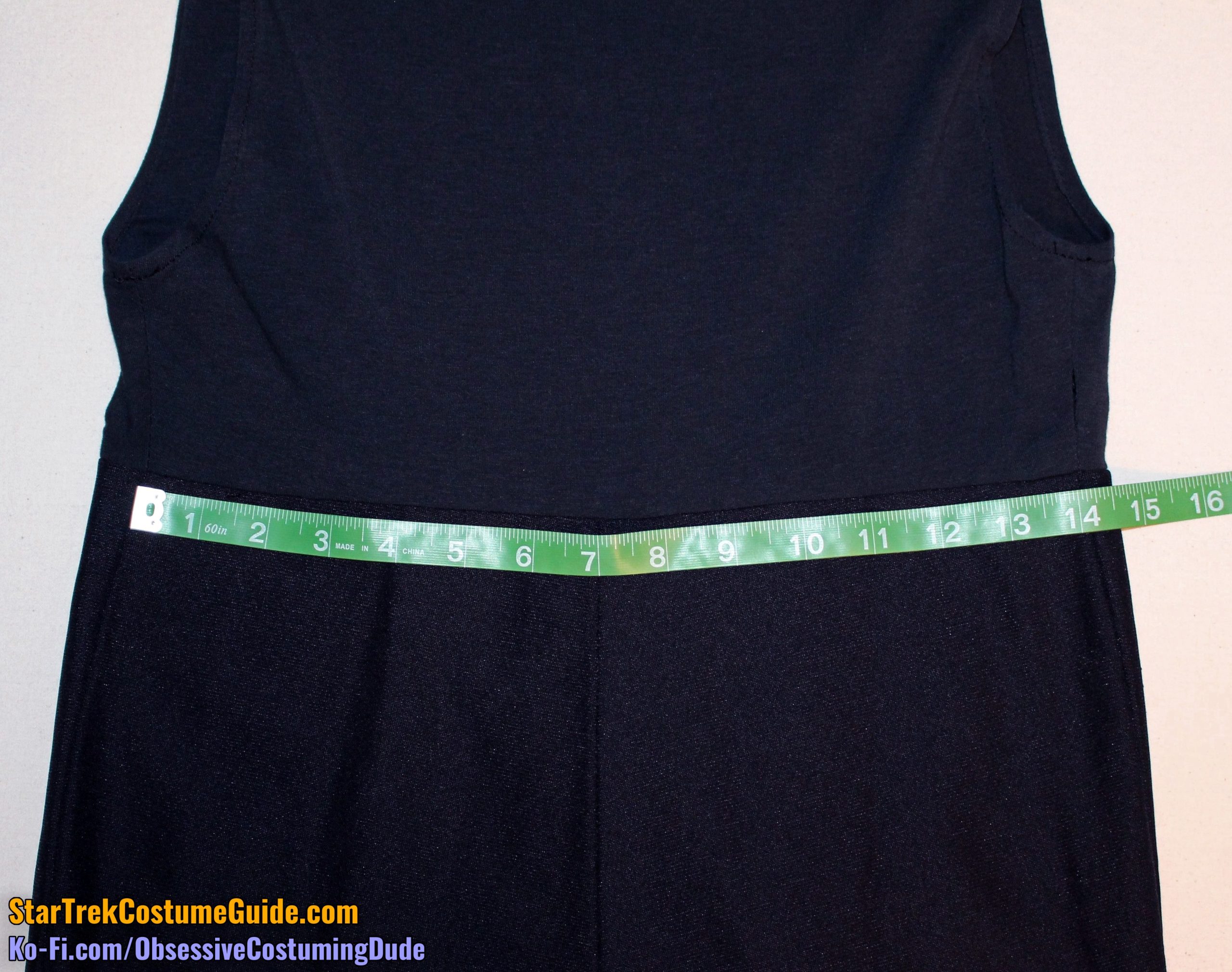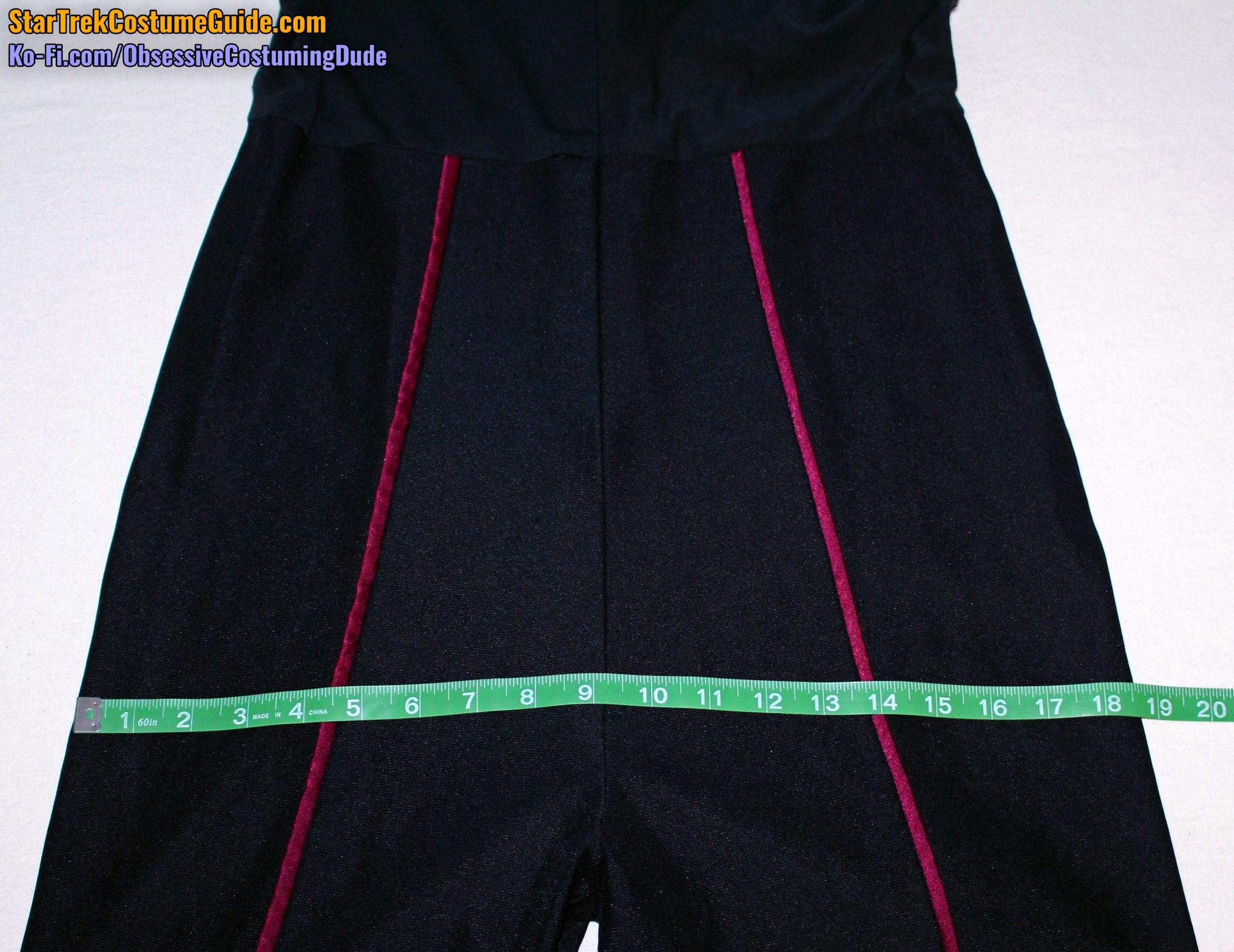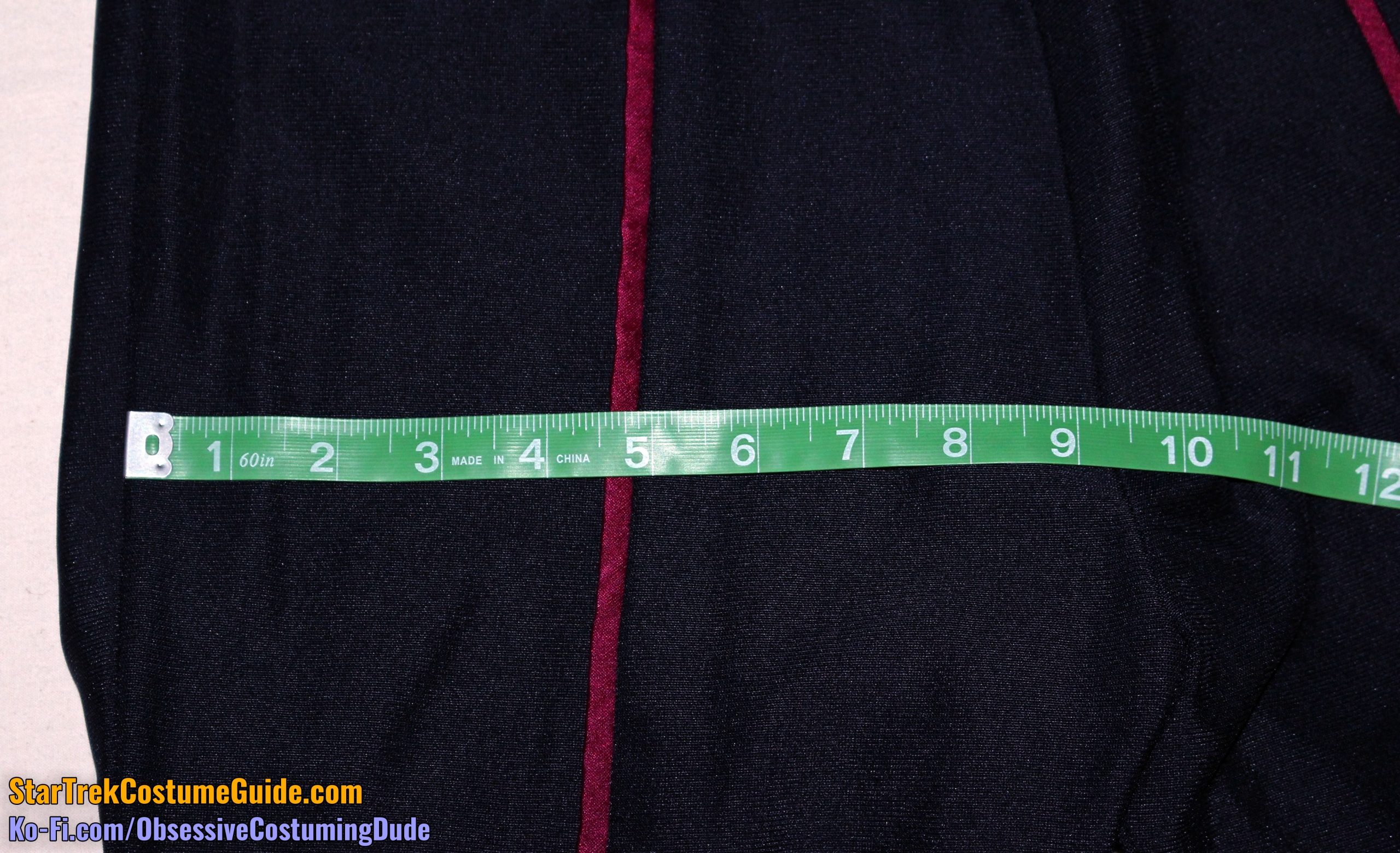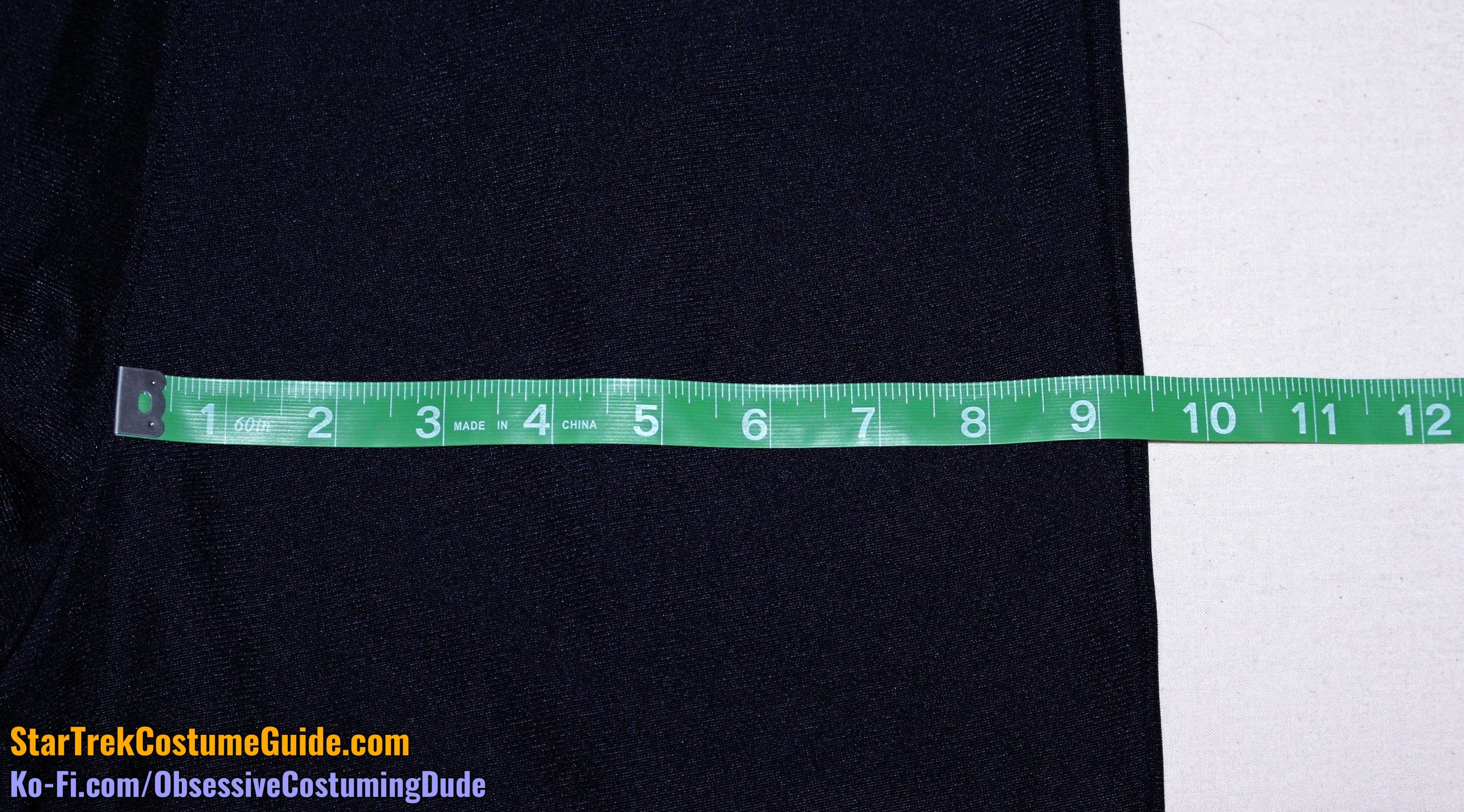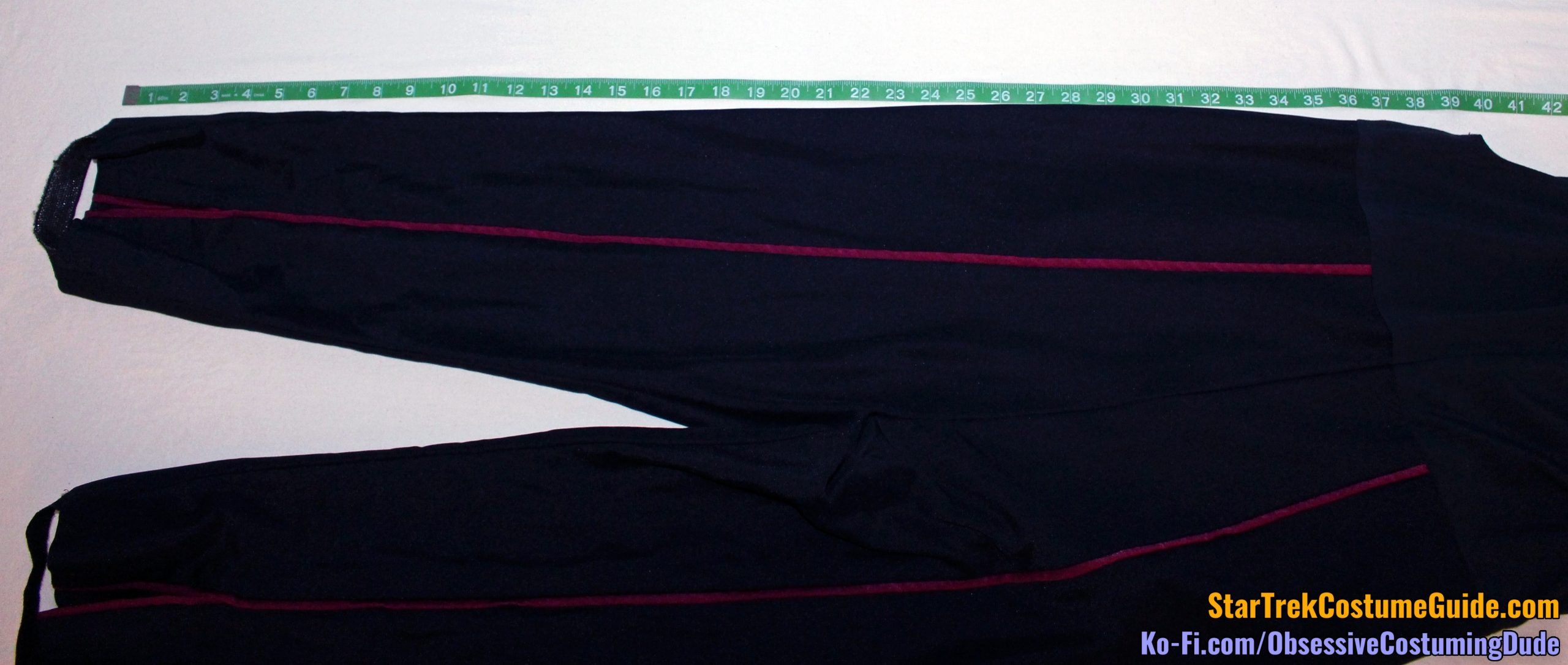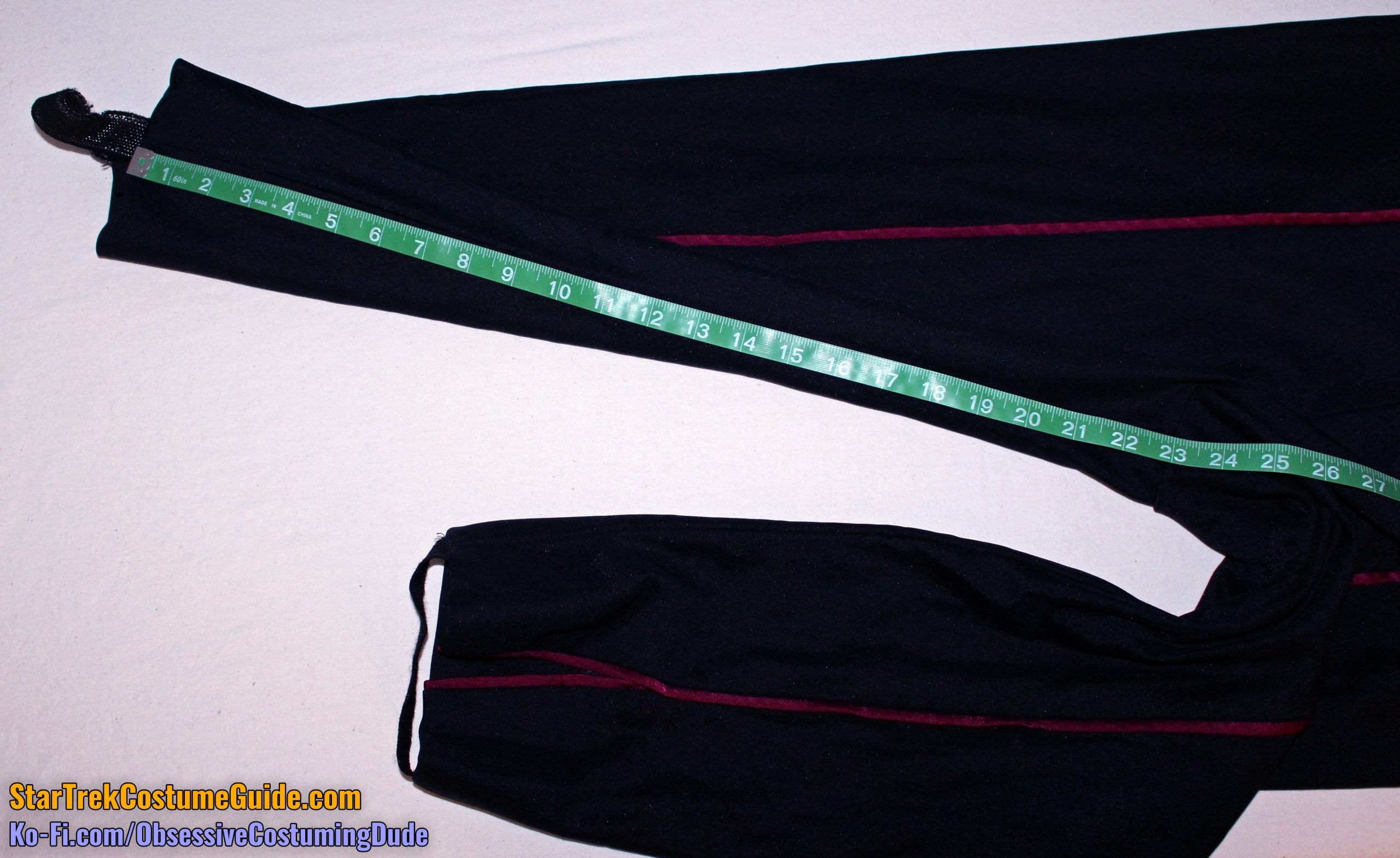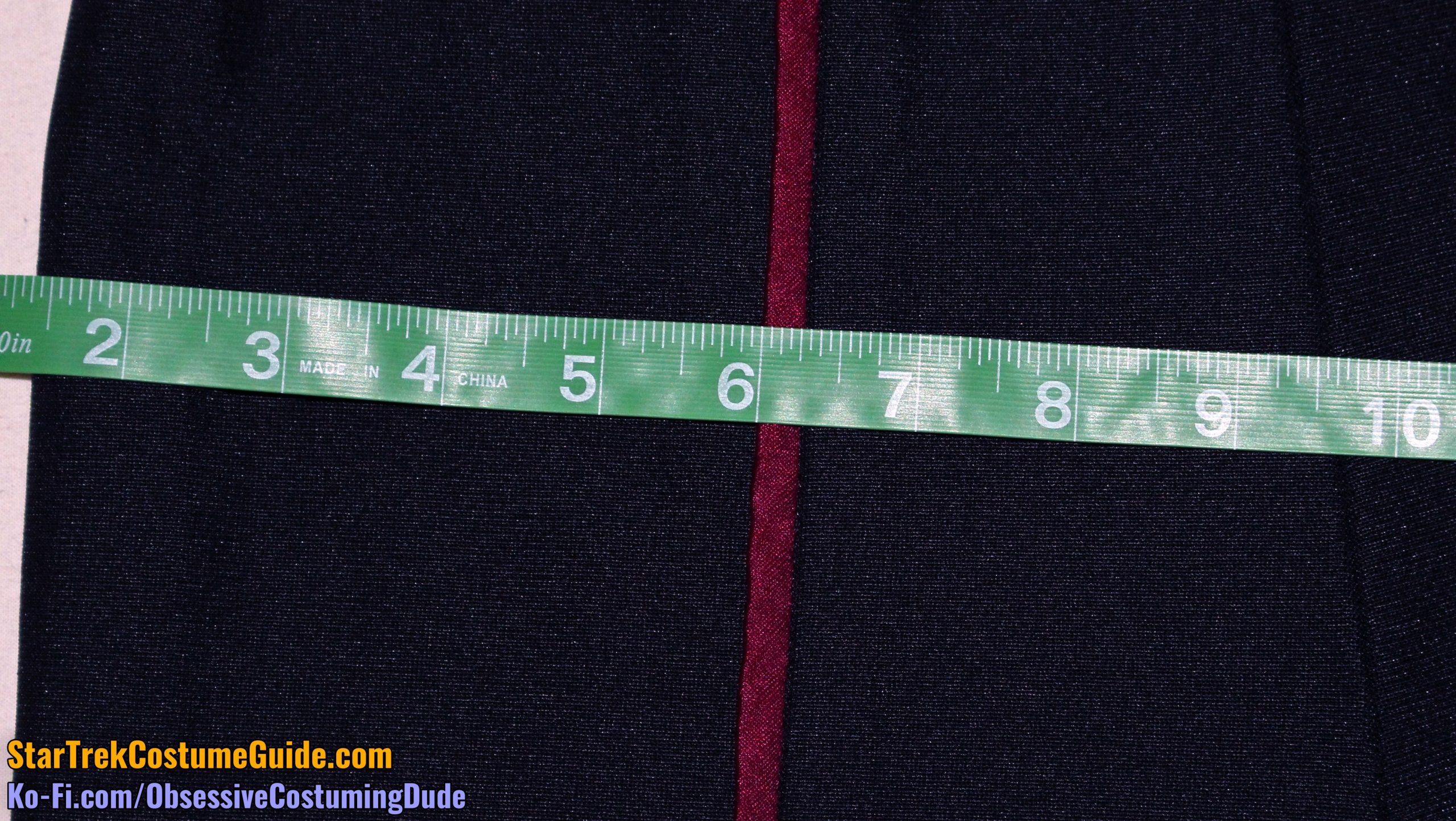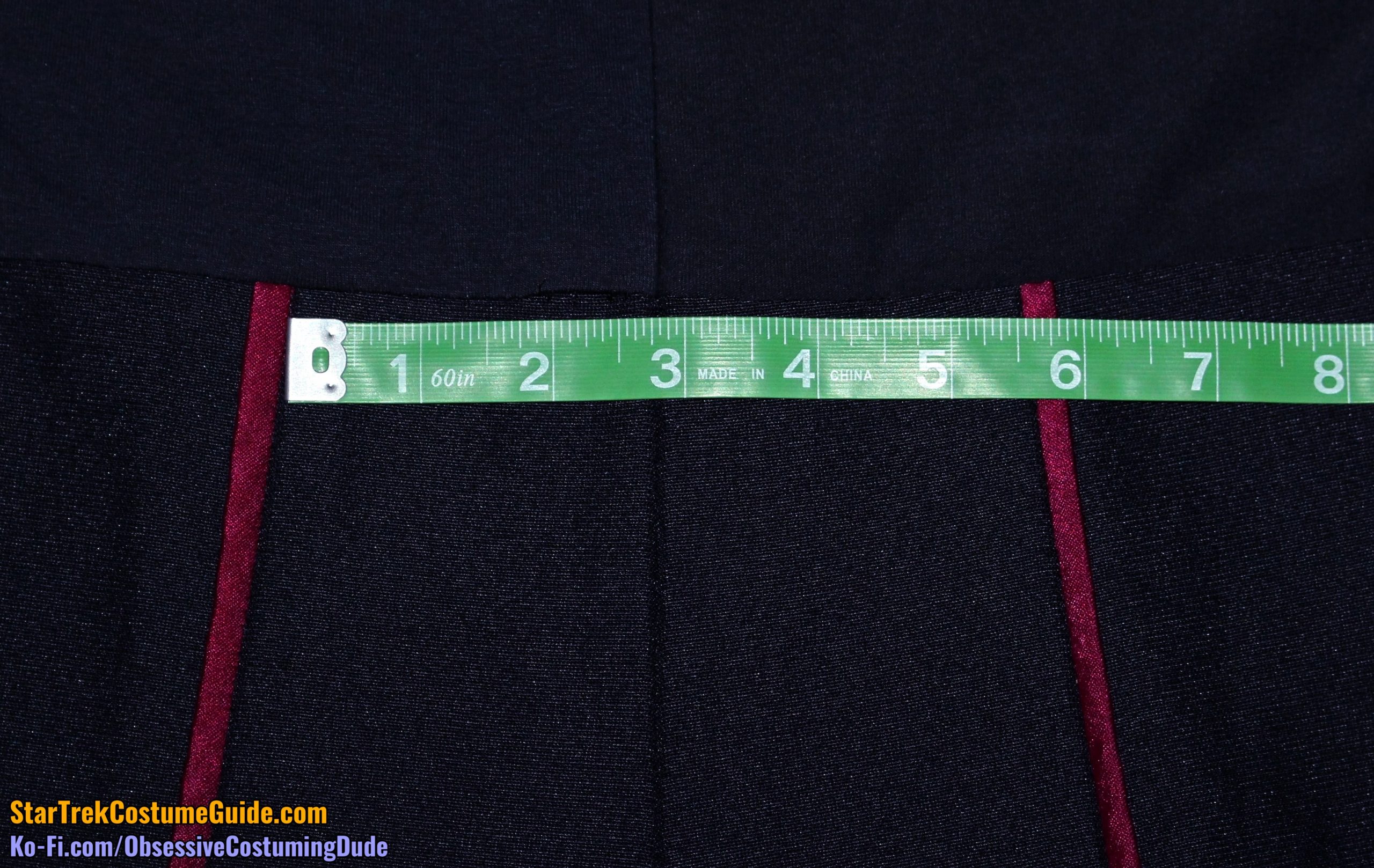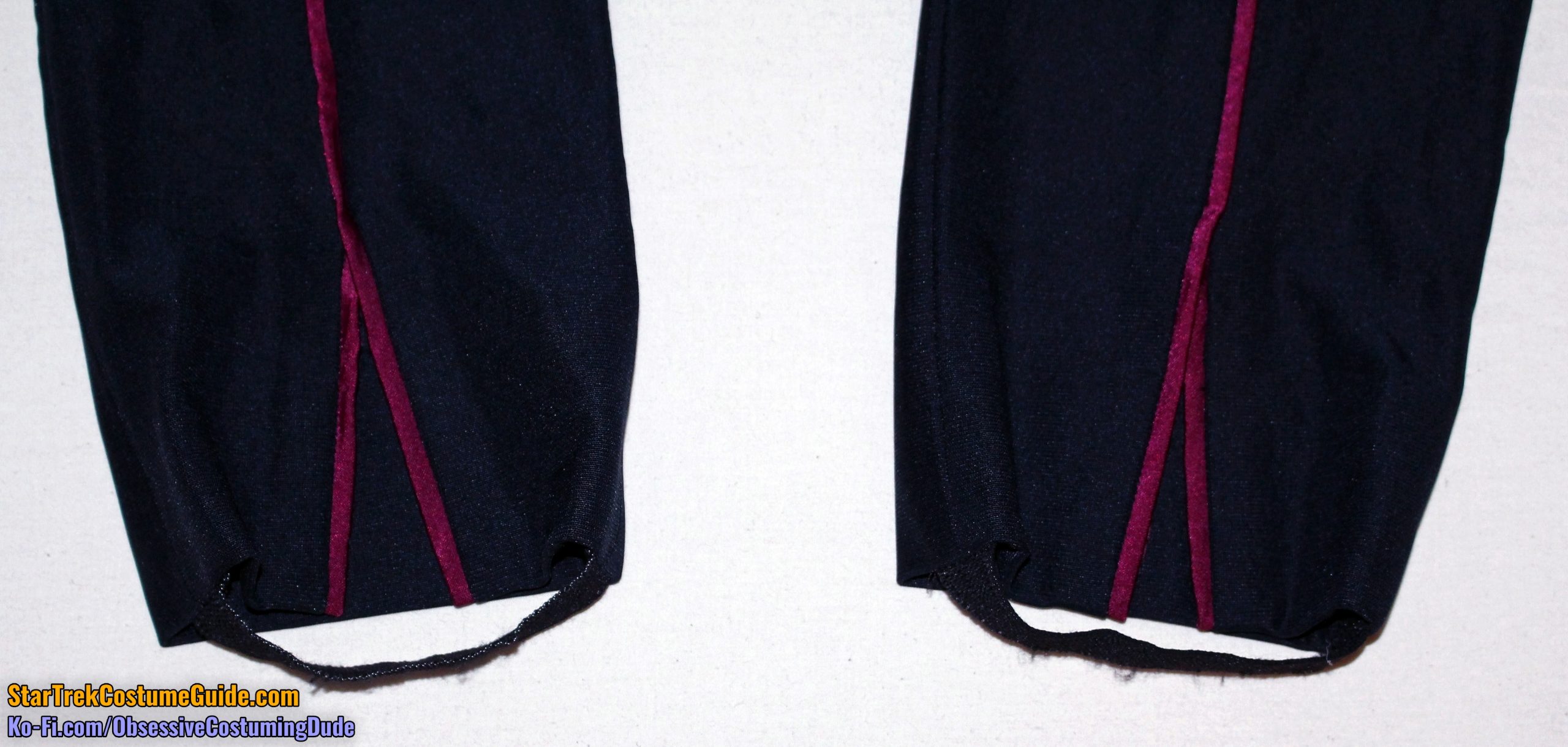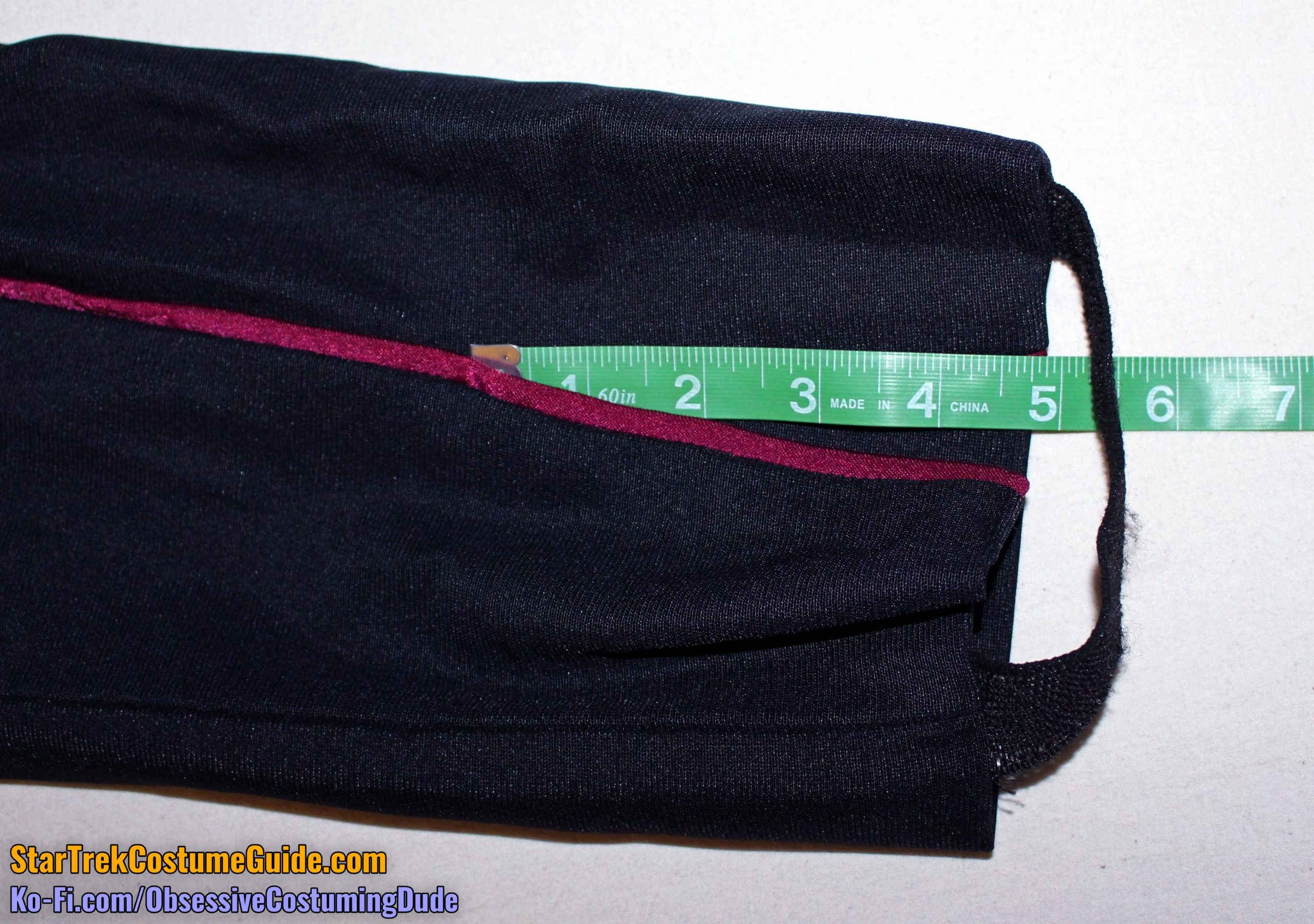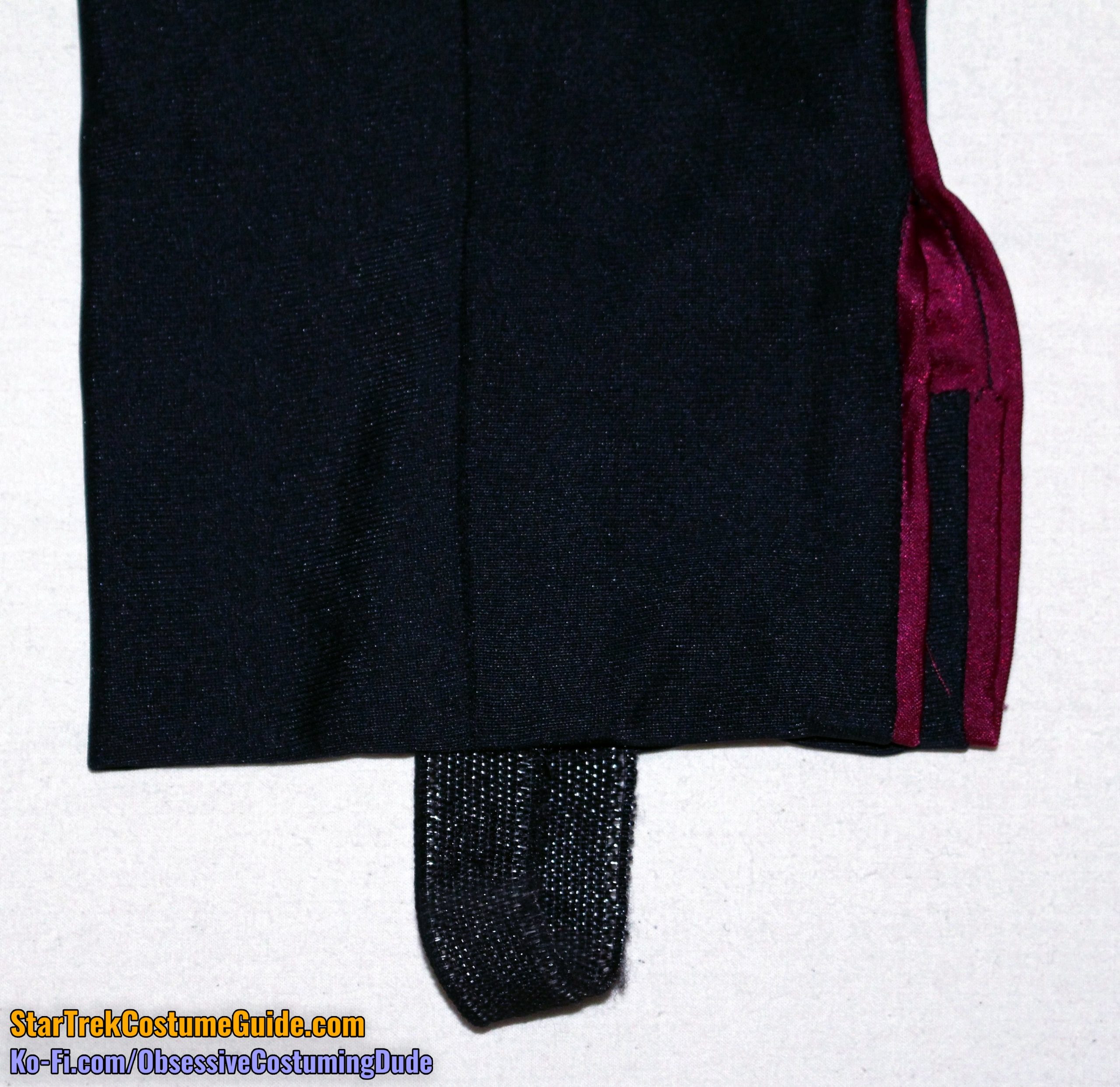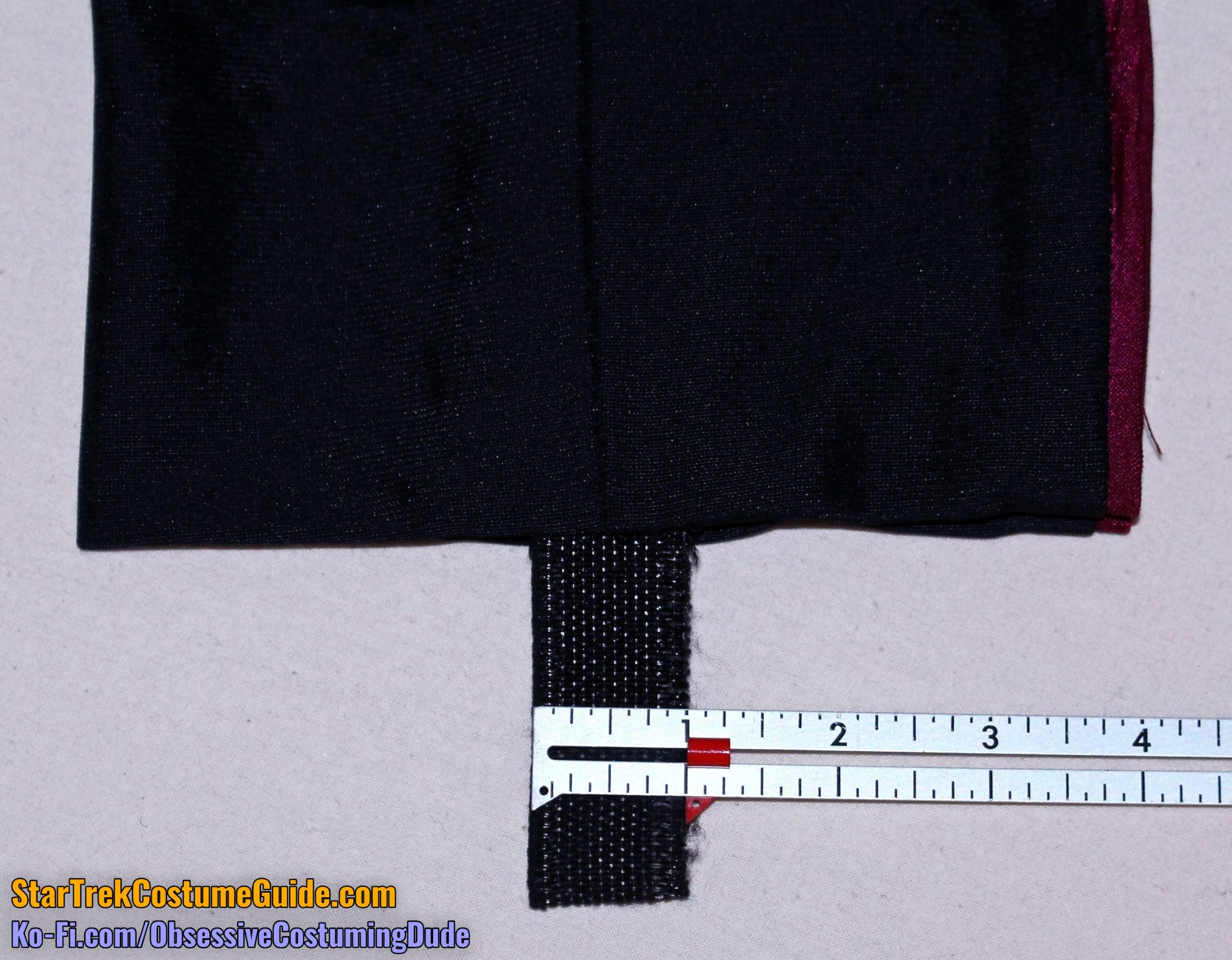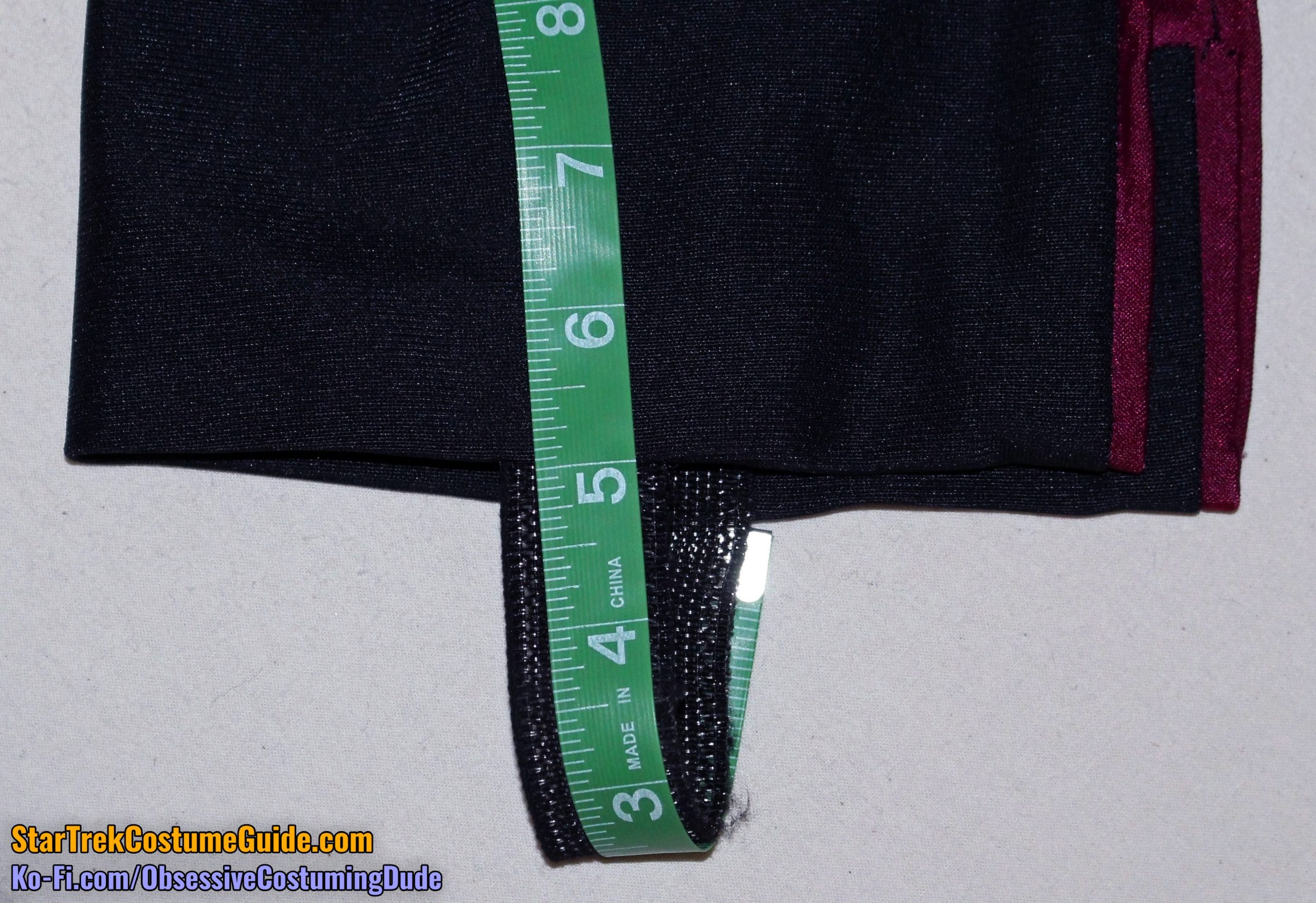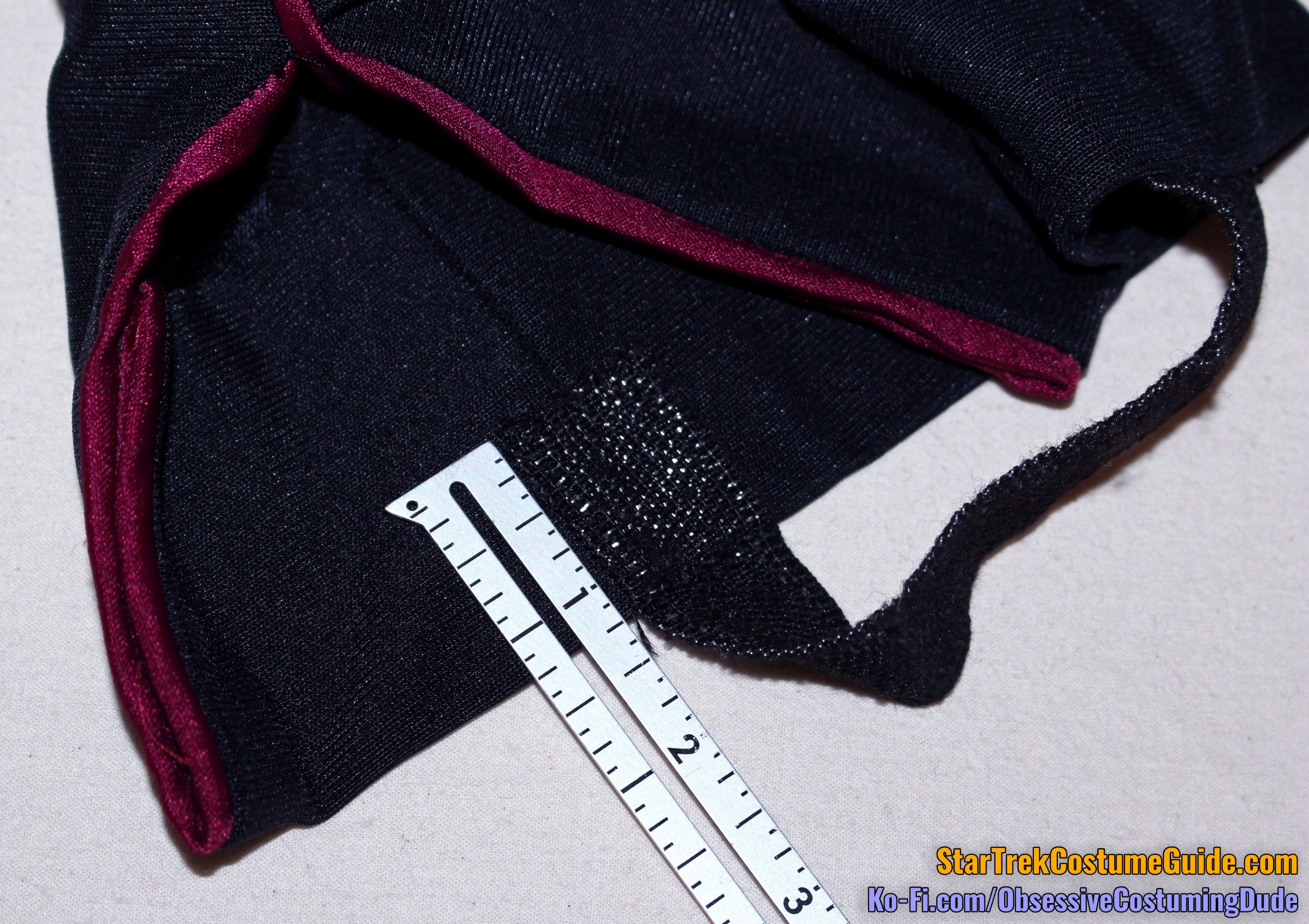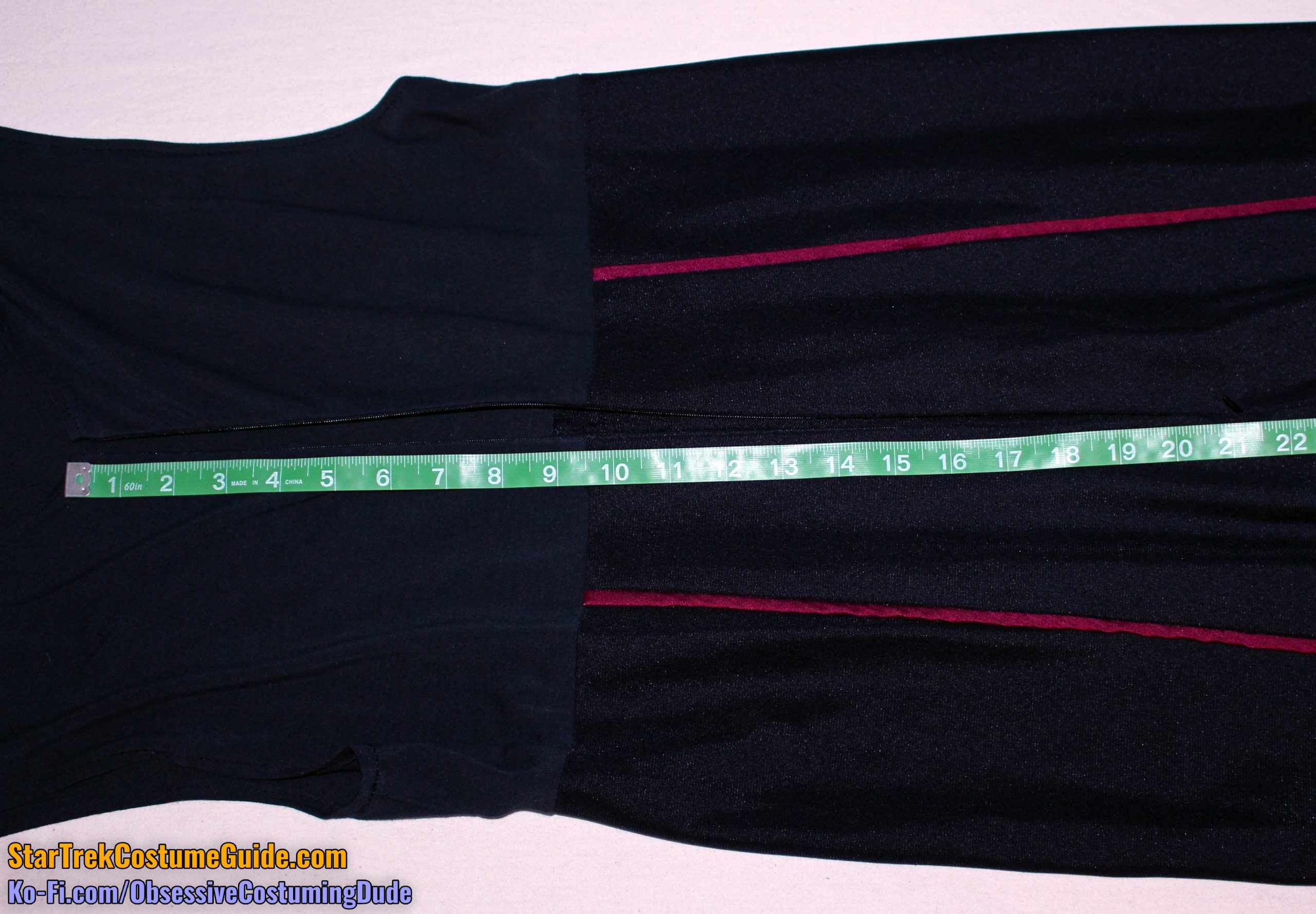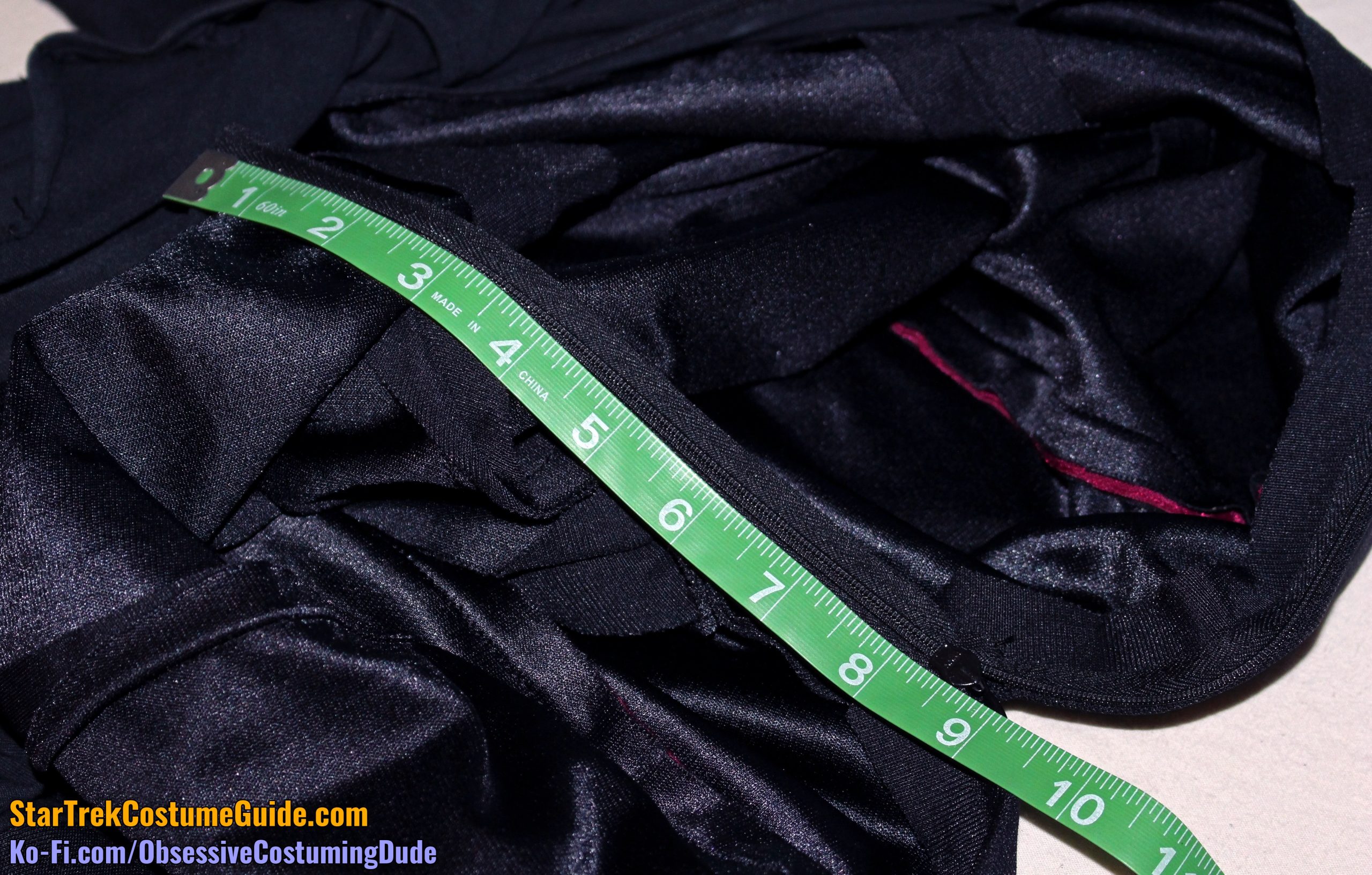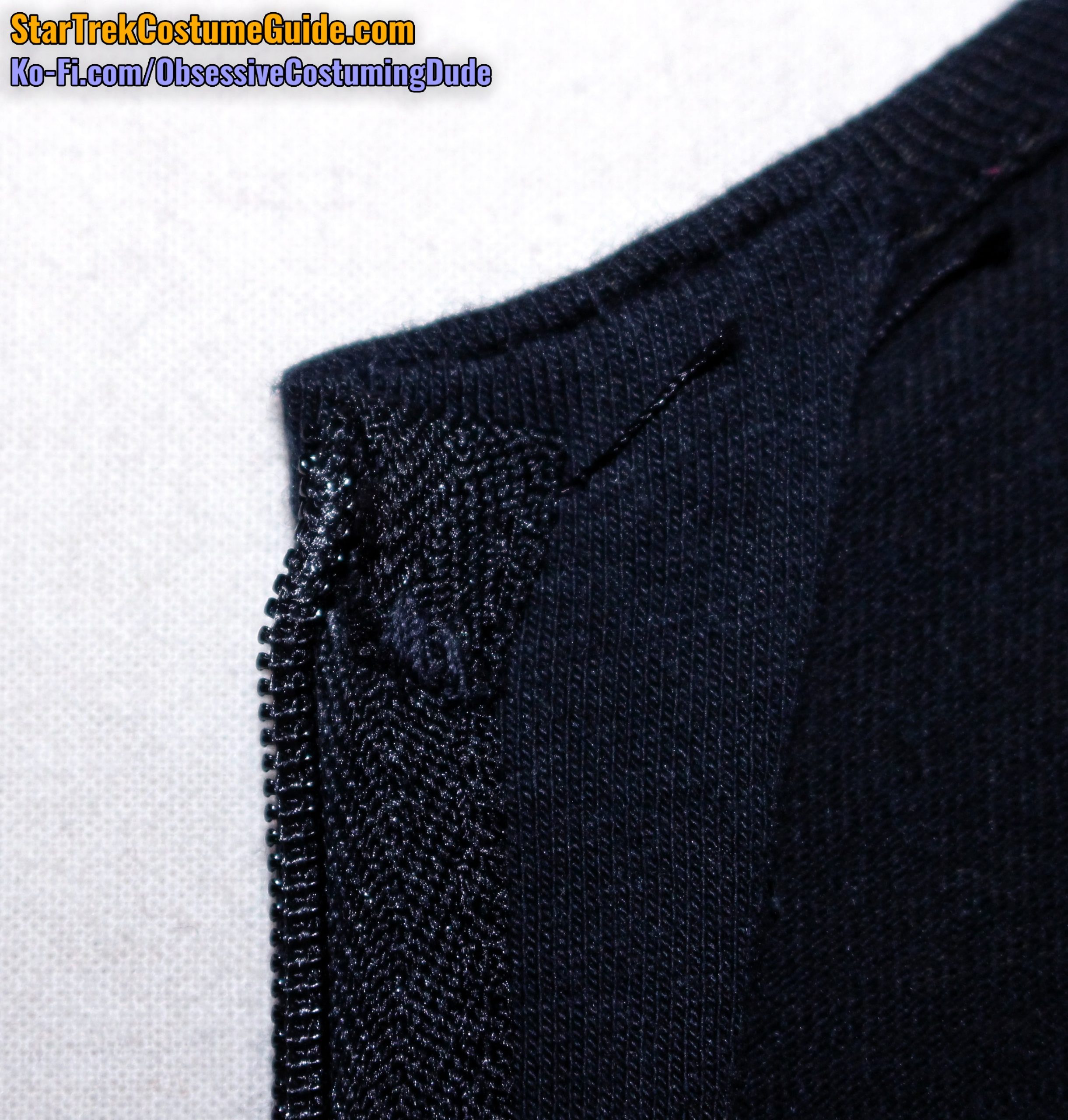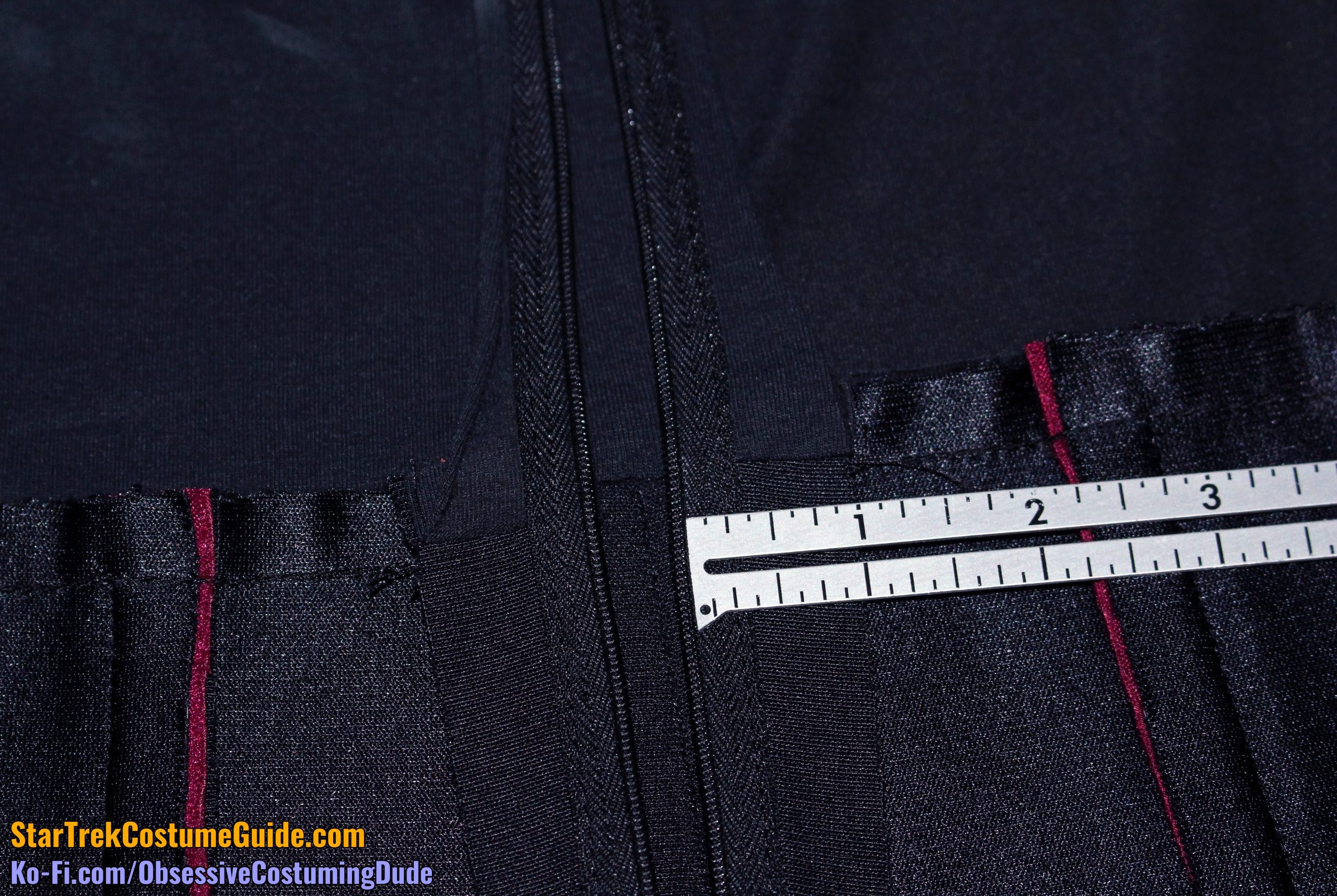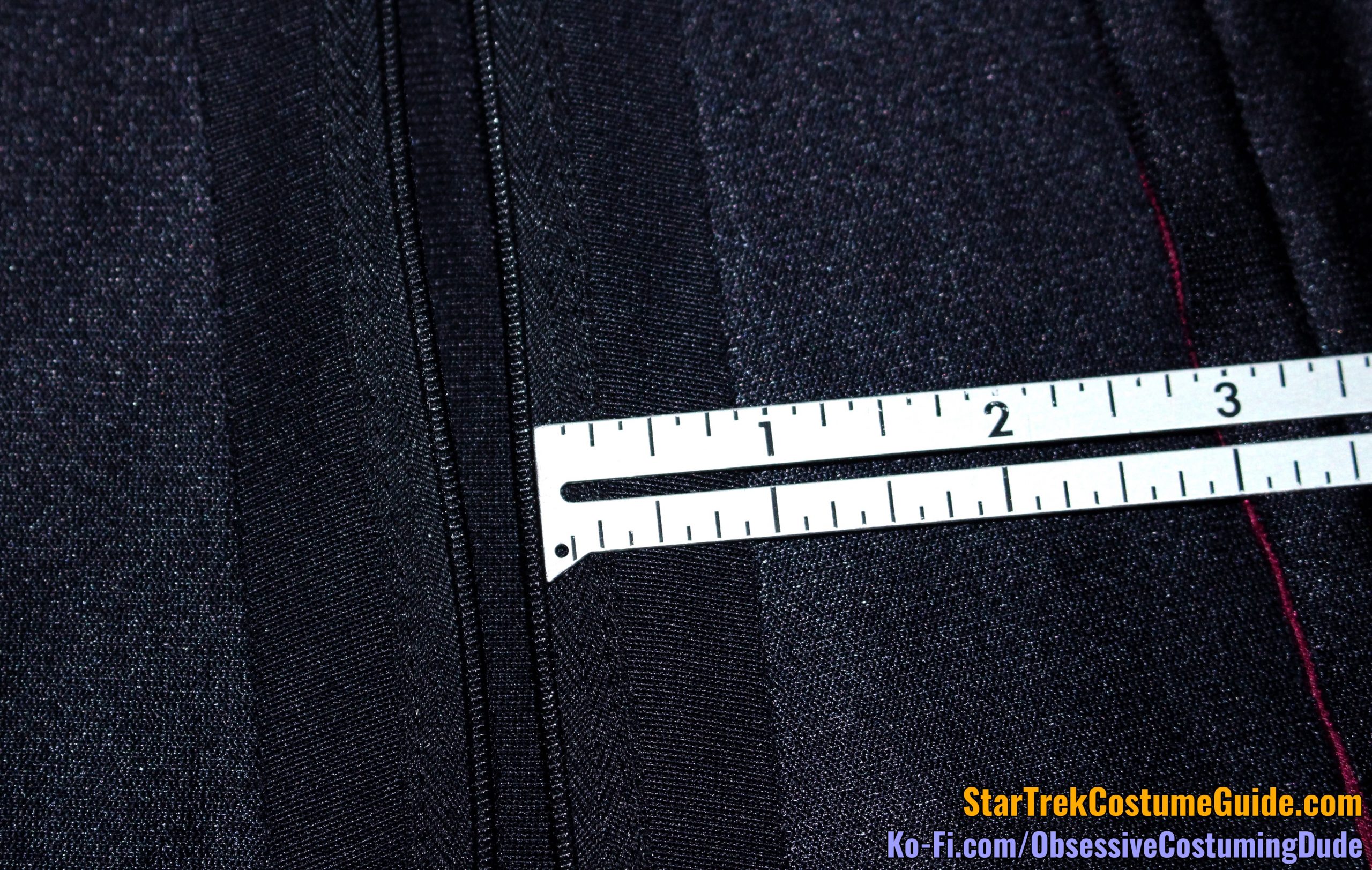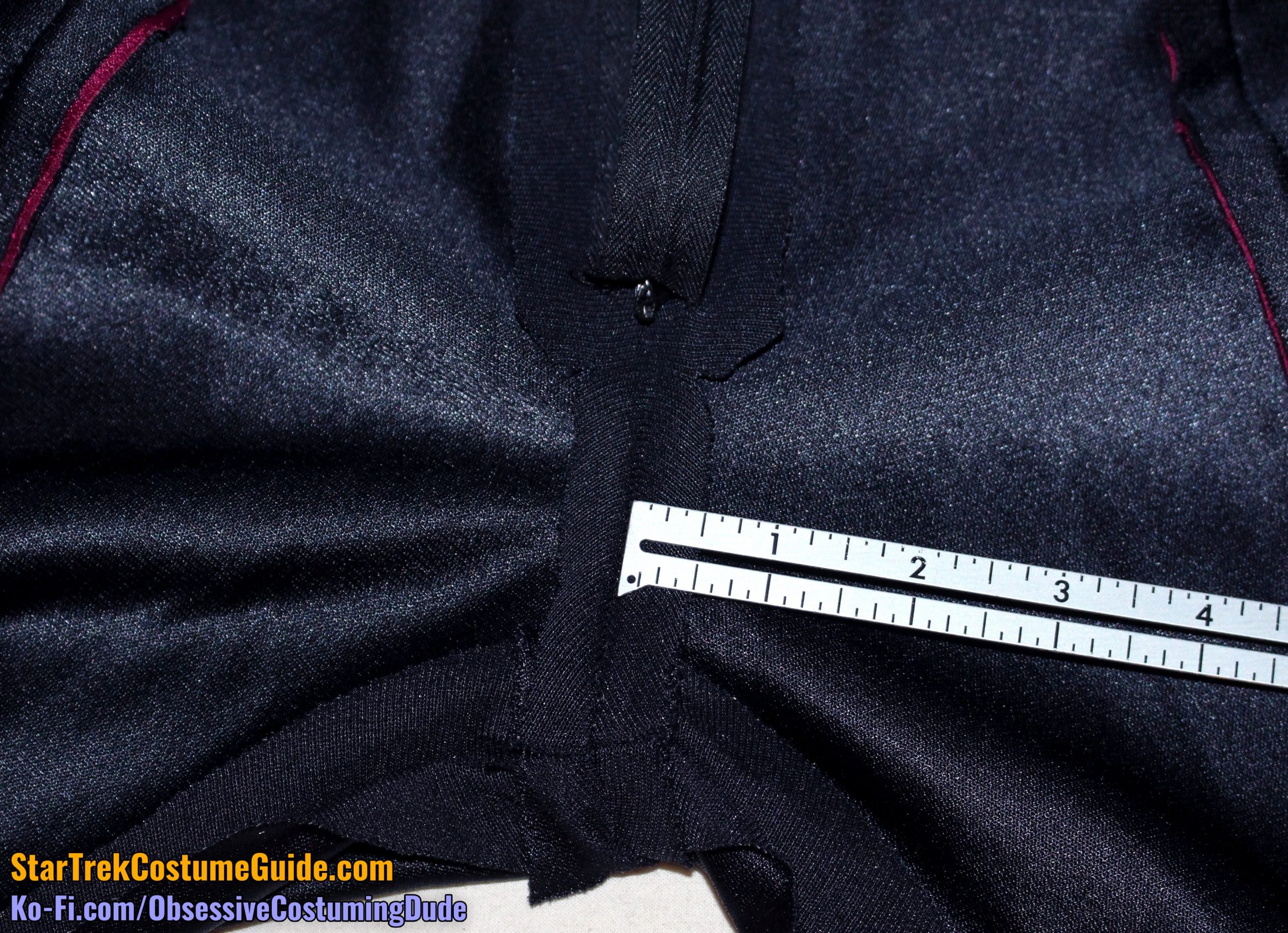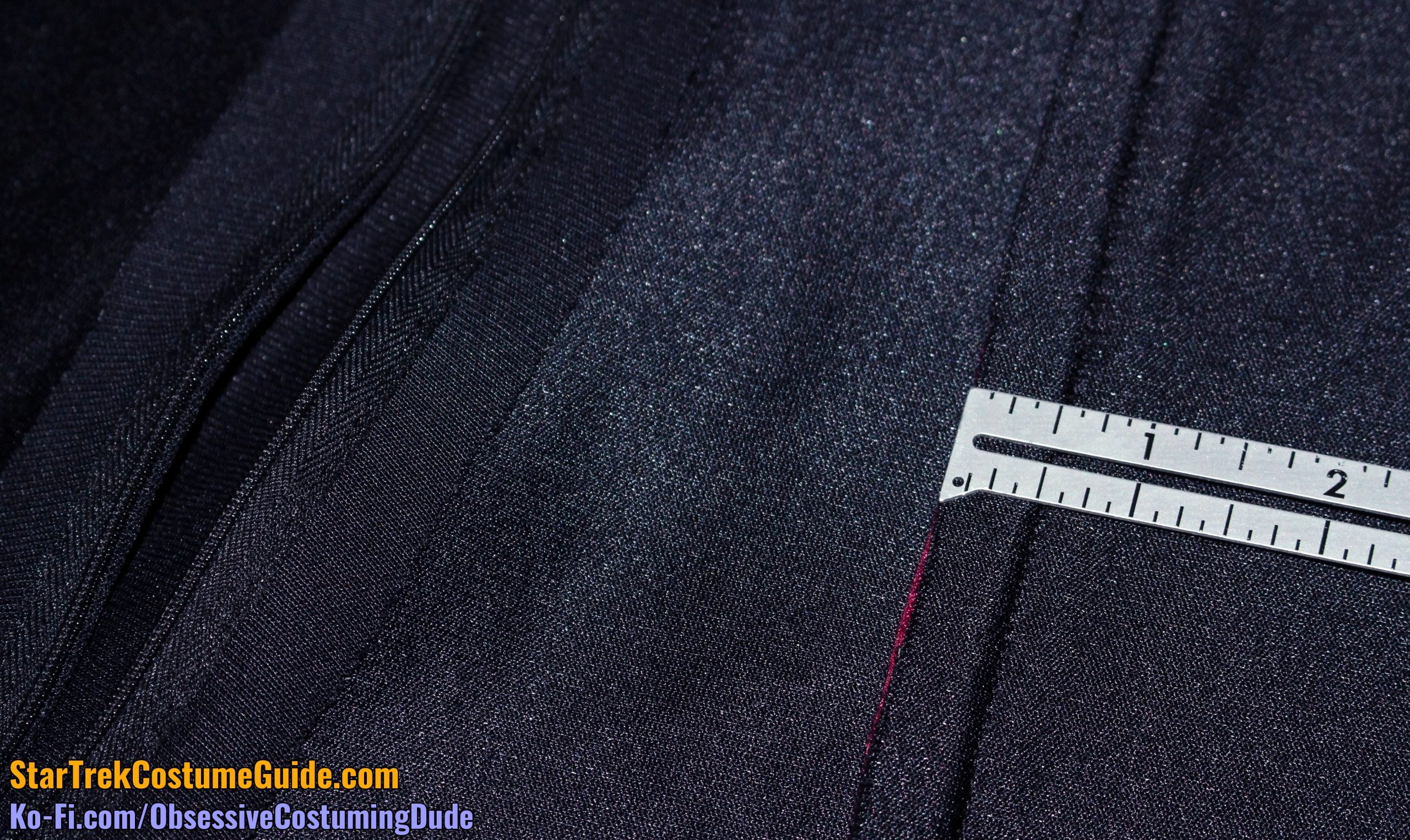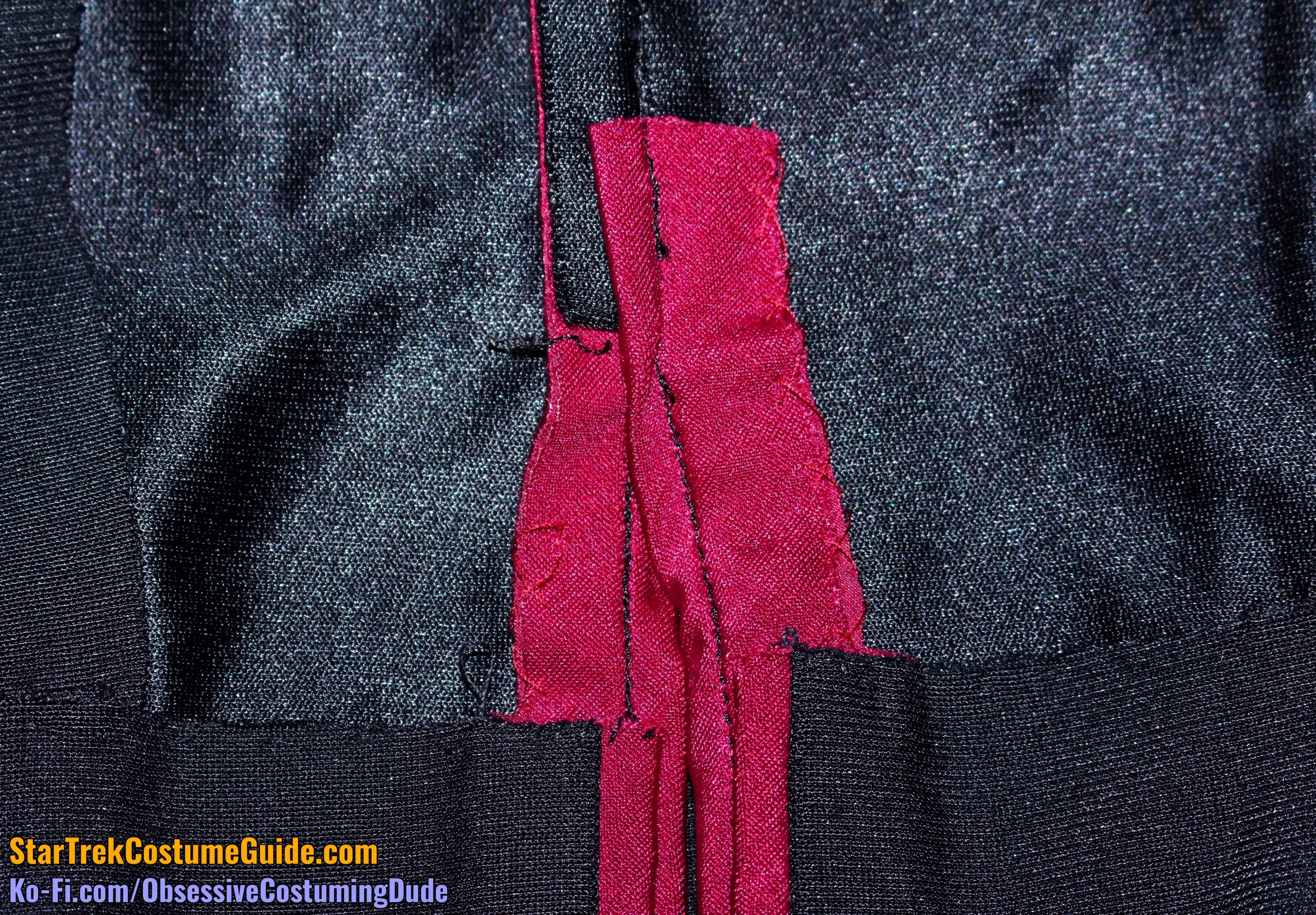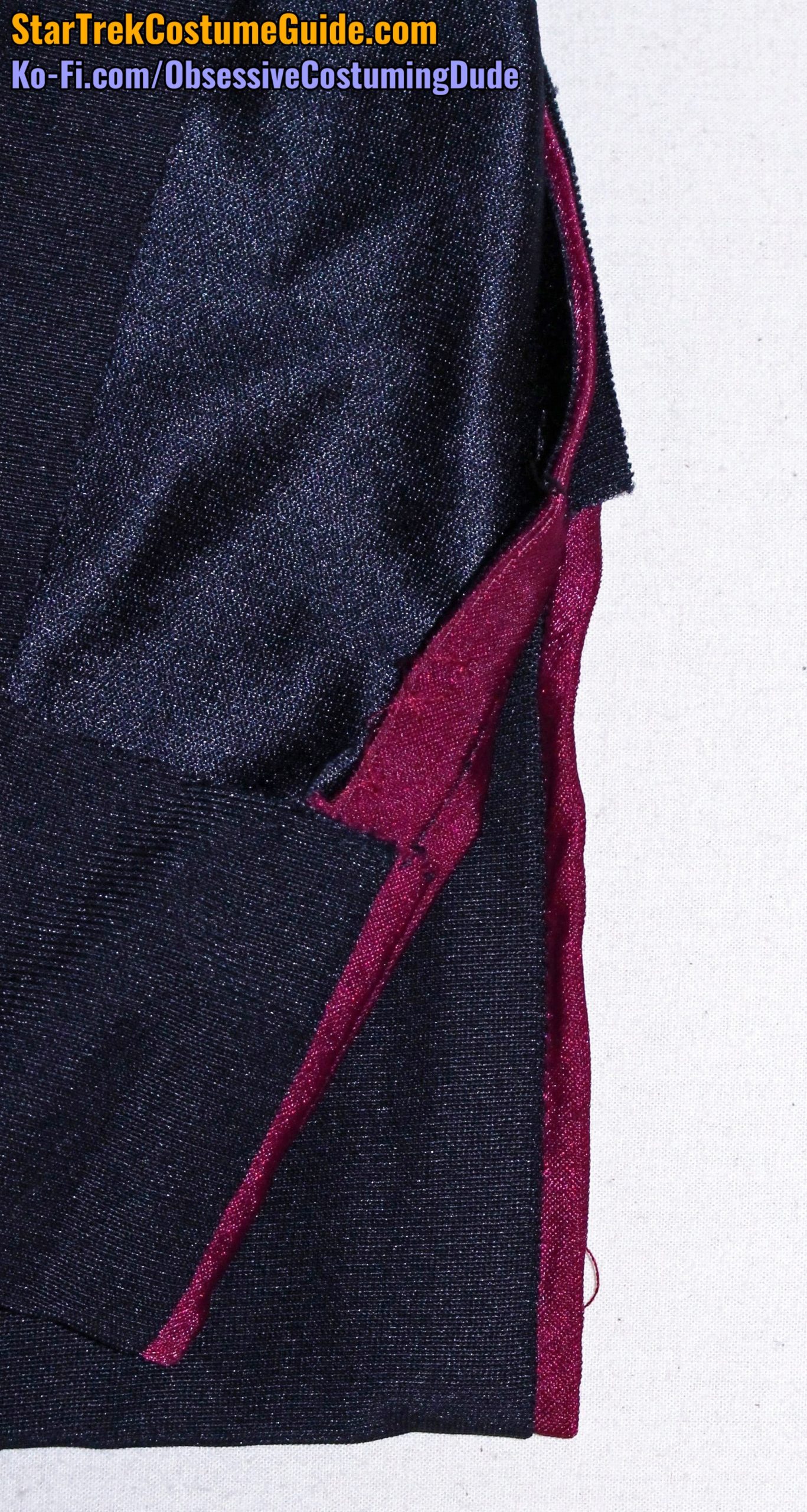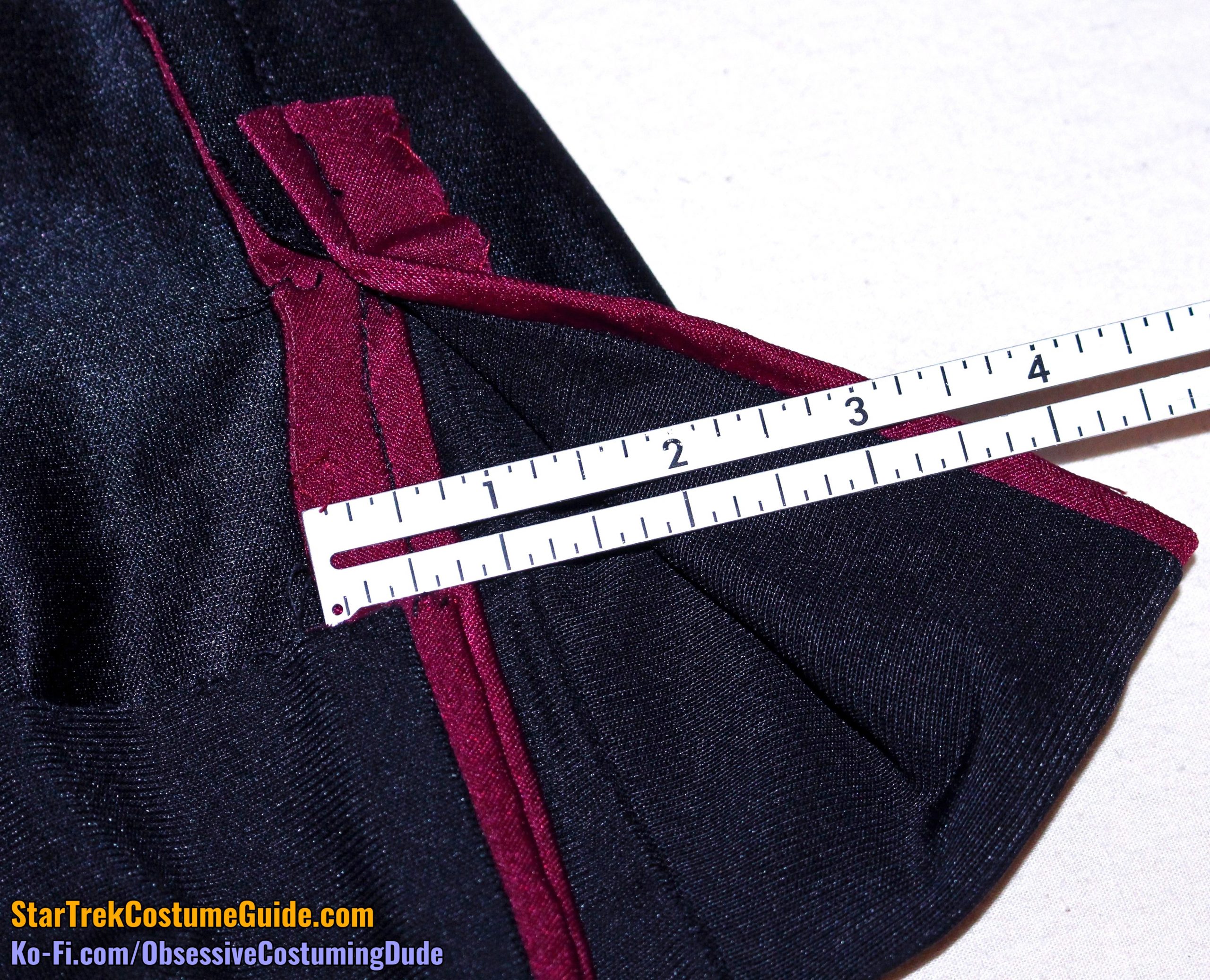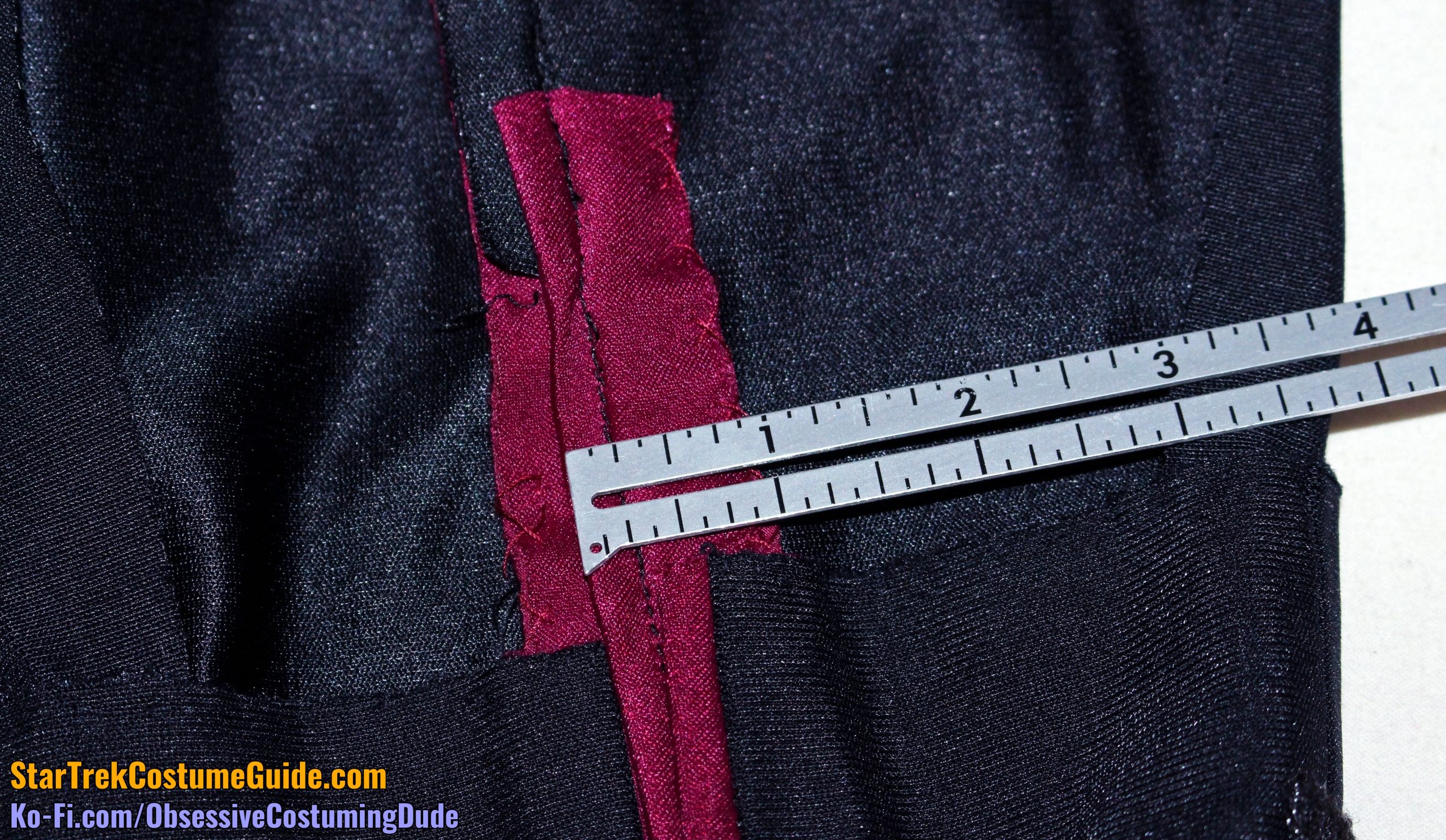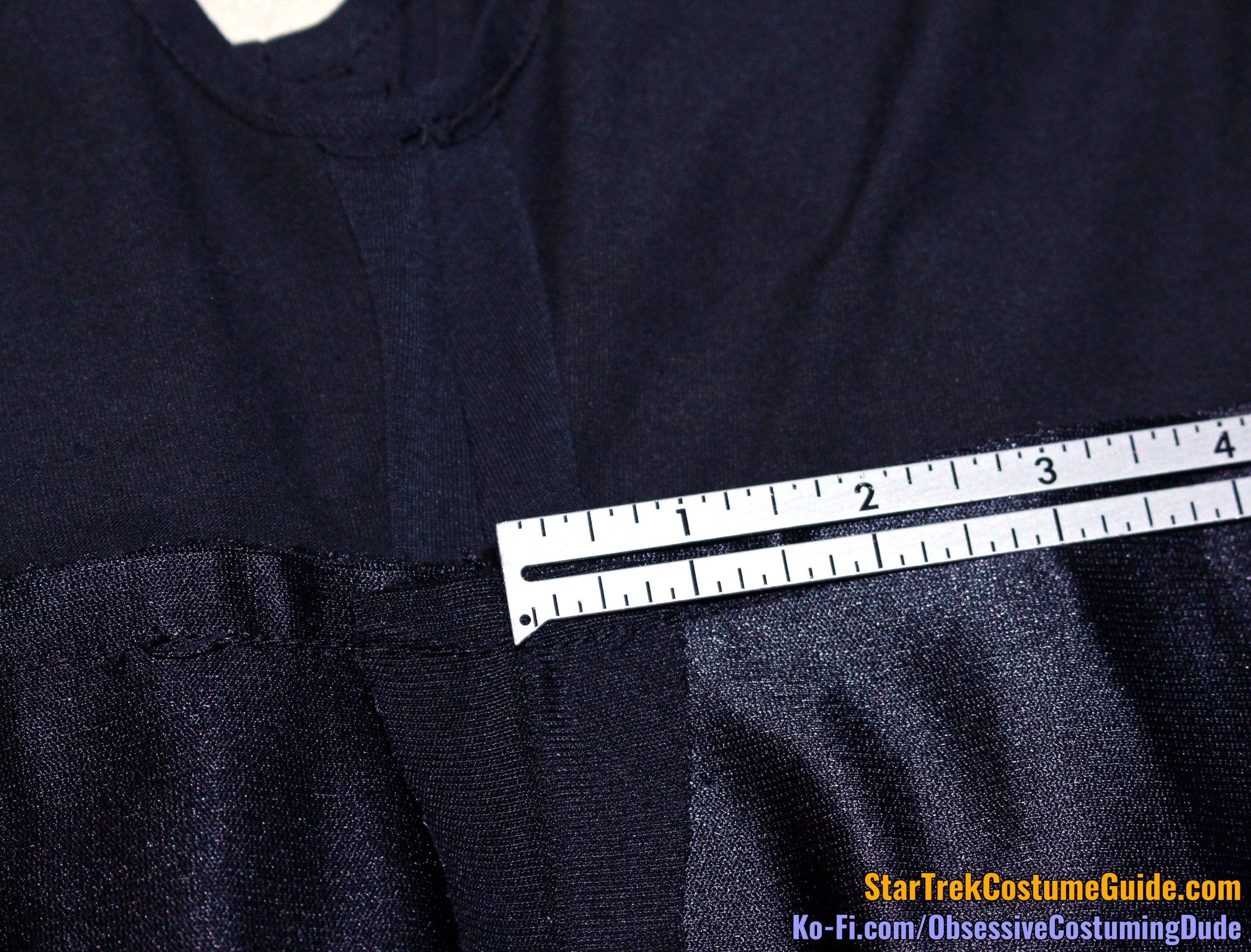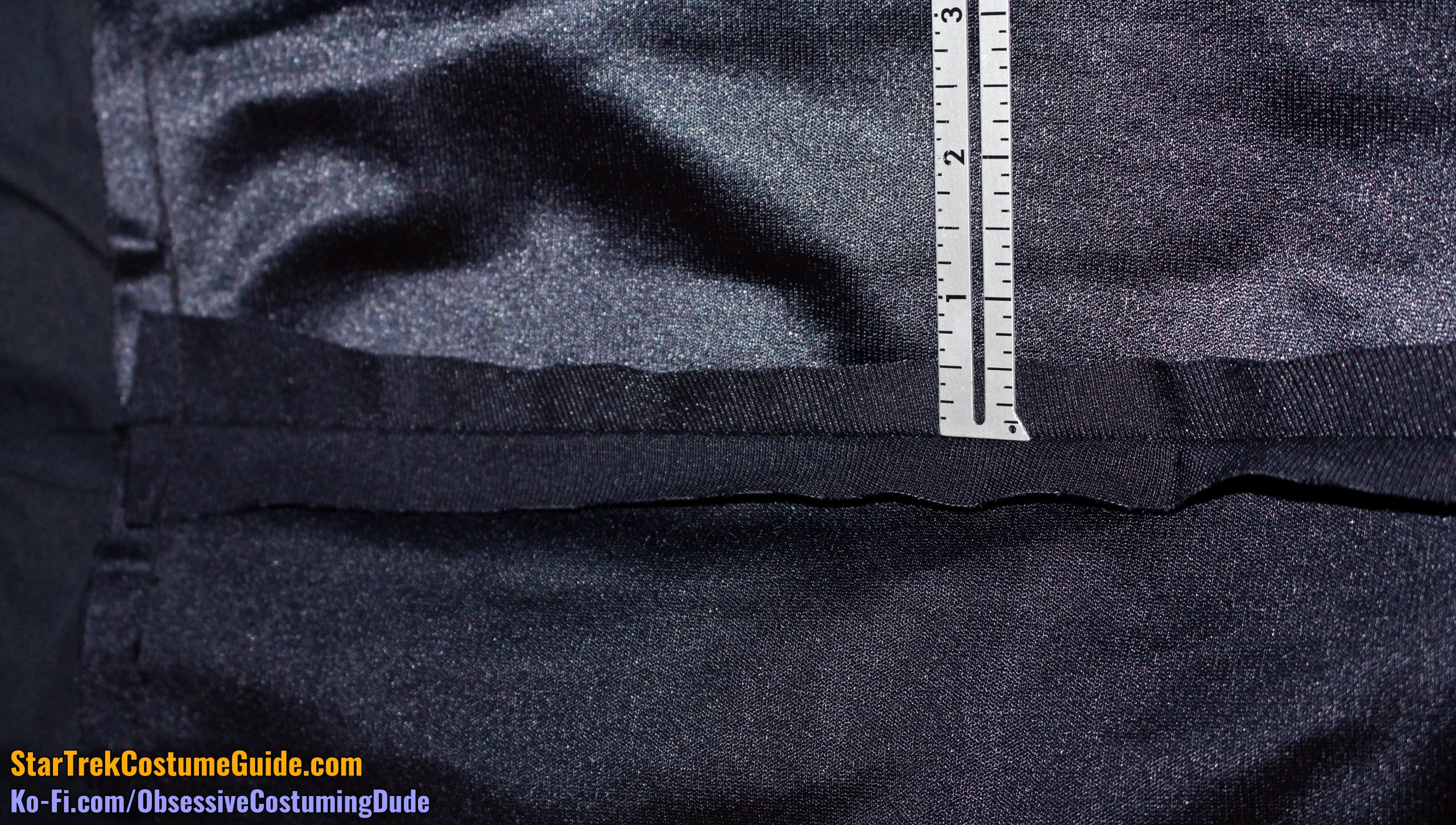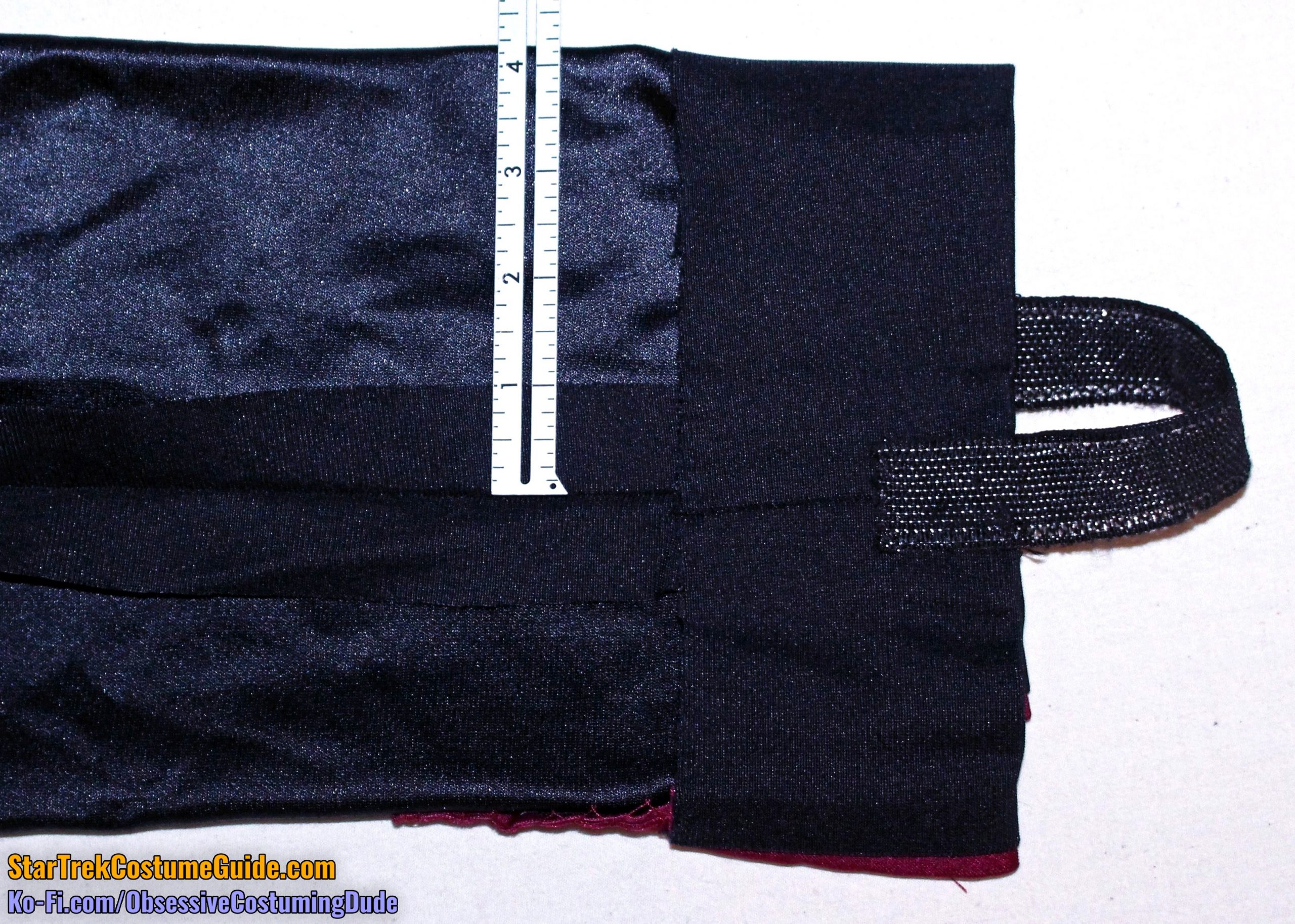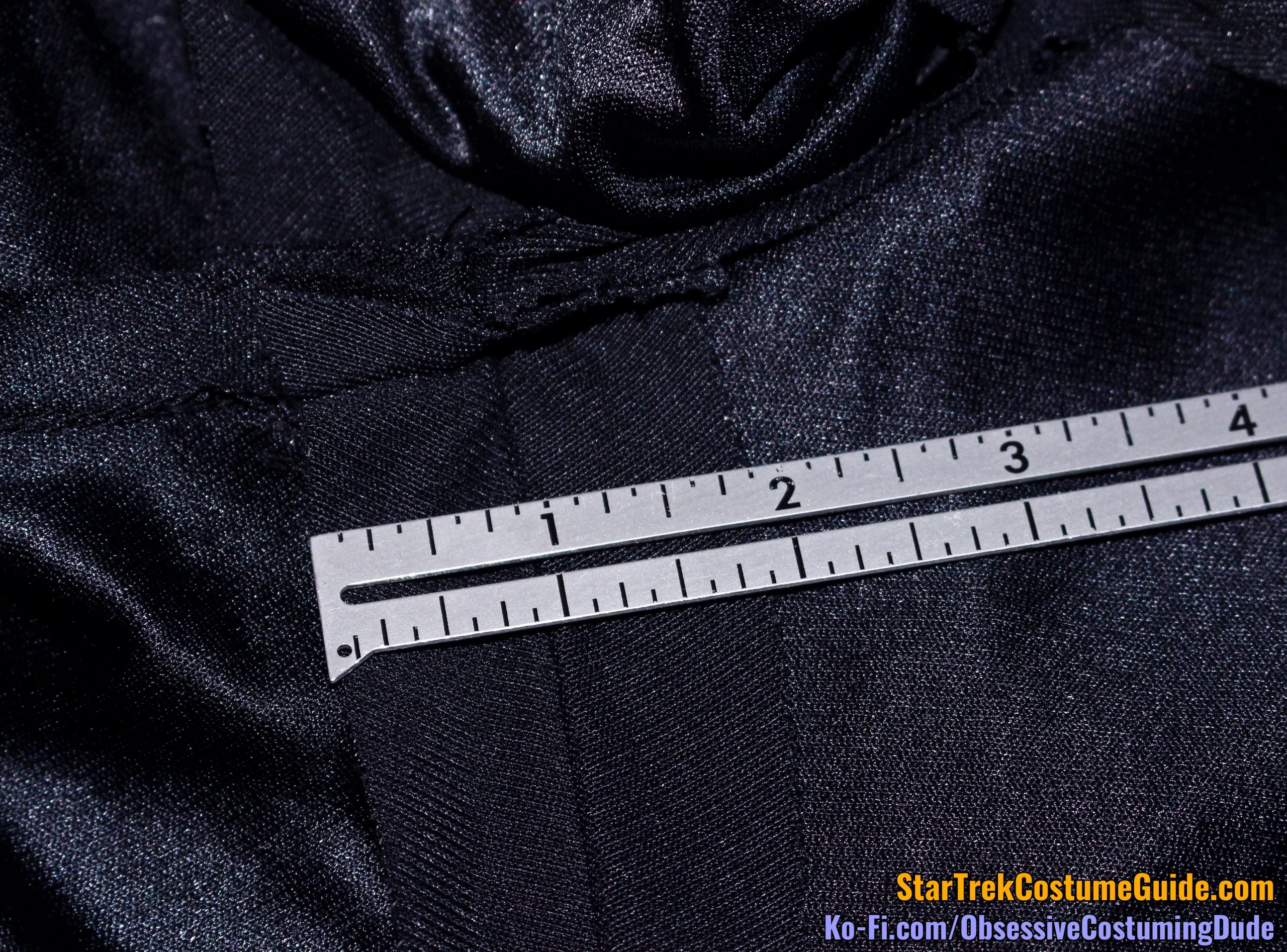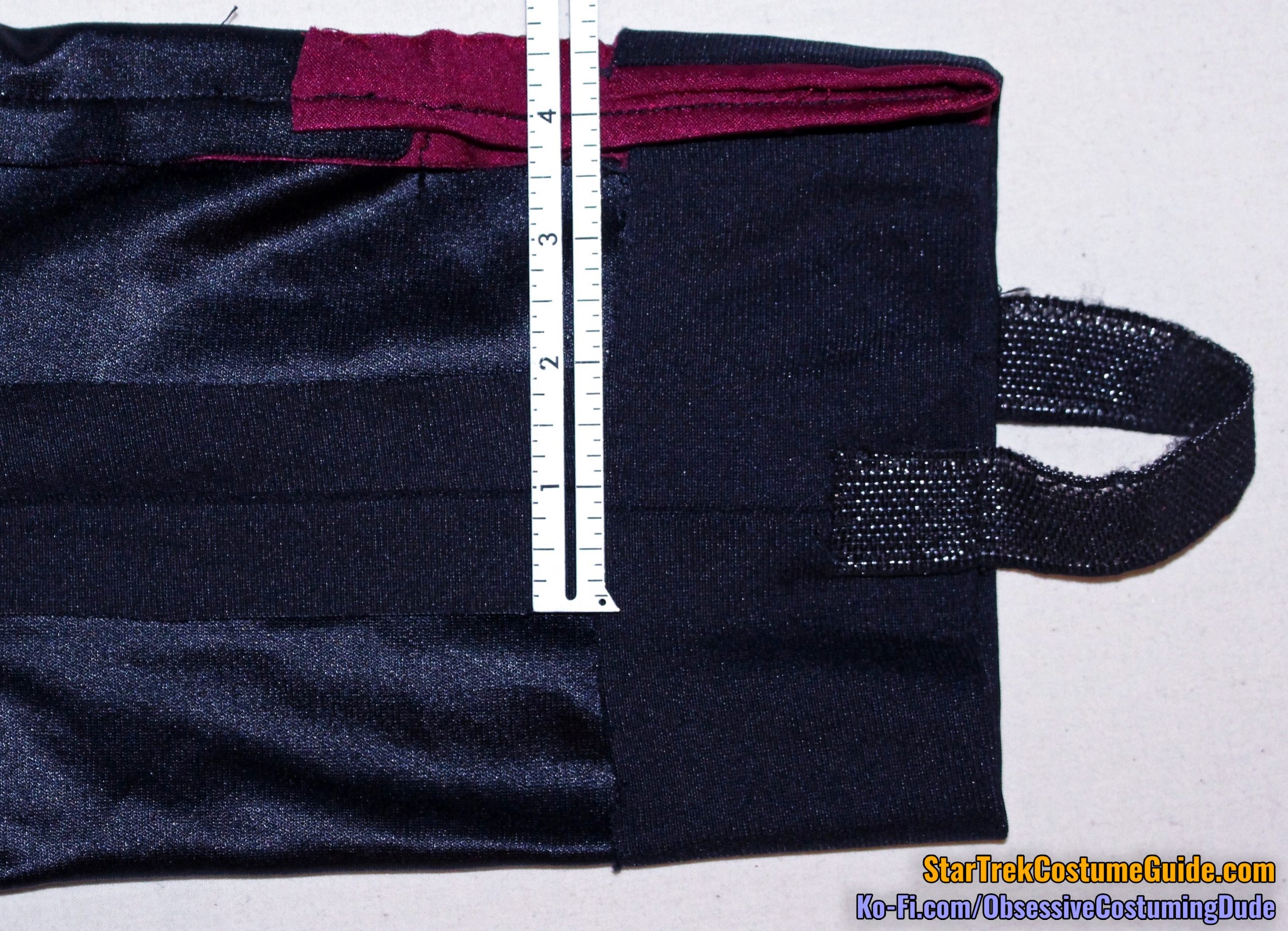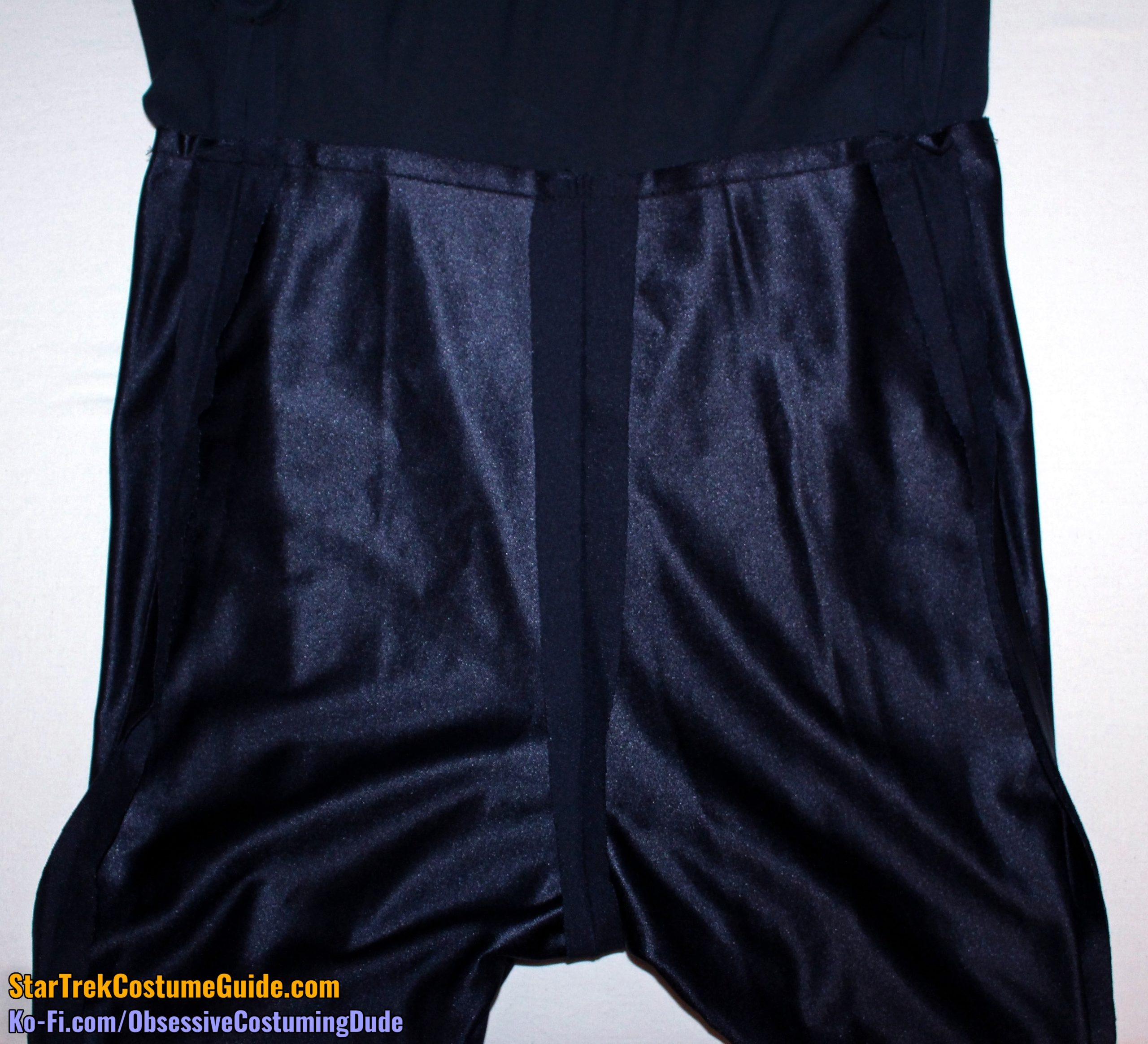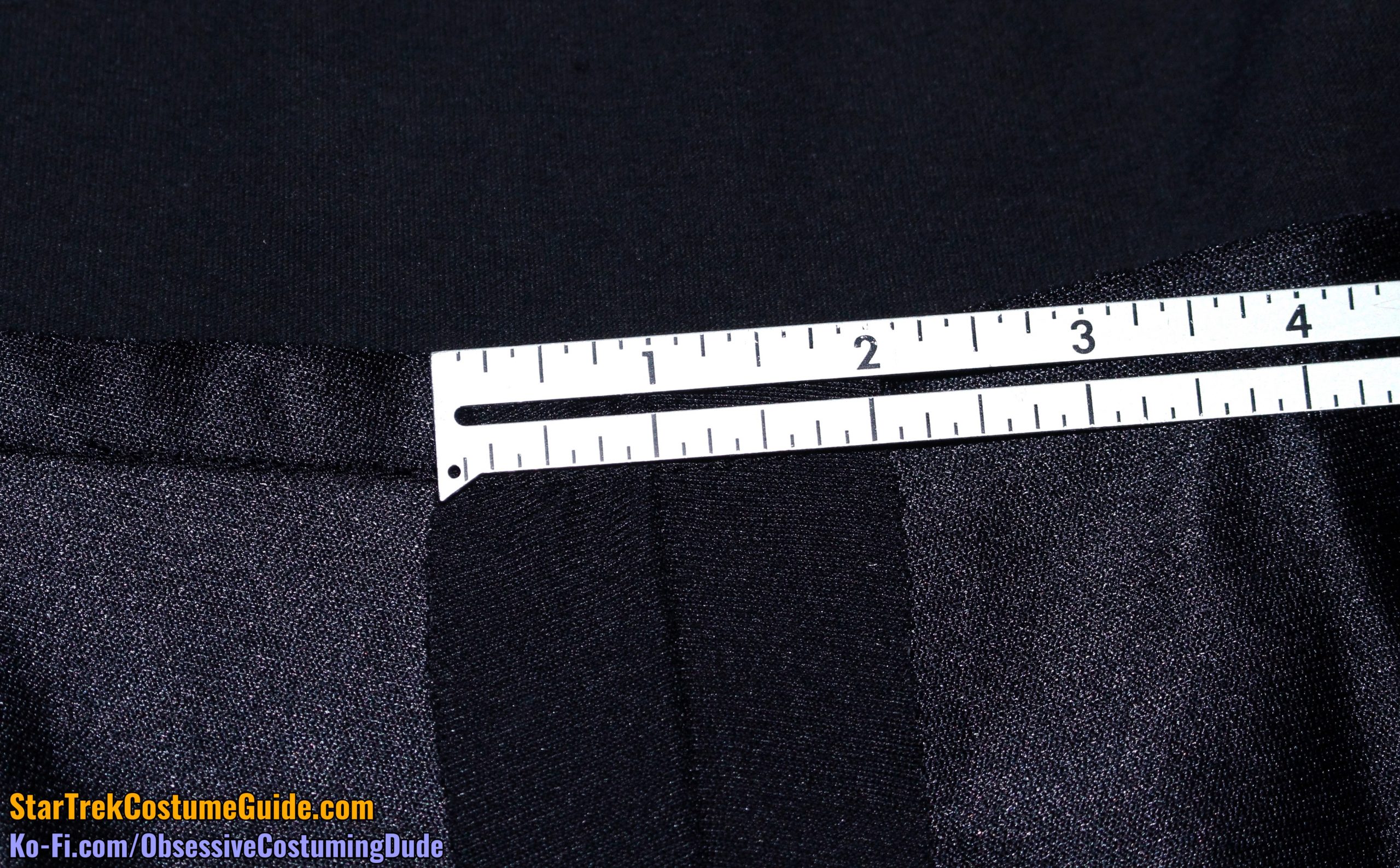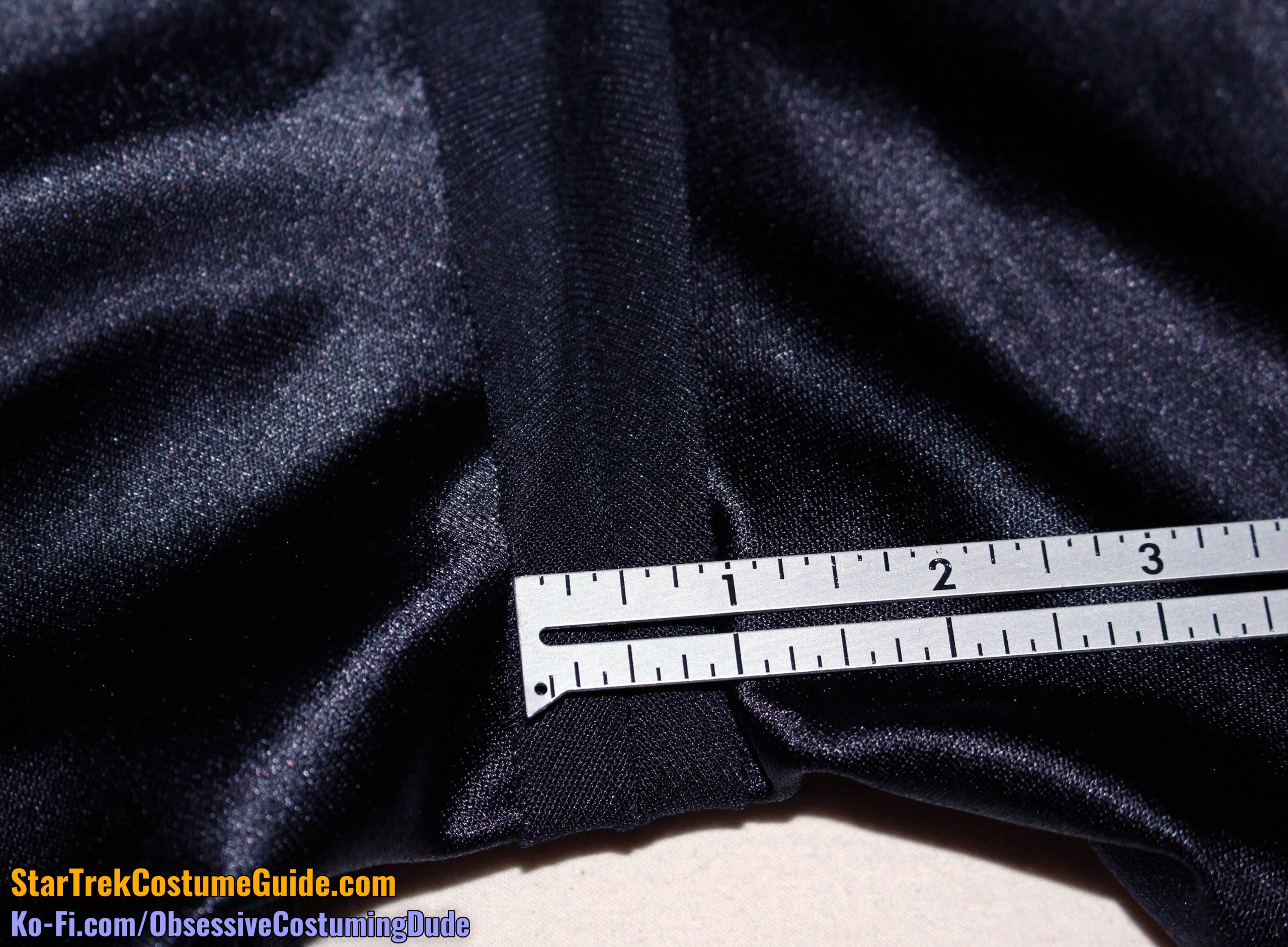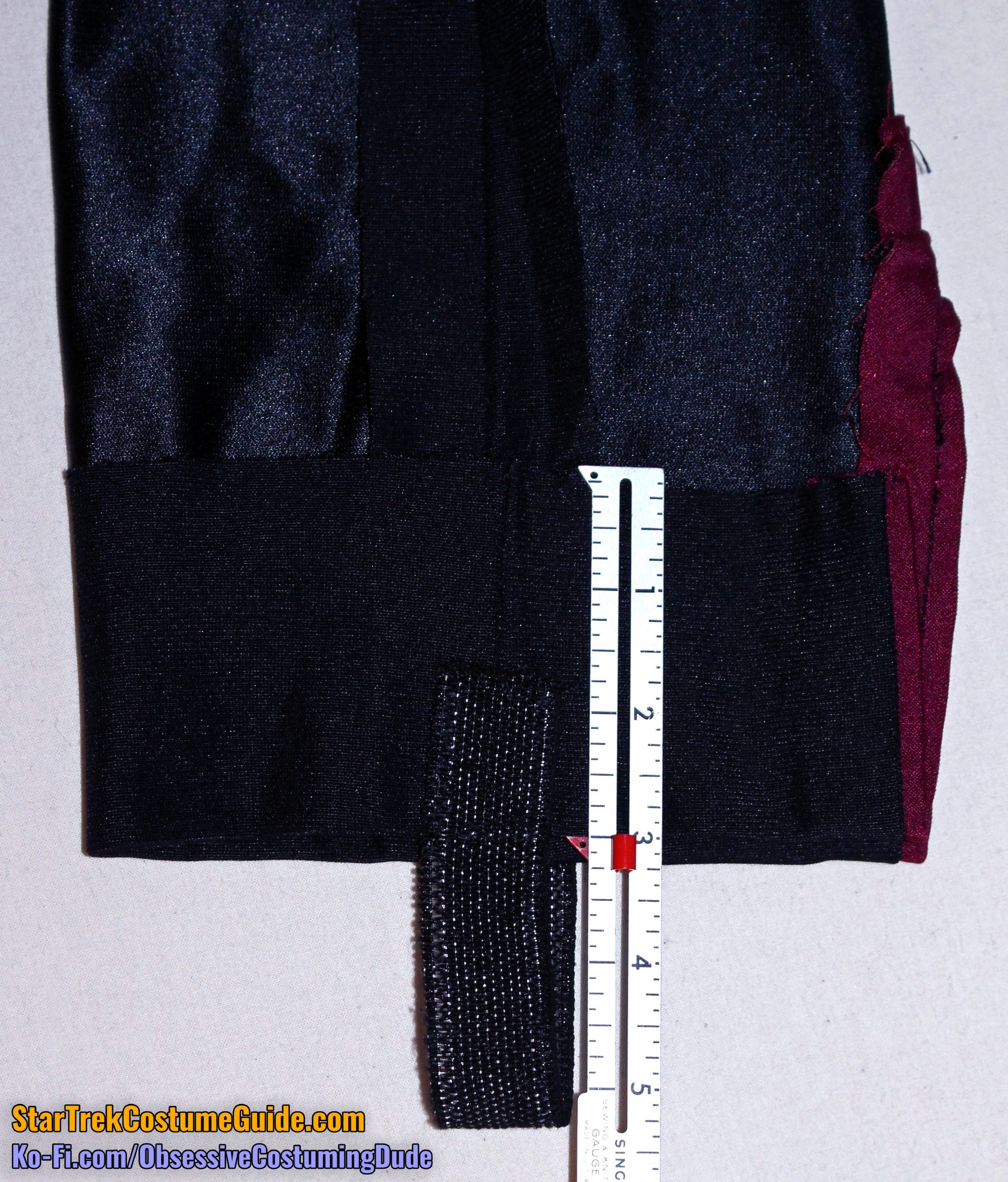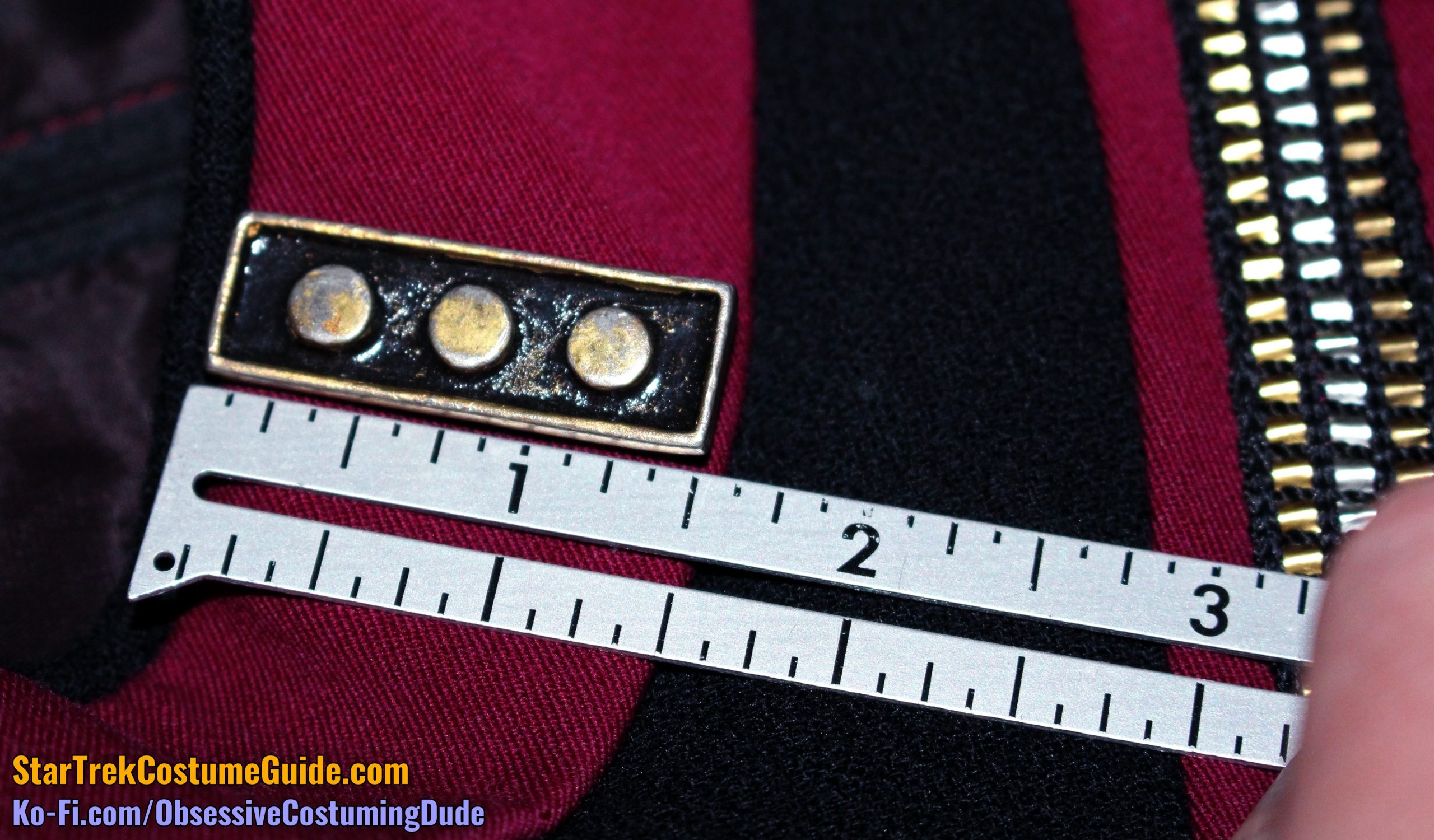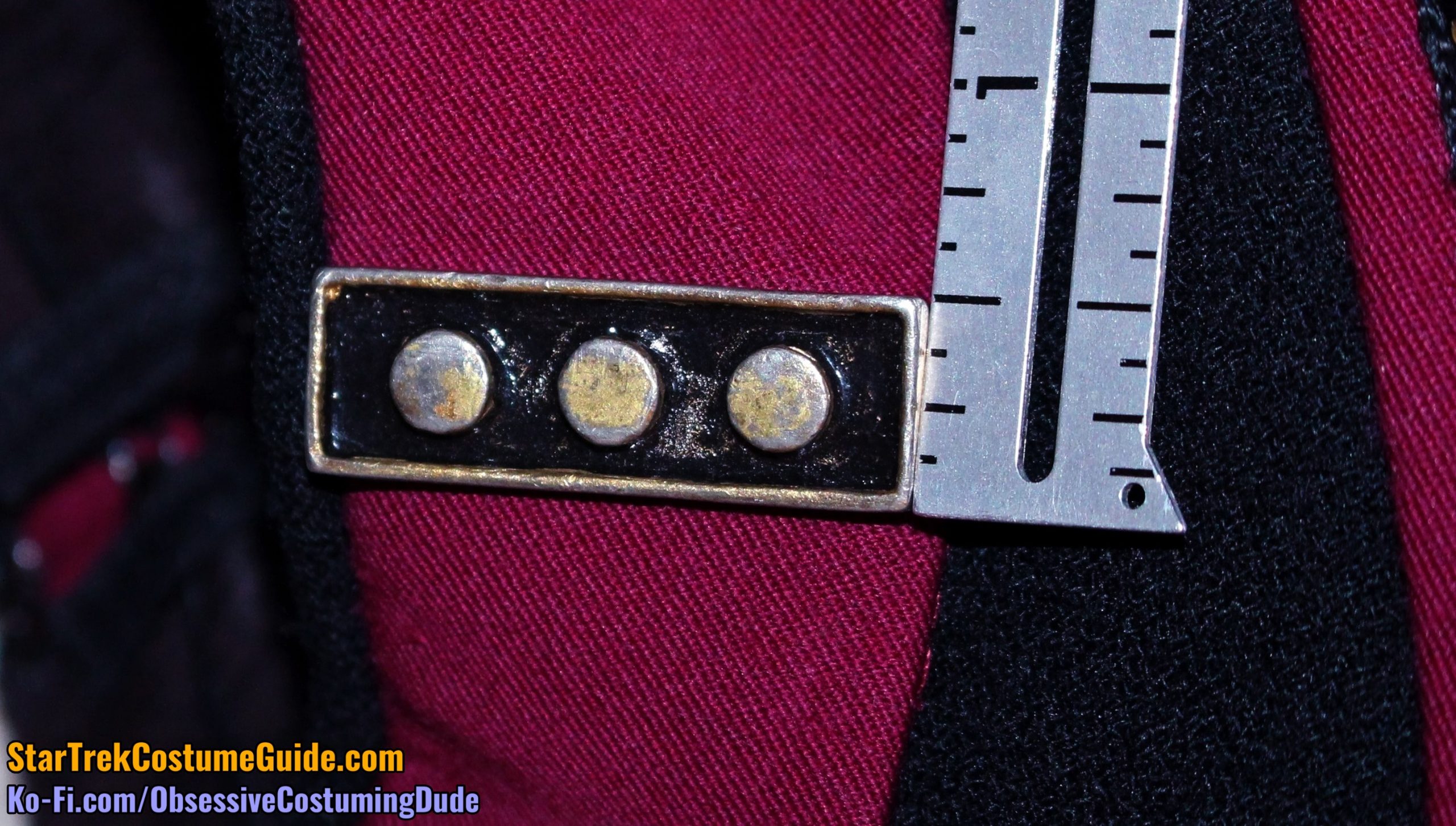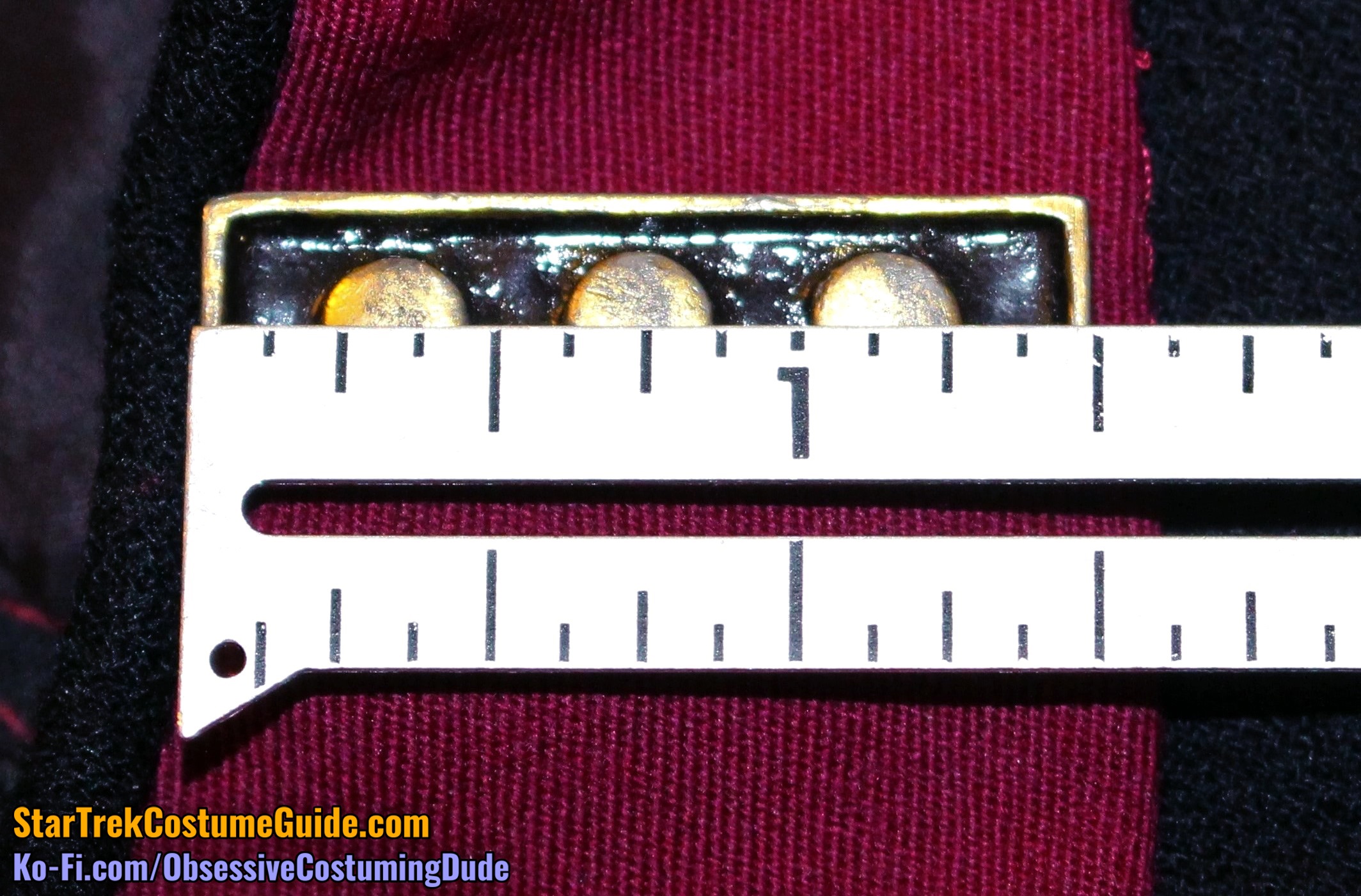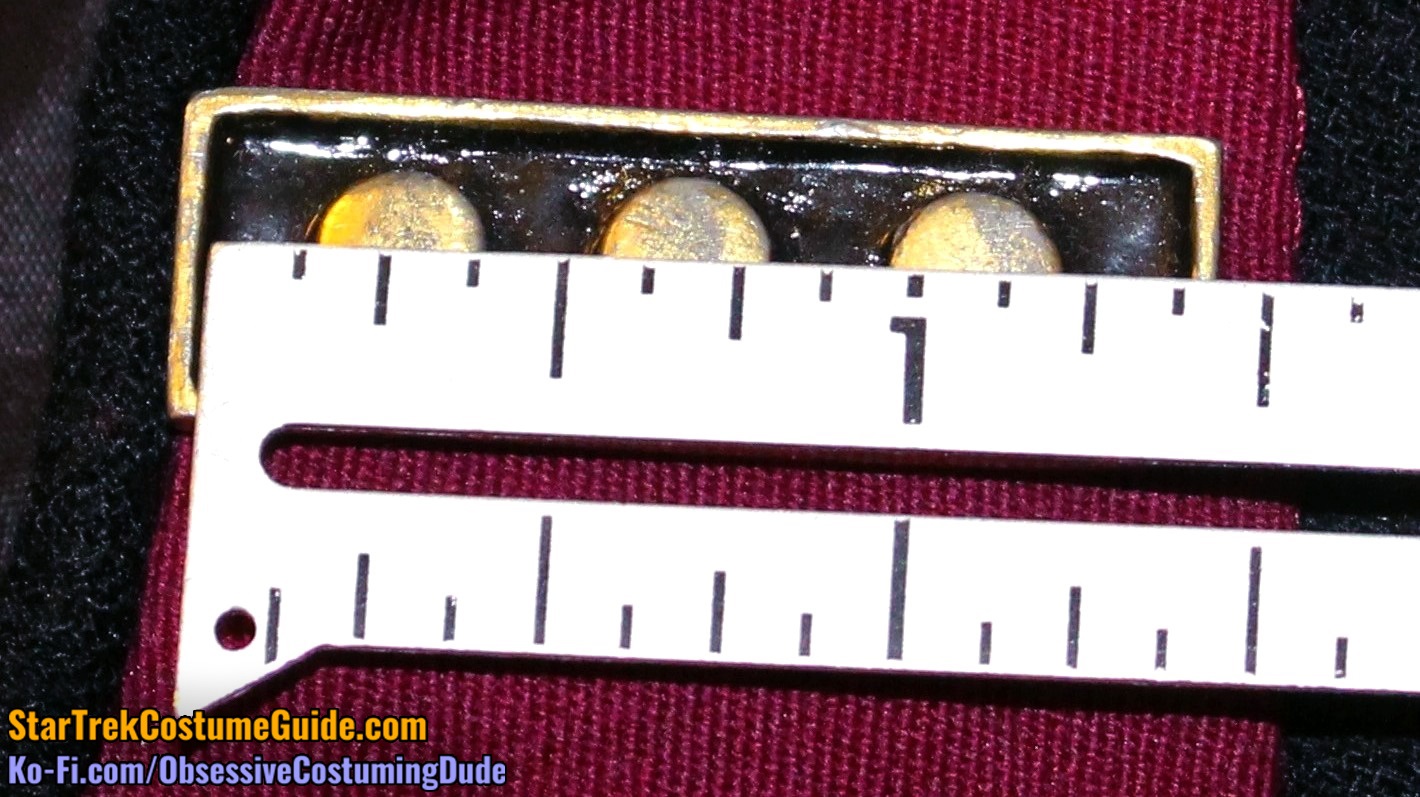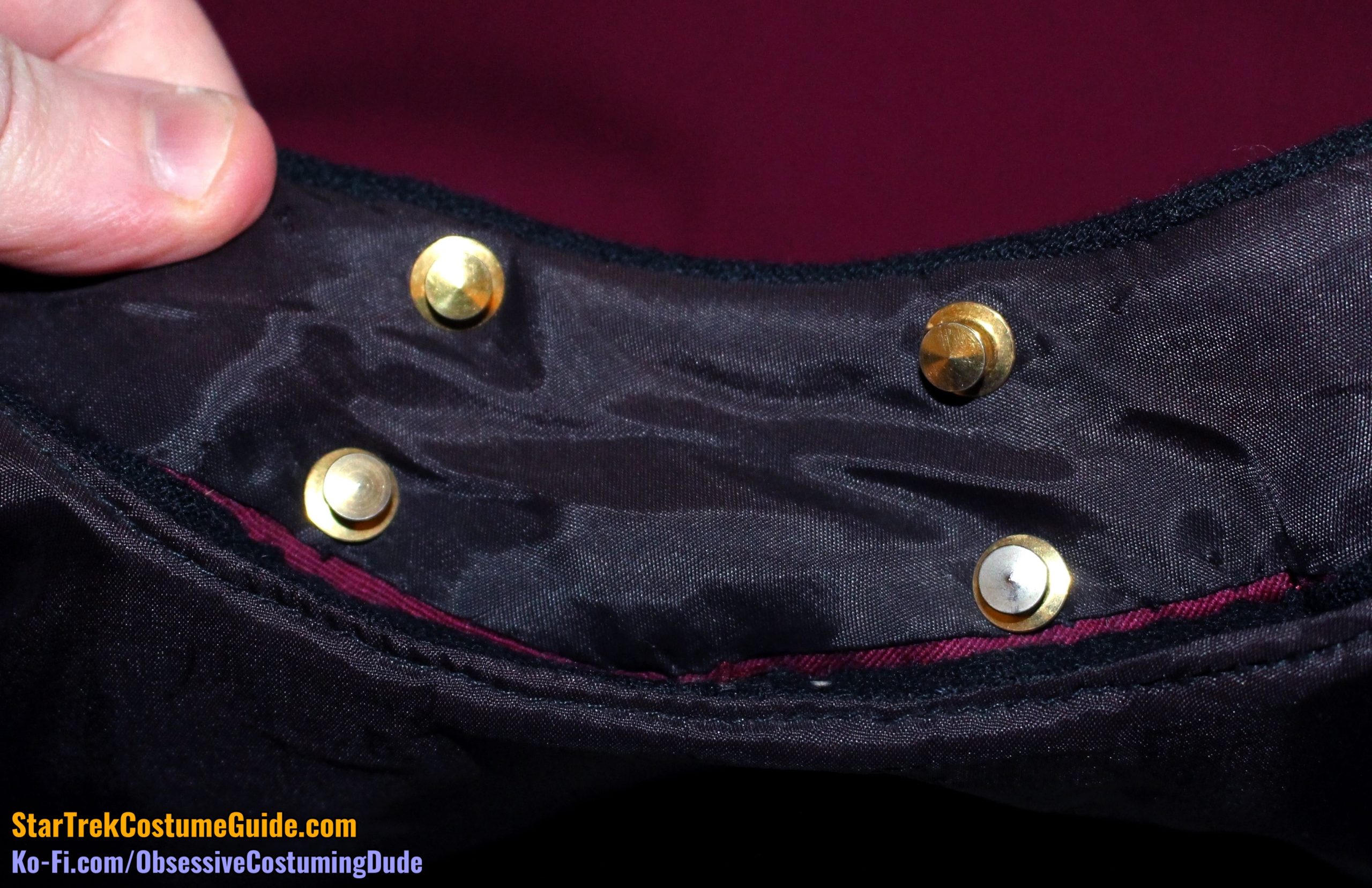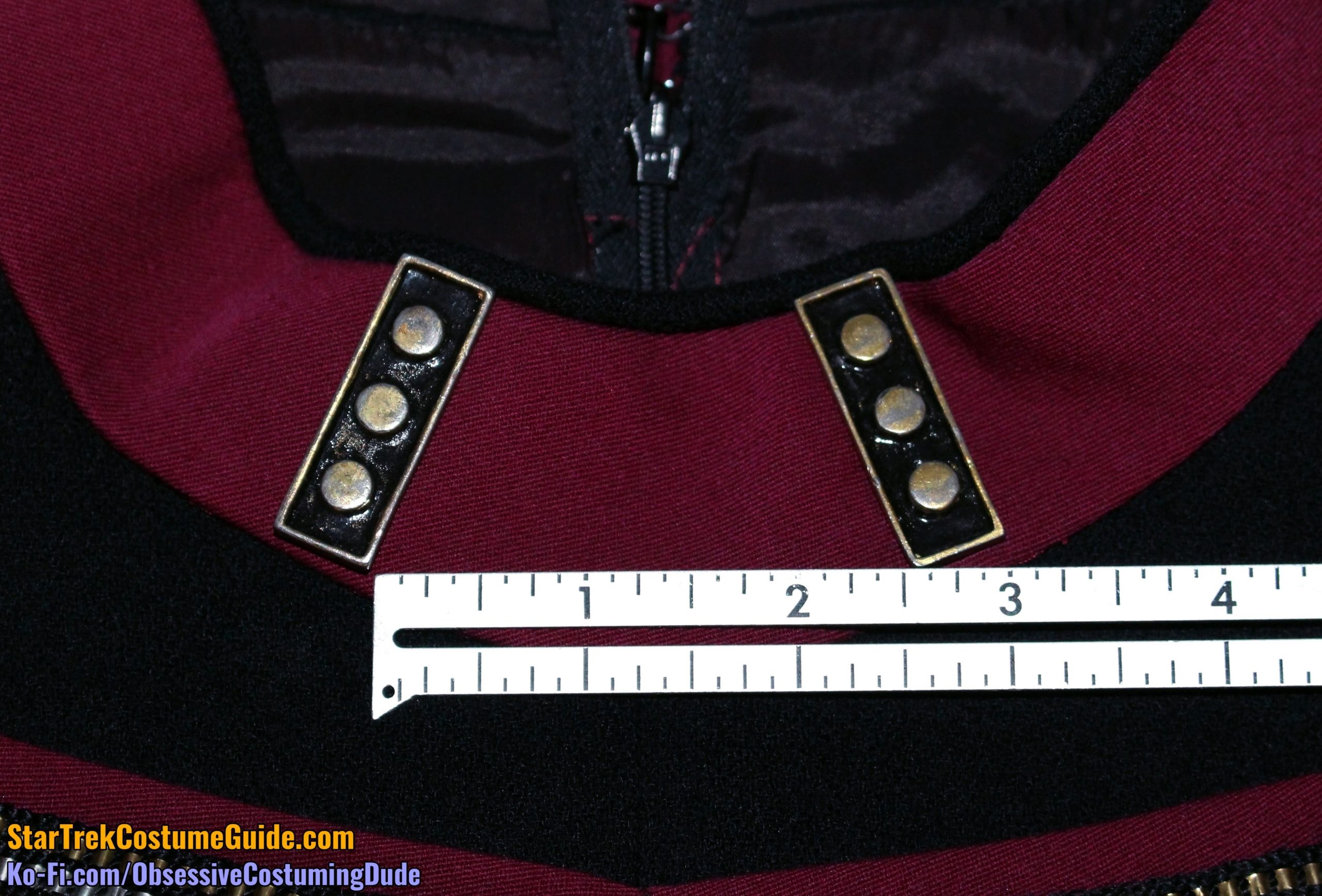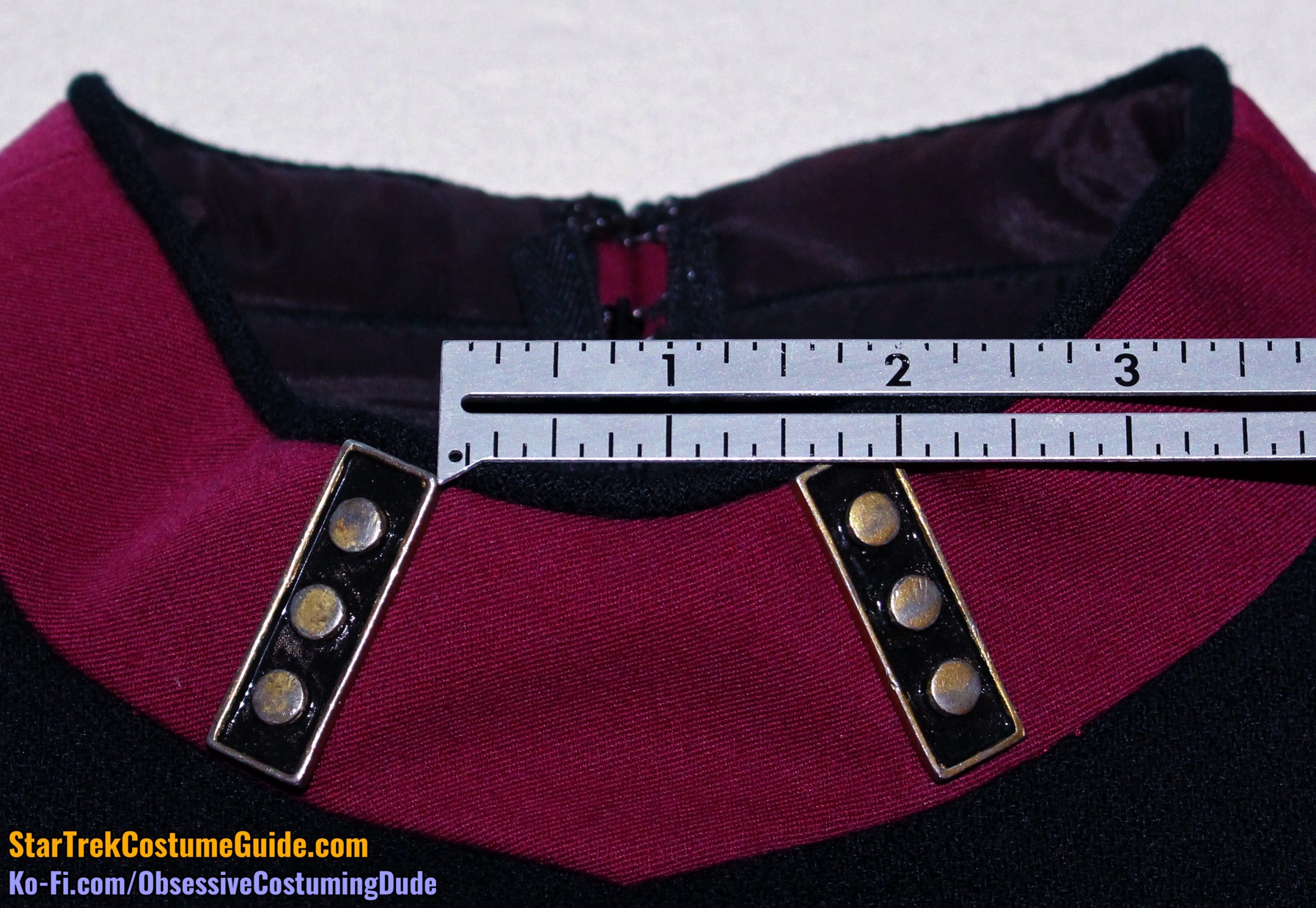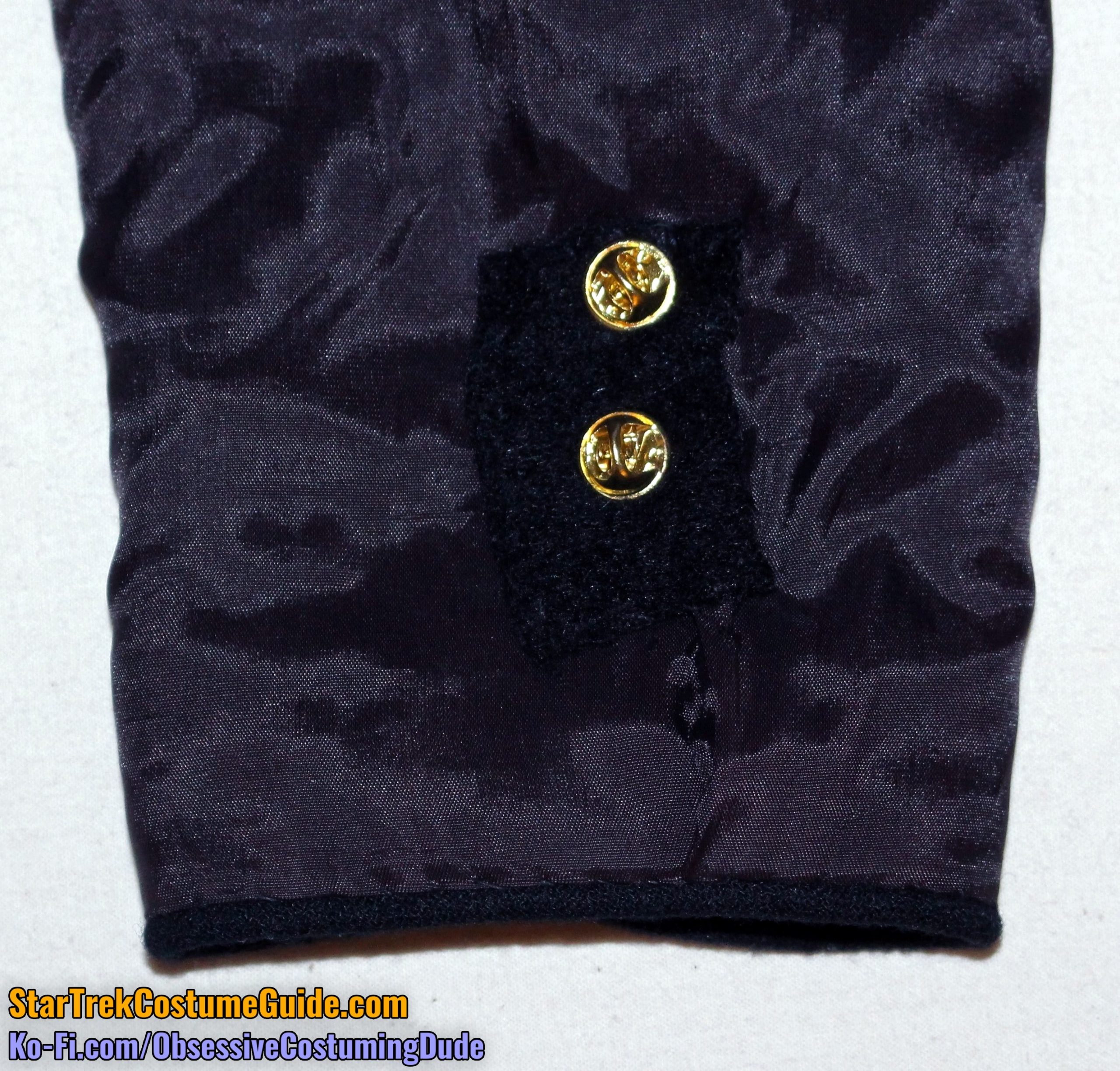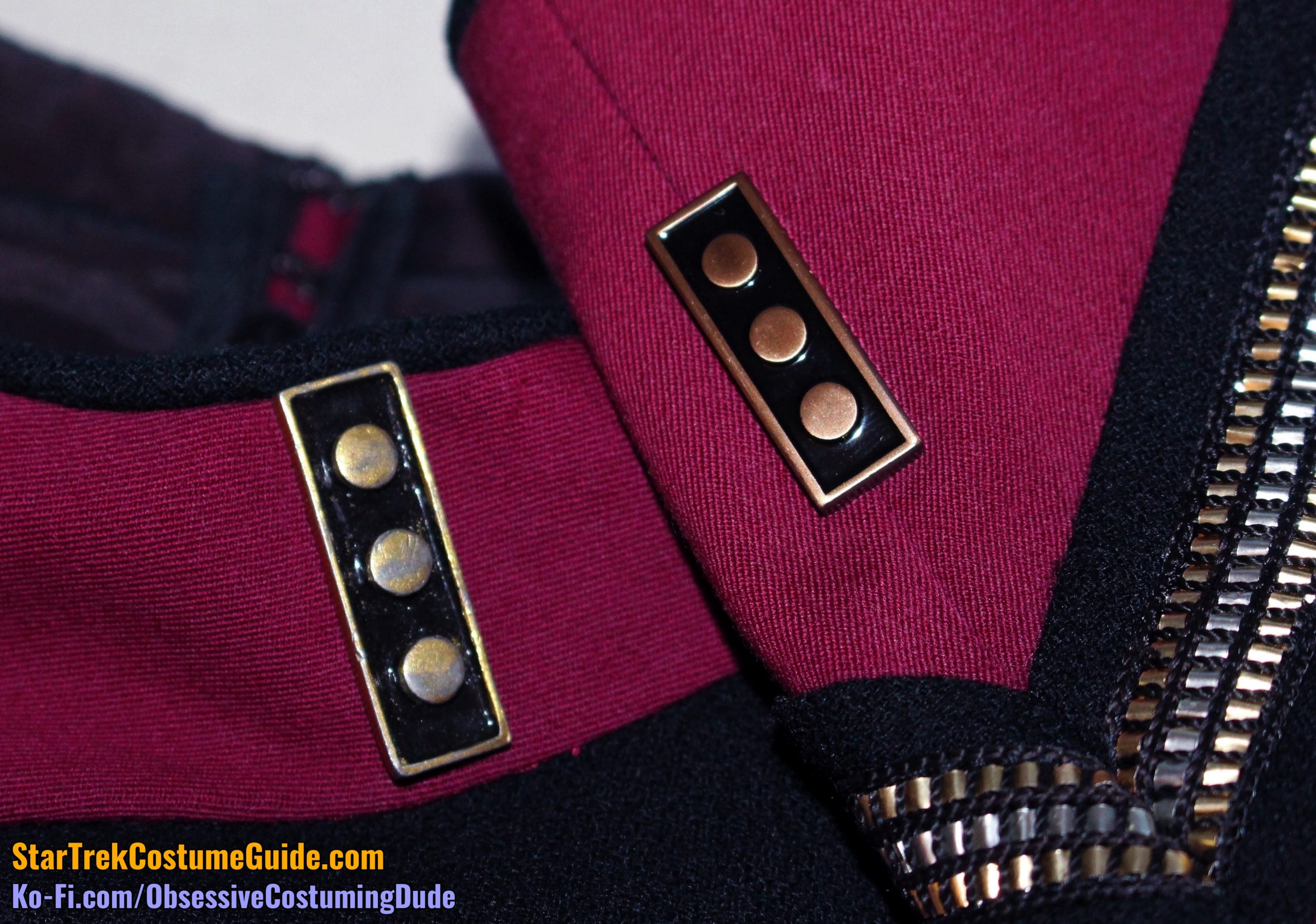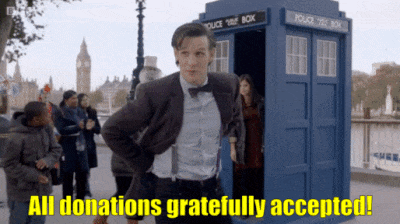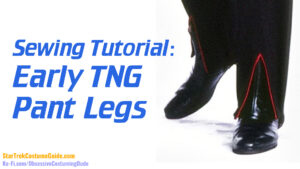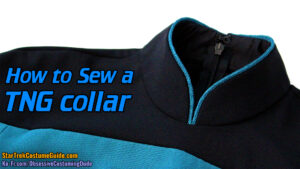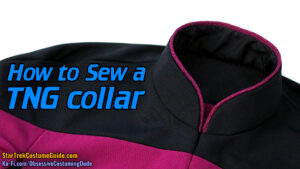With only two brief appearances, the TNG admiral uniform from season two is perhaps the most niche Starfleet uniform from the entire show.
Admiral Nakamura had just over a minute of screen time in the fan-favorite episode, “The Measure of a Man,” and near the end of the season, Admiral Gromek appeared on the viewscreen for less than thirty seconds to give the Enterprise its new orders in “The Emissary” (although curiously, not wearing a communicator).
These two appearances yielded a grand total of almost exactly a minute-and-a-half of screen-time.
Interestingly, the extended version of “The Measure of a Man” on the TNG season 2 Blu-Ray includes an additional minute and fifteen seconds or so of Admiral Nakamura footage.
Specifically, the restored footage includes him (and Commander Maddox) beaming on board the Enterprise, walking down a corridor, and taking a turbolift up to the bridge.
The extended episode also included a brief conversation between Captain Picard and Admiral Nakamura, after Maddox had begun raising Picard’s red flags with his shenanigans.
While I suppose there’s a reasonable debate to be had about whether restored footage in an extended cut of the episode (released almost 25 years after the original broadcast) technically counts as “canon,” the newly-restored footage more than doubles Admiral Nakamura’s screen time in the episode, and nearly doubles the total screen-time for the season 2 admiral uniform.
Of course, that still brings the grand total to less than 3 minutes.
But despite its relative obscurity, it is a member of the Star Trek uniform canon, and of the early TNG-era uniform family.
And as you’ll see, it was also something of a harbinger for later uniform designs …
Anyway, I recently had the opportunity to examine a screen-used Admiral Nakamura uniform from the aforementioned episode, “The Measure of a Man,” courtesy of Angelo Cifaldi.
As the majority of my observations are based on this specific costume (rather than what little we saw in the show), this blog post will serve as both a broader costume analysis AND detailed examination of the screen-used uniform.
Very special thanks to Angelo Cifaldi for the privilege of studying this uniform and sharing my research with you, and to my Ko-Fi supporters for helping make this happen. 🙂
STYLISTIC INSPIRATION and INFLUENCES
In my TNG jumpsuit analysis and TNG medical smock analysis, I mentioned the departure of William Ware Theiss as costume designer after The Next Generation’s first season, and how Durinda Rice Wood assumed that role for its season two.

Wood’s numerous accomplishments during her year as costume designer included some major wardrobe improvements across the board.
These included (but weren’t limited to) a new baldric for Worf, a new “acting ensign” uniform for Wesley, and a new outfit for Counselor Troi, as well as having established the “look” for Guinan and introducing Dr. Pulaski’s uniform variants.
Despite these accomplishments, Wood’s gone on record numerous times saying she wishes she’d been able to change the actual Starfleet uniforms in the show.
(And to be fair, she did manage to tweak the TNG jumpsuits that year.)
She seems to have achieved a minor victory with the admiral uniforms, though, entirely discarding William Ware Theiss’ infamous season 1 admiral uniforms in favor of her new design.
Here’s a look at her costume sketch for this uniform design, as pictured in an auction listing.
It’s interesting to see how some of the details changed from conception to final product – most notably the removal of the large, round gold accent on the collar and small black stripe near the bottom of the jacket.
The placement of the lower sleeve accents also changed slightly, although the finished trousers appear to basically match the design sketch.
Despite being radically different from Theiss’ season 1 admiral uniform, Wood’s season 2 design still fit right in as a member of the early TNG-era uniform family. She obviously drew on aspects of both Theiss’ admiral uniform and the TNG jumpsuits for stylistic inspiration.
For example, the black yoke and yoke trim were analogous to those on the TNG jumpsuits, while it makes sense that an admiral’s yoke trim would be more embellished.
The division-colored torso and long sleeves also corresponded nicely to the TNG jumpsuits, albeit without the asymmetrical paneling.
And finally, the lower front openings at the bottom of the pant legs were also quintessentially TNG, accented with the division-colored trim as the early TNG jumpsuits were.
Now, let’s take a detailed look at the uniform, itself!
(This was a very early video of mine – over 3 years ago now – so please pardon its shortcomings. The information is still solid, though.)
We’ll start with the jacket, then move onto the trousers.
FABRICS and COLOR
Notably, the season 2 admiral jacket was not made out of jumbo spandex, as all the other early TNG-era uniforms were.
In fact, to the best of my knowledge, this may have been the first TNG-era uniform that was made with a woven fabric.
The jacket body, collar, and yoke trim were all superfine wool gabardine.
The yoke, sleeve trim, collar piping, and lower sleeve piping were (perhaps surprisingly) not black superfine wool gabardine, but instead a contrasting fabric I was unable to properly identify – wool crepe, perhaps?
Since my previous costume examinations, I’ve managed to acquire a few useful visual aids, including three screen-used TNG costume cards (with swatches of the original fabrics) and a Pantone book.
The Picard swatch is jumbo spandex, and presumably from one of his TNG jumpsuits worn during the first two seasons.
The Riker swatch is superfine wool gabardine, and presumably from one of his TNG jackets worn during seasons 3-7.
The Wesley swatch is jumbo spandex, and presumably from one of his TNG cadet jumpsuits worn during seasons 5-7.
Between the three, I think they’re probably a good representation of the TNG command “red” division color – in reality much more of a purple-ish “berry” color that often registers as red on-camera.
Below is a direct color comparison between these swatches and the Admiral Nakamura uniform.
I like to photograph in different lighting situations to get the best possible representation of the colors, since both sunlight and flash photography can skew the color comparisons somewhat.
The swatch of Riker fabric was an even closer color match to the Nakamura jacket body, and the weave was nearly identical too.
The Wesley (jumbo spandex) swatch was also a close color match.
Unfortunately, my Pantone book didn’t seem to have a good color match to the jacket fabric. (And in my subsequent experience with other uniforms, Pantones are surprisingly unhelpful for TNG-era “reds” in general.)
228-U was the closest I found, although it wasn’t nearly dark enough.
229-U was the runner-up, but it was a bit too purple and dark.
In lieu of Pantones, I did my best to color-match the fabric with some paint chips from my local home improvement store.
The closest I found was Valspar #1011-7, “Perfect Plum.”
It’s difficult to properly compare – not only because it’s paper to fabric, but because of the glossy sheen on the paper.
It looked like a near-perfect match in the store, but then it looked terrible at home in my normal interior lighting.
Nevertheless, it’s usually a good match …
I also did my best to color-match some thread to the fabric, and the same thread I found as a match to the Admiral Jameson uniform I examined was also the best match I found for Admiral Nakamura’s jacket.
Coats & Clark #3090 “Red Plum” was the closest I found, although again, it’s not quite dark enough.
EXTERIOR DIMENSIONS and CONSTRUCTION
After documenting the color as best I could, I grabbed my measuring tape and began the process of documenting the jacket’s dimensions and construction, generally working from the top down; front, then back; outside, then inside.
The black piping along the top of the collar was 3/16” wide and appears to have been custom-made with the same (wool crepe?) fabric as the yoke.
The collar itself three pieces: front, right back, and left back.
The collar was 1 ⅜” tall (+ piping) at the center back and sides, although it heightened to 1 ⅞” tall from the sides to the center front.
The back collar pieces appear to have been cut with the center back on the straight grain.
The front collar piece appears to have been cut with the center front on the bias – which, incidentally also seems to have resulted in the weave on the front and back pieces going nearly in the same direction at the right collar seam.
Interestingly, the collar was attached by hand, not machine-sewn.
There was a machine-stitched guideline near the bottom of the collar, probably intended to indicate the seam line, but it did not actually fasten the collar to the jacket neckline.
Toward the center back, the last remnants of the basting thread marking the neckline/collar seam line could still be seen inside the seam allowance.
The neckline was 7 ½” wide at its widest, which also happened to be where the shoulder seams were positioned.
The front neckline was approximately 5 ½”, measured from the center front to the shoulder seam at the neckline/collar seam.
The collar’s side seams and jacket shoulder seams were slightly offset, with the collar seams landing about ⅛” behind the shoulder seams.
If the seams were offset by design, it may have been an attempt to reduce the concentration of bulk in that area.
On the other hand, an offset of a mere ⅛” probably wouldn’t accomplish this; it may have simply been a slight miscalculation during patterning or a minor misalignment when attaching the collar.
In any event, the back neckline was 4 ½”, measured from the shoulder seam to the center back at the neckline/collar seam.
The front neckline came to a slight “V”-shape in the front – another of Theiss’ design motifs that Wood incorporated into her uniform.
The yoke itself was 2 ½” deep at the center front, measured from the collar seam to the lower yoke seam.
The right front yoke was 5 ⅝” deep, measured from the shoulder seam at the neckline to the lower yoke seam, although the left front yoke was only 5 ½” deep.
Another of Theiss’ early TNG-era design motifs was that the yoke extended onto the upper sleeve, with no traditional (upper) armscye seam; Wood incorporated this into her uniform design as well.
Both shoulder seams measured 9 ⅛”, from the neckline/collar seam to the outer corner of the yoke.
The lower front yoke seam was 11” in total, measured from the outer corner to the center front.
Of this, the upper jacket front accounted for 7” (measured from the armscye seam to the center front), and the upper sleeve accounted for the remaining 4”.
The back yoke was 4 ½” deep at the center back, measured from the neckline/collar seam to the lower yoke seam.
The back yoke was 6” deep, measured from the shoulder seam at the neckline to the lower yoke seam.
The lower back yoke/body seam lines weren’t quite symmetrical in length.
The left back yoke seam was 6 ¾”, measured from the center back to the armscye seam.
However, the right back yoke seam was 6 ⅝”.
The left back yoke extended onto the upper sleeve by 4 ¾”, whereas the right back yoke extended onto the upper sleeve by 5”.
This brings the total left yoke/body seam length to 11 ½”, while the right yoke/body seam length was 11 ⅝”.
The red portion of the yoke trim was made with the same superfine wool gabardine used for the jacket body and collar.
The trim assembly was usually 1 ¼” wide, although it did occasionally widen up to 1 ⅜”.
The red trim was bias-cut and, indeed, if you look carefully, you can see the bias seams right on the front of the jacket.
Like the collar, the was a row of machine stitching (presumably as a guide), but the yoke trim assembly was actually hand-sewn to the yoke.
Unlike the division-colored toke trim on the TNG jumpsuits, TNG skants, and TNG medical smocks, the yoke trim assembly wasn’t actually sewn into a seam in the yoke.
It appears to have been attached onto a finished yoke, as evidenced by the seam allowances visible at the center front, and poking outward on the left shoulder.
The trim assembly also didn’t turn under with the back zipper/seam allowance, nor did it quite reach the center back (although this was much less obvious when the zipper was closed).
On the front yoke, the trim assembly was positioned with its upper edge 1” beneath the neckline/collar seam at the center front, and its lower edge ¼” above the yoke/body seam.
On the back yoke, the upper edge of the trim assembly was 2 ⅜” beneath the neckline/collar seam at the center back, and its lower edge was about ⅞” above the yoke/body seam.
On top of the red bias-strips was a trim TNG costume aficionados will recognize, albeit by its counterpart’s association with the TNG-era formal uniforms.
This trim appears to have been some kind of woven (nylon?) ribbon with three rows of metal studs.
It was ⅝” wide (or 16mm, if you prefer).
Also, I was surprised to discover that the metal studs were not two colors (gold and silver), but actually three!
In addition to the aforementioned gold and silver, the third row wasn’t gold, but more of a bronze color.
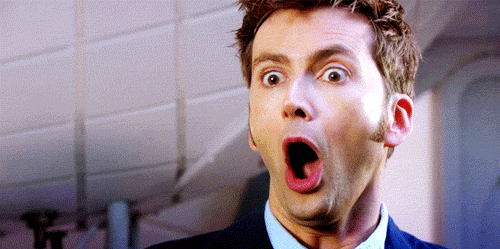
Of course, I daresay we all can be forgiven for having failed to recognize the third color before now, given how subtle the difference is and, of course, how the trim actually looked in the show – even in remastered HD.
The jacket was quite short, although that’s hardly surprising considering according to both Google and IMDB, actor Clyde Kusatsu (who played Admiral Nakamura) is only 5’5”.
The jacket was 17” long at the center front, measured from the neckline/collar seam line to the hem line, and 14 ½” long when measured from the lower yoke/body seam line to the hem.
The jacket was 18 ½” long at the center back, measured from the neckline/collar seam line to the hem line, and 14” long when measured from the bottom of the yoke.
The jacket measured 10 ½” across the chest in the front, measured from the side seam to the center front seam (21” total).
The chest measured 9 ½” in the back, measured form the side seam to the center back (19” total).
The total chest measurement was 40”.
The narrowest part of the jacket was the bottom, which appeared to barely extend downward to the natural waist.
The front waist was 9 ¼”, measured from the side seam (horizontally across) to the center front, or 18 ½” total.
The left back waist was 8 ¼” on the left side, and 8” on the right side, measured from the side seam to the center back, or 16 ¼” total.
The total waist measurement was 34 ¾”.
The jacket body was comprised of eight panels: center front, side front, side back, and center back on each side.
Interestingly, on the men’s jacket, these panels were separated with princess seams on the front and back.
Those of you familiar with vintage and theatrical pattern blocks know that our Western military uniforms and costumes have a proud history of princess seams, particularly in the back.
And of course, many of you may be aware of a certain military-esque Starfleet uniform design that also had princess seams …
But what I find curious is that the men’s version of this jacket had front princess seams, but the women’s version appears to have vertical(ish) side front seams, instead.
With so little evidence, I see two possibilities that would account for this discrepancy.
It could have been a gender-specific stylistic difference, although this would be the opposite of what one would expect. (Princess seams are a common way to achieve a fitted bust primarily on women’s garments.)
Or, it could’ve been a stylistic evolution of the uniform itself, similar to how the admiral uniforms had stylistically evolved the previous season.
In any event, on the front of the Admiral Nakamura jacket, the princess seams met the armscye seam 1 ¾” beneath the yoke.
The lower front armscye measured 4 ½”, from the side seam up to the princess seam.
The total front armscye measurement was 6 ¼”, from the side seam to the bottom of the yoke.
The total front armscye measurement was 6 ¼”, from the side seam to the bottom of the yoke.
The lower back armscye measured 5 ⅝”, from the side seam up to the princess seam.
The total back armscye measurement was 7 ¼”, from the side seam to the bottom of the yoke.
At the lower front edge of the jacket, the total measurement was the same on each side, but the distances were allocated a little differently.
Measured from the side seam to the center front, both sides were 9 ¼”.
On the right side, the side front seam was 7” from the side seam and 2 ¼” from the center front seam.
However, on the left side, the side front seam was 6 ⅞” from the side seam and 2 ⅜” from the center front.
As you may have noticed, the bottom of the jacket “dipped” downward a bit from the side to the center front, forming a slight V-shape. The center front was 1 ¼” beneath the side seams.
Curiously, though, the ladies’ version appears to have had a more pronounced lower front corner.
Again though, with so little evidence, I’m not sure if this was a gender-specific distinction, or an overall design evolution.
(And it’s probably debatable just how important it even is, since the lower area of that jacket was never even seen on-screen in the show.)
In any event, the jacket’s lower back edge wasn’t symmetrical either, although they were close.
On the left side, the side back seam was 6 ¼” from the side seam, and 2” from the center back.
On the right side, the side back seam was 6” from the side seam, and 2” from the center back.
I believe the extra ¼” on the back side left was accidental rather than intentional, but obviously I can’t say that for certain.
Both outer sleeve seams were 18 ½” long (plus the piping), measured from the lower/outer corner of the yoke to the upper edge of the piping.
The right inner sleeve seam was 16 ¼”, but the left was 16 ⅜” (a tiny bit longer).
The lower sleeves were accented with a trim assembly analogous to that on the yoke, made with strips of the “mystery” (wool crepe?) yoke fabric and black “metal stud” ribbon centered over it.
As with the yoke trim, the sleeve trim assembly was usually 1 ¼” wide, although it did occasionally widen to 1 ⅜”.
Unlike the yoke trim, though, the sleeve trim appears to have been machine-sewn to the sleeve.
CLOSURE SYSTEM
Before we move on to the jacket’s structuring and interior, I’ll walk you through the unfastening process.
The jacket closed up the center back, with a trio of small, black hook-and-eye closures on underside of the collar.
The jacket zipped up the center back via a black invisible zipper, although as you can see in the photo above, the top was not left hanging free like it was on the other early TNG-era uniforms!
The zipper tab was simply tucked inside the collar.
The jacket zipper was actually quite a bit longer than the jacket itself – 30” long, in total.
Since the invisible zipper was non-separating, this innovative system allowed the jacket to effectively “separate” enough for the wearer to don the costume, then close with an invisible zipper – truly “the best of both worlds!”
But what to do with all that excess zipper tape?
Well, a small black snap was hand-sewn to the bottom of the zipper, and its mate was attached to the lower left front interior, so the extra zipper length could just be stashed away inside the jacket and secured into place.
The zipper stitching ended approximately ¾” from the bottom of the jacket, and a small black hook-and-eye closure fastened the jacket closed at the bottom.
STRUCTURING
Perhaps this jacket’s most radical departure from the early TNG-era uniforms (and, to date, any other Star Trek uniform I’ve ever seen) was its structuring.
In the wonderful book, Star Trek Costumes: 5 Decades of Fashion from the Final Frontier, William Ware Theiss was quoted expressing his fondness for knit fabrics and distaste for woven fabrics with lots of padding and structuring (at least in the context of Star Trek), and this aesthetic was apparent in his uniform designs.
Aside from the switch from velour to double-knit in the third season of The Original Series, Theiss’ early TNG-era uniform designs – the TNG jumpsuits, TNG skants, TNG season 1 admiral uniforms, and TNG formal uniforms – were ALL made out of jumbo spandex! And with the exception of the shoulders, they featured no traditional padding or tailored structuring.
To the best of my knowledge, Durinda Rice Wood’s season 2 admiral jacket was the first TNG-era uniform to be made with a woven fabric (and superfine wool gabardine, to boot – the same fabric that would be used for the men’s TNG jackets introduced by Robert Blackman the following year).
But while noteworthy in that regard, it’s also a notable departure from Theiss’ aesthetic due to its considerable interfacing and structuring.
Unfortunately, with the jacket lined and sewn closed everywhere, I couldn’t just “crack open” the Admiral Nakamura jacket for a peek at its innards, but I have worked with quite a bit of interfacing in my day and was able to glean some important details during my examination.
The collar was interfaced with what, to me, felt like a mediumweight (or possibly heavyweight) hair canvas.
I believe the yoke was interfaced with a lightweight (or possibly mediumweight) hair canvas.
Collar and yoke interfacing are hardly surprising, but what did surprise me was how heavily the front of Admiral Nakamura’s jacket was interfaced and structured. It was stiff as a board!
Think I’m kidding? Check out the front thickness, compared to the back.
In addition to being hella stiff, it was also slightly squishy, leading me to surmise that the entire jacket front may have been interfaced with either heavyweight hair canvas or (perhaps more likely) French canvas, with a layer of flannel or batting underneath.
And as if that weren’t enough, I counted no fewer than 10 (!) channels of boning which supported the jacket front!
On each side, there was one channel flush with the center front, which extended from the hem all the way up the yoke.
There was another almost parallel to it, but angled slightly outward from bottom to top: 1” away from the center front at the bottom and 2” from the center front at the top. This channel extended from the hem to the yoke.
Horizontally flush with the top of this “middle front” boning, another short channel extended from about 1 ½” below the yoke seam upward to 2” from the shoulder seam.
There were two more boning channels on each side front: one about 1 ½” away from the princess seam, and one about 2” away from the side seam.
To the right is a diagram I whipped up to represent the positioning of all the boning channels, as best I could determine them from the outside of the jacket.
I also believe the center back panels were interfaced with a lightweight fusible interfacing, probably at least in part to stabilize them for the invisible zipper.
In addition to all the aforementioned structuring and interfacing, the Admiral Nakamura jacket also incorporated large raglan shoulder pads, which appear to have been custom-made and of the same construction as those on the other early TNG-era uniforms I’ve examined thus far.
These pads were ovular, with padding enclosed in two layers of black lining, a dart establishing the rounded shape, and stitched around the perimeter – as appeared to be standard for early TNG.
However, the outer edges of these shoulder pads were overlocked, rather than trimmed with pinking shears.
These pads were also detachable via two small black snaps.
Interestingly, though, there was a second pair of shoulder pads incorporated into the jacket itself, between the shell and lining fabrics – similar to what you might find in a typical suit jacket, blazer, sport coat, etc.
From this, I would hypothesize that the jacket was possibly constructed with the interior shoulder pads to fit the actor, but perhaps during a final fitting it was realized that additional padding was needed, so The Powers That Be just slapped a pair of the standard TNG-era detachable shoulder pads on the inside of the jacket.
But that’s only a theory!
INTERIOR
As you may have noticed in previous photos, the Admiral Nakamura jacket was fully lined with black lining.
The jacket lining did seem to be a more pleasant, higher-quality lining than that used for the shoulder pads.
On the collar, the back allowances were turned under and then the collar lining folded downward over them, safely enclosing the ends of the black collar piping.
While the collar lining was machine-sewn to the underside of the black collar piping, its lower edge didn’t quite extend down to the bottom edge of the collar, and it was presumably hand-sewn into place.
It’s difficult to say whether or not the body lining was machine-sewn to the jacket neckline and turned under, but either way, the neckline was edge-stitched through both (all?) layers except for the backmost 1 ½”.
The jacket lining panels were generally analogous to those on the jacket body, with a few notable exceptions.
Here you can see the front yoke/body lining seam.
And here you can see the side front princess seam in the lining.
However, observe that there was no center front lining seam.
A curious change to the back lining was this addition of a “mystery panel” on the back yoke …
It extended all the way from the center back to the armscye, and as if it served a purpose, I was unable to determine what it was.
(As best I could tell, it provided no additional wearing ease, it obviously had no corresponding seam on the back yoke, and it was too intentional to have simply been an error. Plus, it was done on both sides of the back.)
The lining was hand-sewn to the jacket hem allowance, although without a “jump pleat” for additional wearing ease, that one would normally see on suit jackets (etc.).
The lining also varied in its relative position from the hem line; its bottom edge was only ⅜” above the hem line at the center back, but this tapered into ¾” above the hem line at the center front.
Another curious change was that the sleeve lining had no outer sleeve seam; here you can see the yoke and shoulder seams intersecting with the one-piece sleeve lining.
The sleeve lining extended all the way to the bottom of the sleeve, where it was hand-sewn to the lower sleeve piping – again, without a “jump pleat” at the bottom for additional wearing ease.
ALLOWANCES
Some of the specific seam and hem allowances were difficult to determine since, again, the jacket is lined and one can’t simply open it up and peek inside – at least, if one doesn’t own the jacket.
However, I was able to get a fairly reliable “read” as to the size of the seam and hem allowances, from the slight bulk around the seams.
In the case of the collar, the center back seam allowance was ⅝”.
The neckline/collar seam allowance was ½”, and as probably noticed earlier, it was NOT sewn into the collar/lining seam, or turned under toward the neckline.
It was simply left hanging free on the underside of the collar.
The yoke/body seam allowances seem to have been ½” and pressed upward.
And unless I’m mistaken, the front canvas assembly extended upward about ⅞” to 1” onto the underside of the front yoke, even though the seam allowances were only ½”.
(I’m not sure why – perhaps to grade the allowances to reduce a bulky imprint of the allowances?)
The center front, side front, and side back seam allowances all appear to have been ½” and pressed open.
The center back seam allowances were enormous – a full 2”!
Both the outer and inner sleeve seam allowances were ½”, and again pressed open.
At the bottom of the sleeves, the black piping was simply “tucked inside” as inconspicuously as possible, and the lining used to cover the ends.
The jacket’s lower hem allowance was 1 ½”, and the center back allowances were mitered by tucking the corner under before securing the lower edge of the lining.
TROUSERS
Having taken a detailed look at the jacket, let’s now turn our attention to the corresponding trousers.
Perhaps the most obvious element worth noting is that there was a sort of “tank top” attachment sewn onto the trousers, which one could also call a “vest attachment.” I’ve also seen similar garments described in auction listings as “jumpsuit-style trousers,” “overalls-style trousers,” and “dungaree” trousers.
The trousers themselves were black jumbo spandex, with a contrasting lightweight spandex as the “red” trim – more like what one would expect to see on an early TNG-era uniform.
However, the “tank top” attachment was black cotton lycra, which makes sense because it would breathe better underneath the jacket and (in my opinion) be more comfortable against the skin.
The lightweight spandex trim was presumably the same fabric used for the neckline trim and yoke piping on the corresponding TNG jumpsuits, TNG skants, and TNG medical smocks.
This “red” spandex was a close, but not exact match to the jacket.
Here’s a series of comparison photos with my Captain Picard (jumbo spandex) swatch:
Here’s a series of comparison photos with my Riker swatch (the superfine wool gabardine which was a very close match to the Nakamura jacket):
And here’s a series of comparison photos with my Wesley (jumbo spandex) swatch:
My Pantone book was again unhelpful and the same (Coats & Clark #3090, “Red Plum”) thread was again the best match I found, but I actually found a different paint chip that was a better match for the trousers “red” trim than the jacket: Valspar #1010-8 “Poetic Purple.”
The same Pantone (228-U) for the jacket was again the closest color to the trousers’ trim, but again nowhere near dark or saturated enough.
Although some of the specific dimensions of the “tank top” attachment may not matter much since it would ideally never be seen while wearing the full uniform ensemble, I nevertheless documented them for future reference. 🙂
The neckline was 6 ¾” wide, measured from the shoulder seams.
The front neckline was 5 ¼” deep, measured from the shoulder seam to the center front.
The back neckline was about 2 ¼” deep, measured from the shoulder seam to the center back.
The neckline was hemmed with approximately ⅜” hem allowance and stitched ¼” from the edge.
The right shoulder seam was 4 ½” wide, but the left shoulder seam was 4 ⅝”.
The shoulder seam allowances were ⅝”.
The armholes were 10” deep, measured from the shoulder seam to the side seam.
The armhole hem allowance varied from ⅜” up to ½”, but the armhole was still hemmed with ¼” stitching.
This suggests to me that the hemming may have been regarded as an obligatory finishing step, probably done in a hurry – especially since cotton lycra doesn’t fray and the entire area would never be seen in the show.
The entire “tank top” attachment was 15” at its tallest in the front, measured from the shoulder seam at the neckline to the seam where it was joined to the trousers.
At the center front, the “tank top” attachment was 9 ½” tall, measured from the upper edge of the neckline to the waist seam.
On the back, the “tank top” attachment was 15 ½” at its tallest, again measured from the shoulder seam at the neckline to the waist seam.
At the center back, the “tank top” attachment was 13 ¼” tall, measured from the upper edge of the neckline to the waist seam.
The waist seam allowances (where the “tank top” and trousers were joined) were ½” and pressed upward.
The front of the trousers measured 8” at the waist on each side, from the side seam to center front.
The back of the trousers measured 7” at the waist on each side, from the side seam to center back.
The trousers’ total waist measurement was 30”.
The front of the trousers measured 9 ¼” at the fullest part of the hips on each side, from side seam to center front.
The back of the trousers also measured 9 ¼” at the fullest part of the hips, from side seam to center back.
The trousers’ total hip measurement was 37”.
The total side seam/outseam was 36”, measured from the waist seam to the hem line.
The total inseam was 23”, measured from the crotch to the hem line.
The “red” lightweight spandex trim was ¼” wide.
The trim was sewn into a side front seam and pressed away from center, with the seam allowances being pressed toward center.
At the waist seam, the trim was positioned so its centermost edge was 2 ¾” from the center front.
The trim extended all the way down the front of the pant legs.
At the bottom of the pant legs was a slit opening akin to the similar slit on the TNG jumpsuits, with an additional (second) length of trim sewn to the lower side front.
This lower front opening was just shy of 5” tall, although because of the large hem allowance, I wonder if it was originally intended to be taller, perhaps 6” instead …
These elastic “stirrups” were 1” wide and only about 5” long.
The elastic “stirrups” were sewn on to the trousers at the hem line and the ends tacked onto the hem allowance by hand, so no topstitching was visible on the outside of the trousers.
The elastic extended upward 1 ¼” into the hem.
The trousers closed up the center front with a black invisible zipper, 21” of which was functional from a few inches above the crotch to the center front neckline.
Beneath the trousers’ front opening, however, was an additional 8 ½” of zipper tape.
The 21” functional zipper + 8 ½” lower excess + ½” top excess totals to a 30” long invisible zipper – same as the jacket.
The center front seam allowance was 1” along the zipper, although it did occasionally narrow to ⅞”.
Beneath the zipper, however, the seam allowance was reduced to ½”.
The side front seam allowances were ½” and pressed toward the center front.
To accomplish the lower front opening at the bottom of the pant legs, the side front seam allowance was clipped above the opening, and a second length of red trim was attached to the side front panel.
Curiously, though, the second length of trim was slightly wider – ⅞” when folded in half, or 1 ¾” total.
The side seam allowance varied quite a bit; it was ½” on the “tank top” attachment and ⅞” at the trousers’ waist seam. It tapered down to ½” around the hips and then widened to a full 1” at the calf and down to the hem.
To me, this suggests that either the side seam allowances were always intended to be 1” (or ⅞”) and the hips were let out during a costume fitting with the actor, OR that the seam allowances were trimmed down to ½” after construction so they would lie flatter along the hip curve.
Oddly, the back inseam allowance was ⅞”, but the front allowance was a full 1”, on the entirety of both pant legs.
The center back seam allowance tapered down from 1” at the waist seam to ½” around hip-level.
This suggests to me that either the trousers were left open and the center back seam line established during a costume fitting with the actor, or they were trimmed down to ½” after construction to lie flatter along the lower crotch curve.
(Although it is possible that the seam line was always intended to follow that direction, with the changing allowance.)
Assuming the extra hem allowance is due to the trousers being too long on the actor during a costume fitting, this would mean that the lower front openings in the pant legs were originally intended to be a bit taller – hence my earlier theory.
BONUS: Screen-used Admiral Rank Bars!
And now, for those of you still reading, I have a quick bonus for you!
The rank bars on the collar of the Admiral Nakamura uniform were actually screen-used, not replicas included in the auction or replaced by an owner; how cool is that?
These bars were approximately 1 ½” by ½”.
The “pips” were approximately ¼” in diameter, and positioned about 3/16” apart (and about 3/16” inside of the raised perimeter).
They were also pin-backed, unlike the later modern-era admiral rank bars (which attached with snaps).
On this Admiral Nakamura jacket, these bars were positioned on the collar so their centermost lower corners were each 1 ¼” from the center front (2 ½” apart, total), and their centermost upper corners were ¾” from the center front (1 ½” wide, total).
Just for the hell of it, here’s a comparison photo between the screen-used rank bar and ANOVOS’ replica:
This size discrepancy makes me wonder if the admiral rank bars actually changed size at some point, and ANOVOS’ replica bars were based on a later incarnation … but that’s another exploration for another post. 😉
IN CONCLUSION
Now that you’re intimately familiar with its construction, perhaps you now realize what I meant at the beginning of this post when I said this uniform was perhaps a harbinger of future uniform styles.
Think about it … what we have here is a back-zipping, superfine wool gabardine jacket, fully lined; it featured a division-colored torso and long sleeves, black yoke that extended onto the upper sleeves, and a collar with contrasting piping along its upper edge, nearly all of which was interfaced and structured so it maintained its smooth appearance on-screen … plus, accompanying high-waisted black trousers!
Sound familiar? 😉

I’d again like to thank Angelo Cifaldi for allowing me to study this screen-used TNG admiral uniform, and to share my research with you.
I learned a great deal from this costume examination, and I hope you did as well!
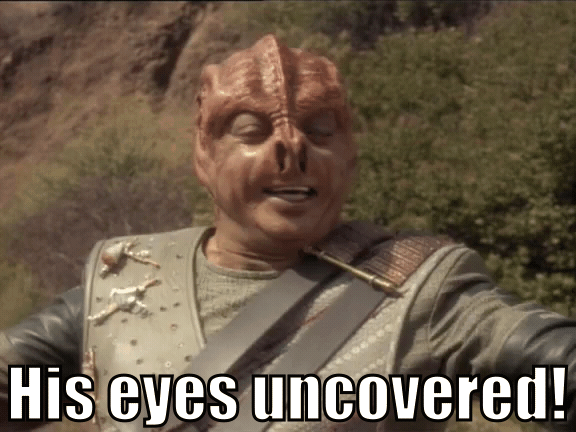
If you enjoyed this blog post, please support my costume research on Ko-Fi.
Every bar of gold-pressed latinum goes toward producing more sewing and costuming resources like this, for everyone interested in Star Trek costumes. 🙂

